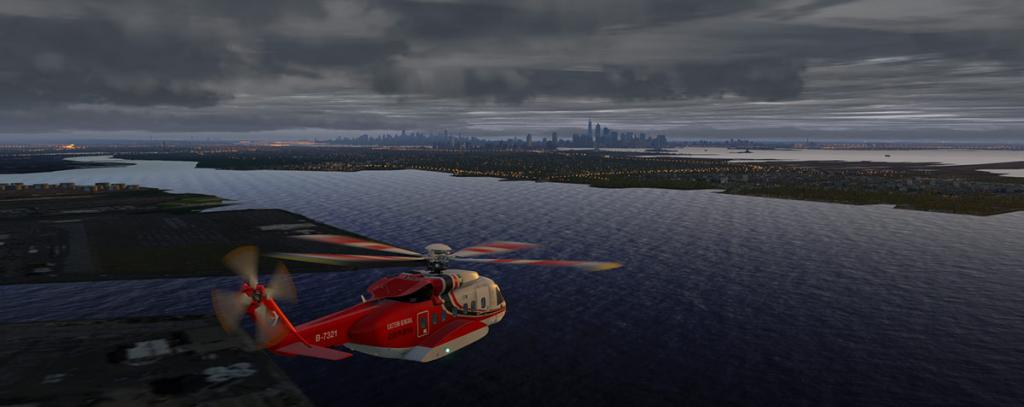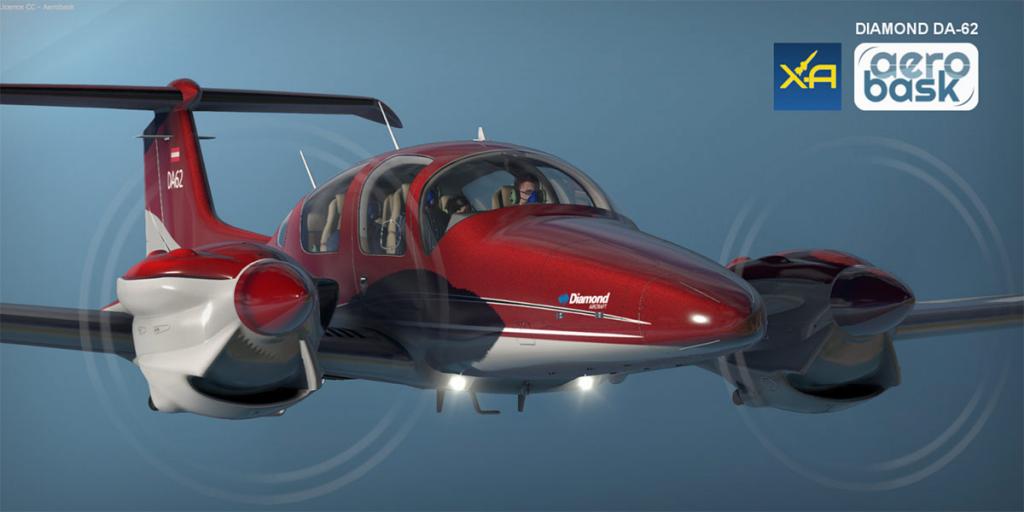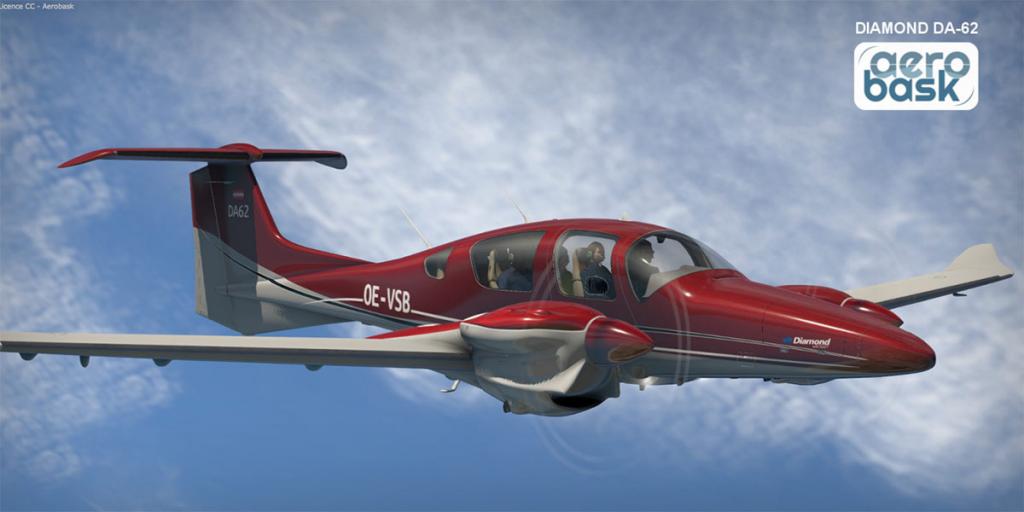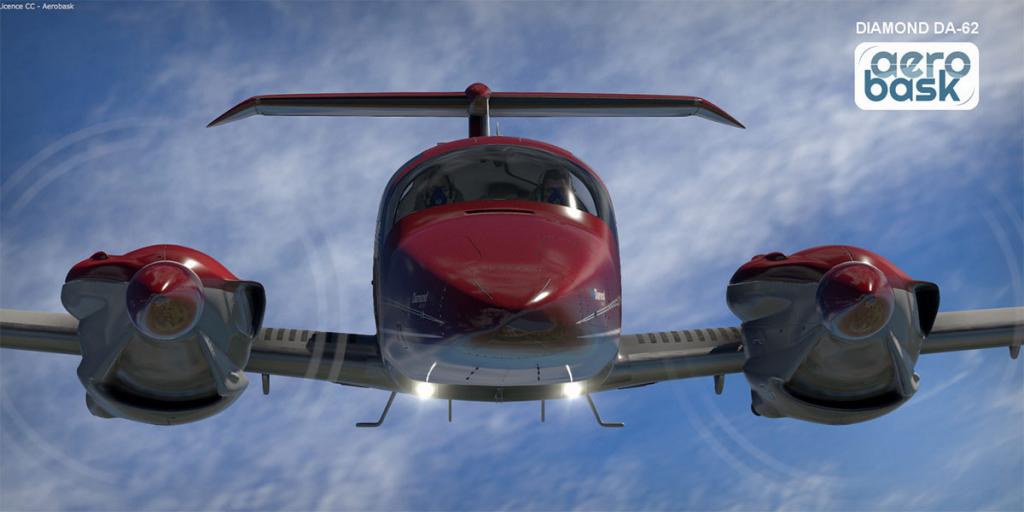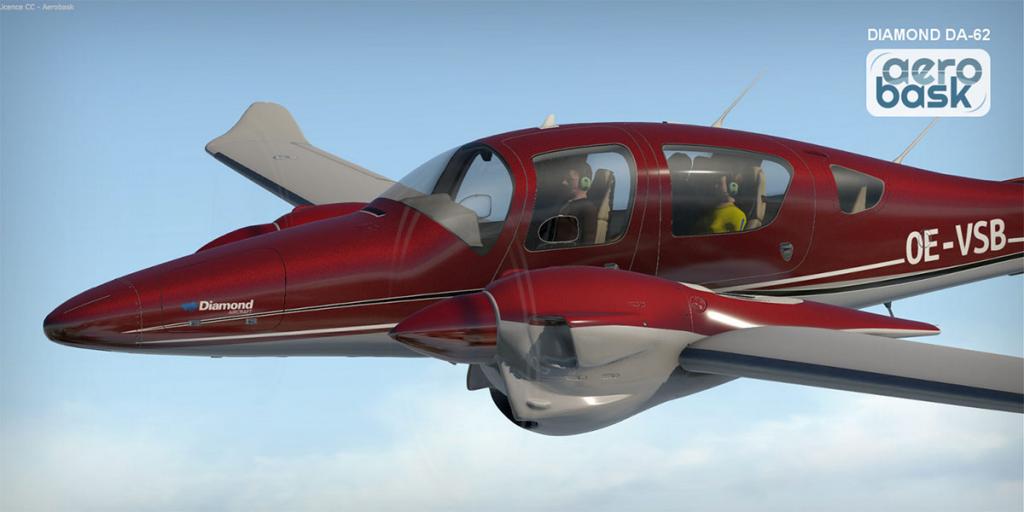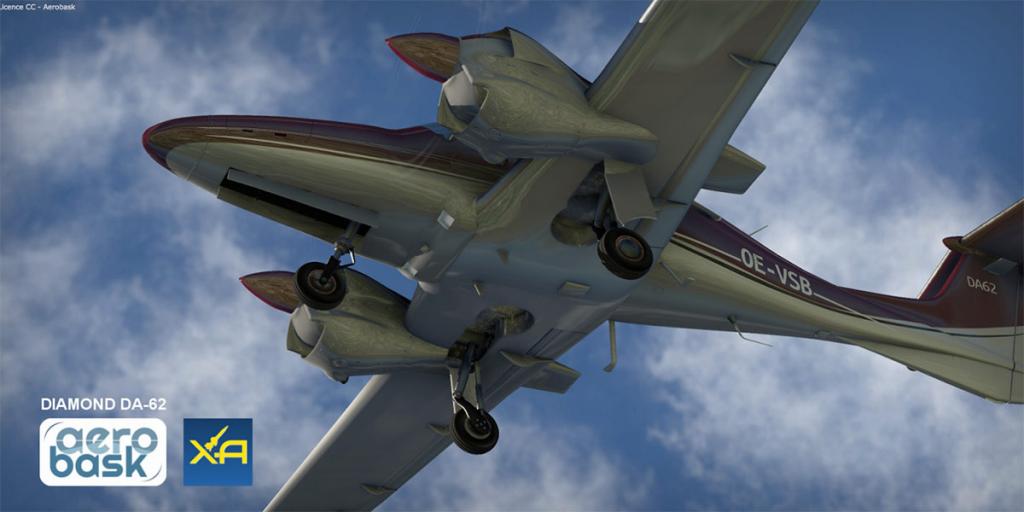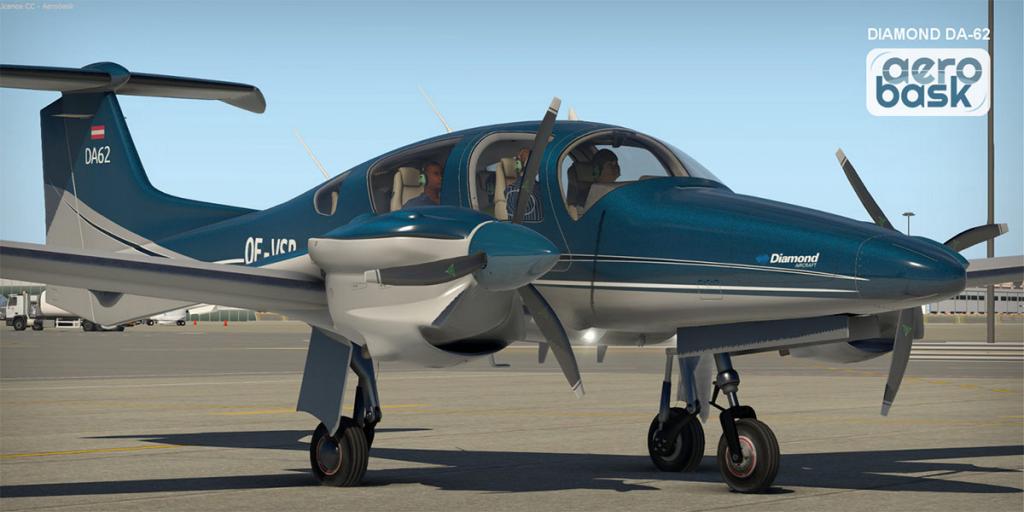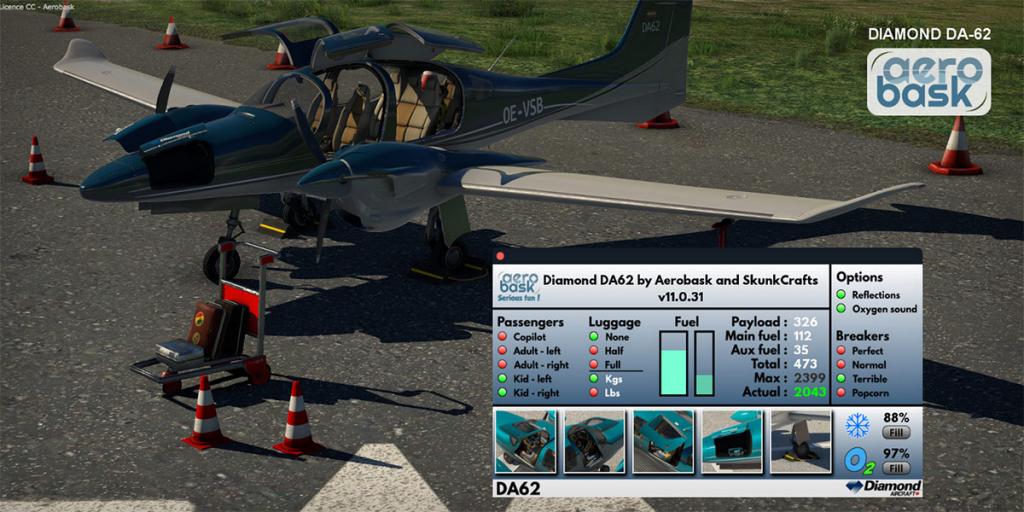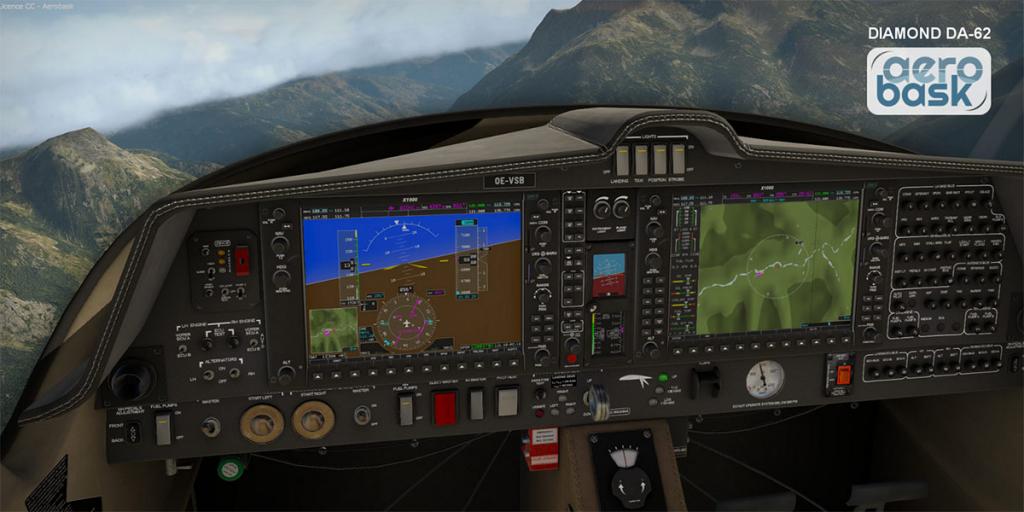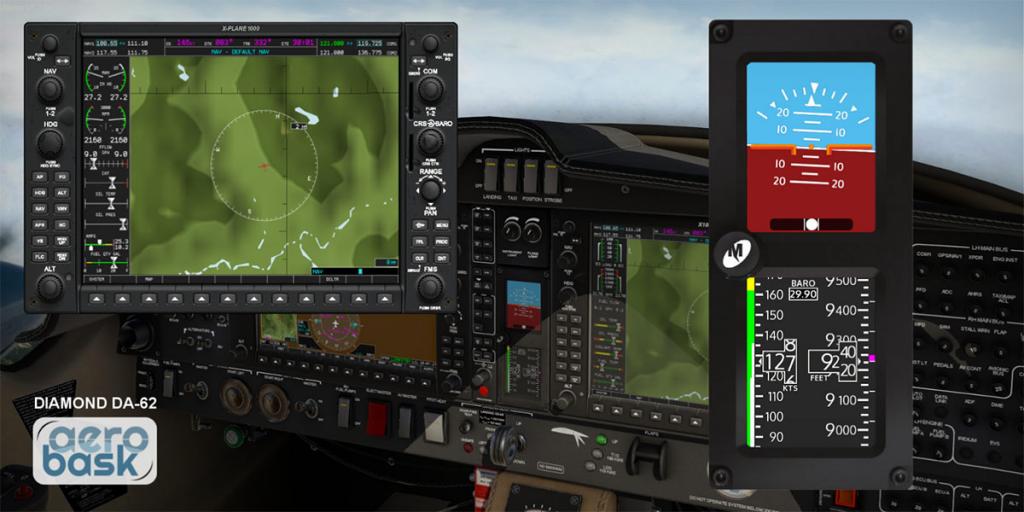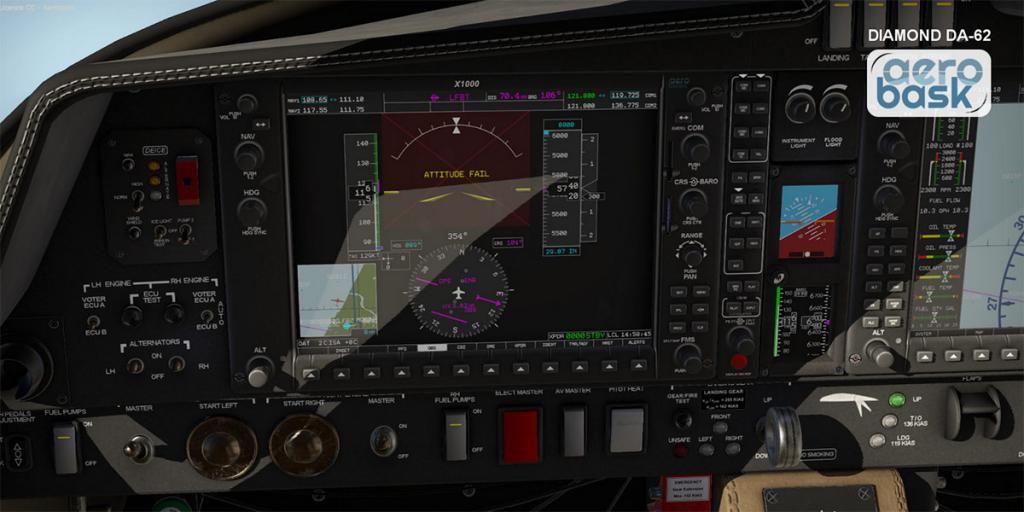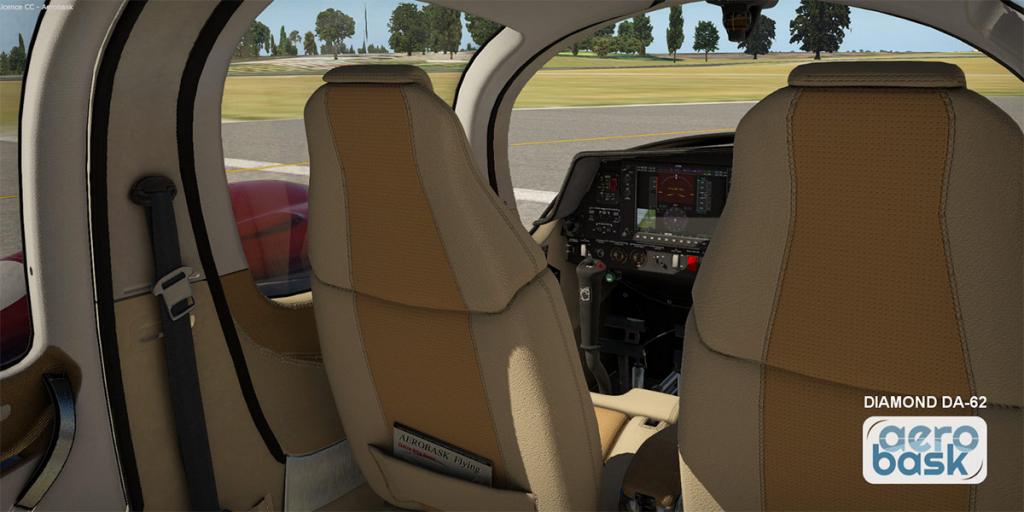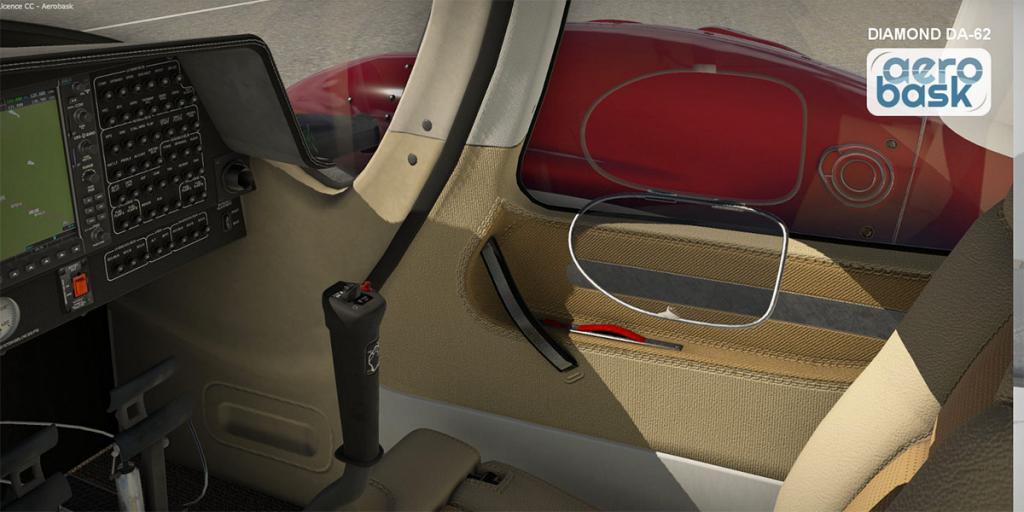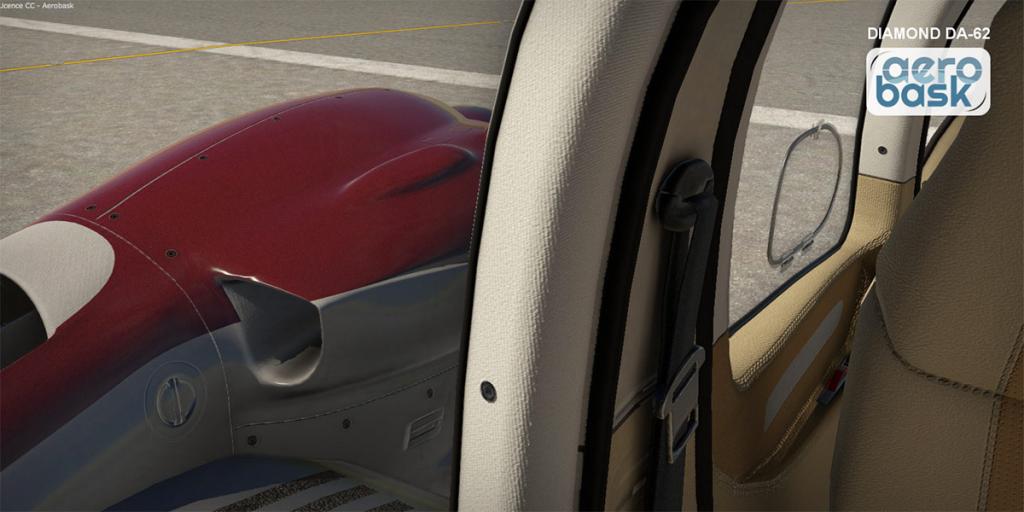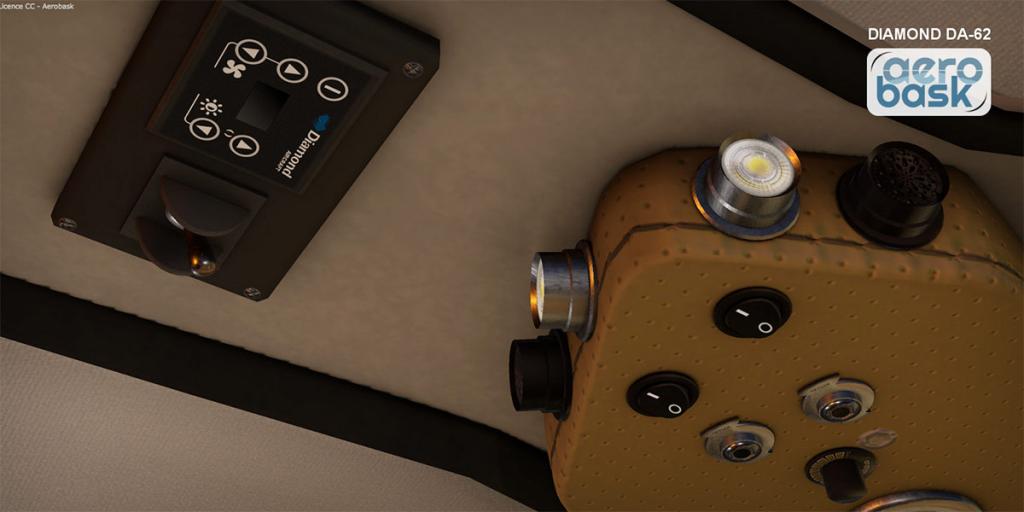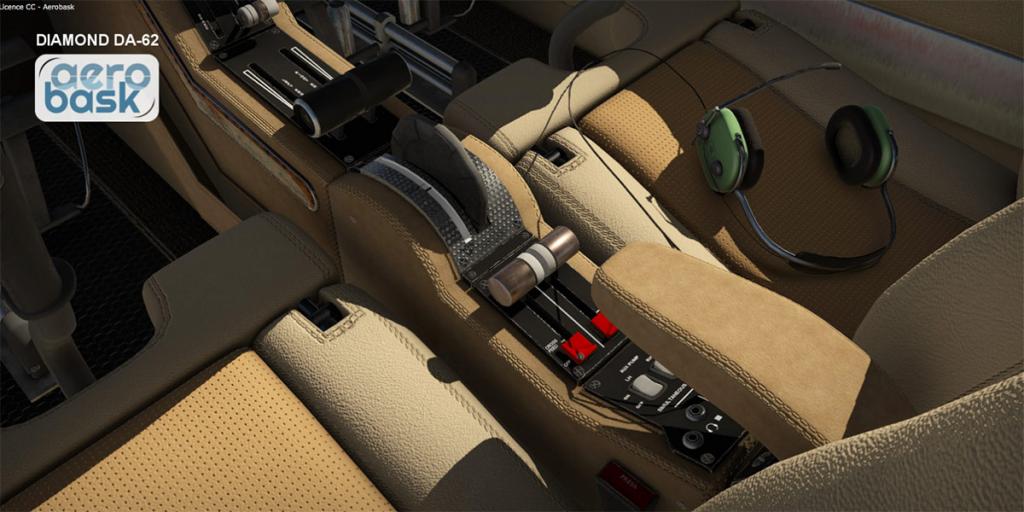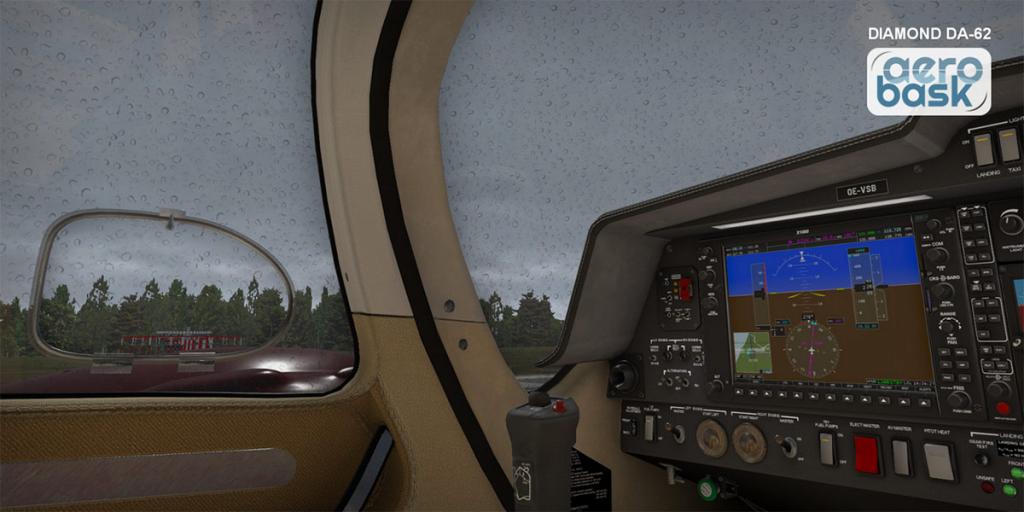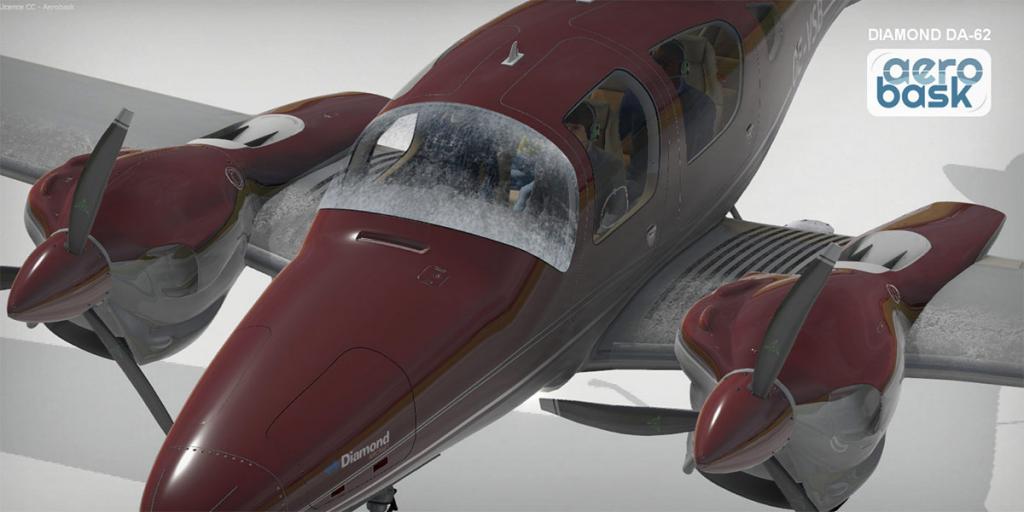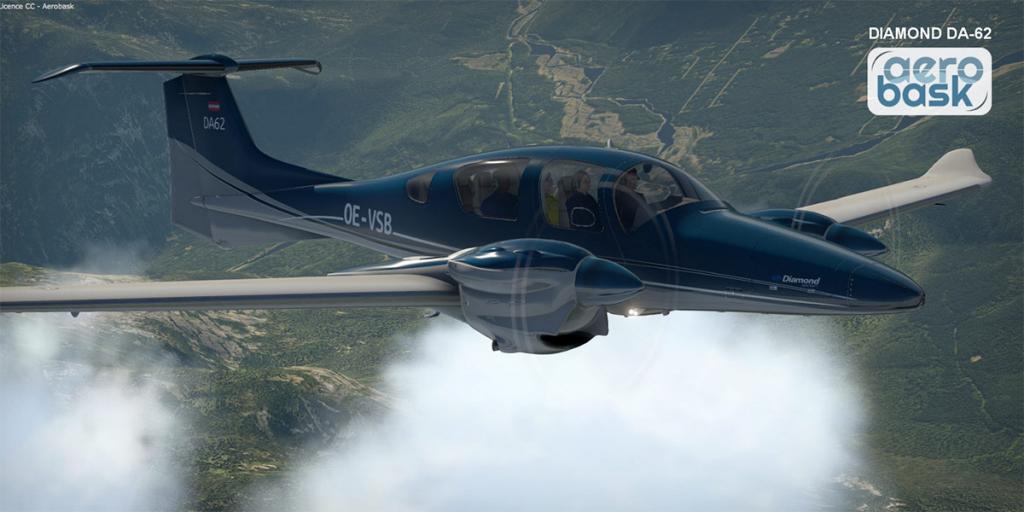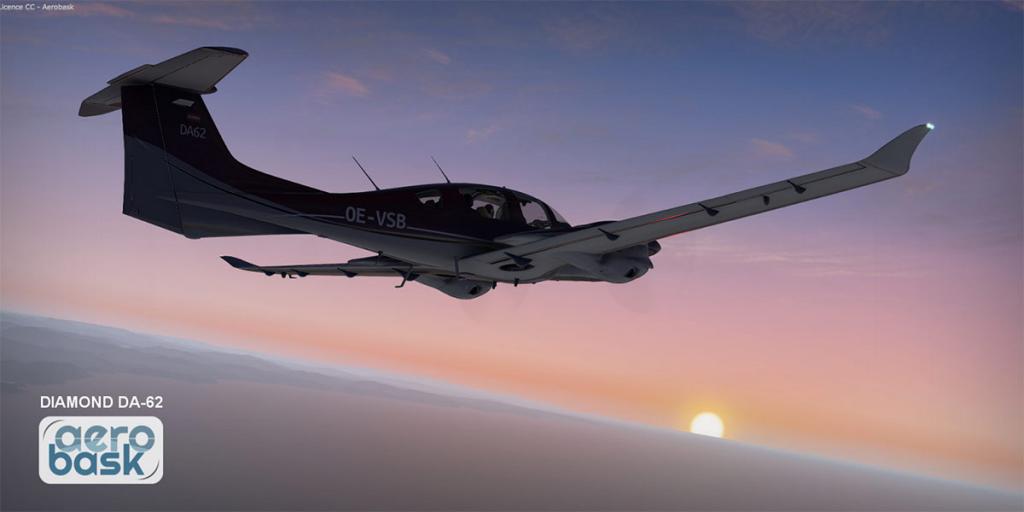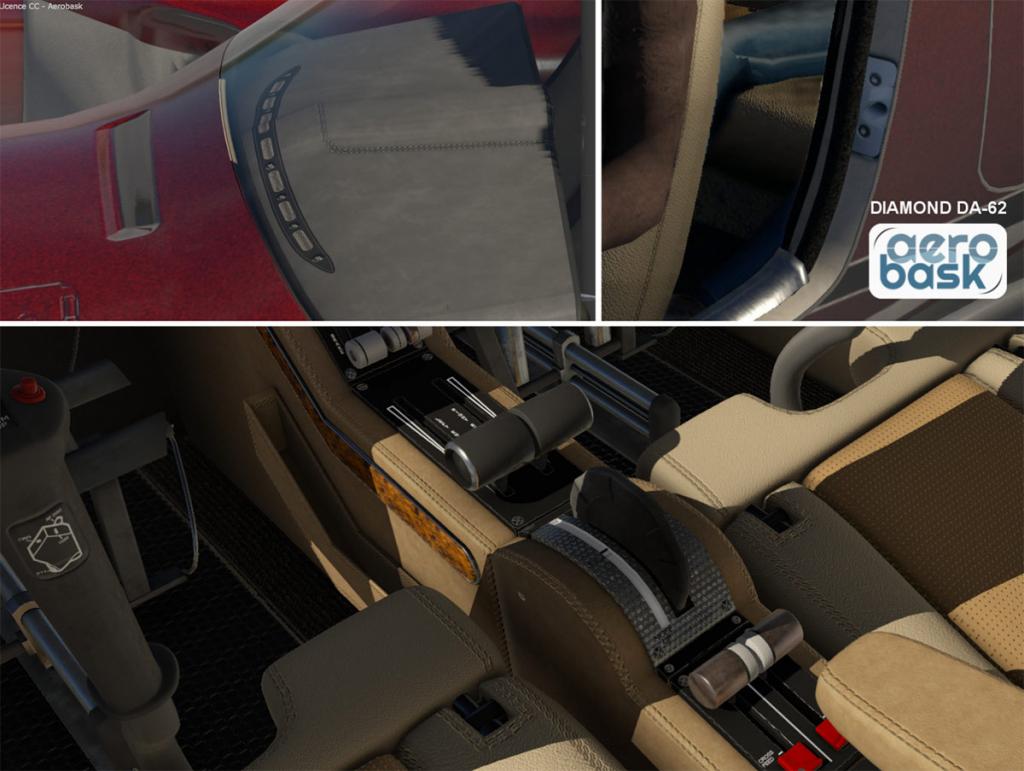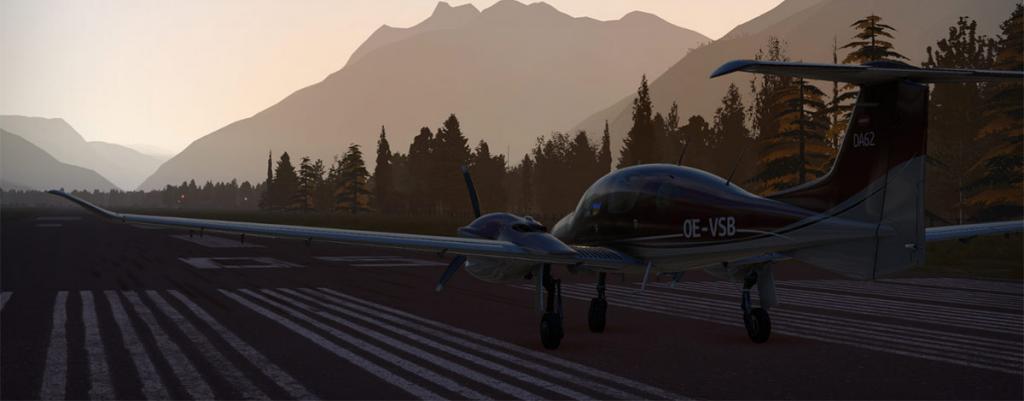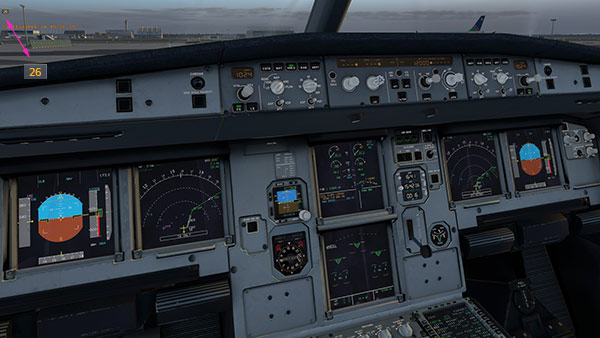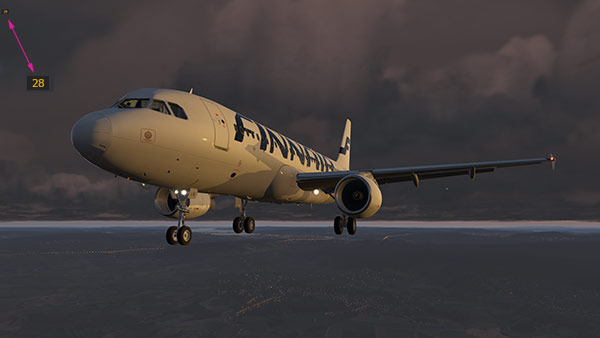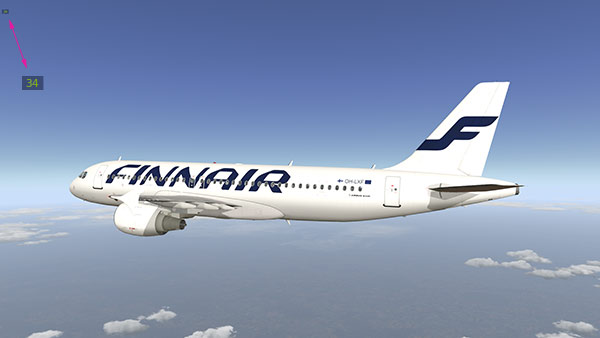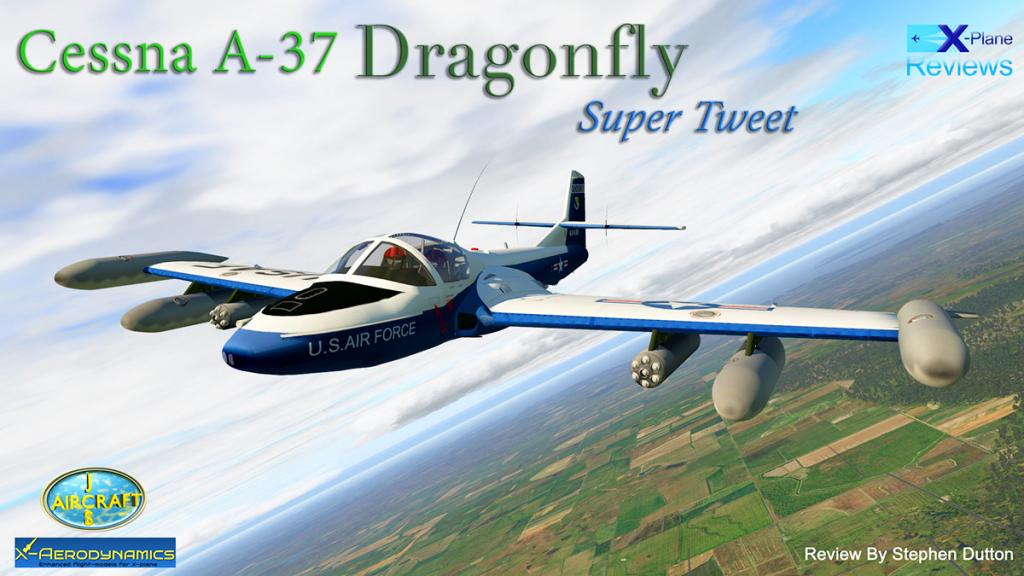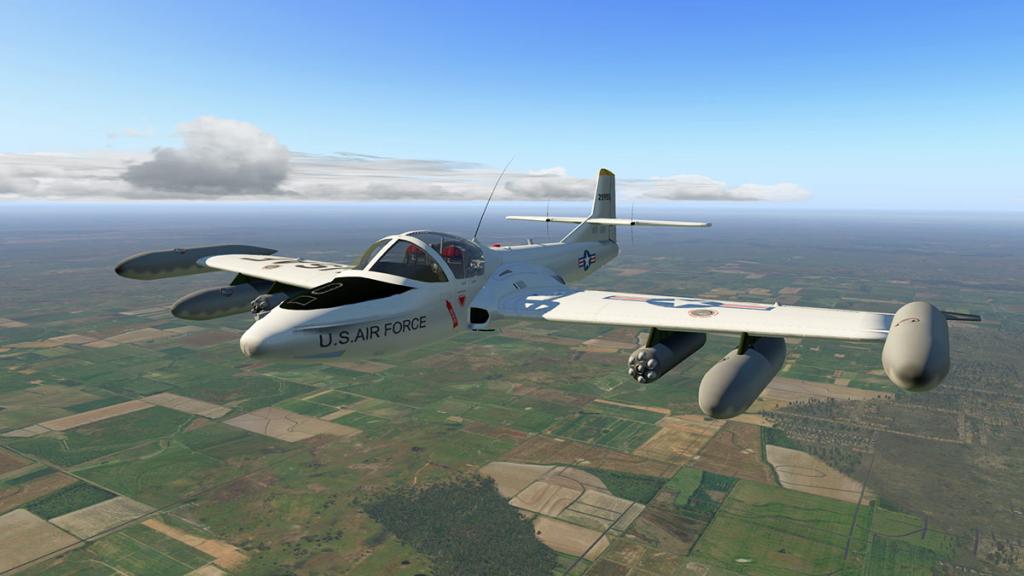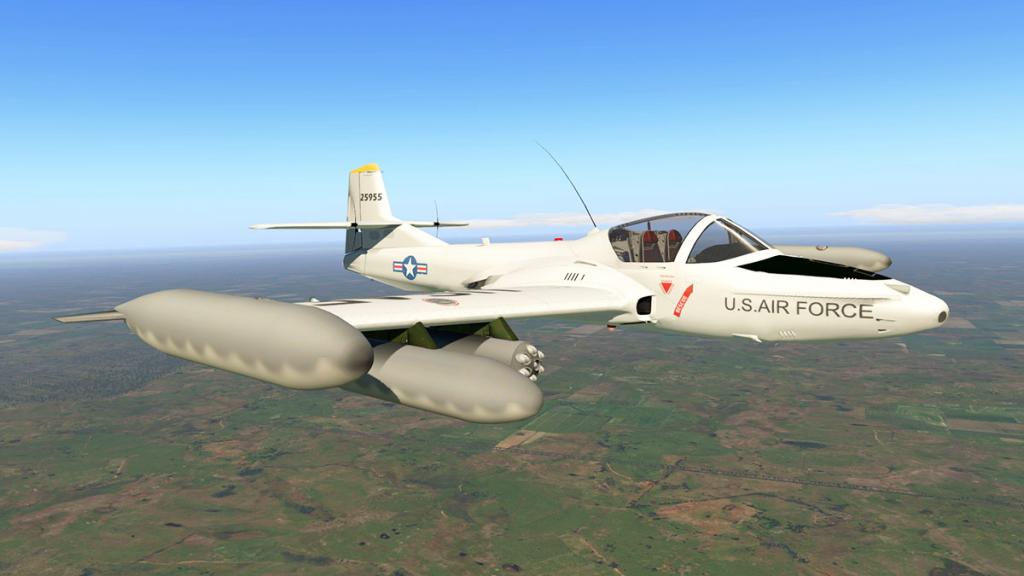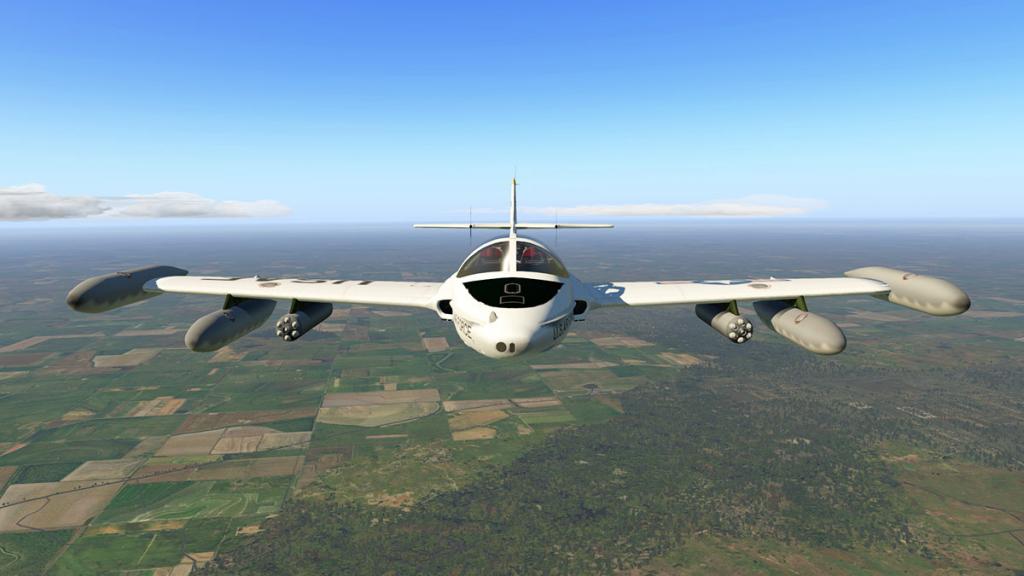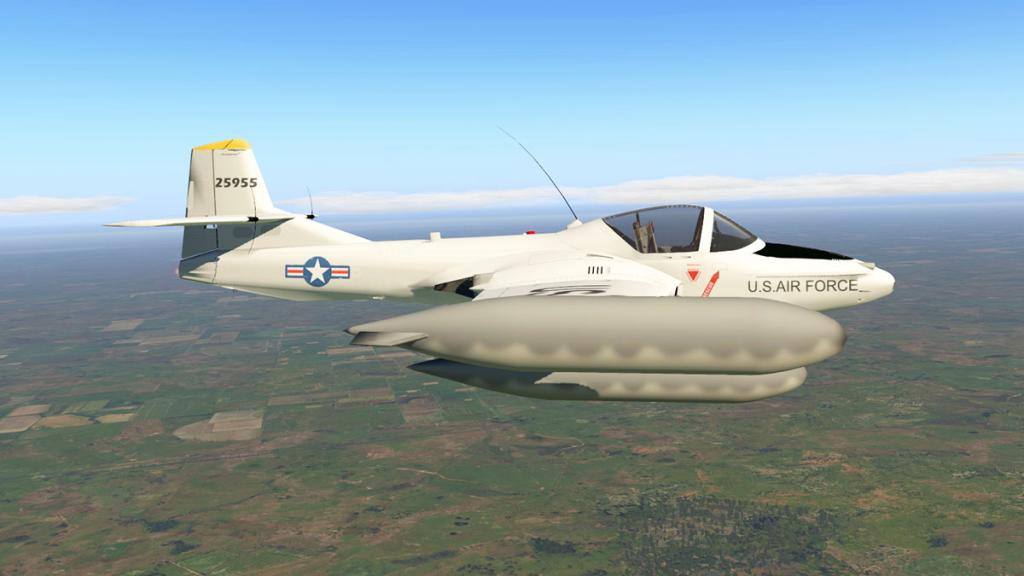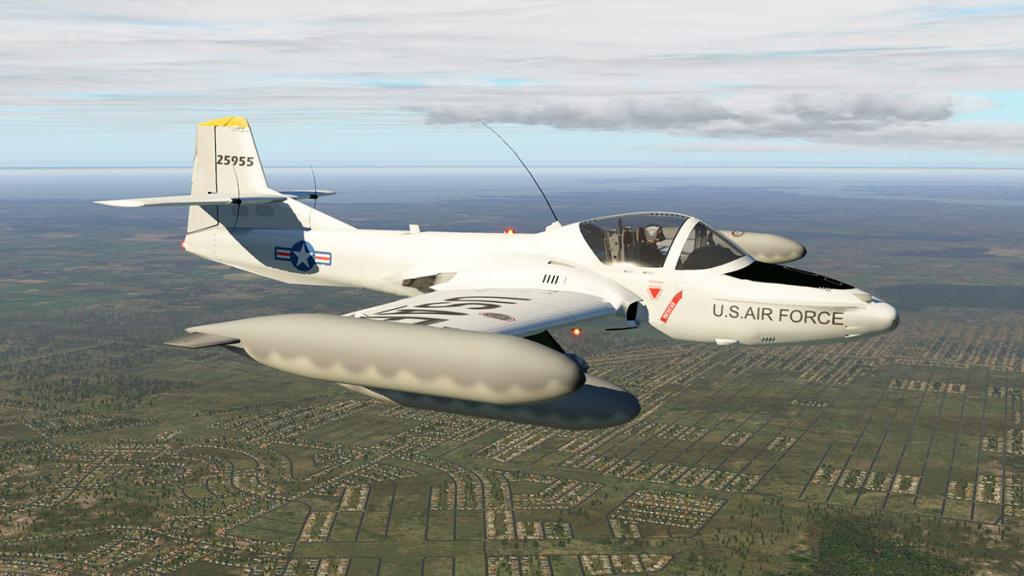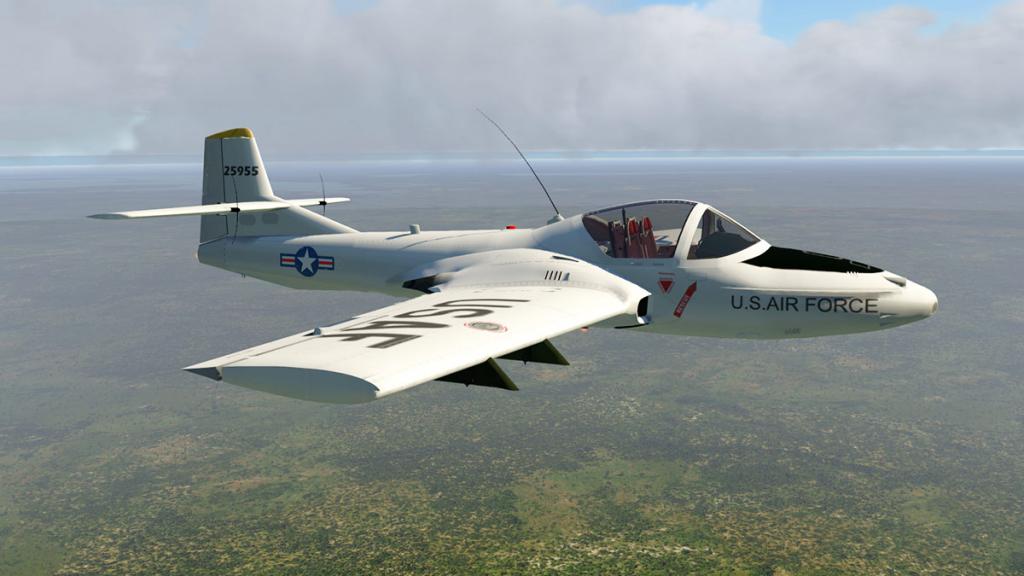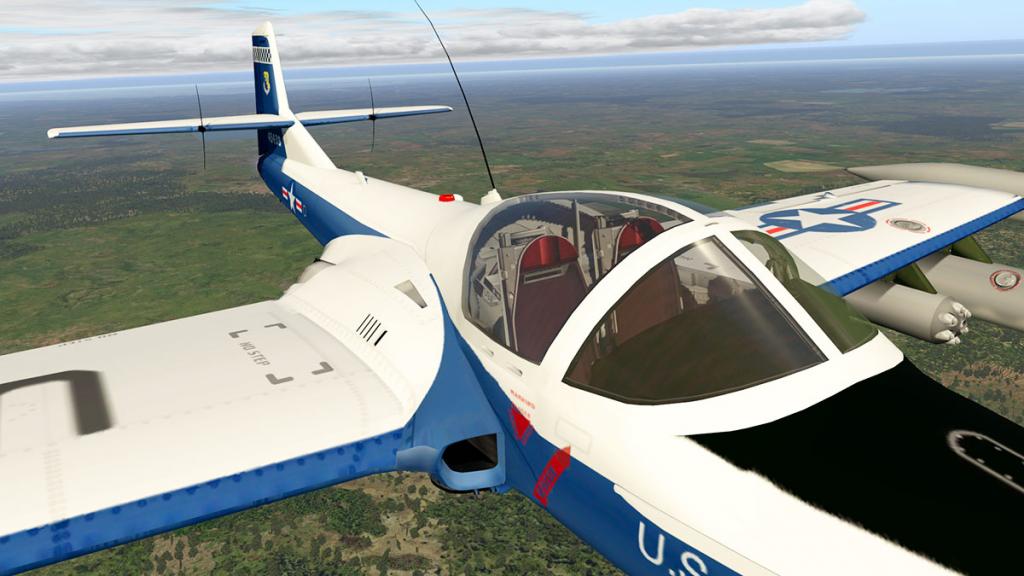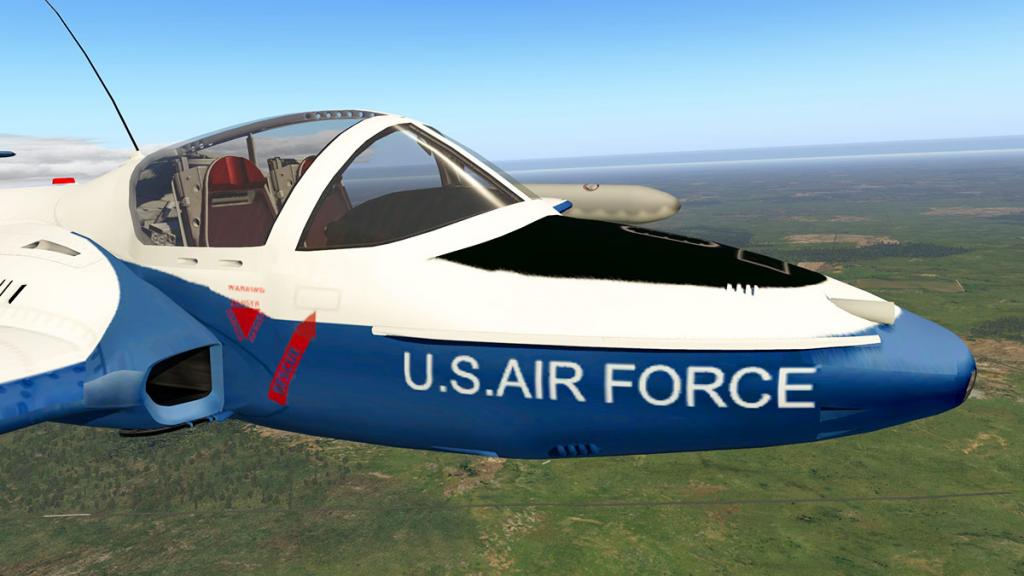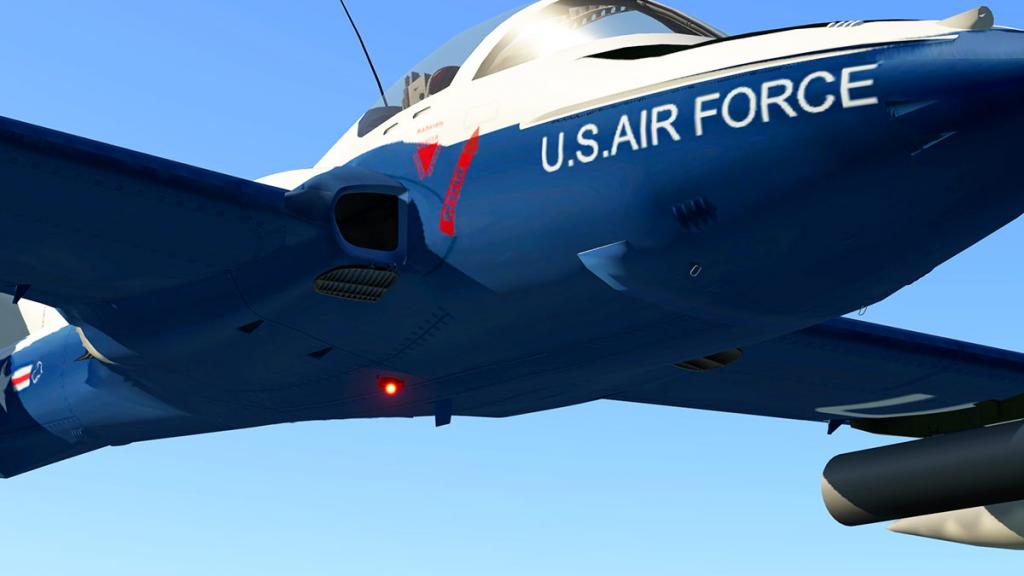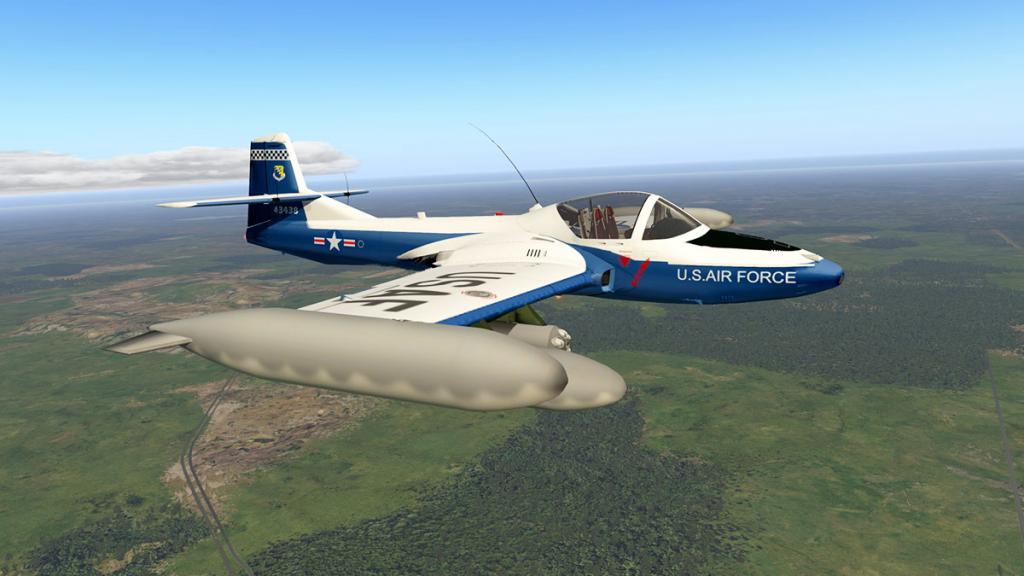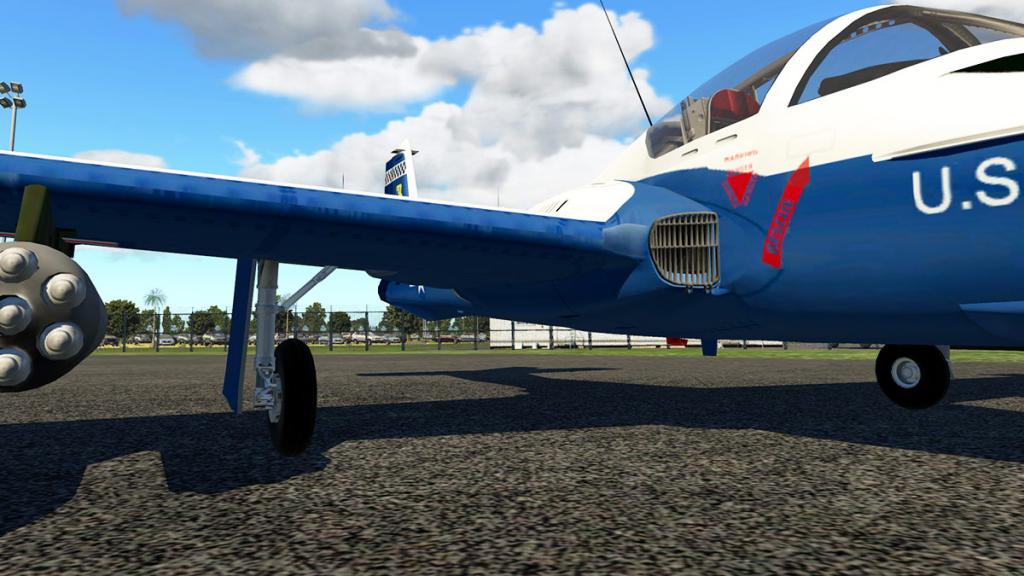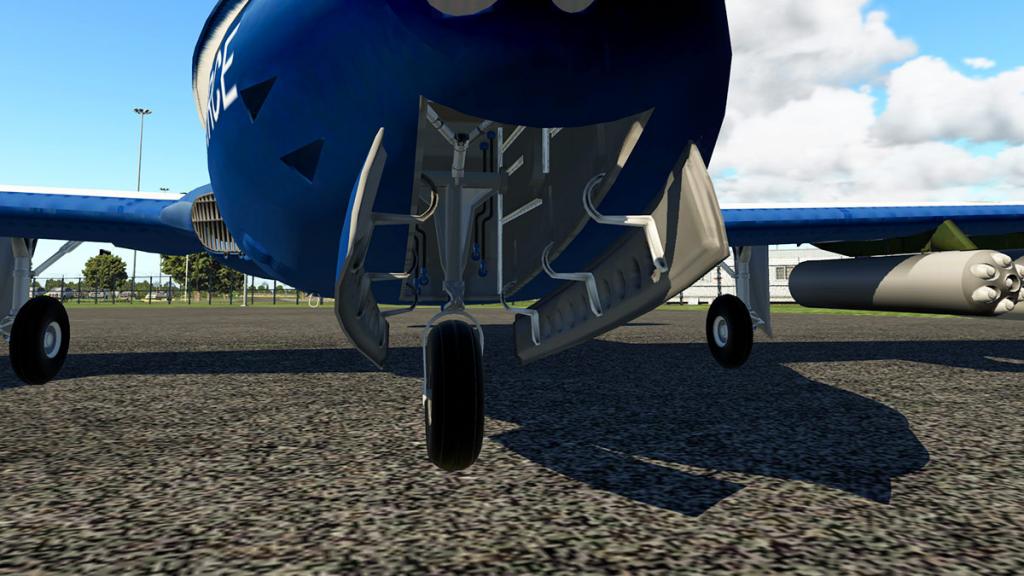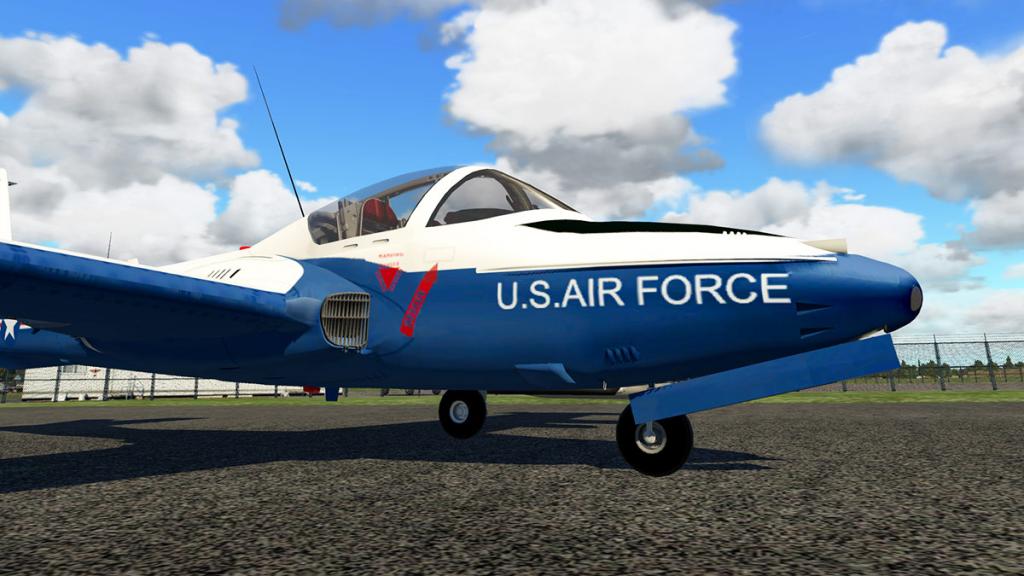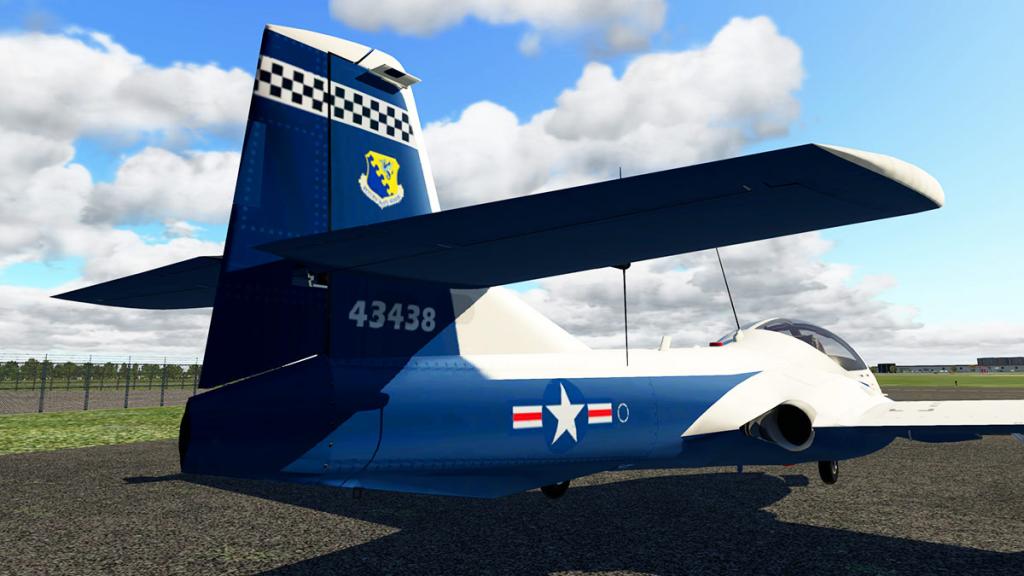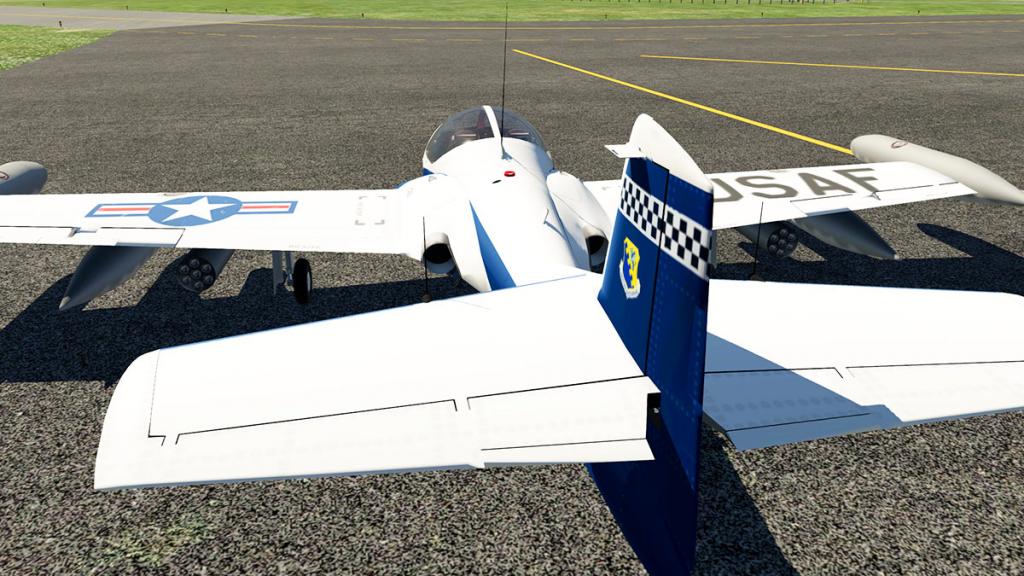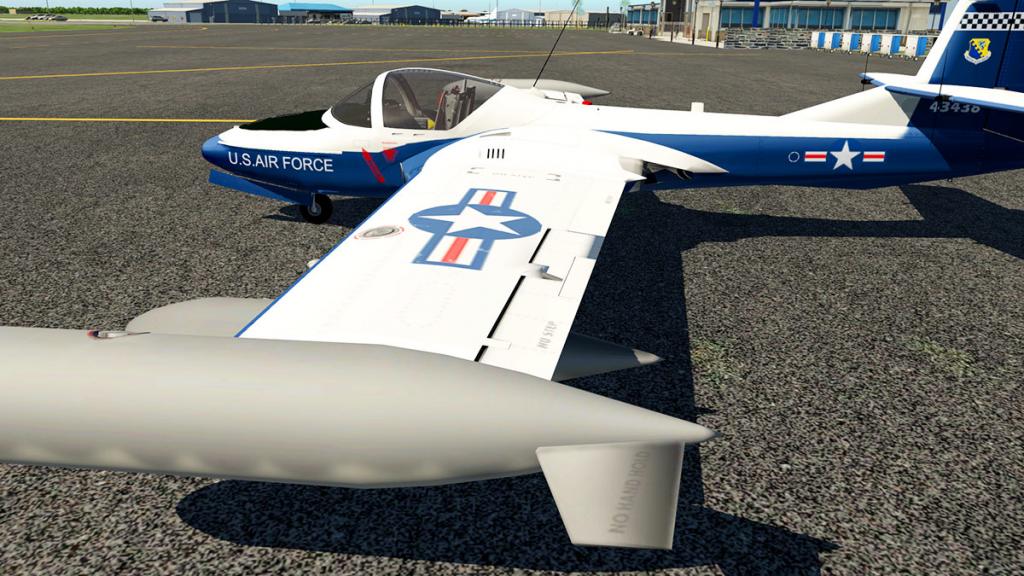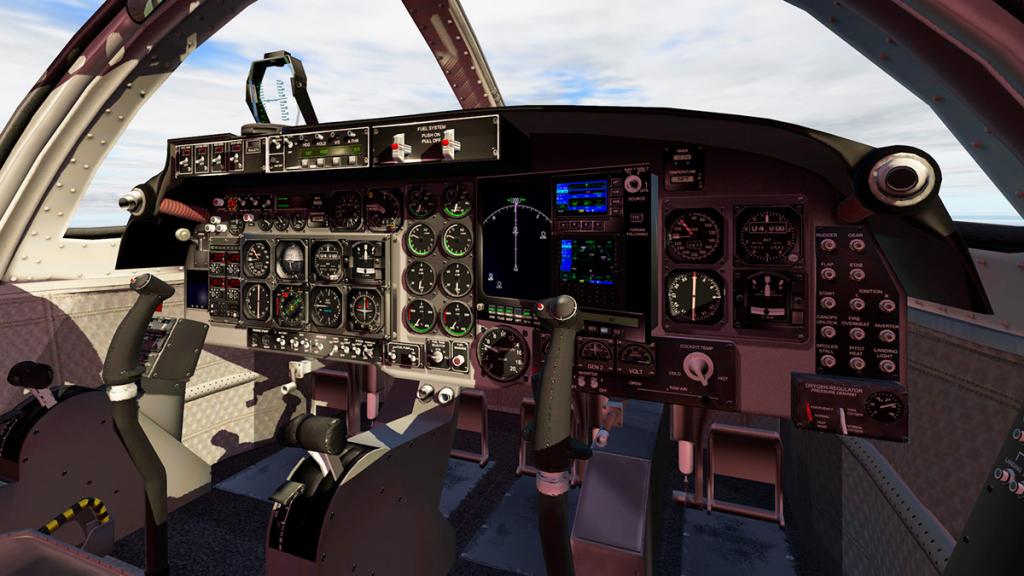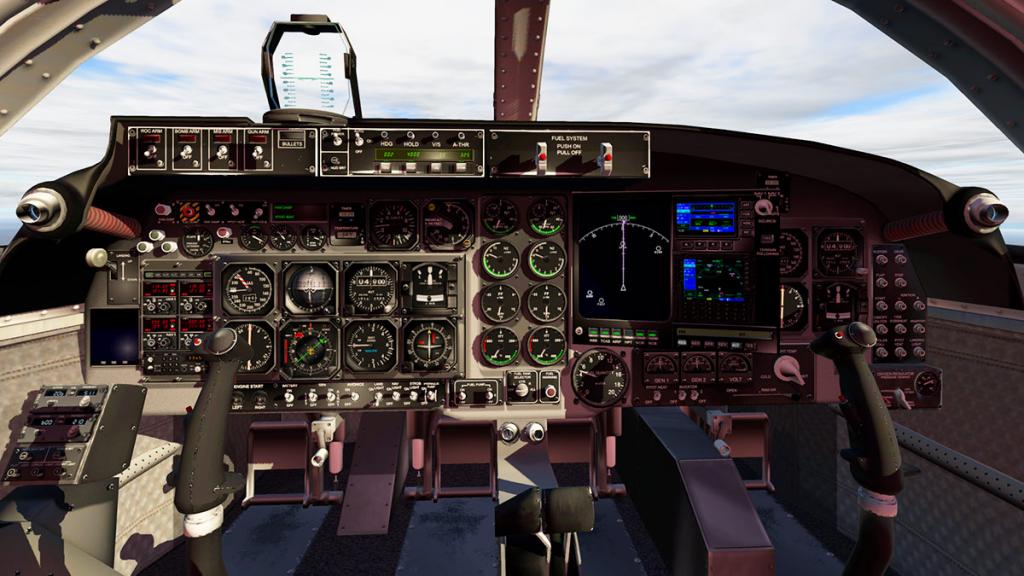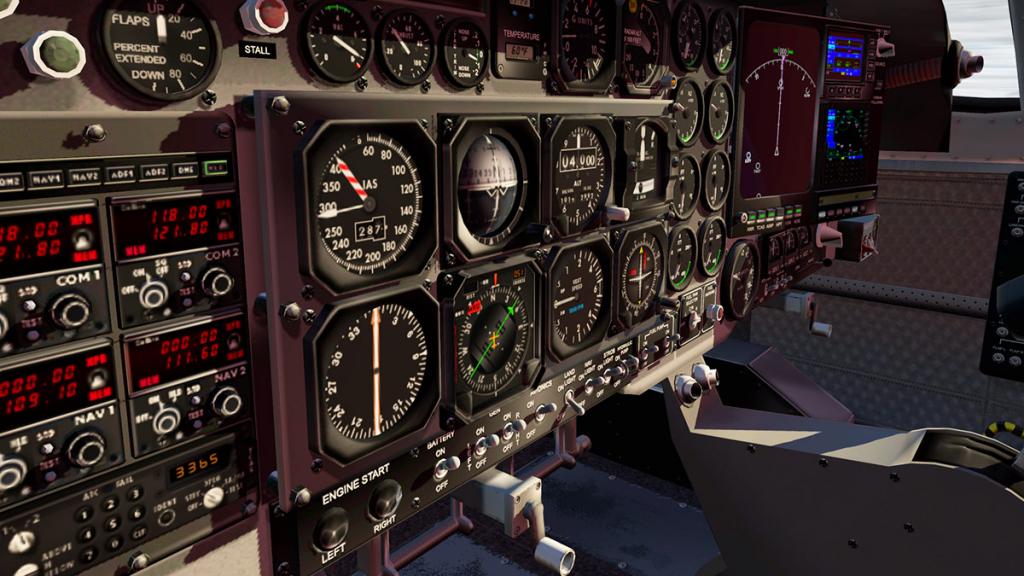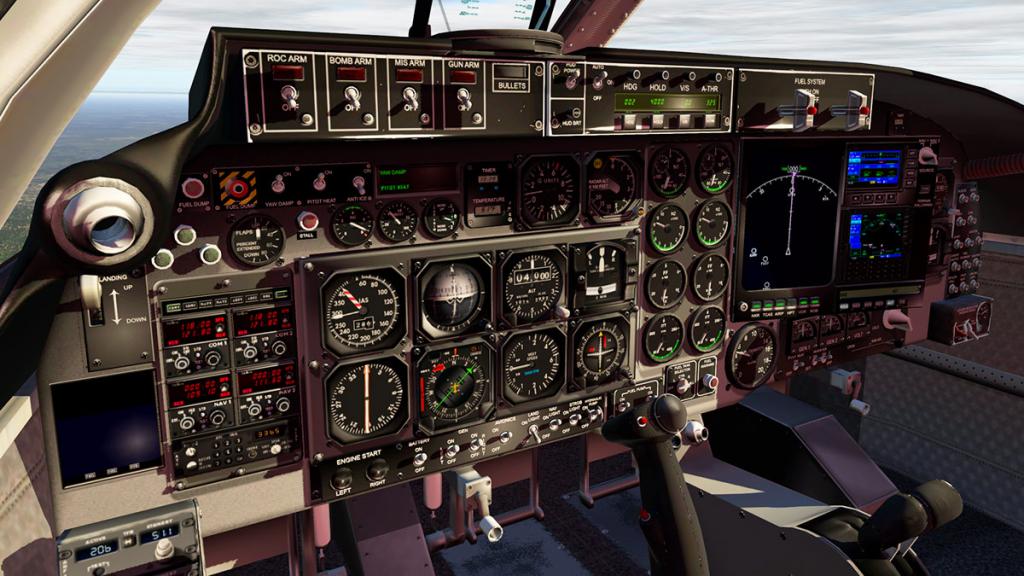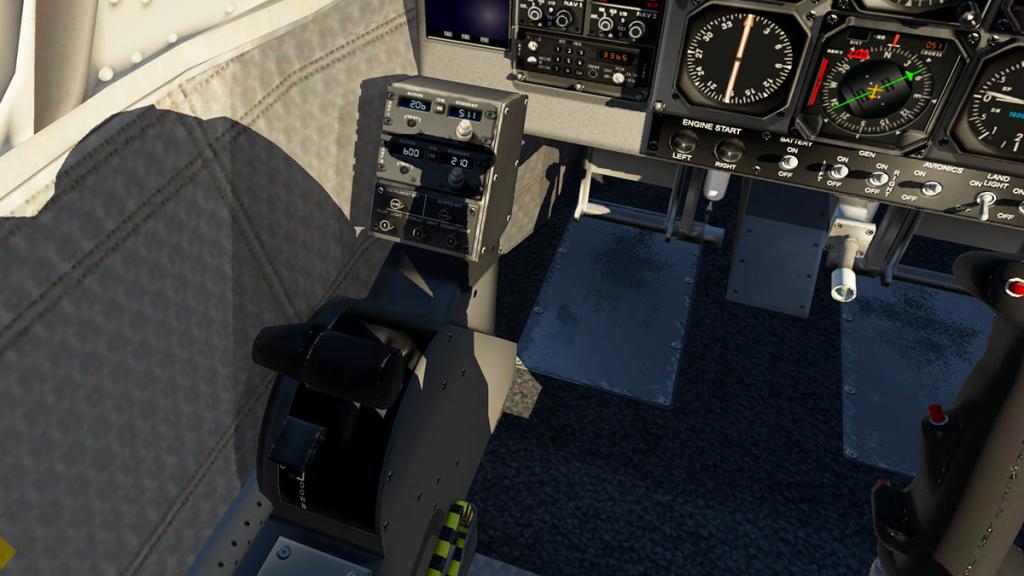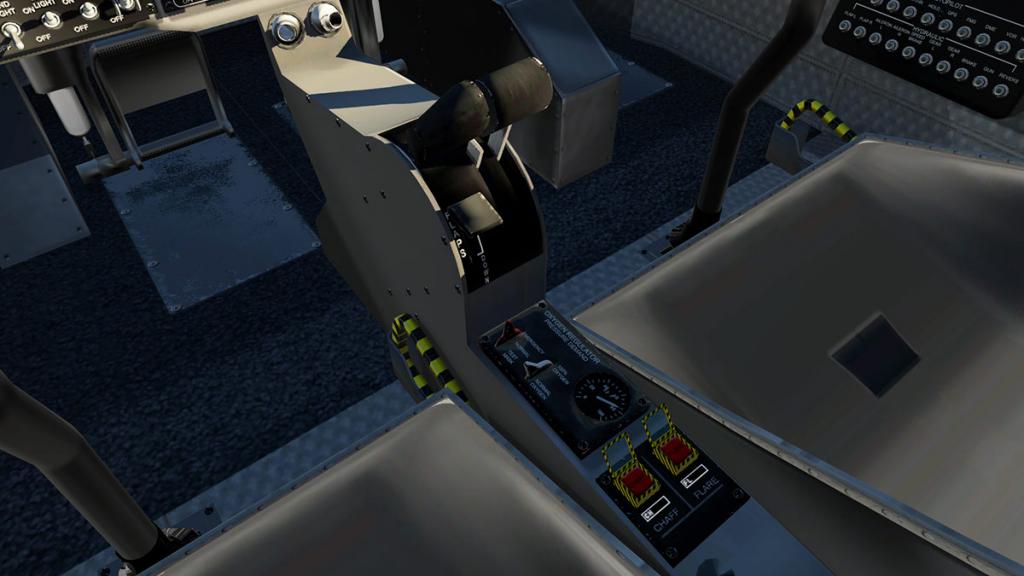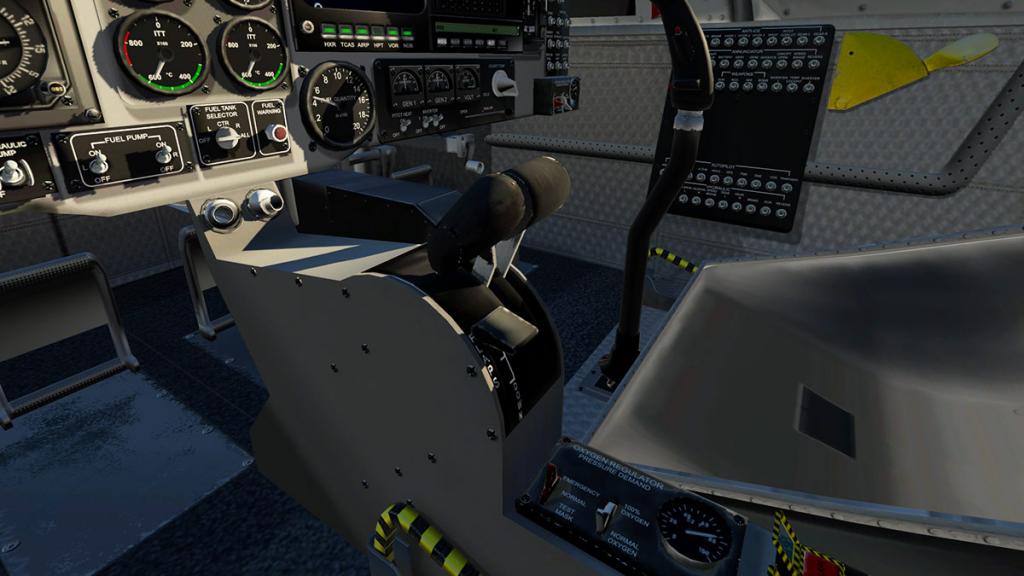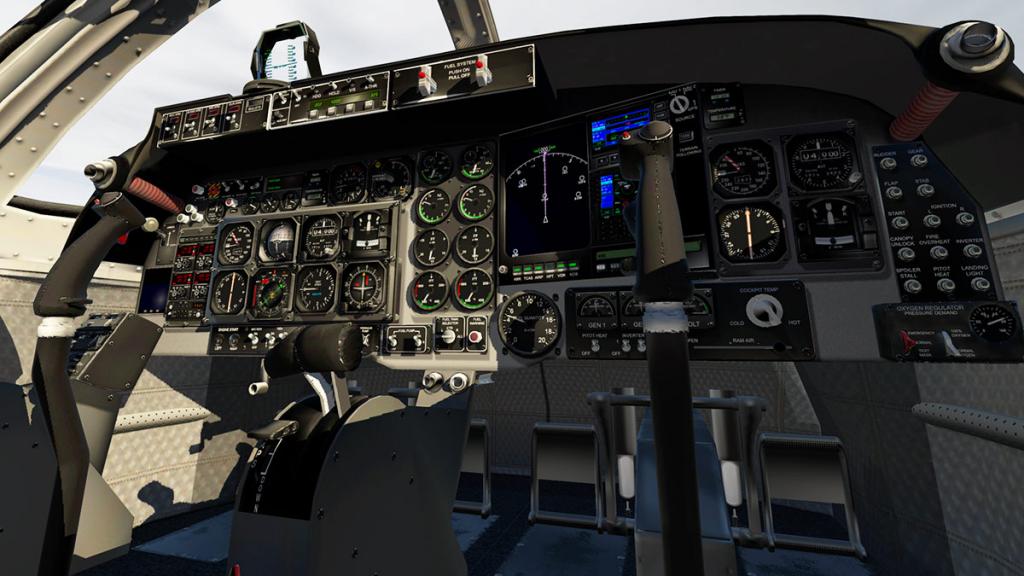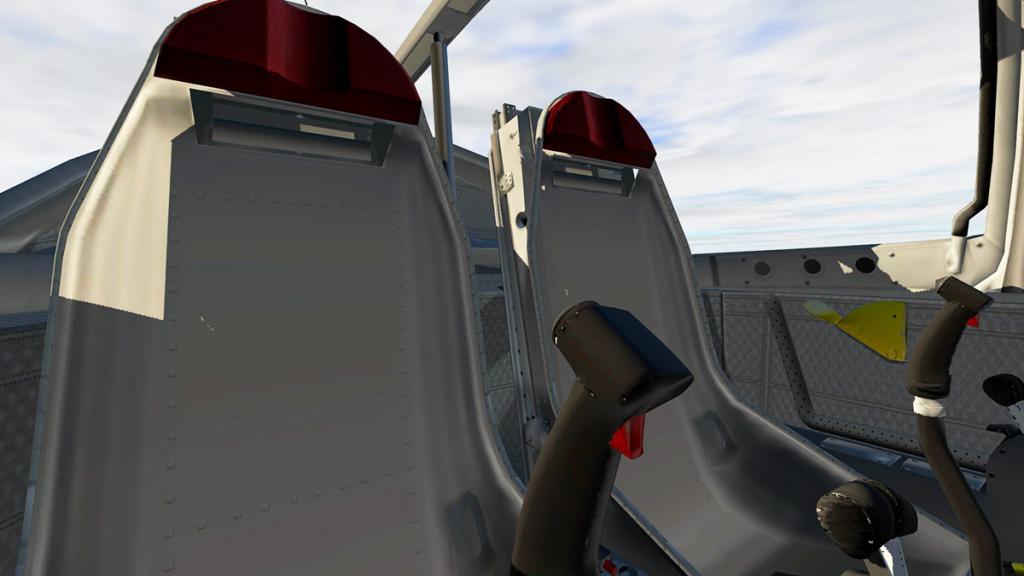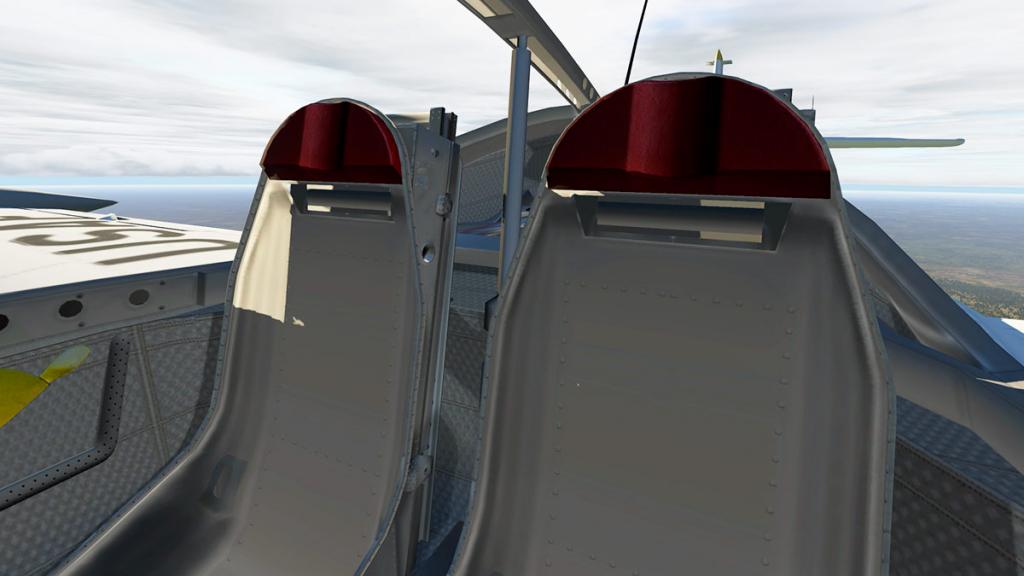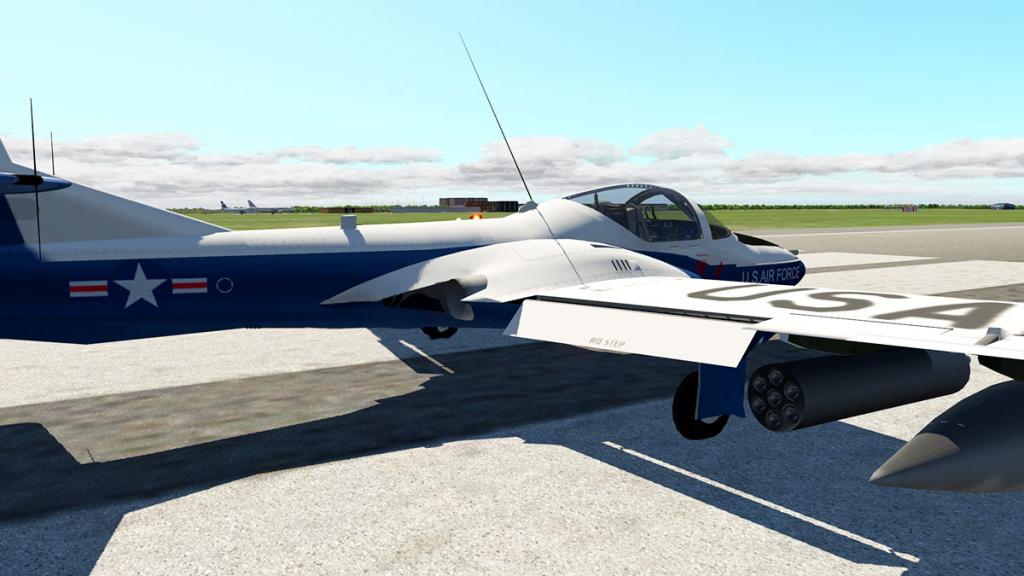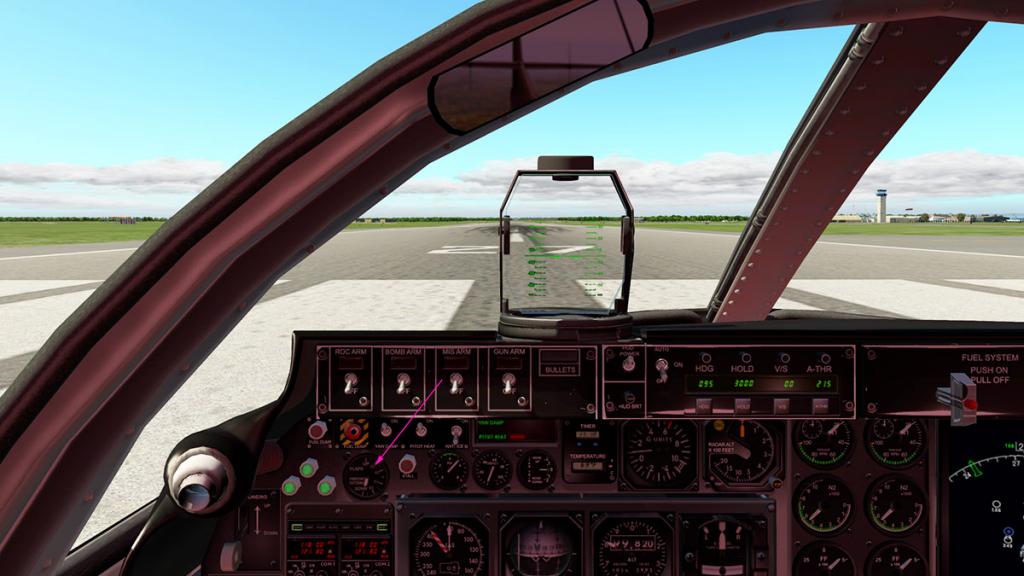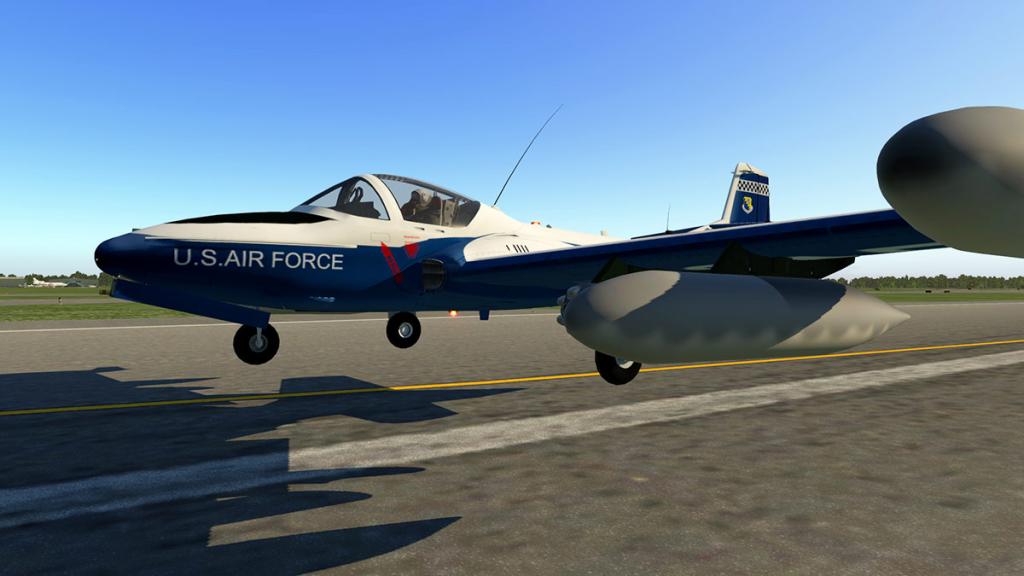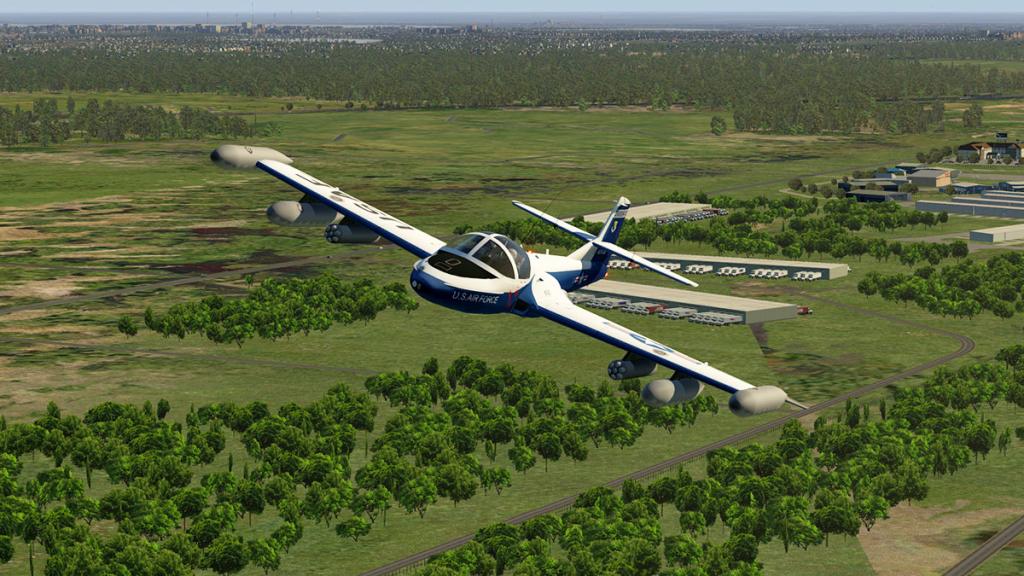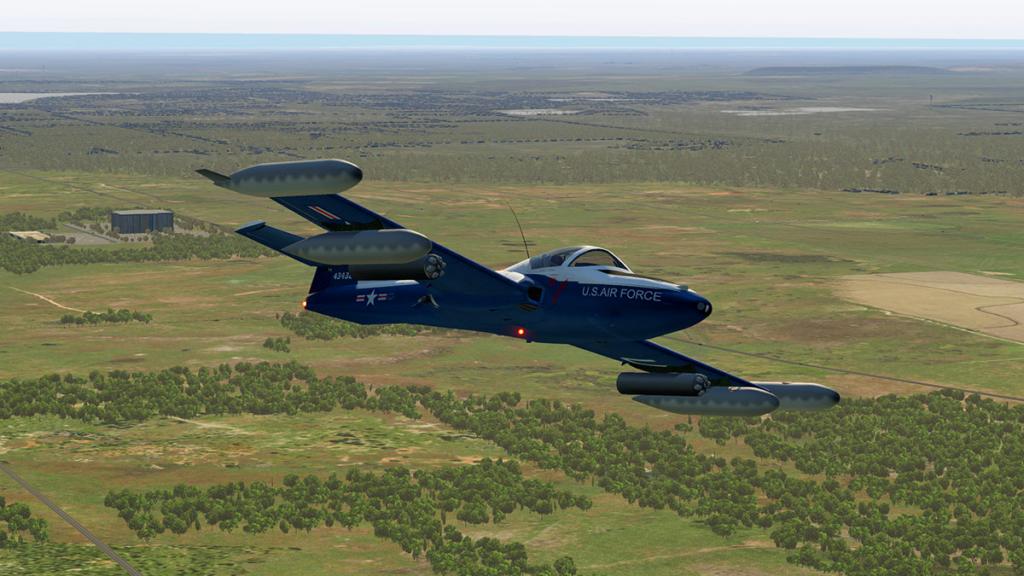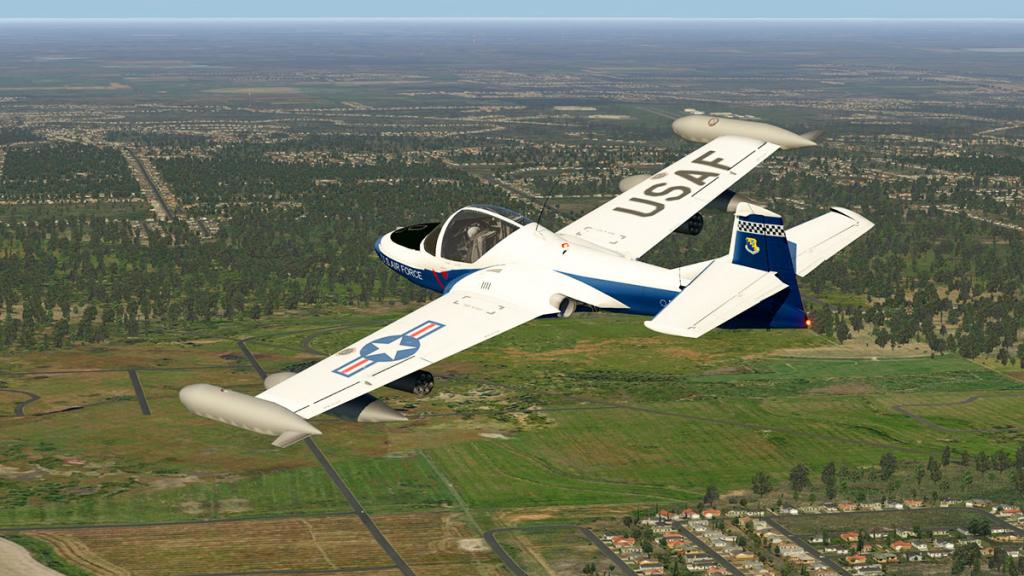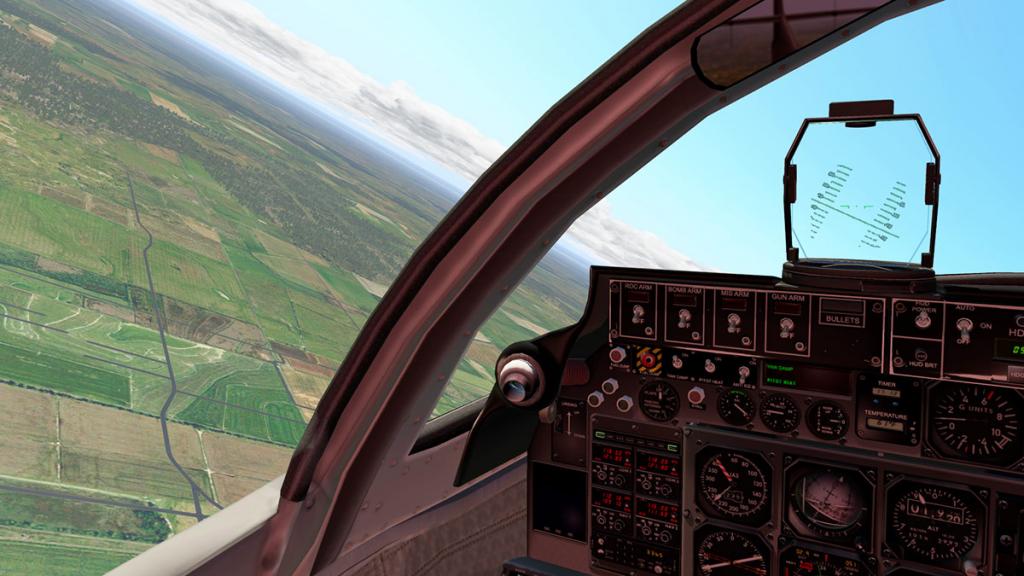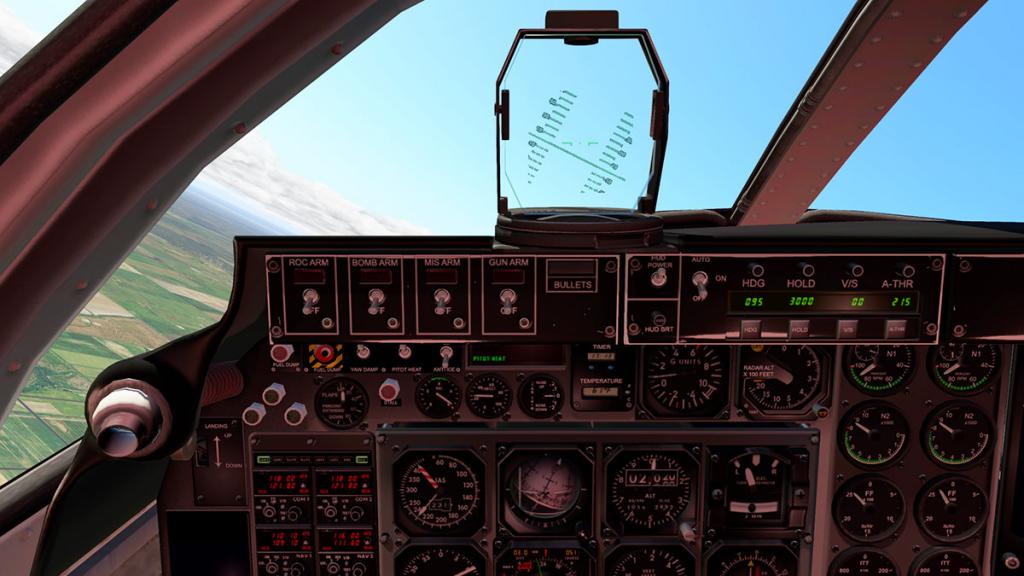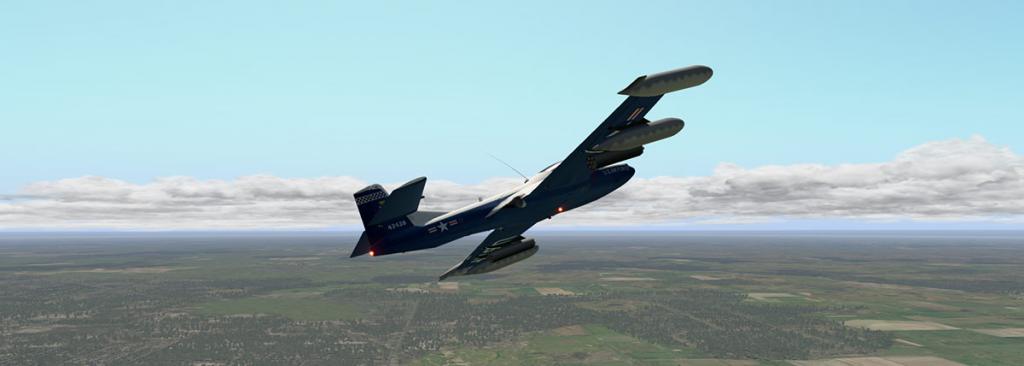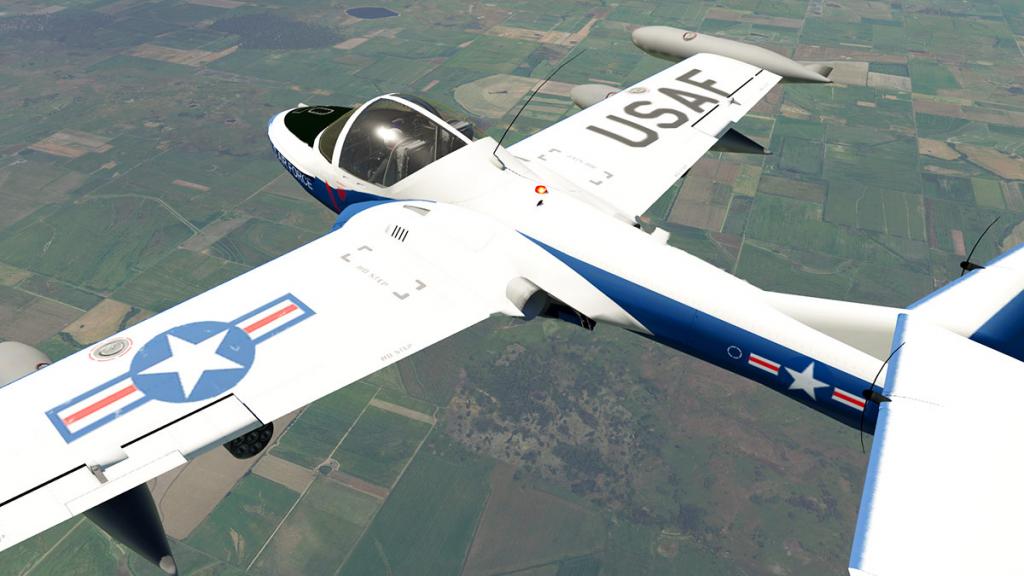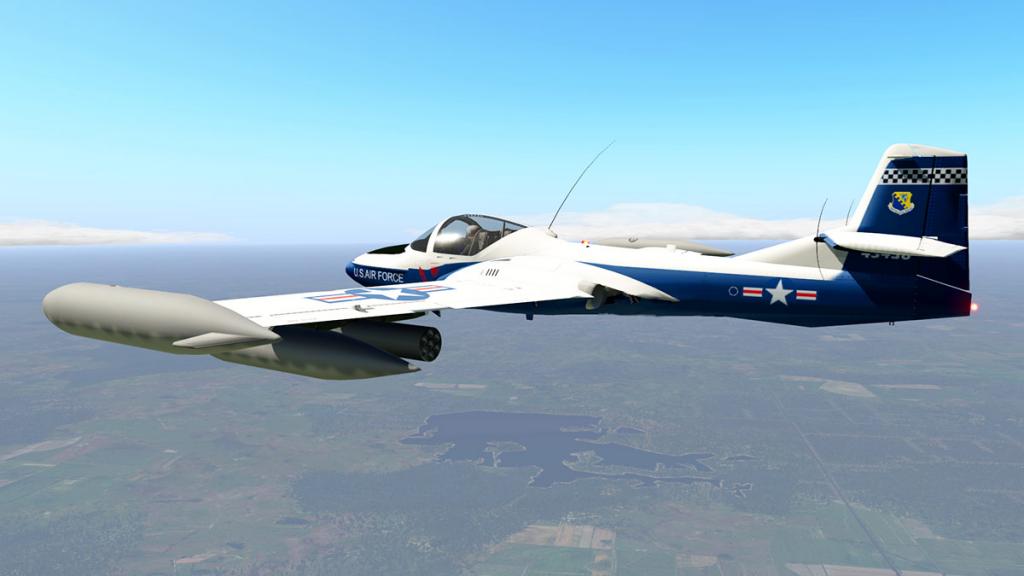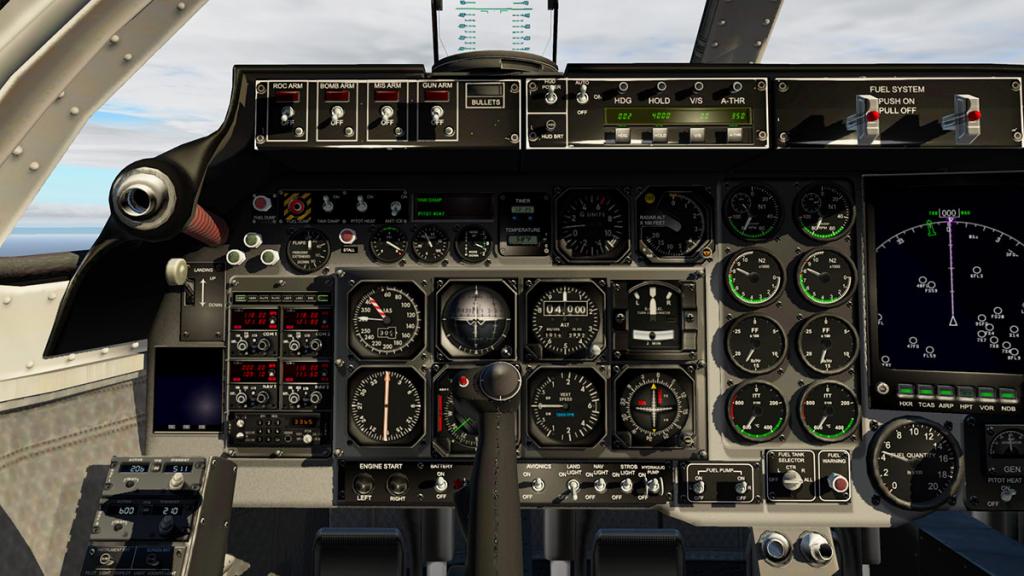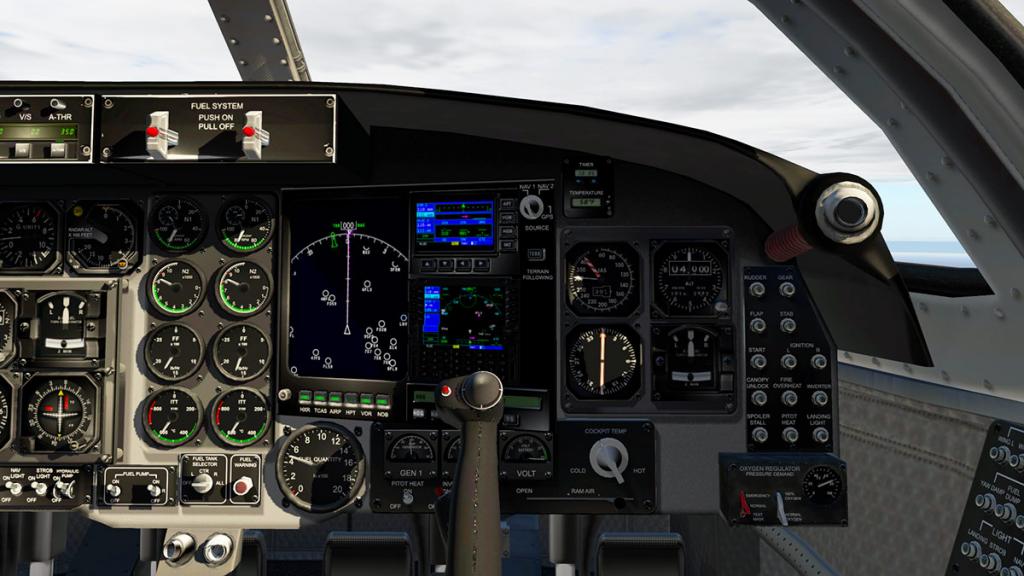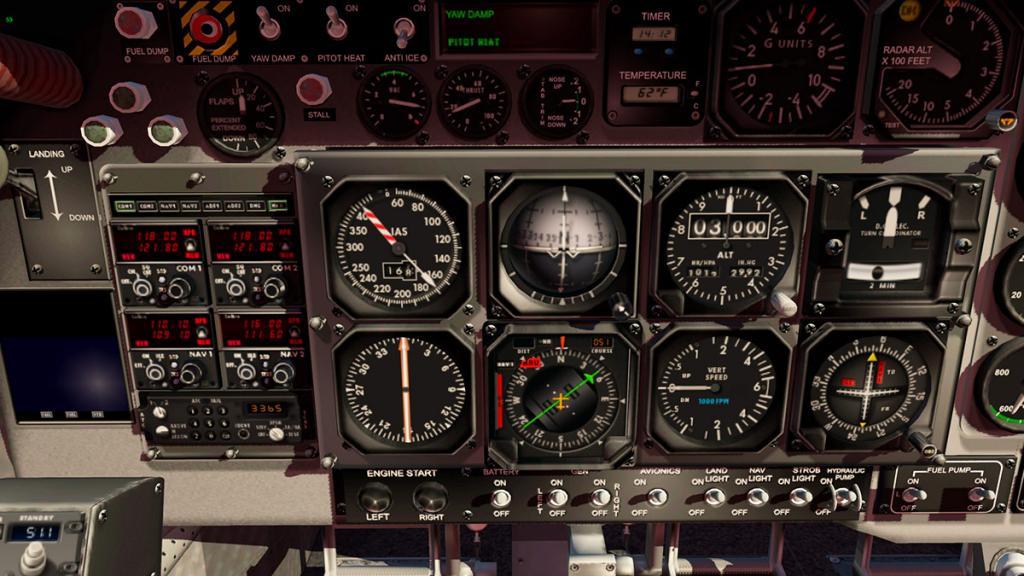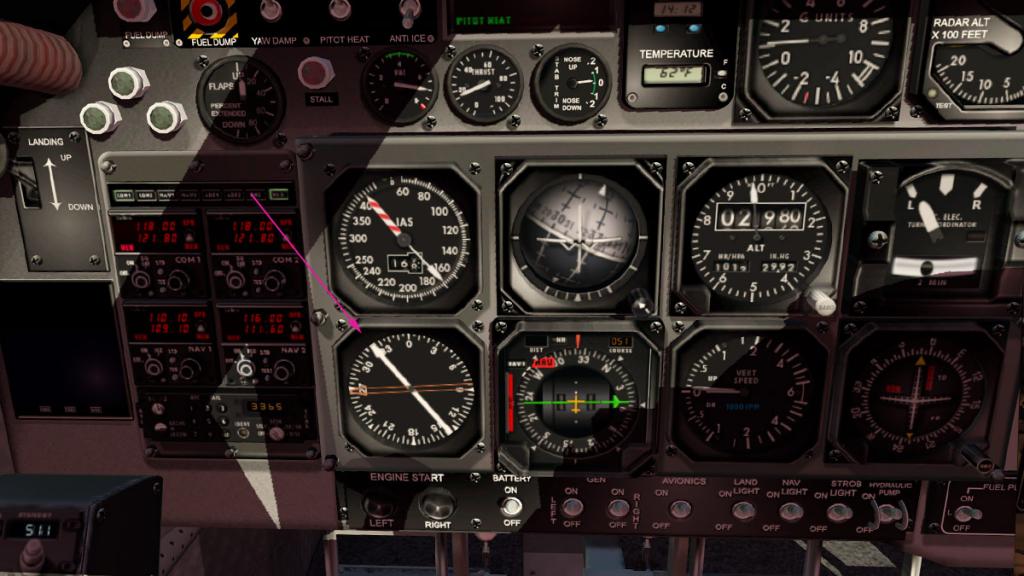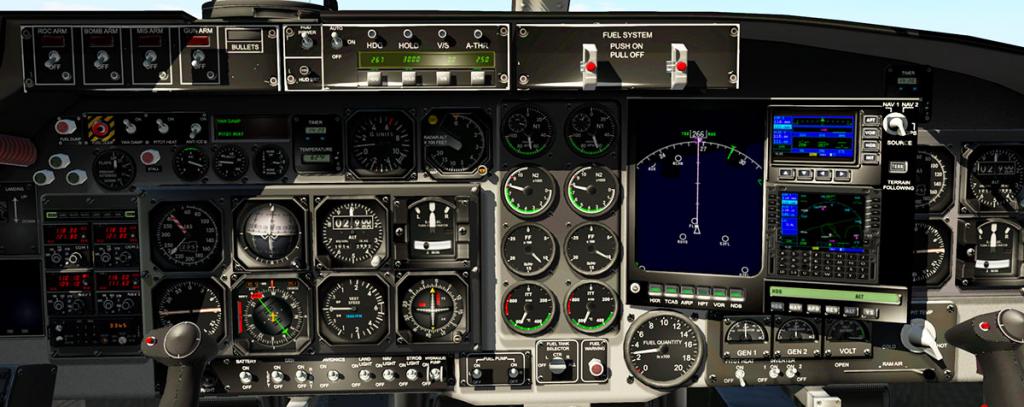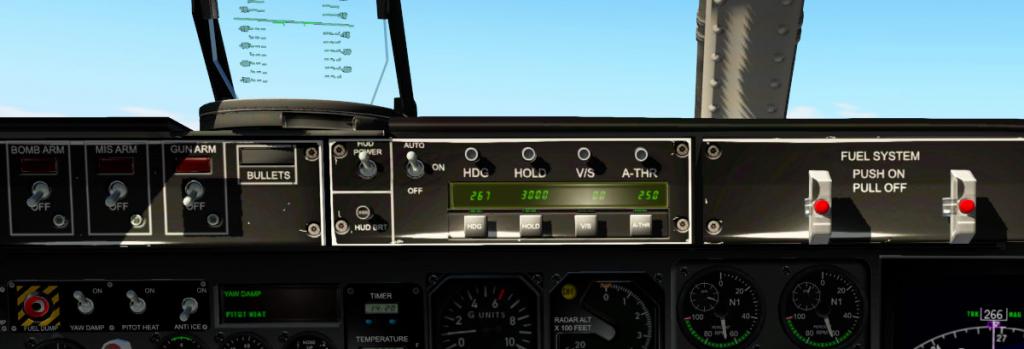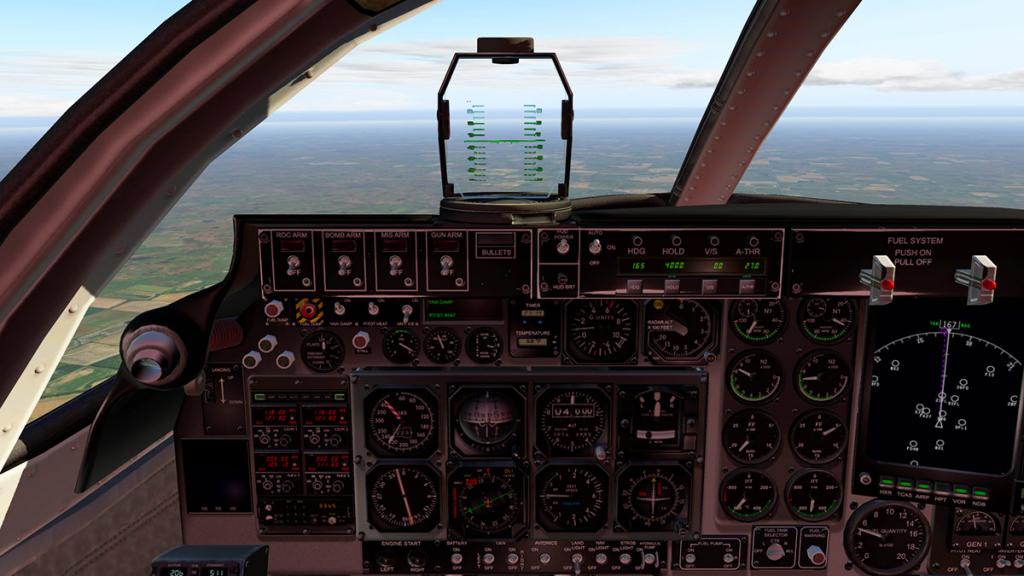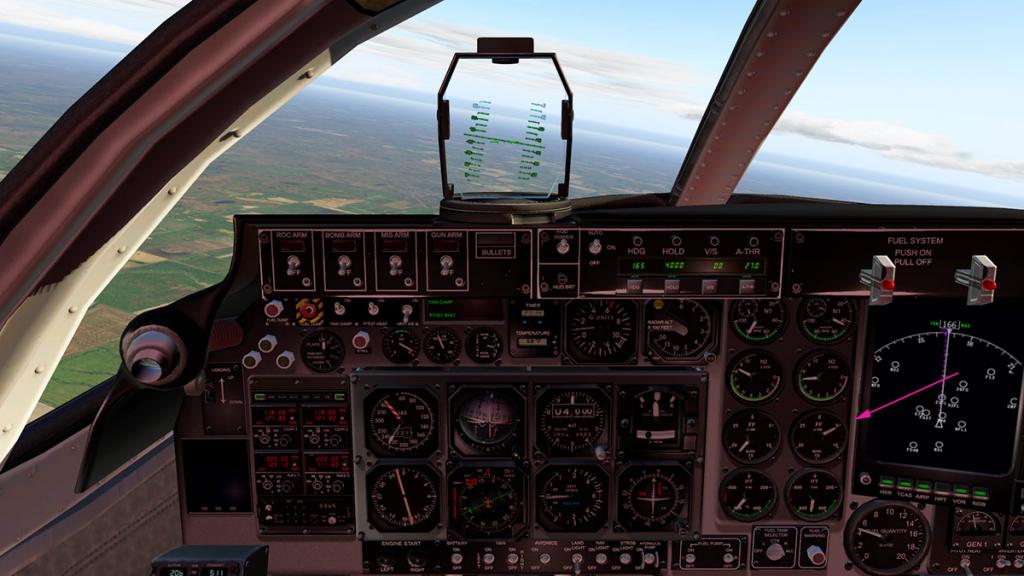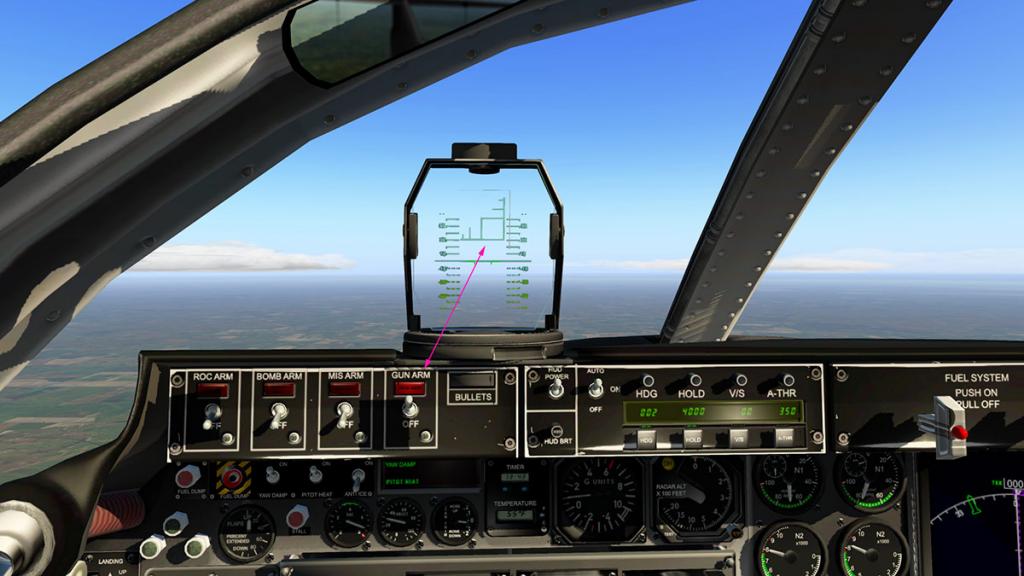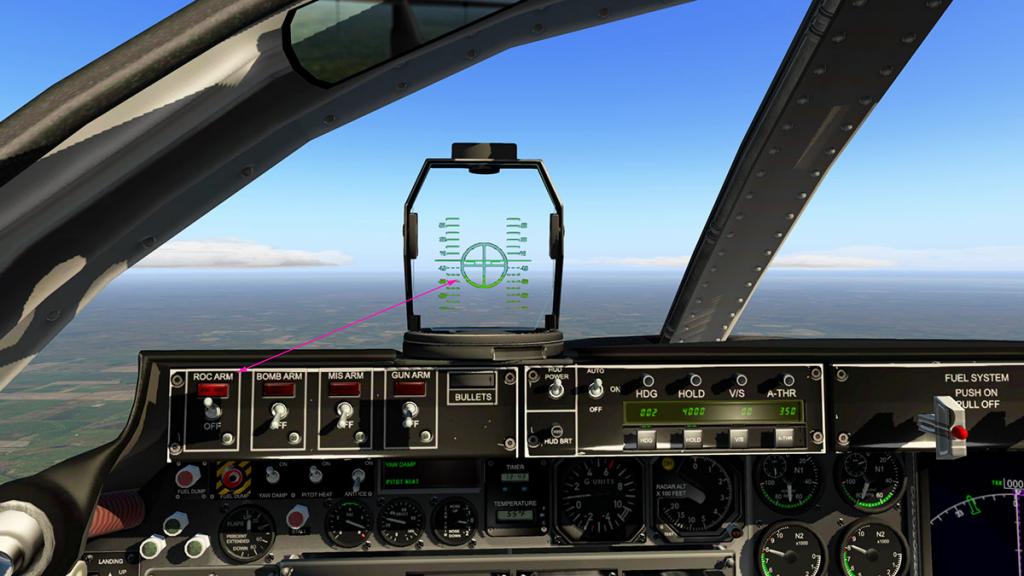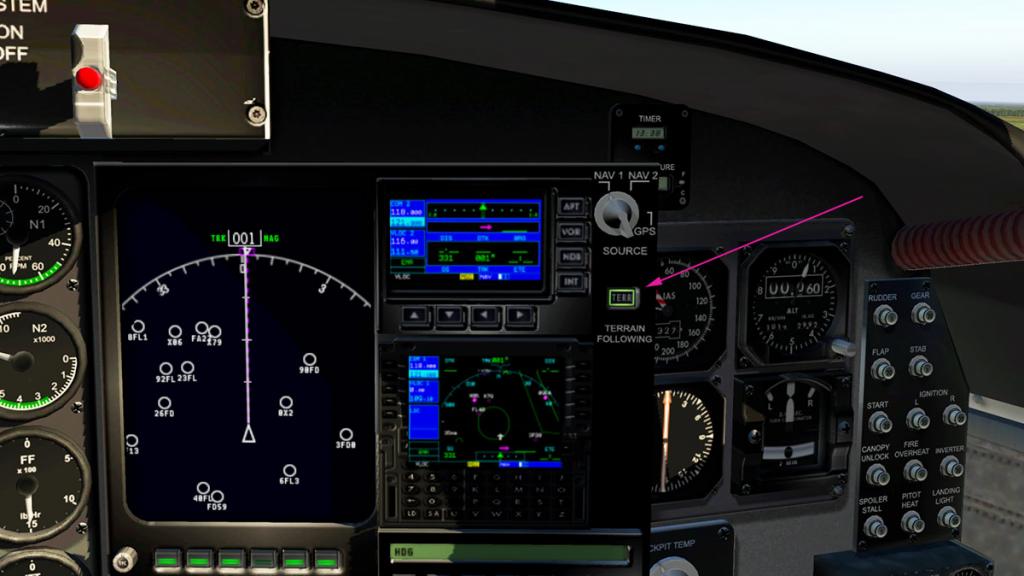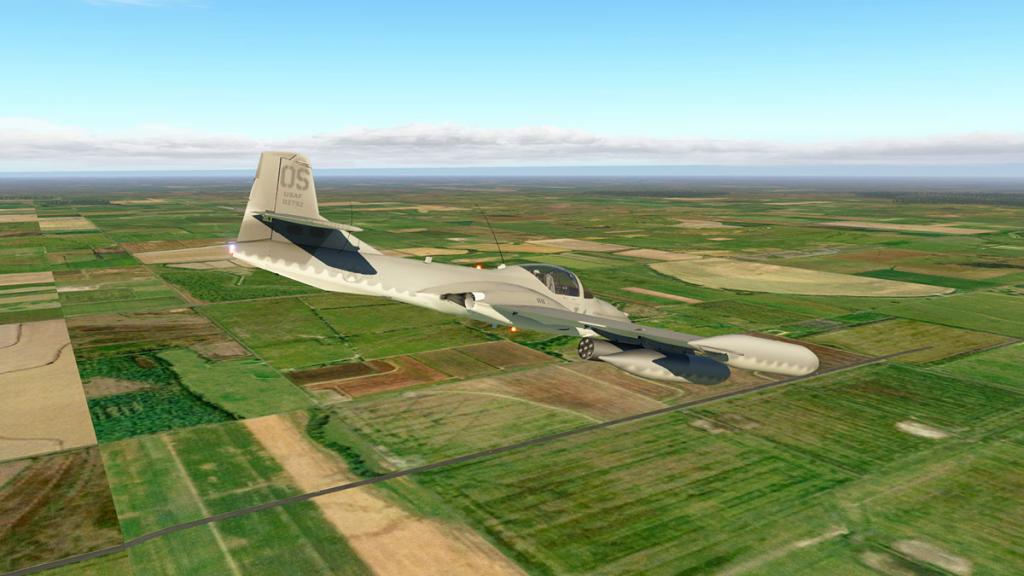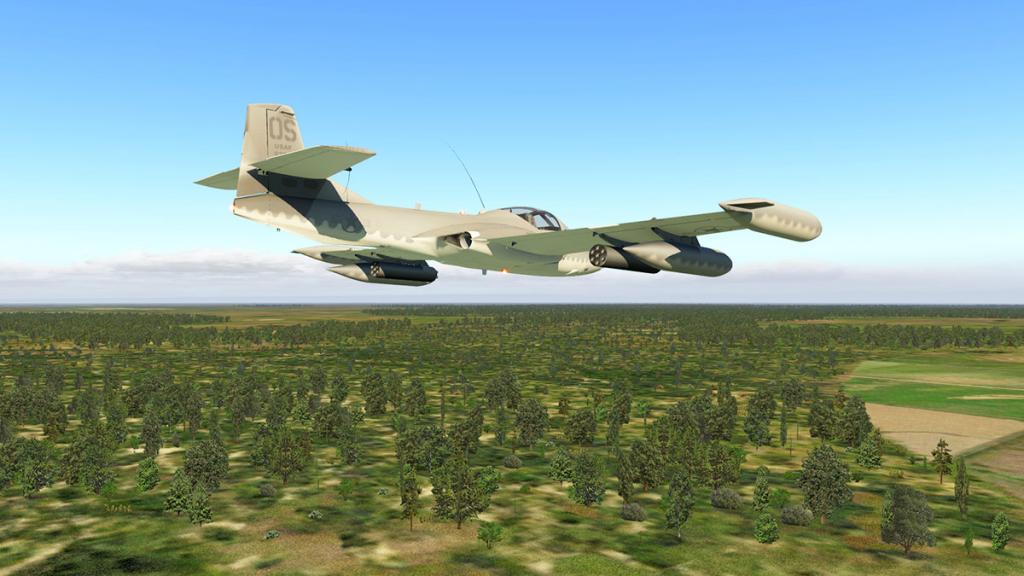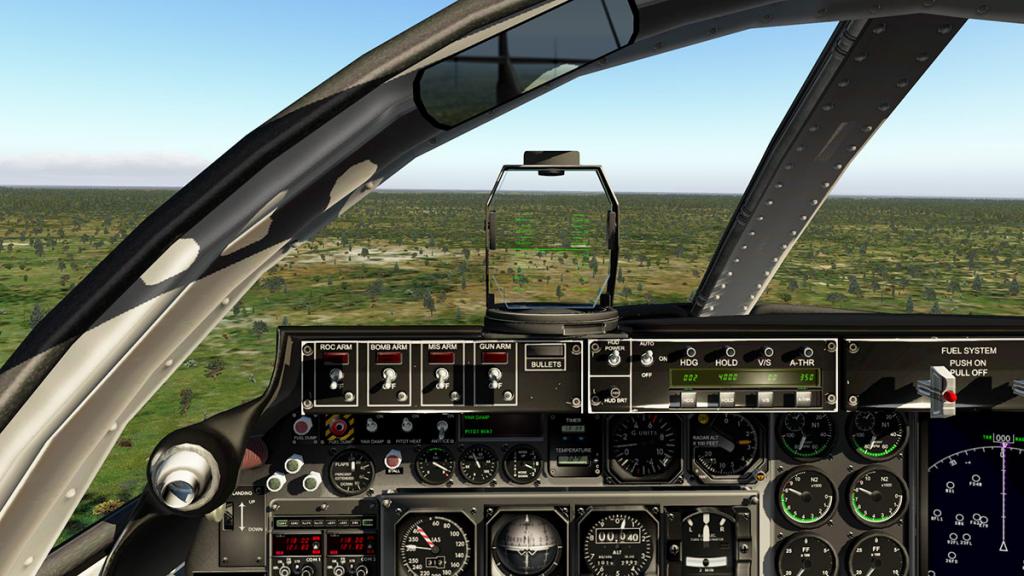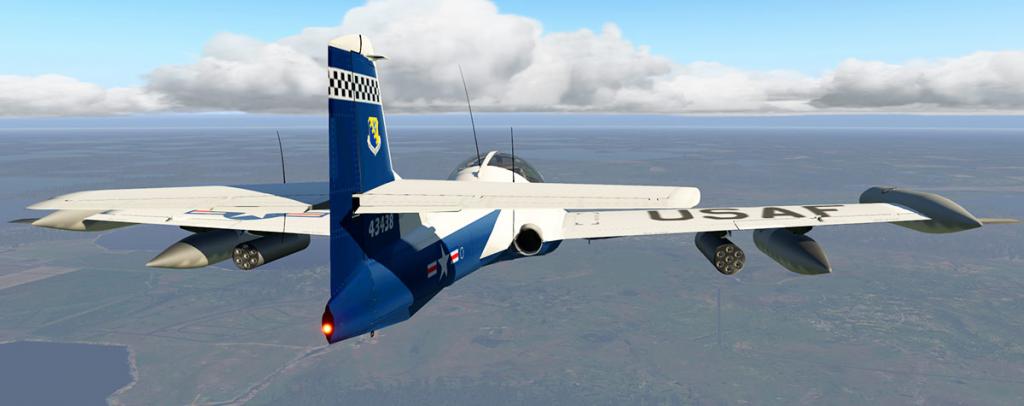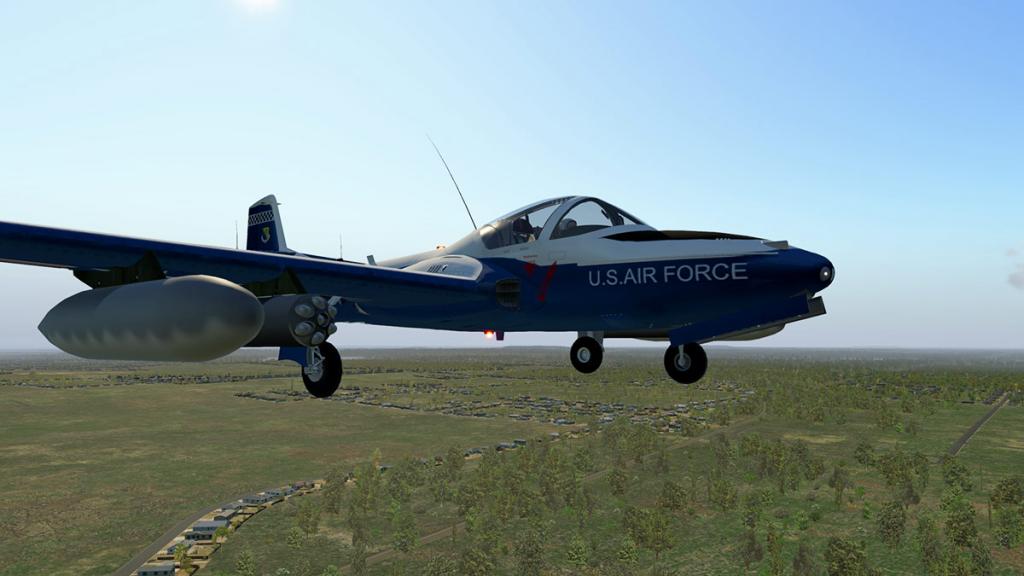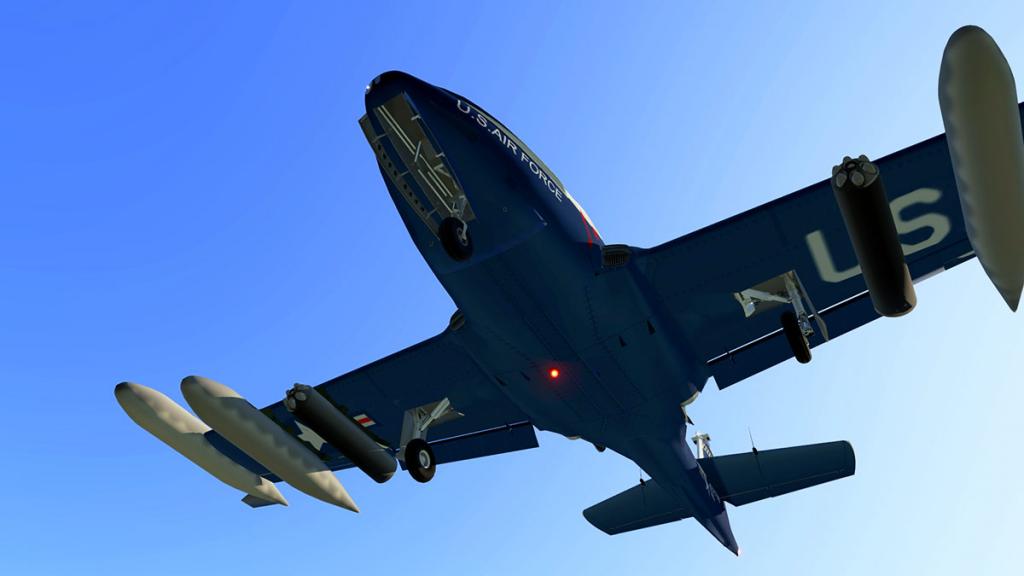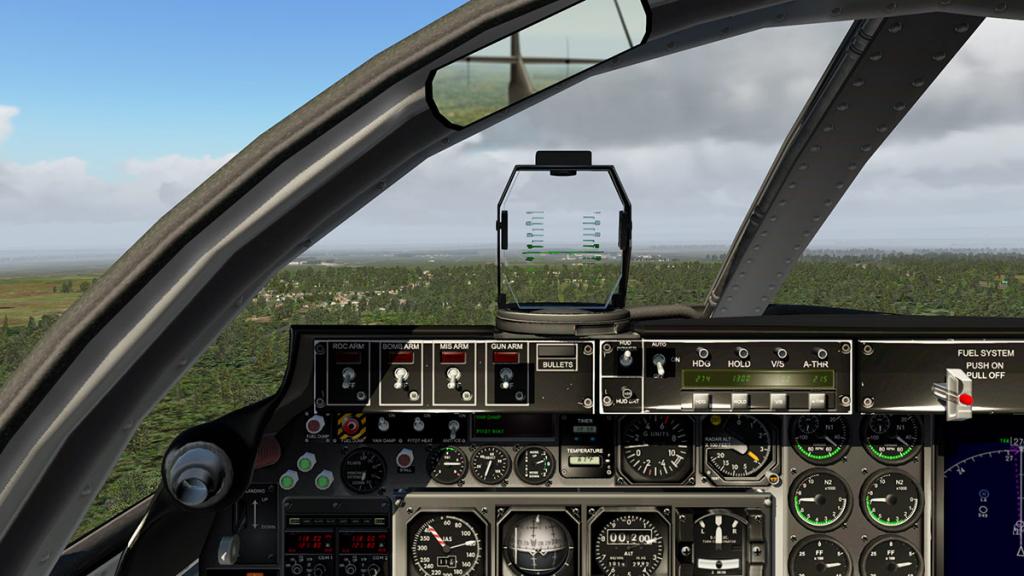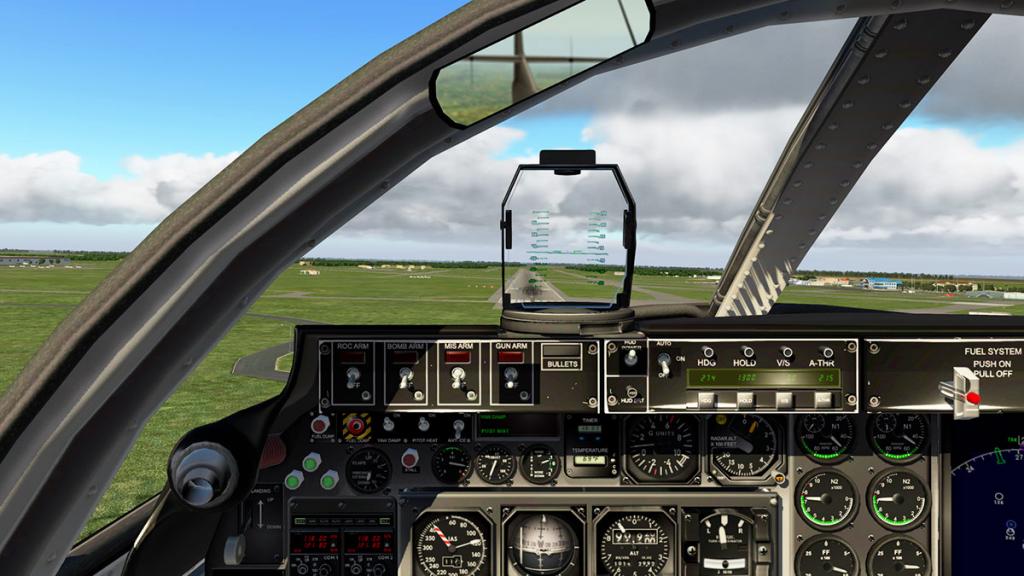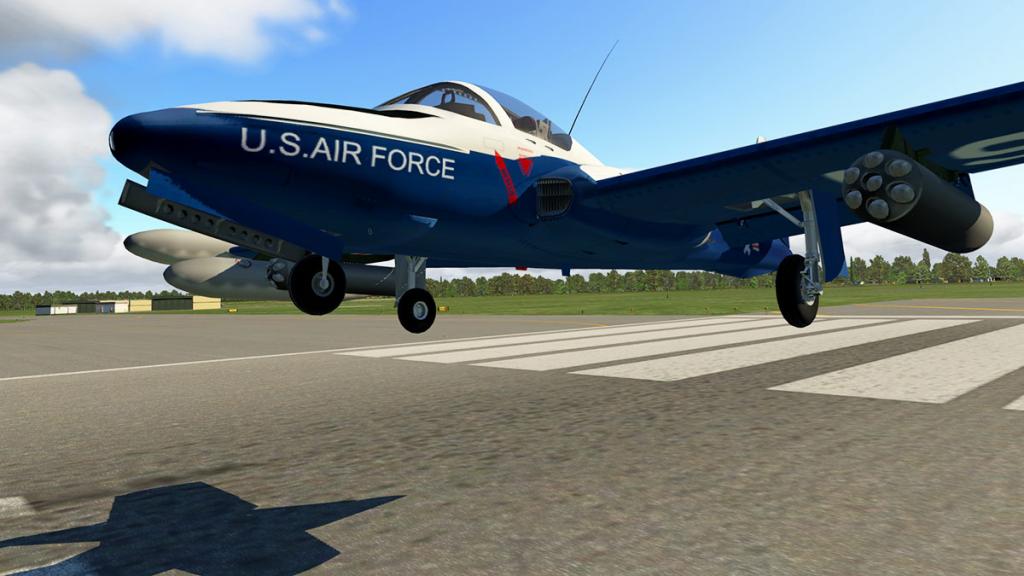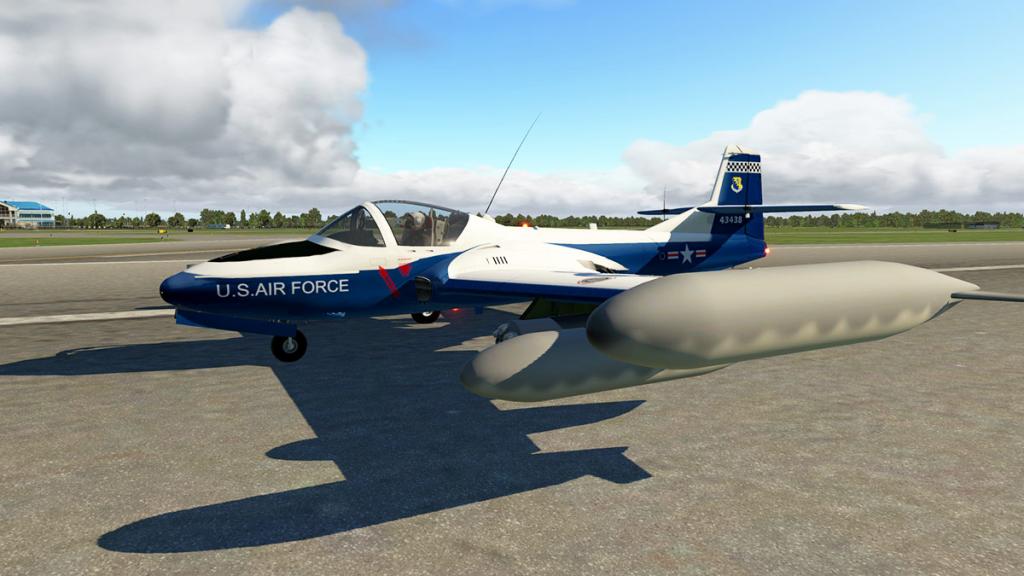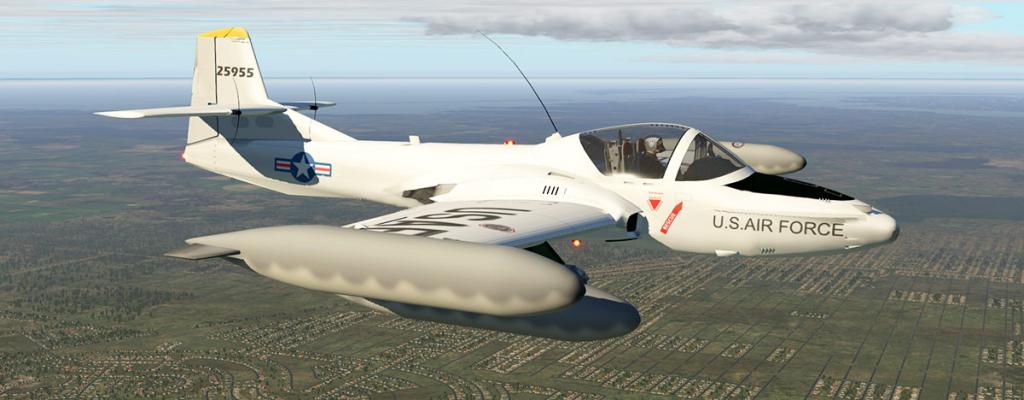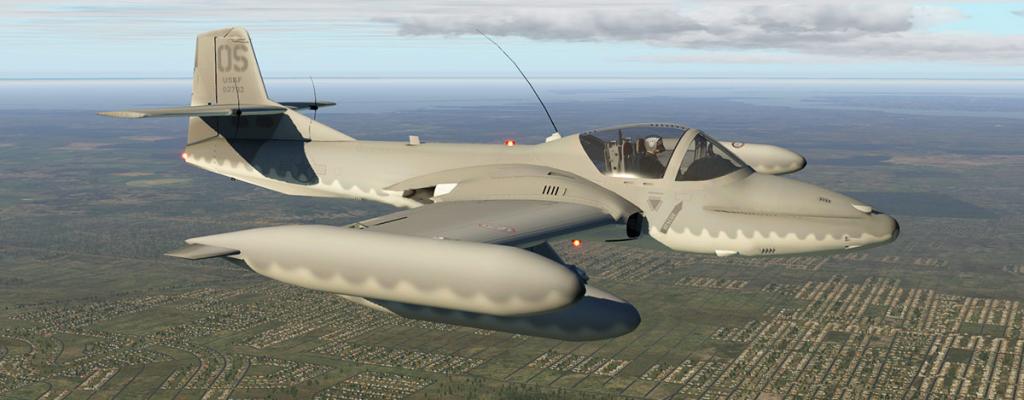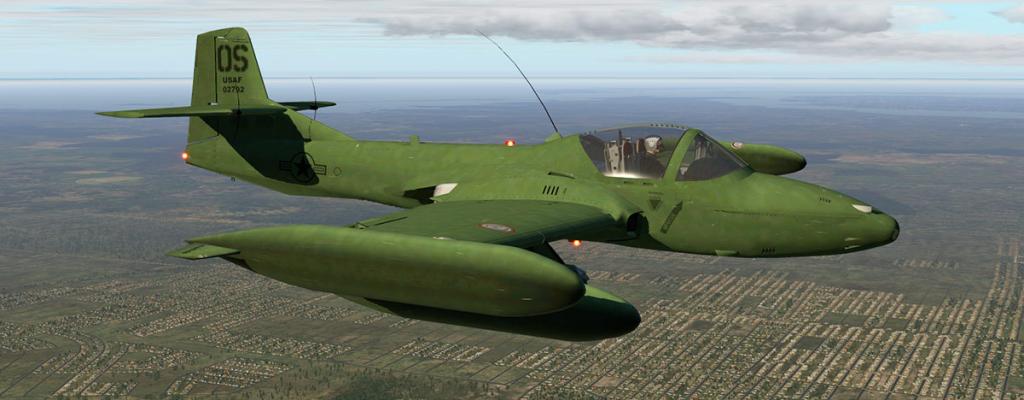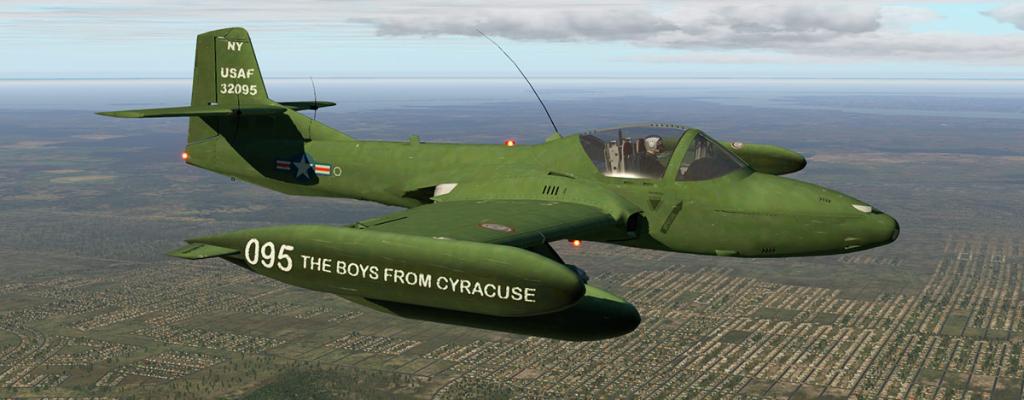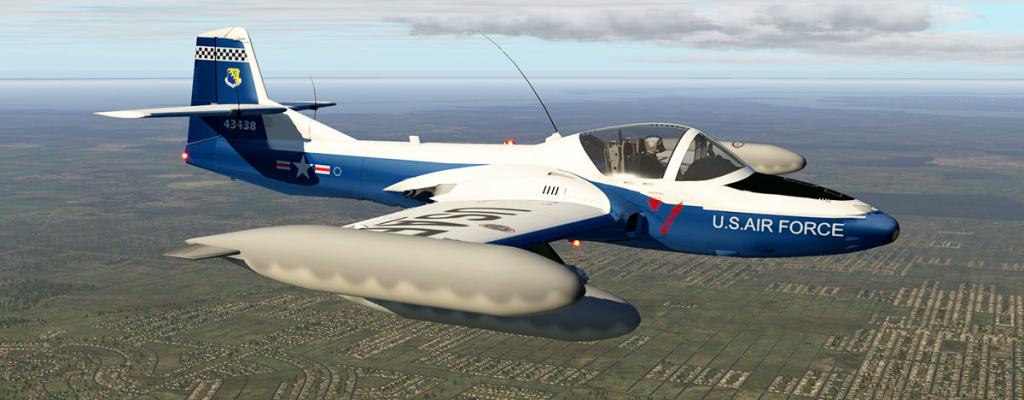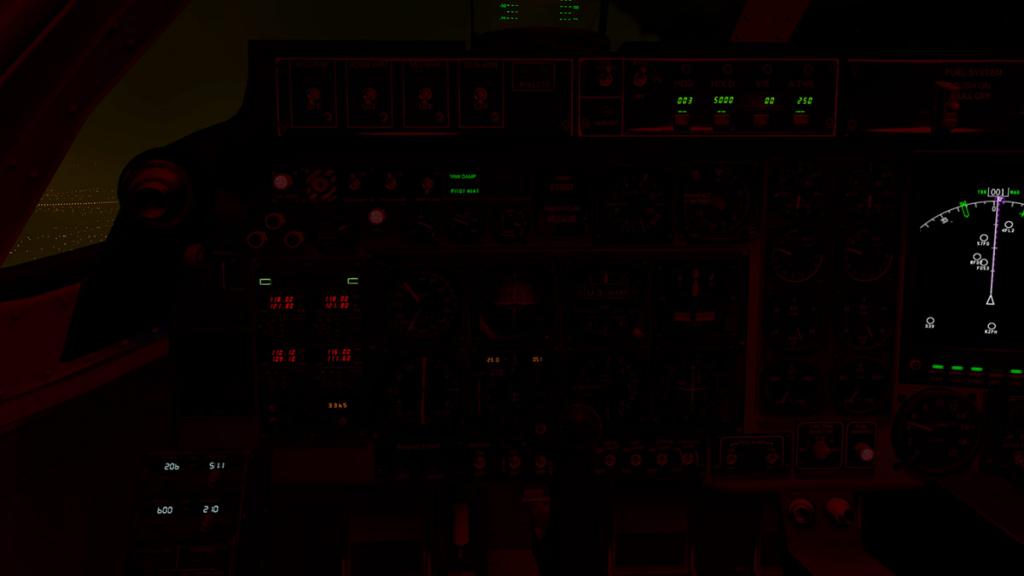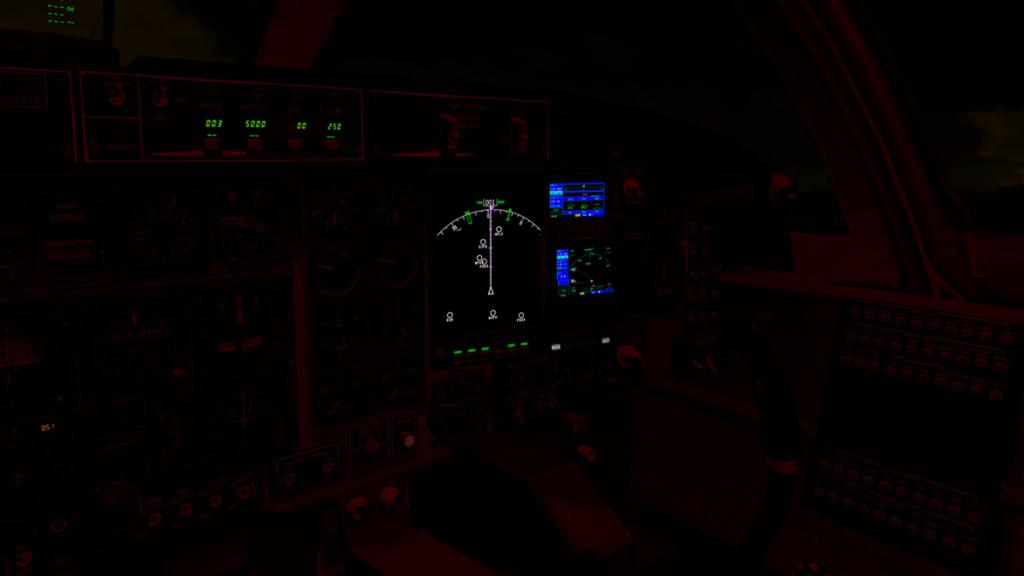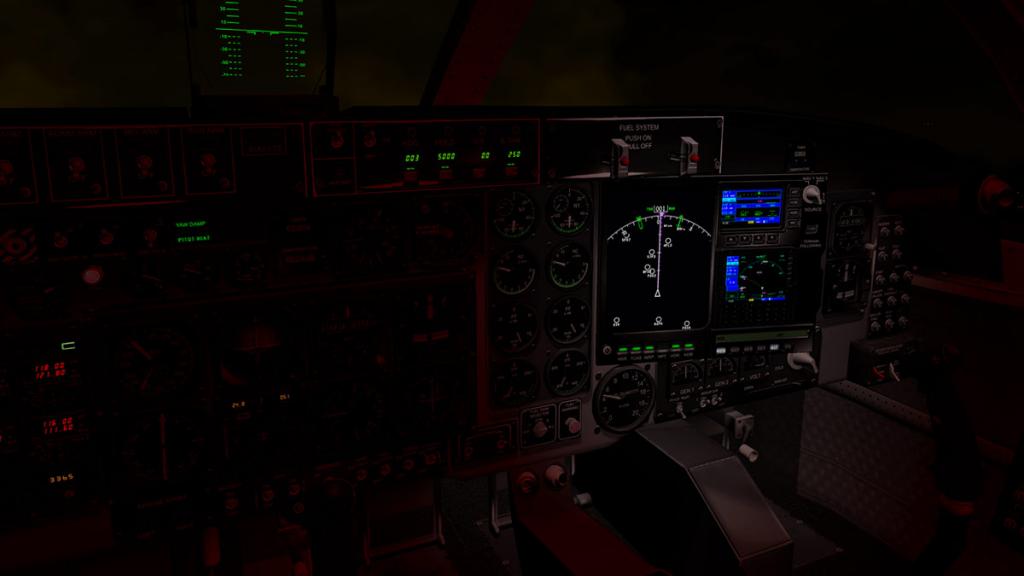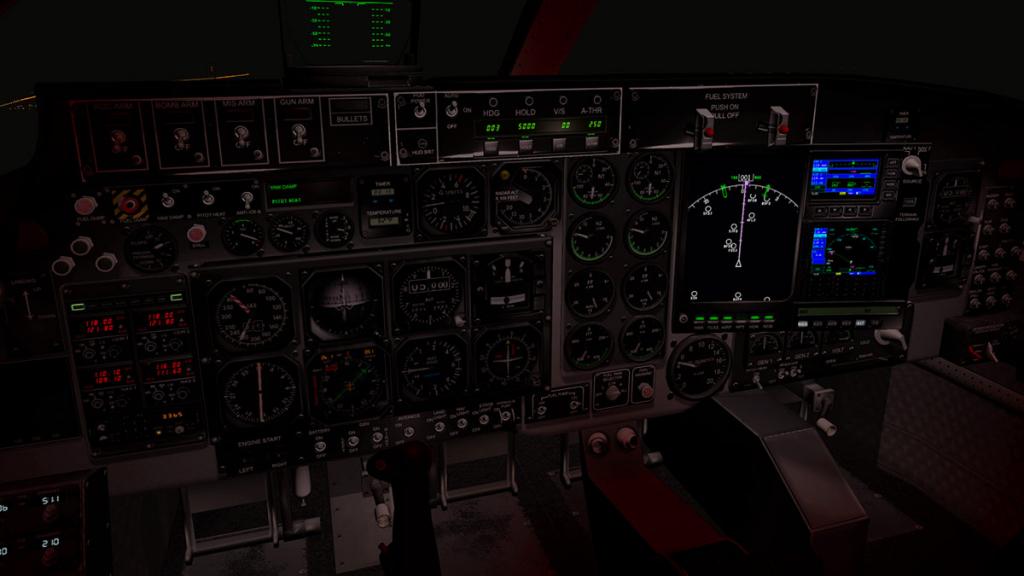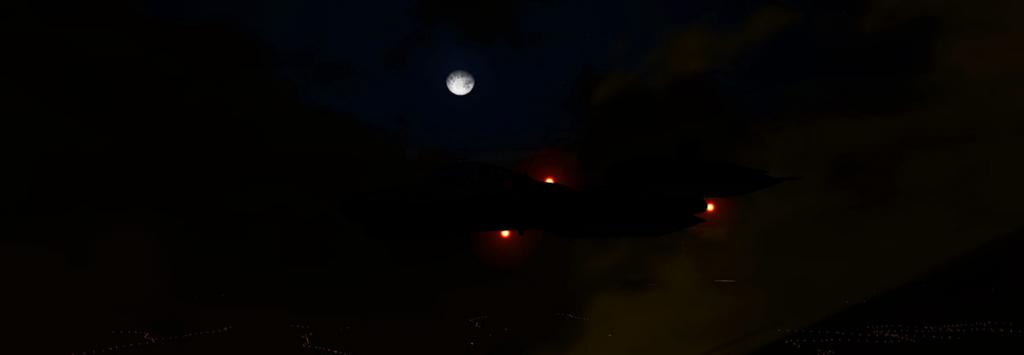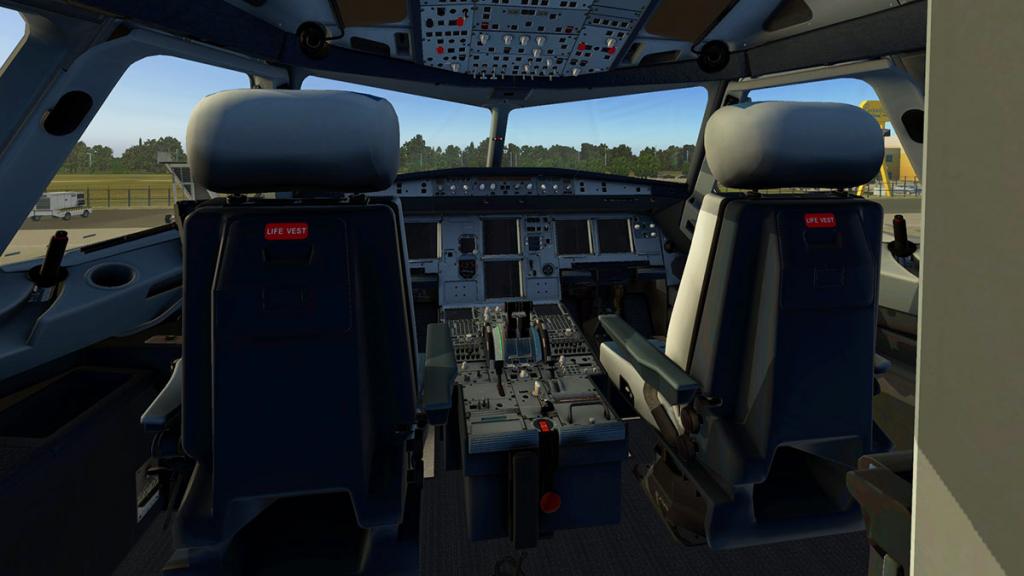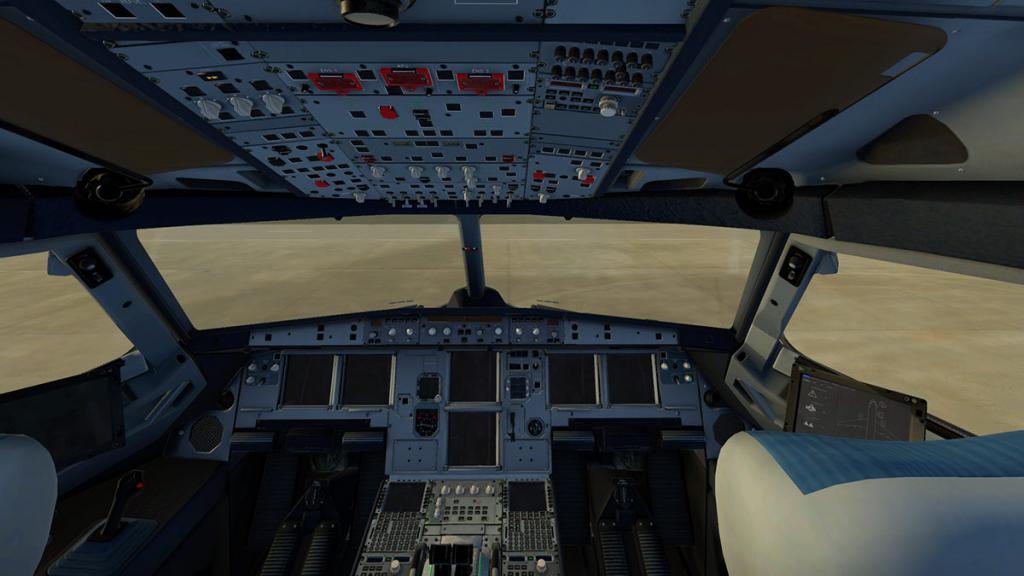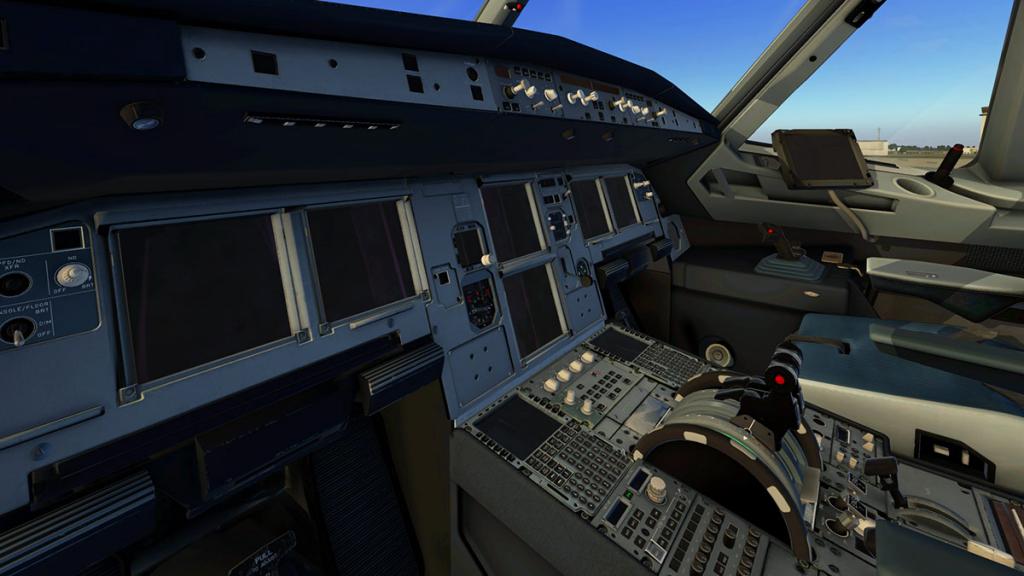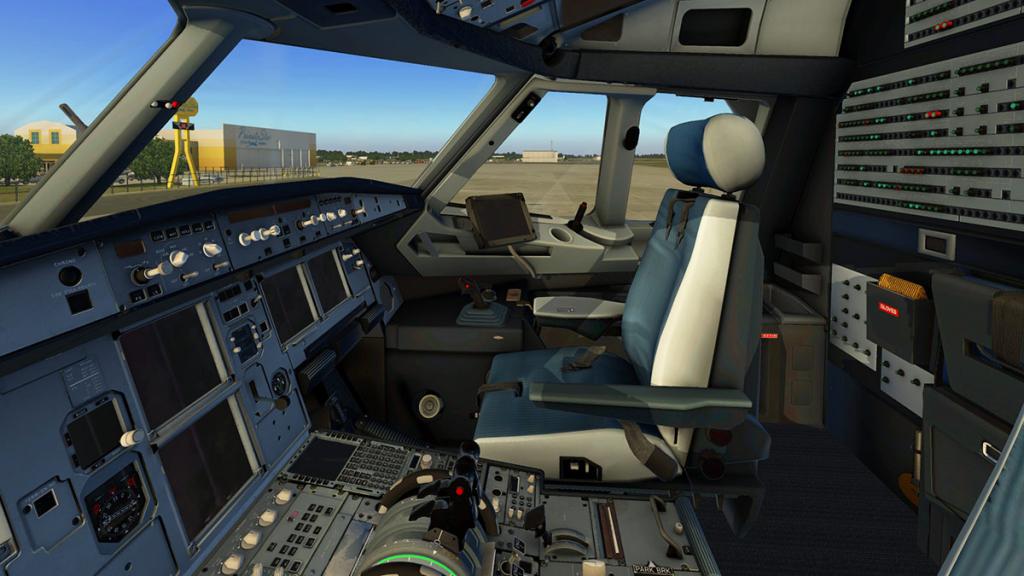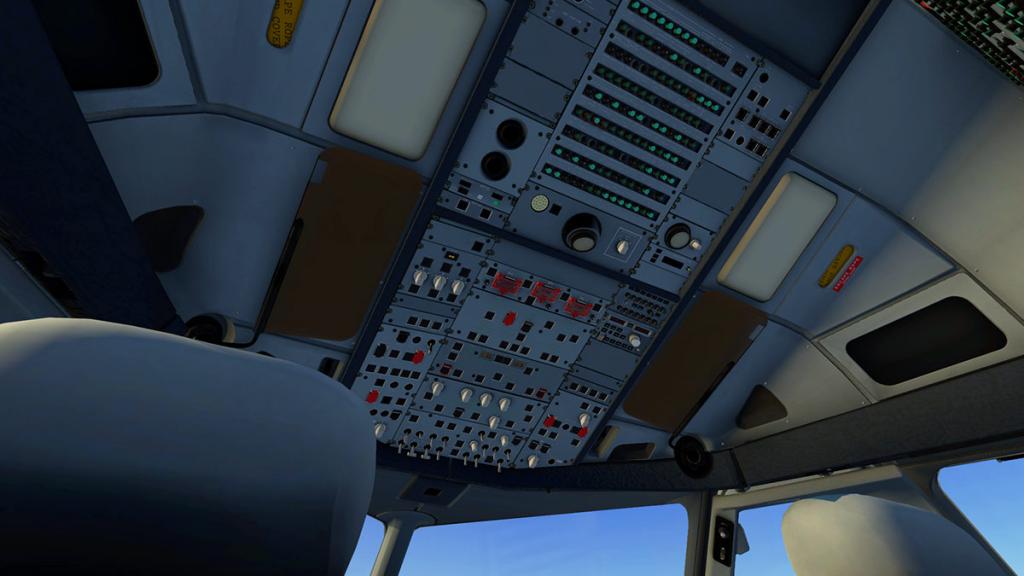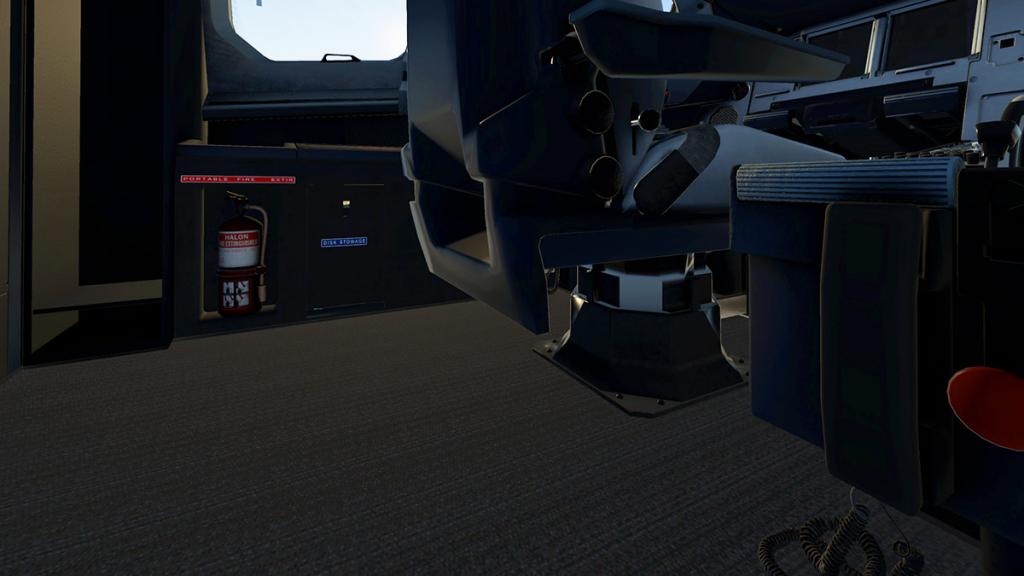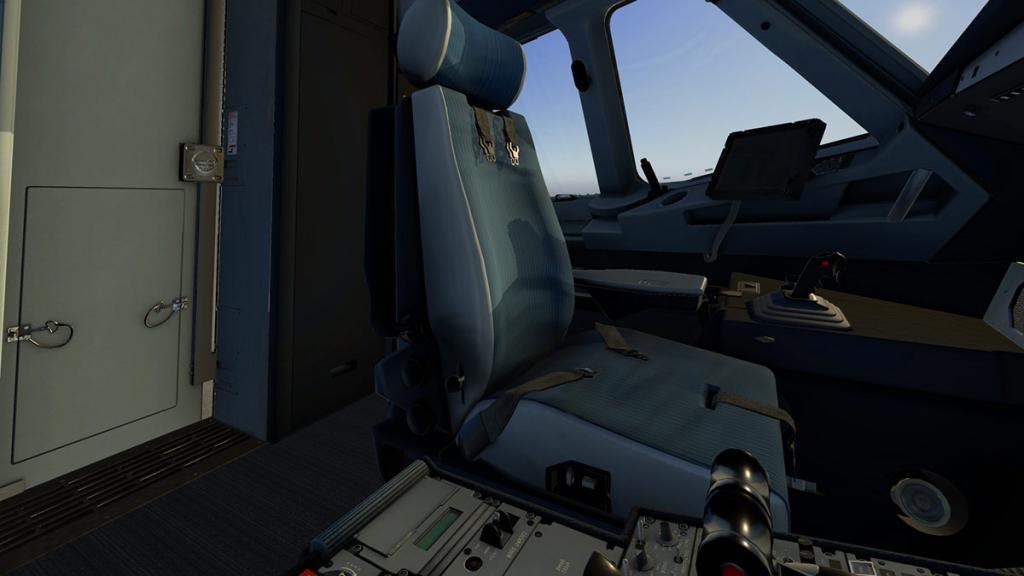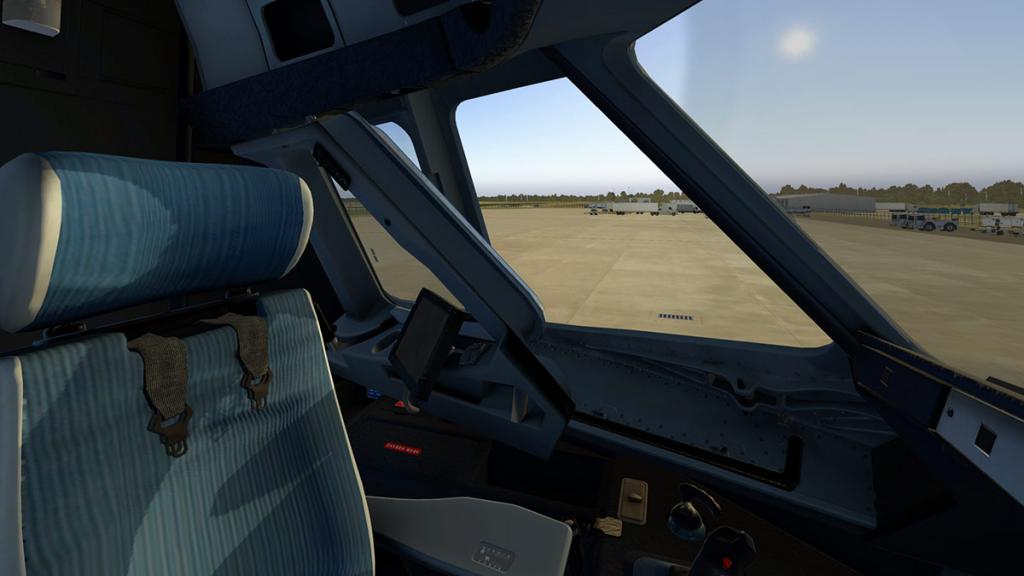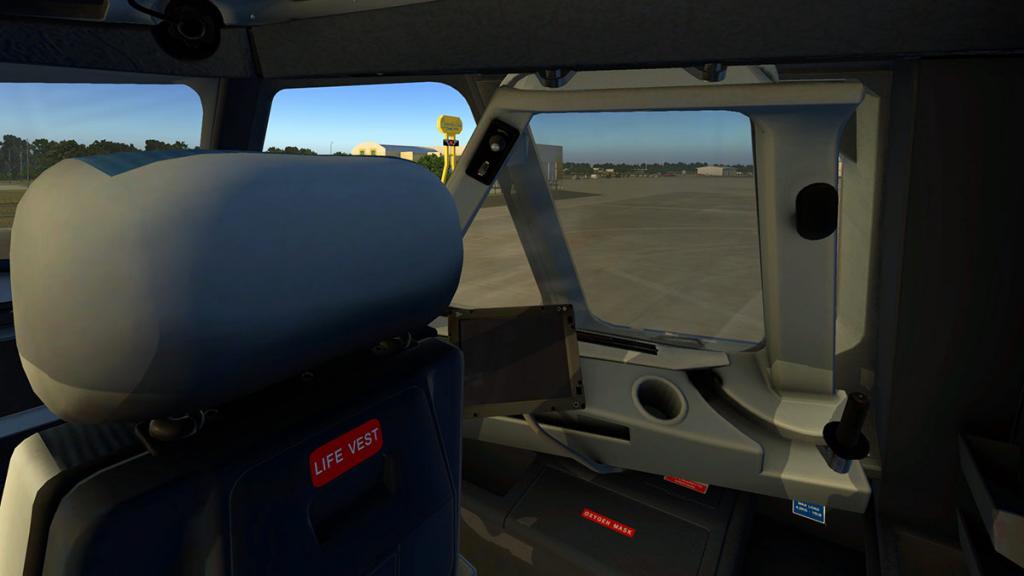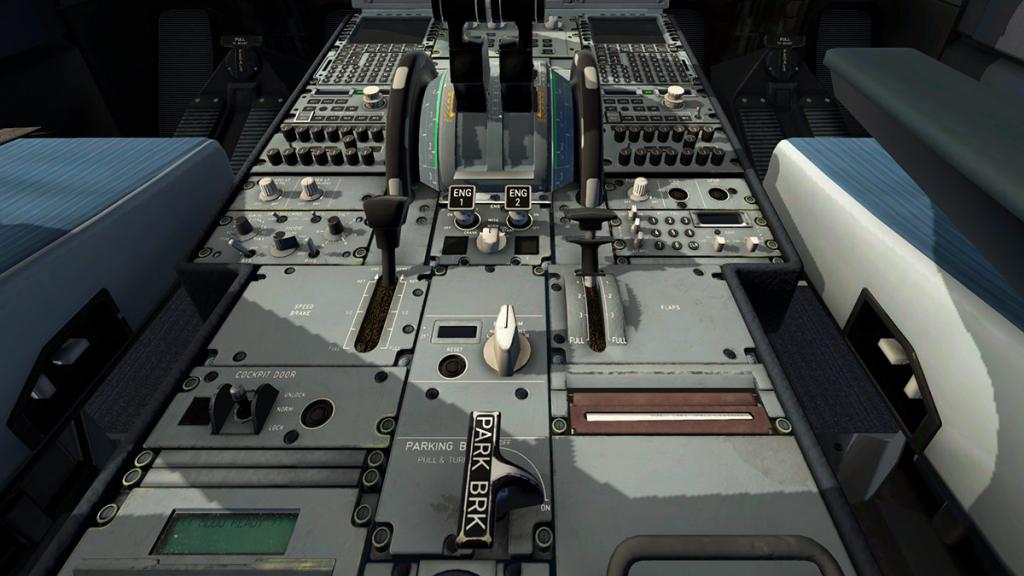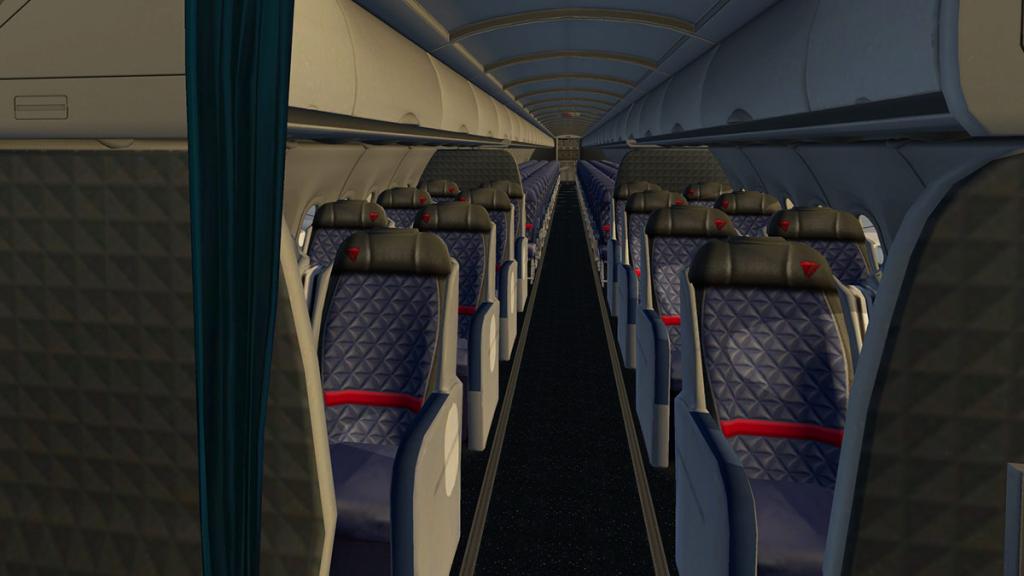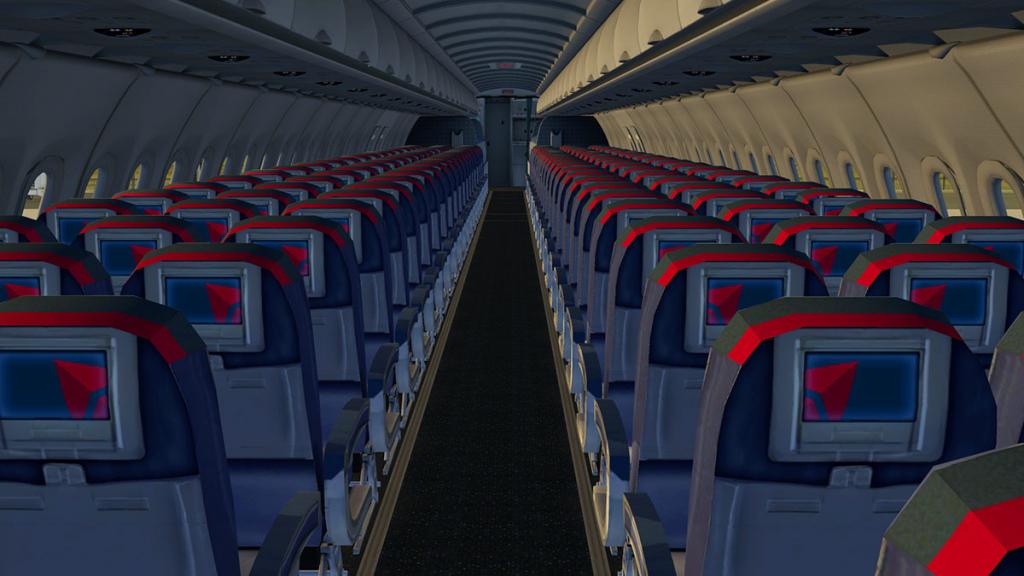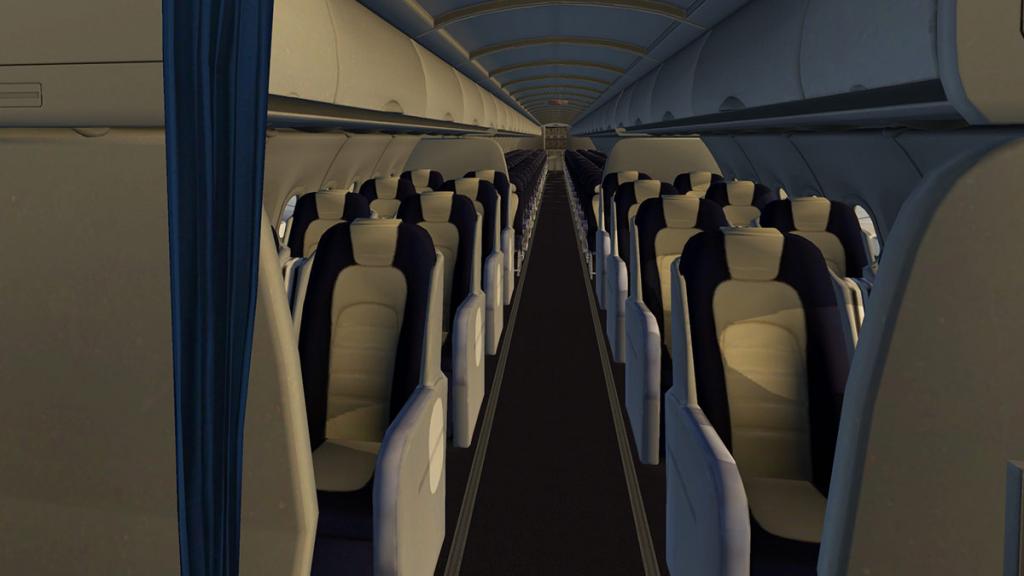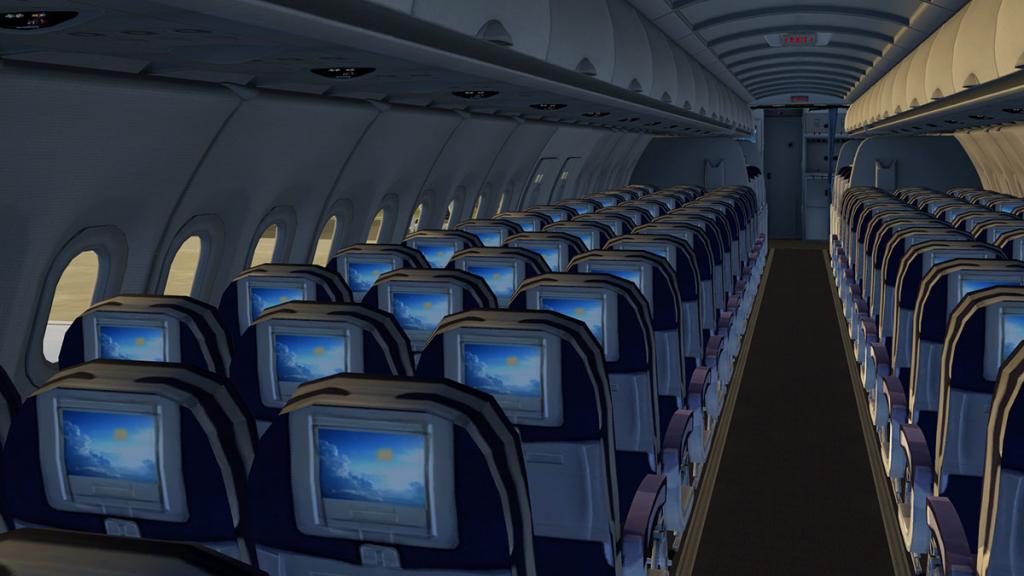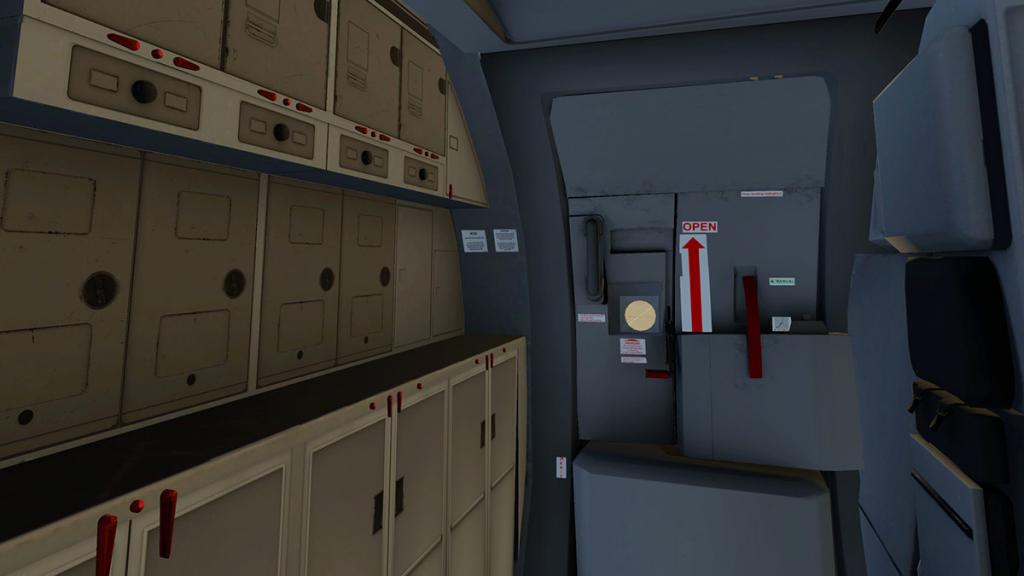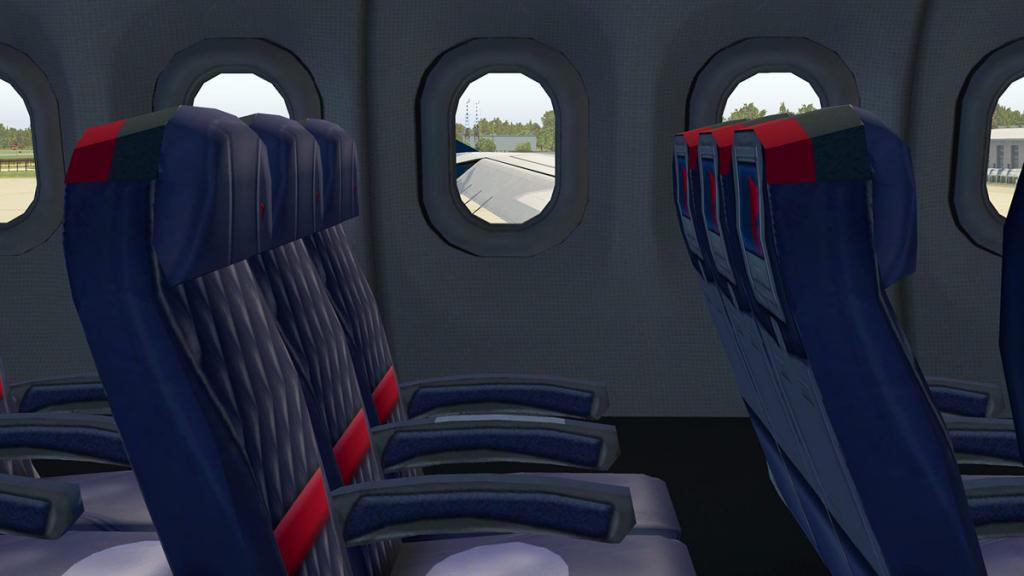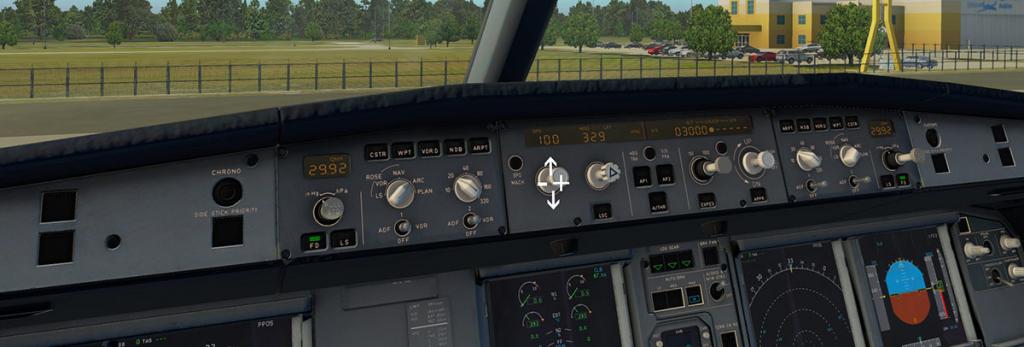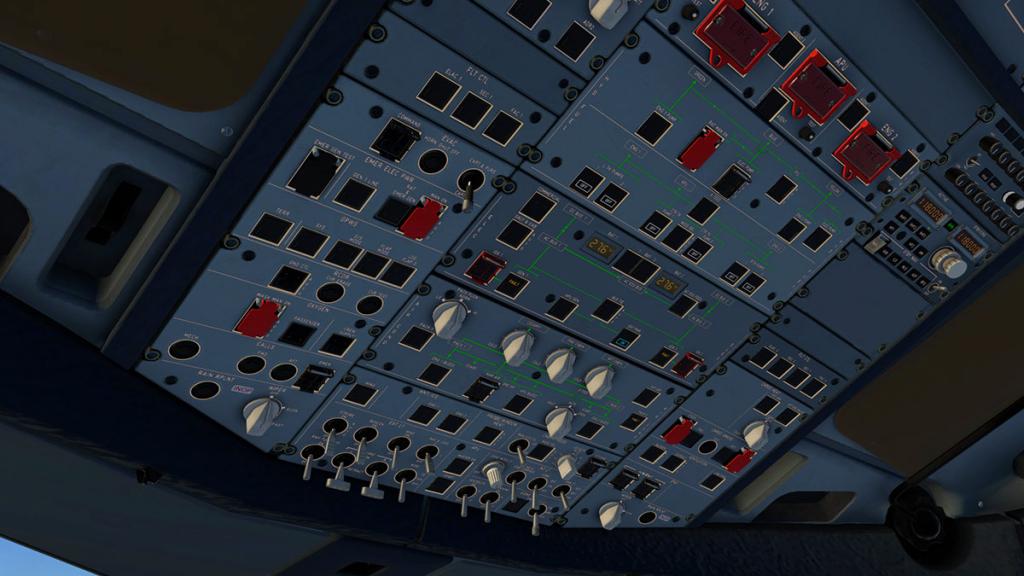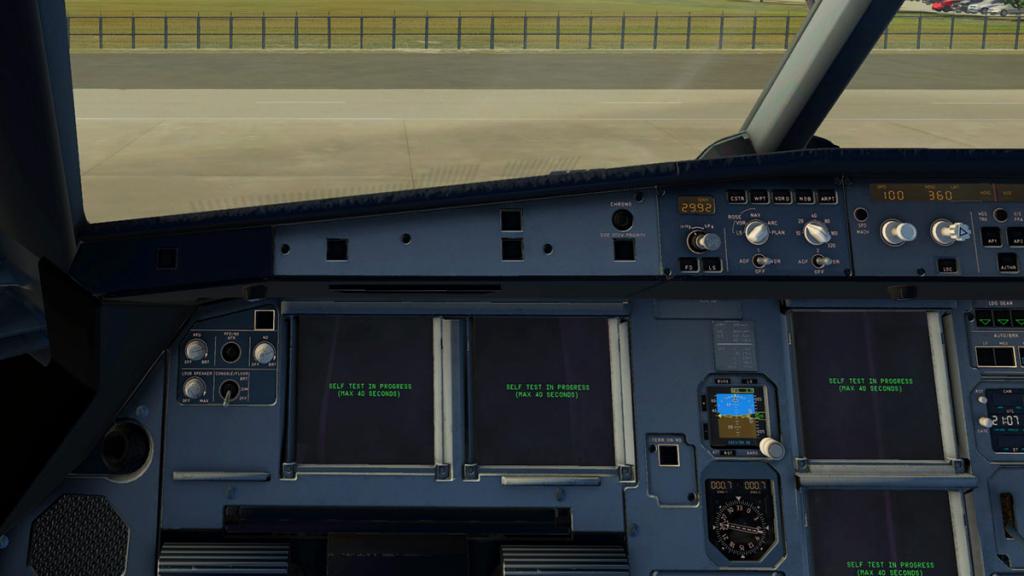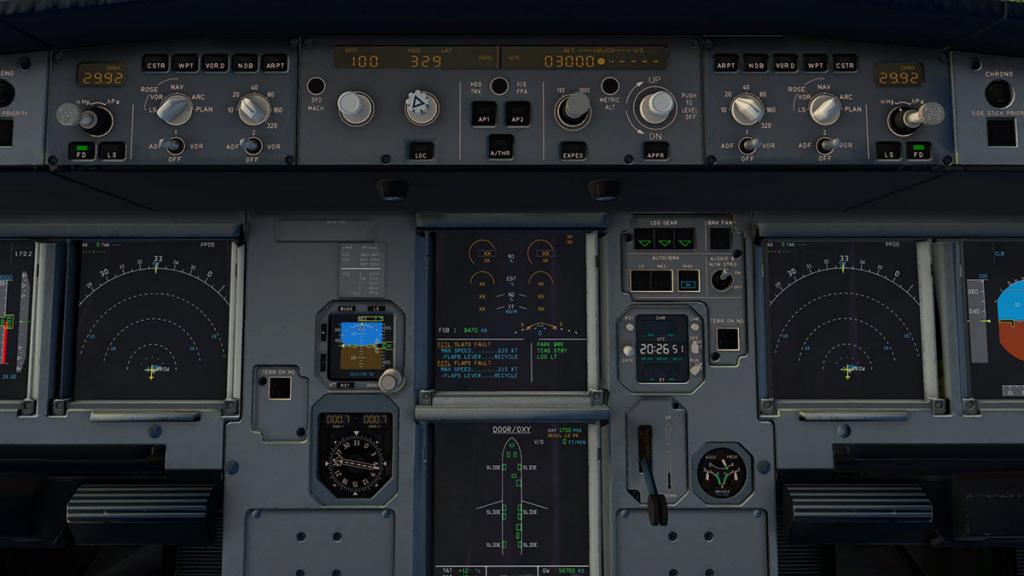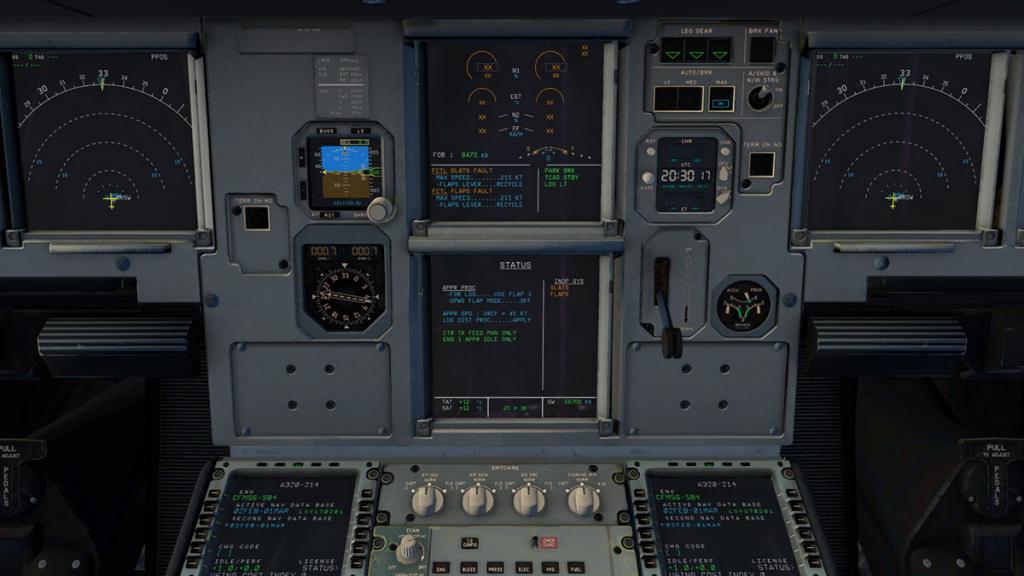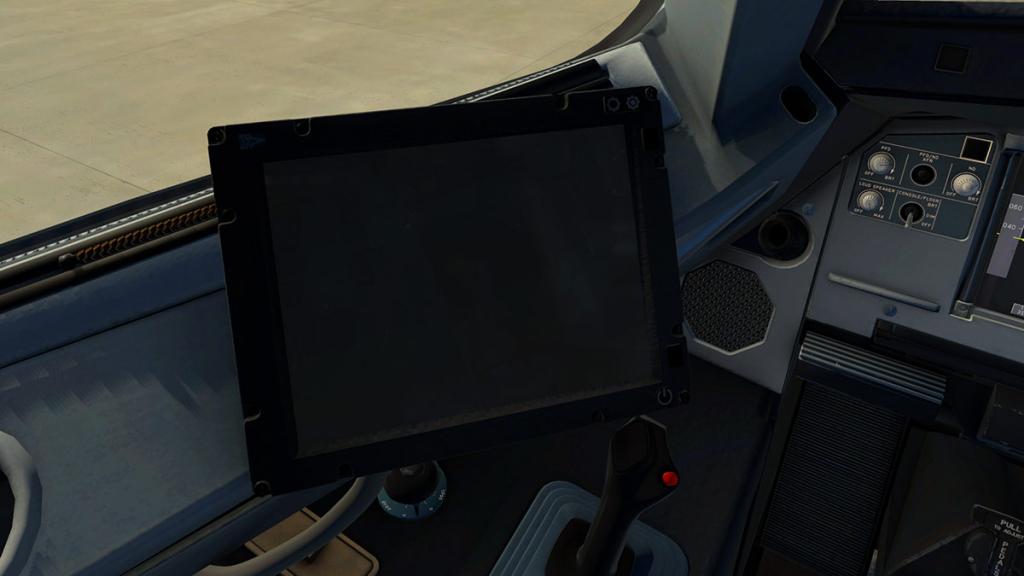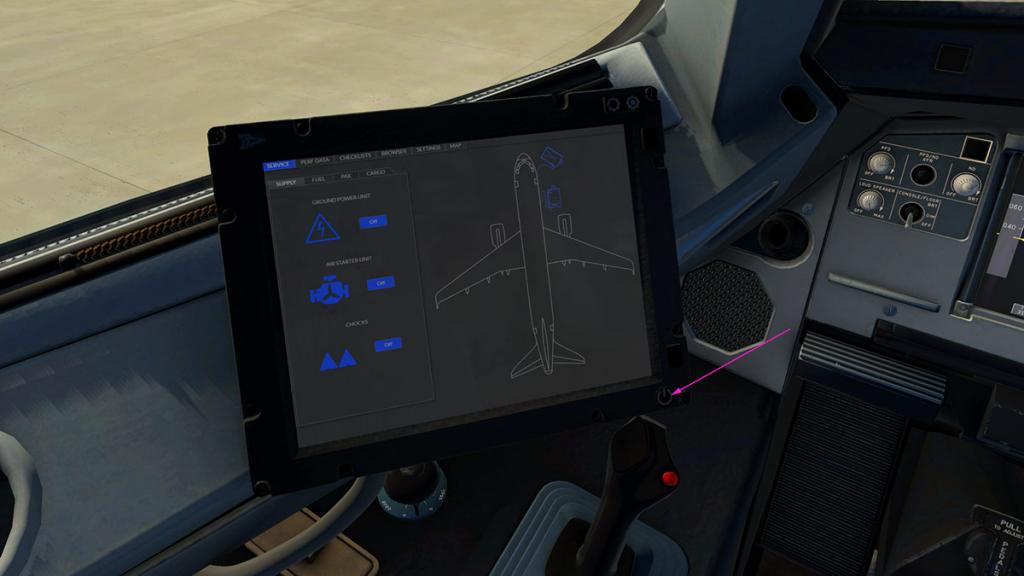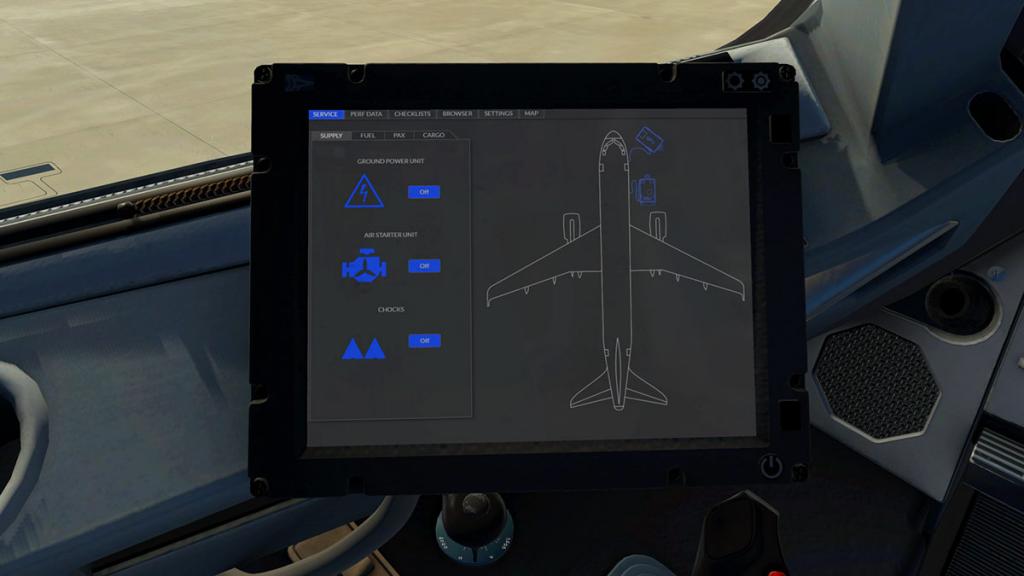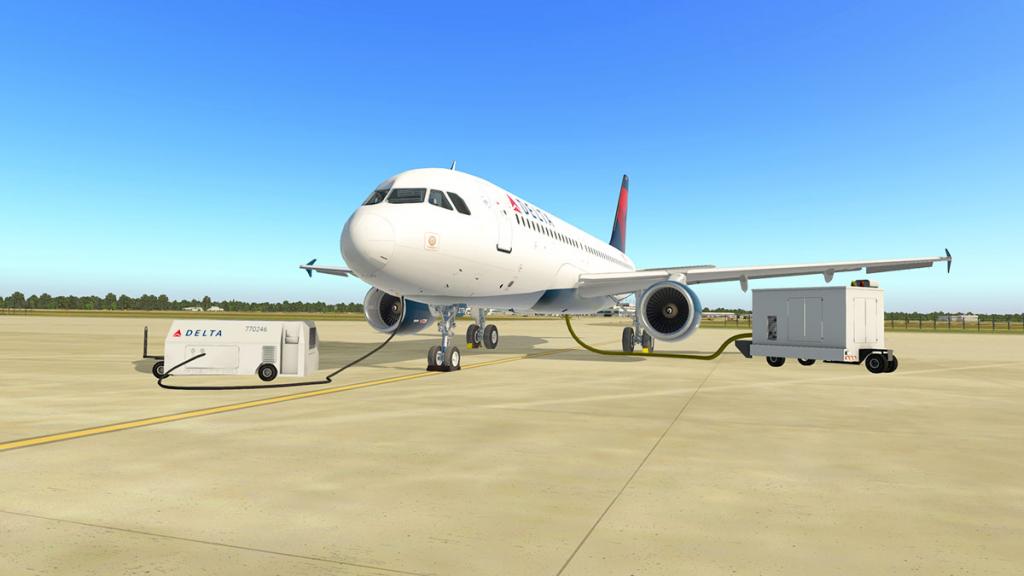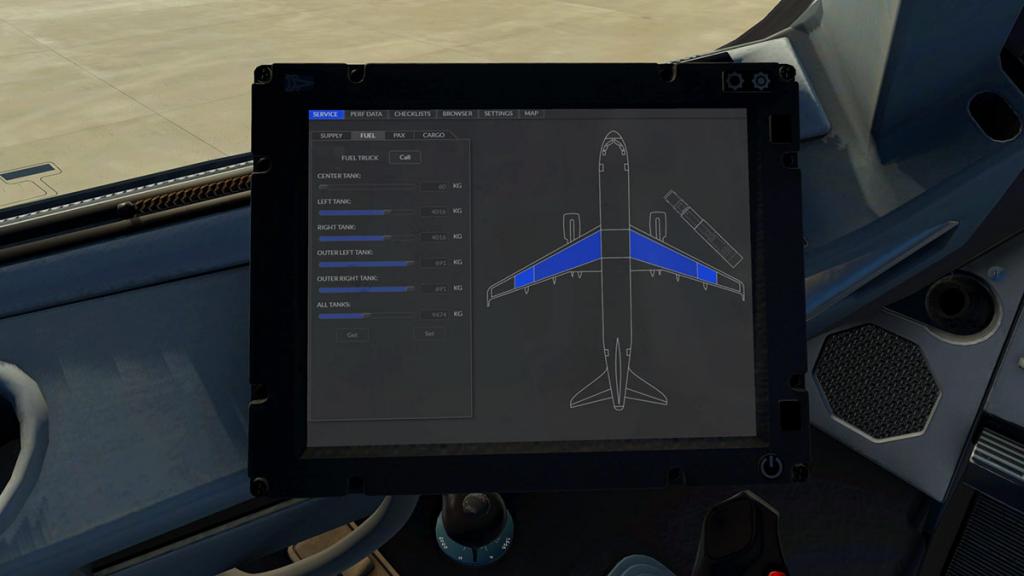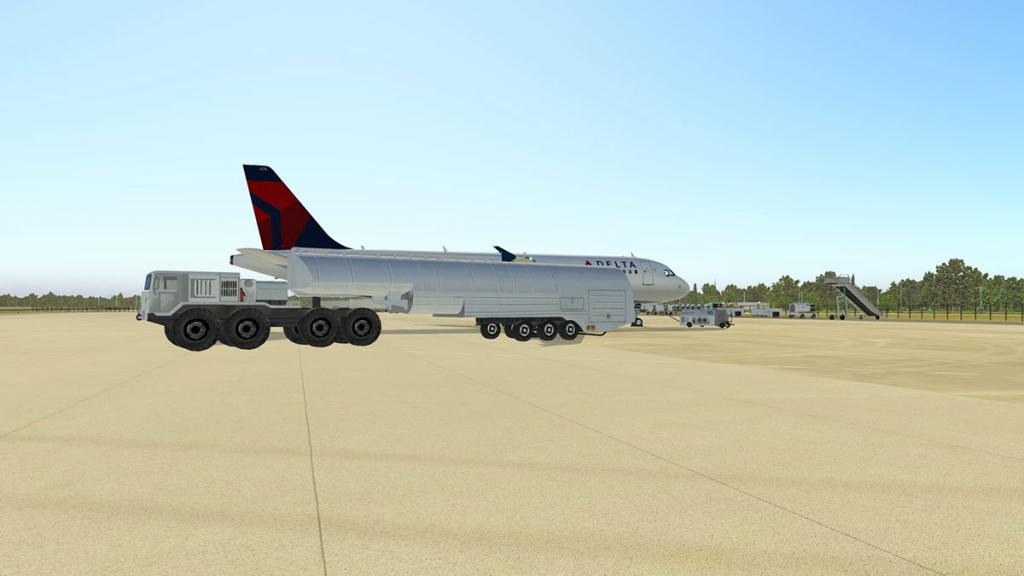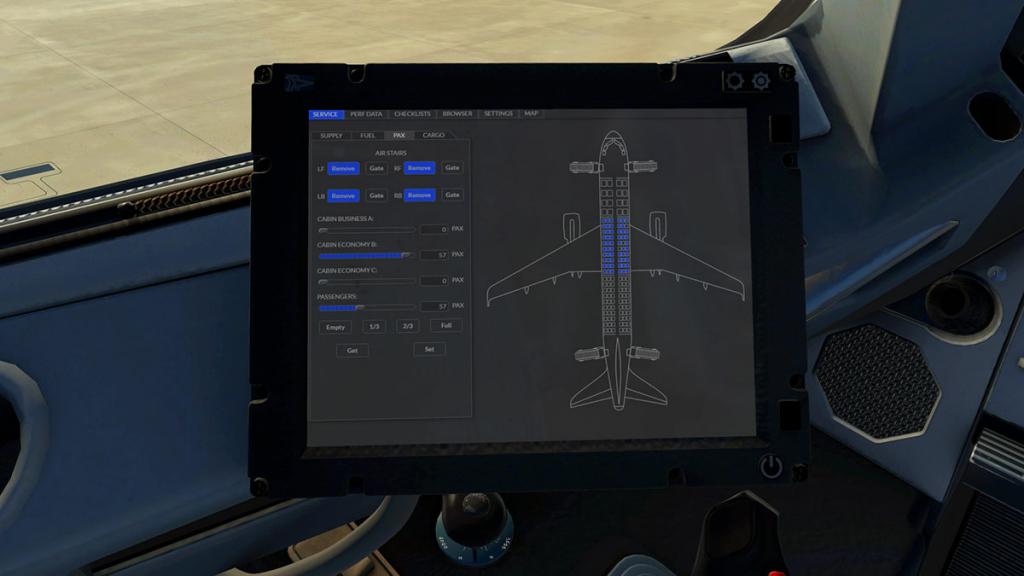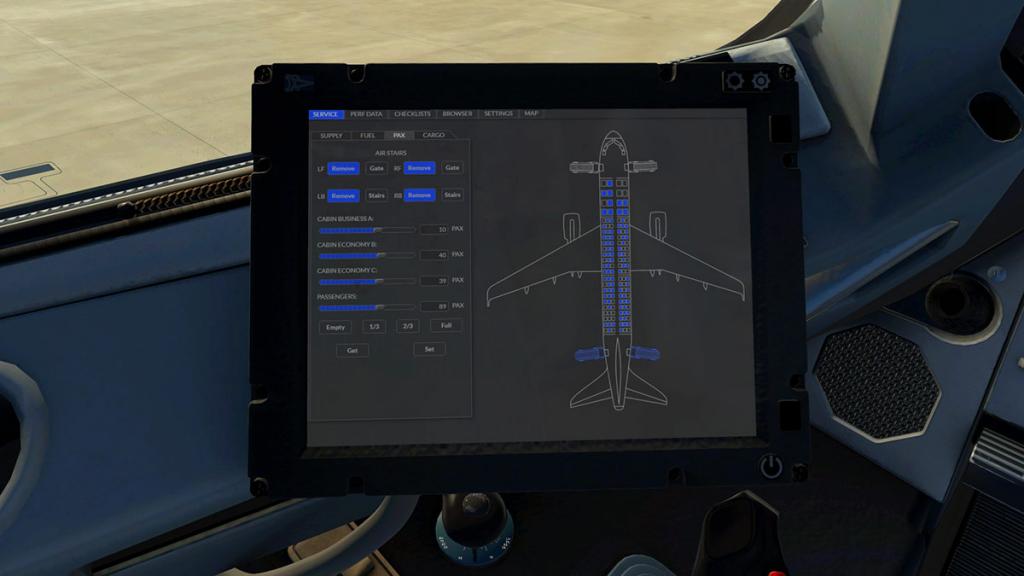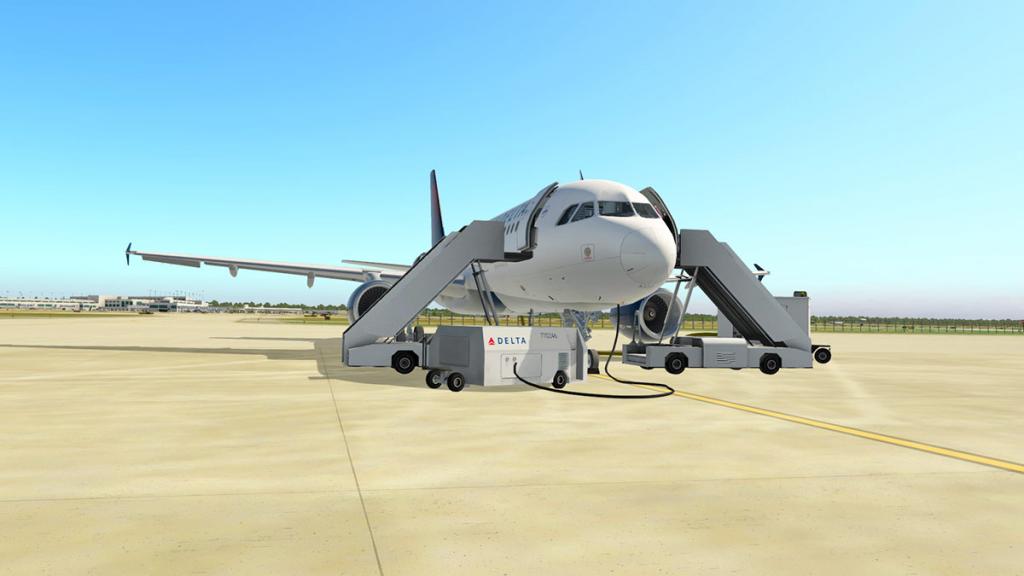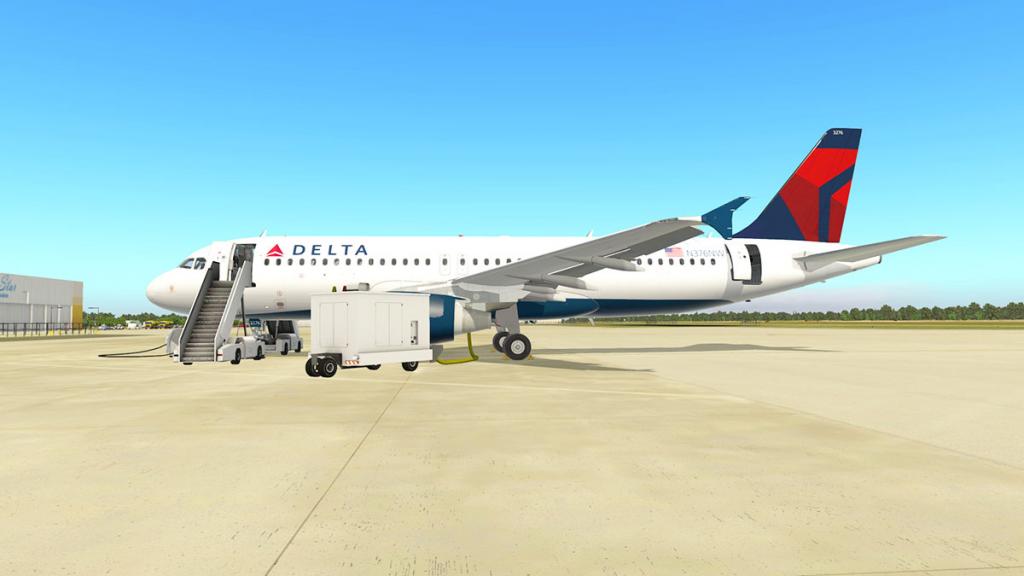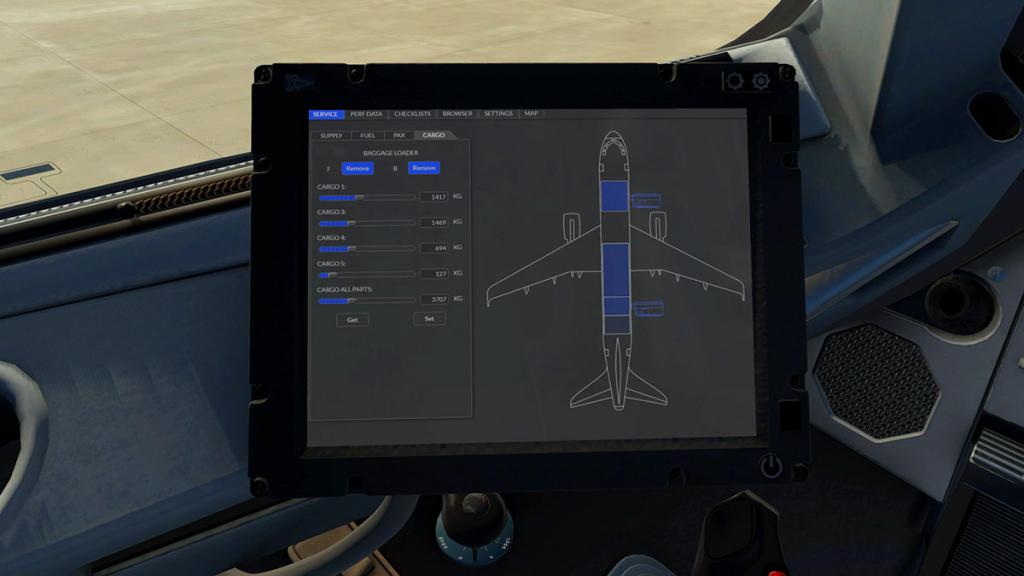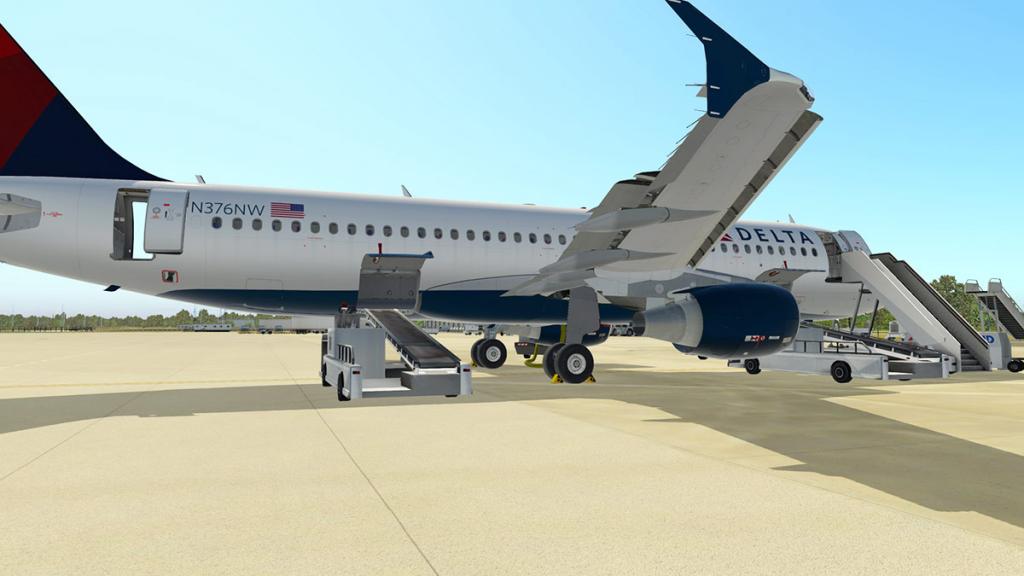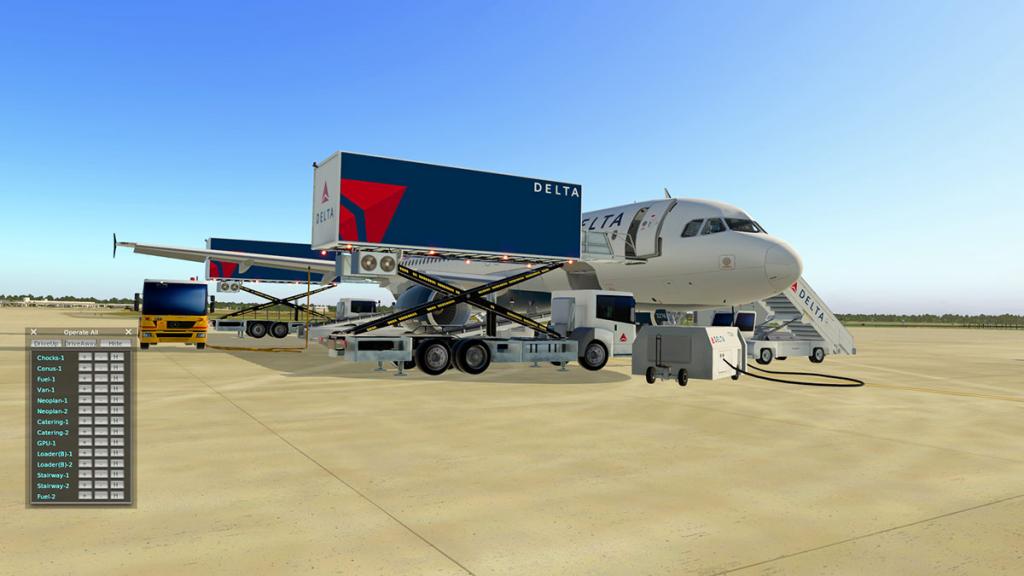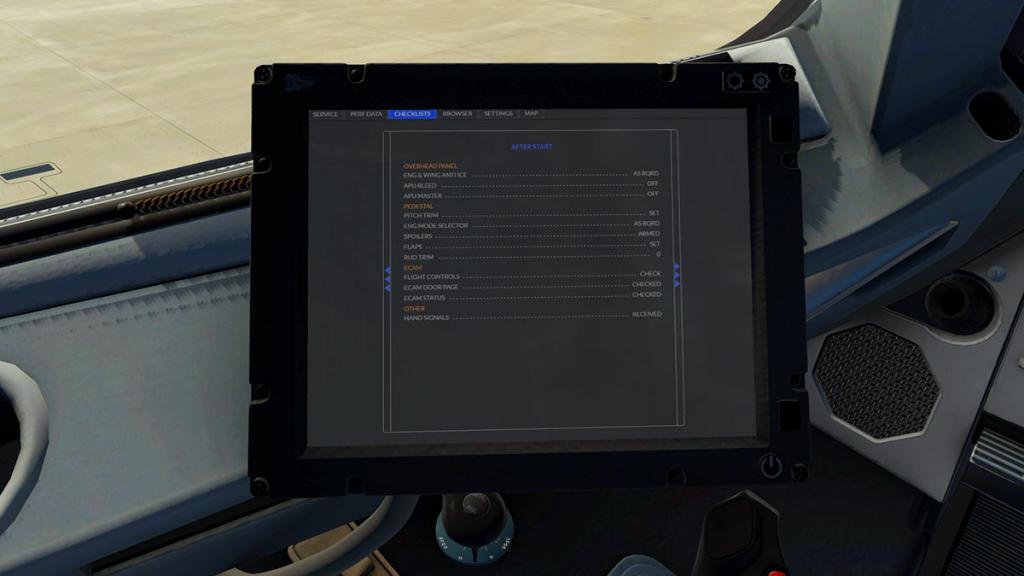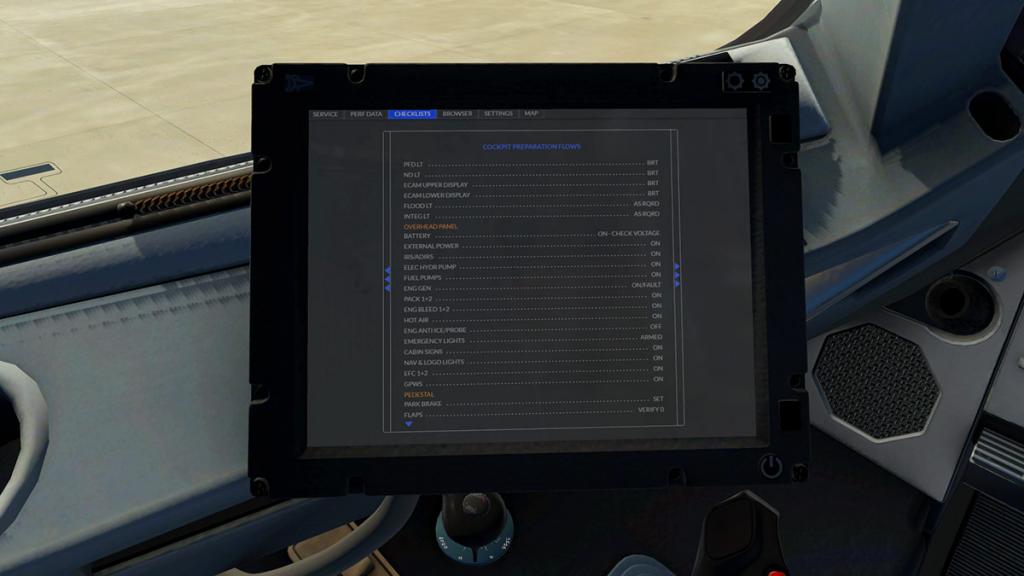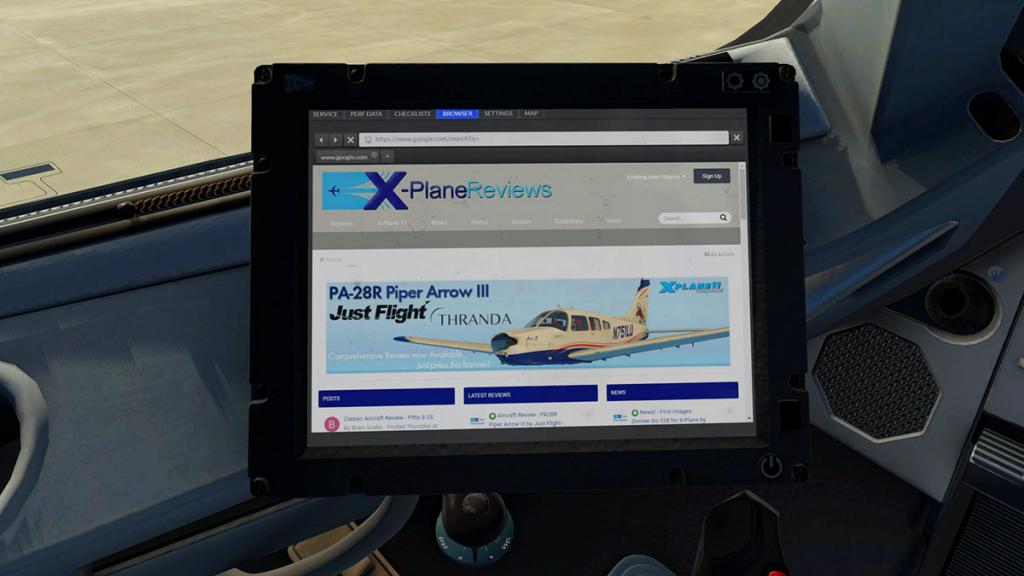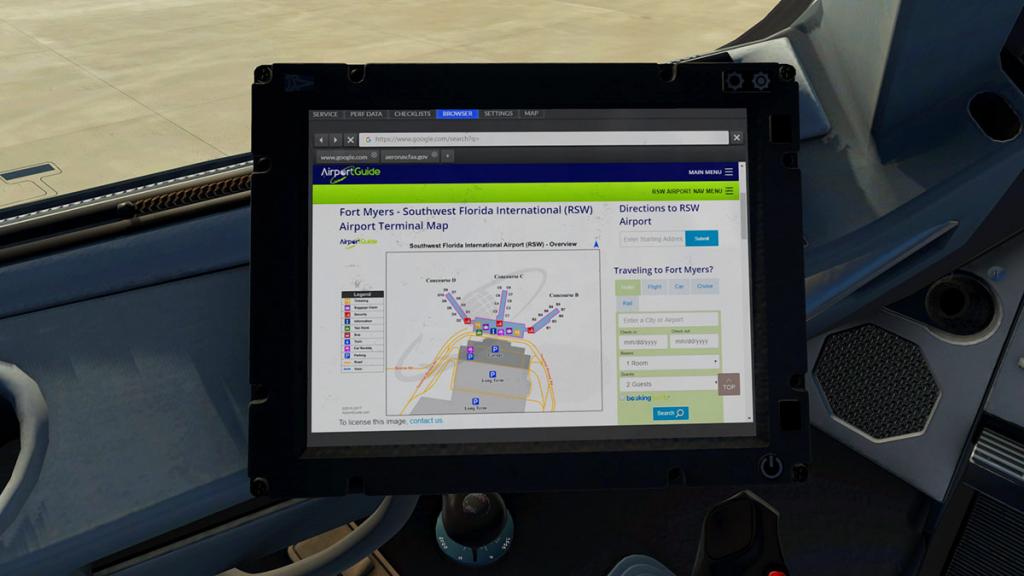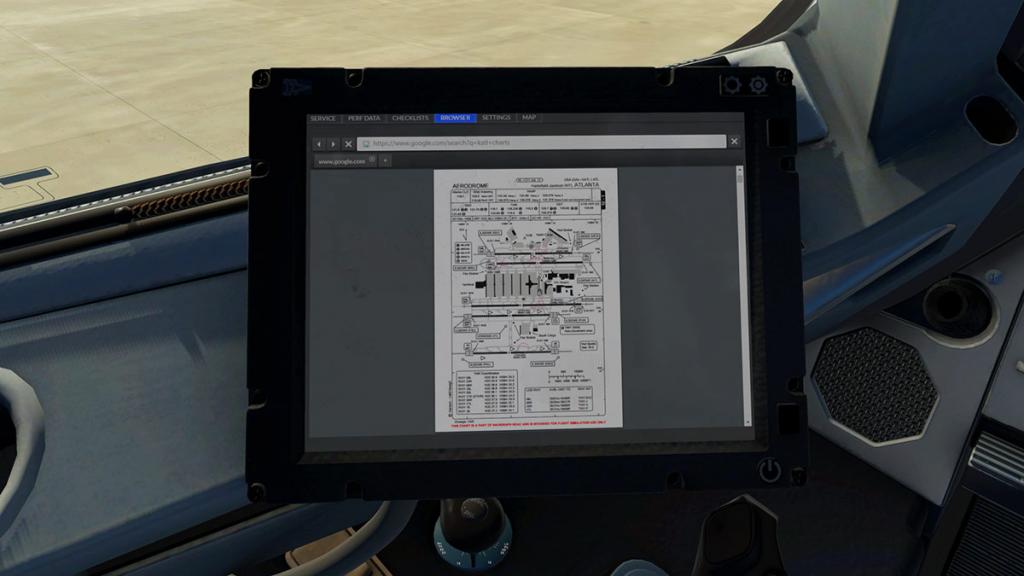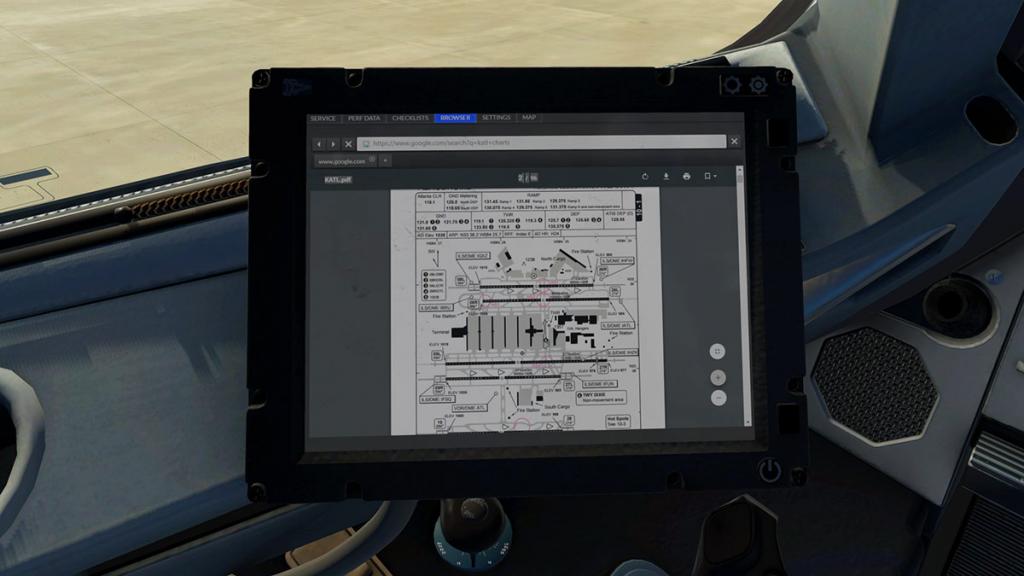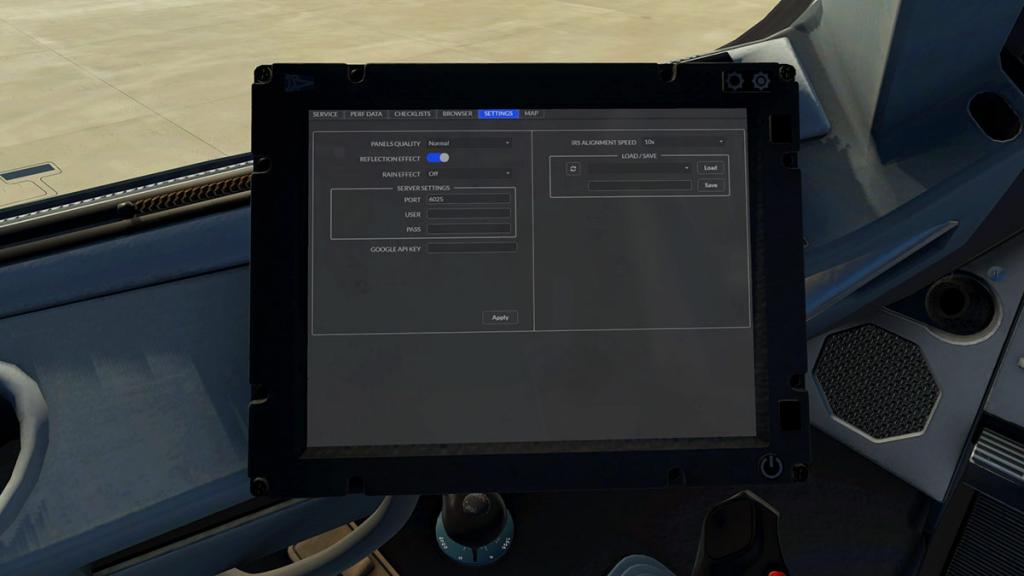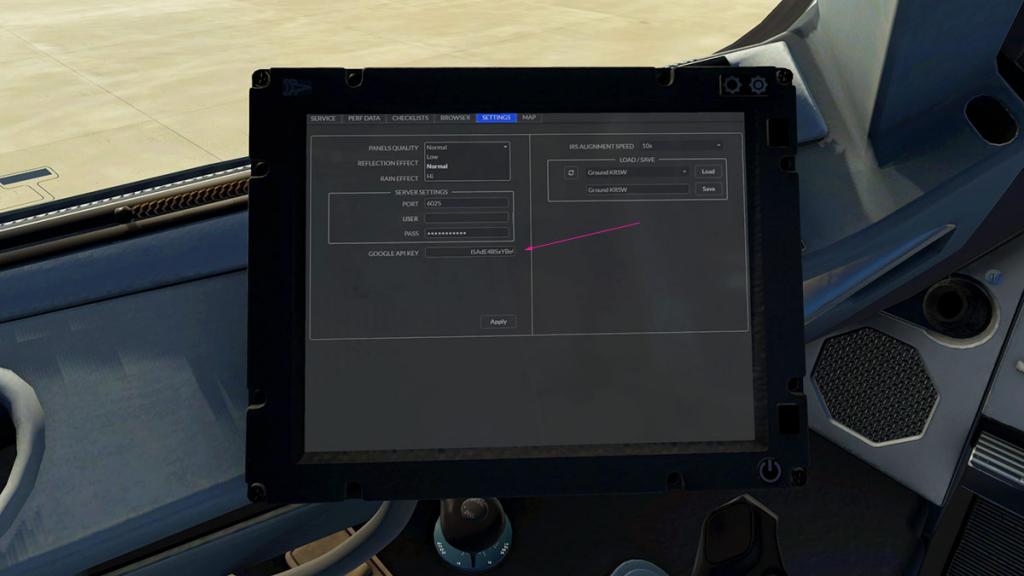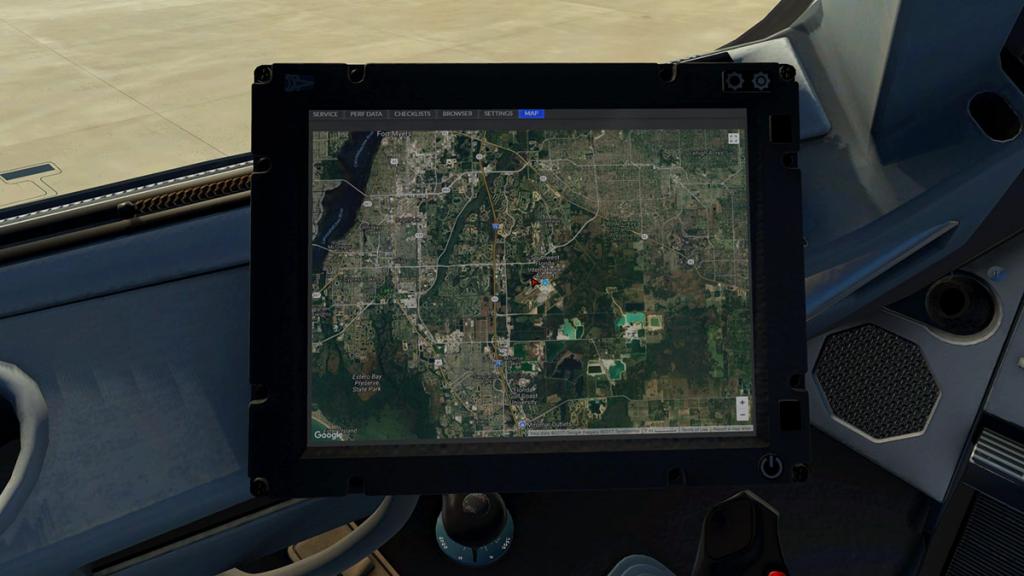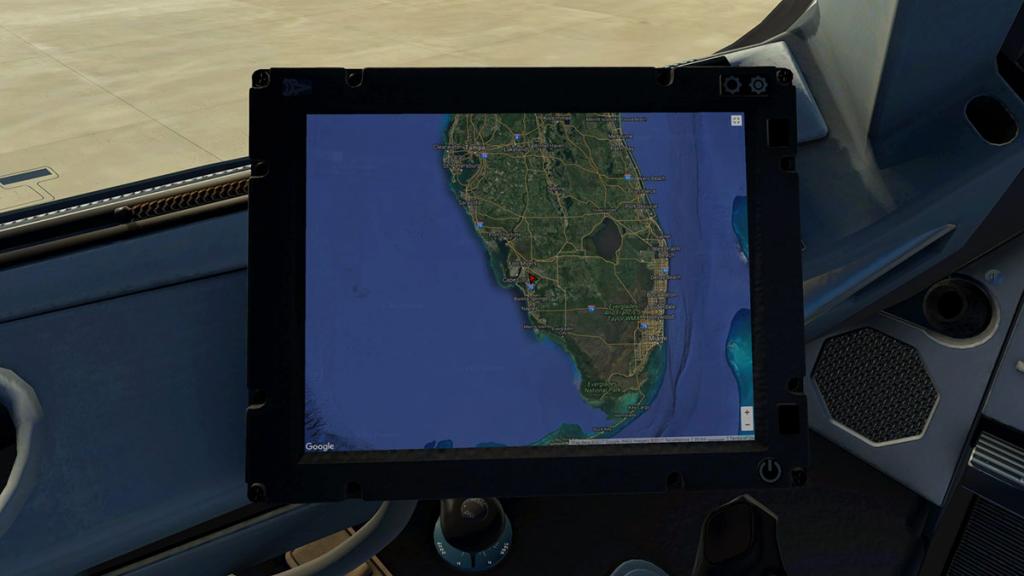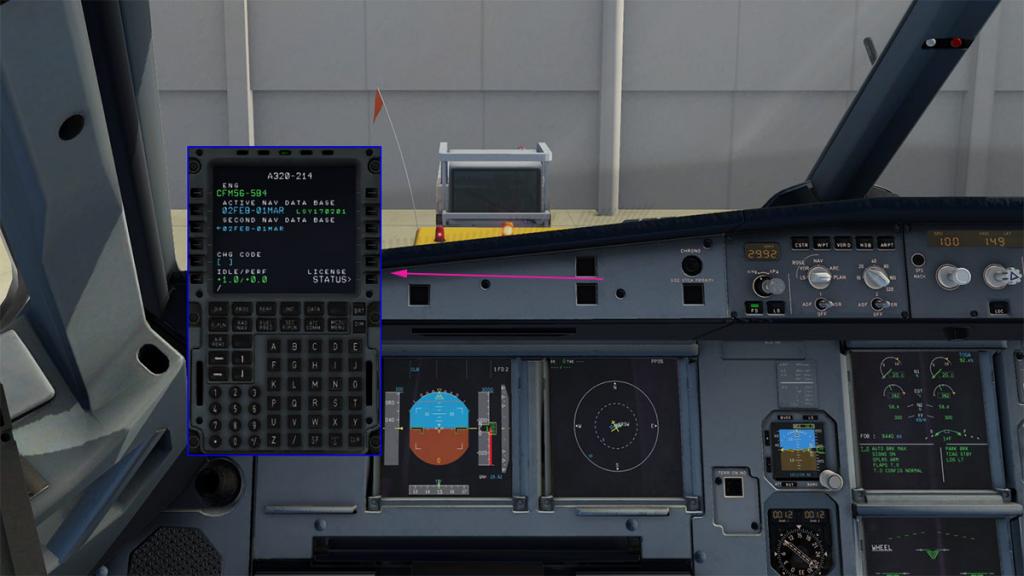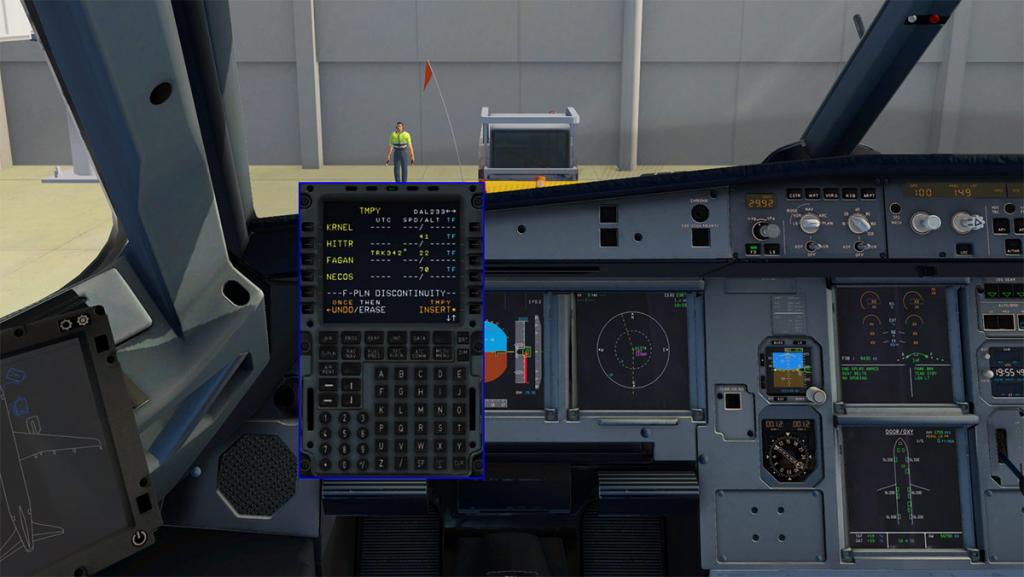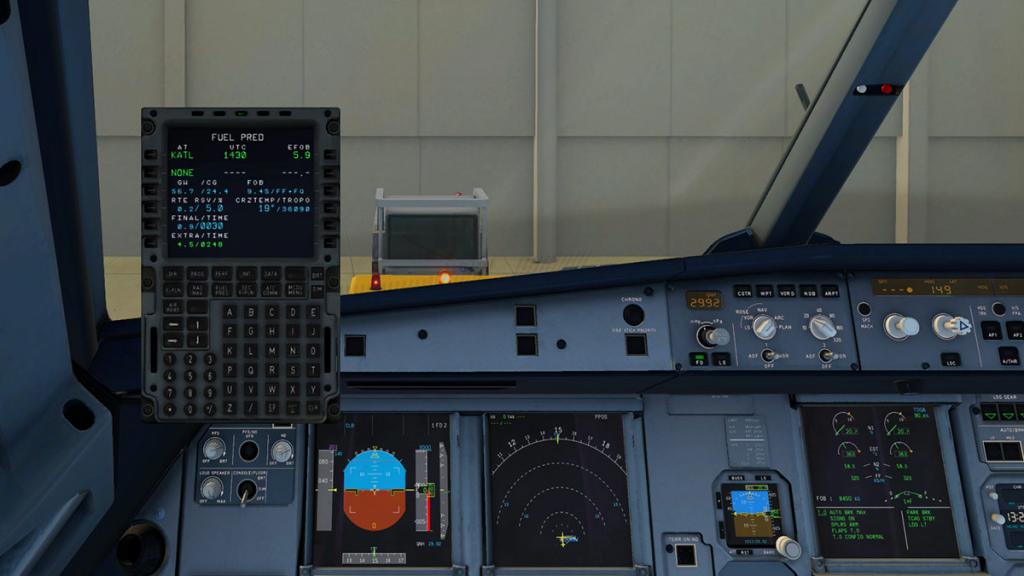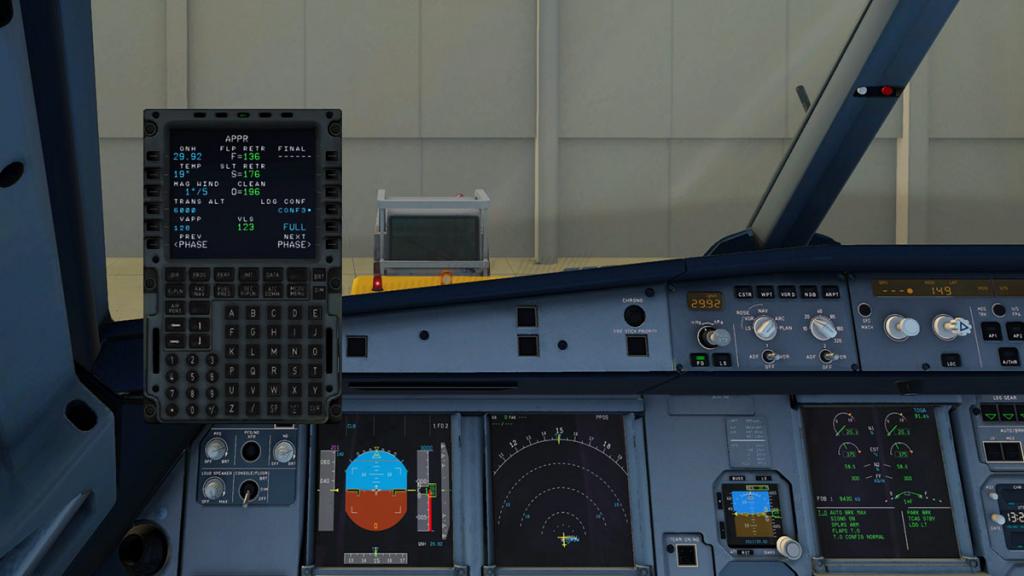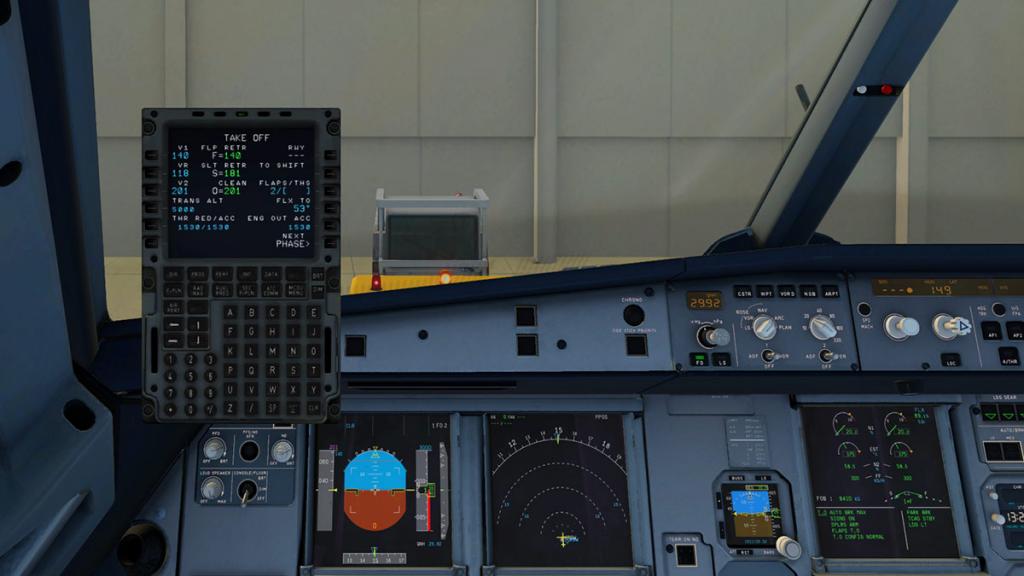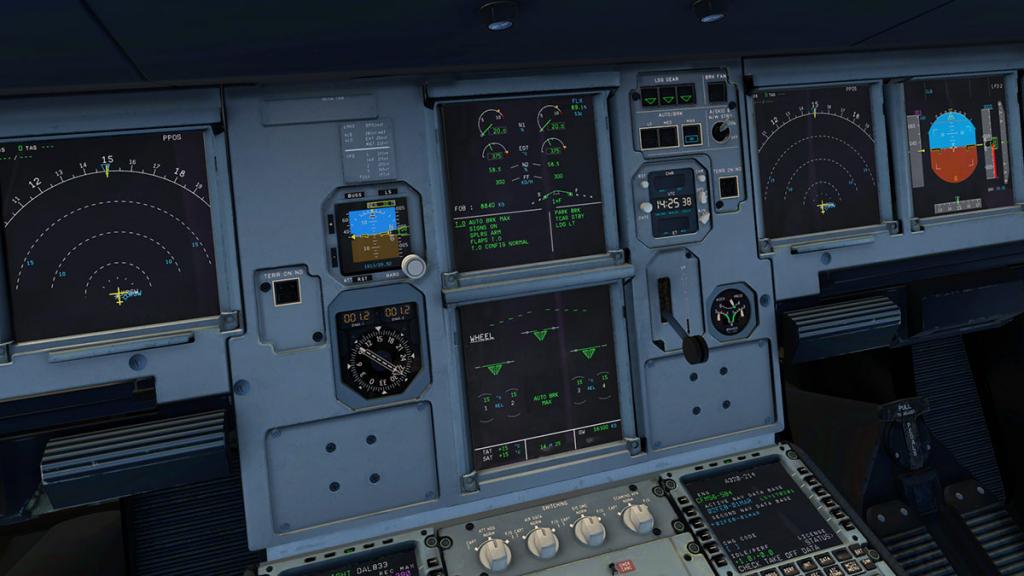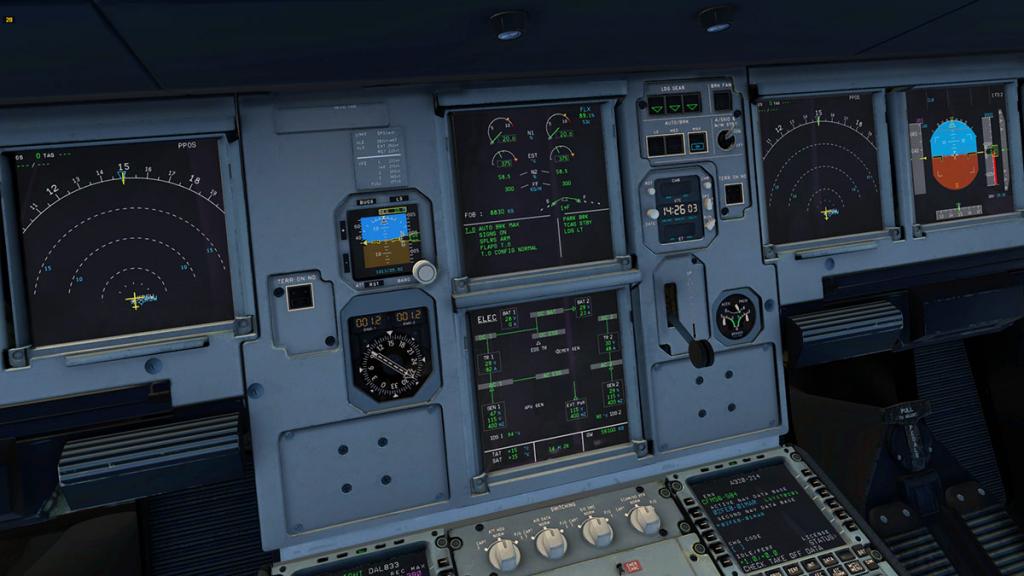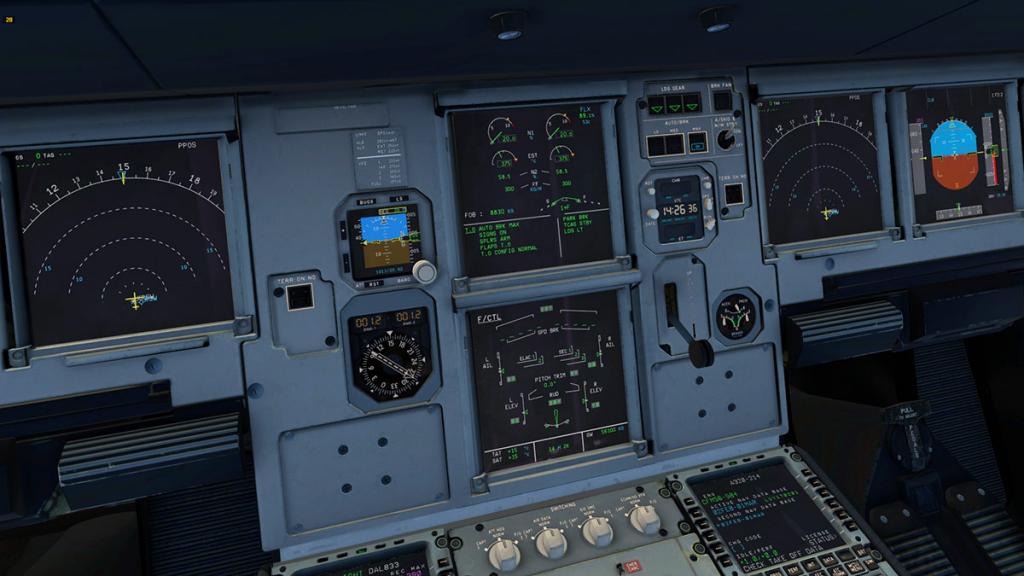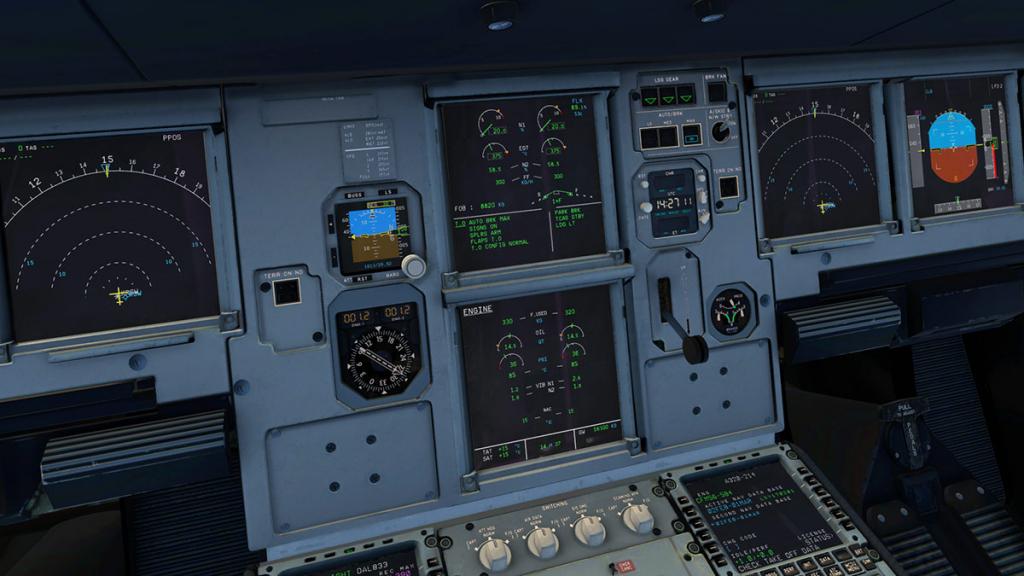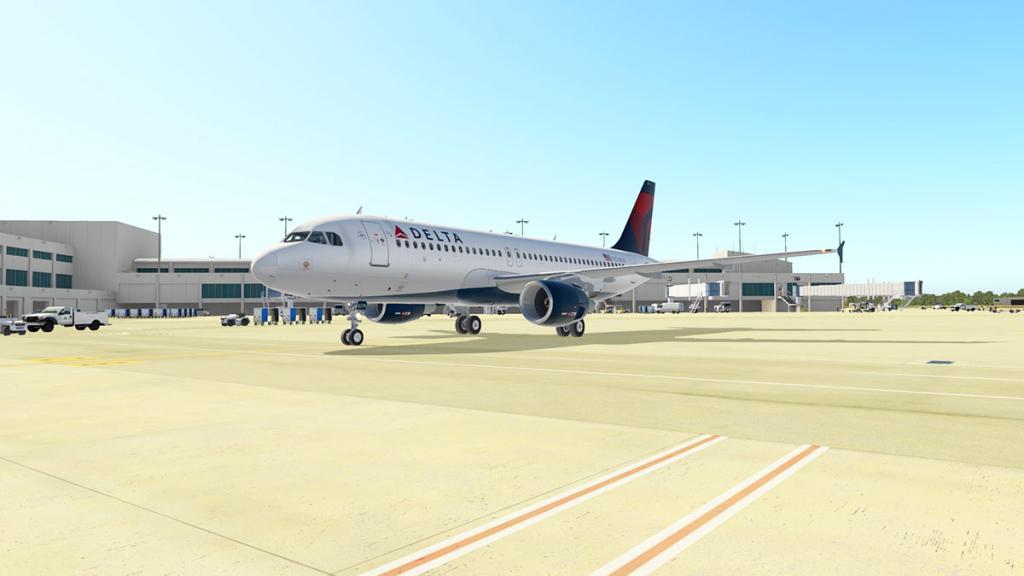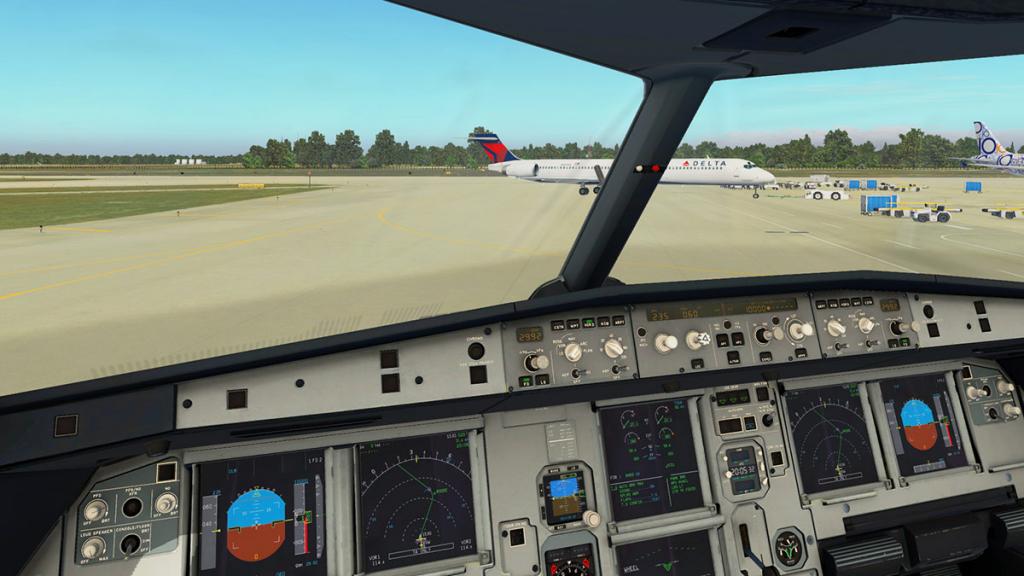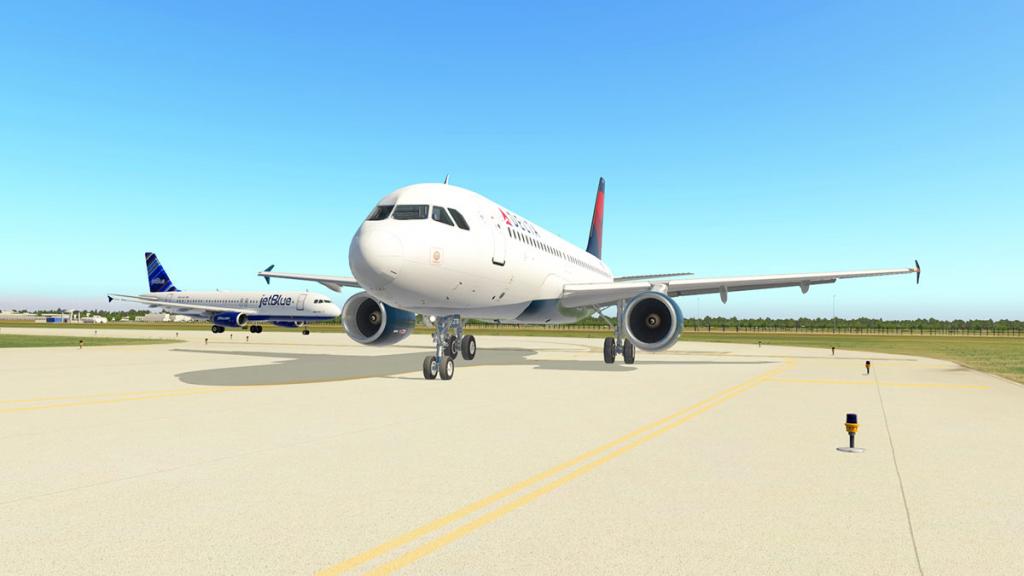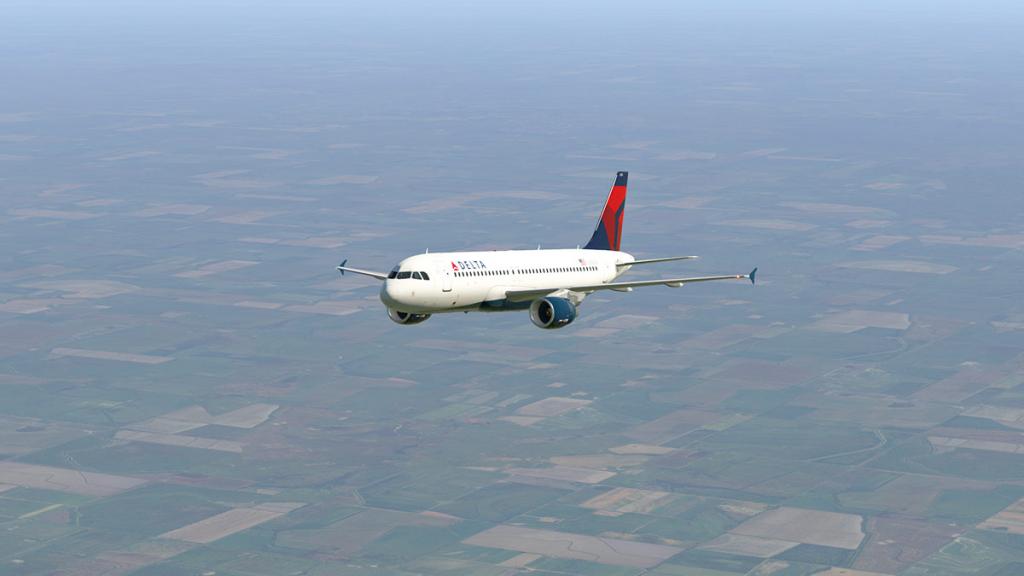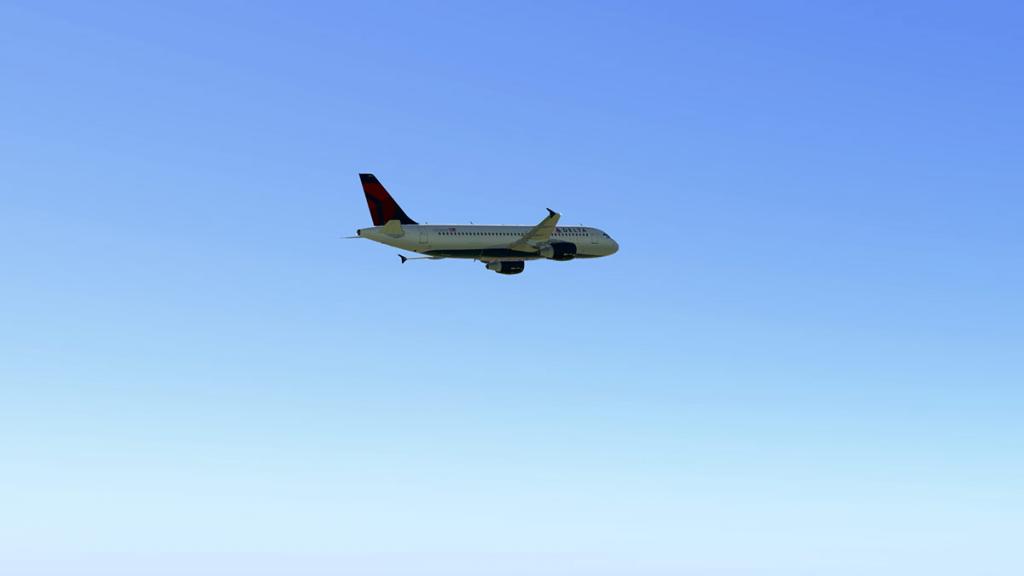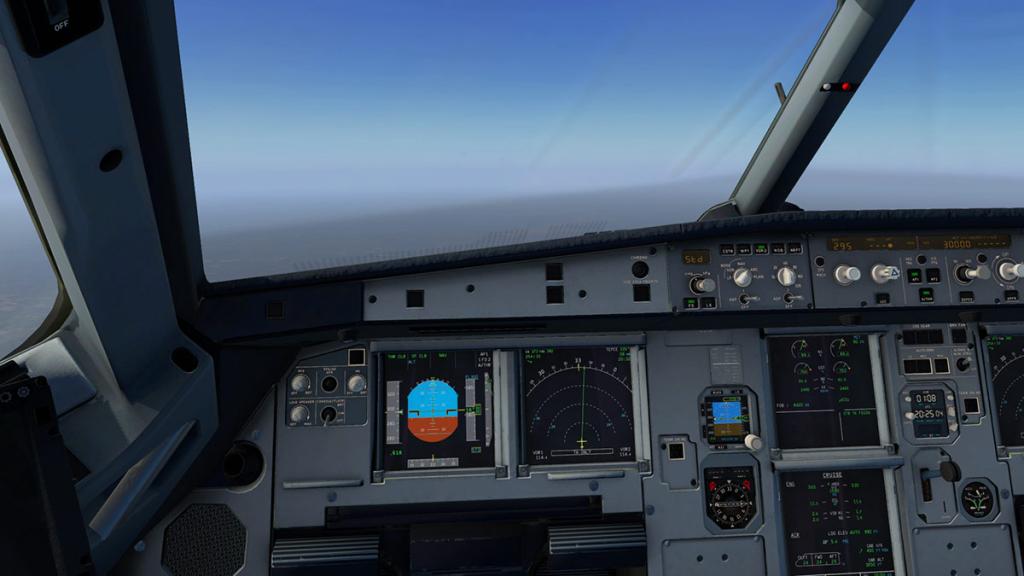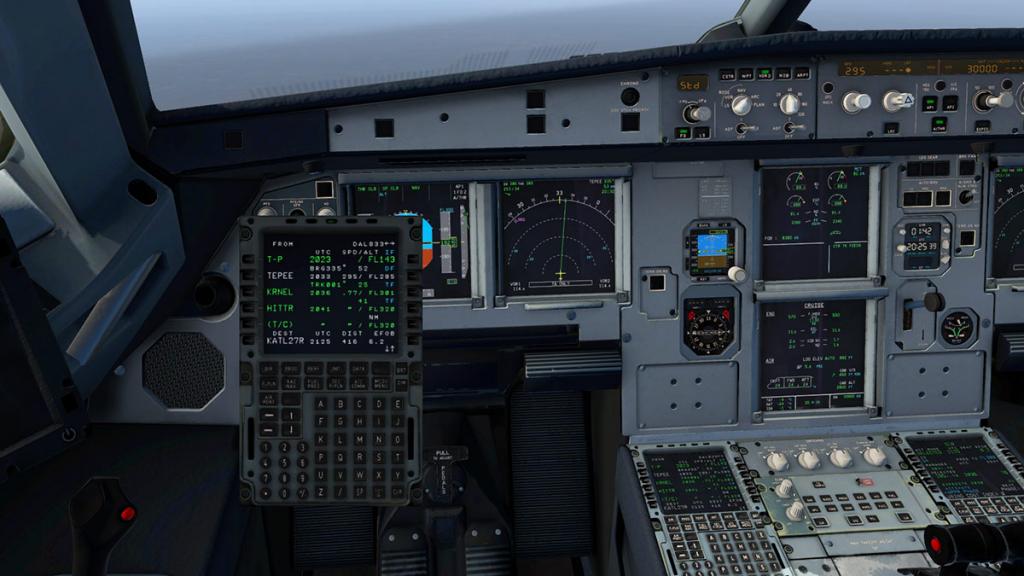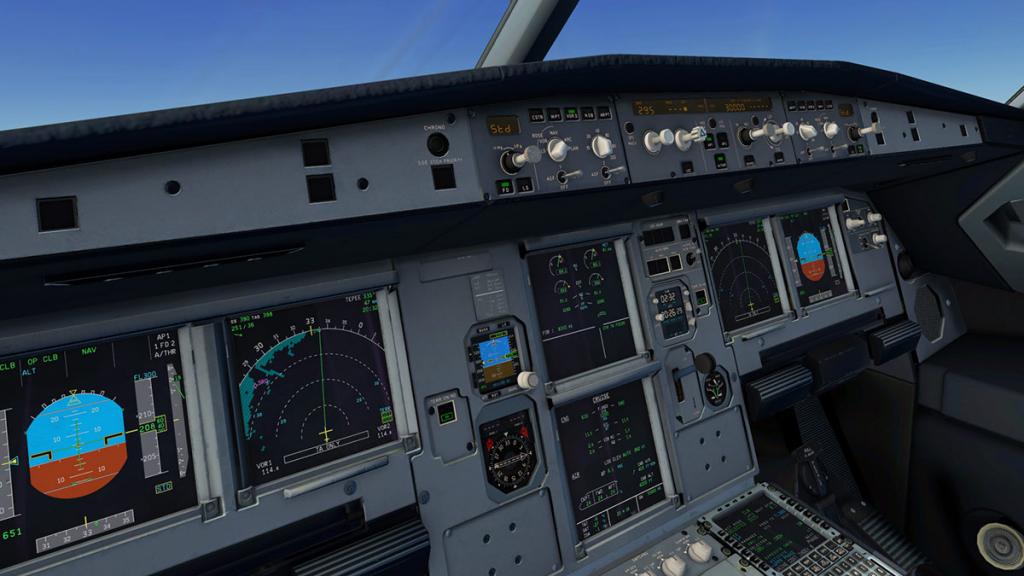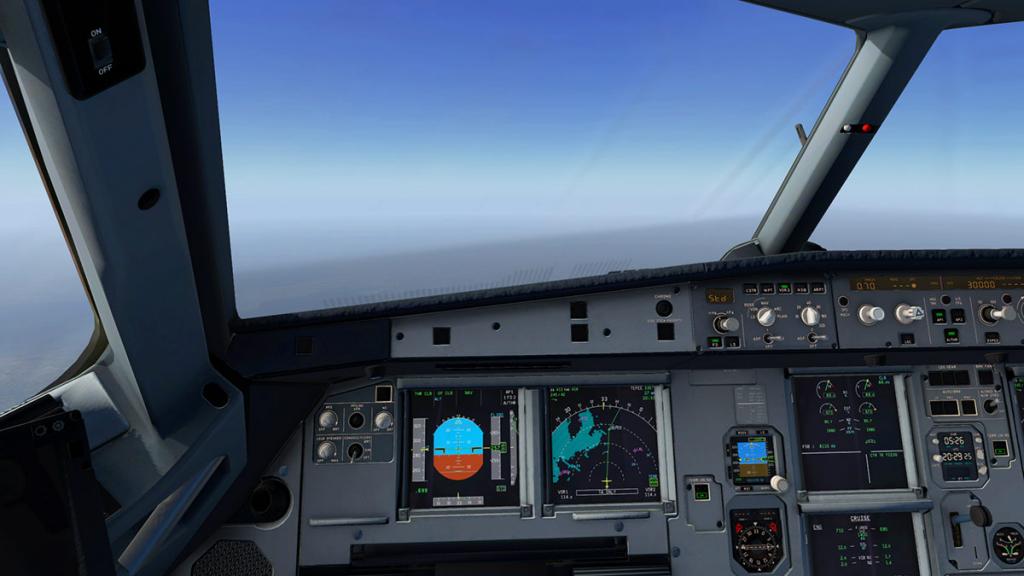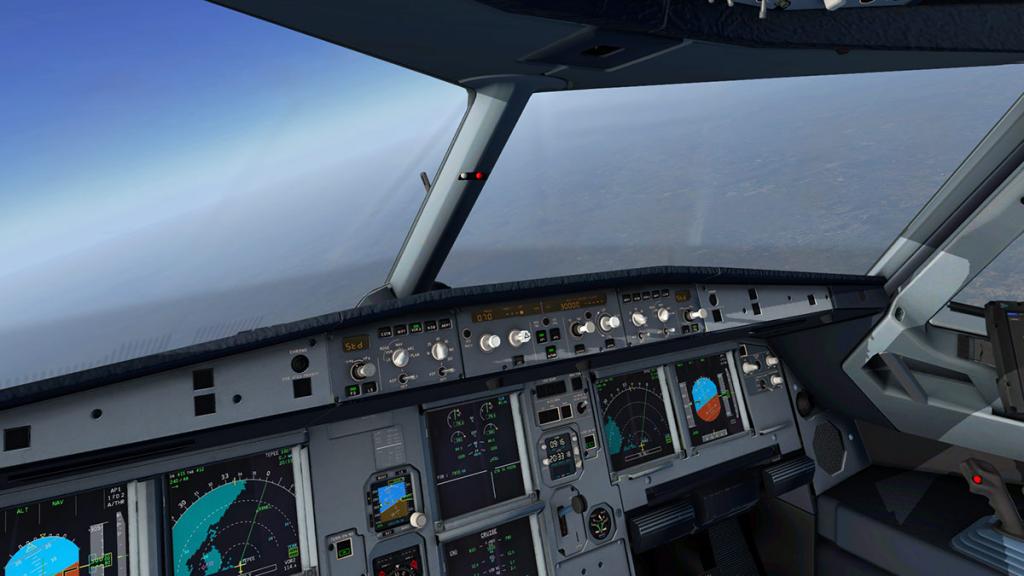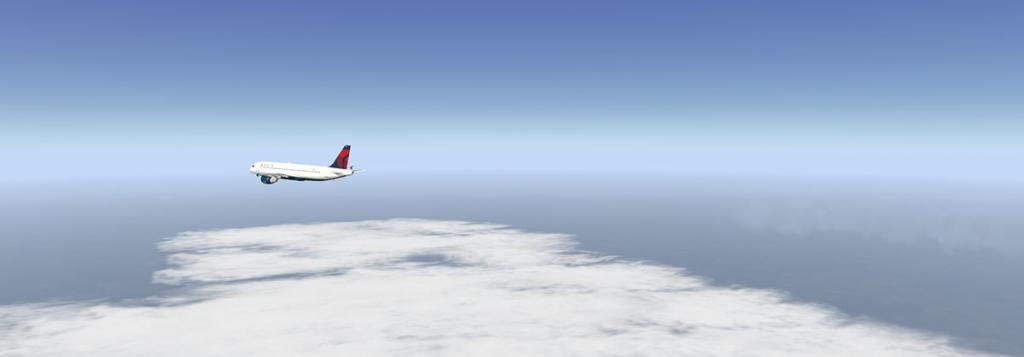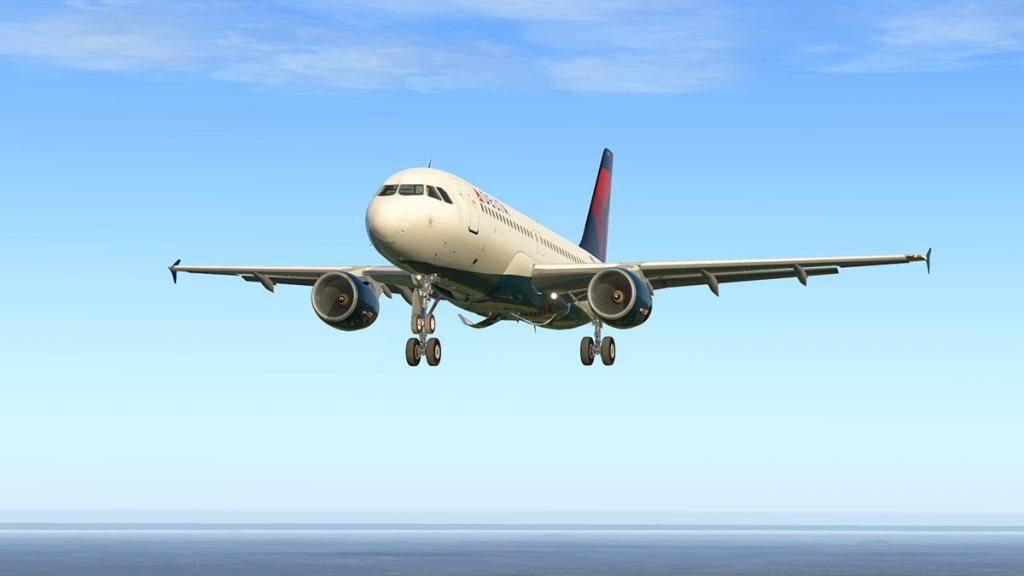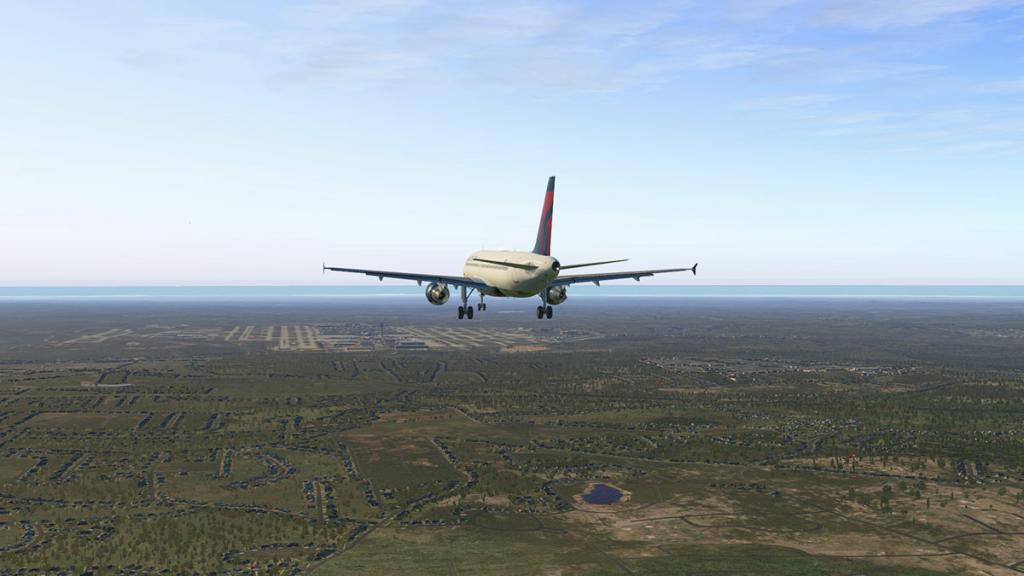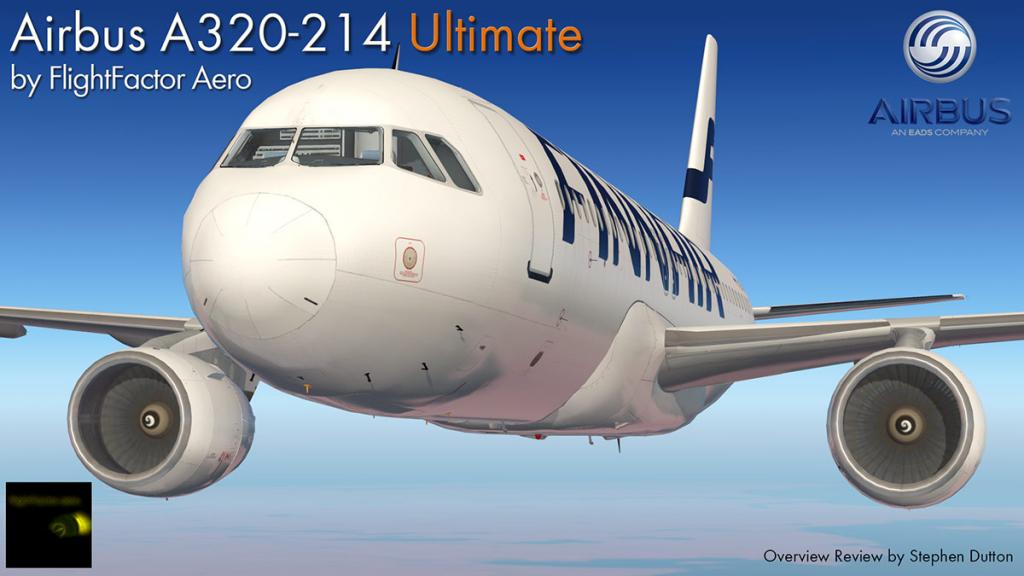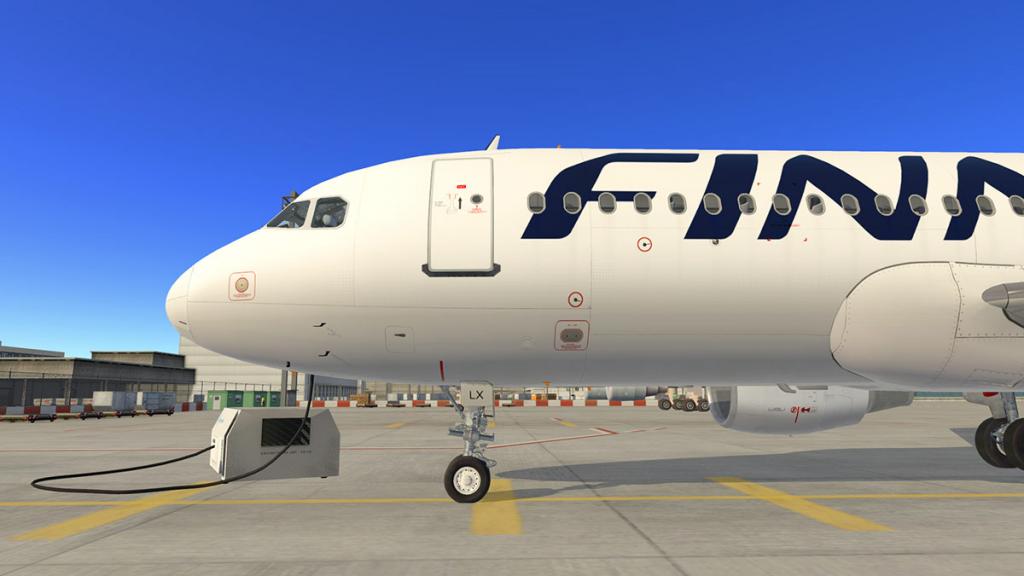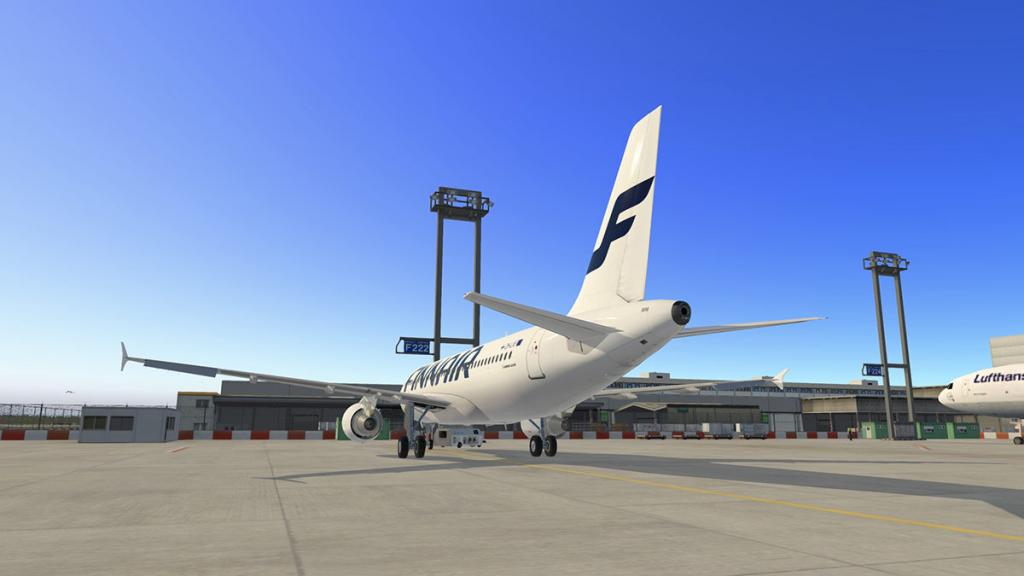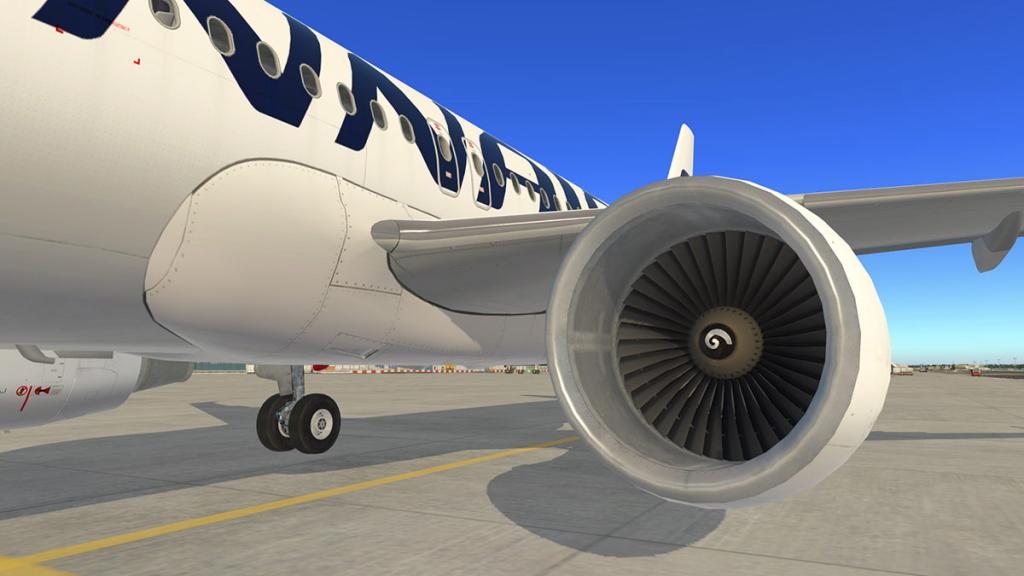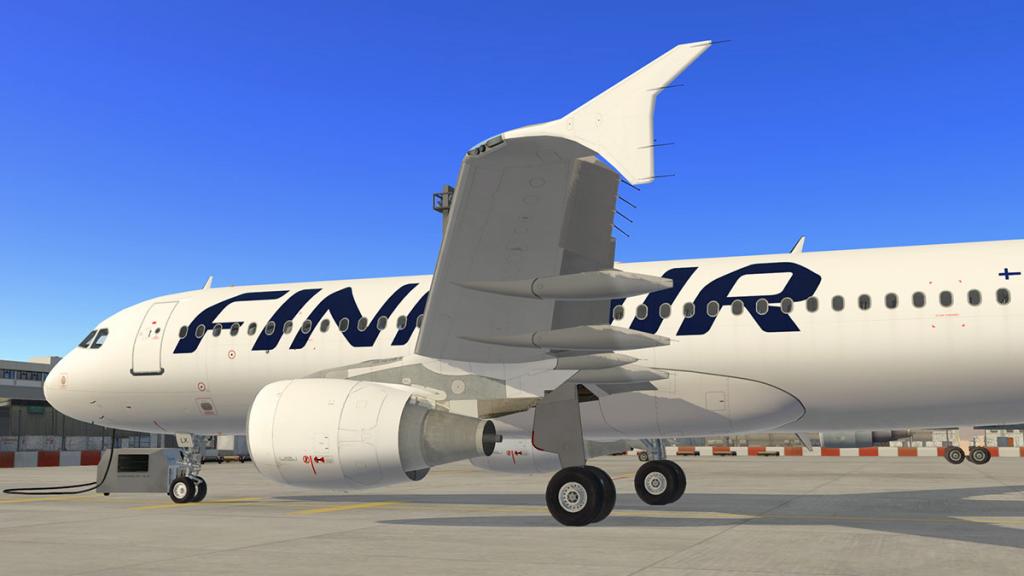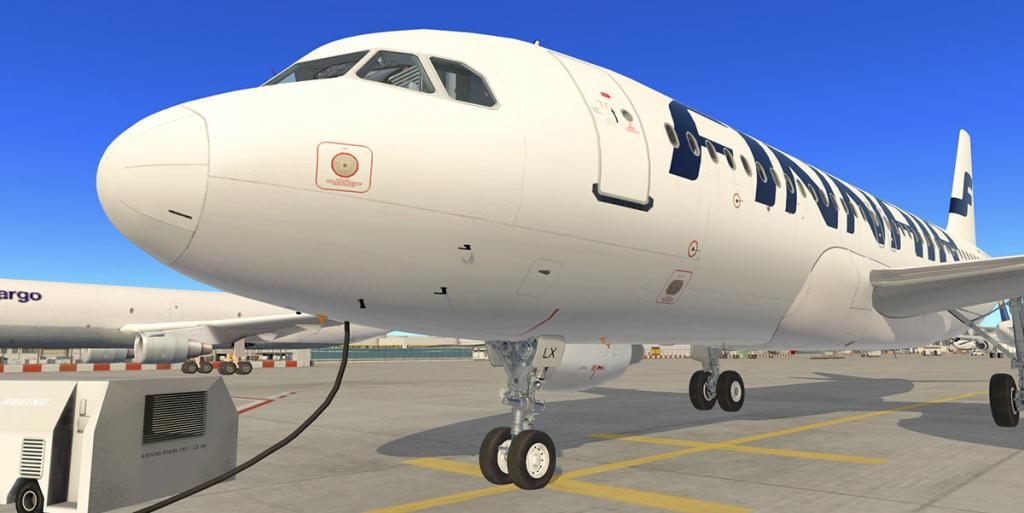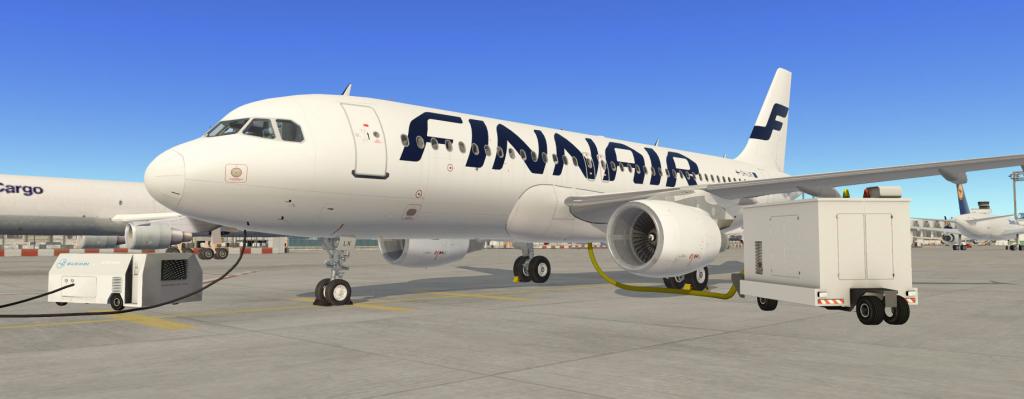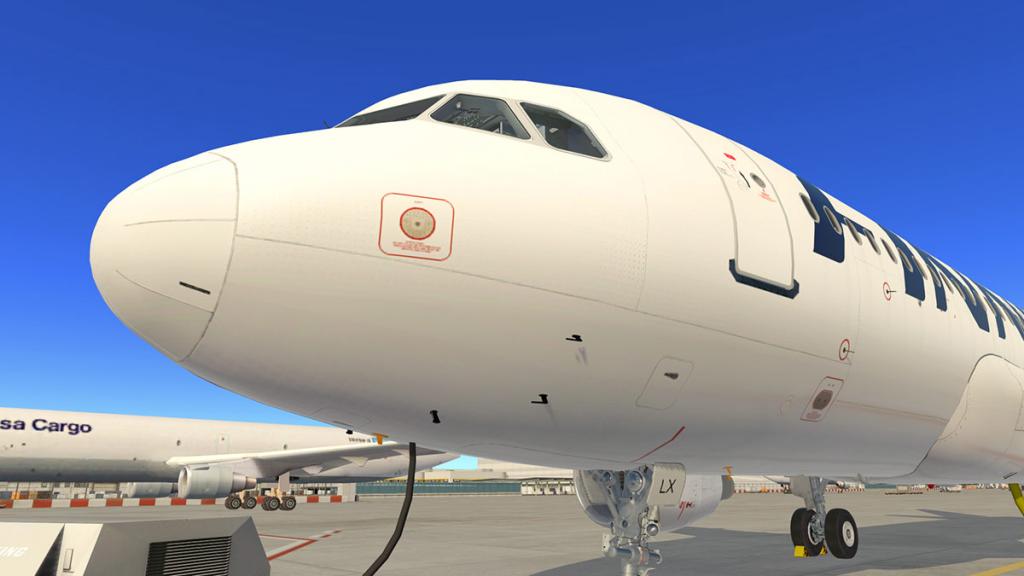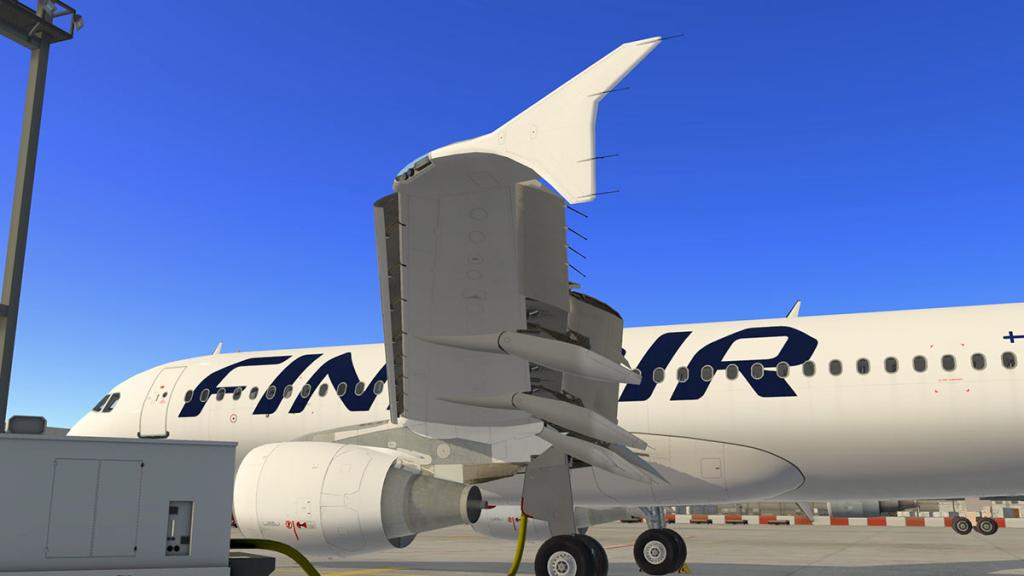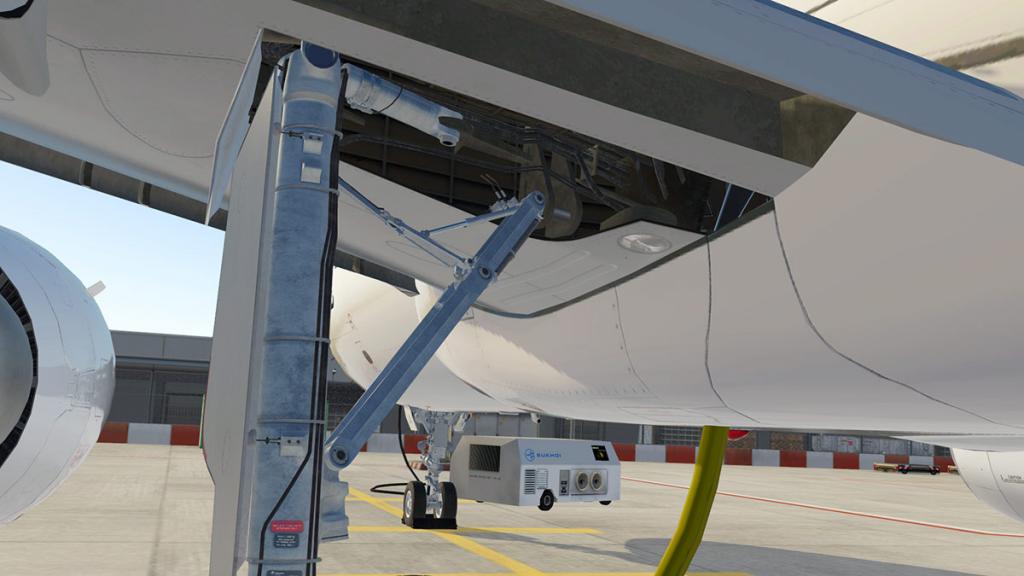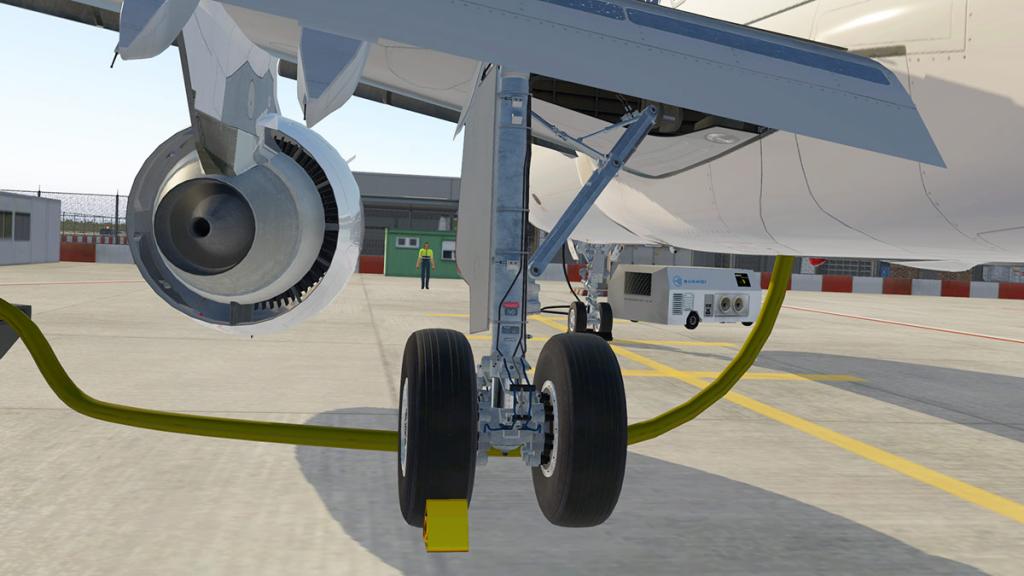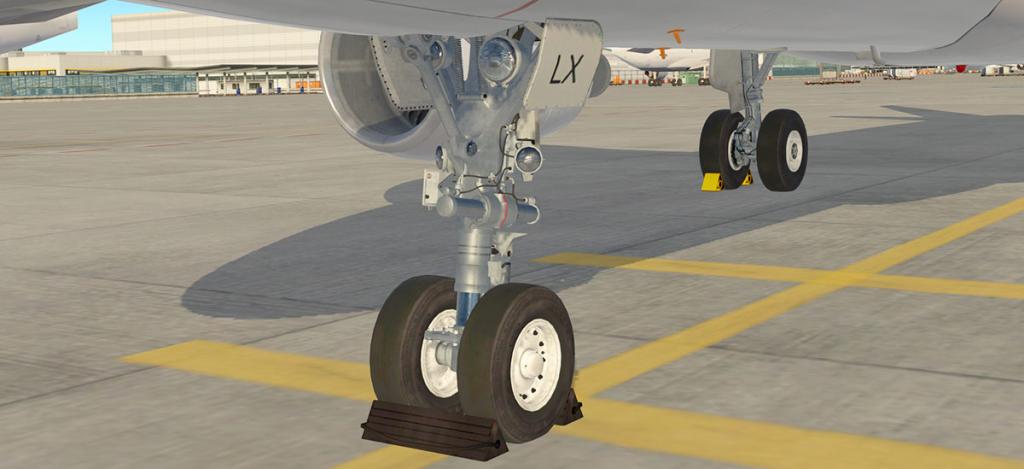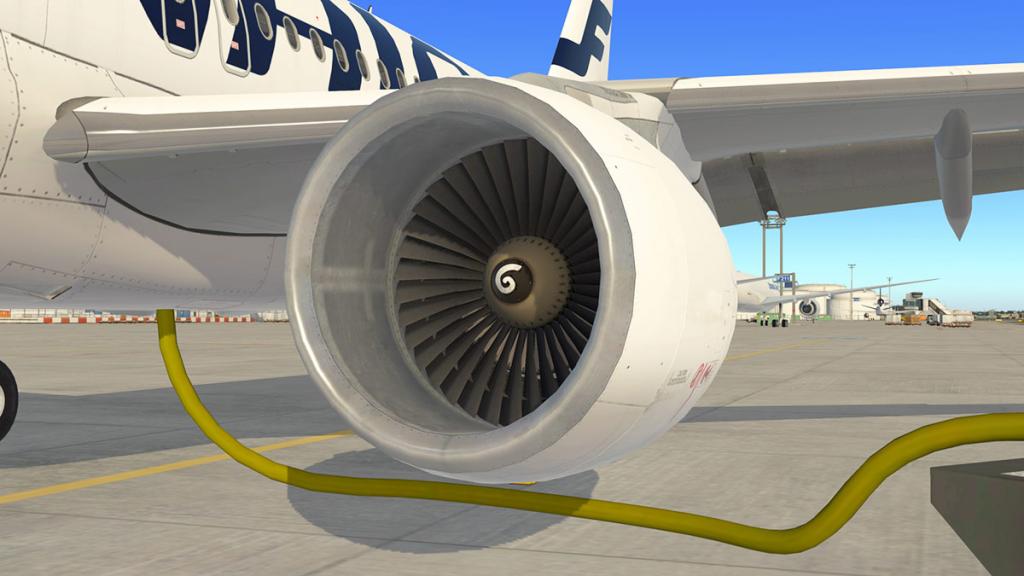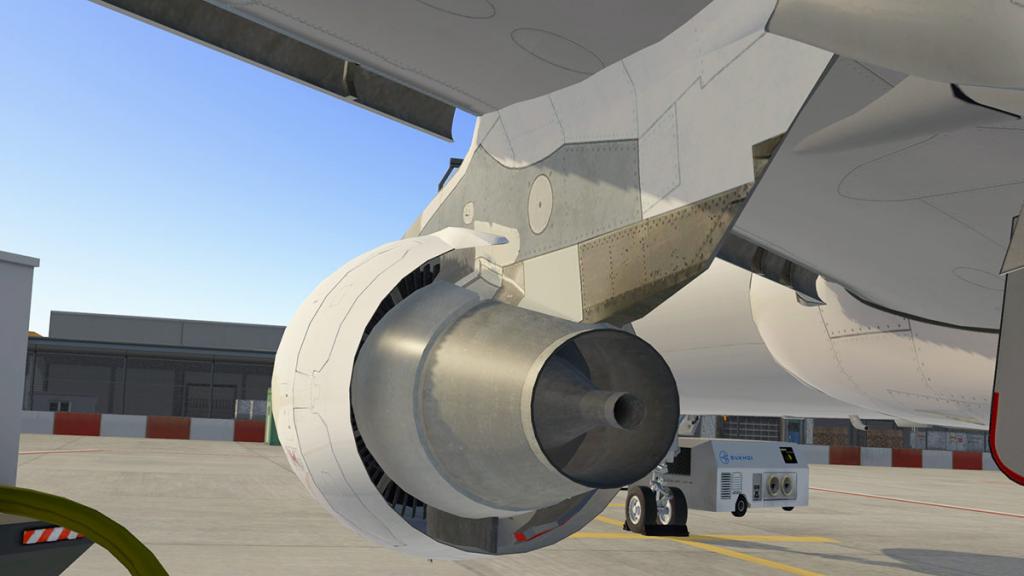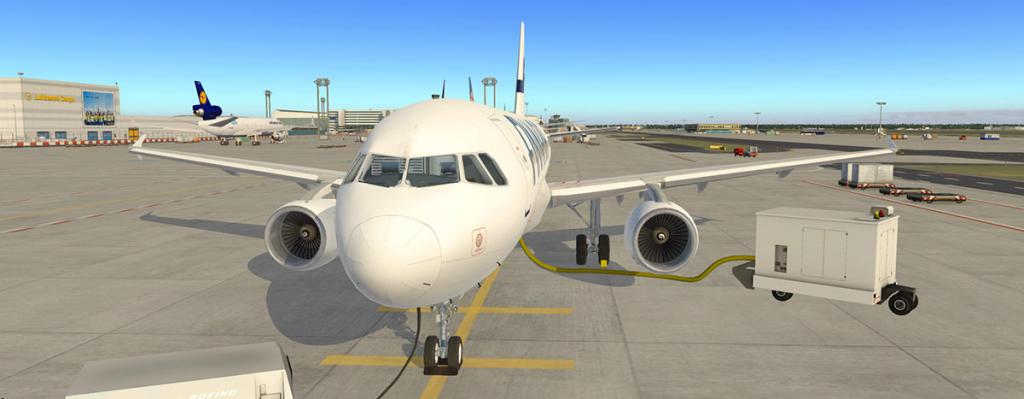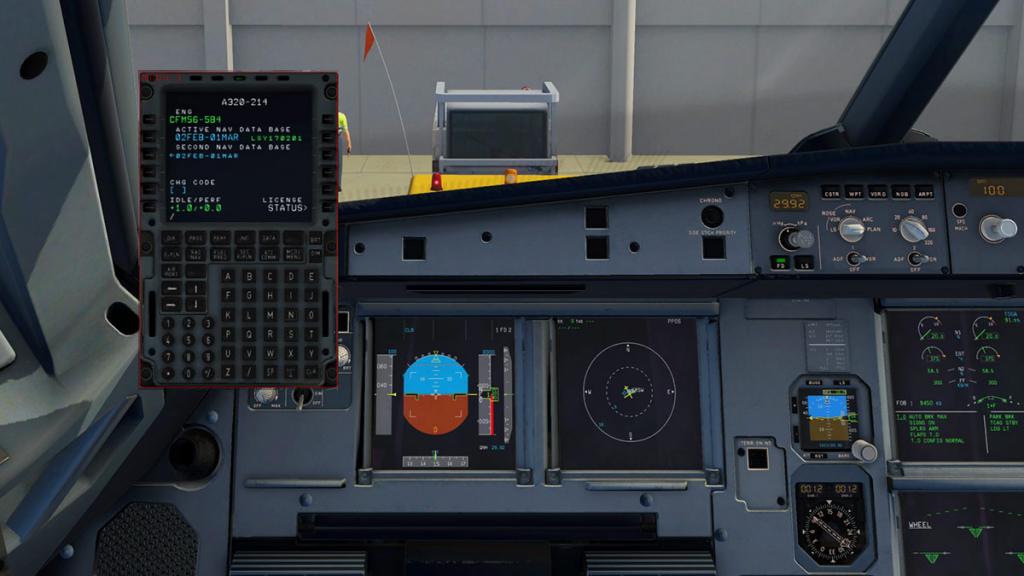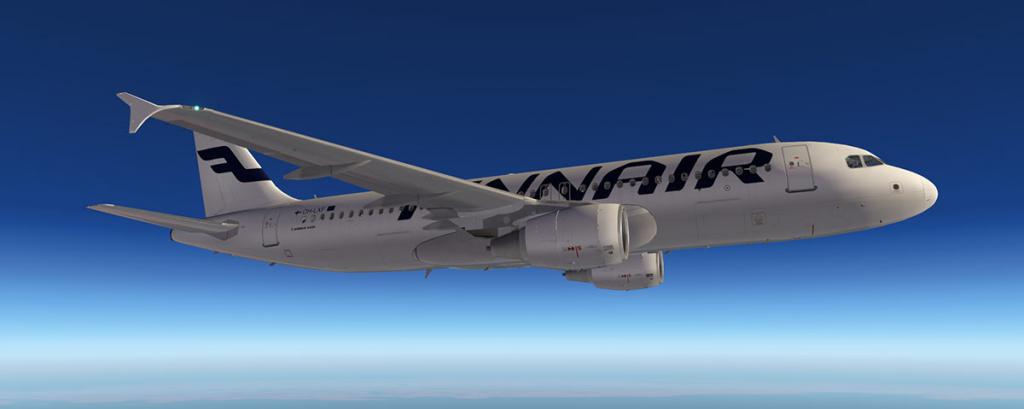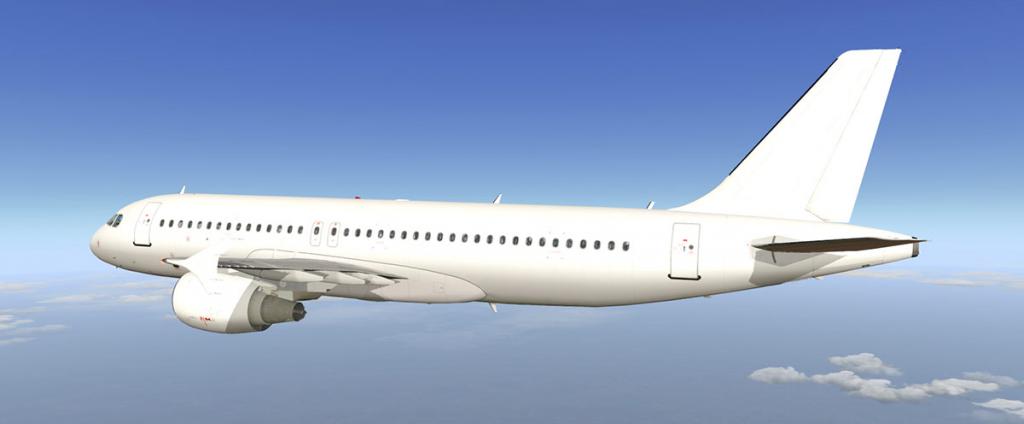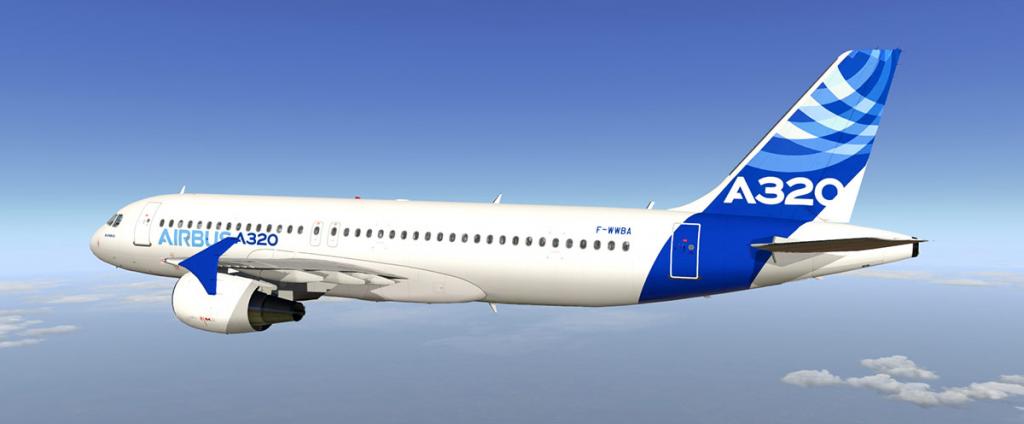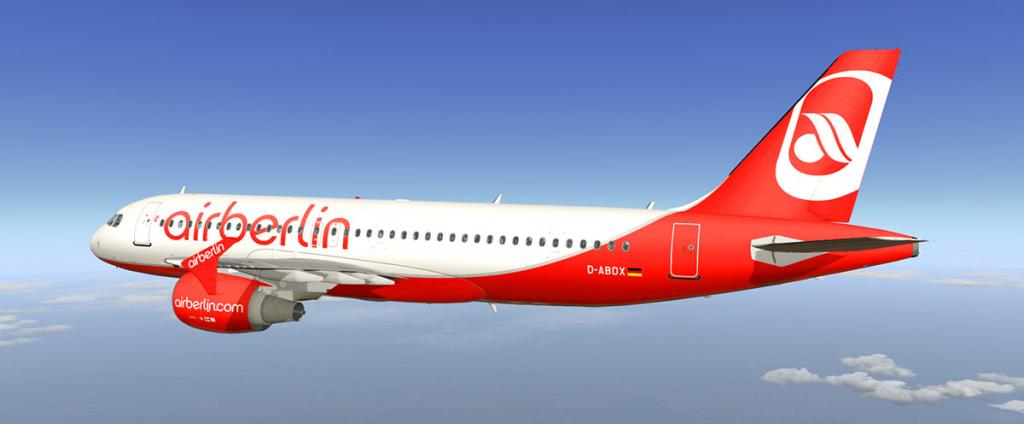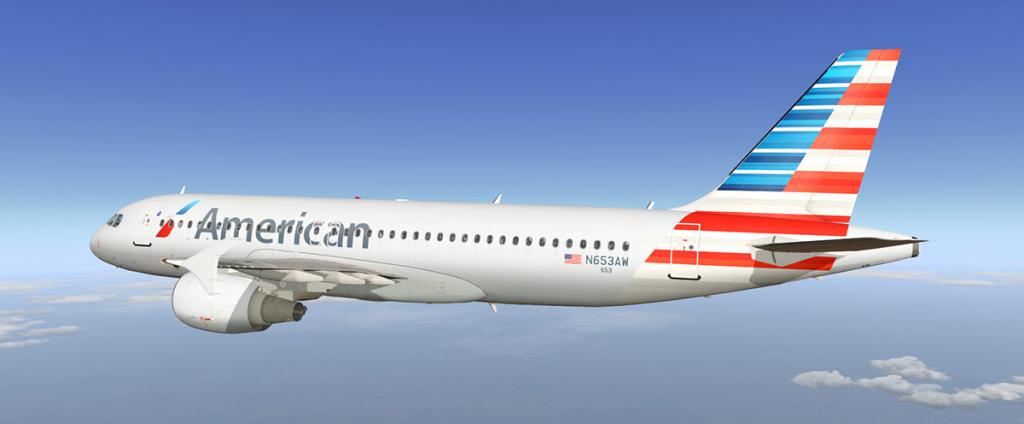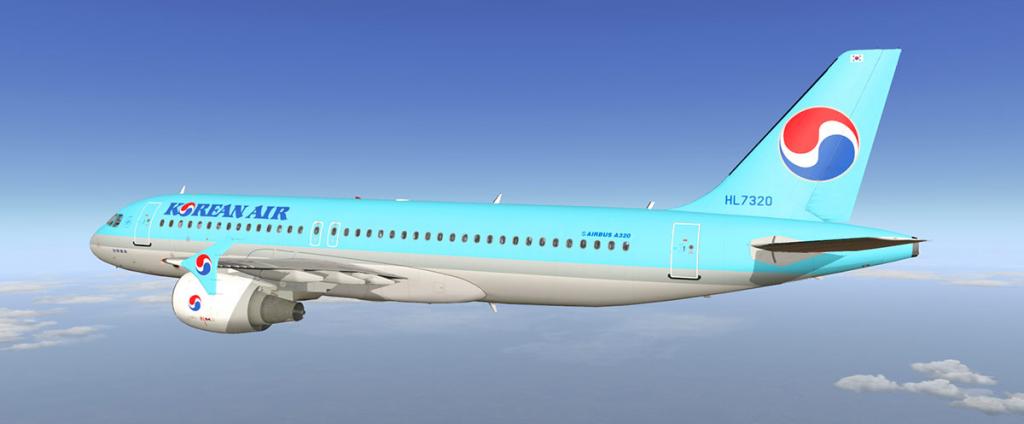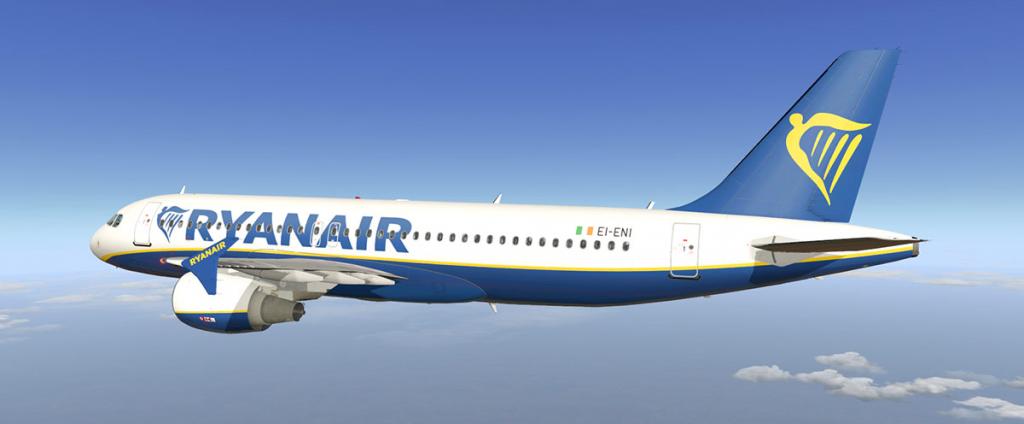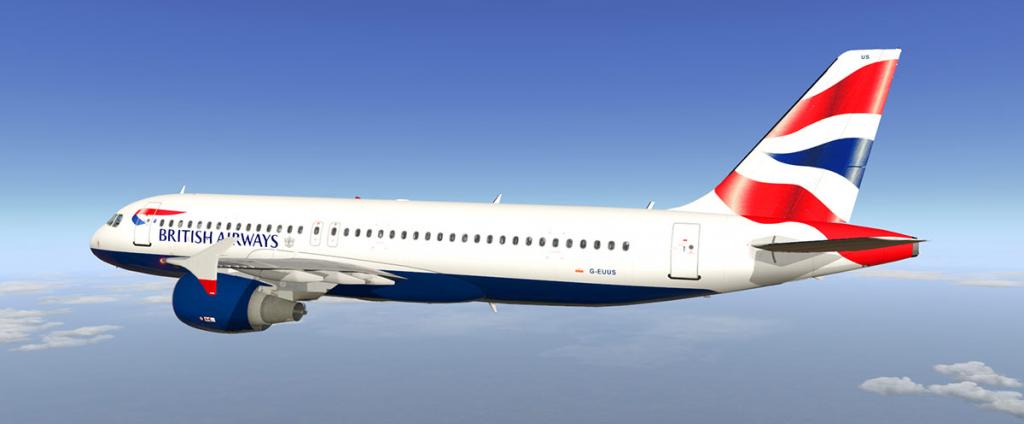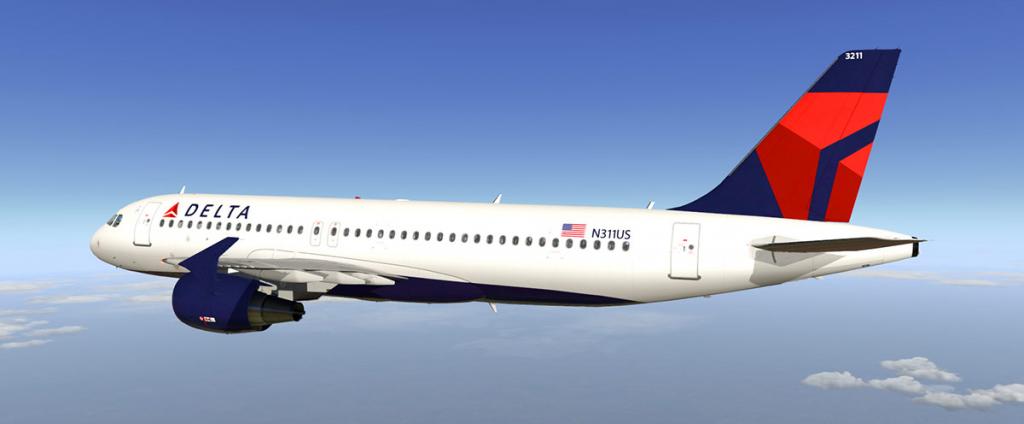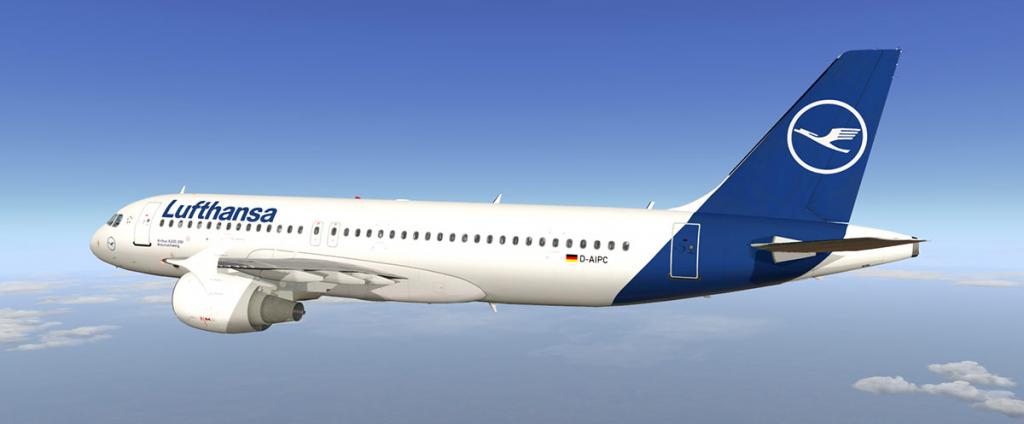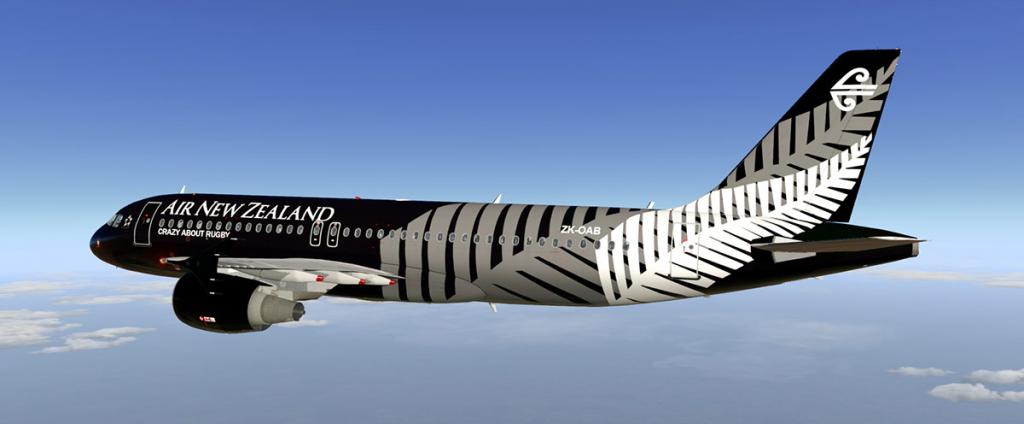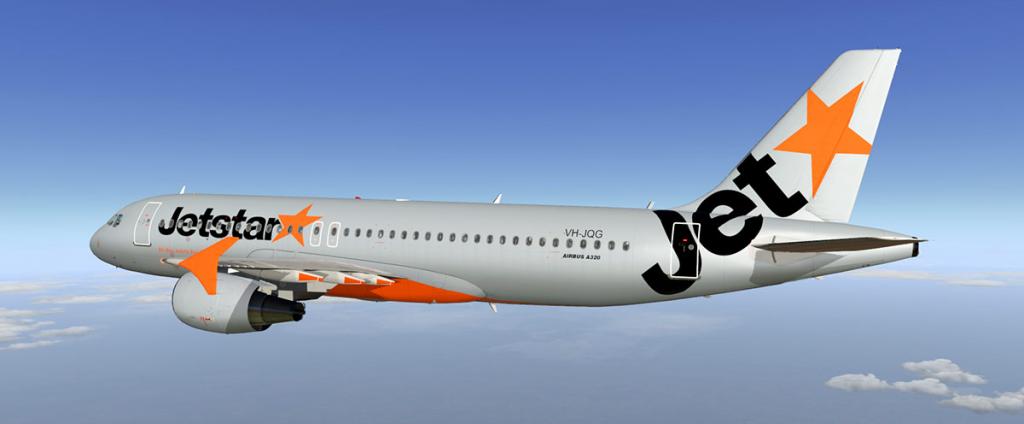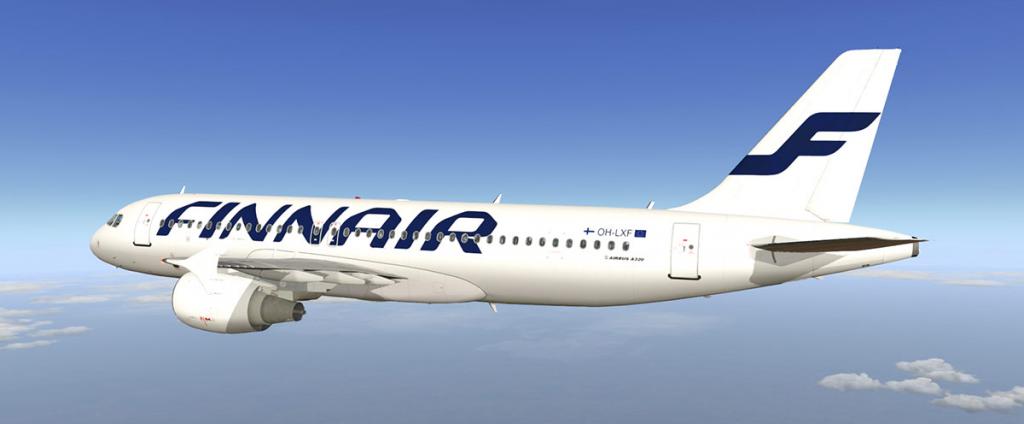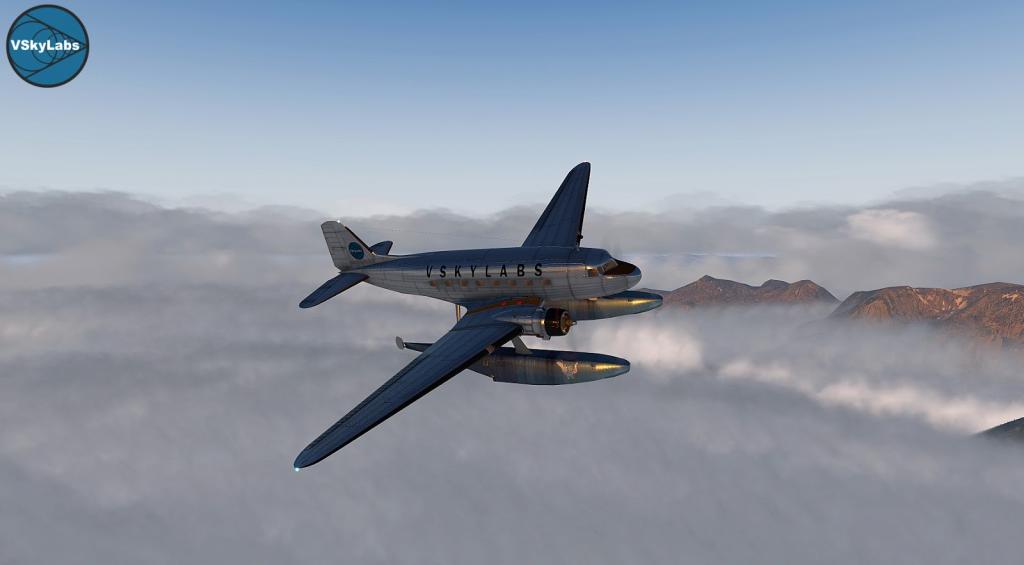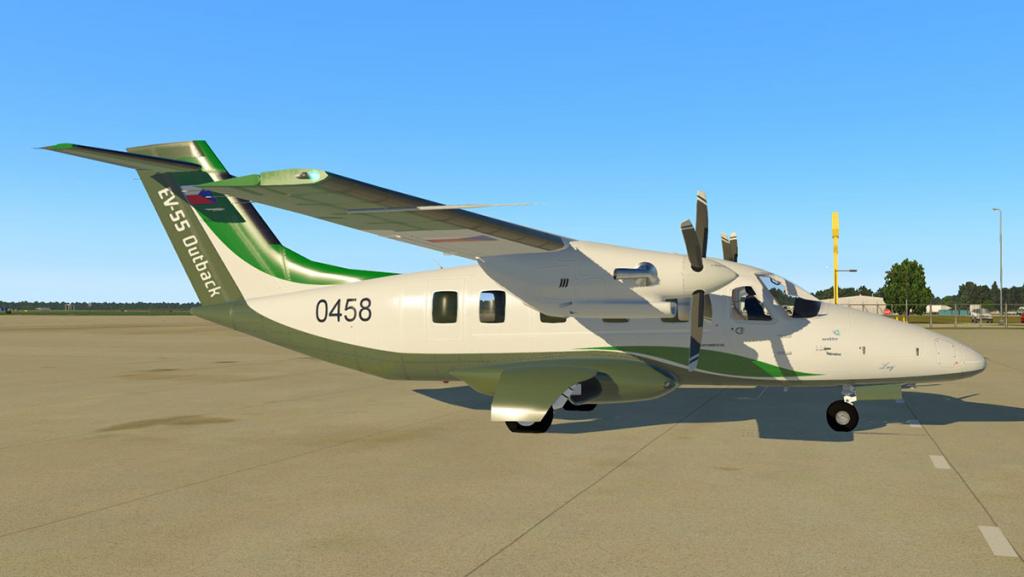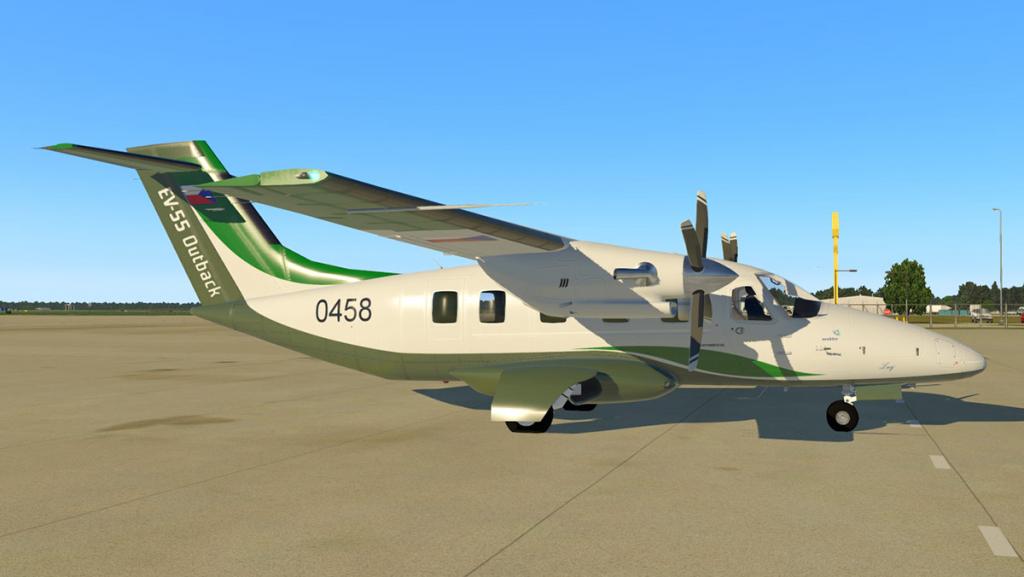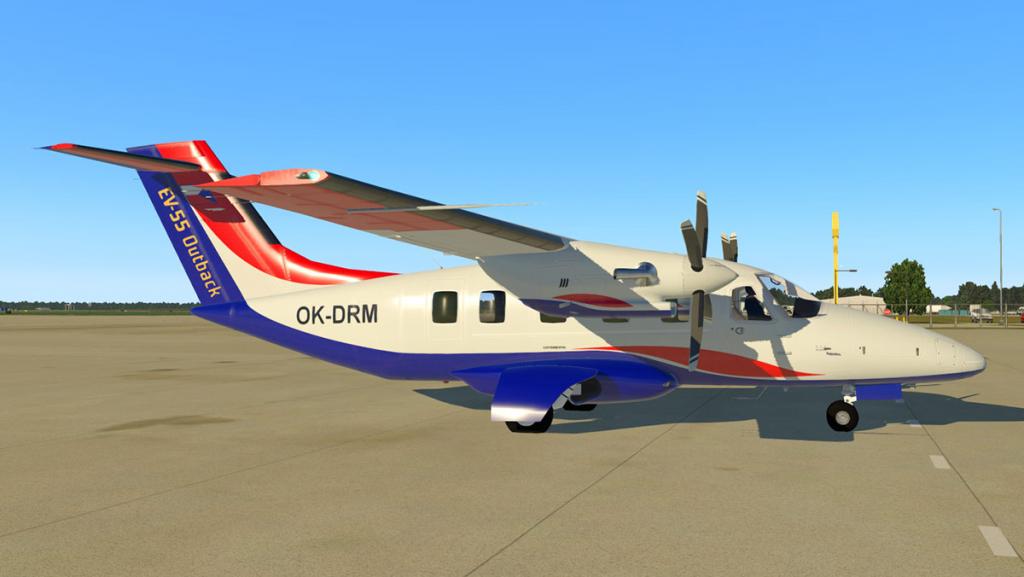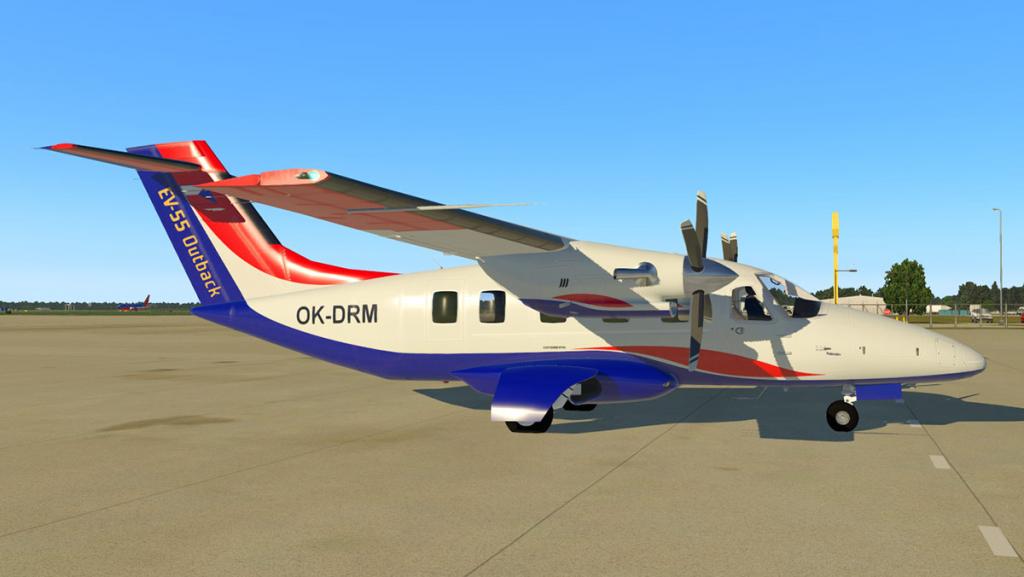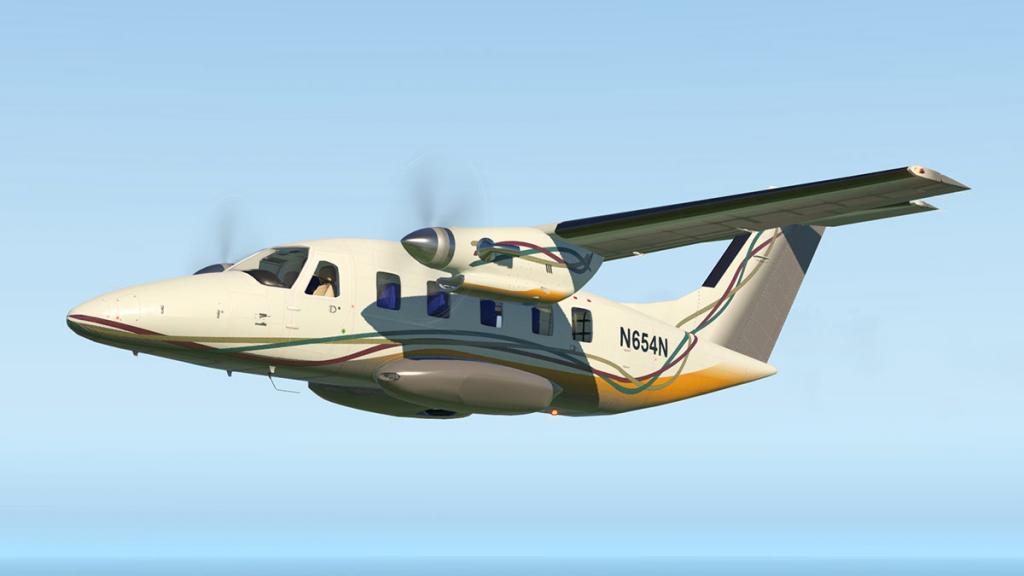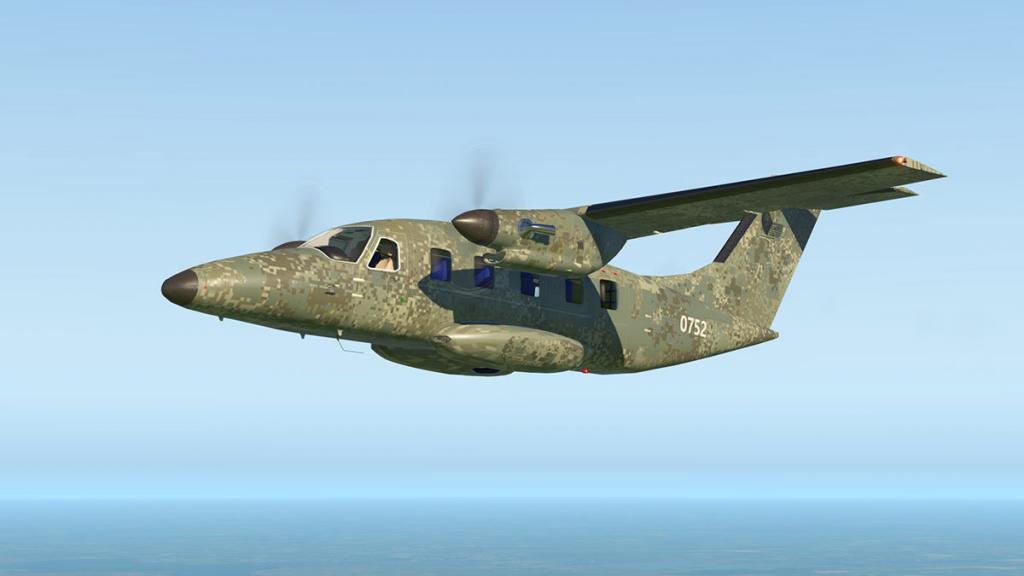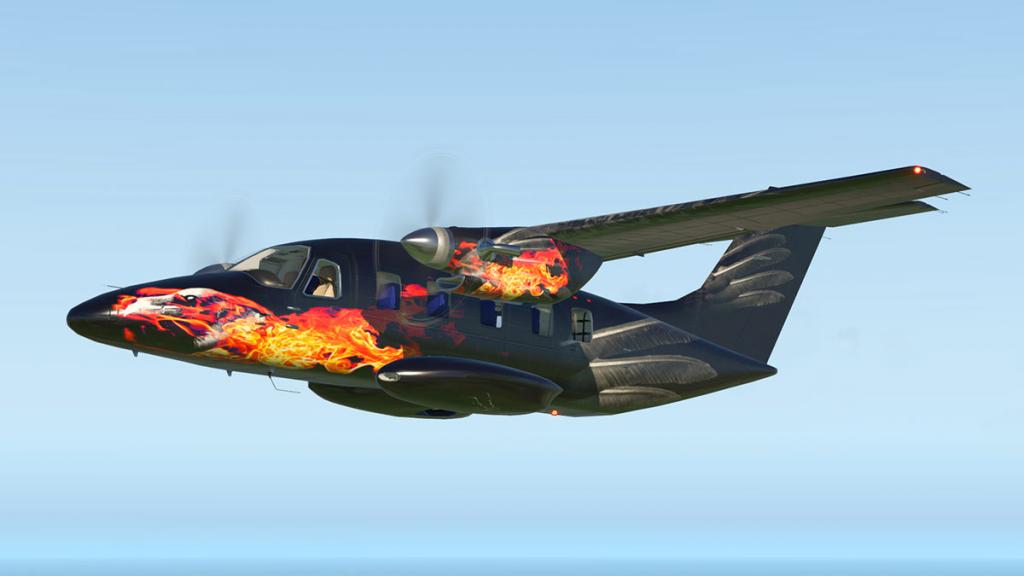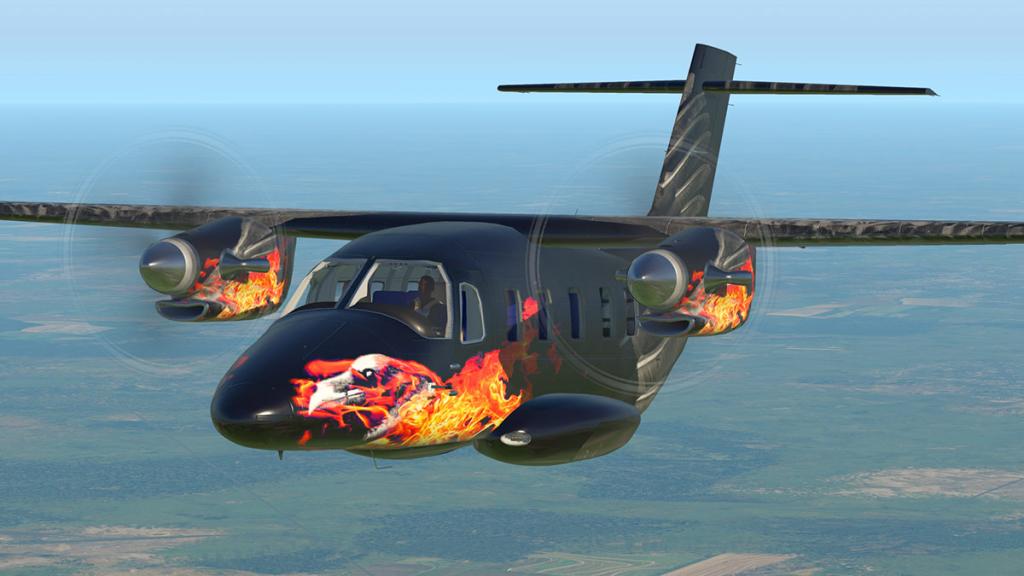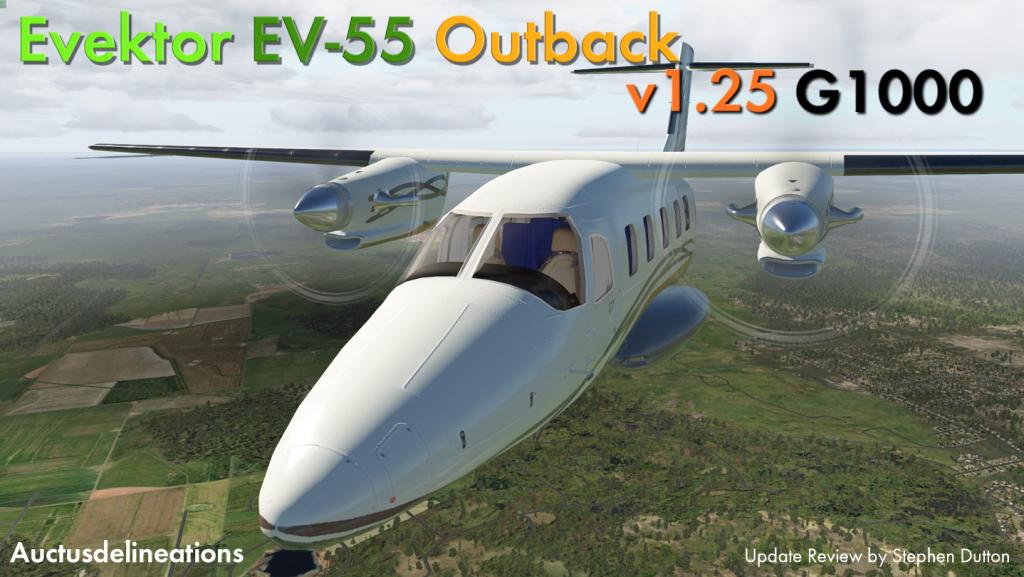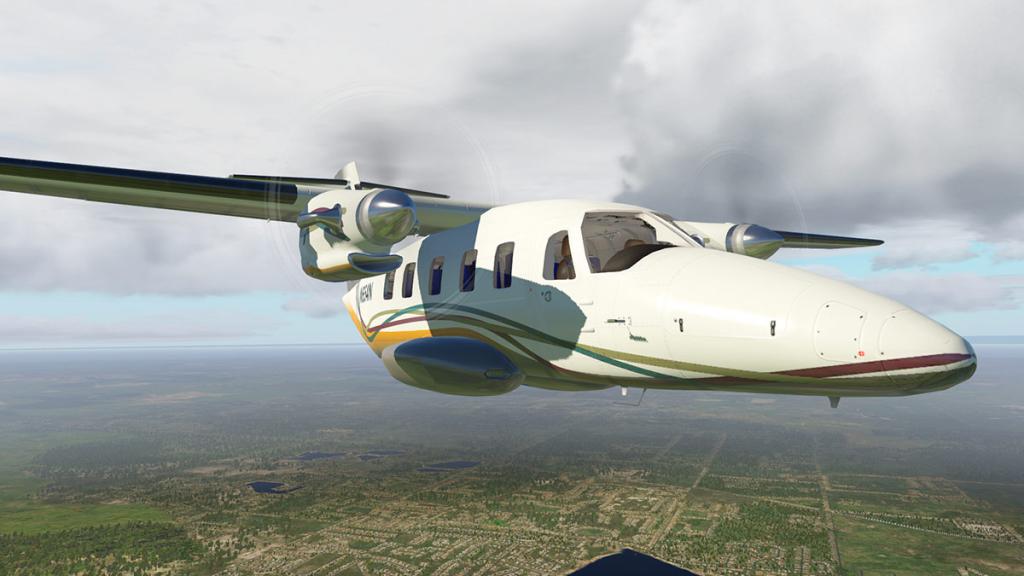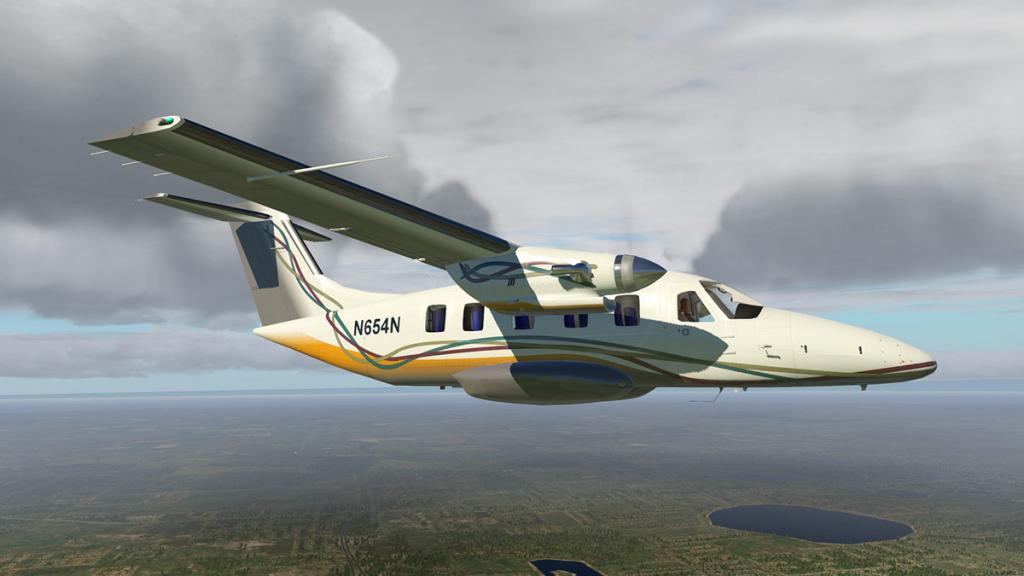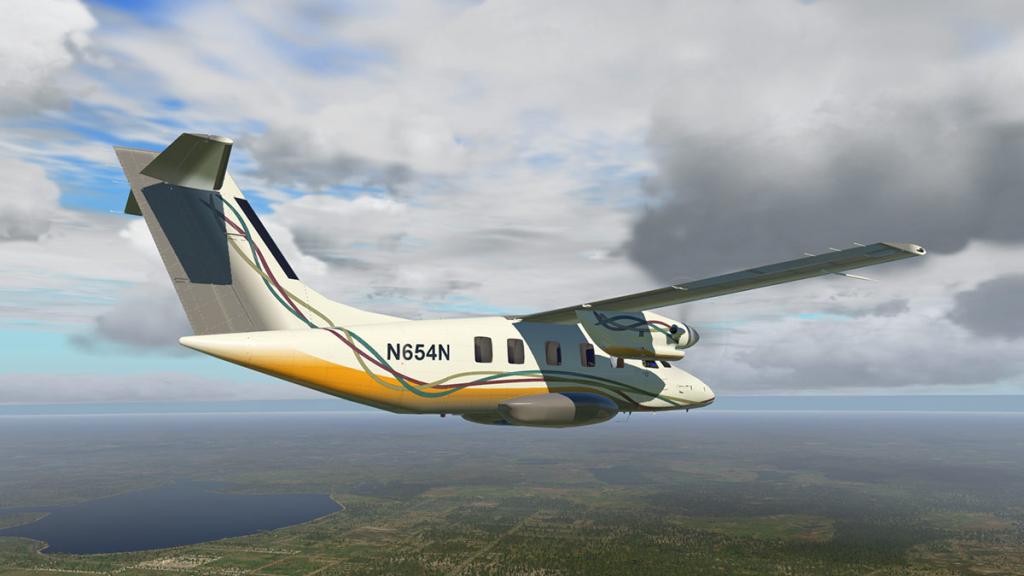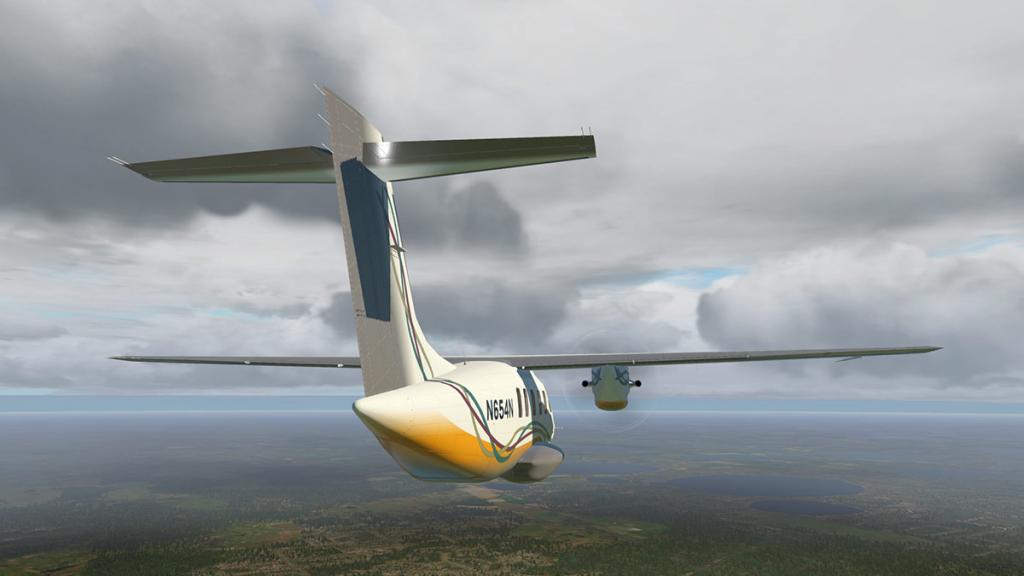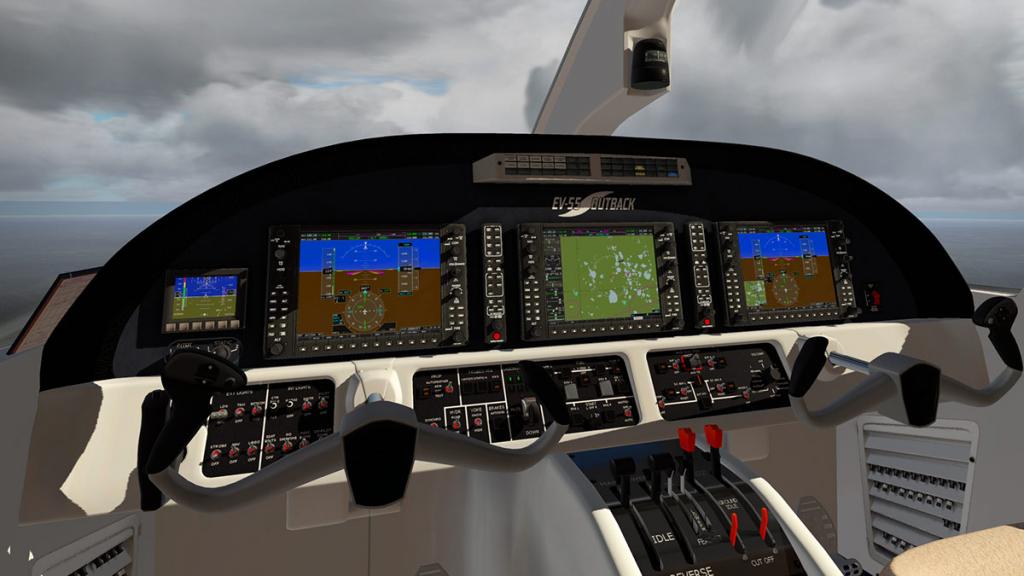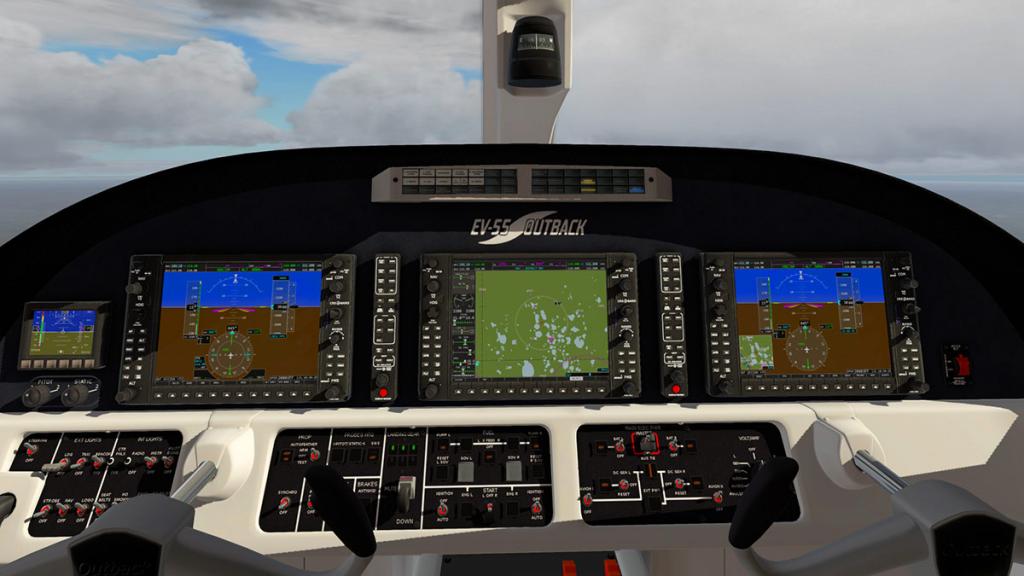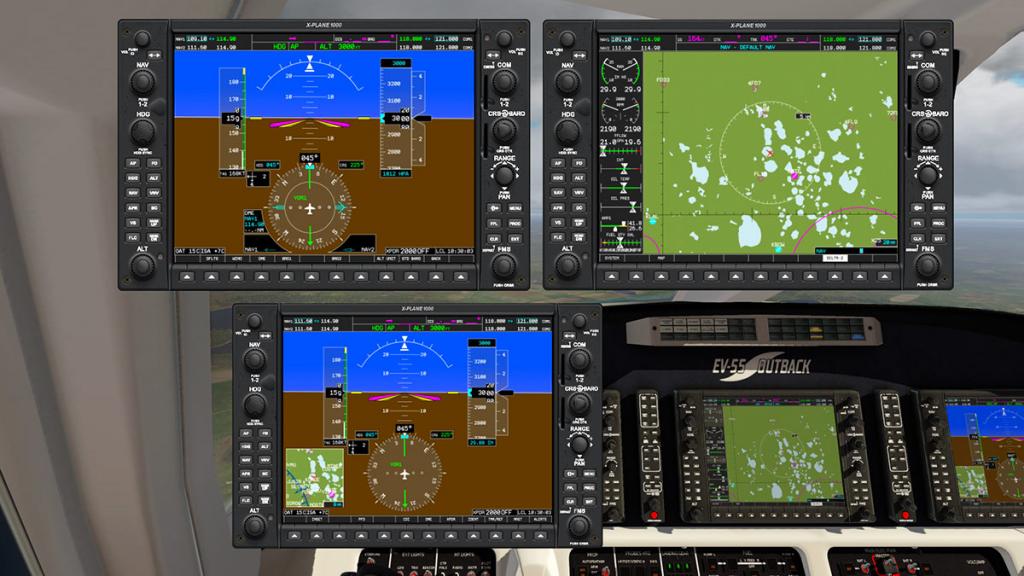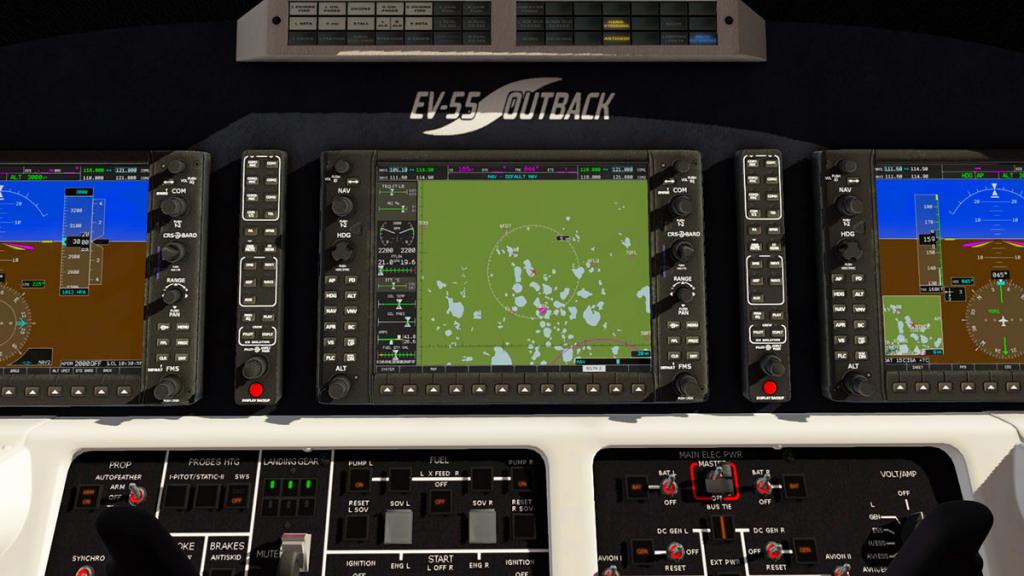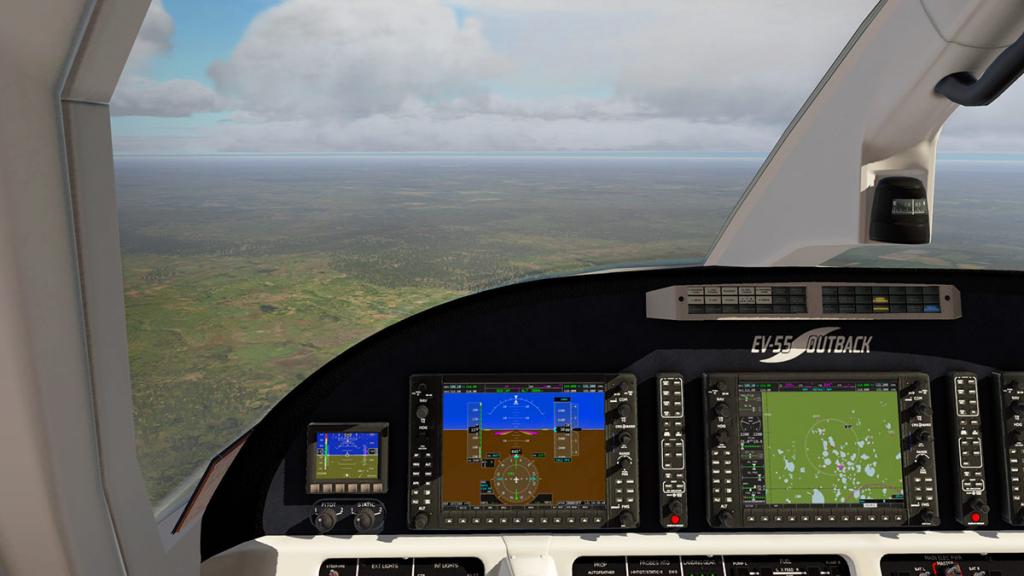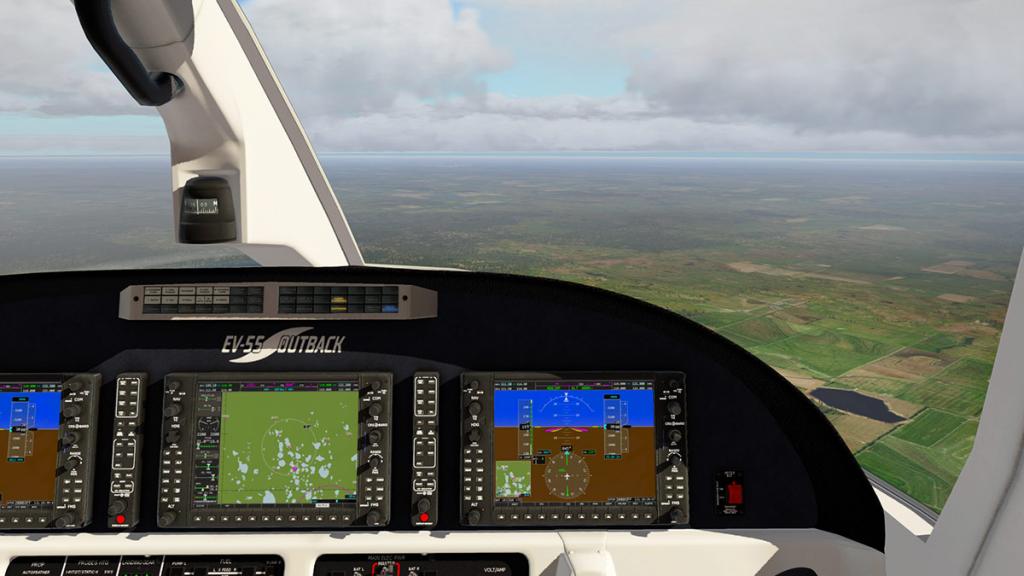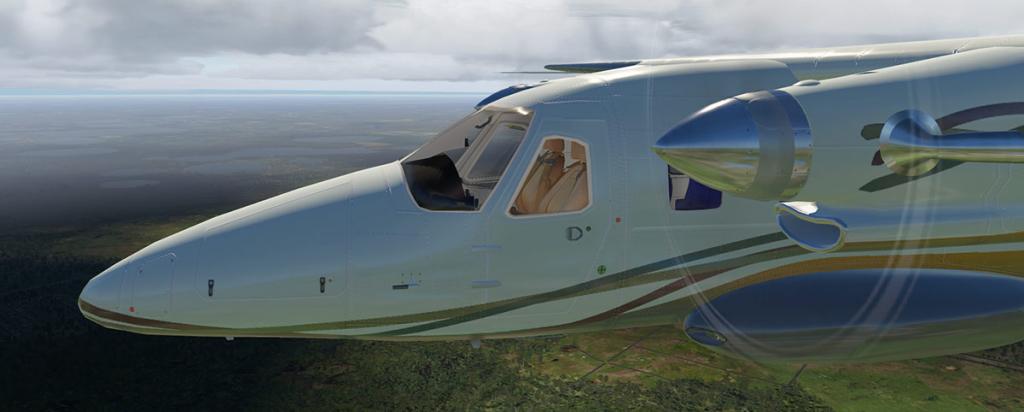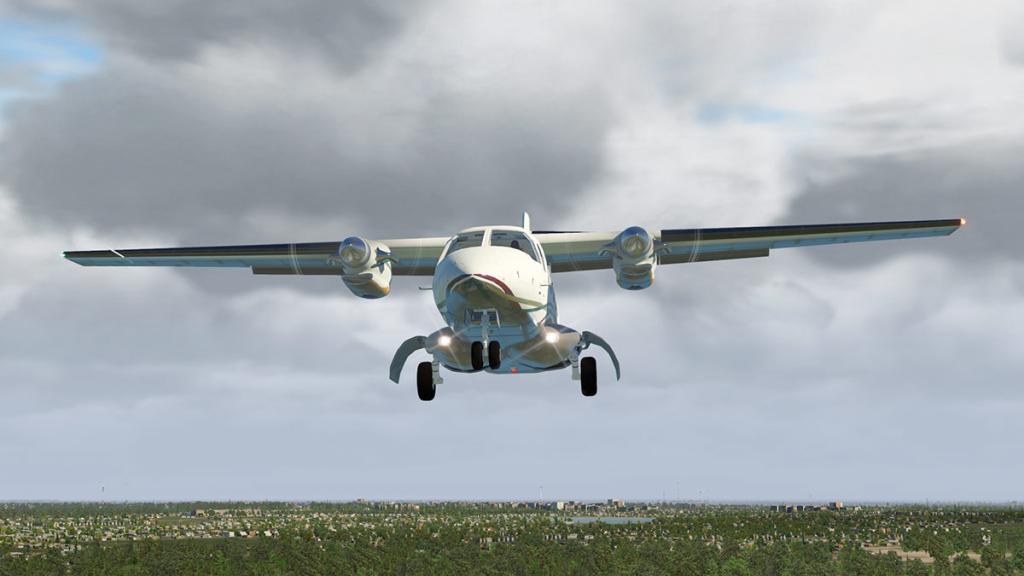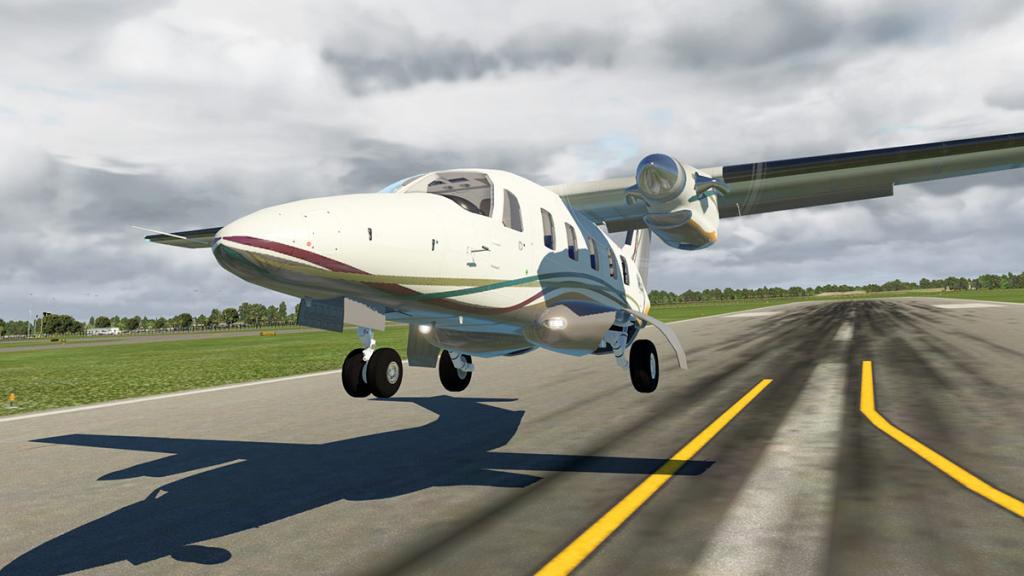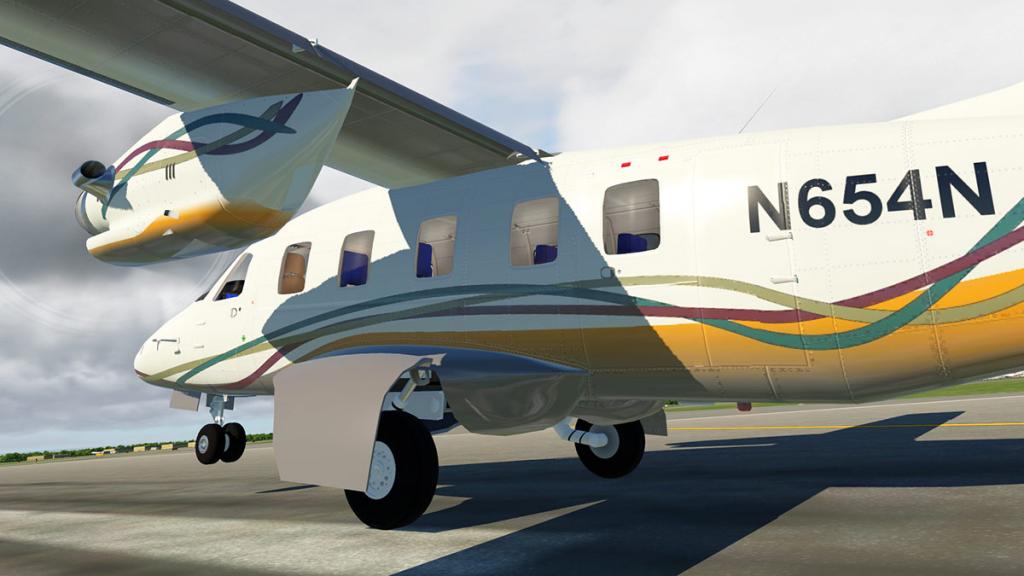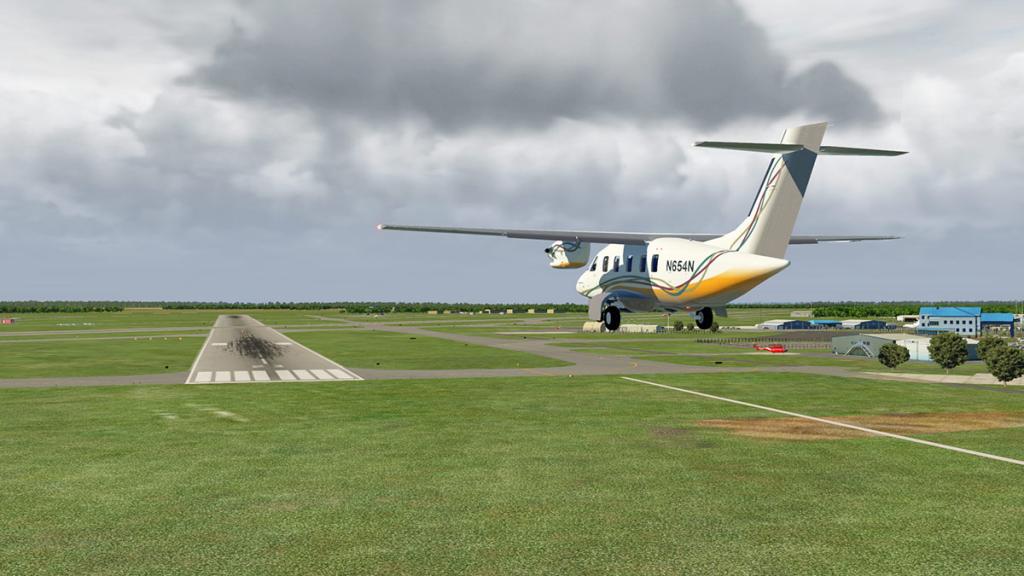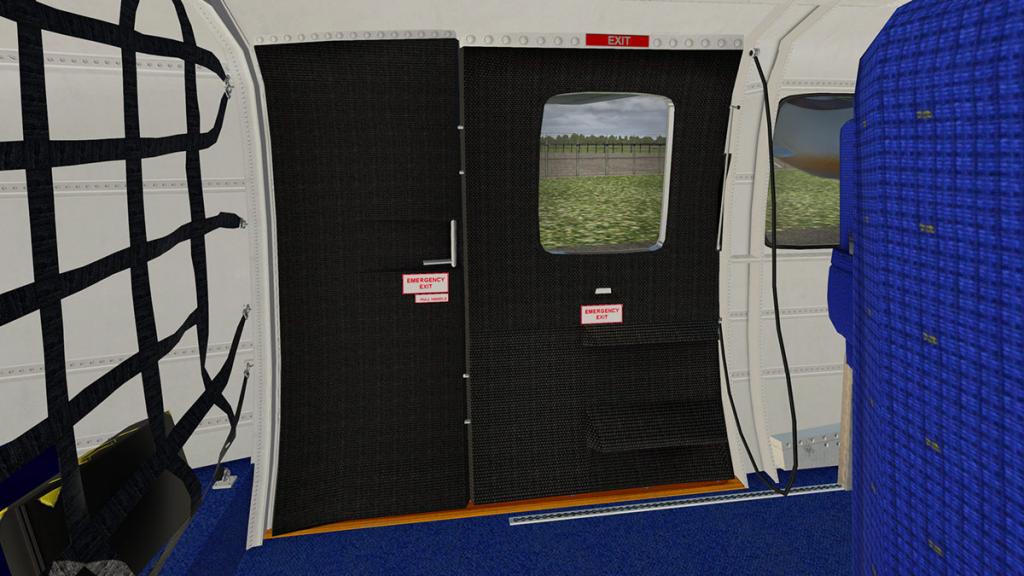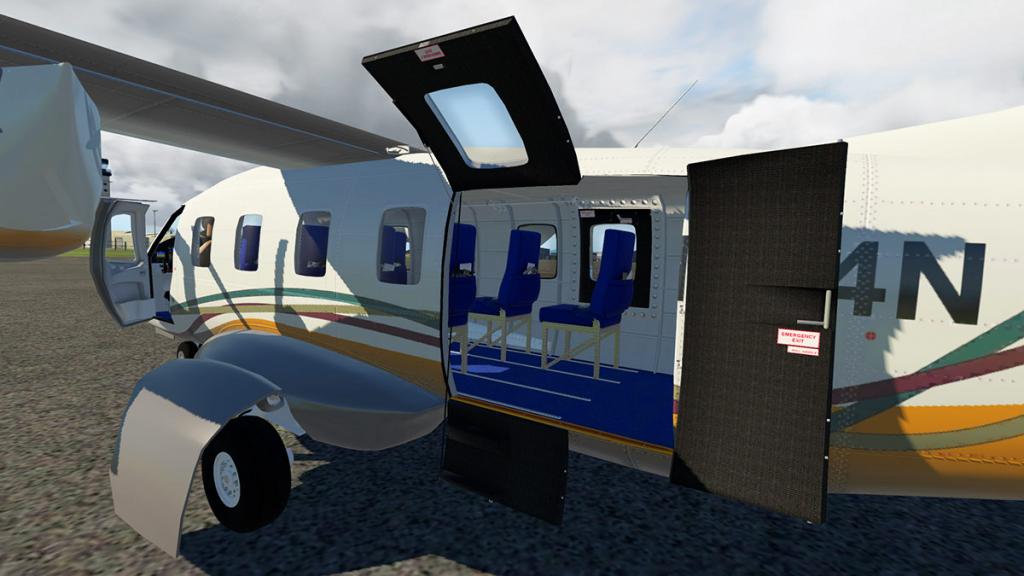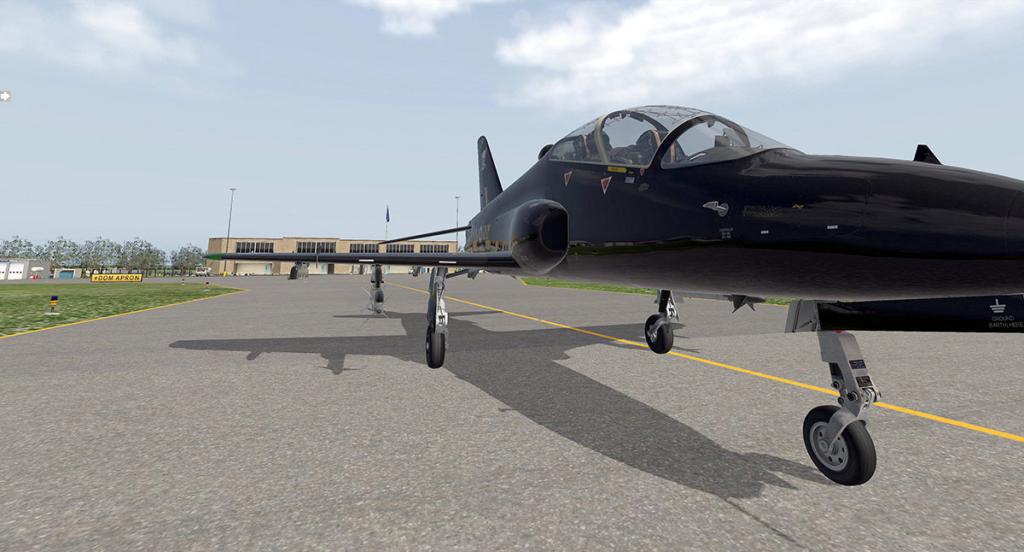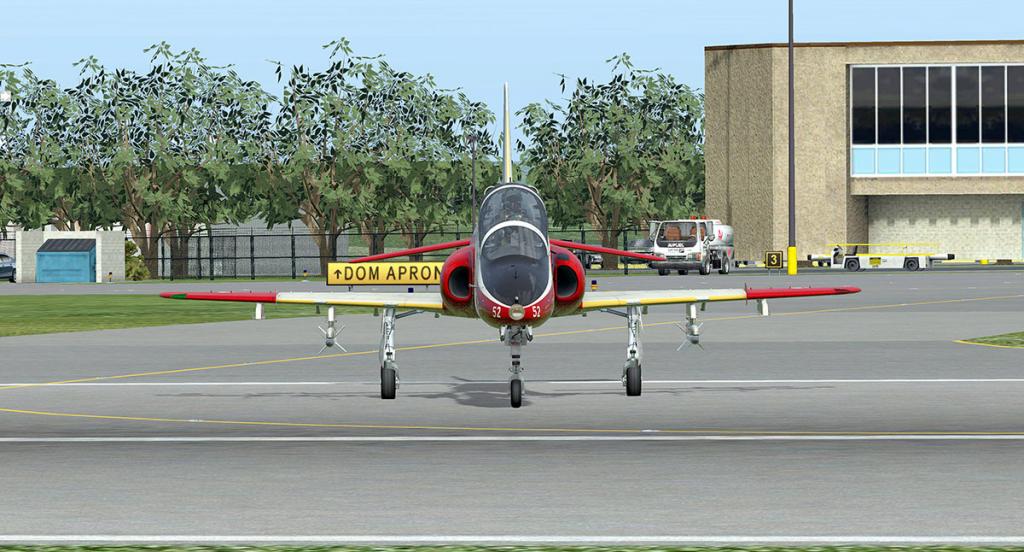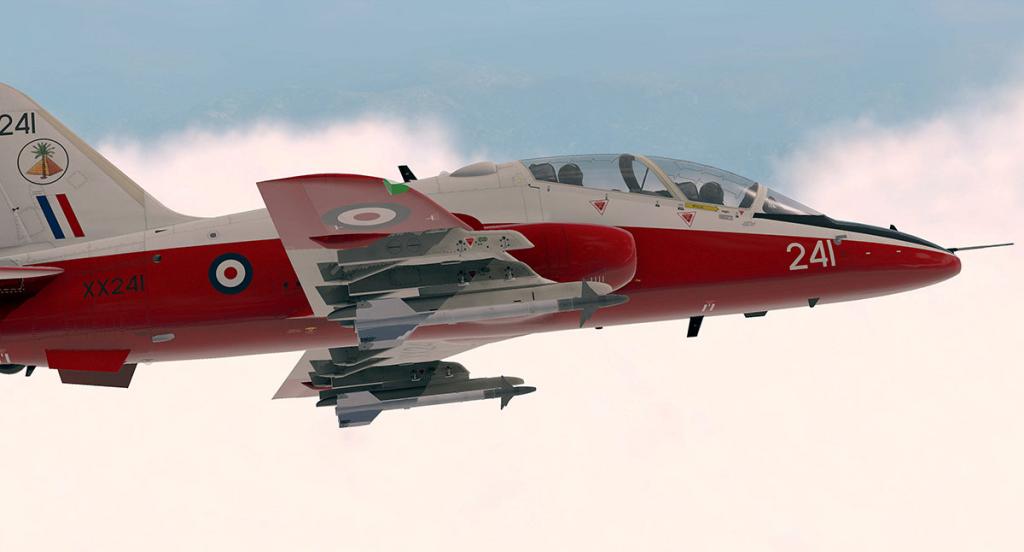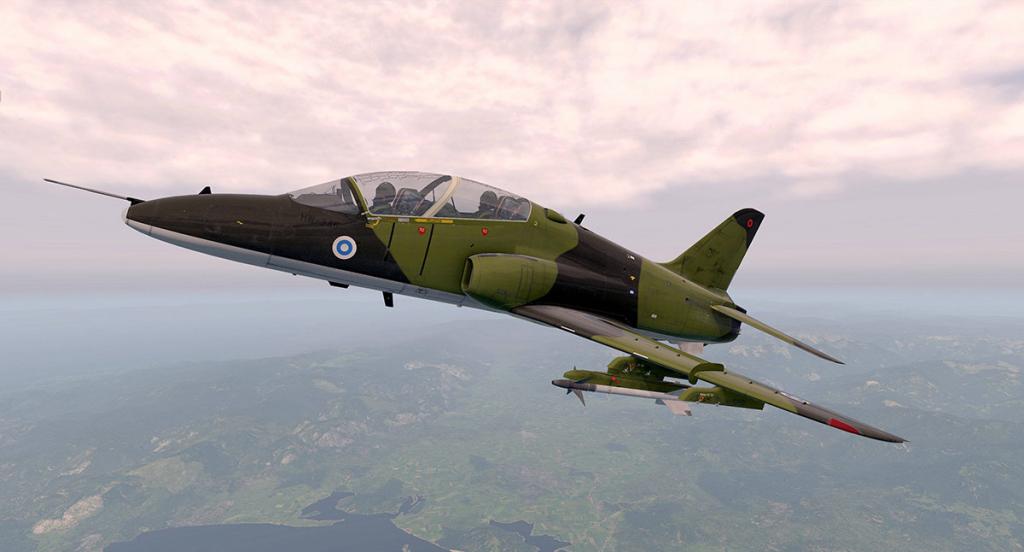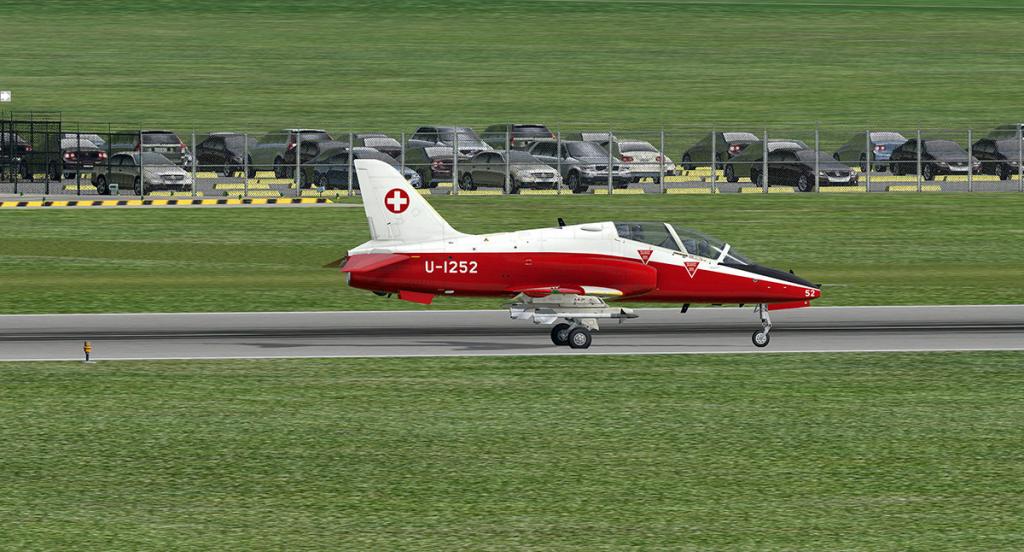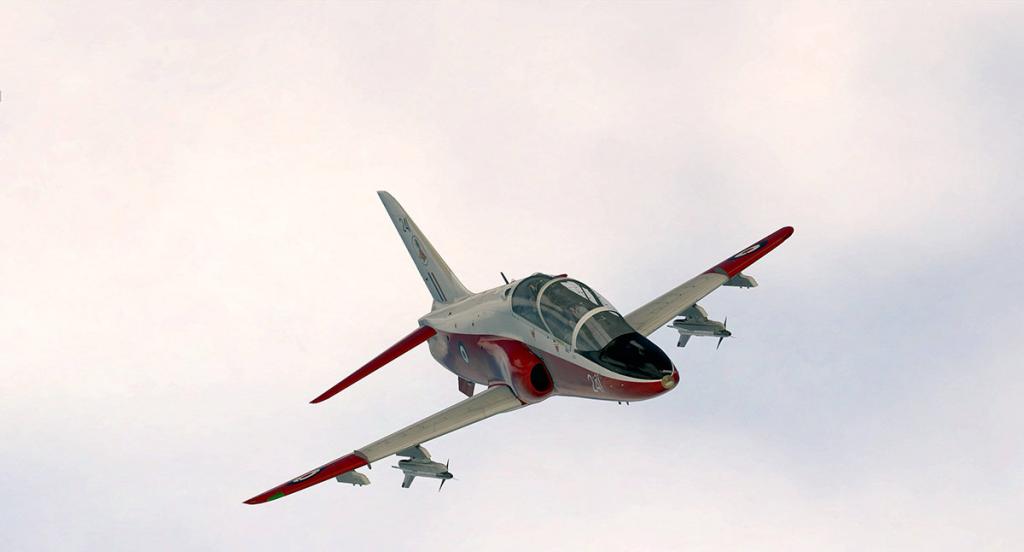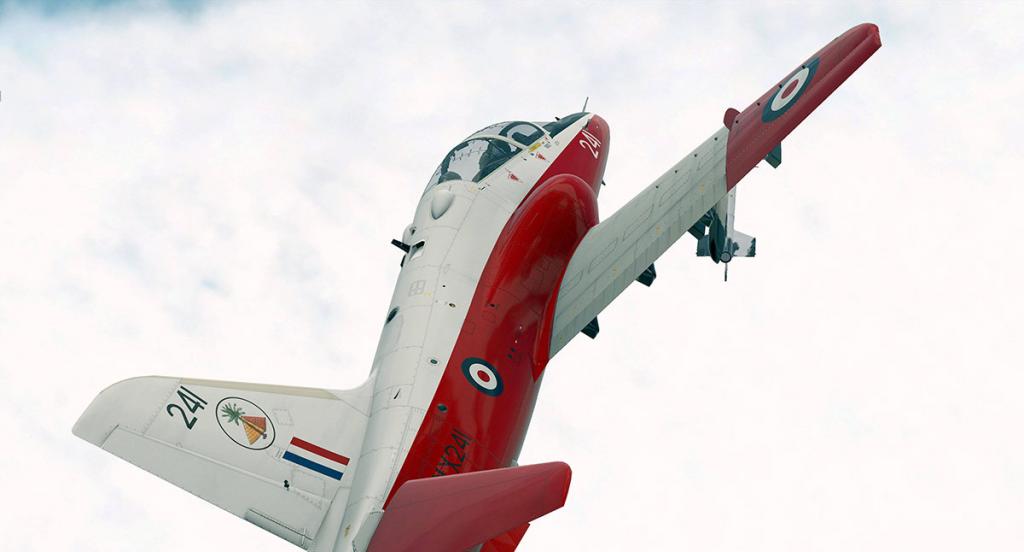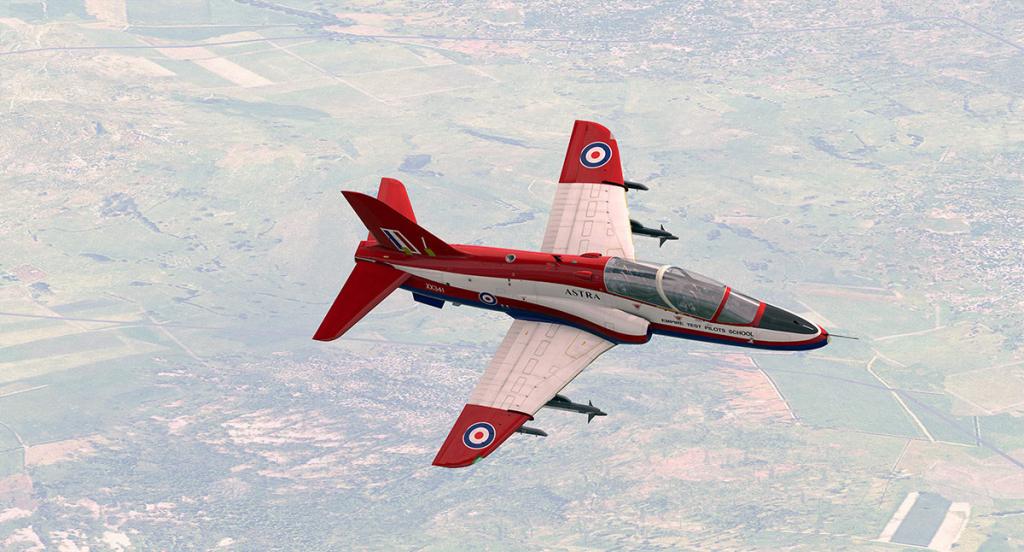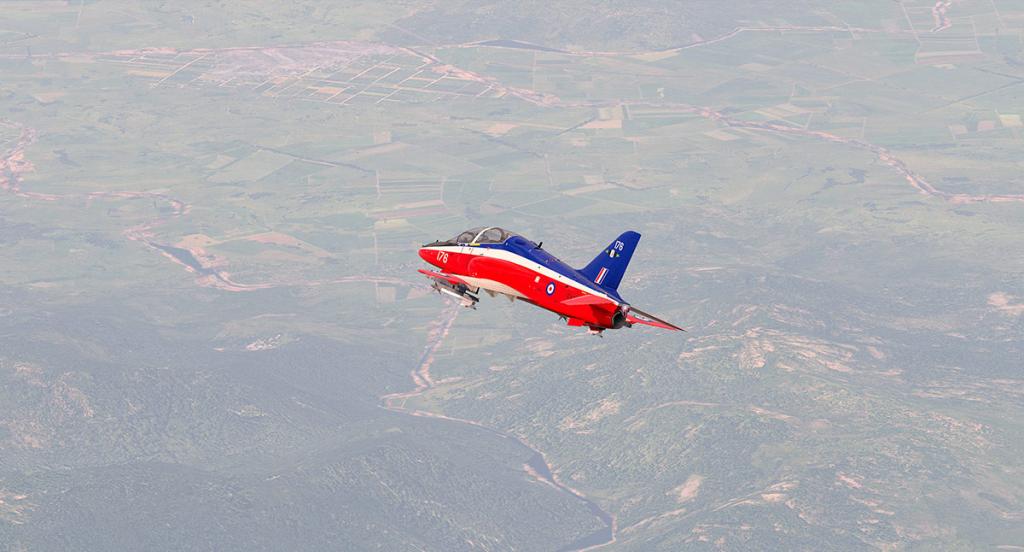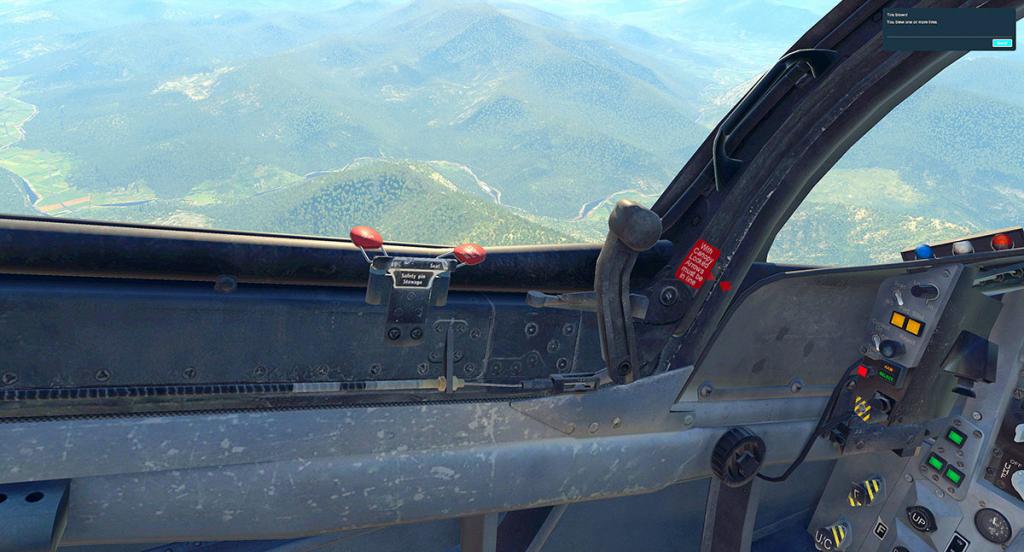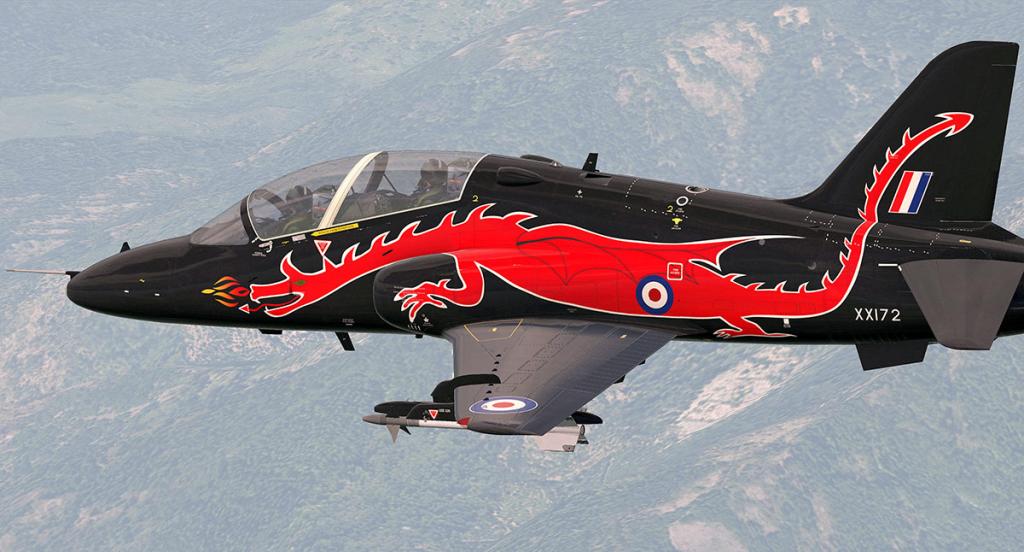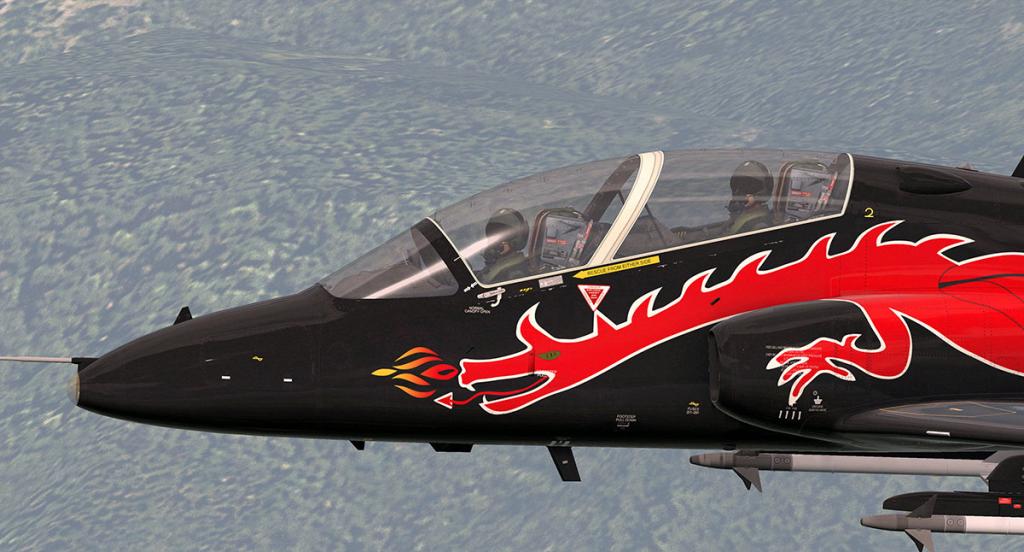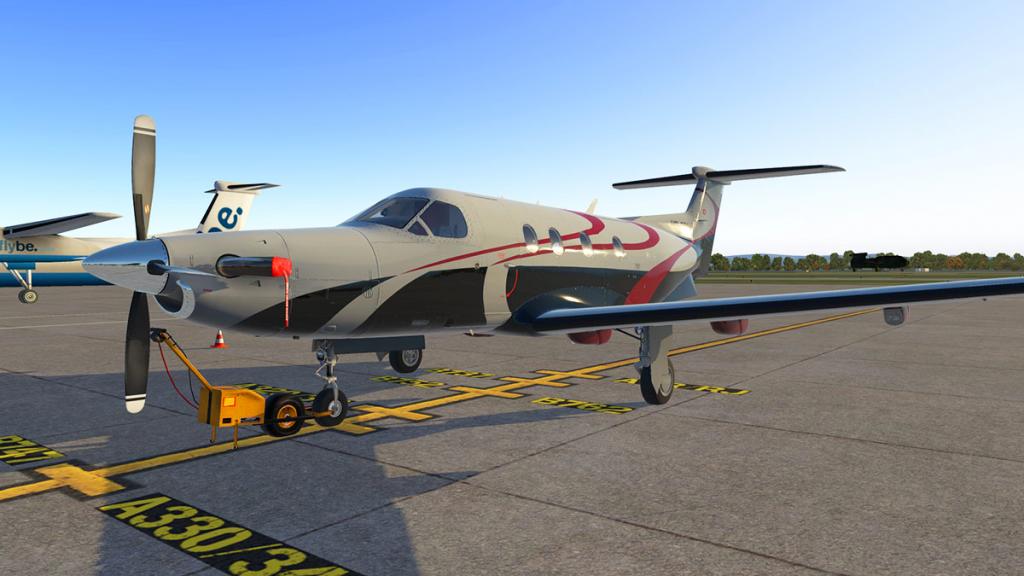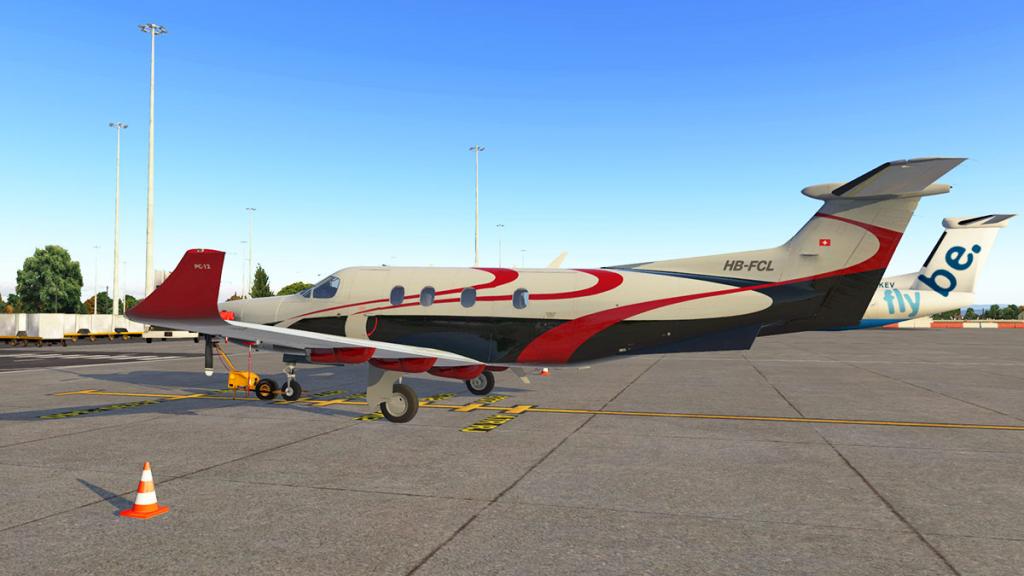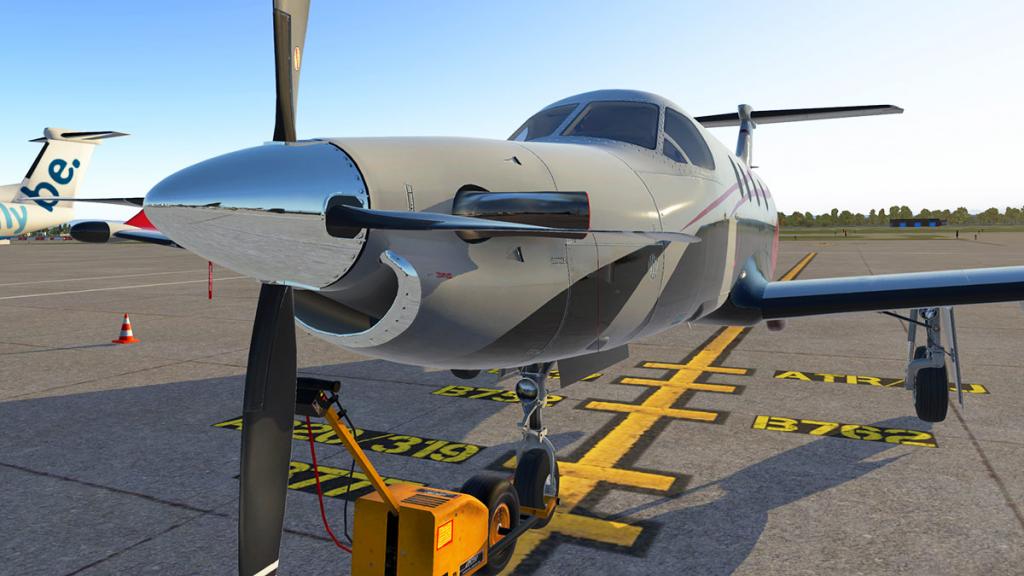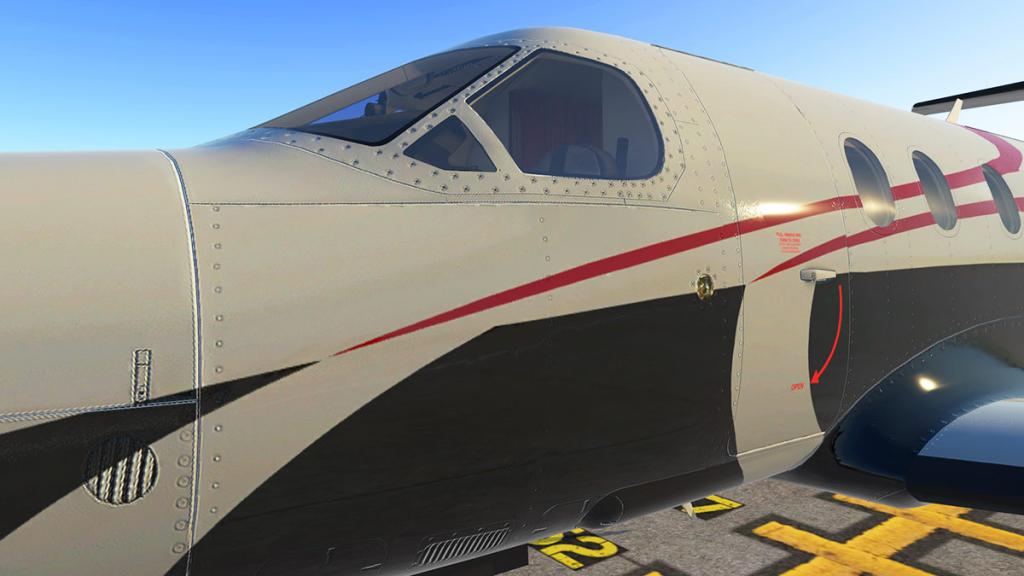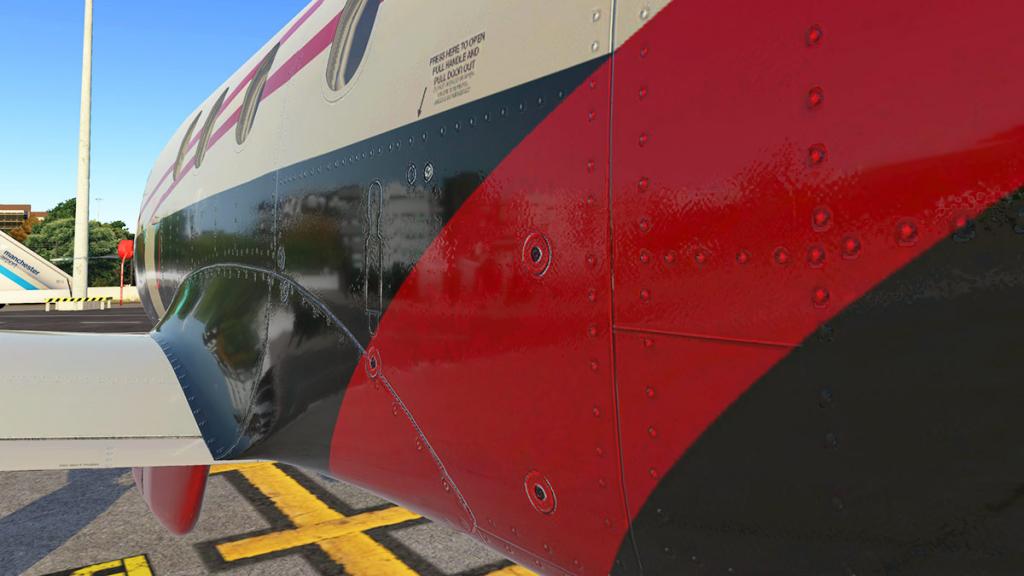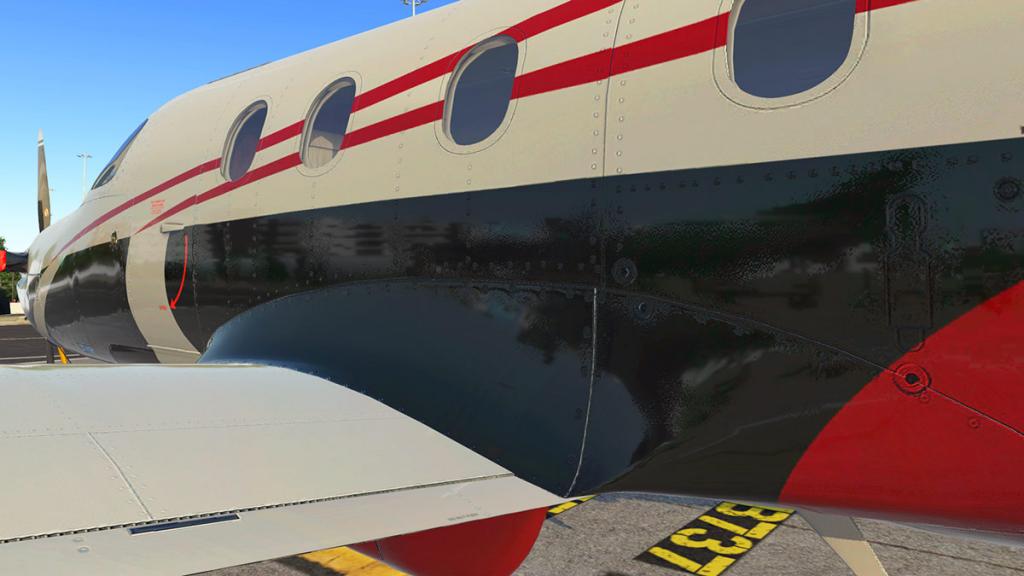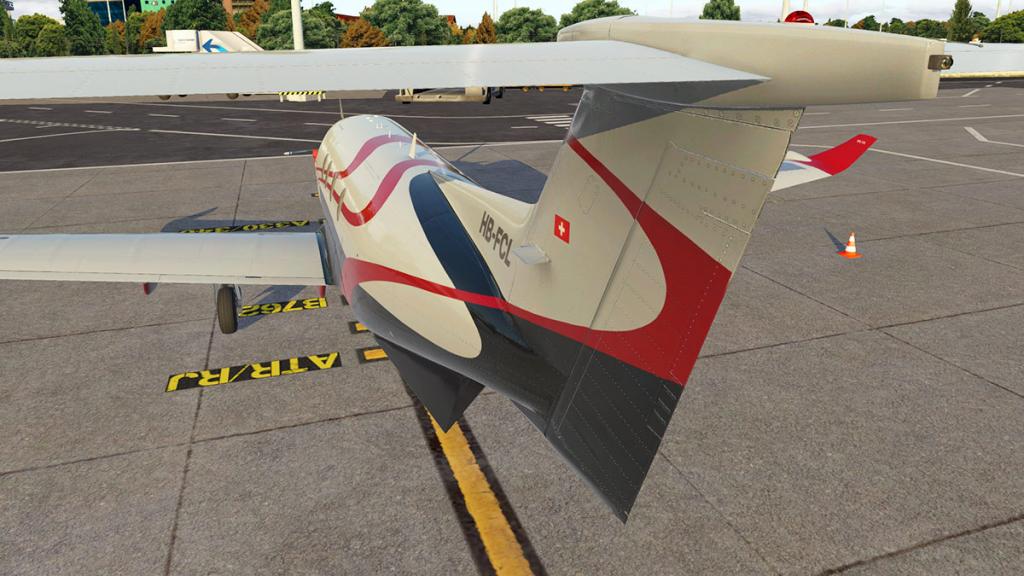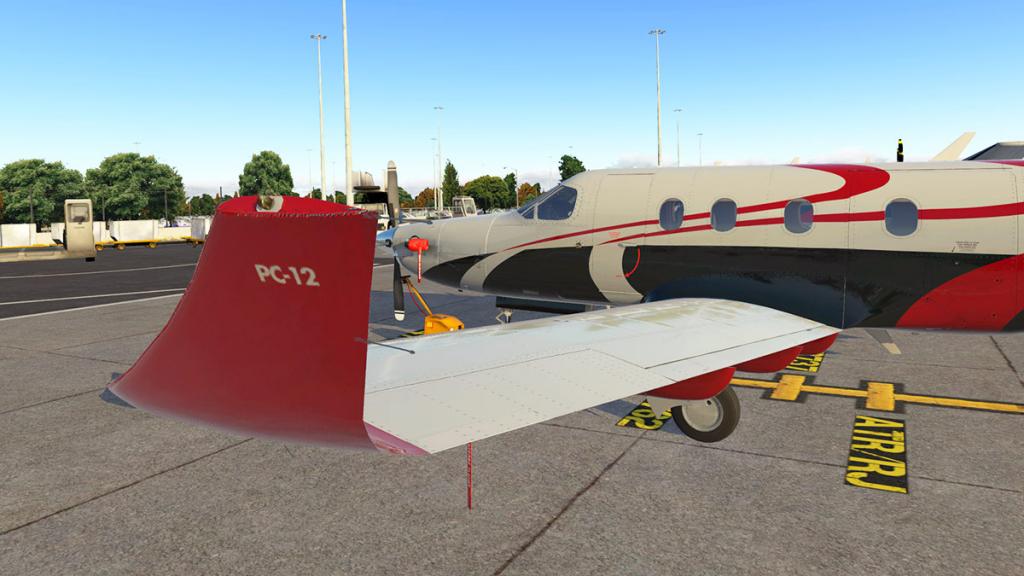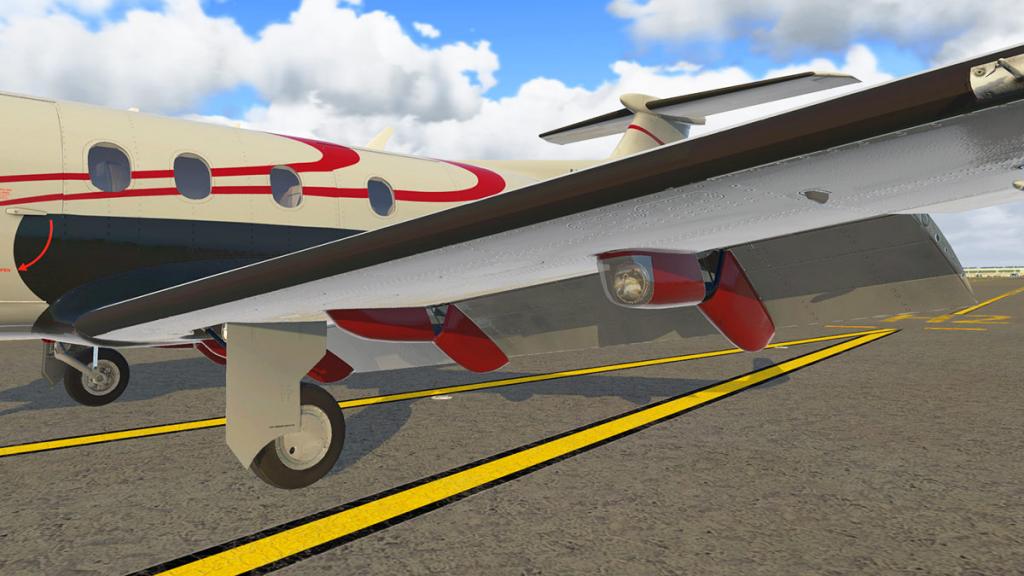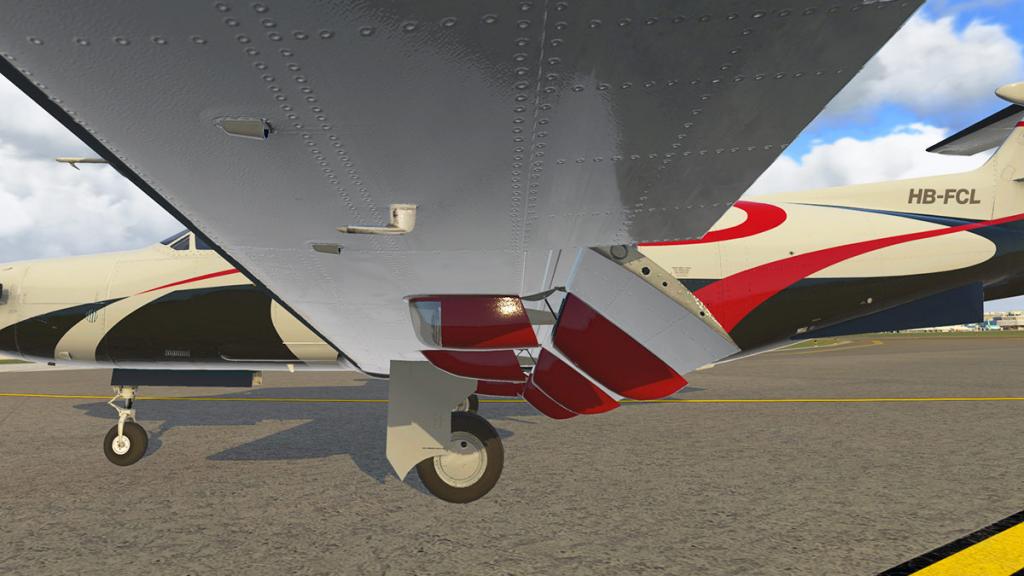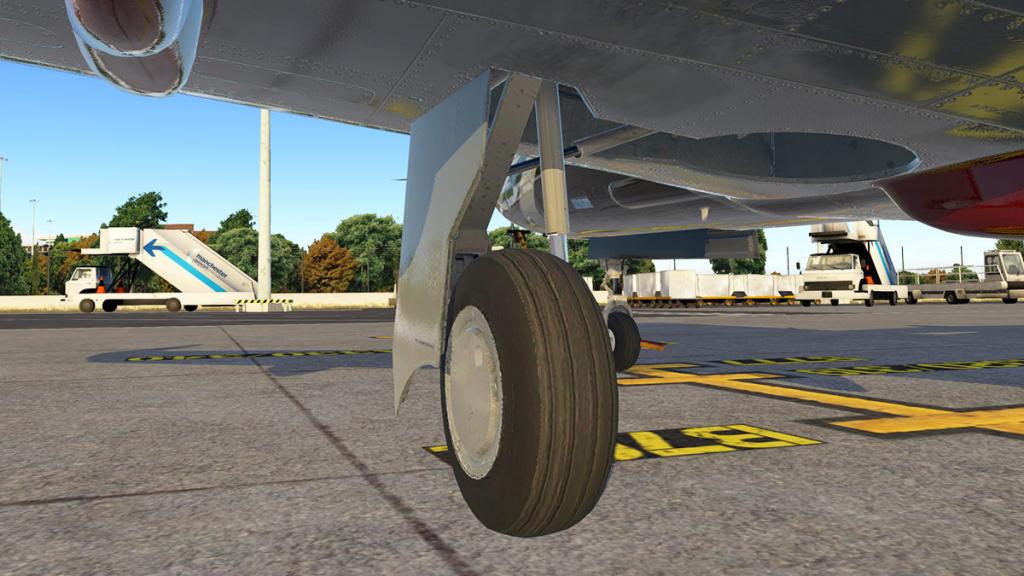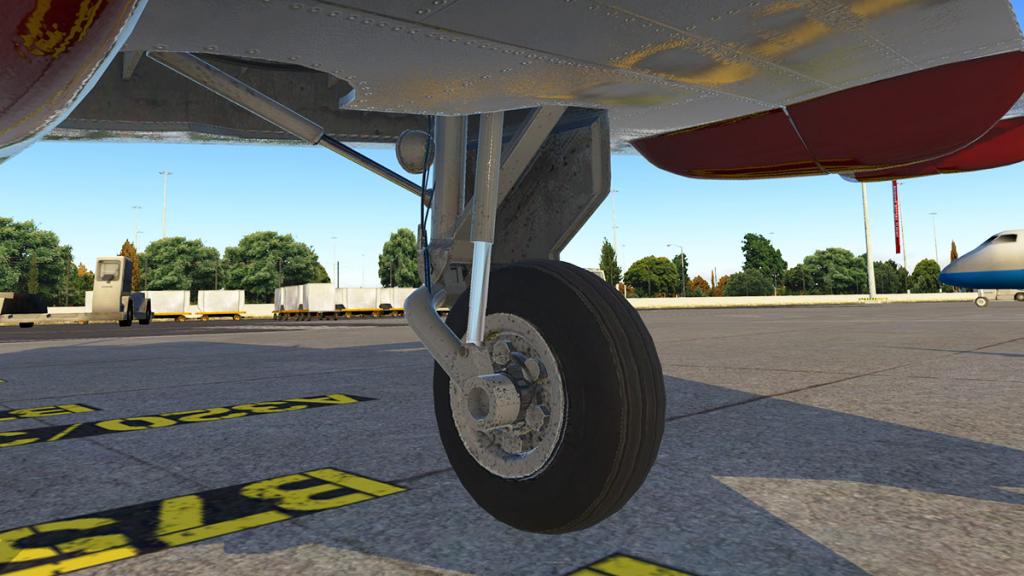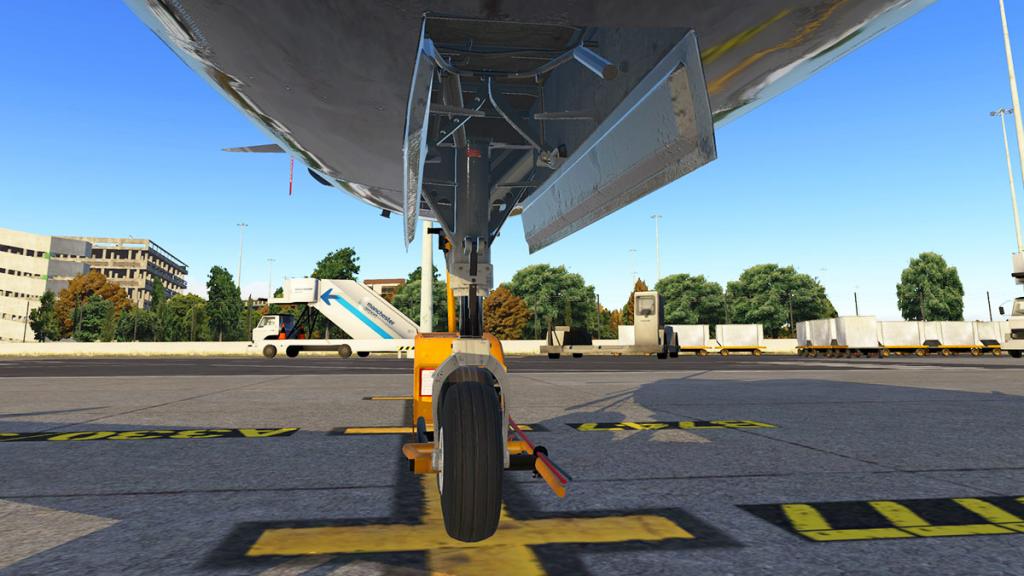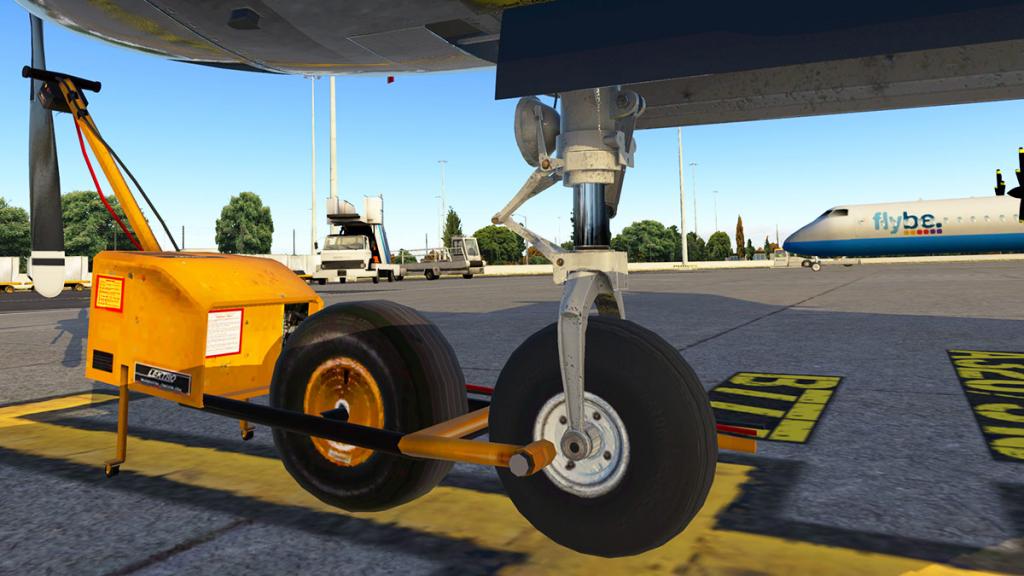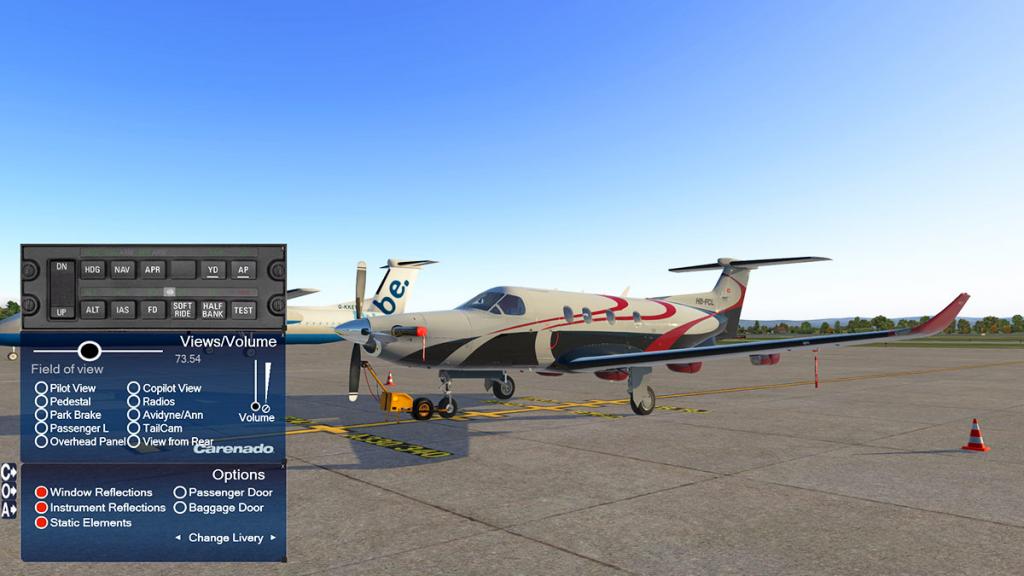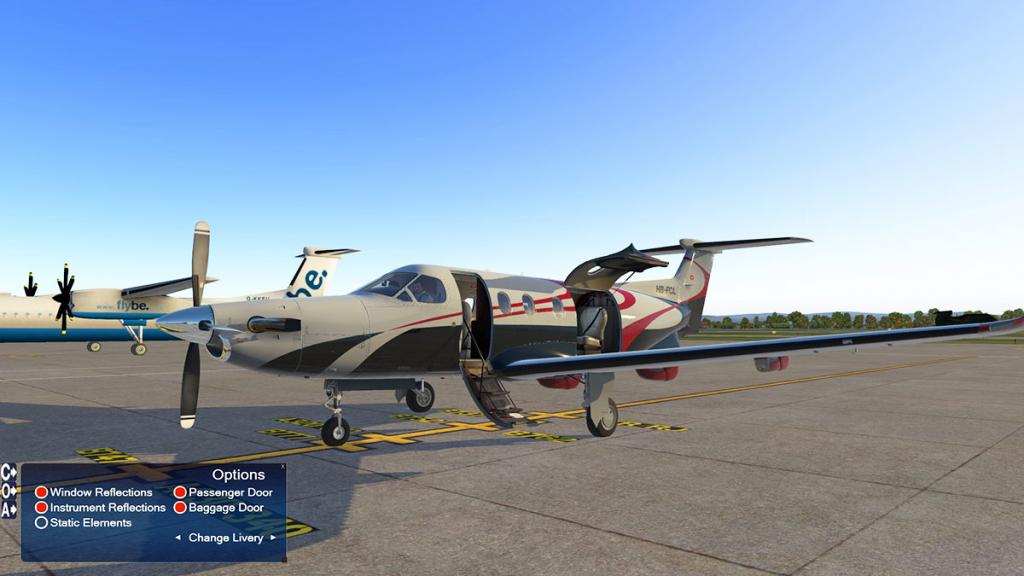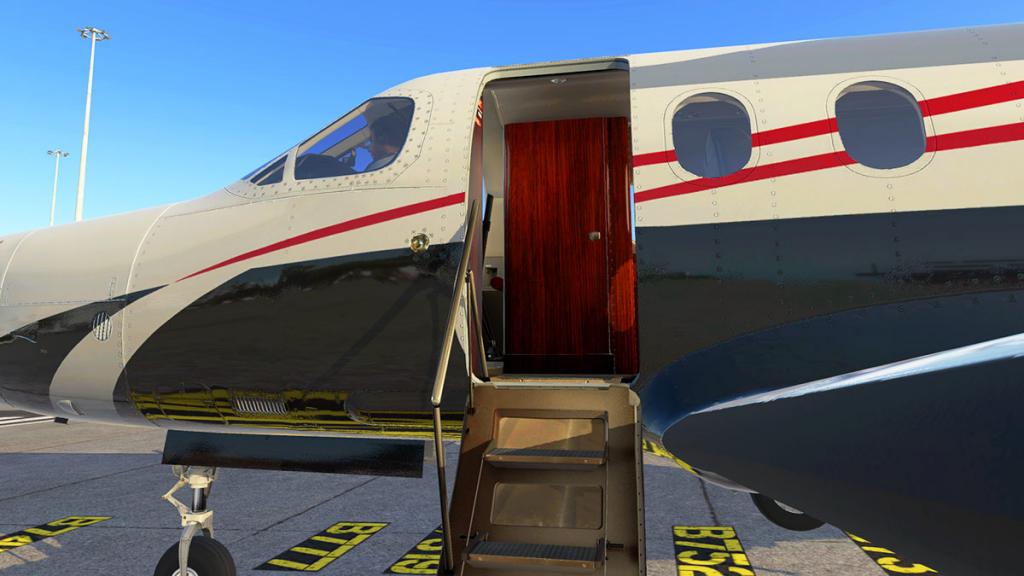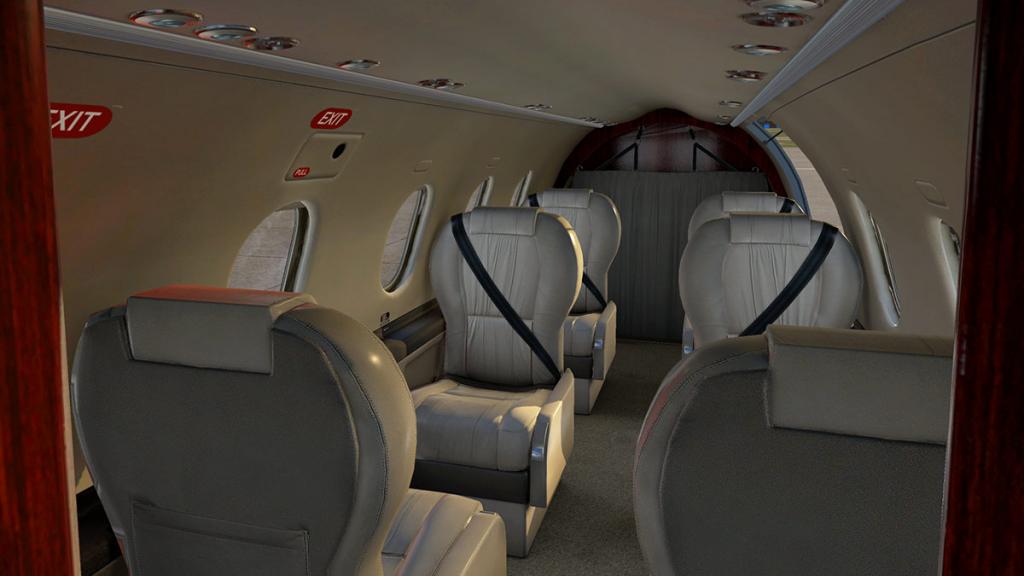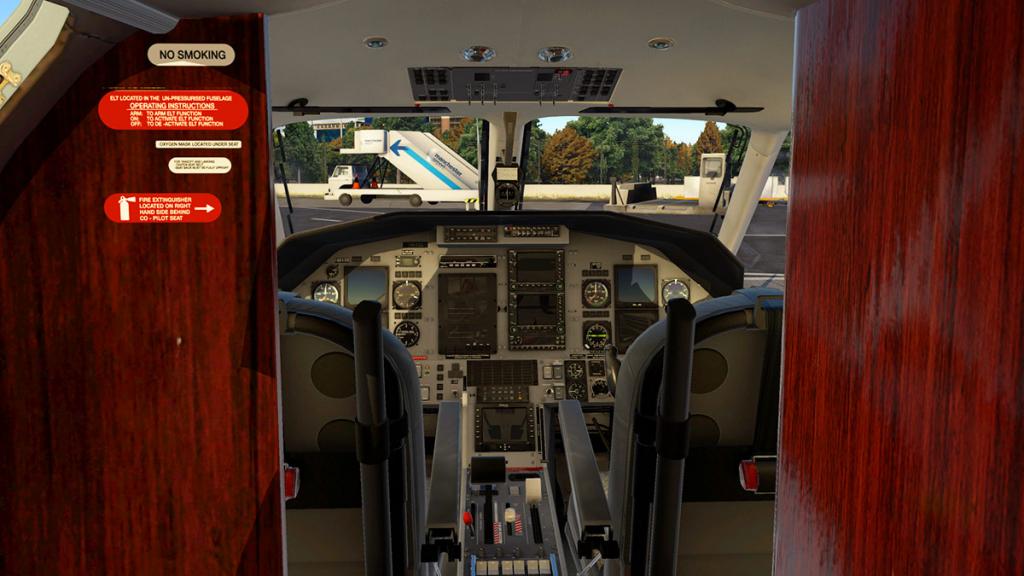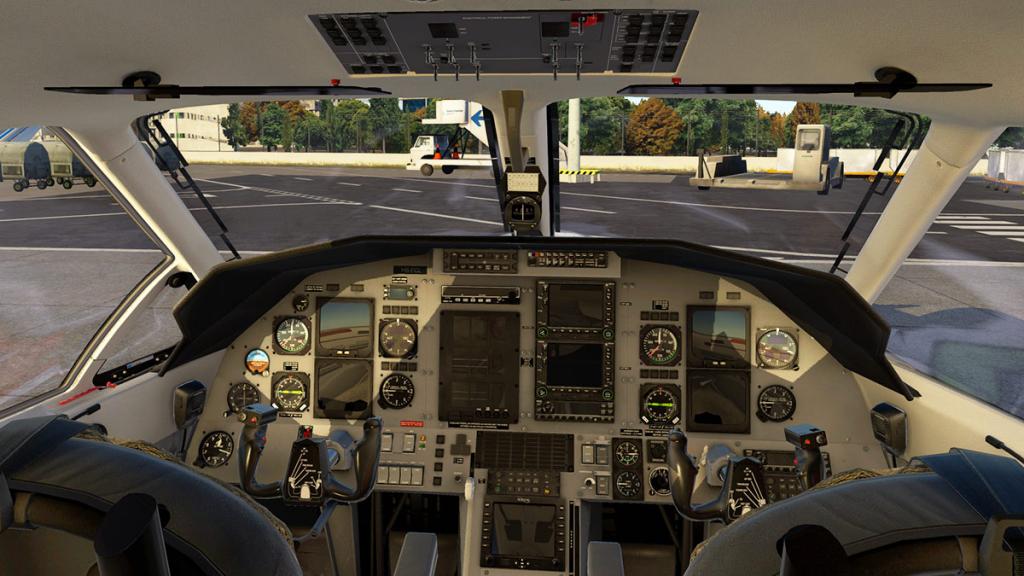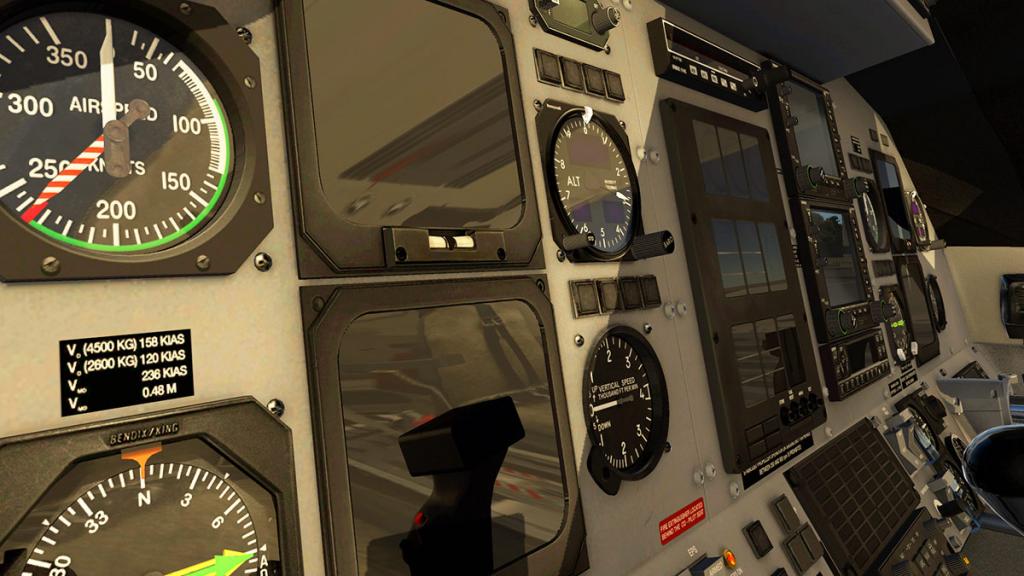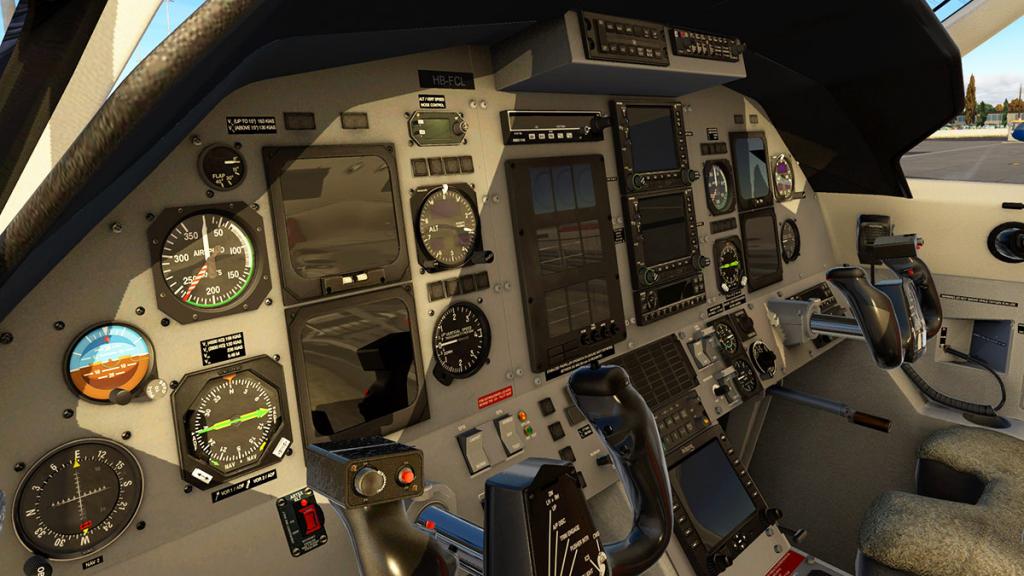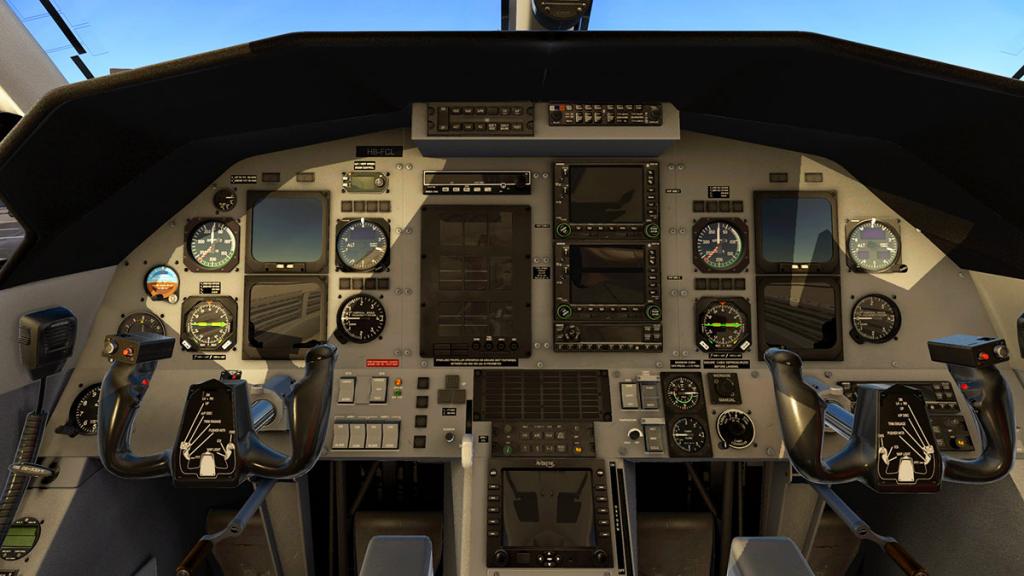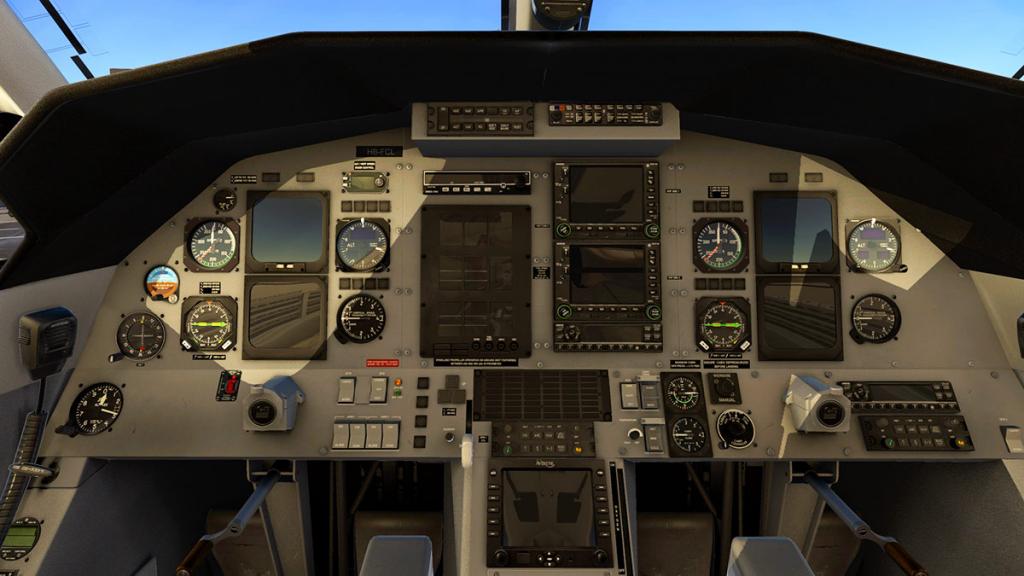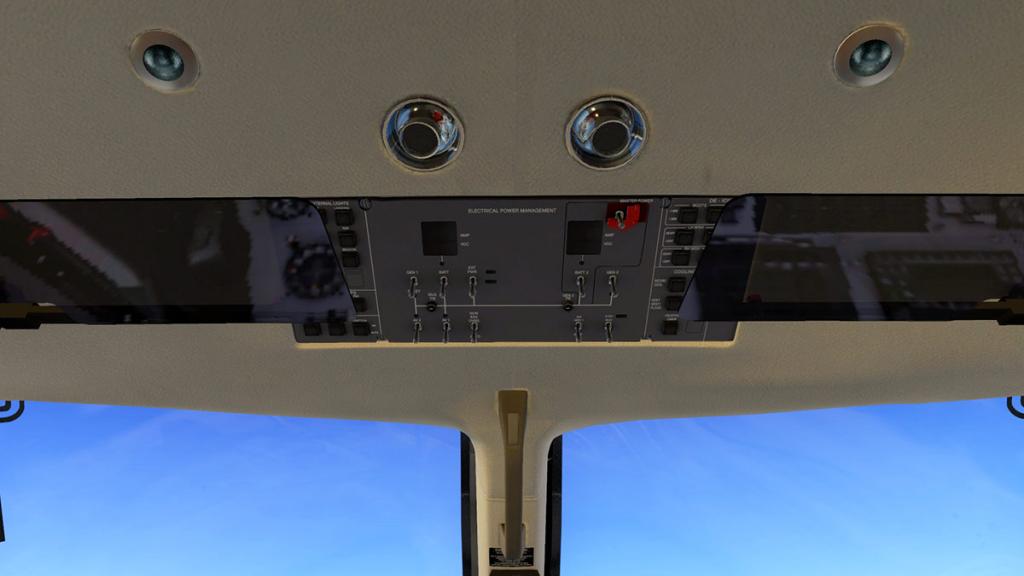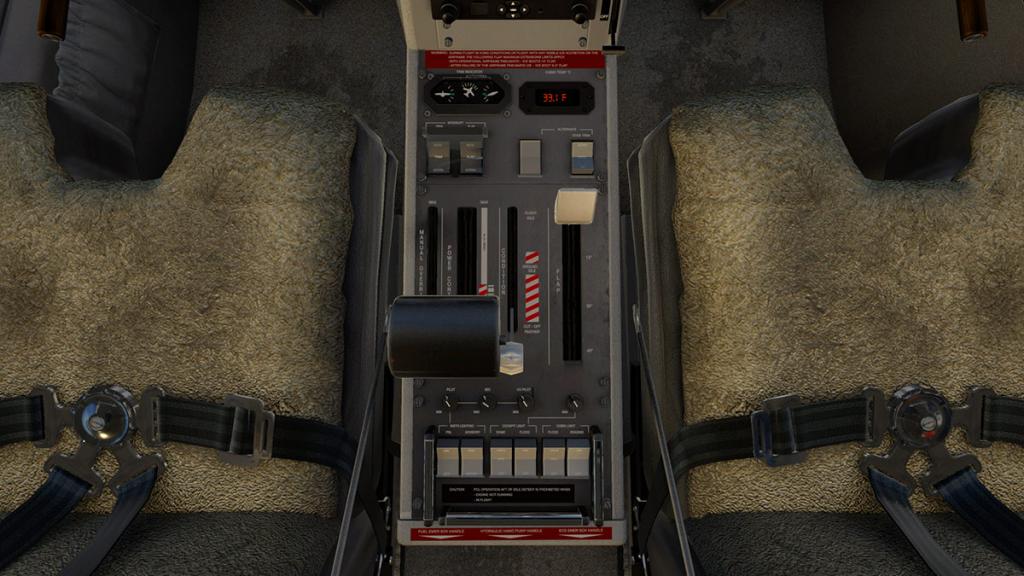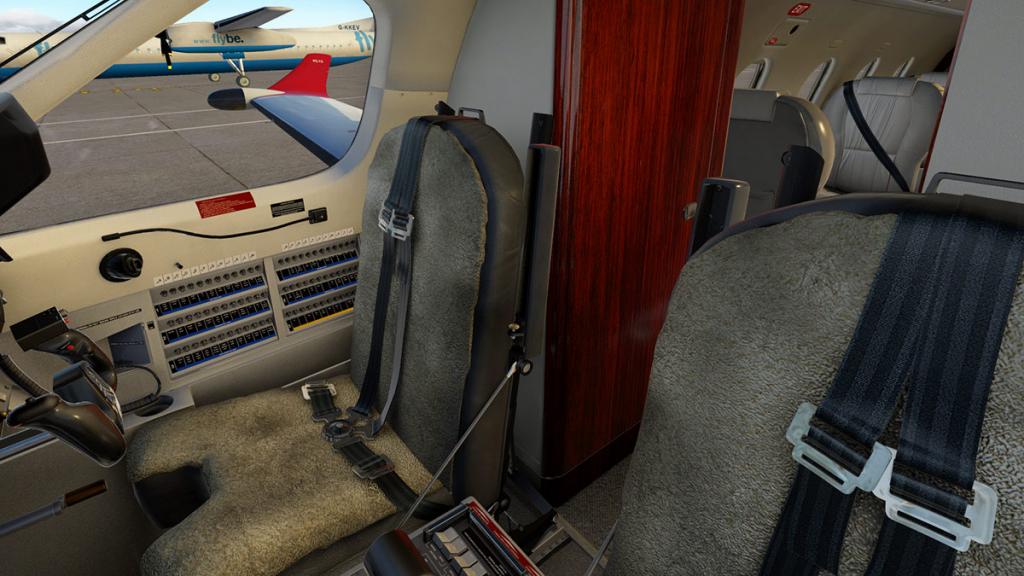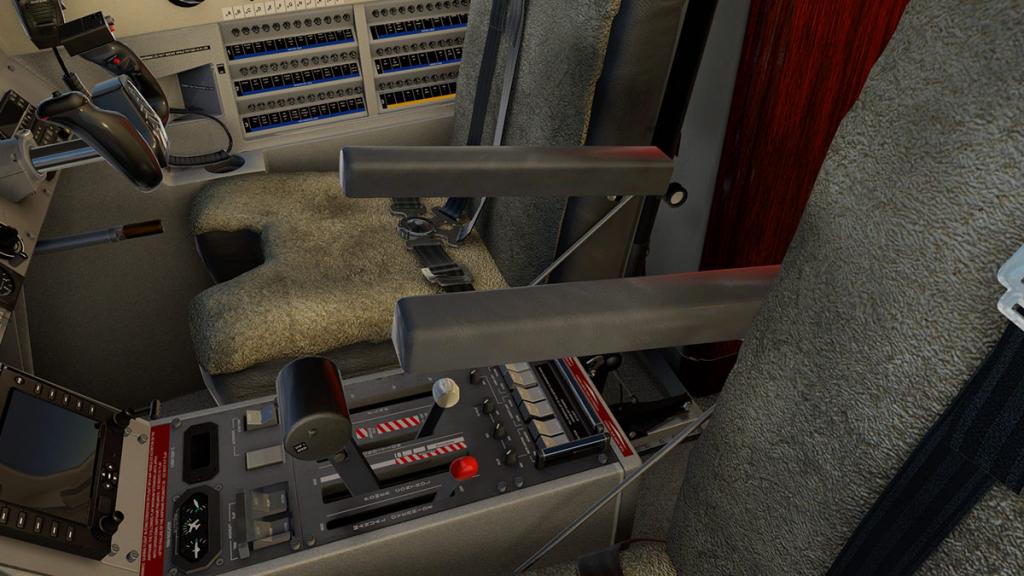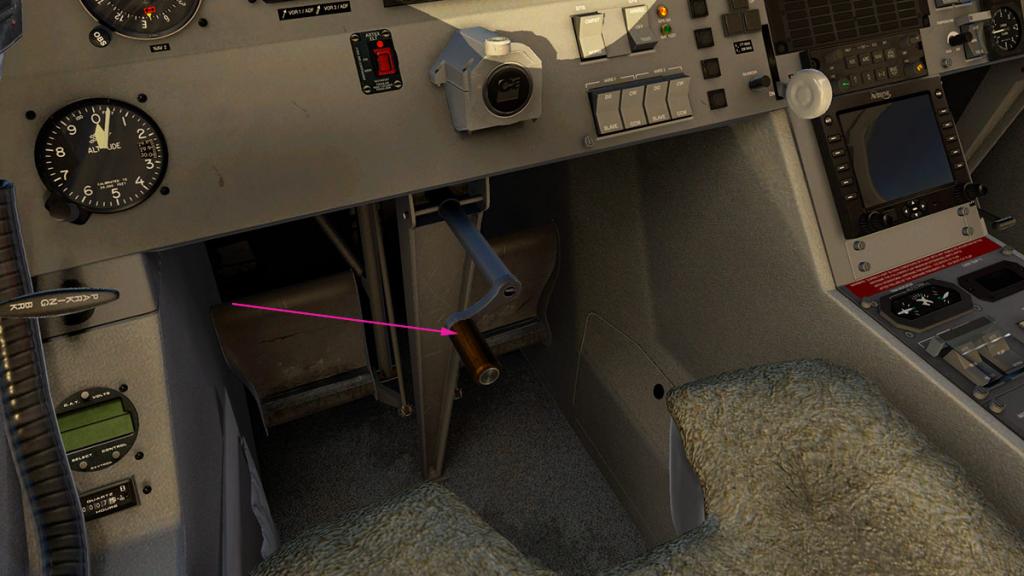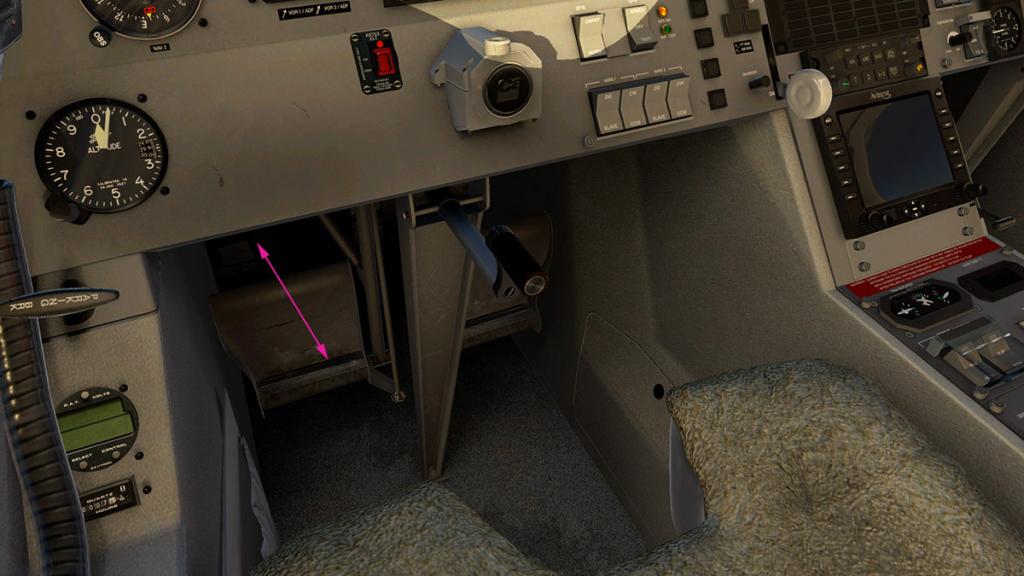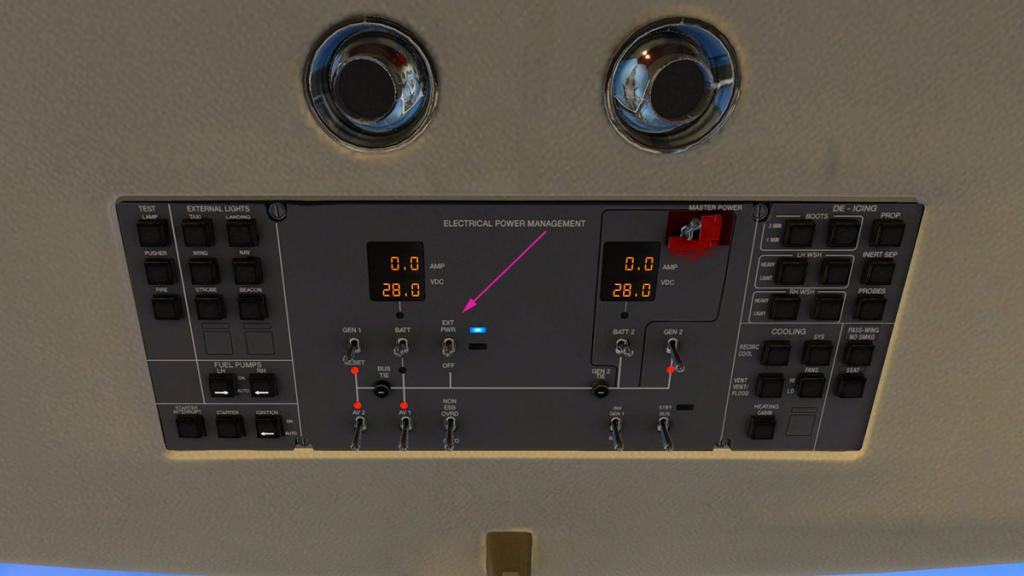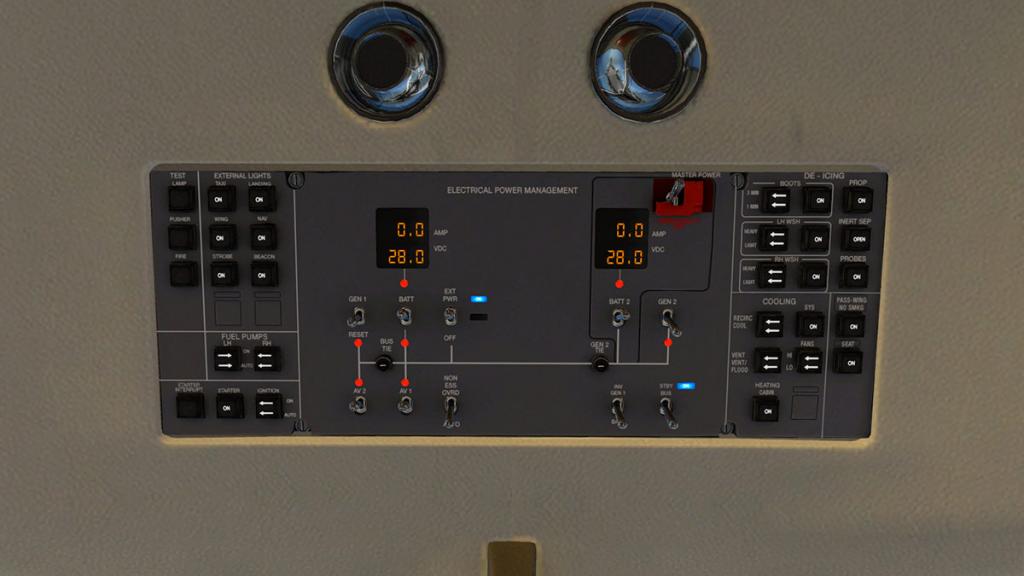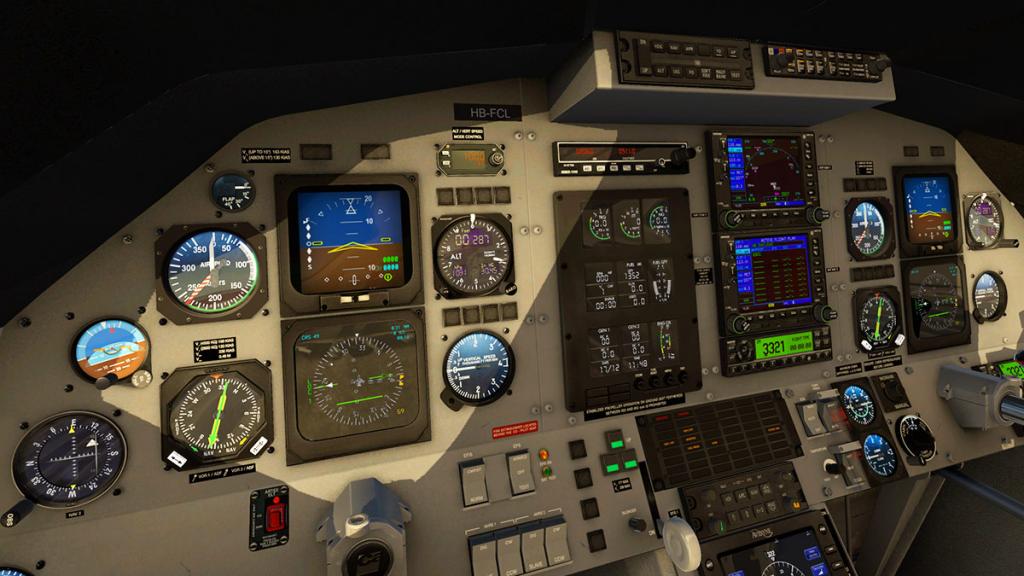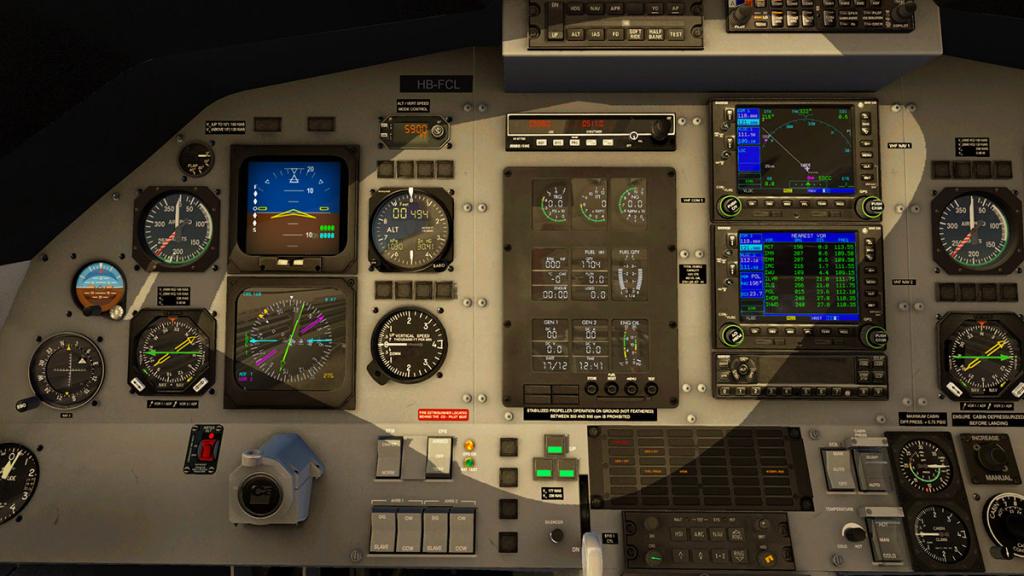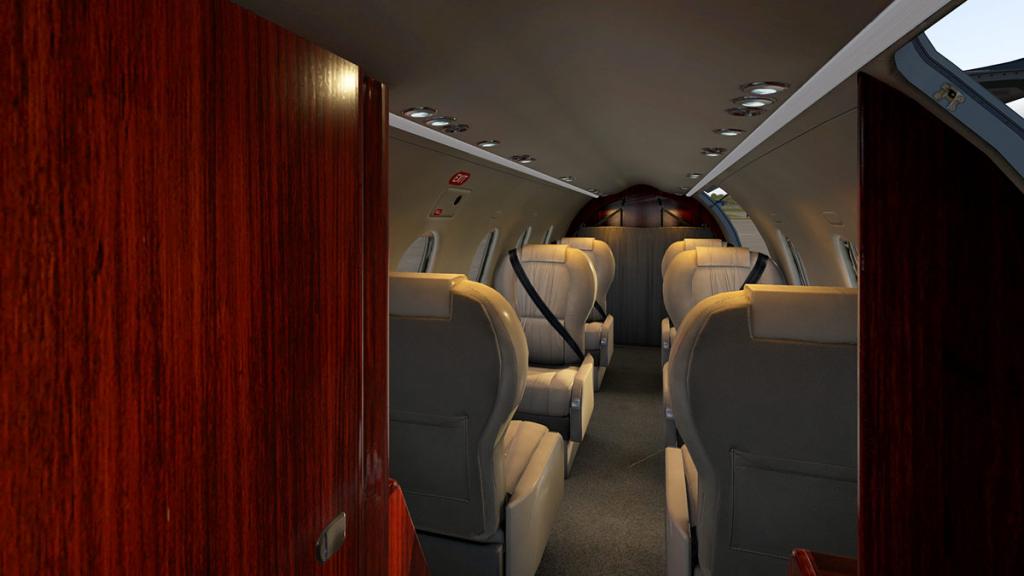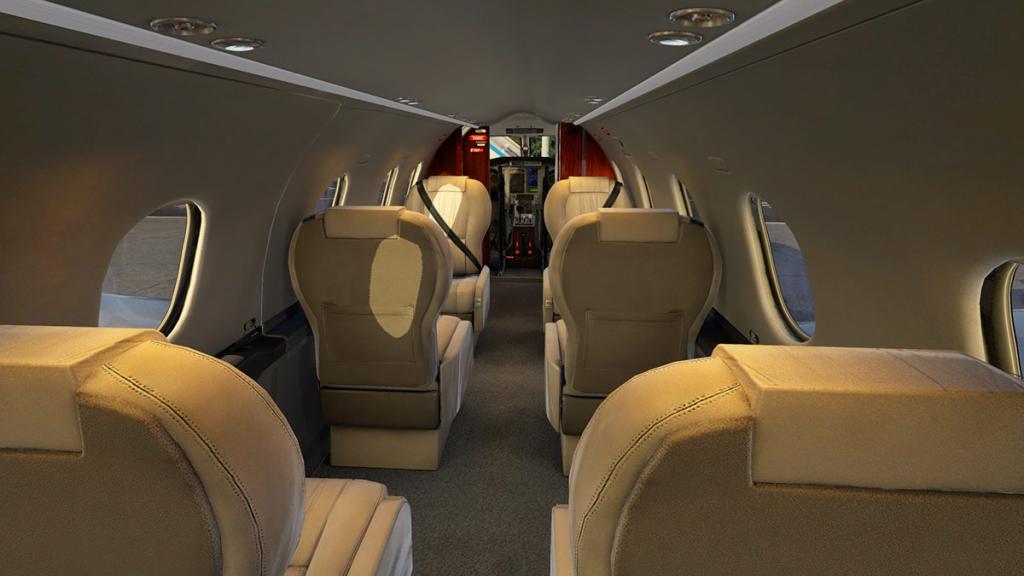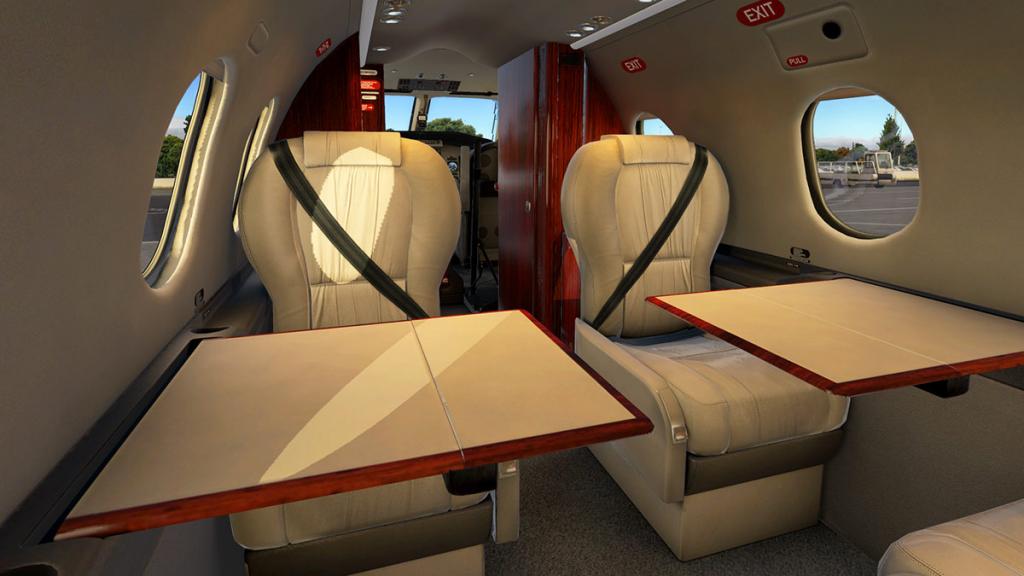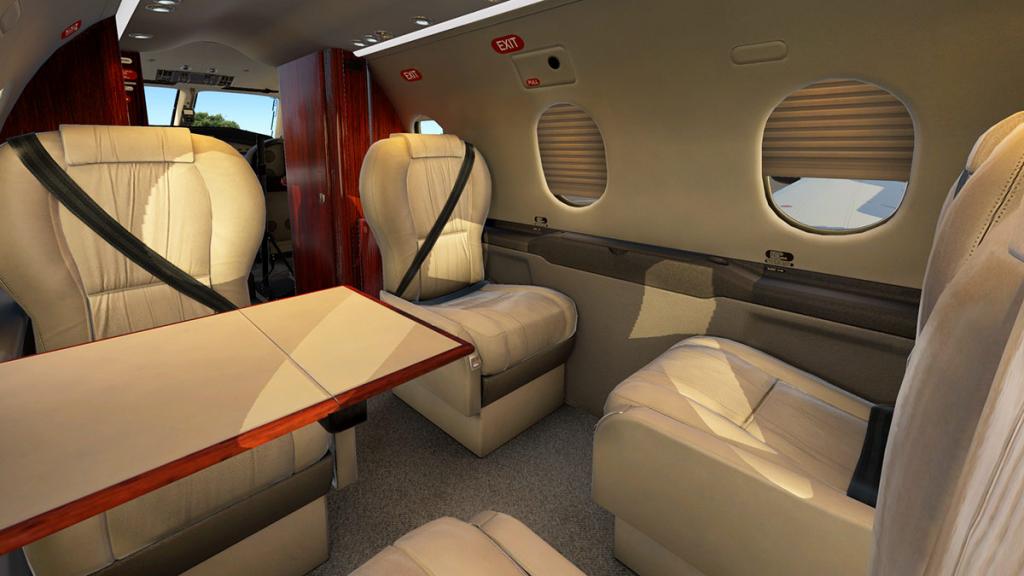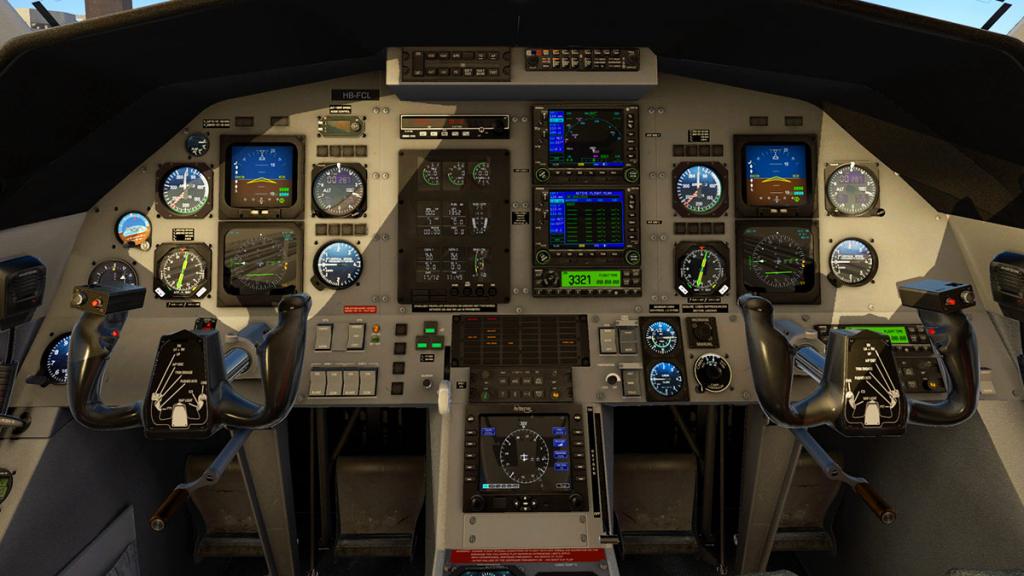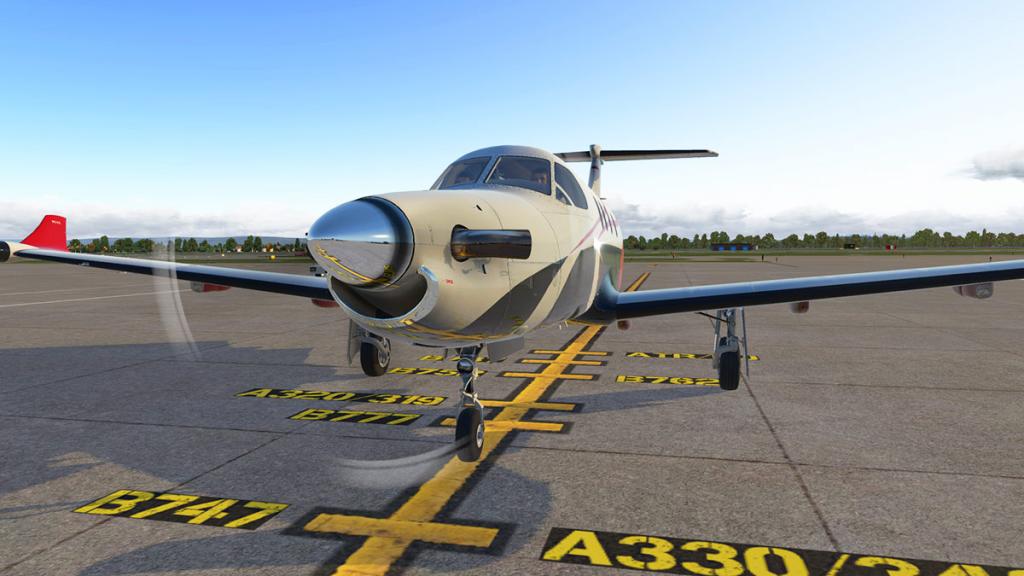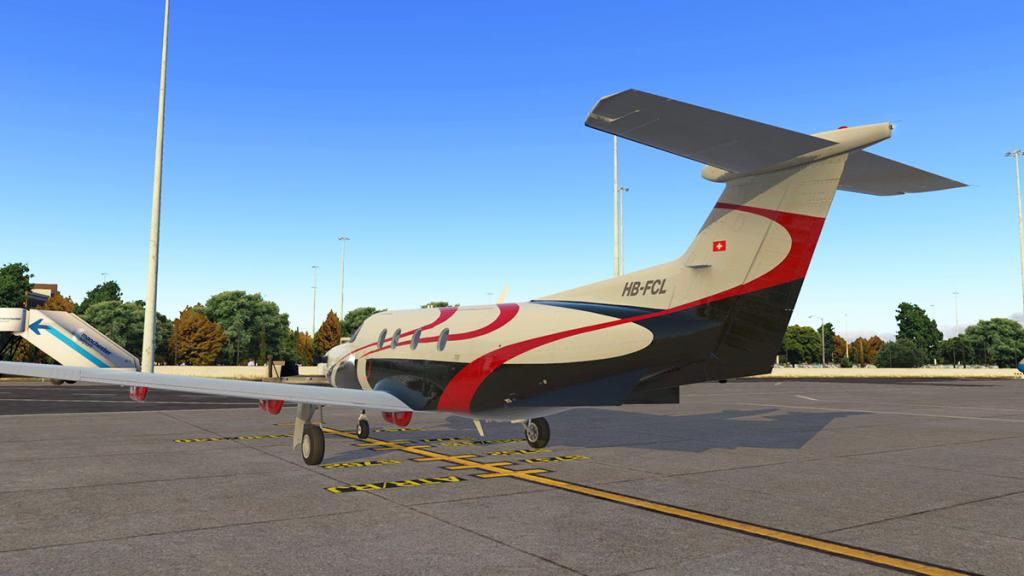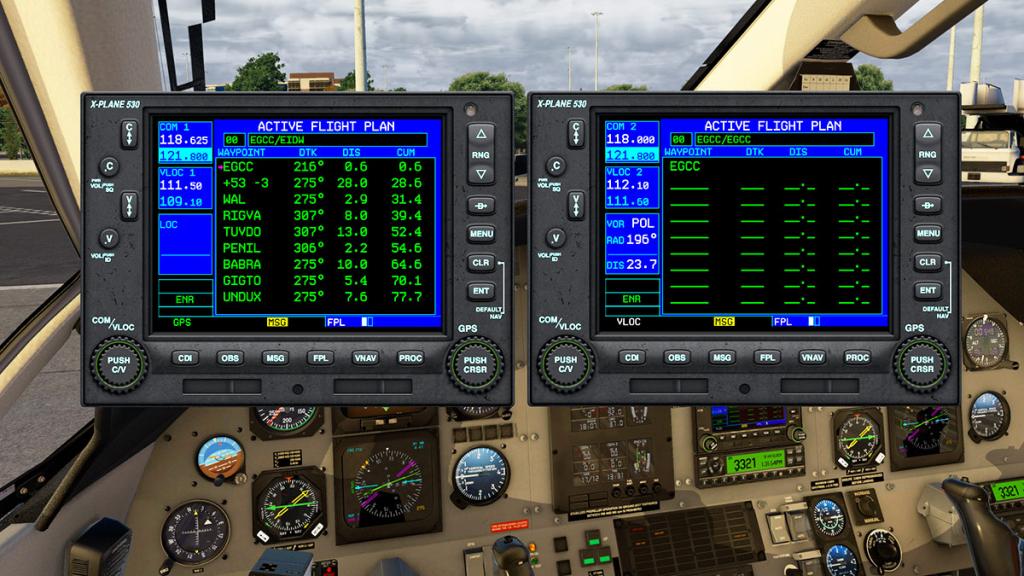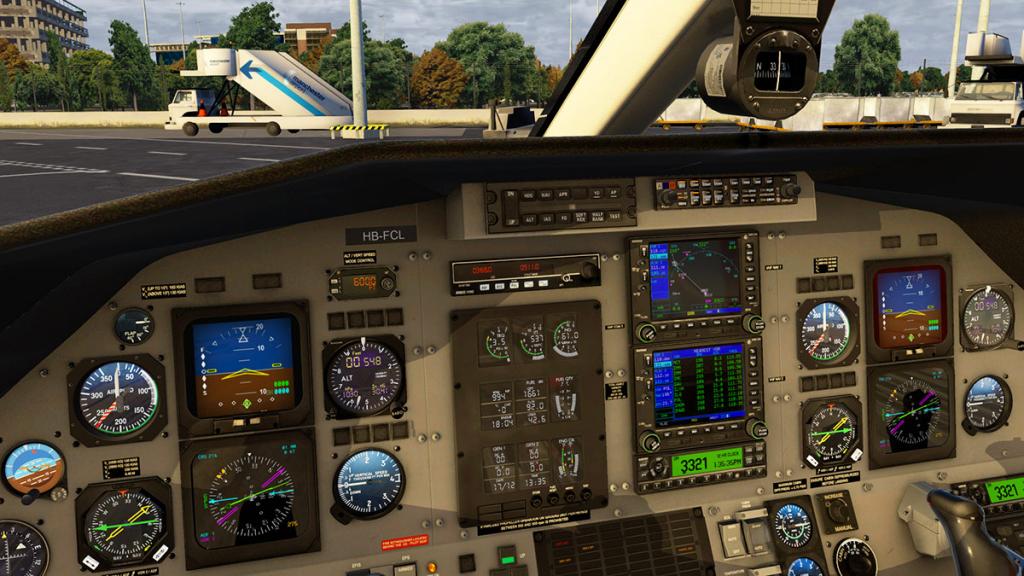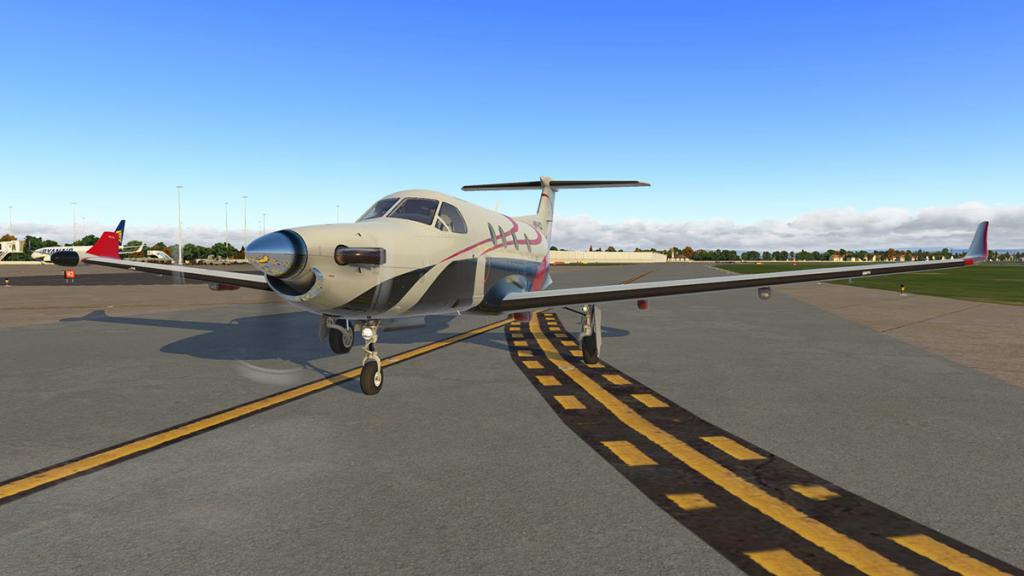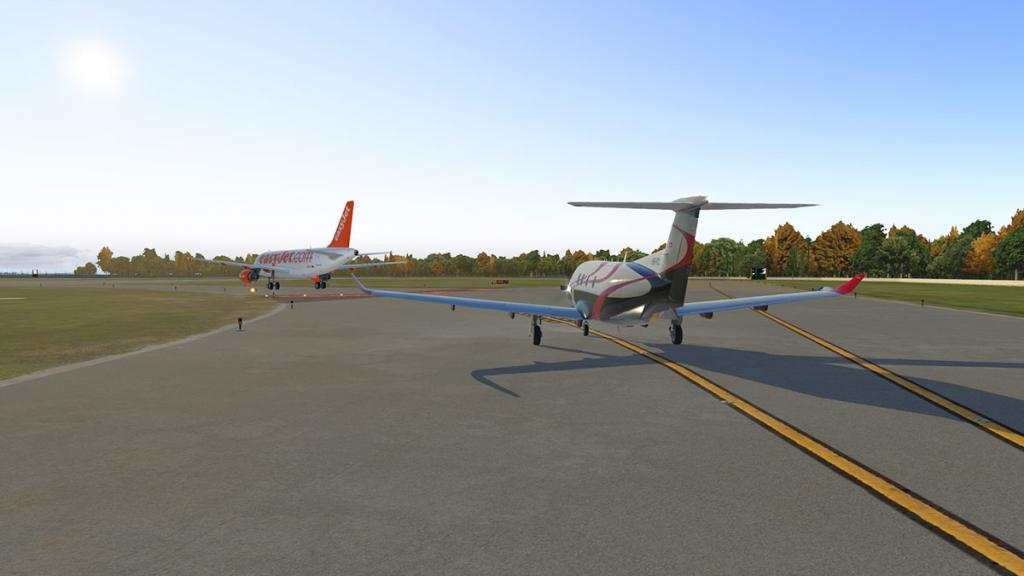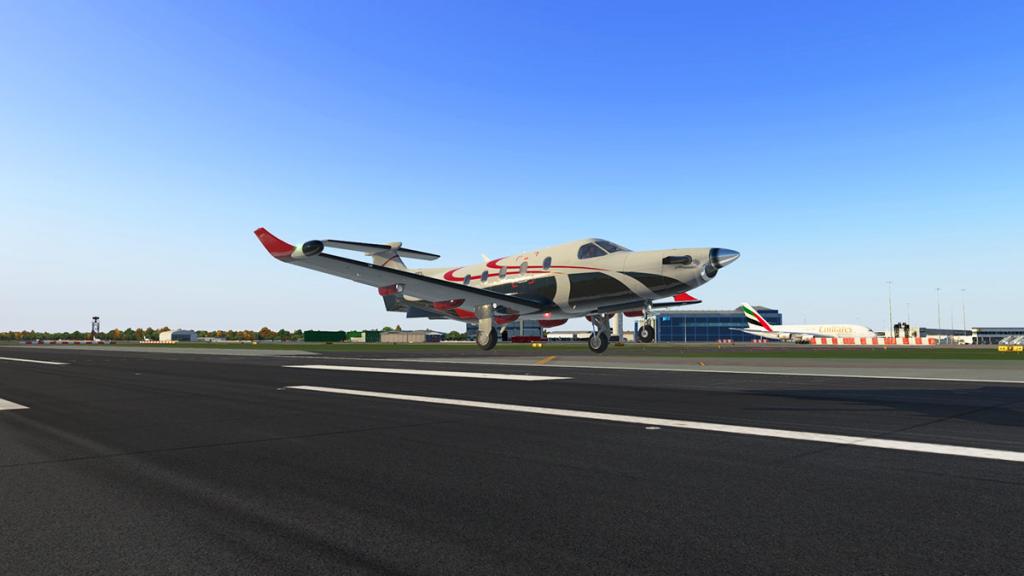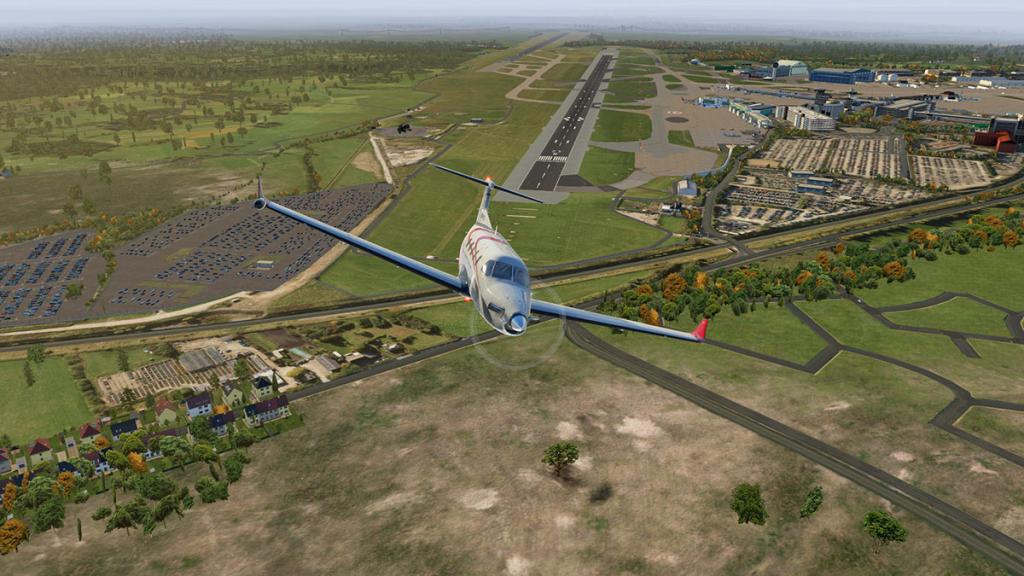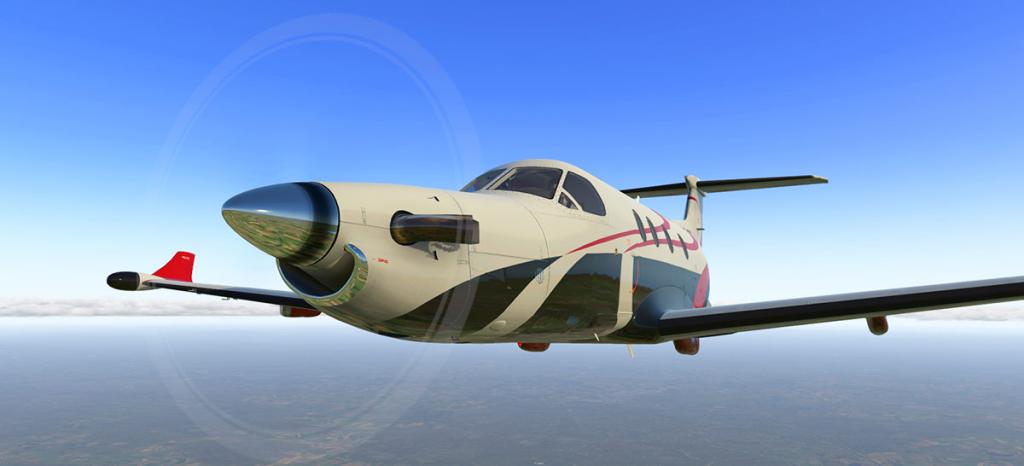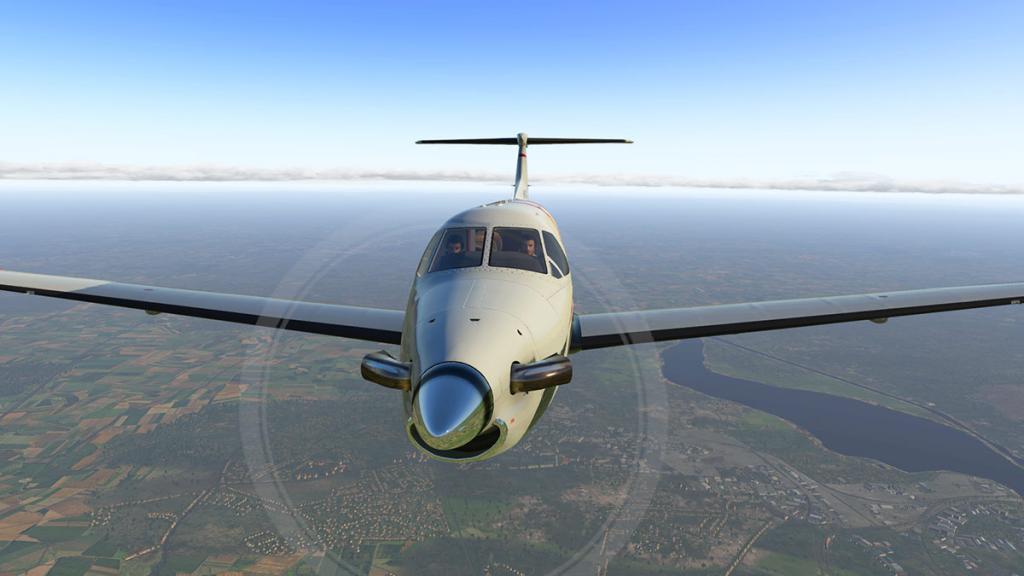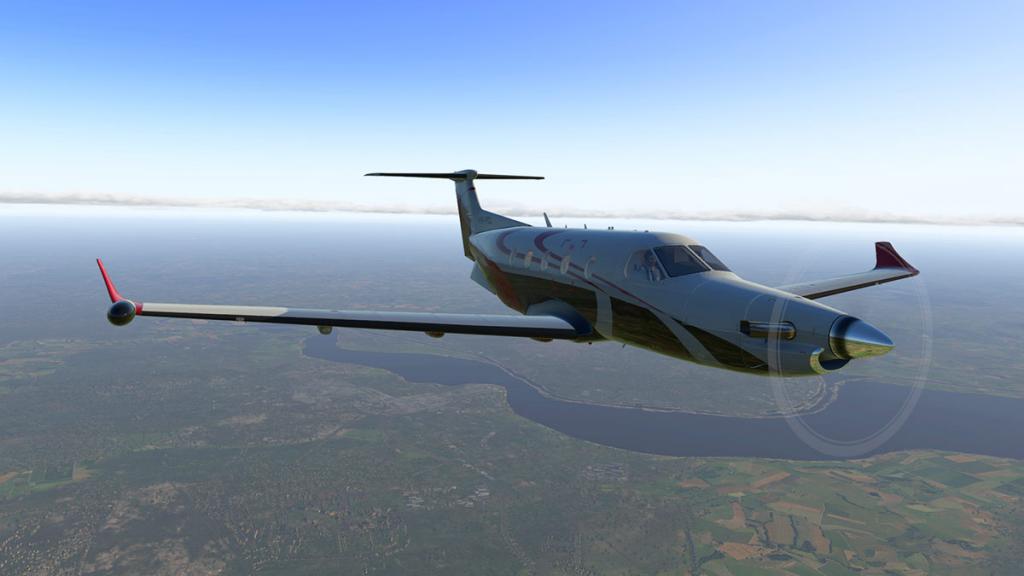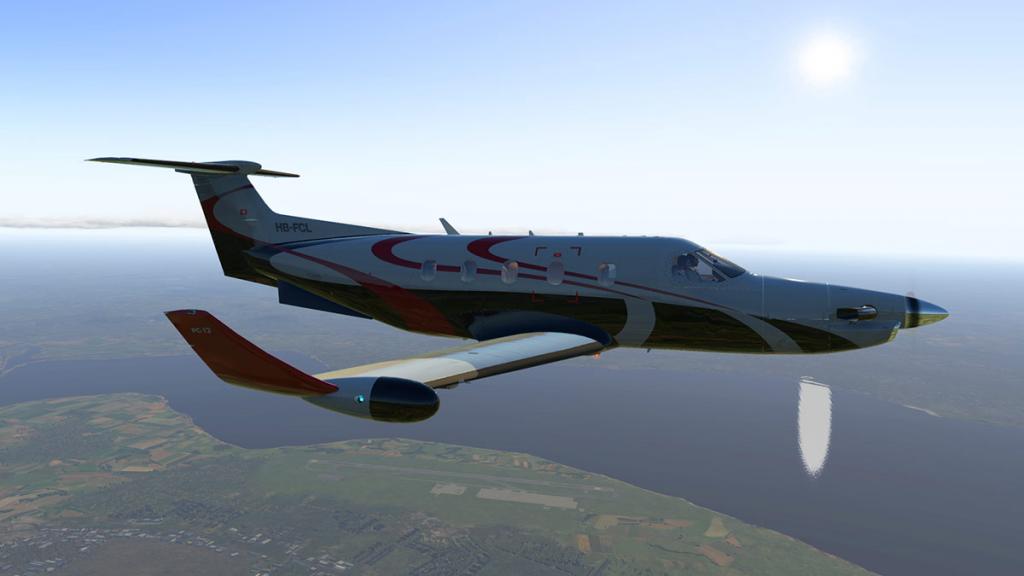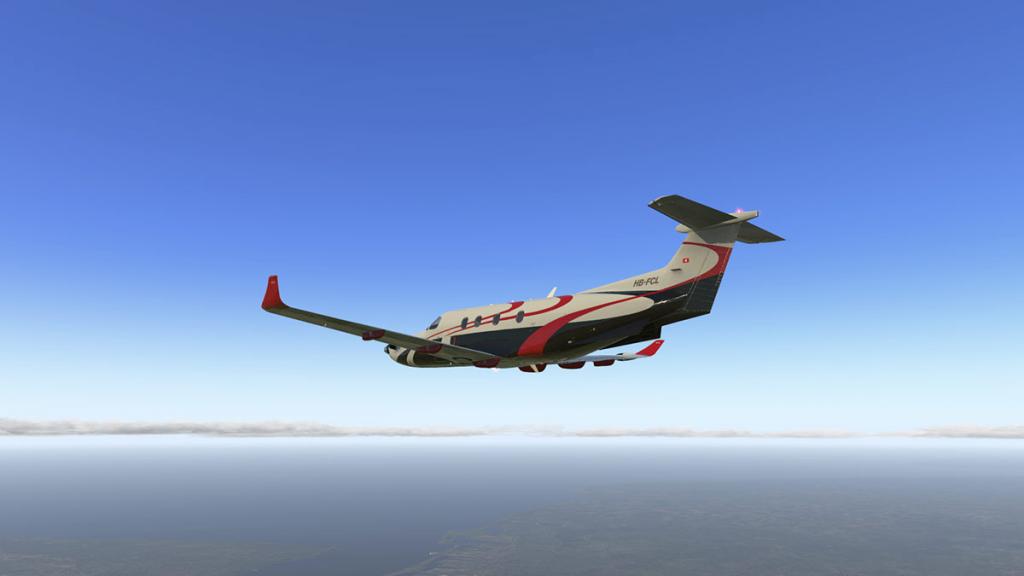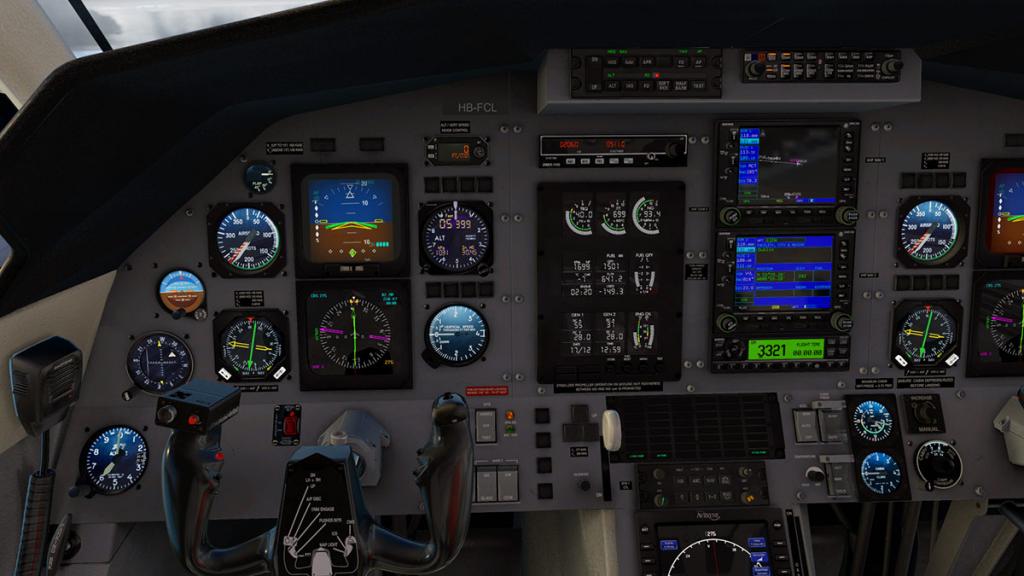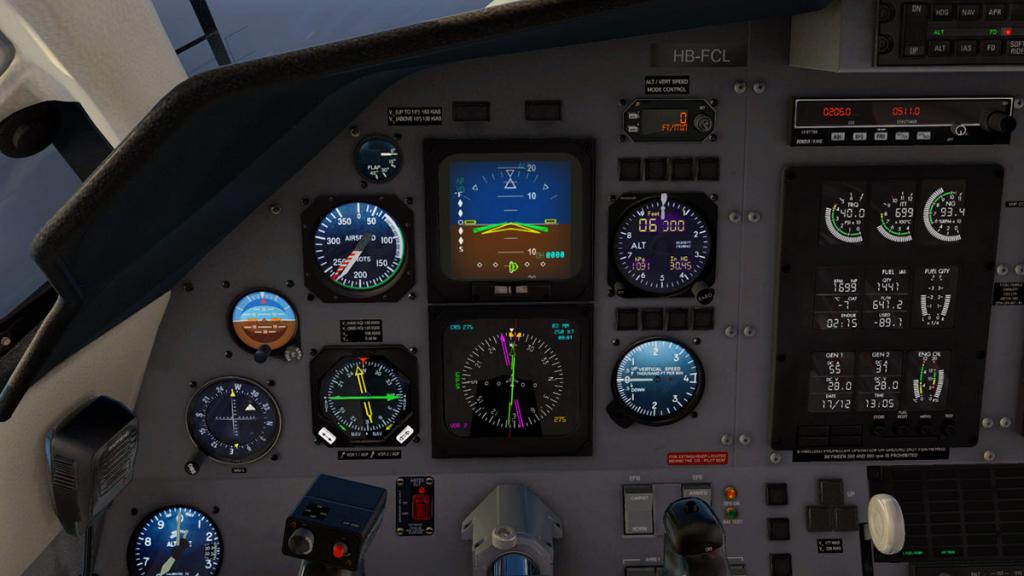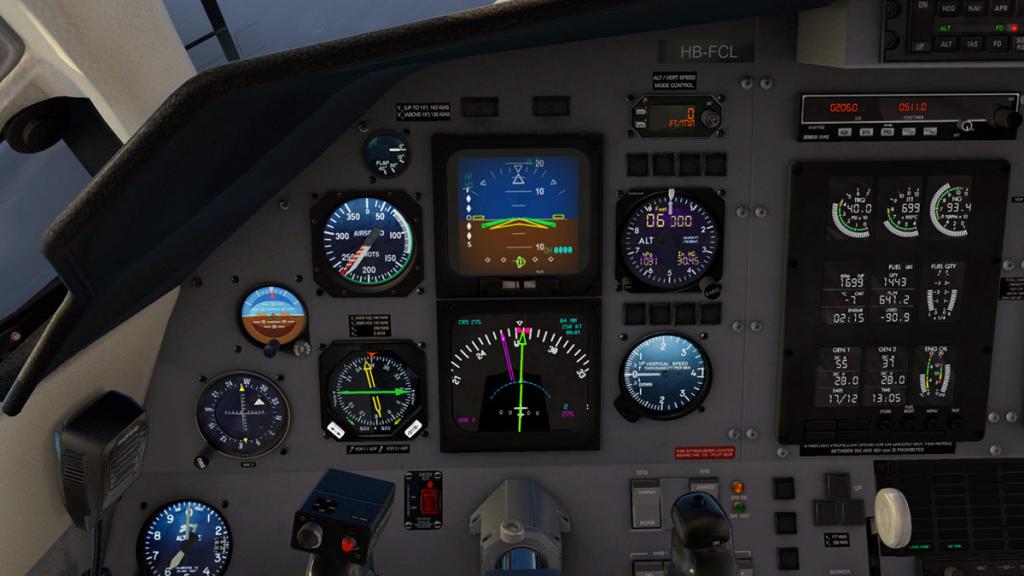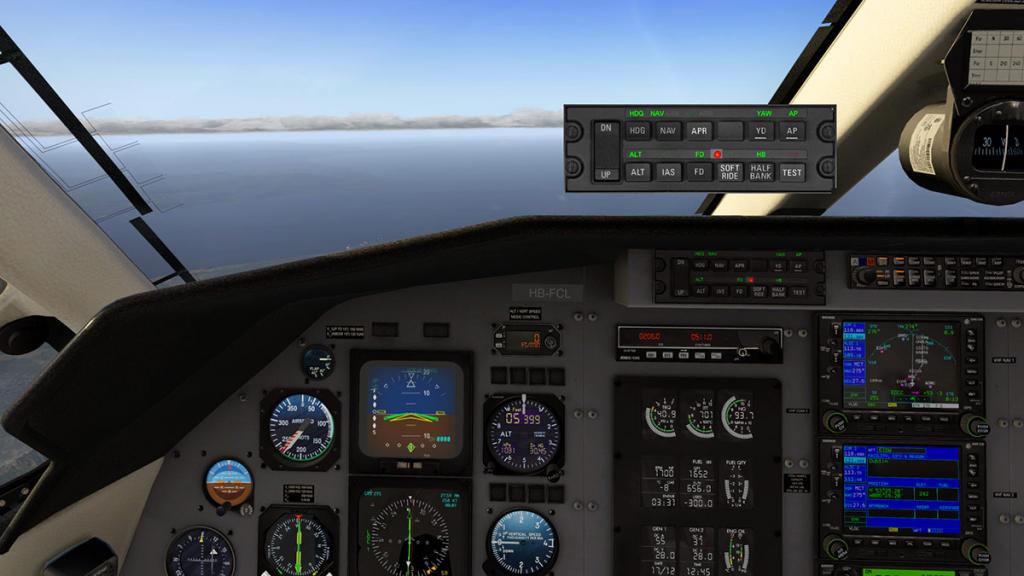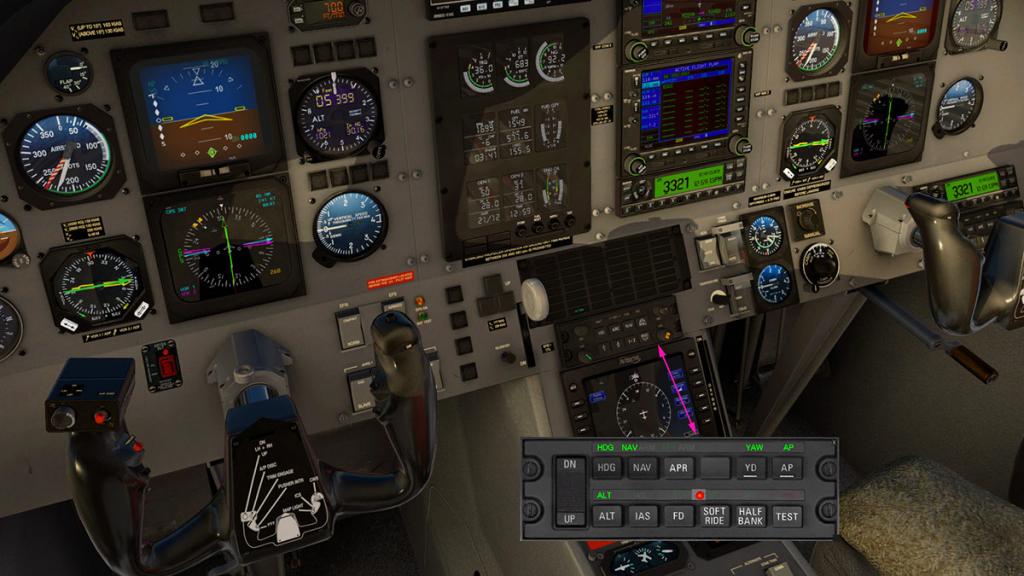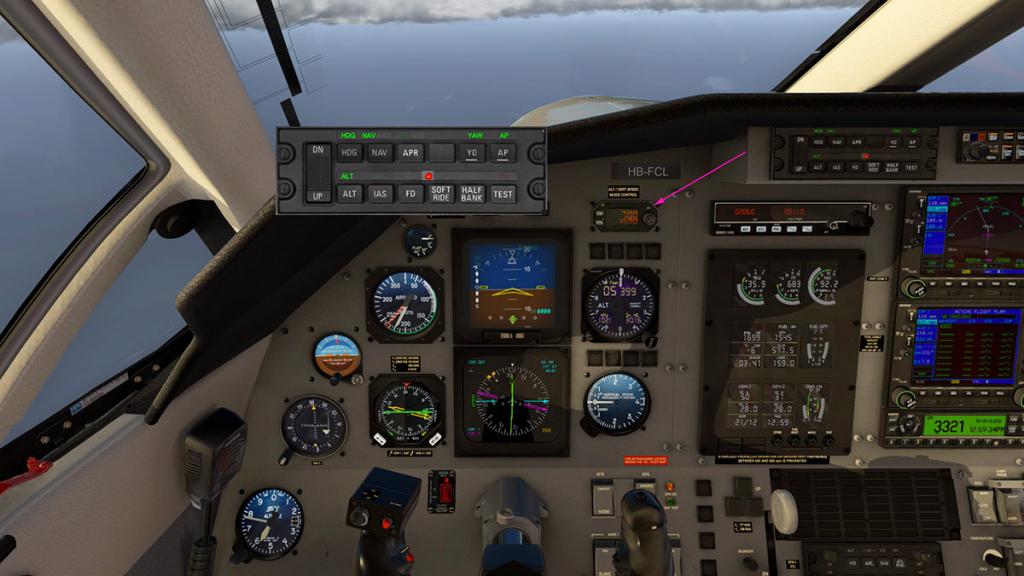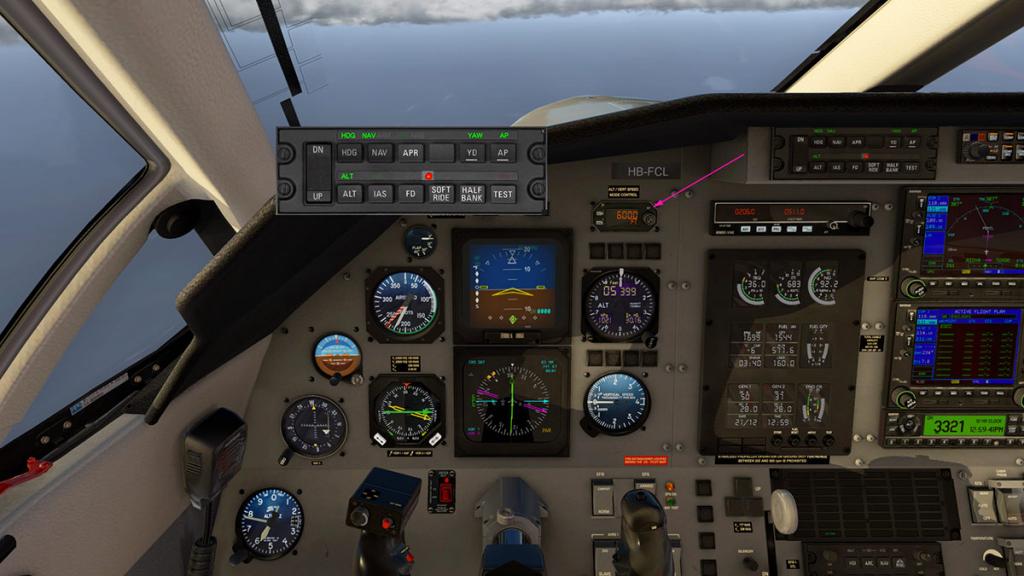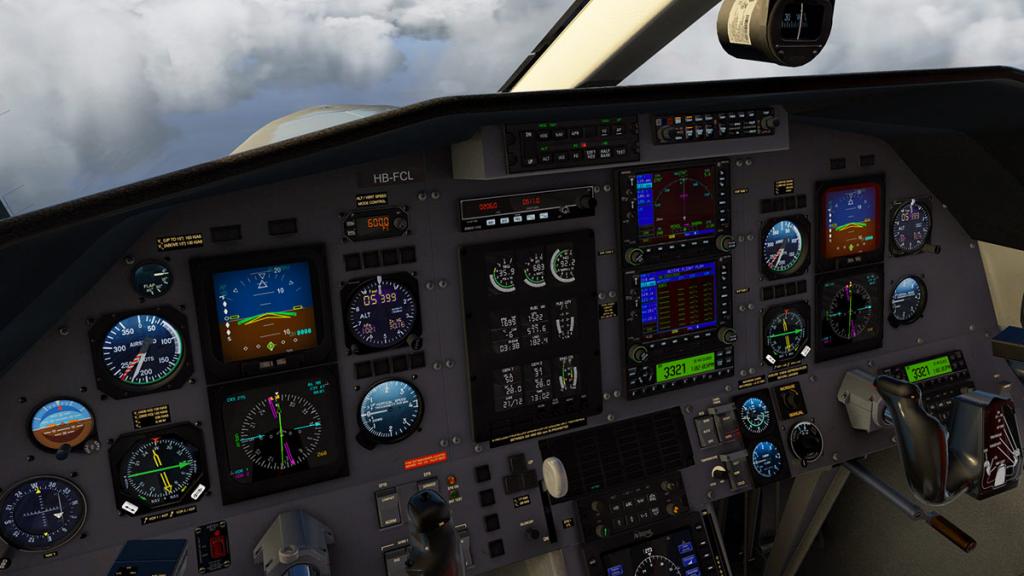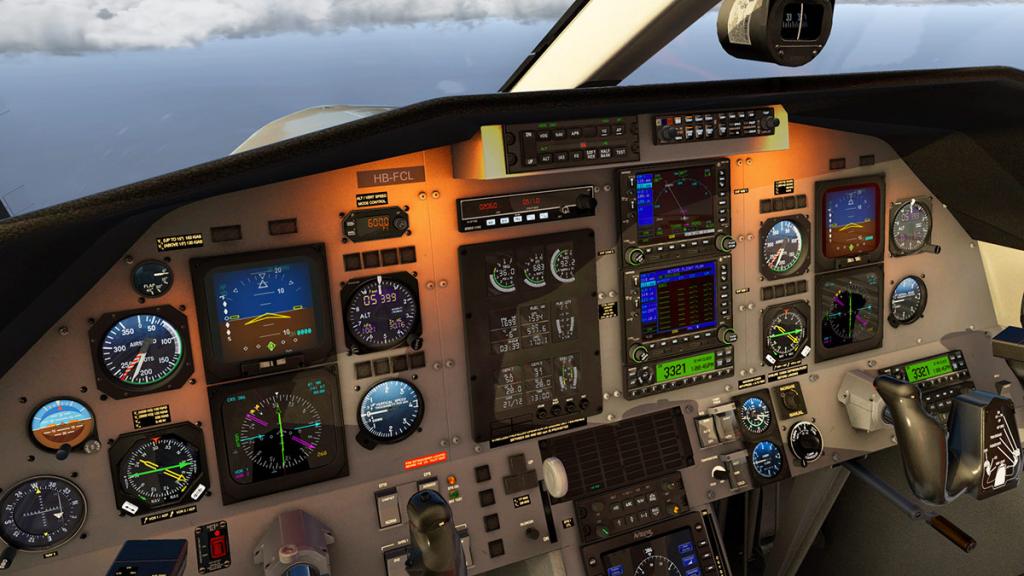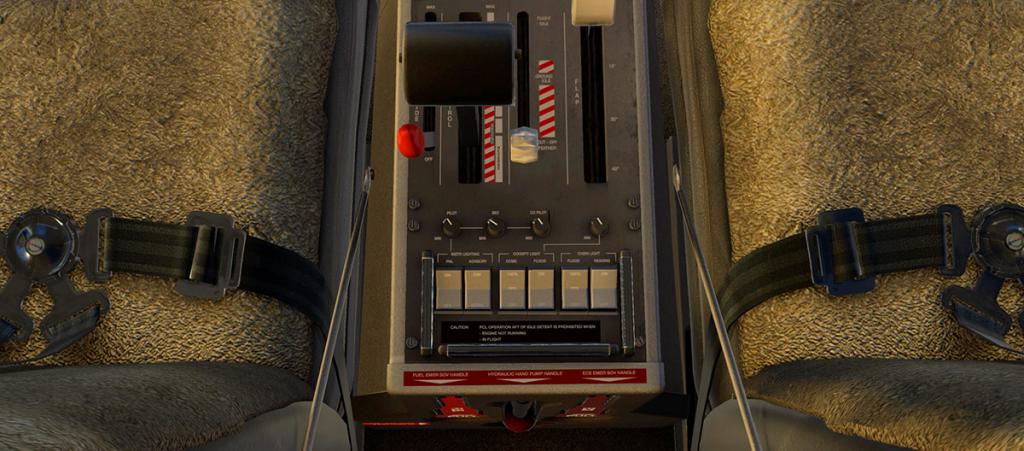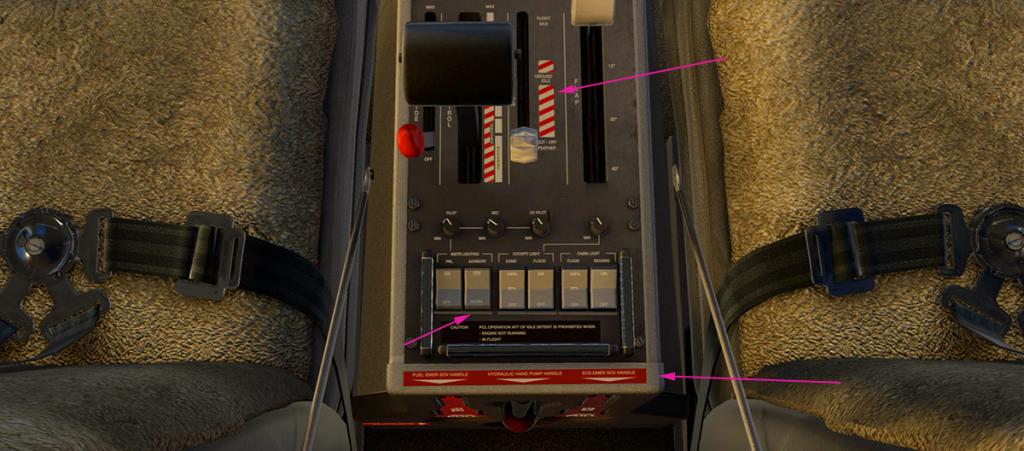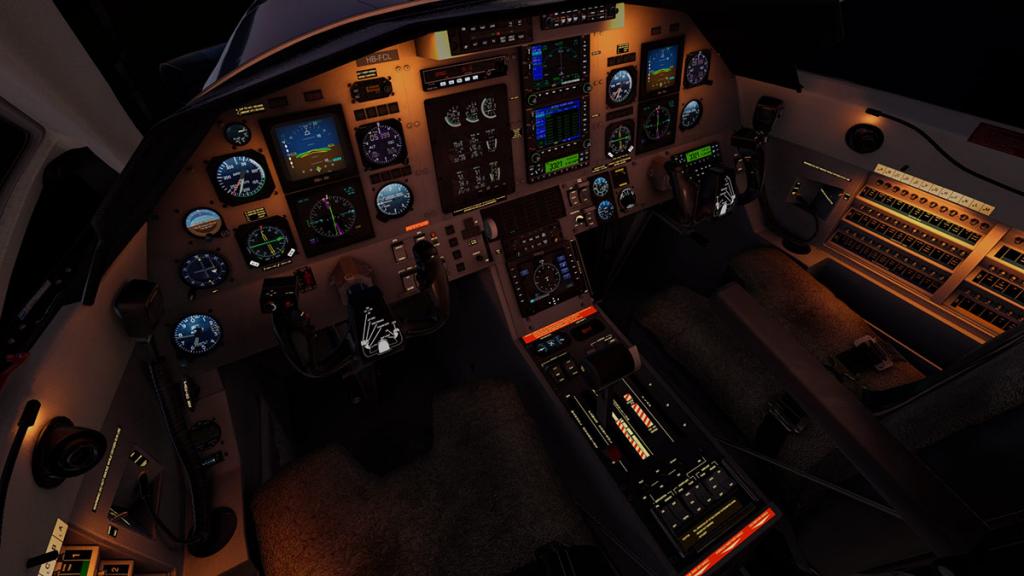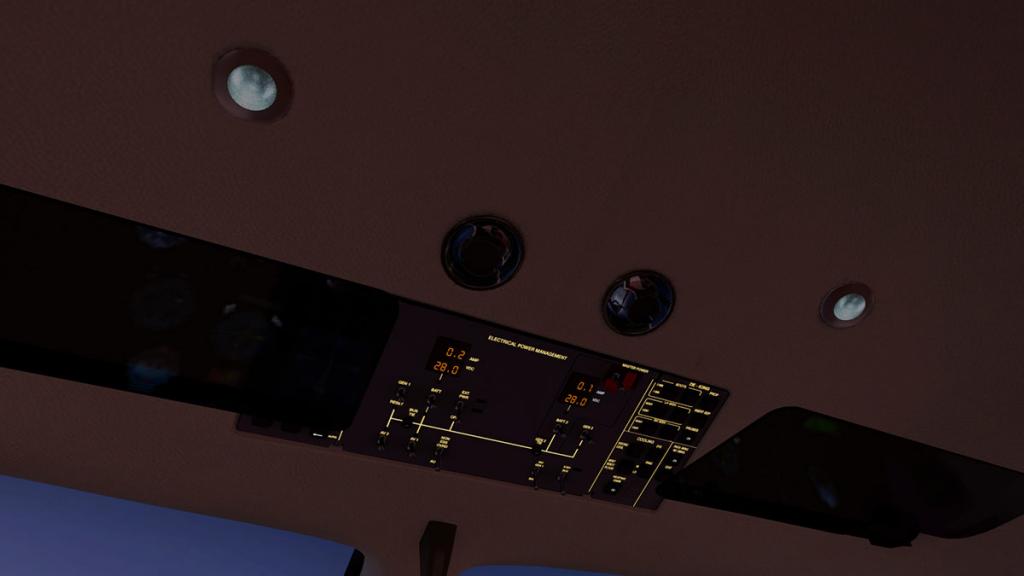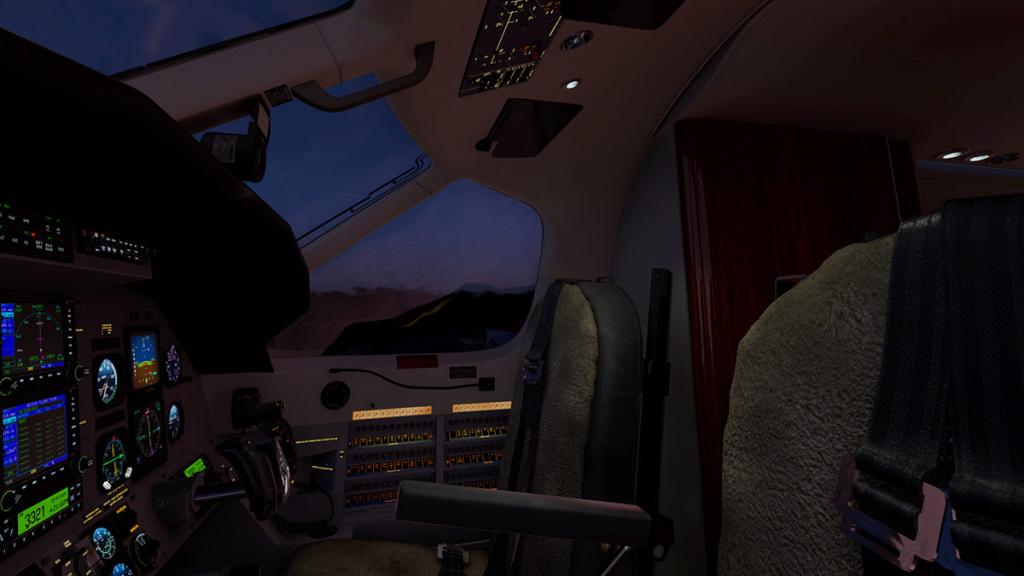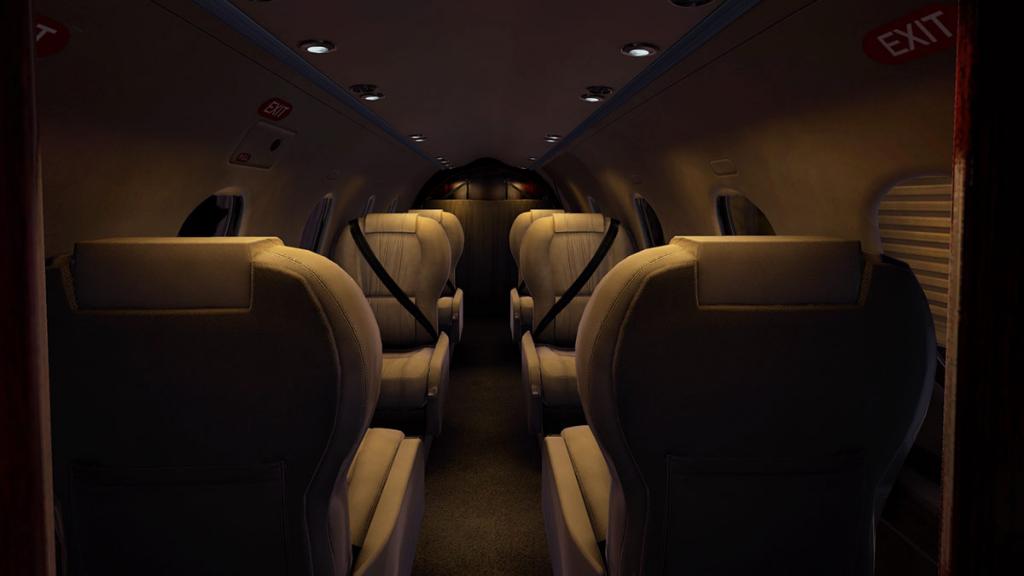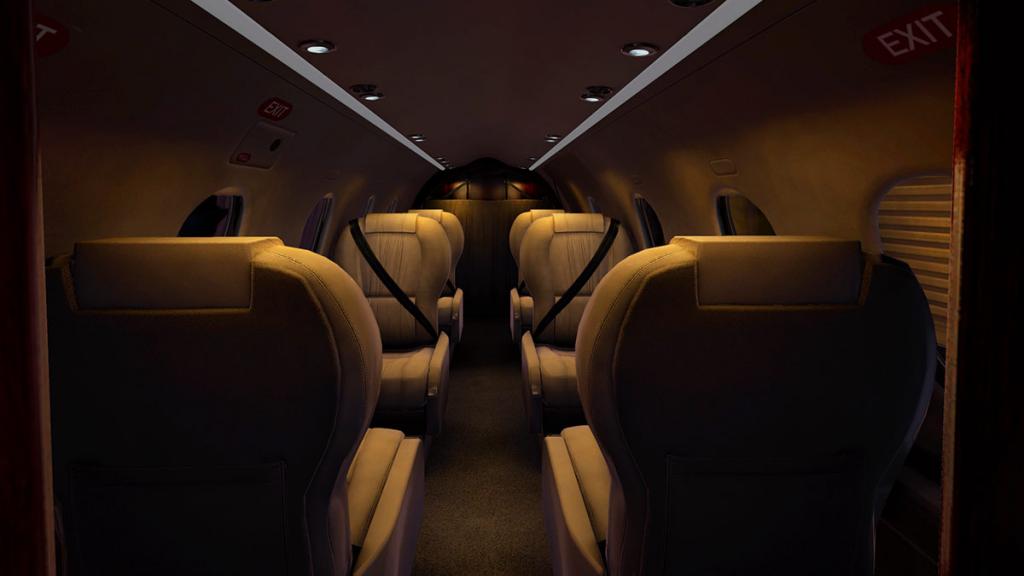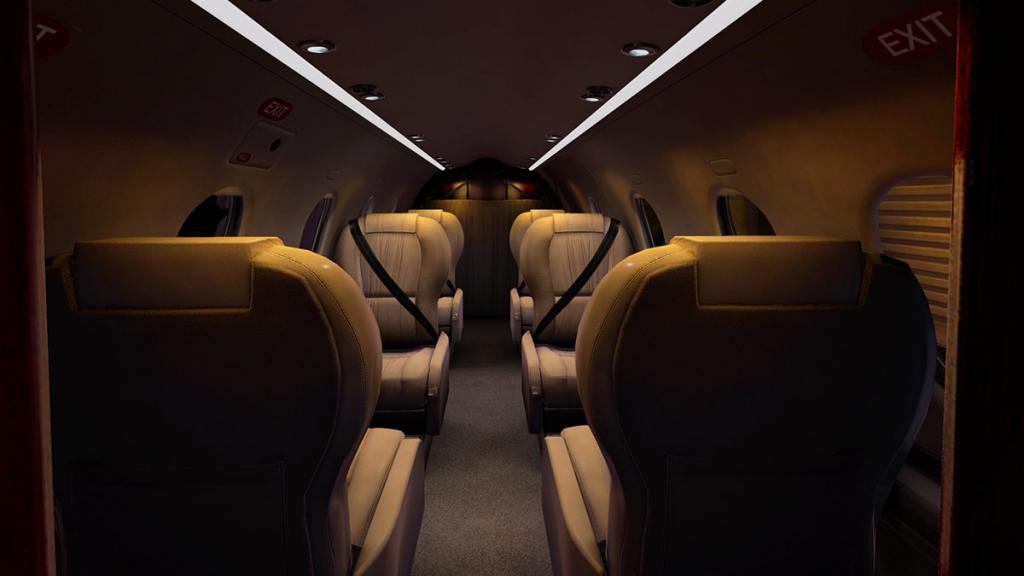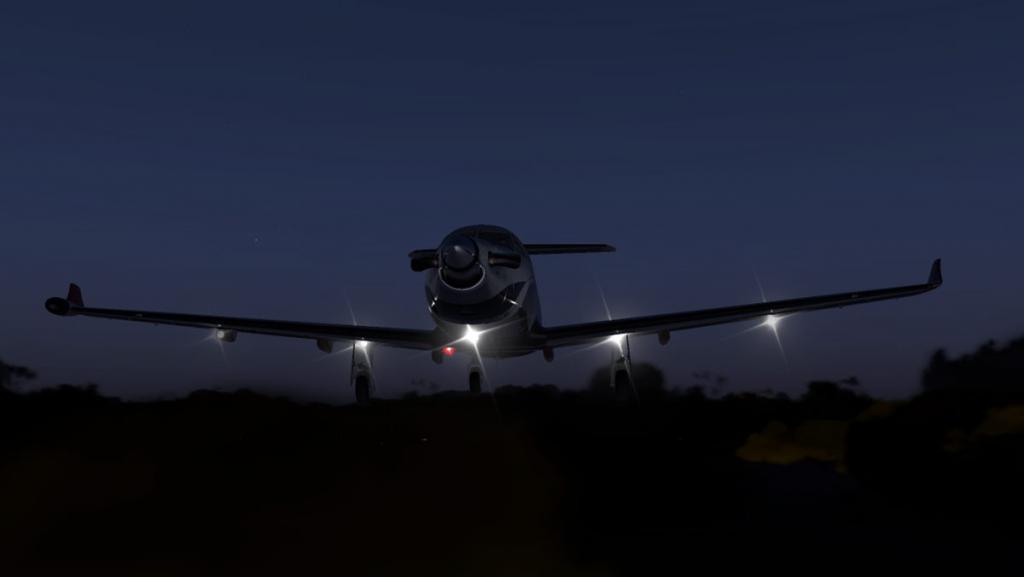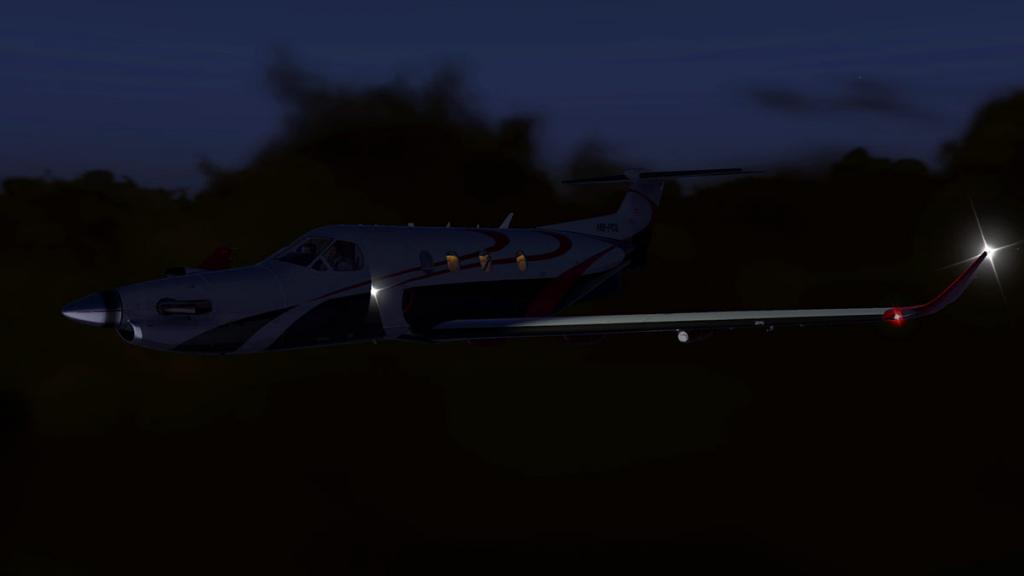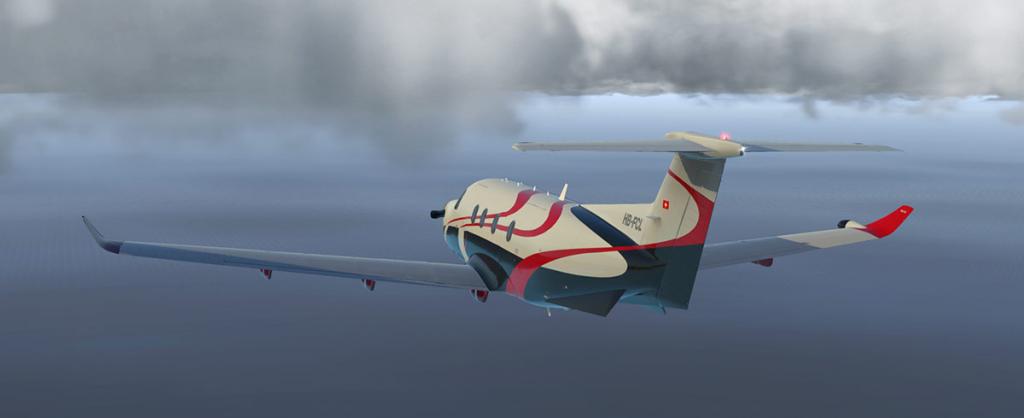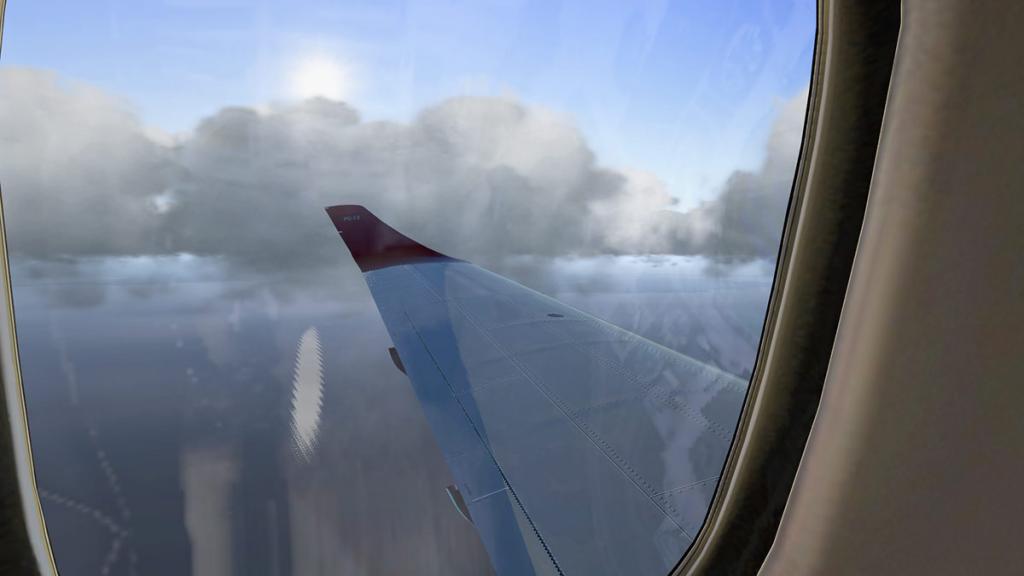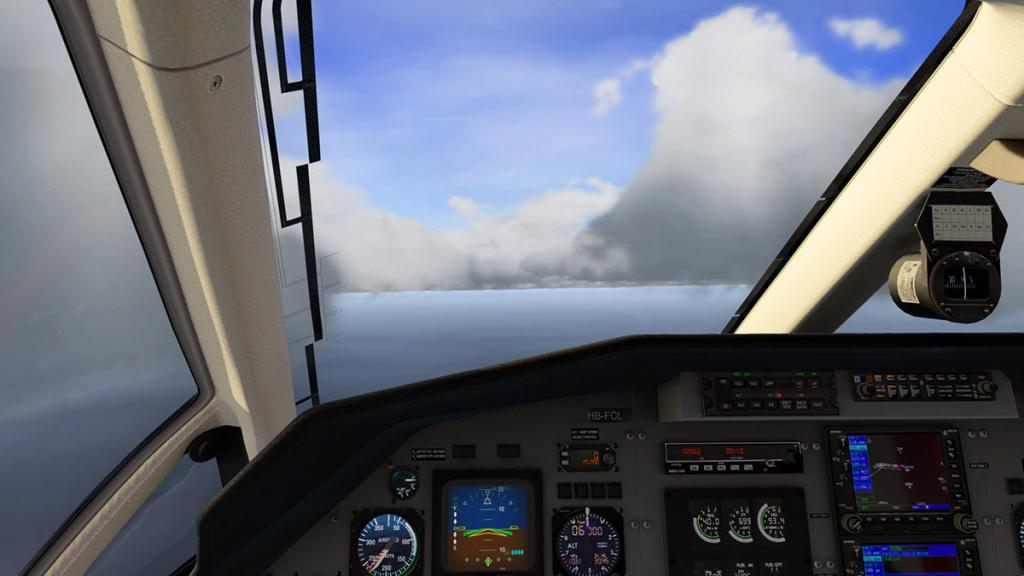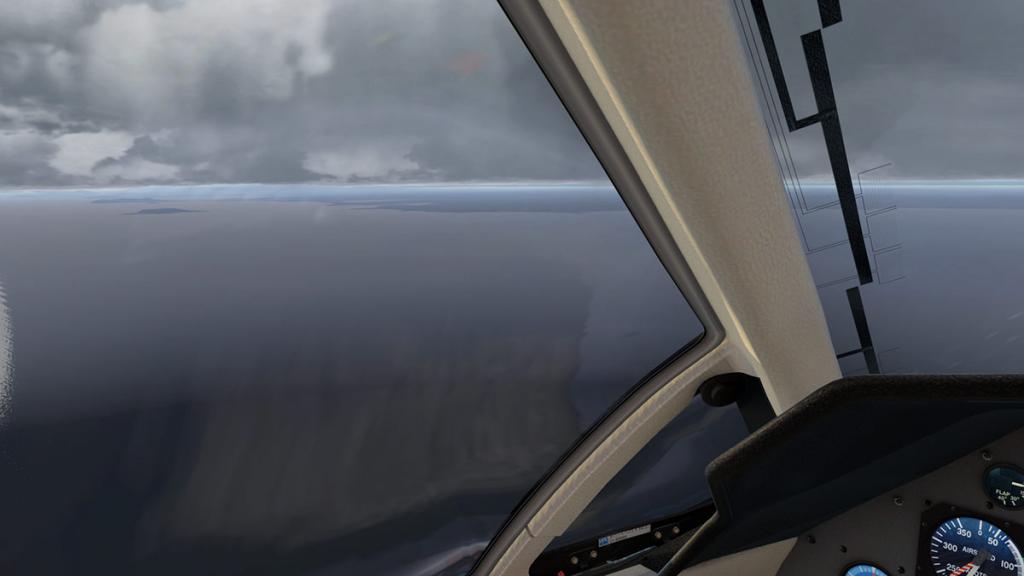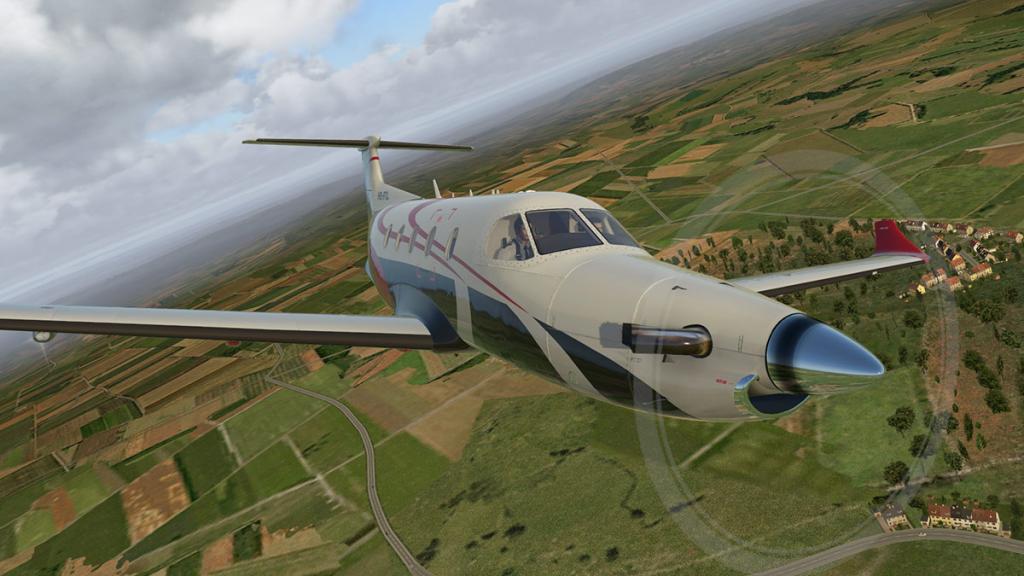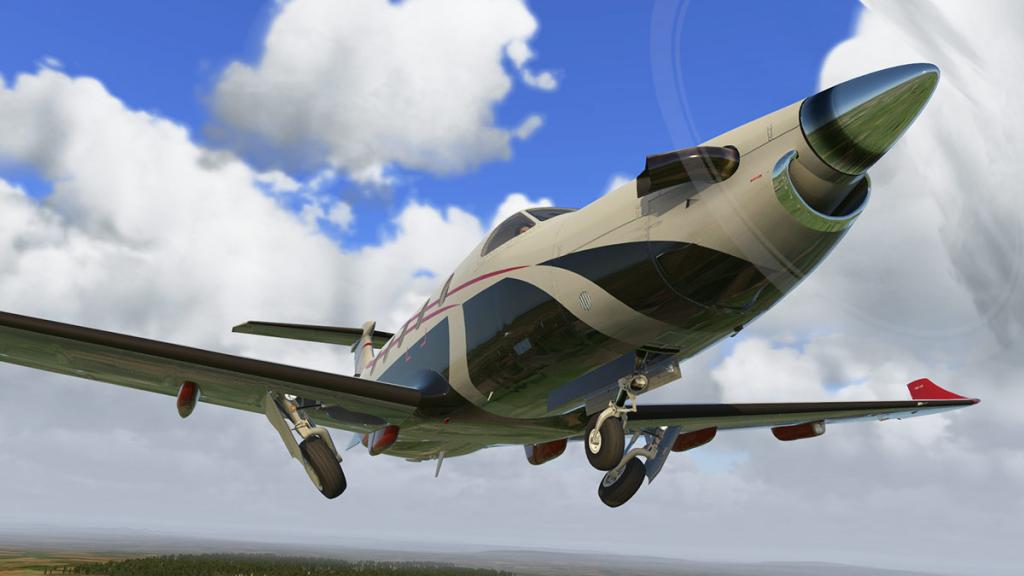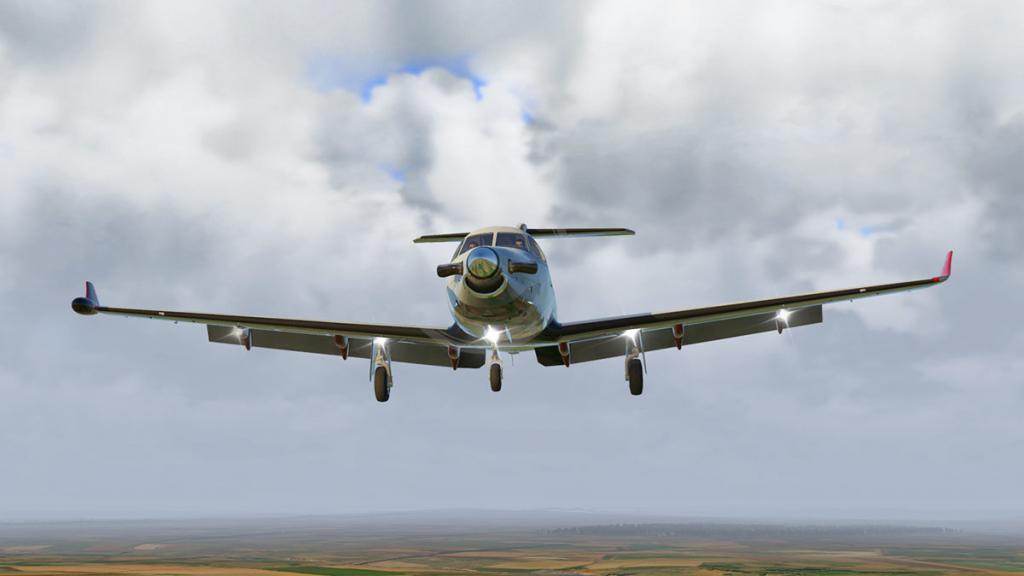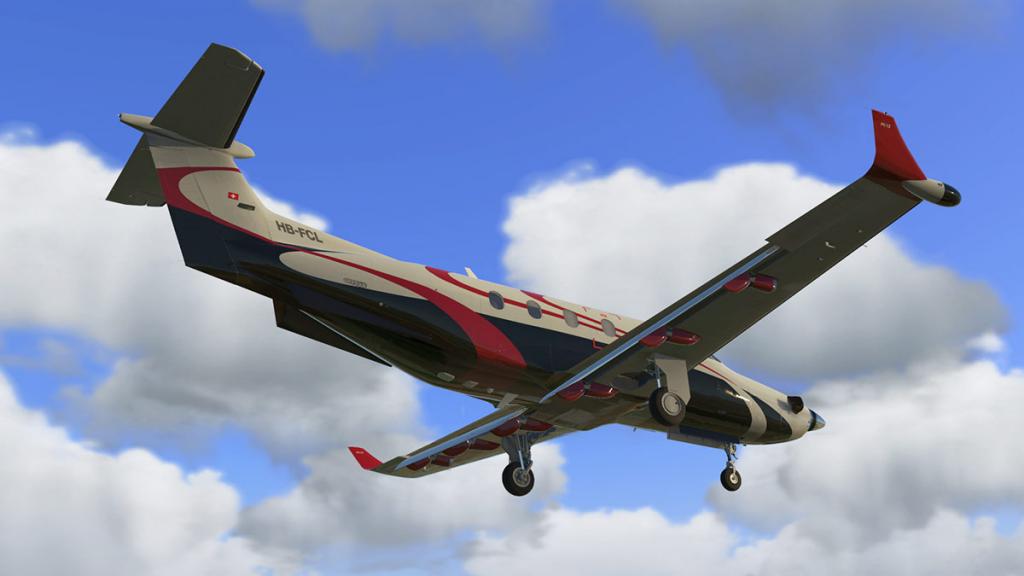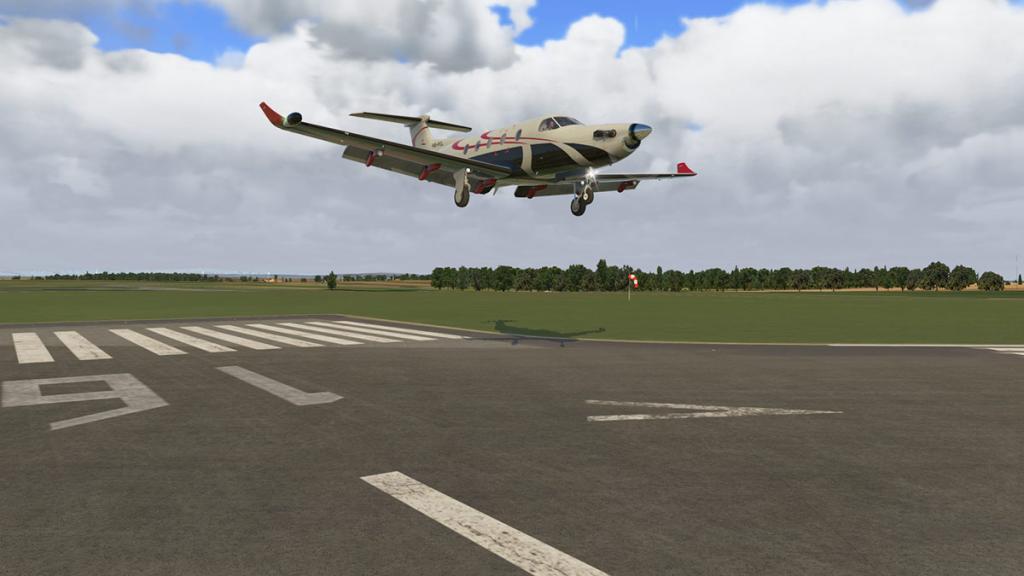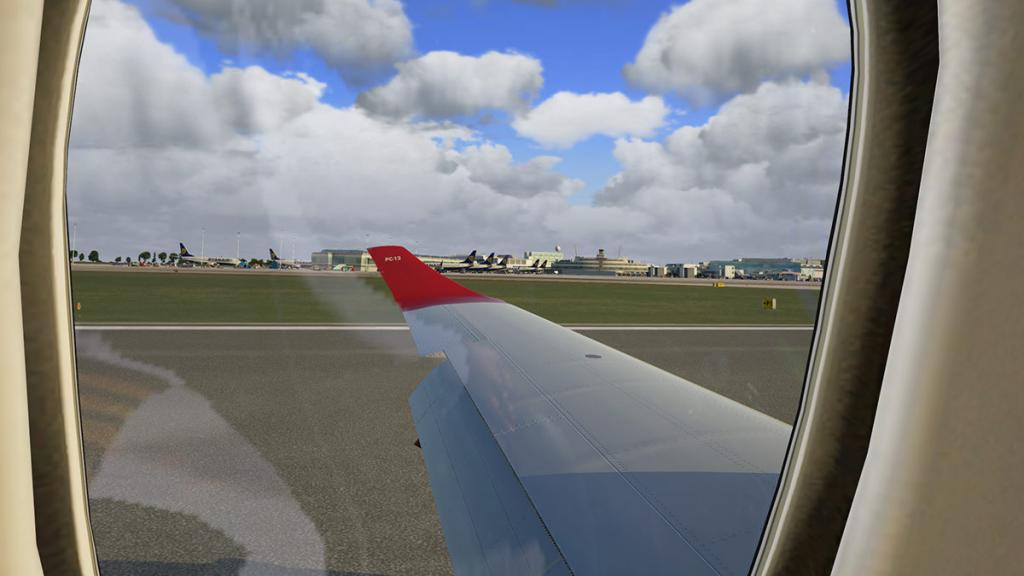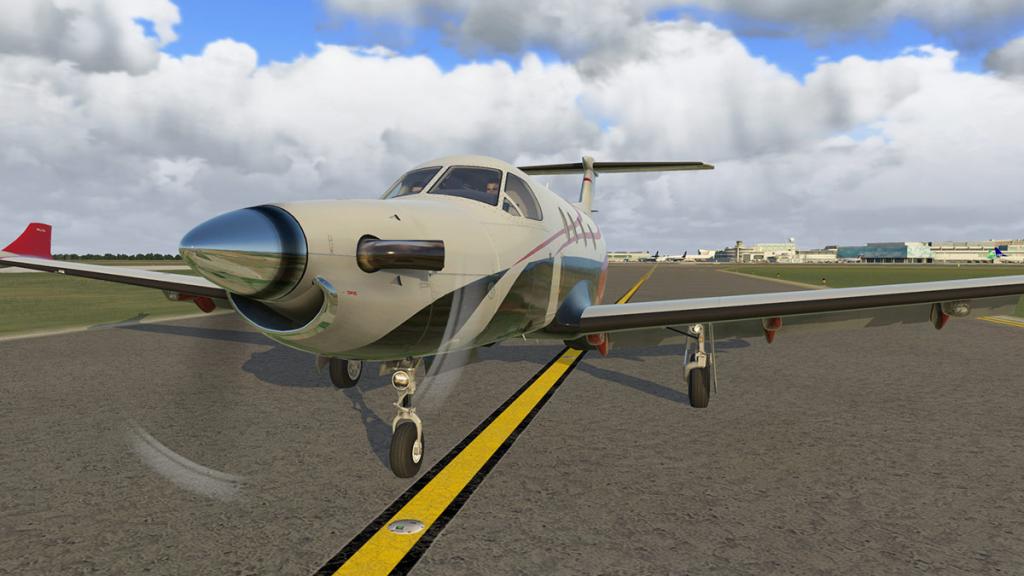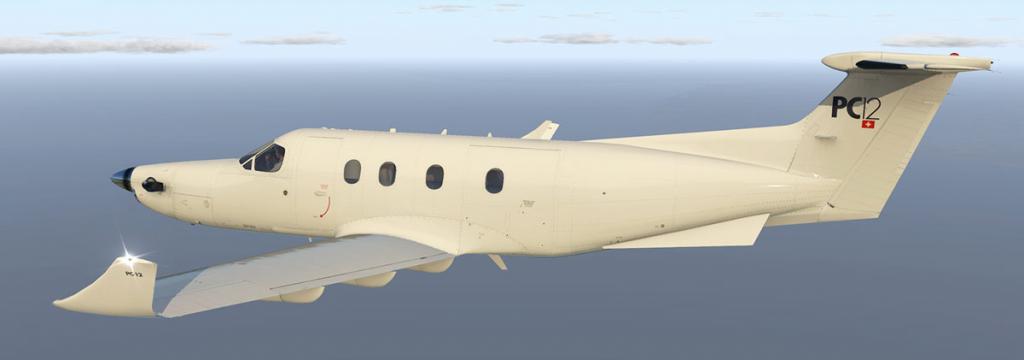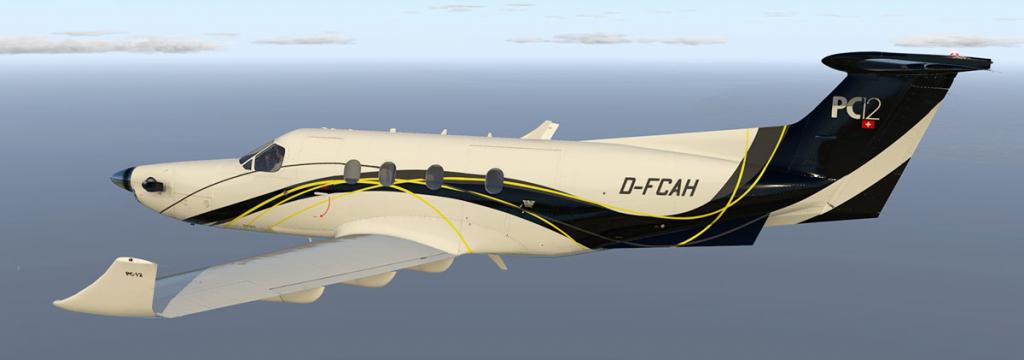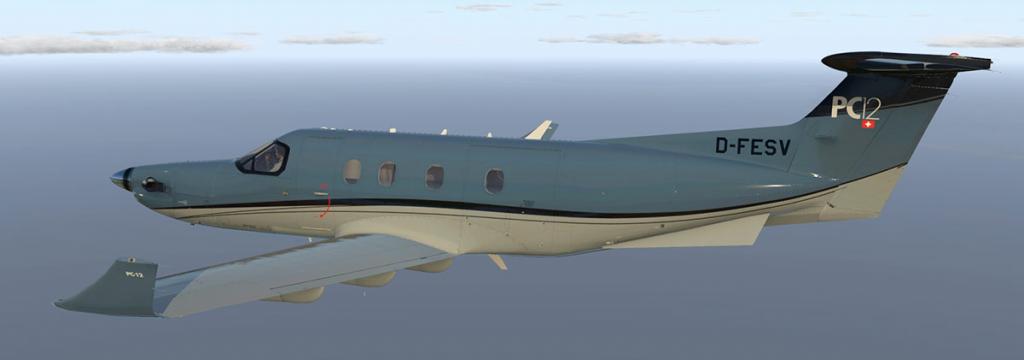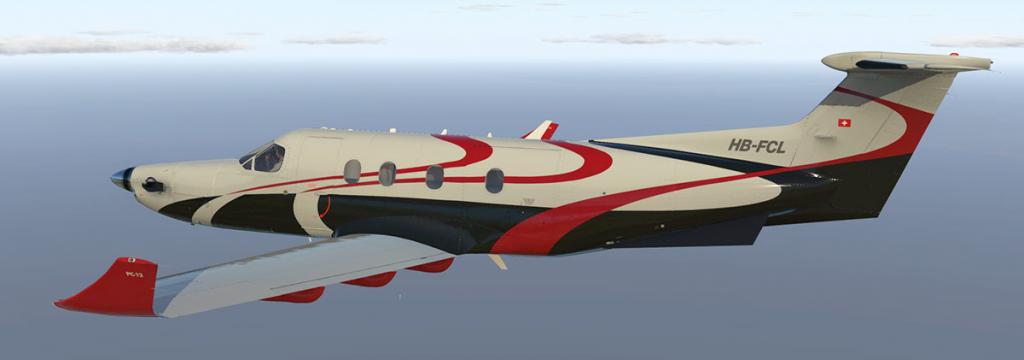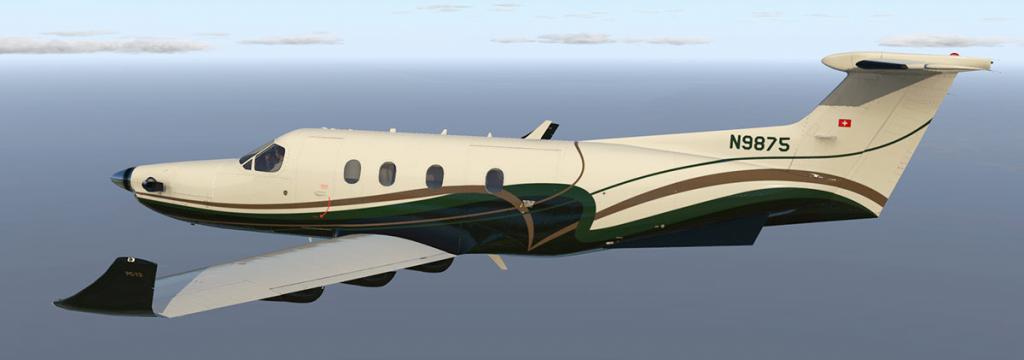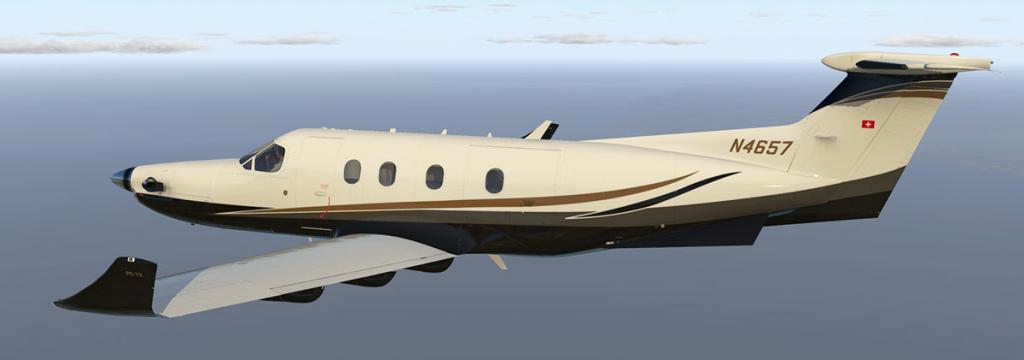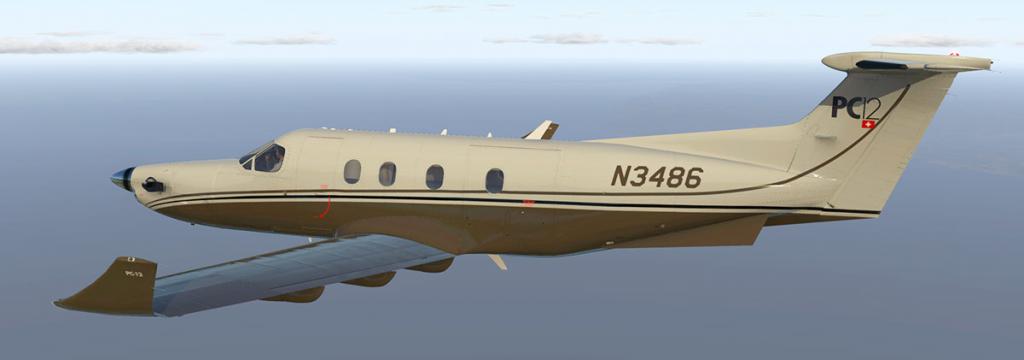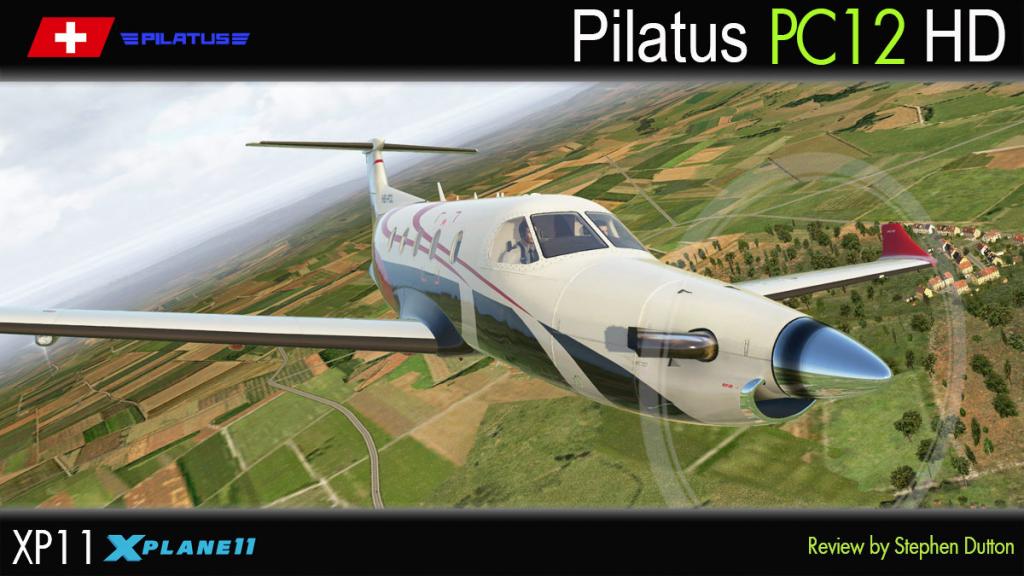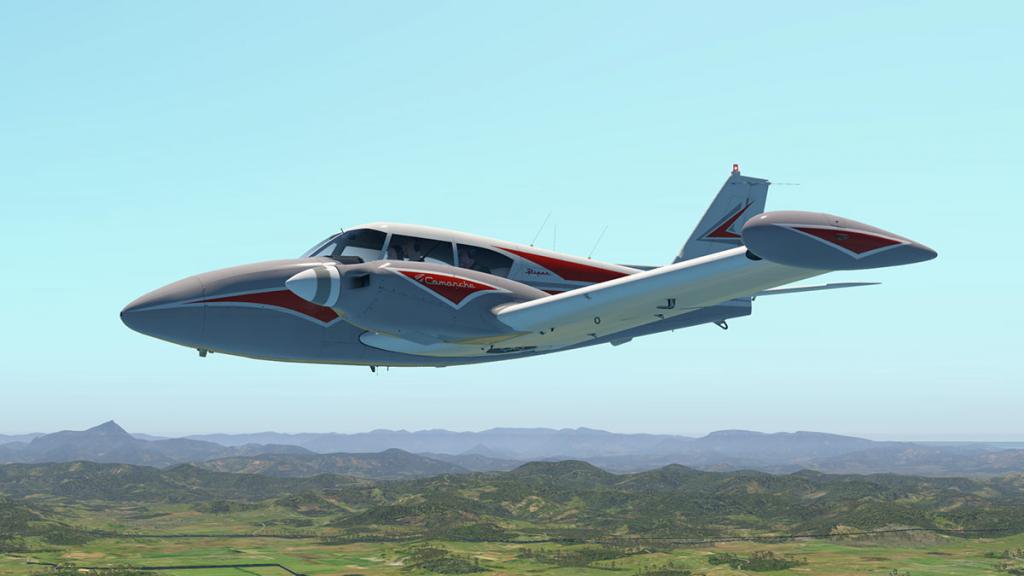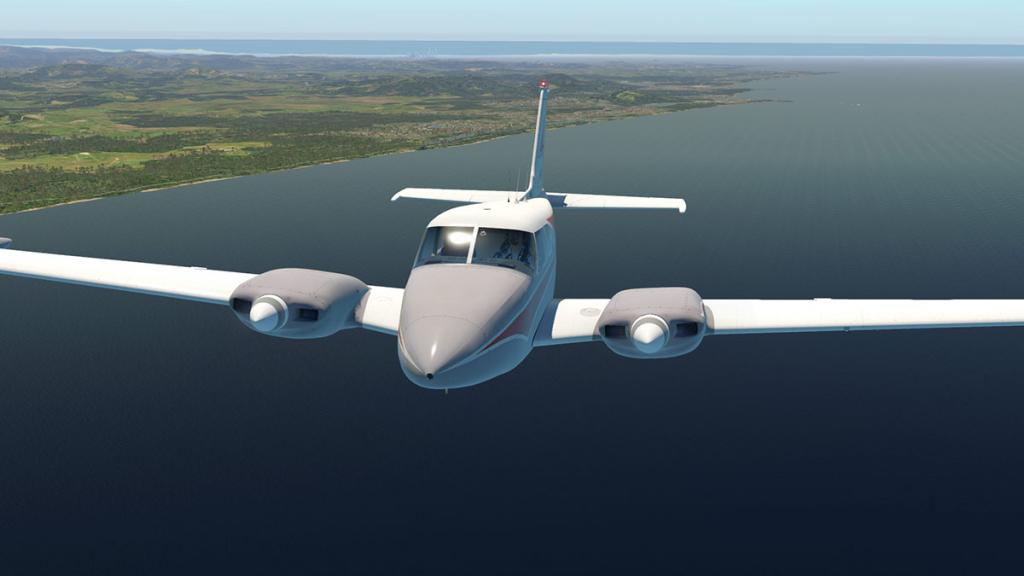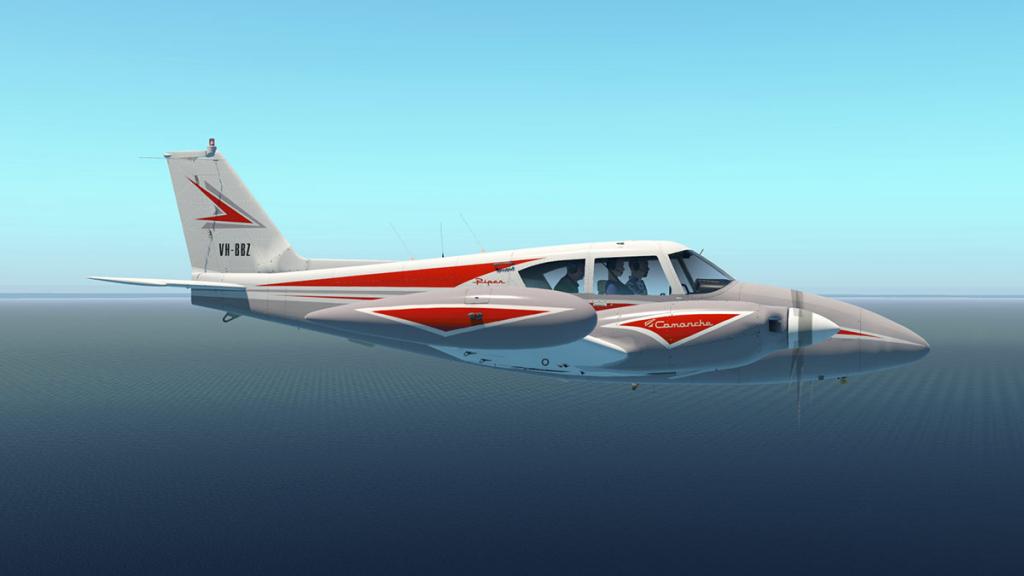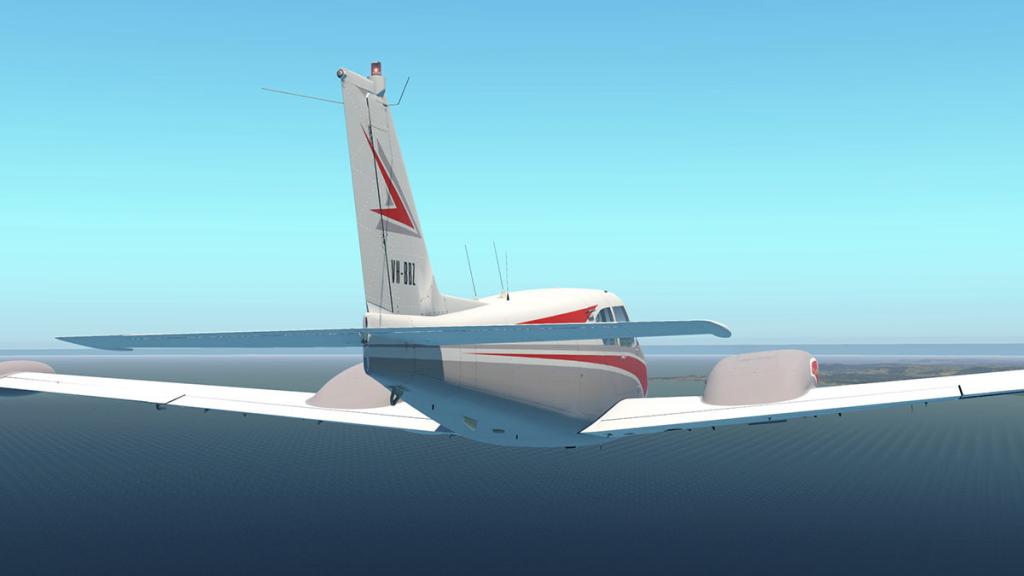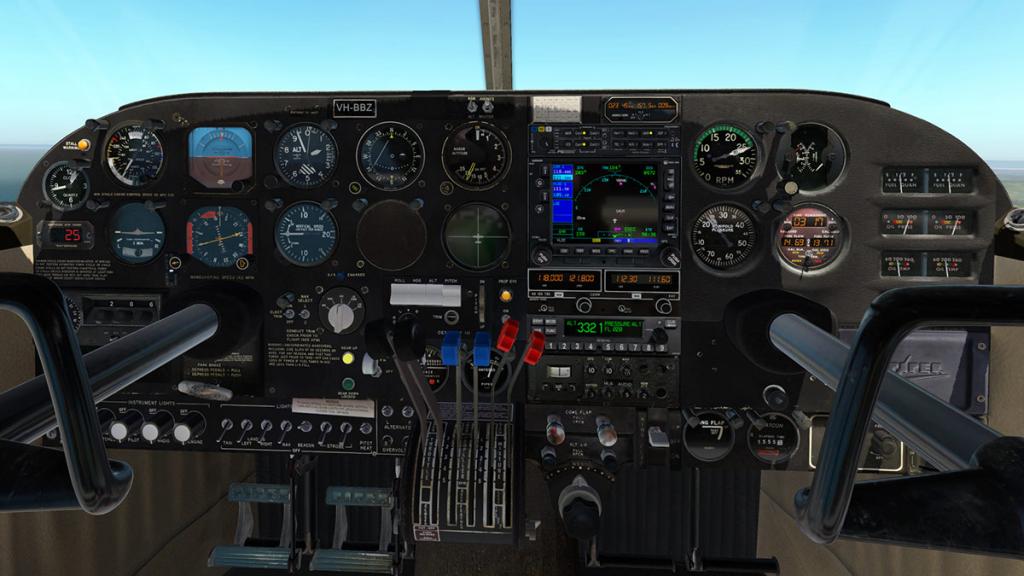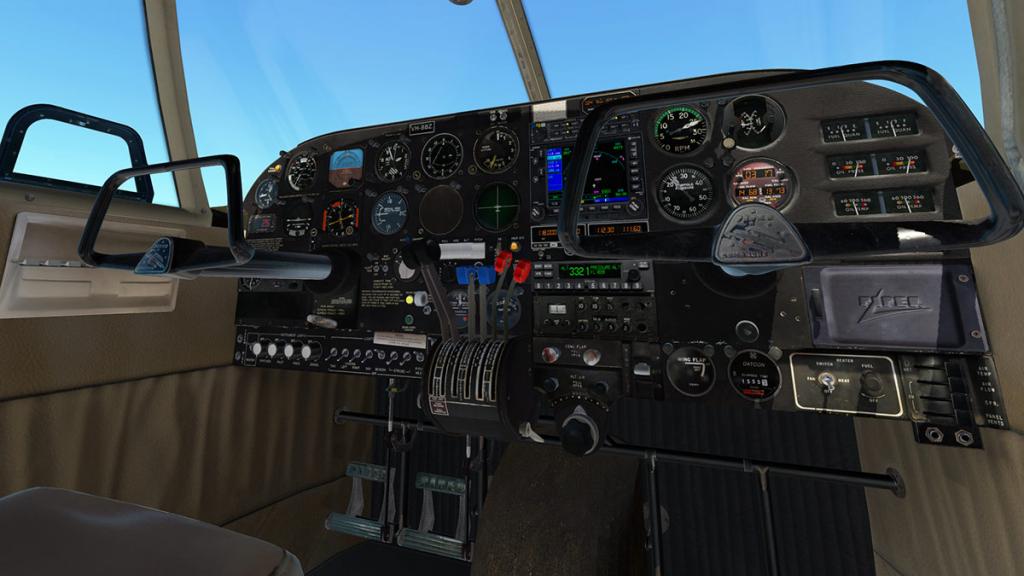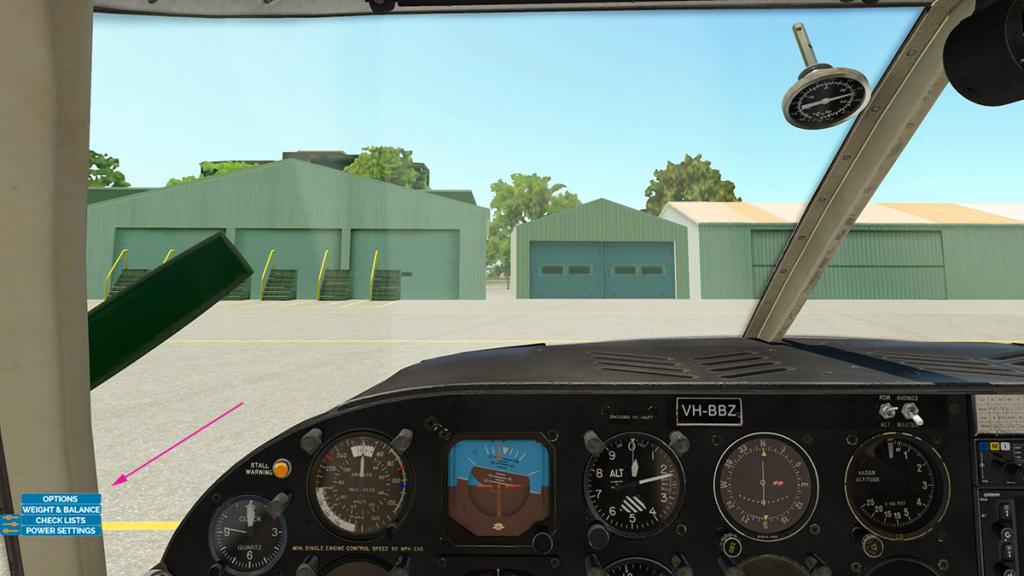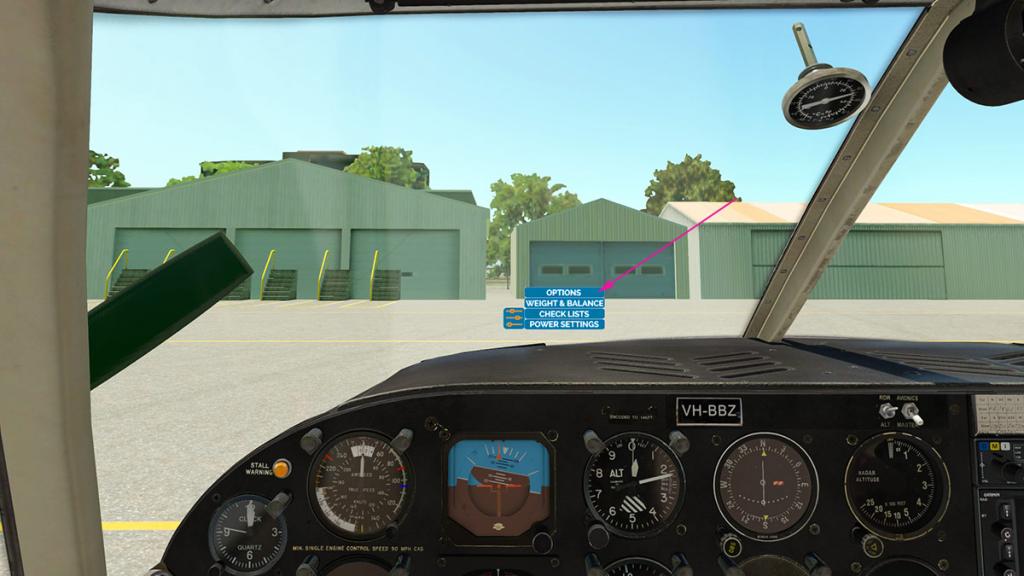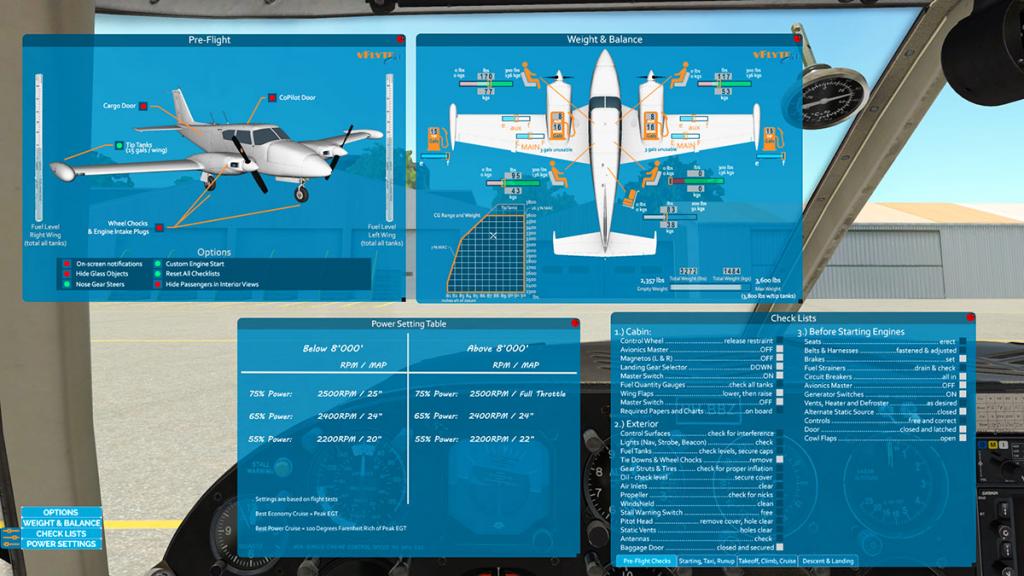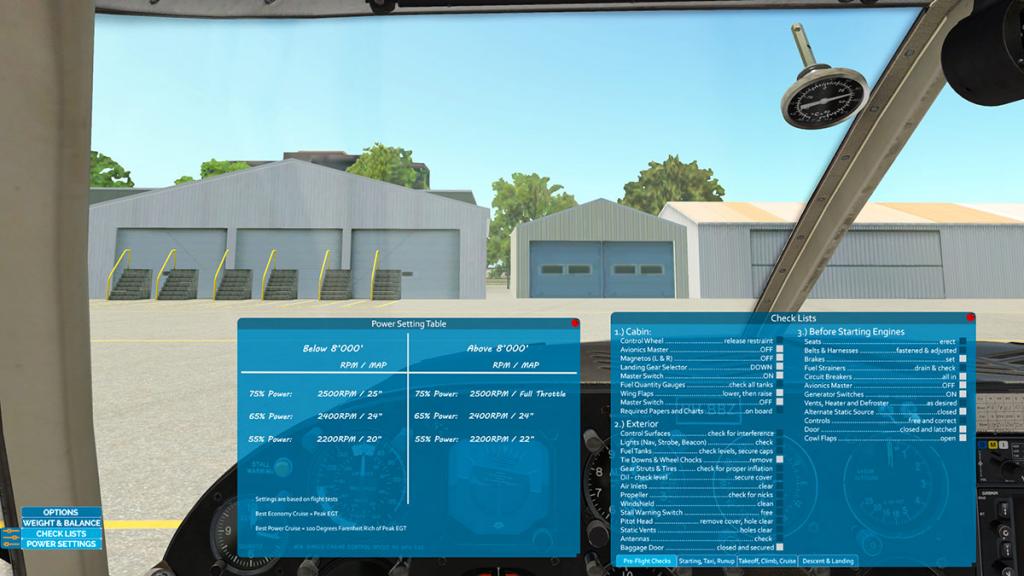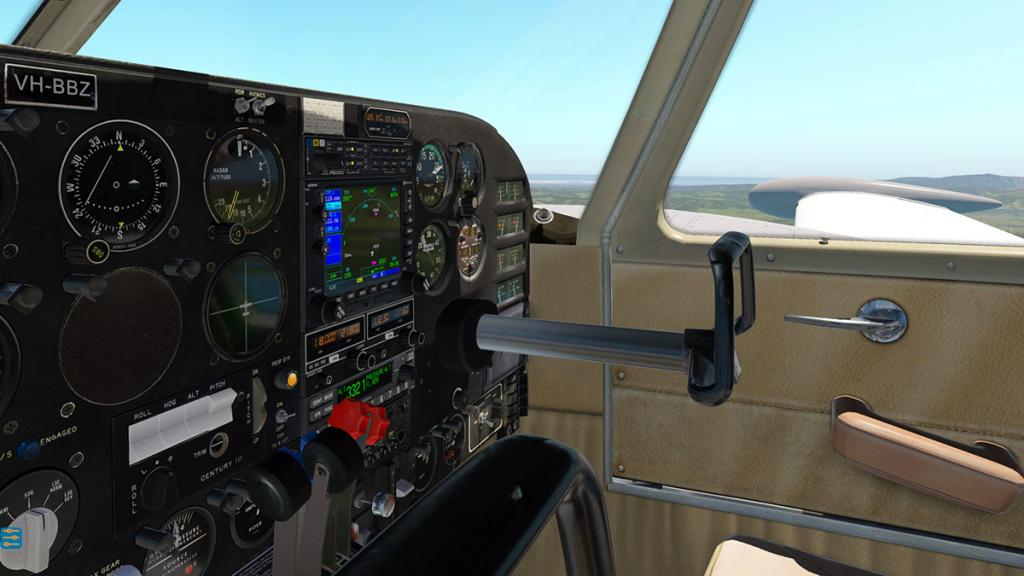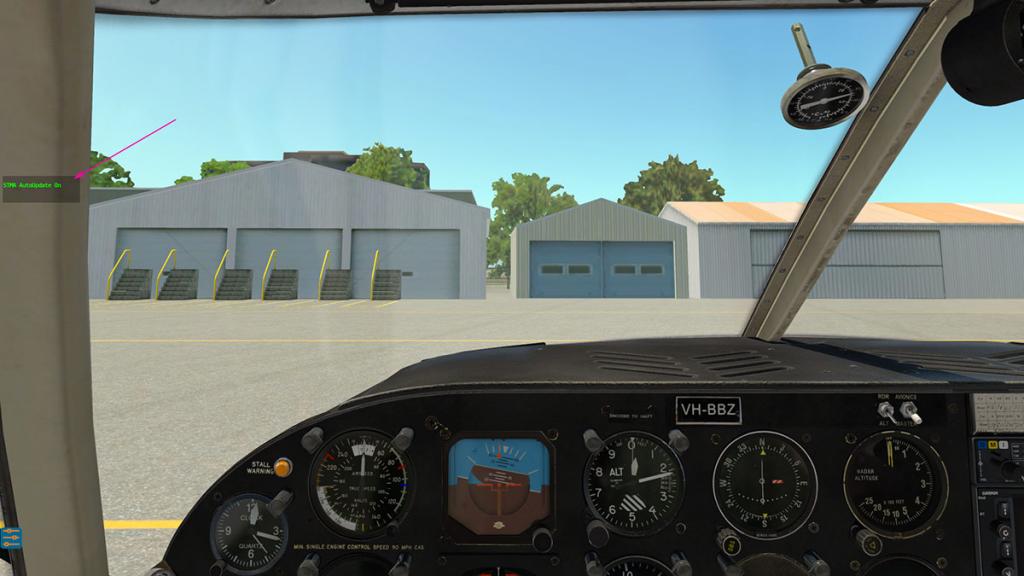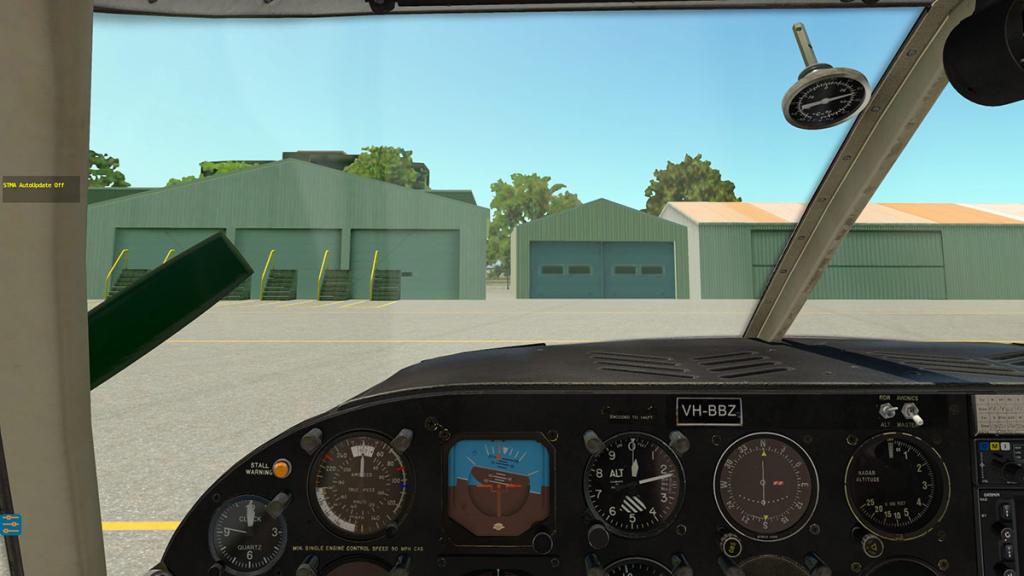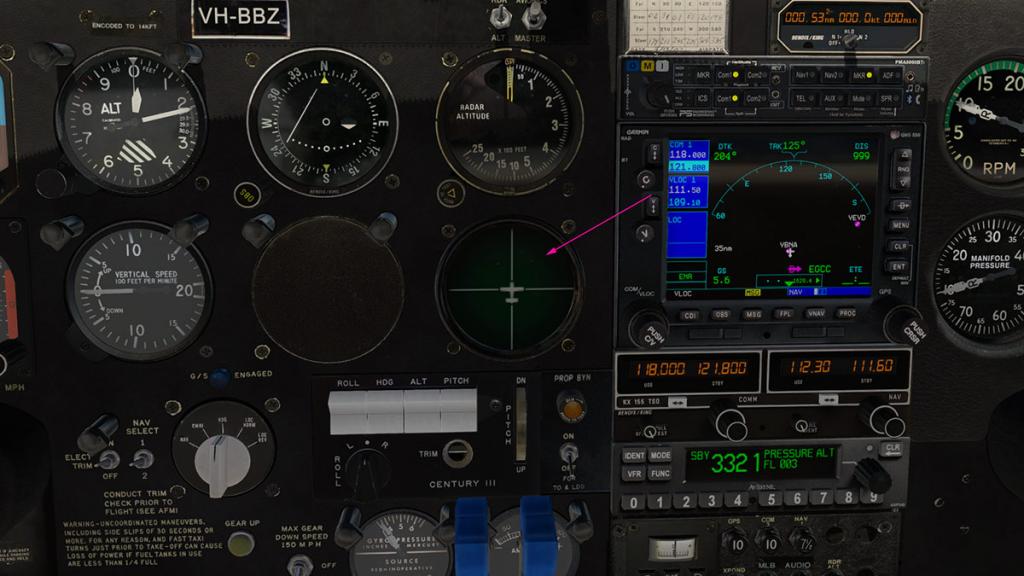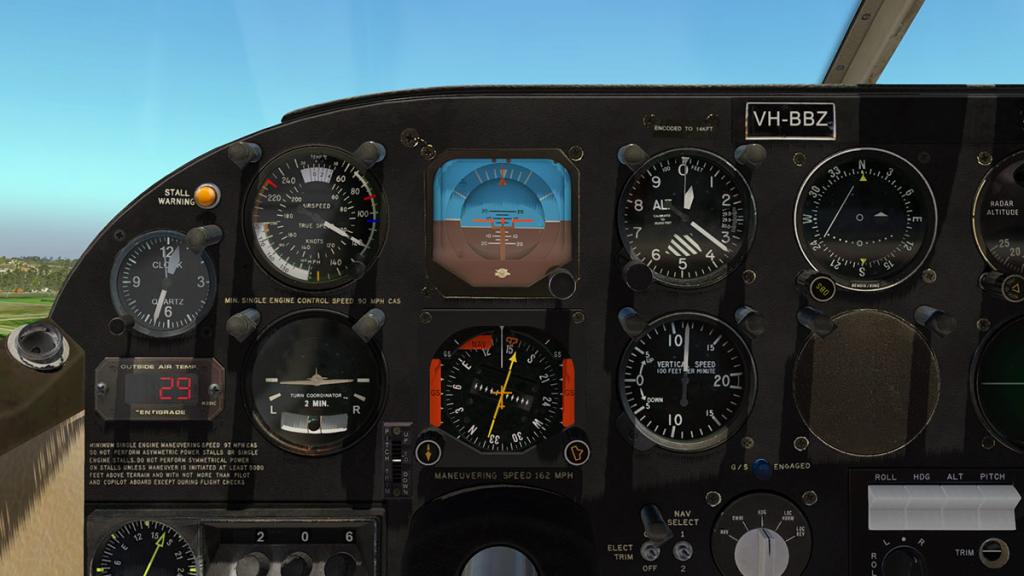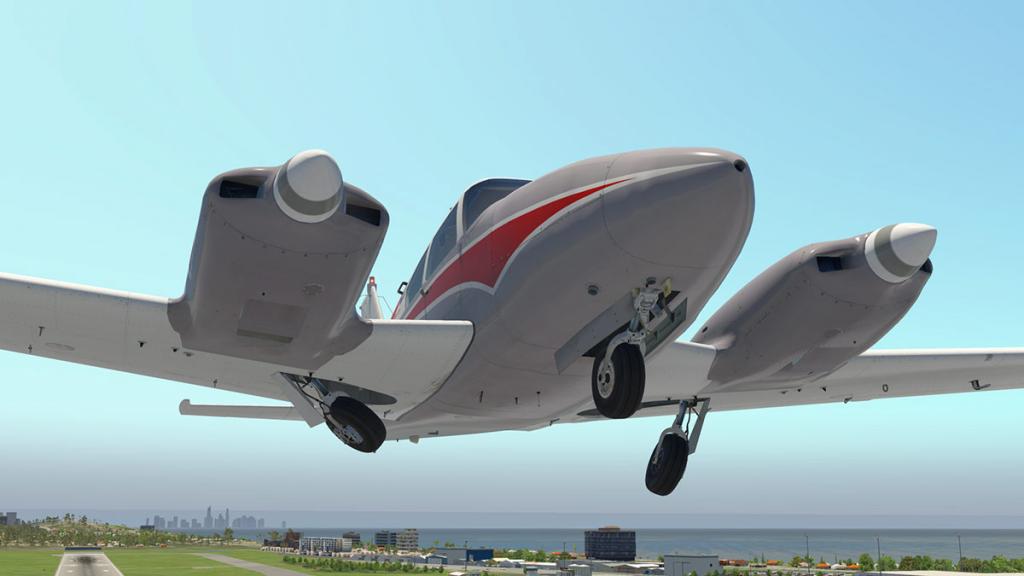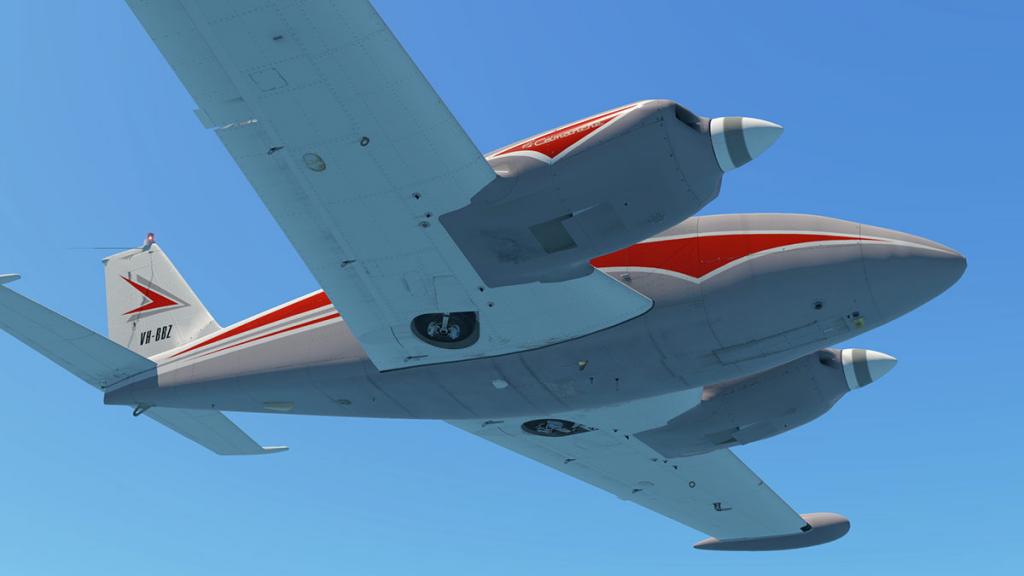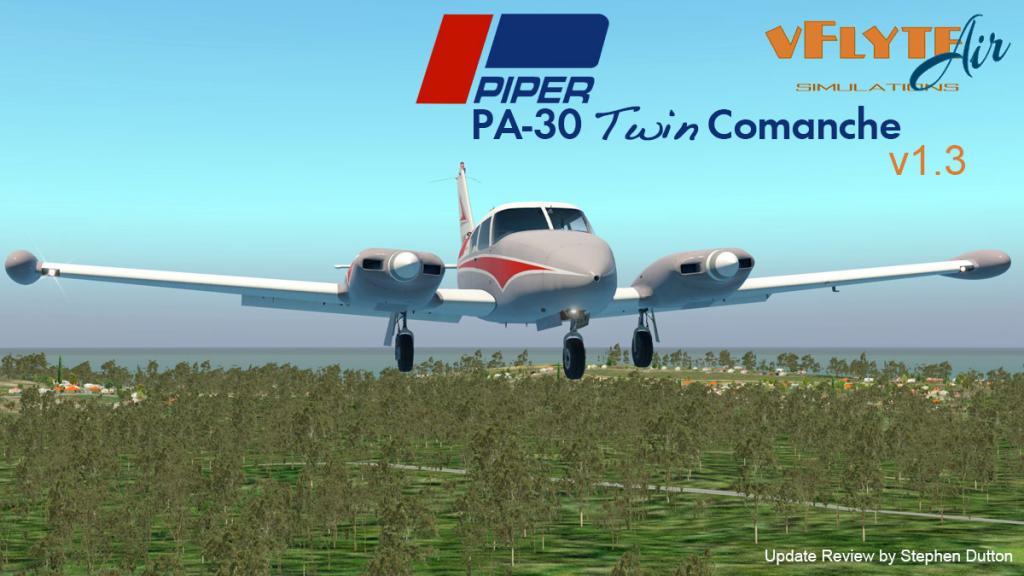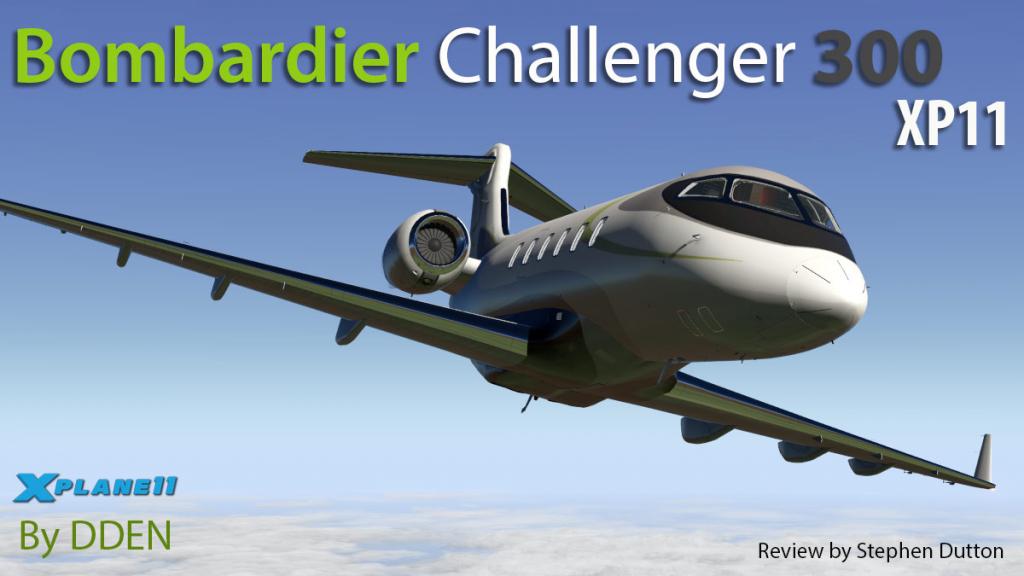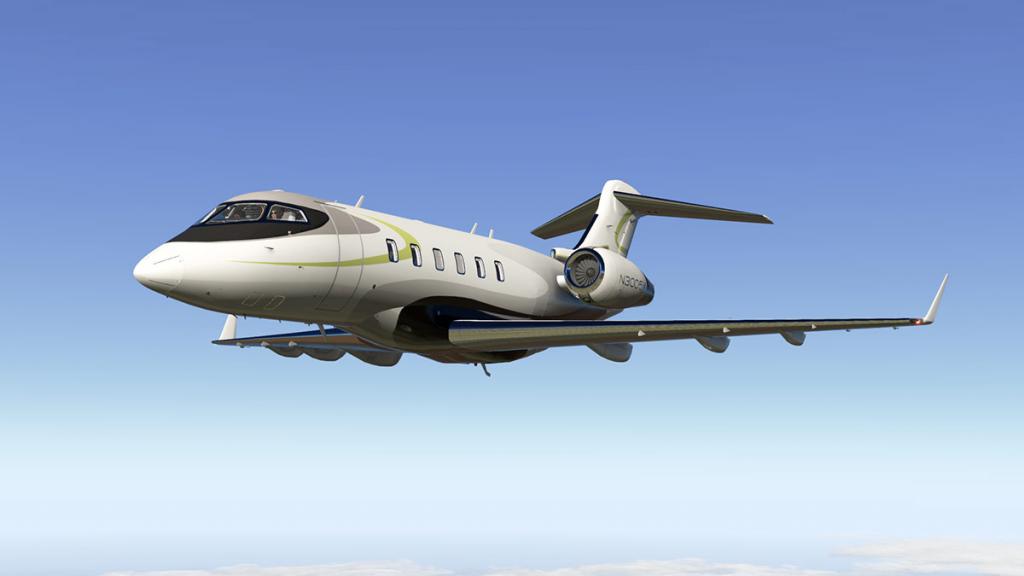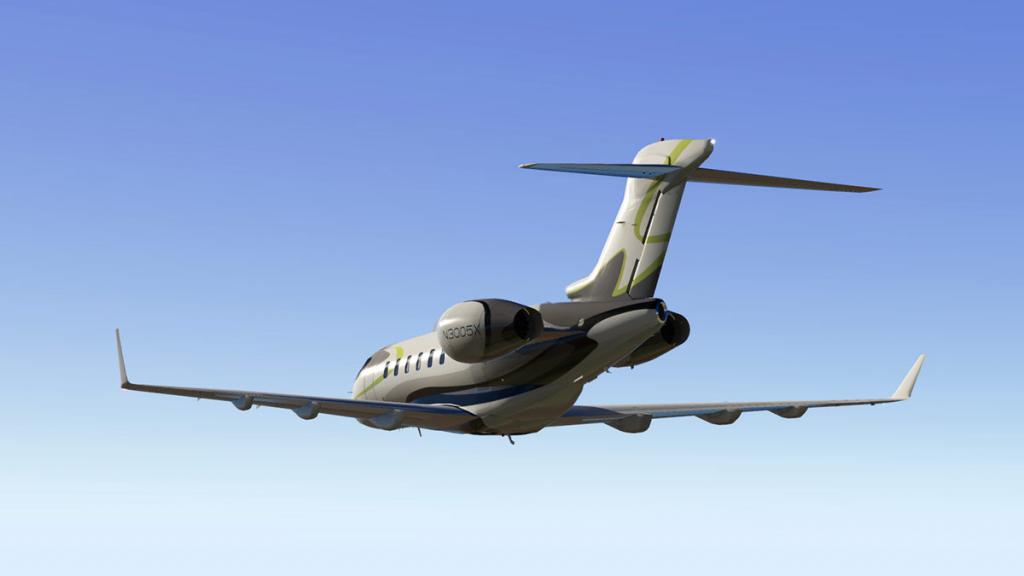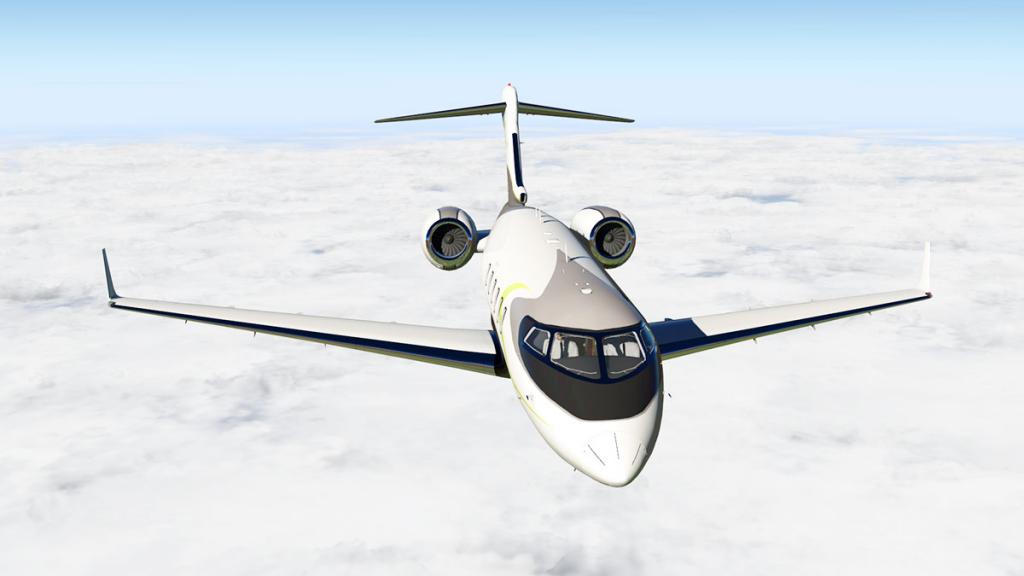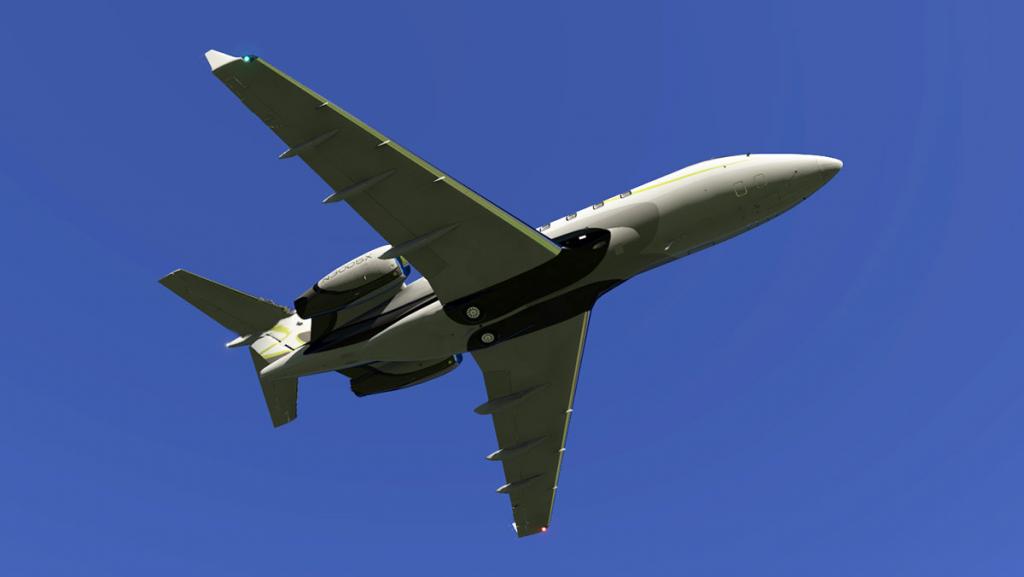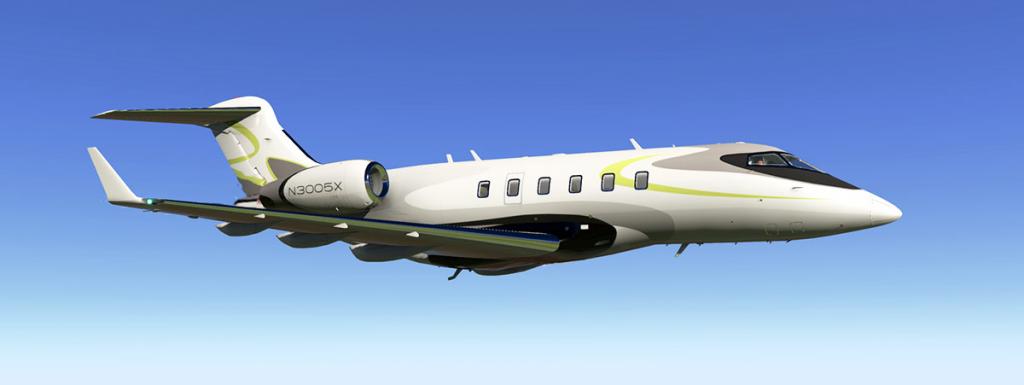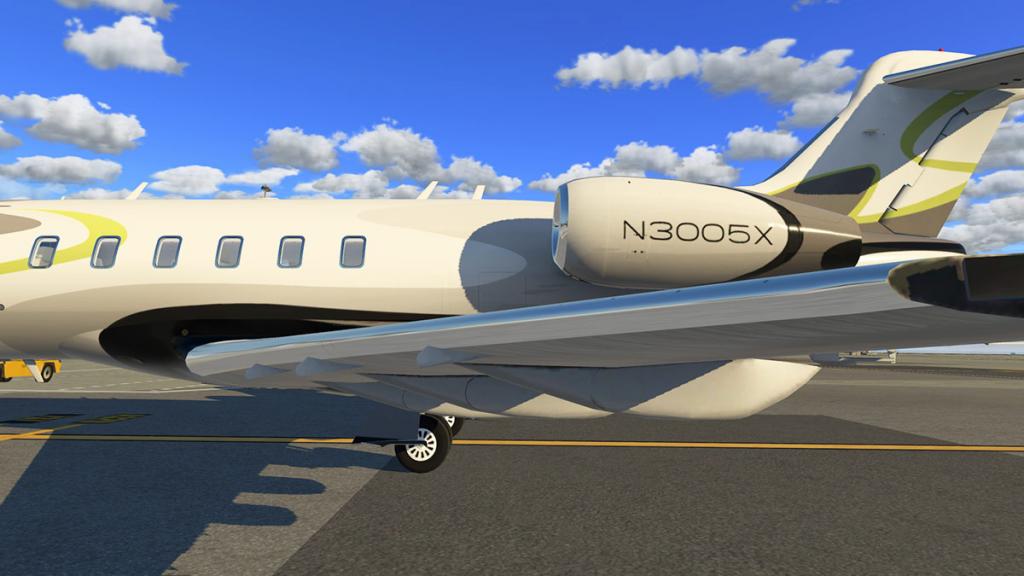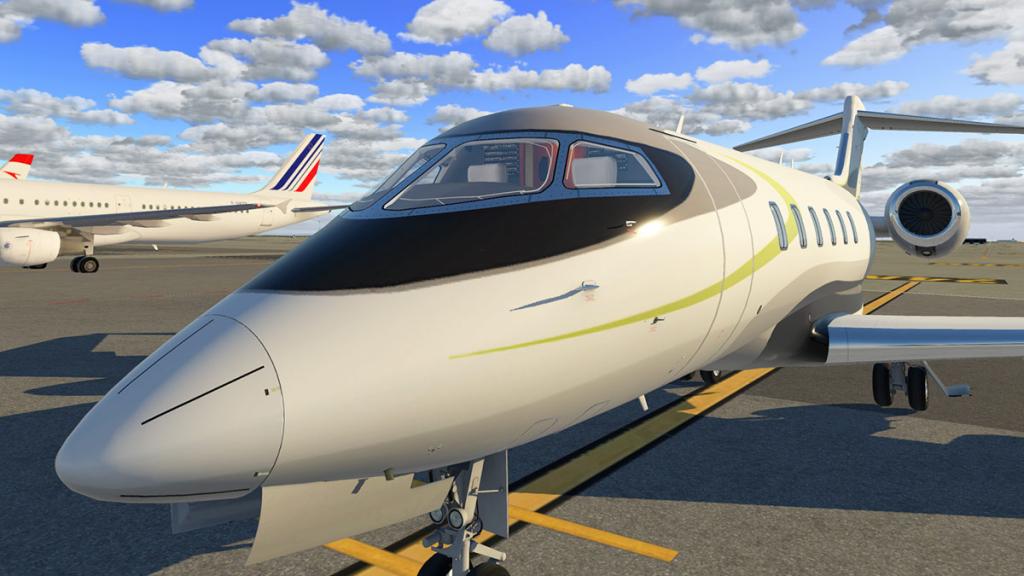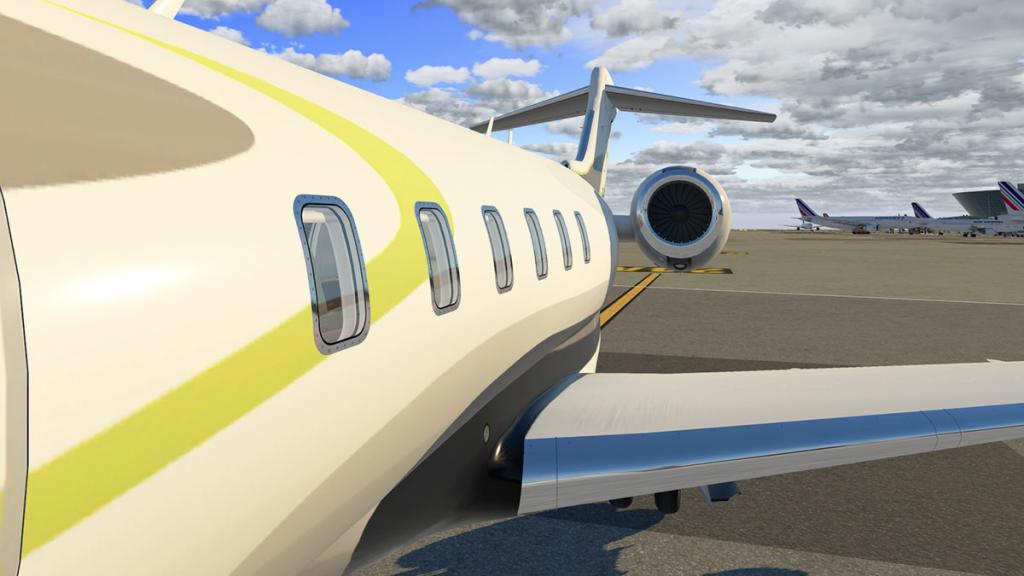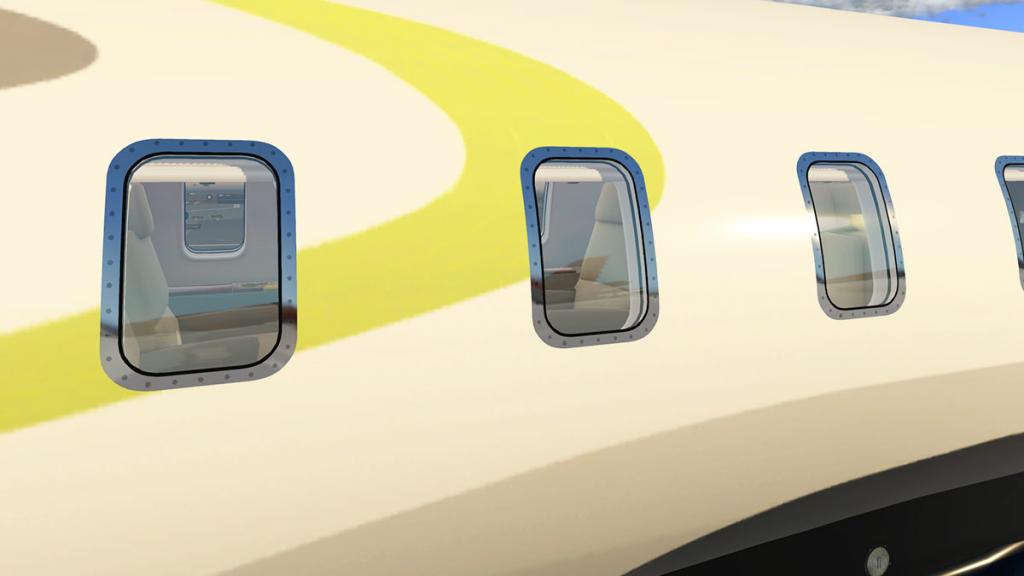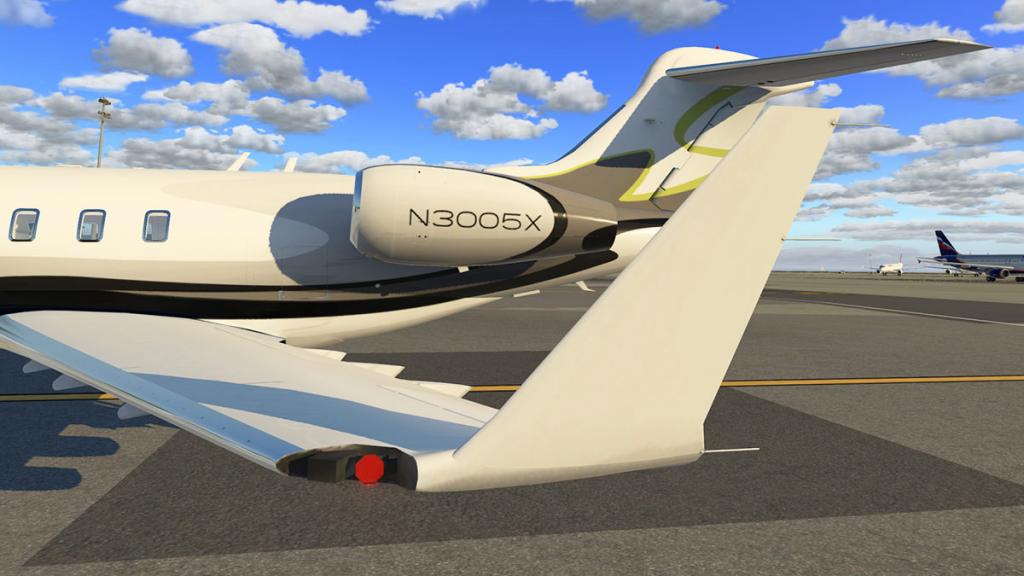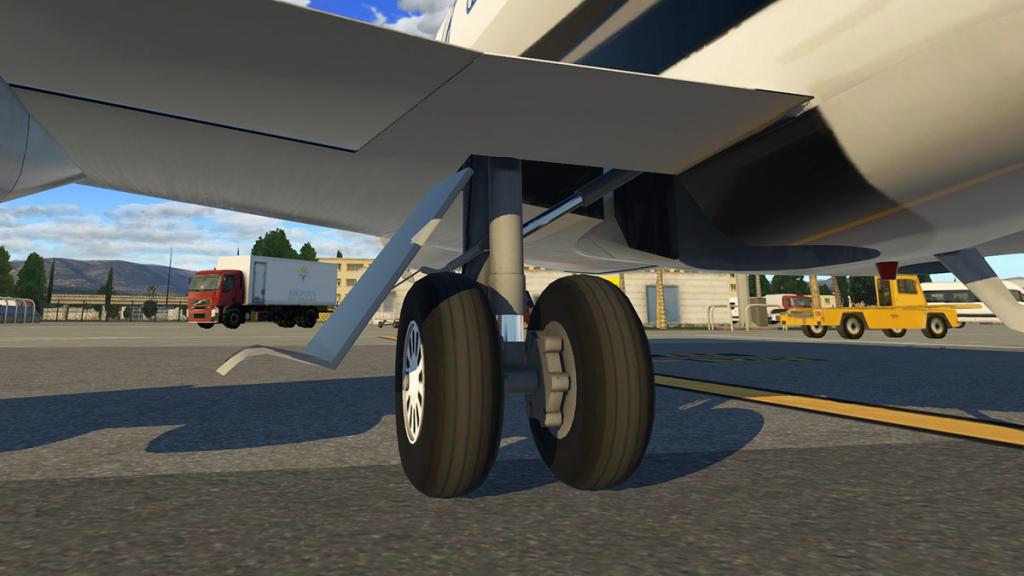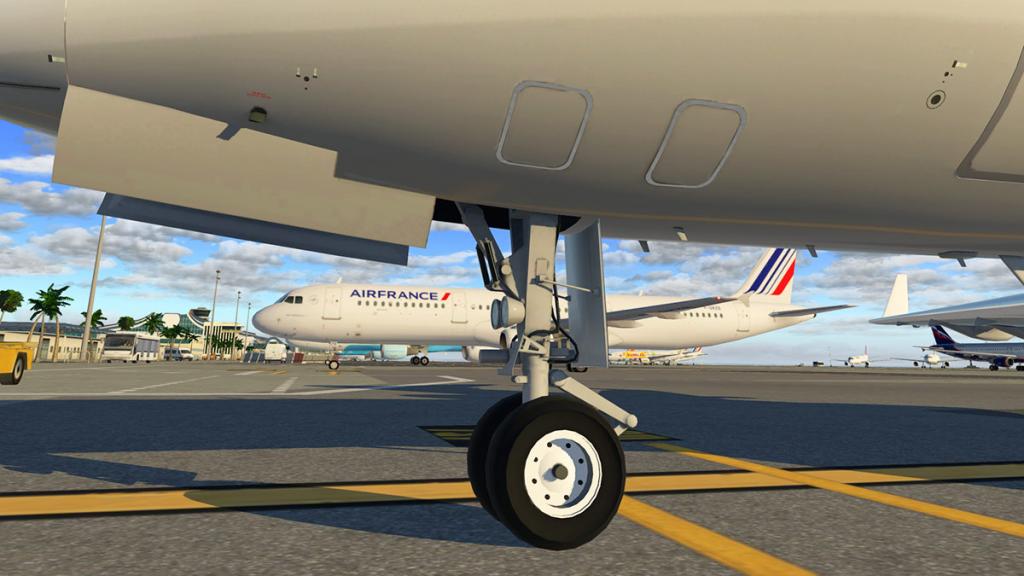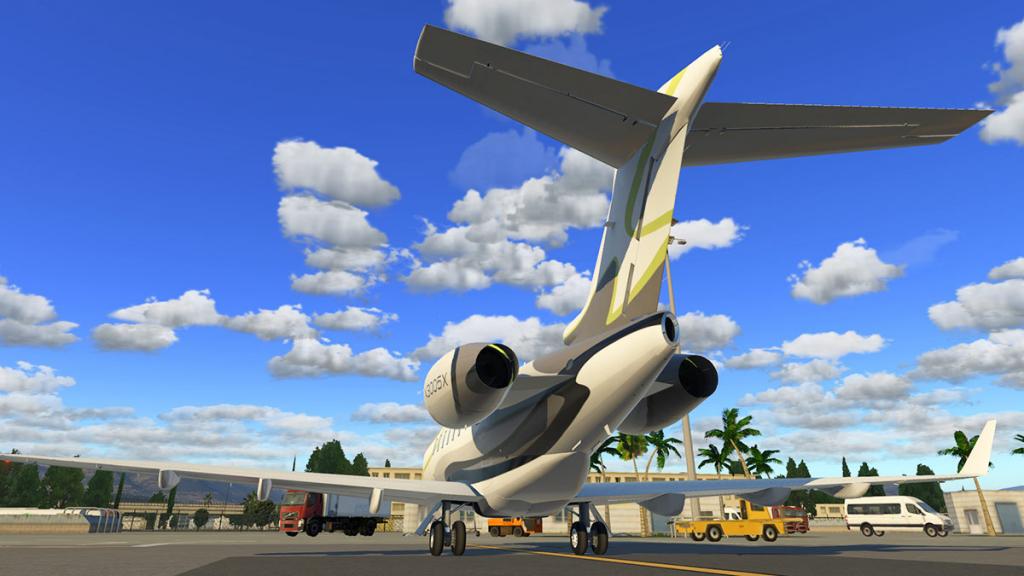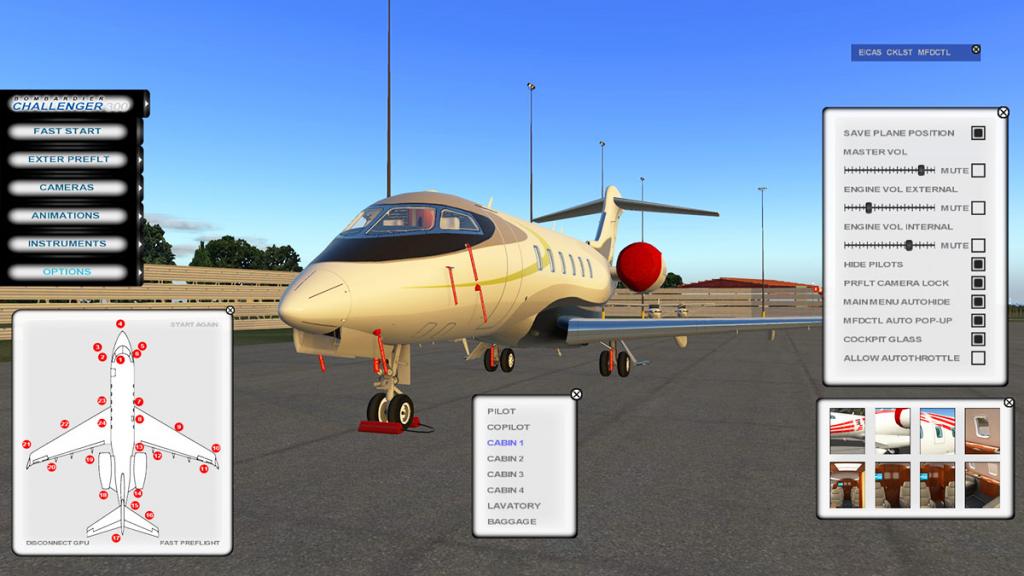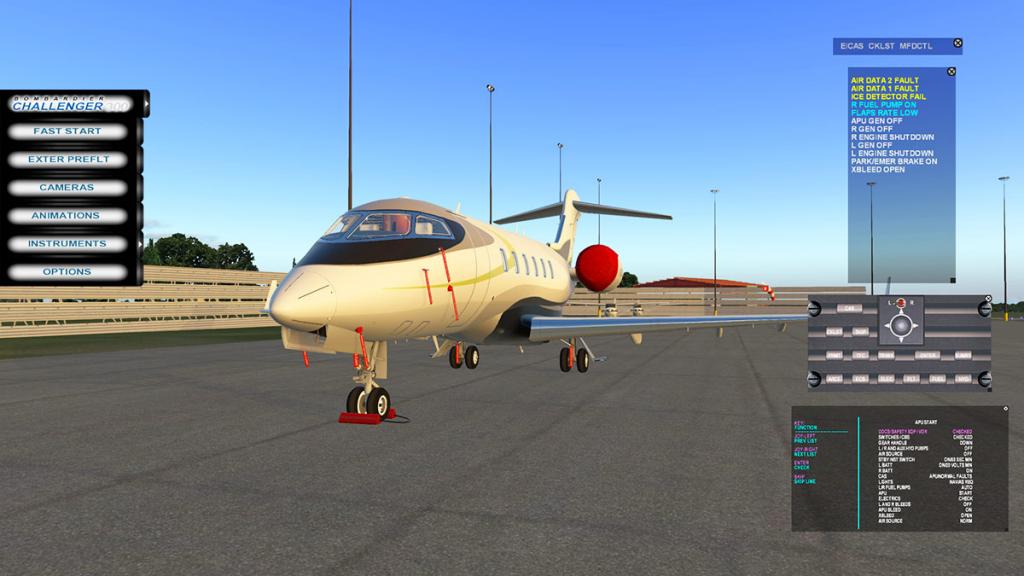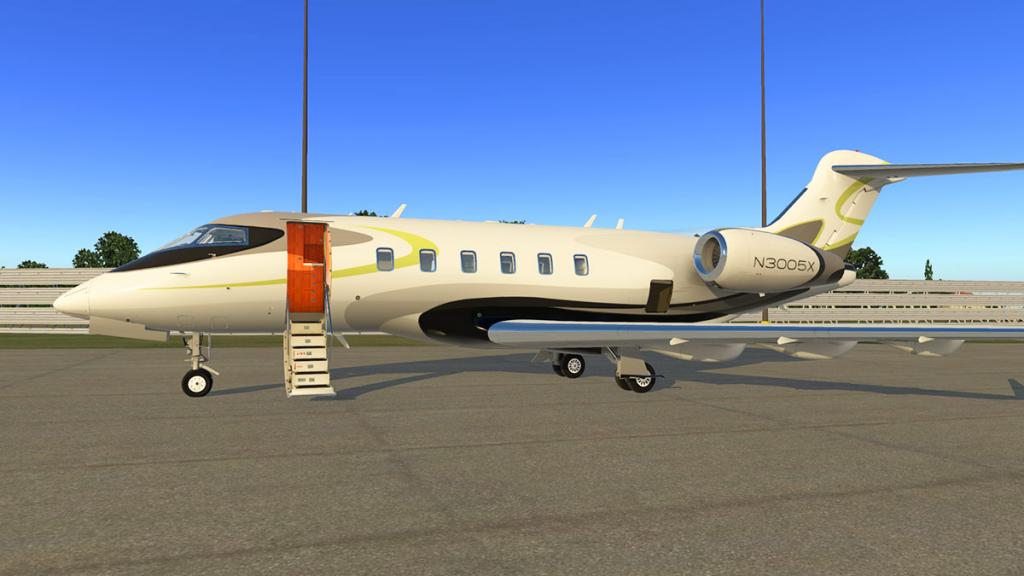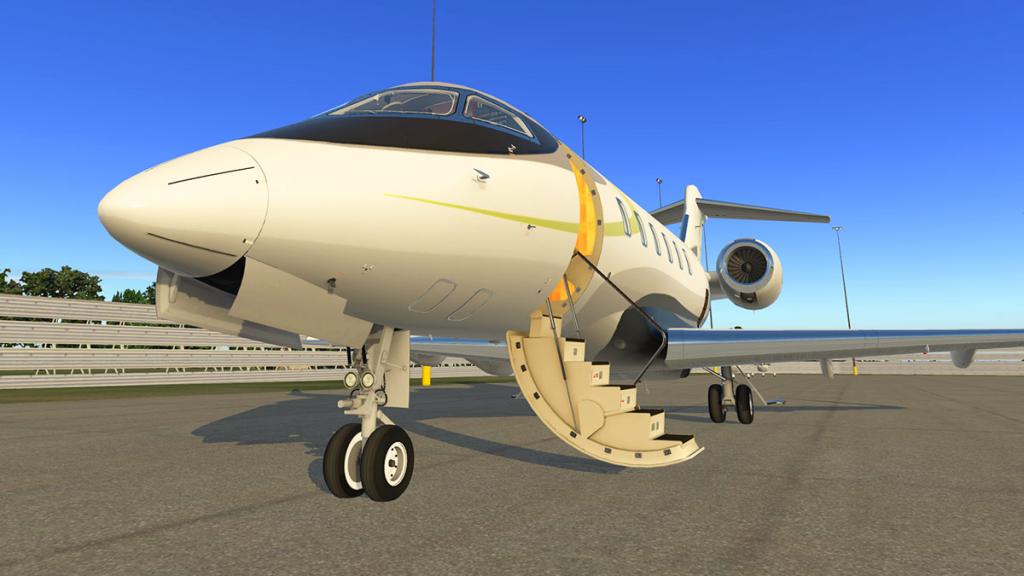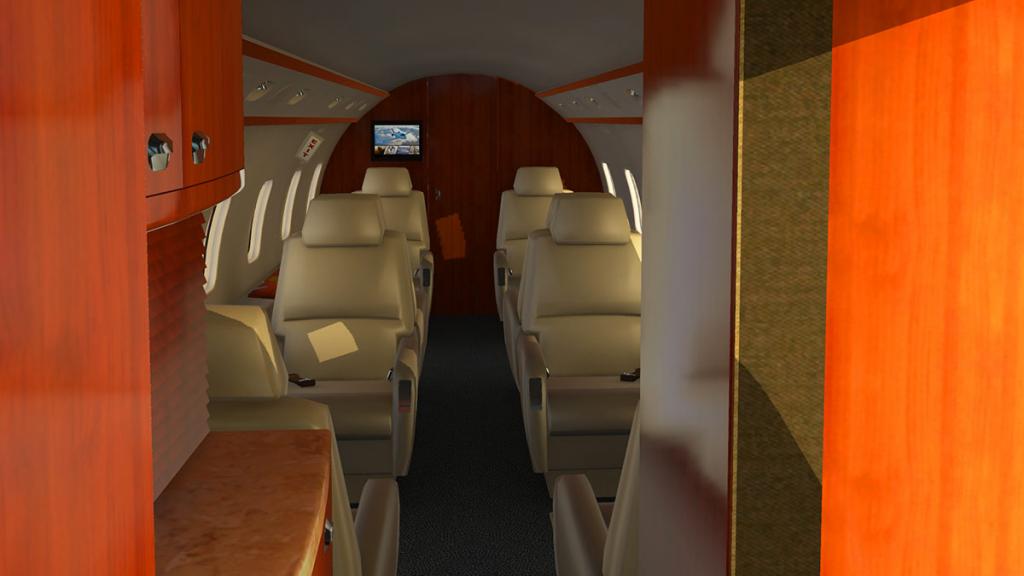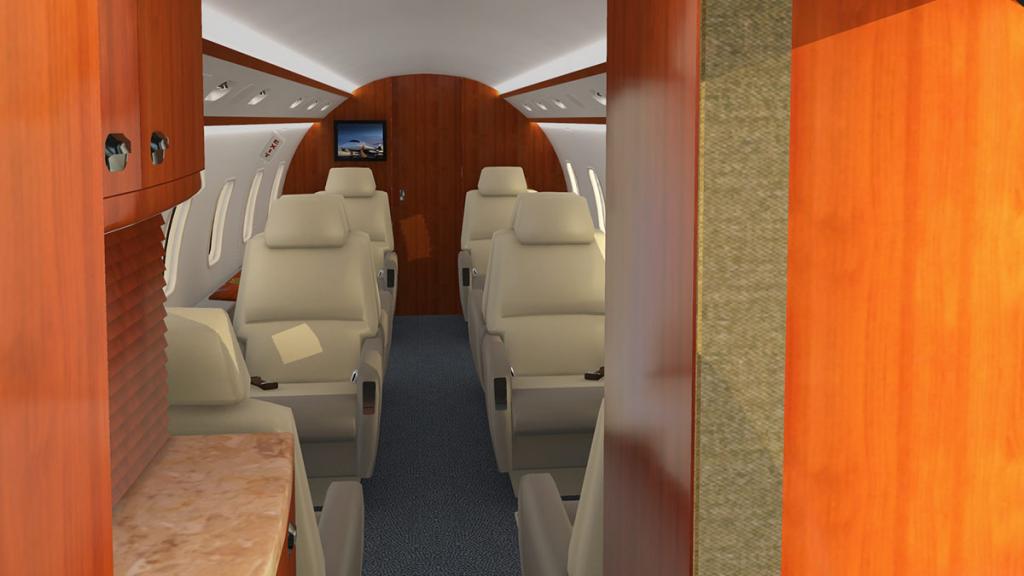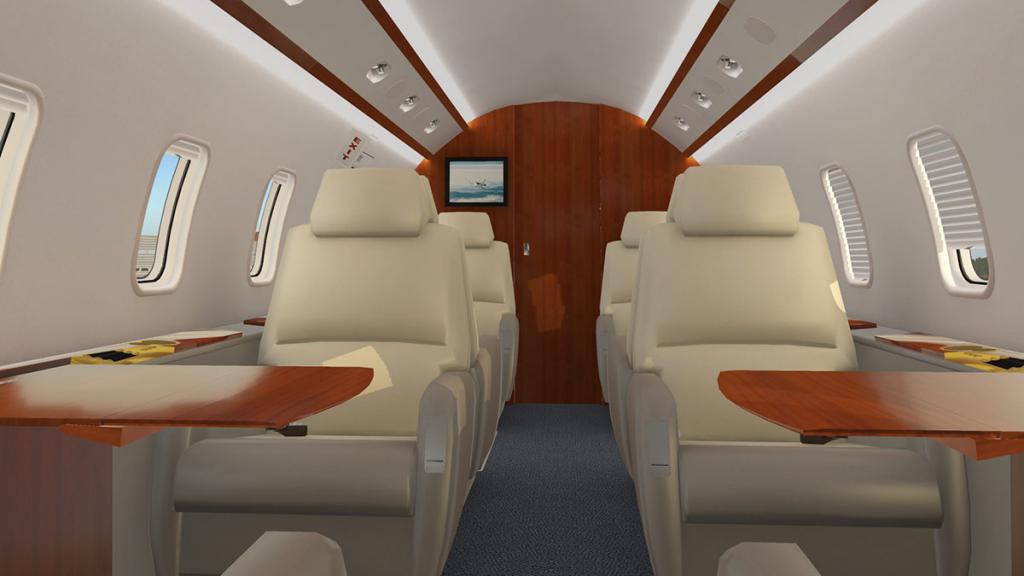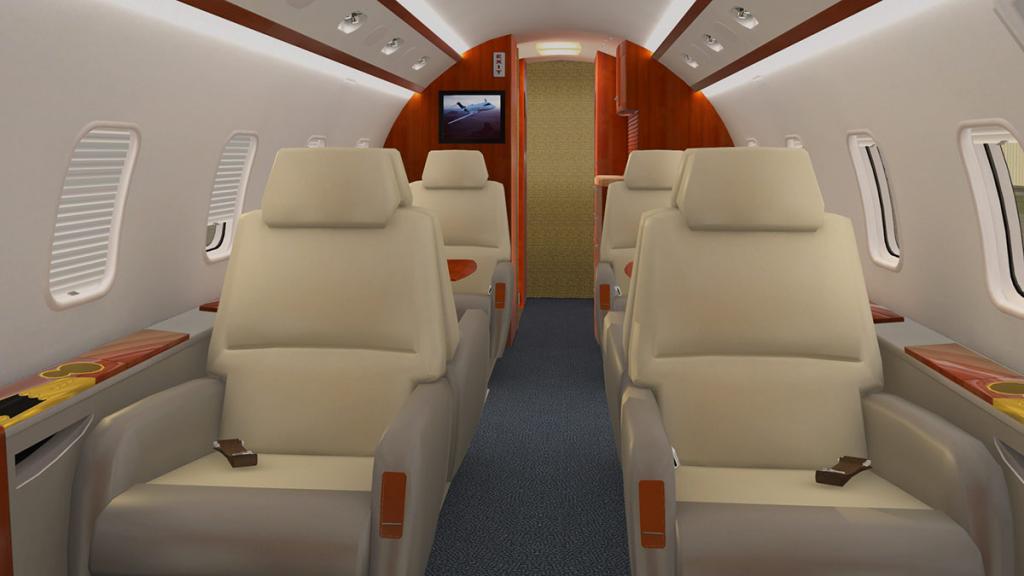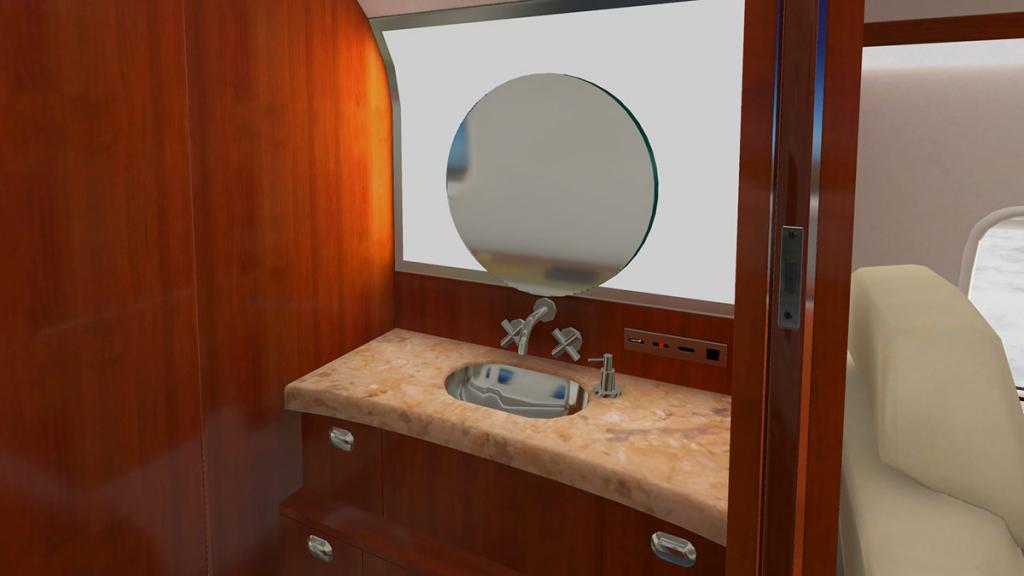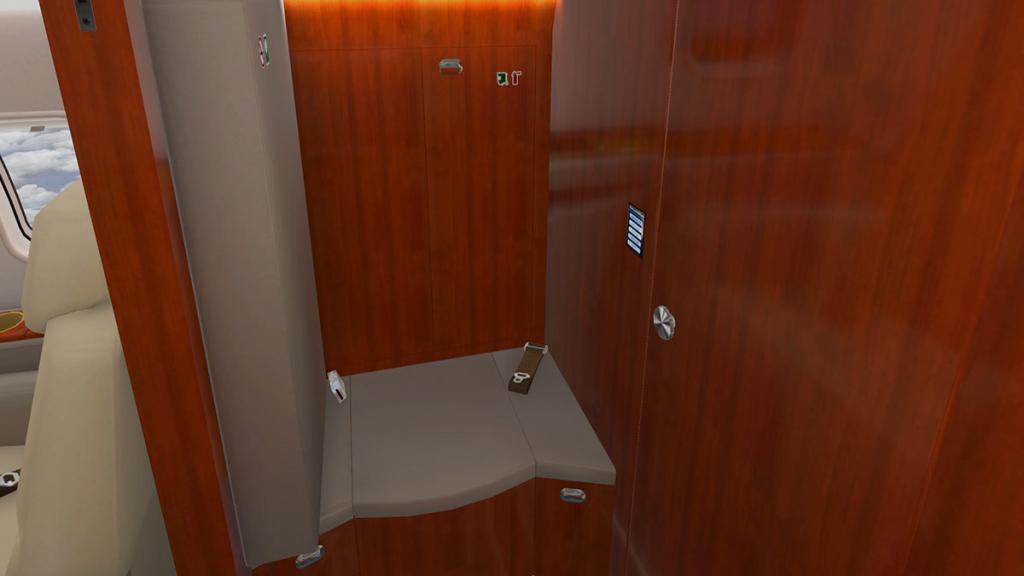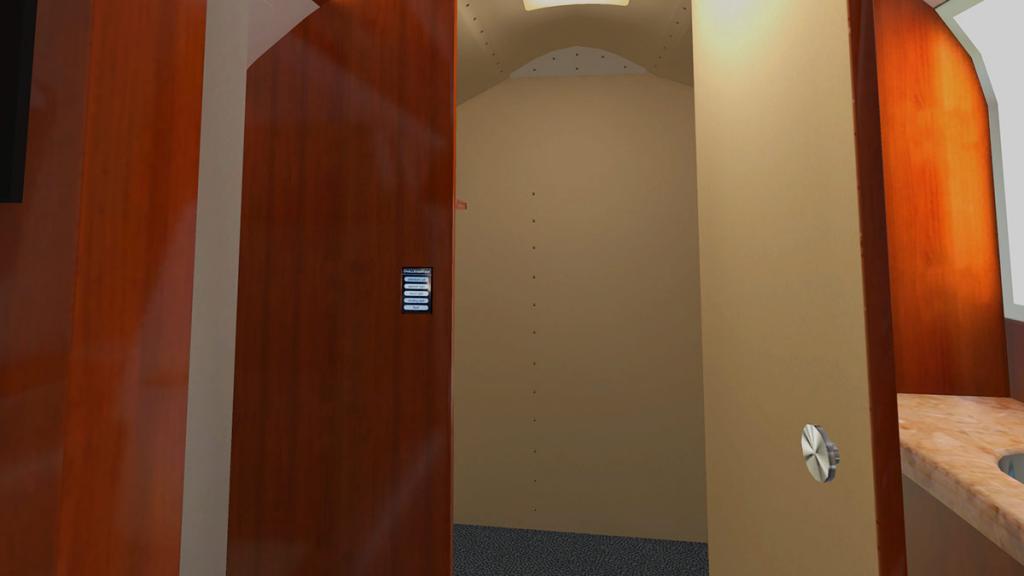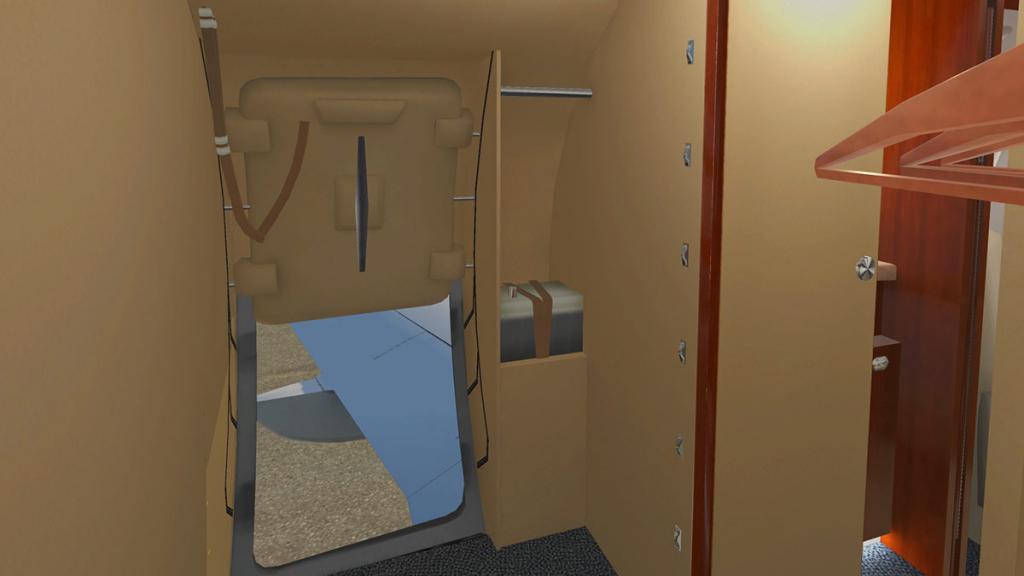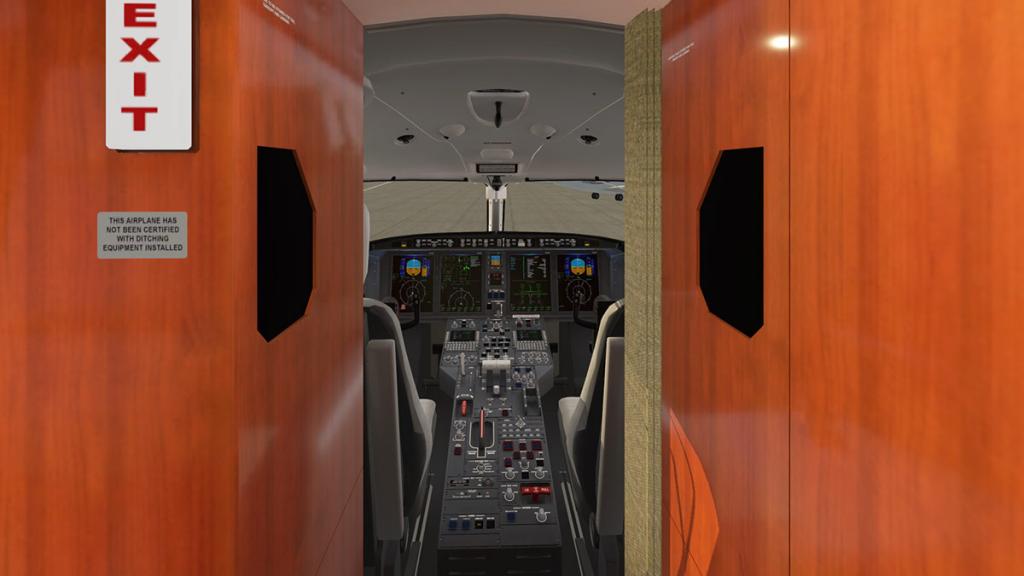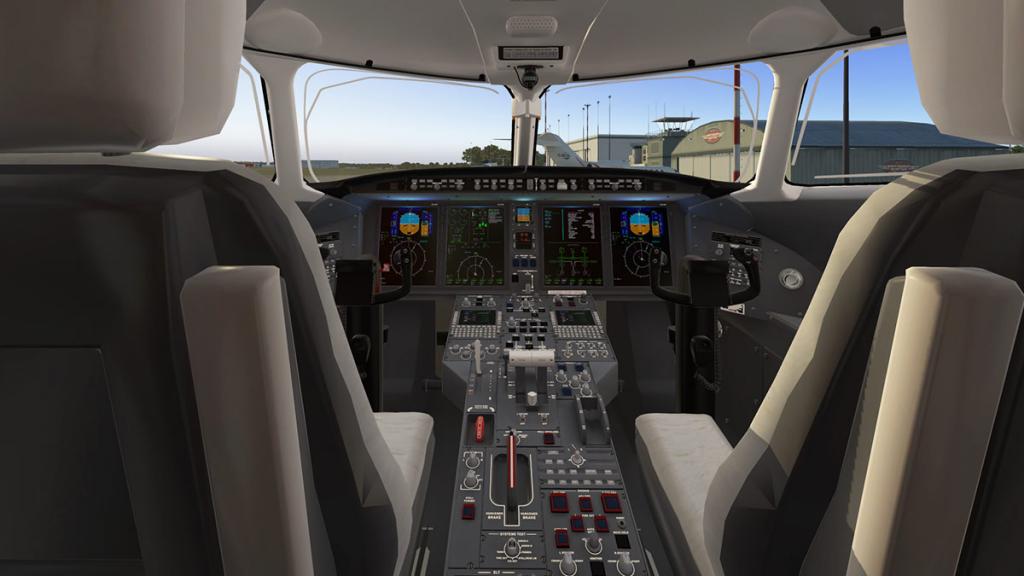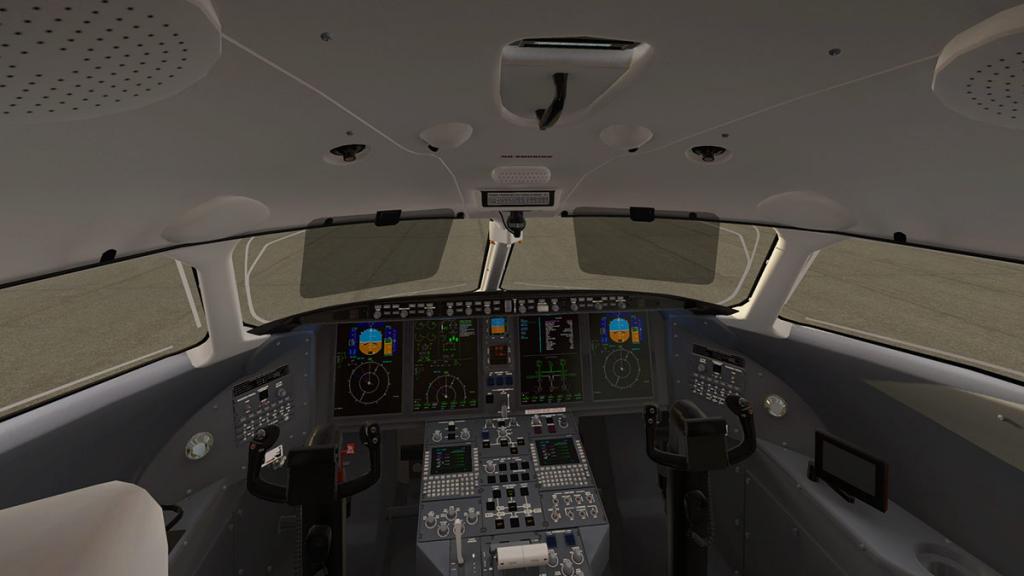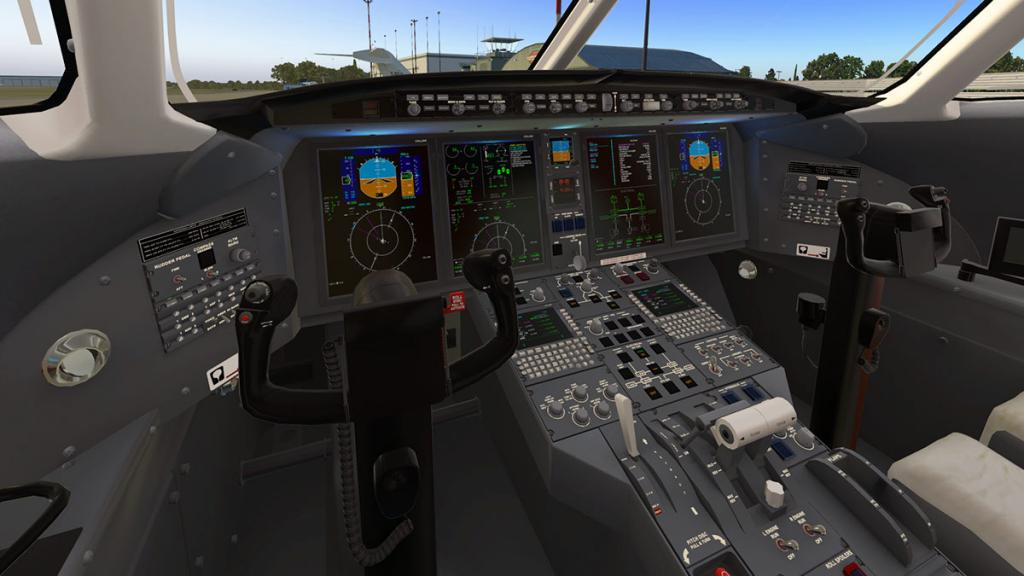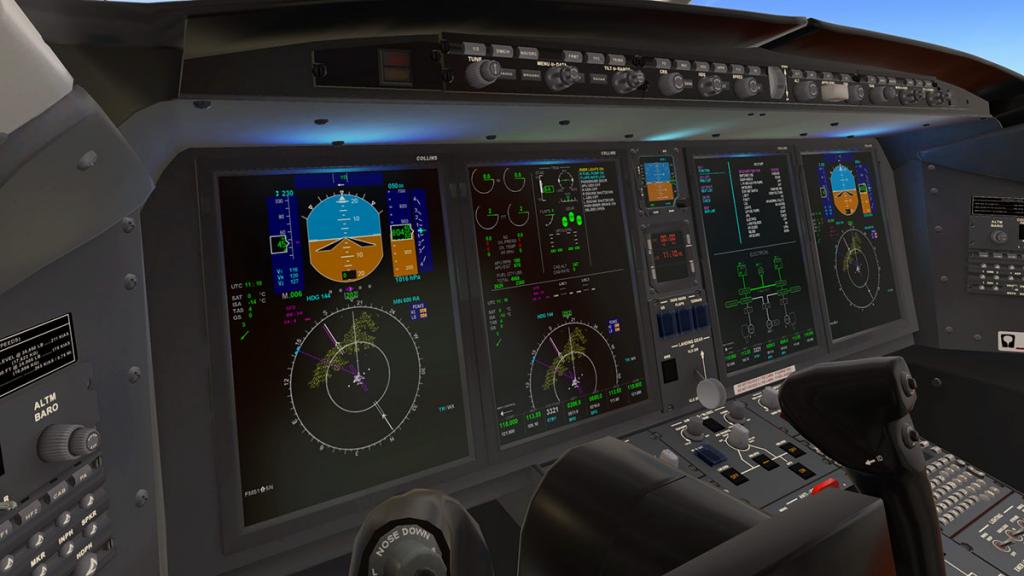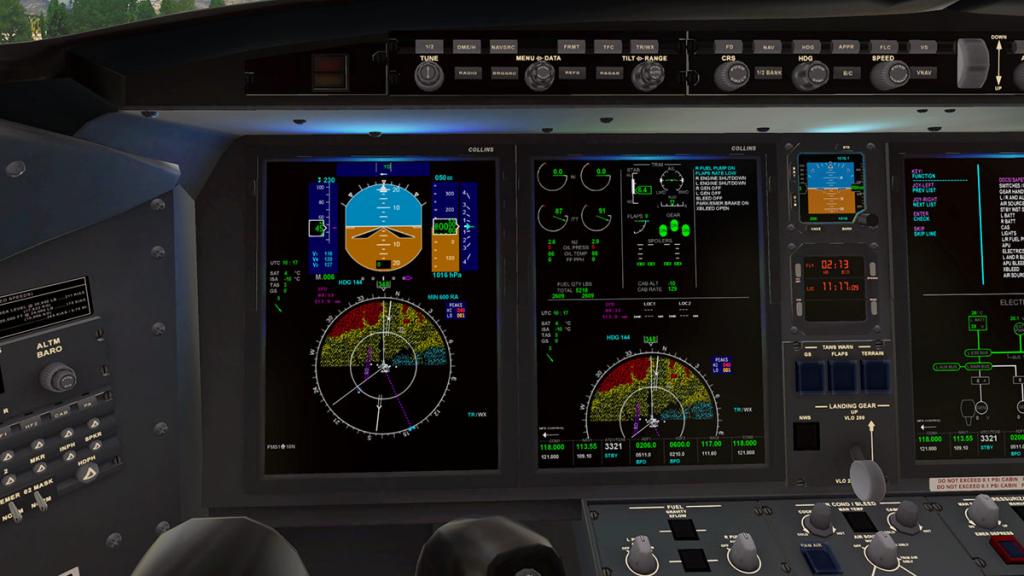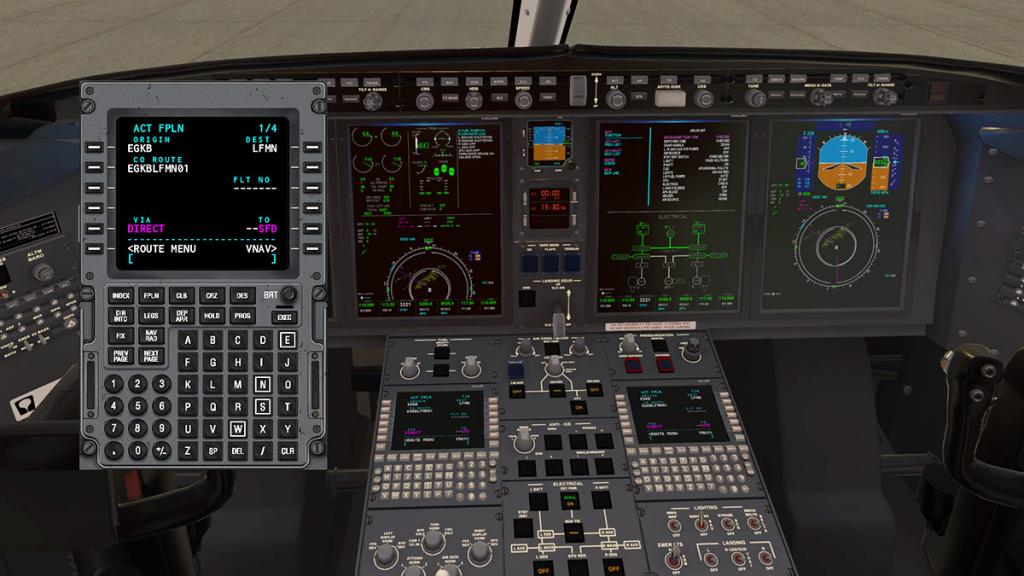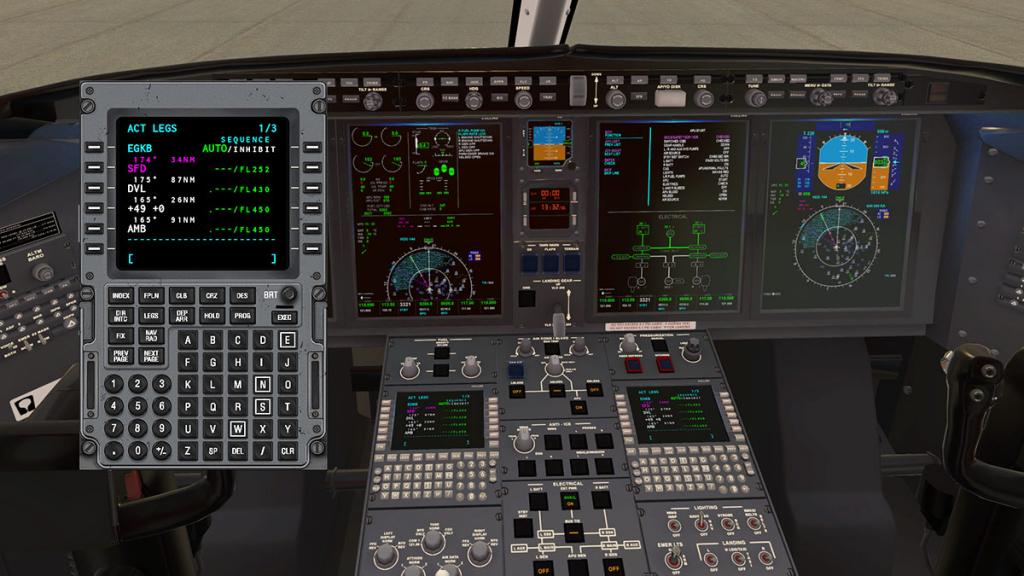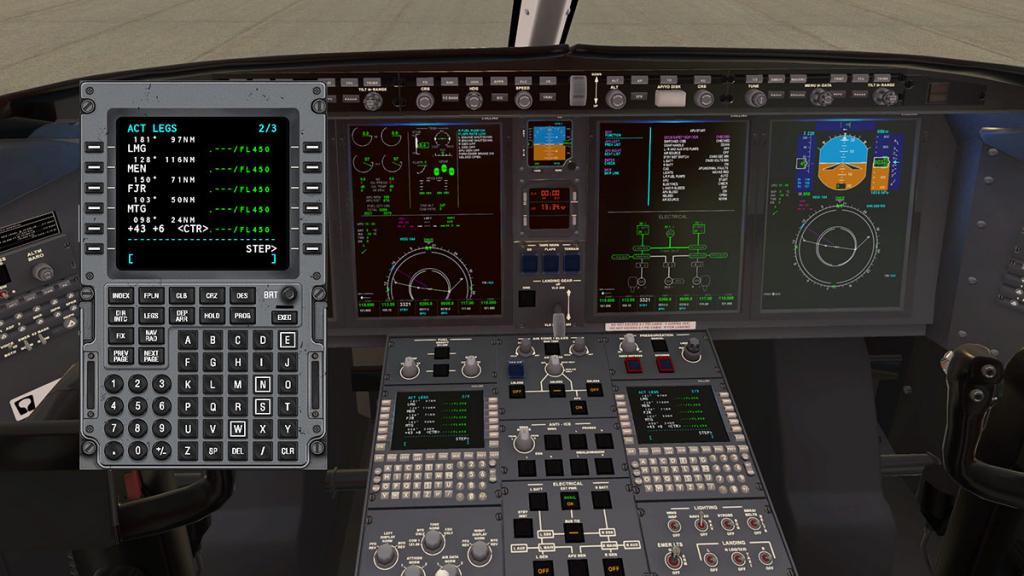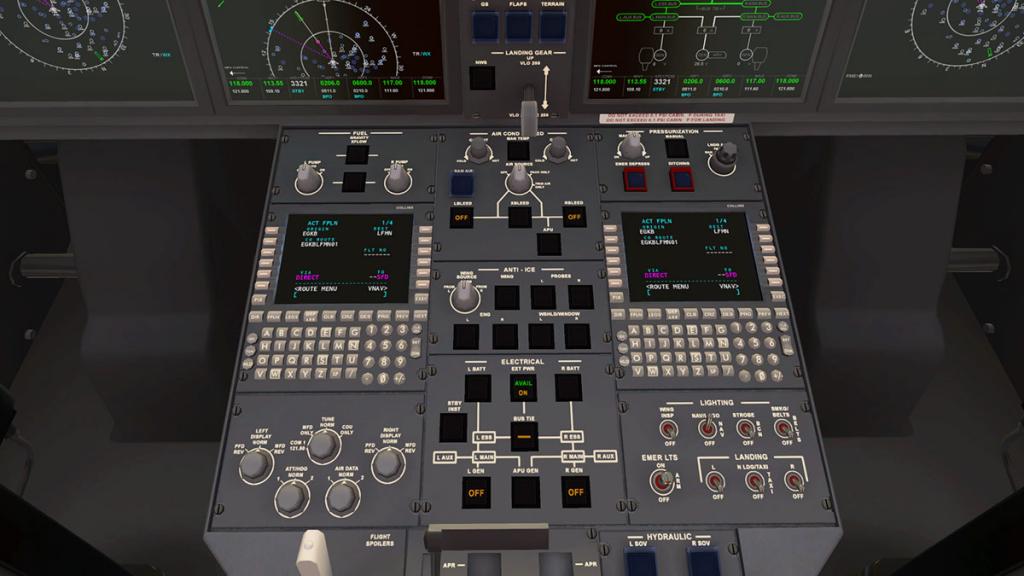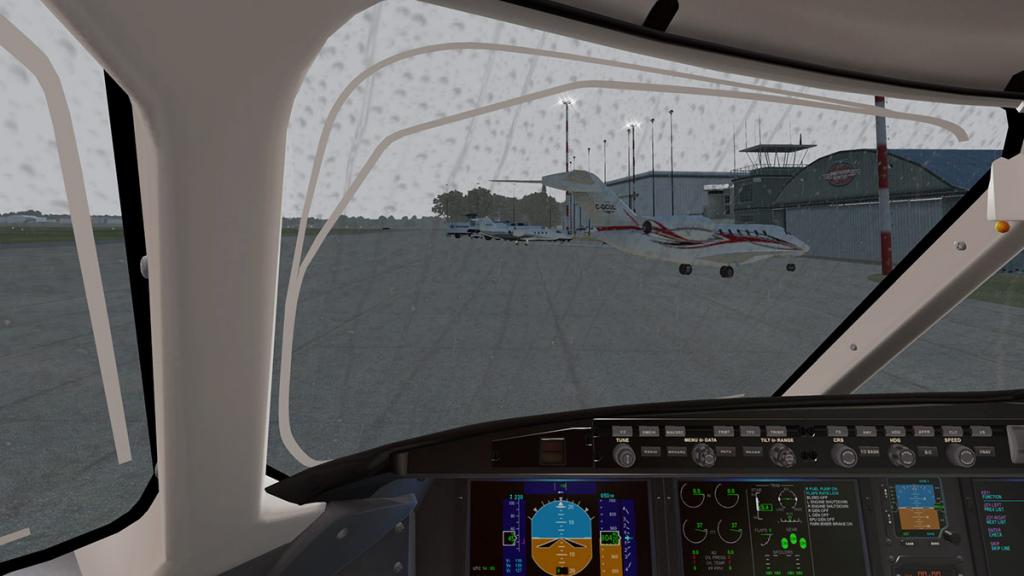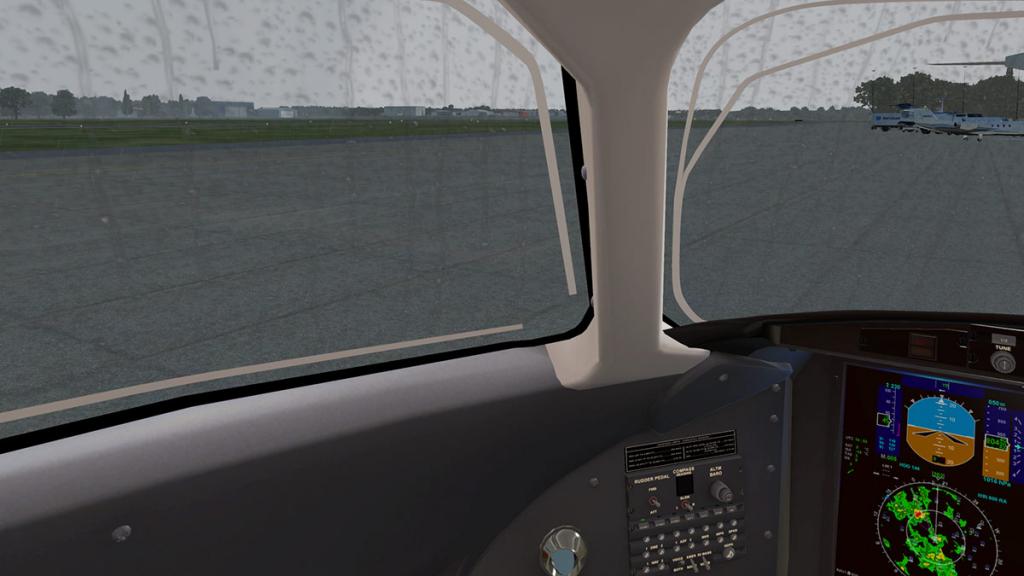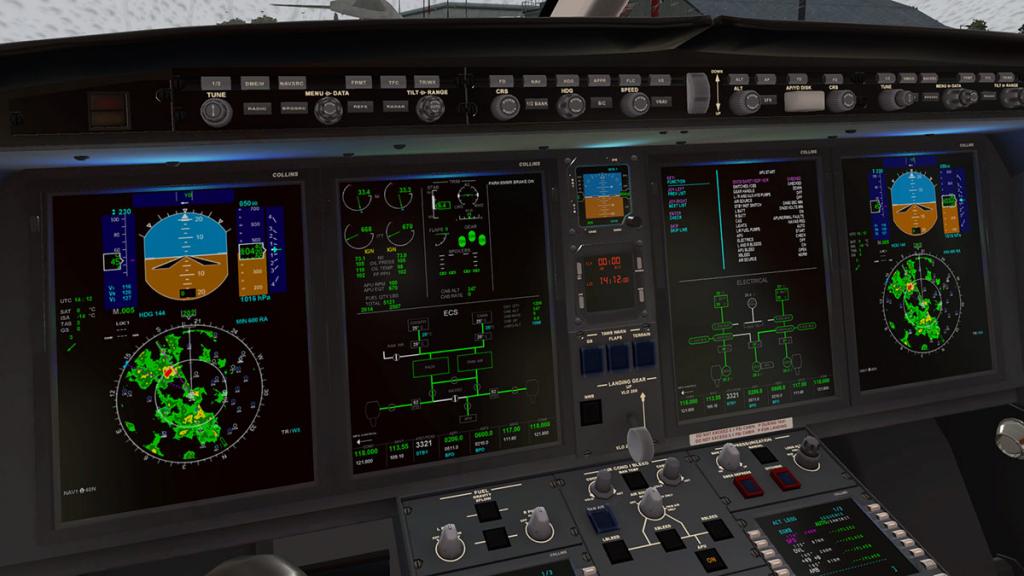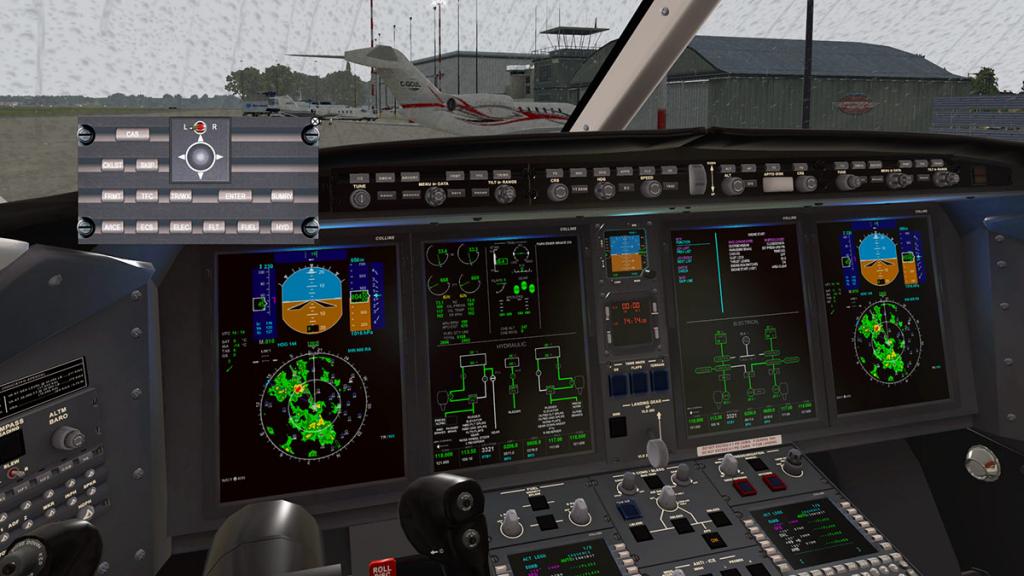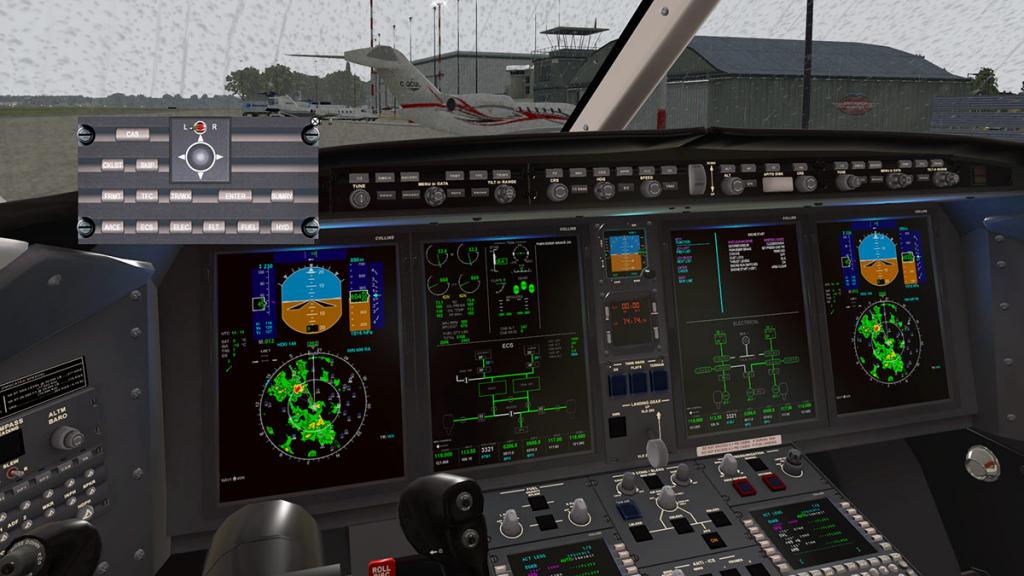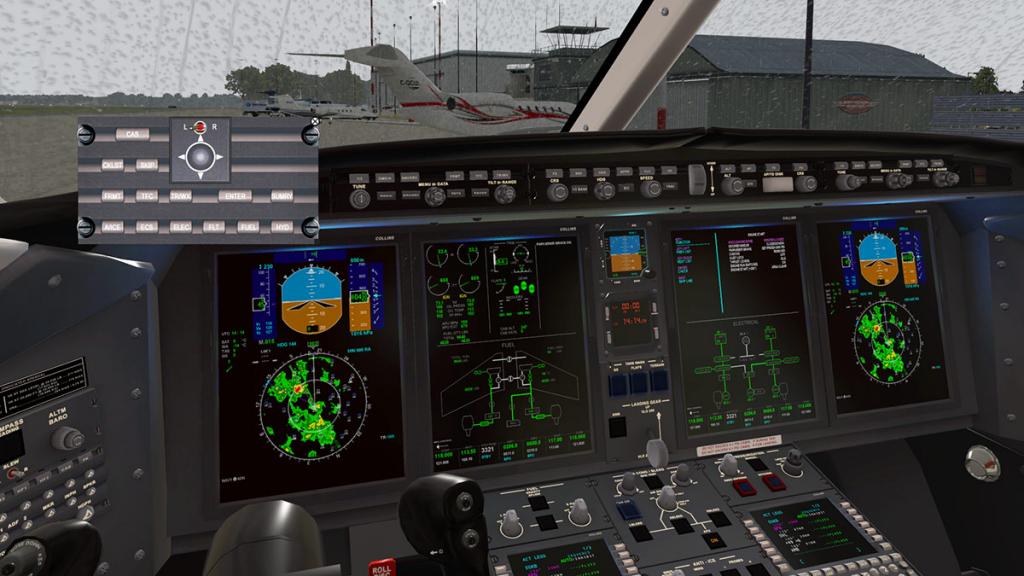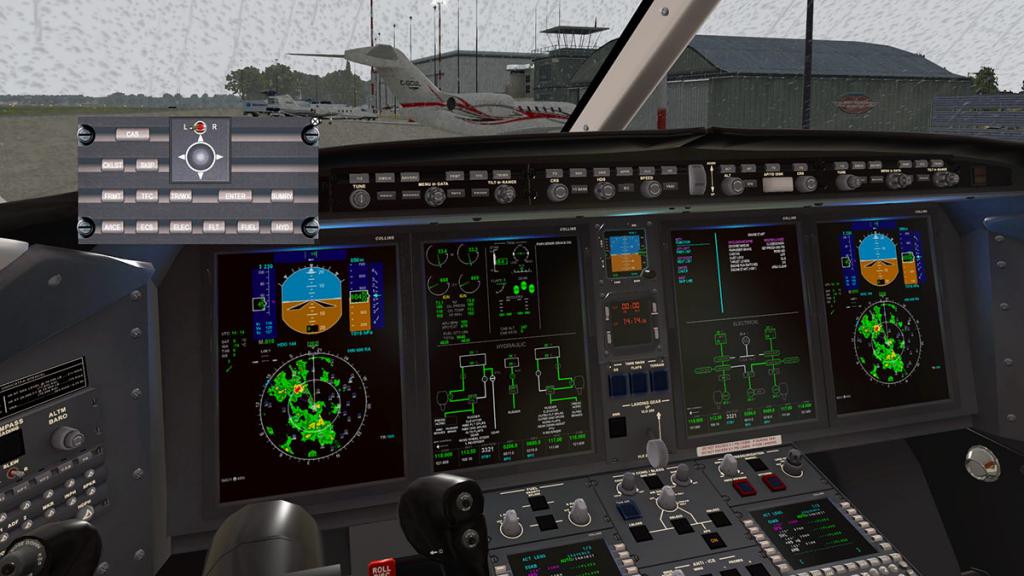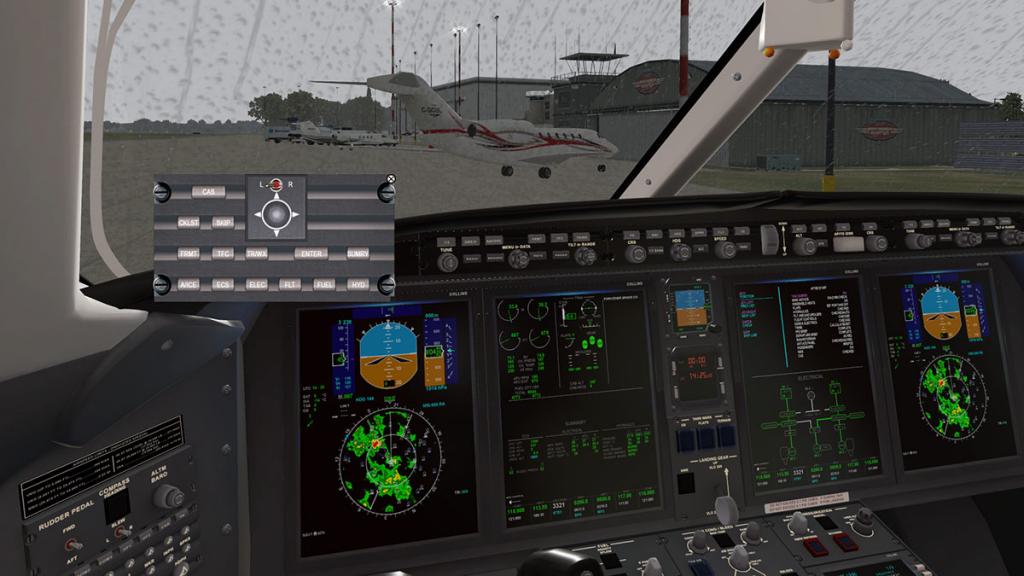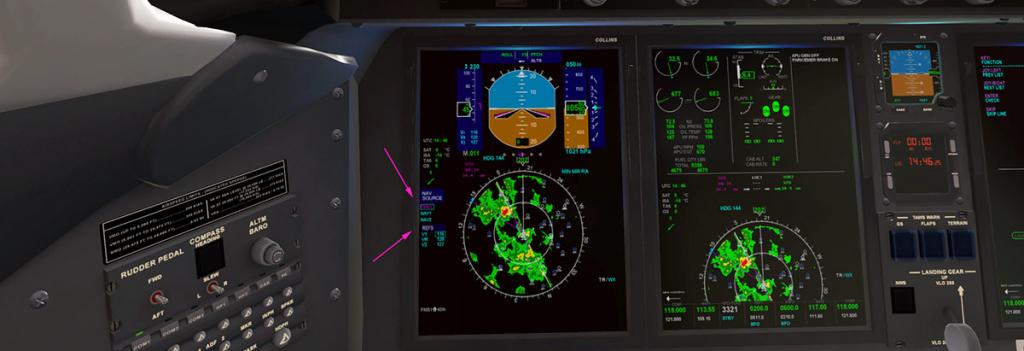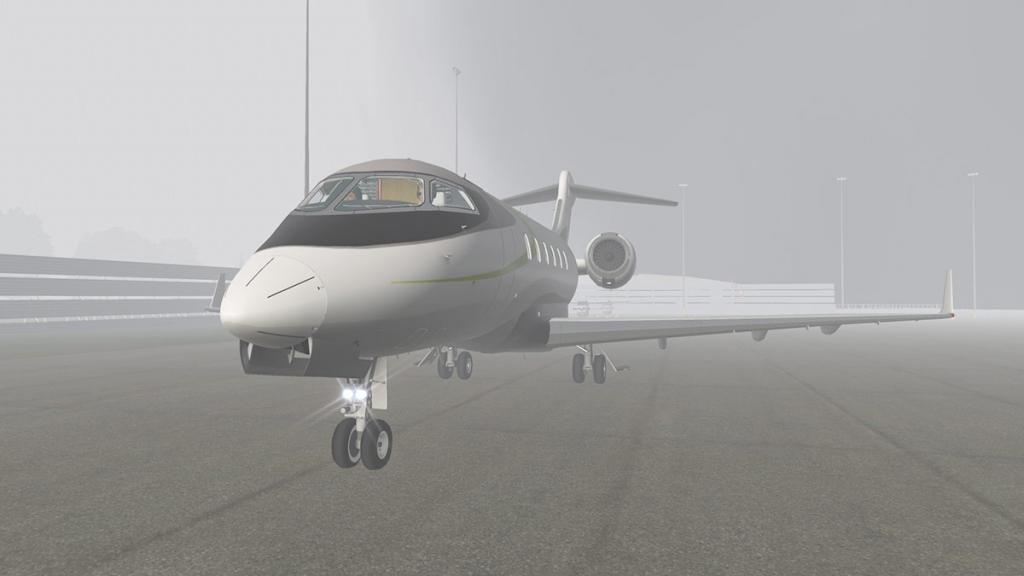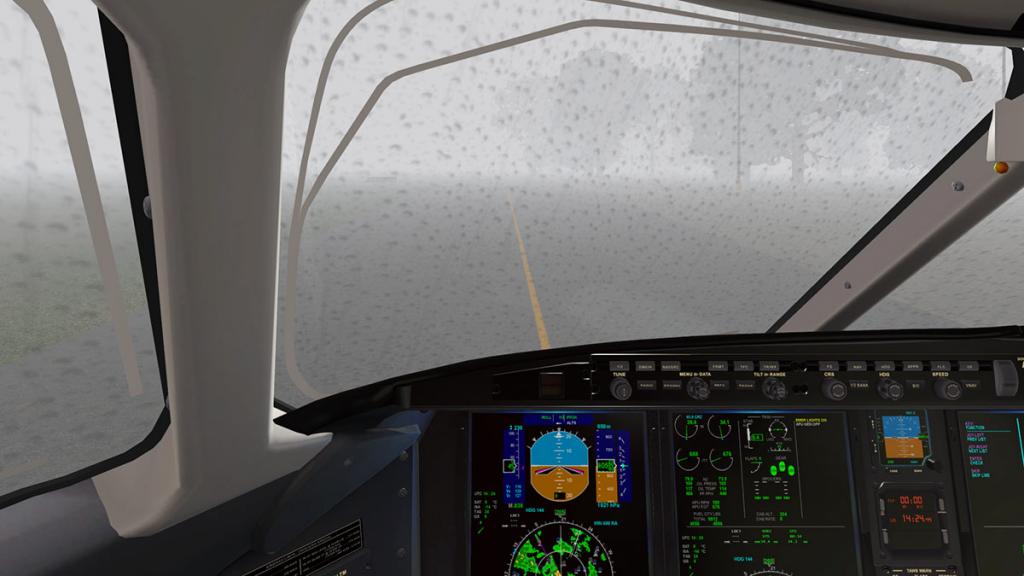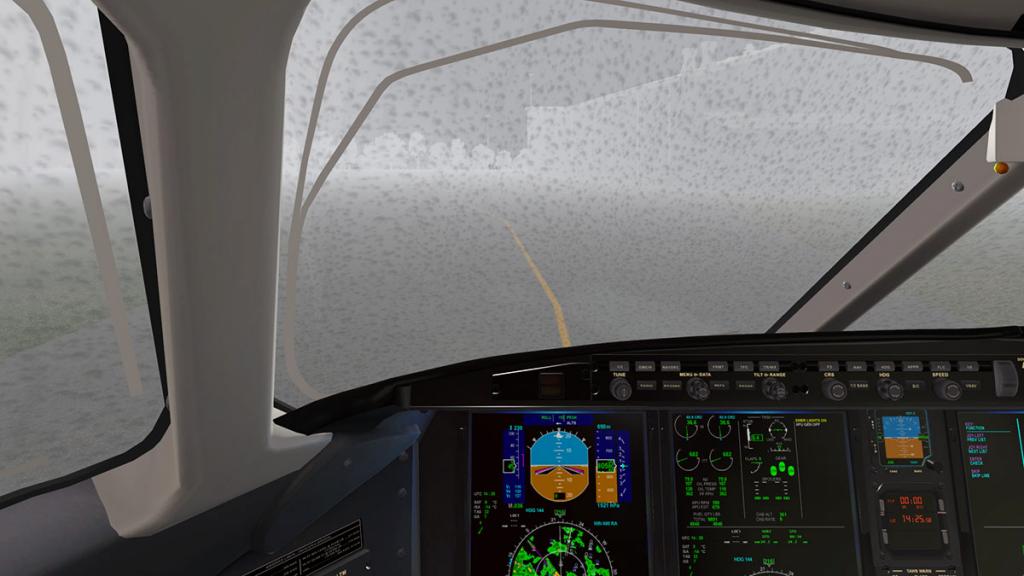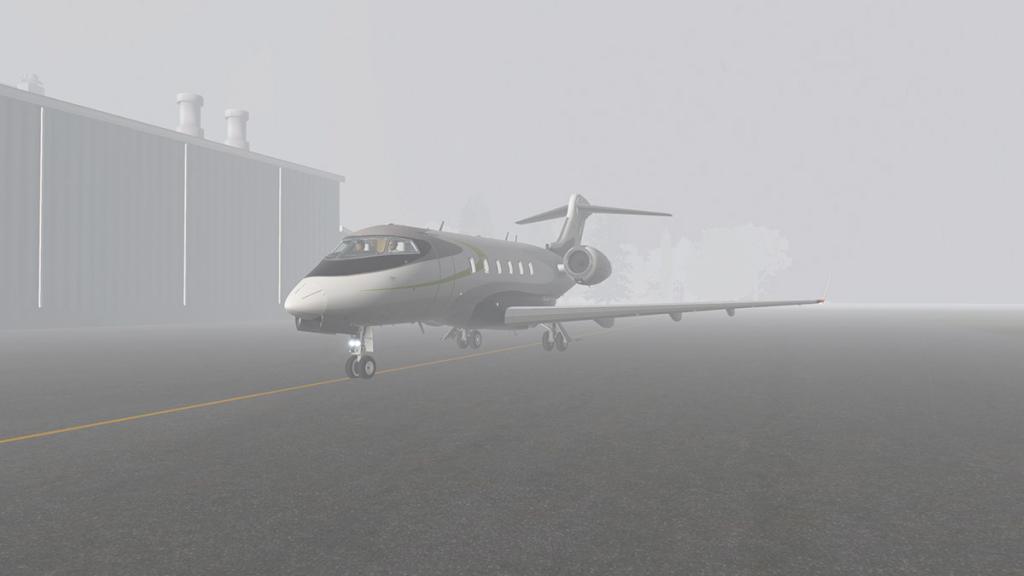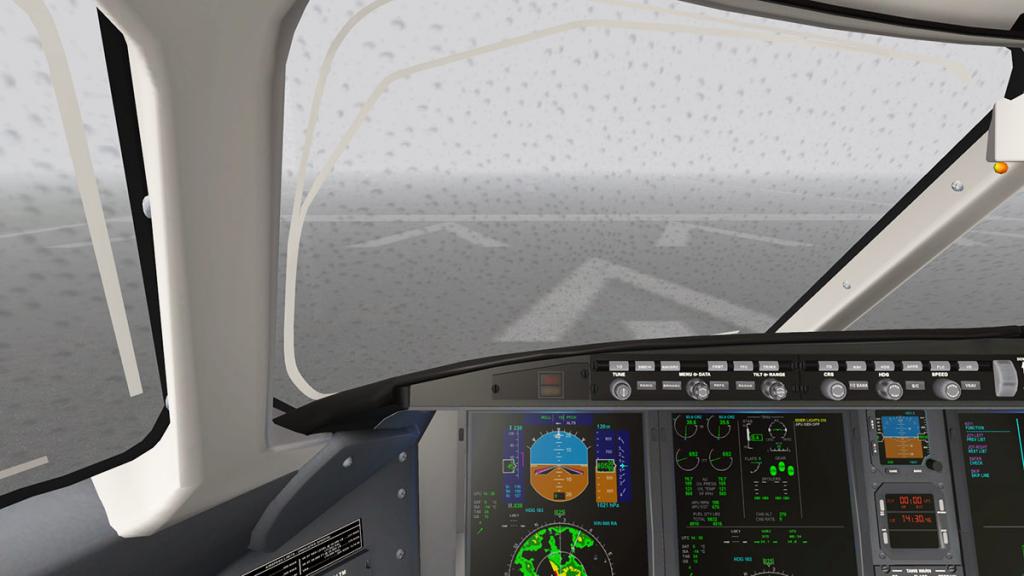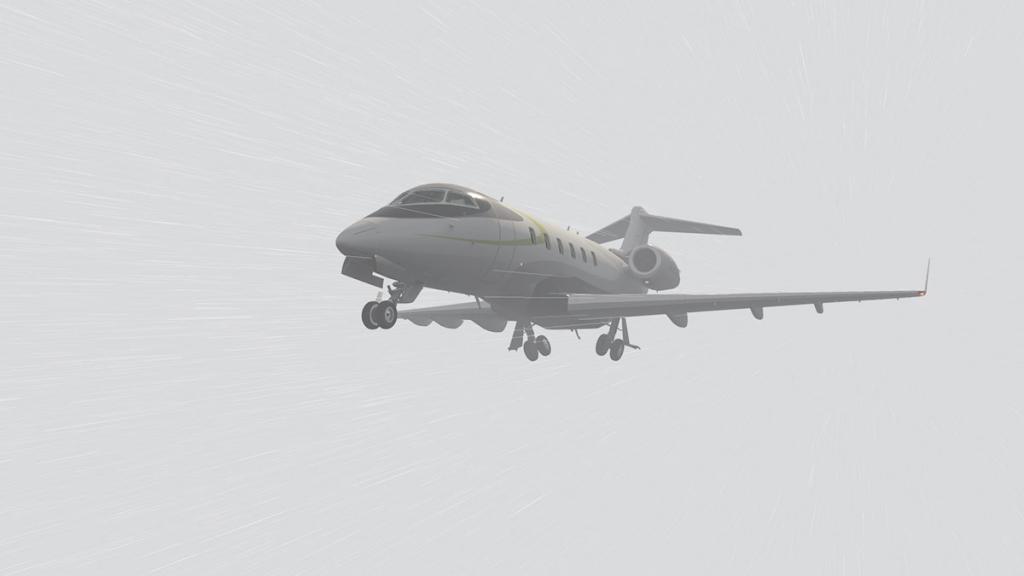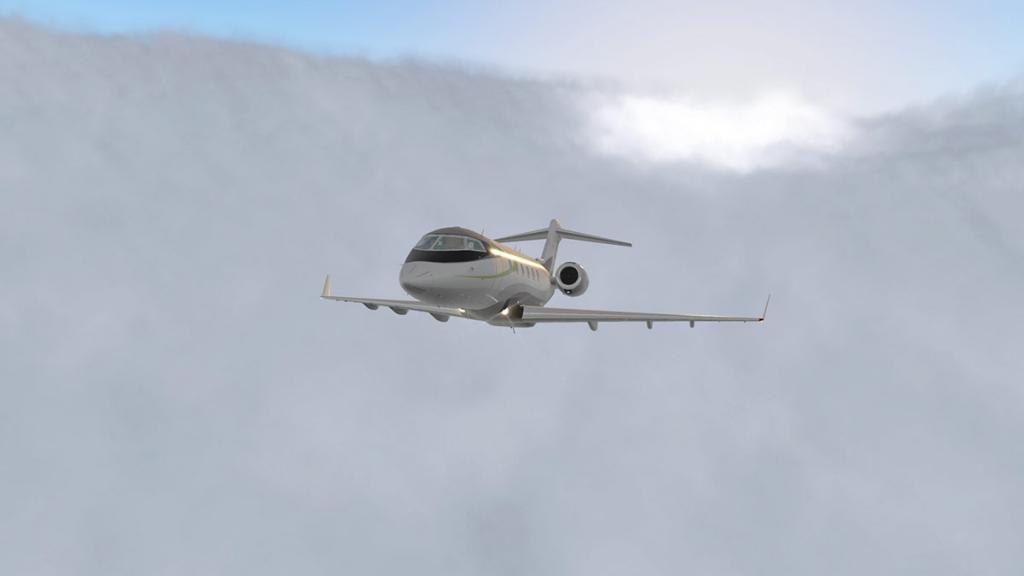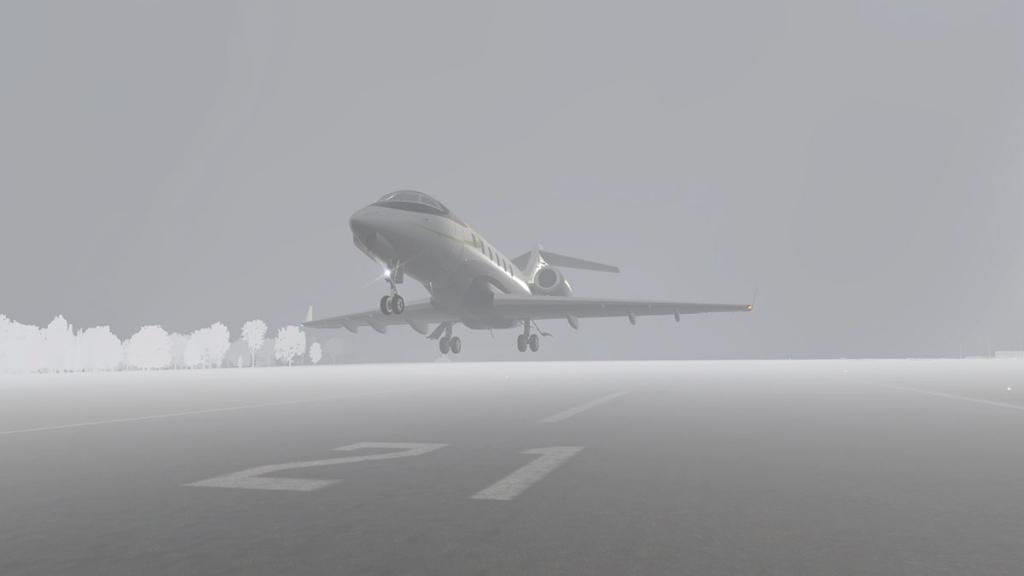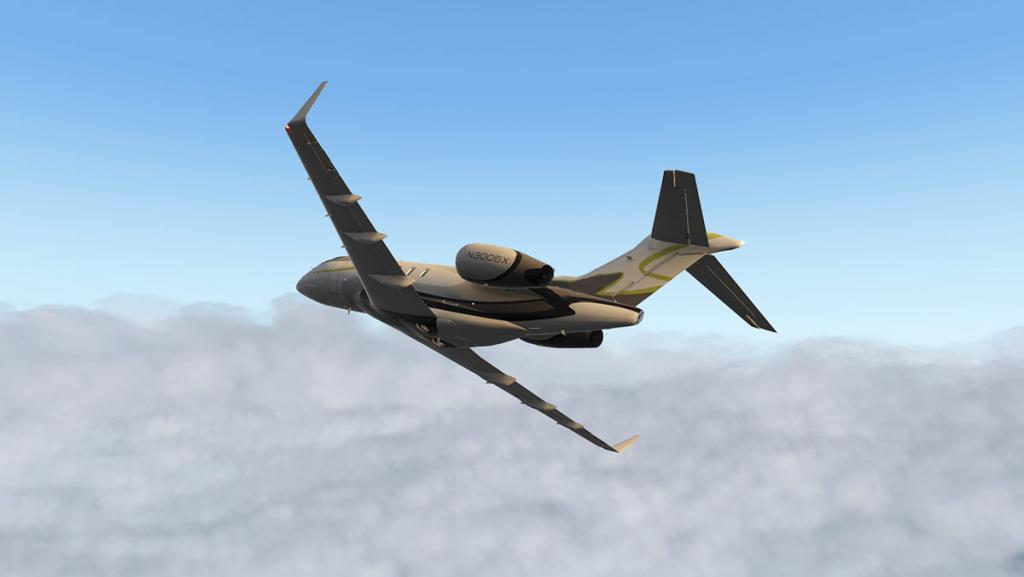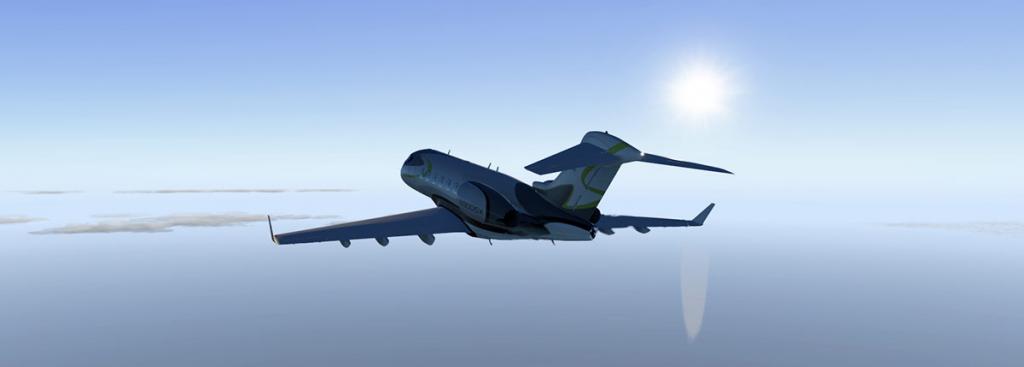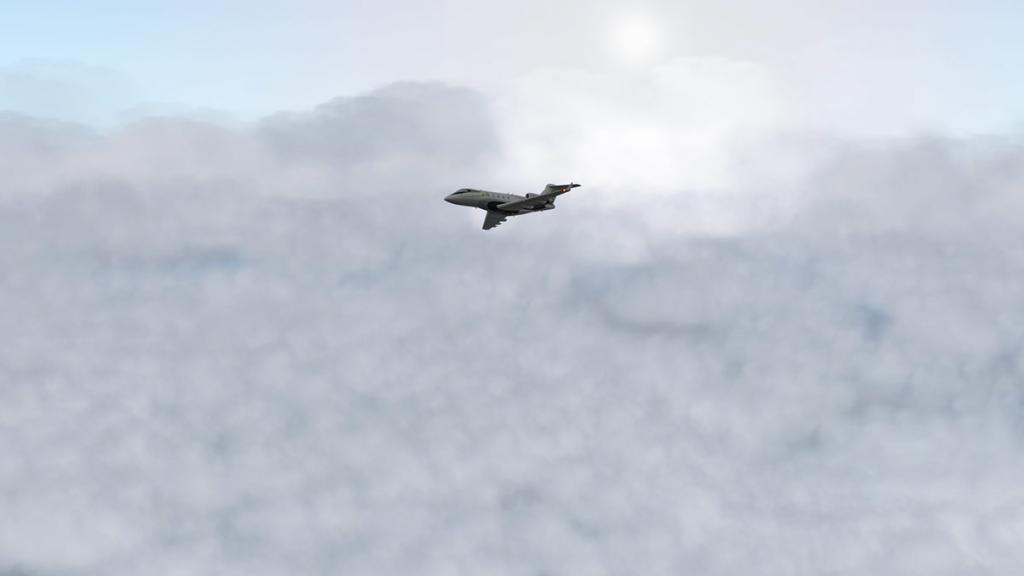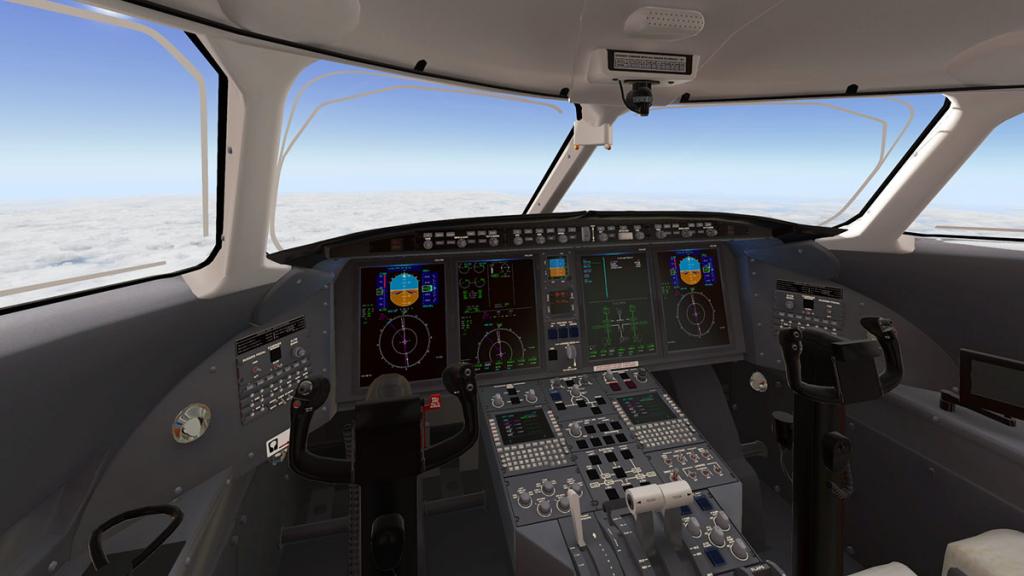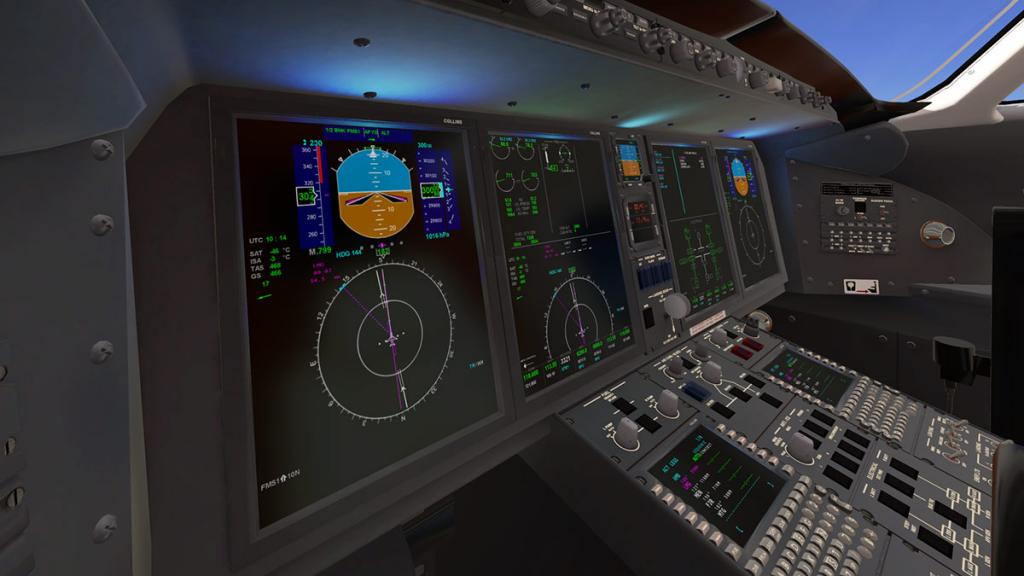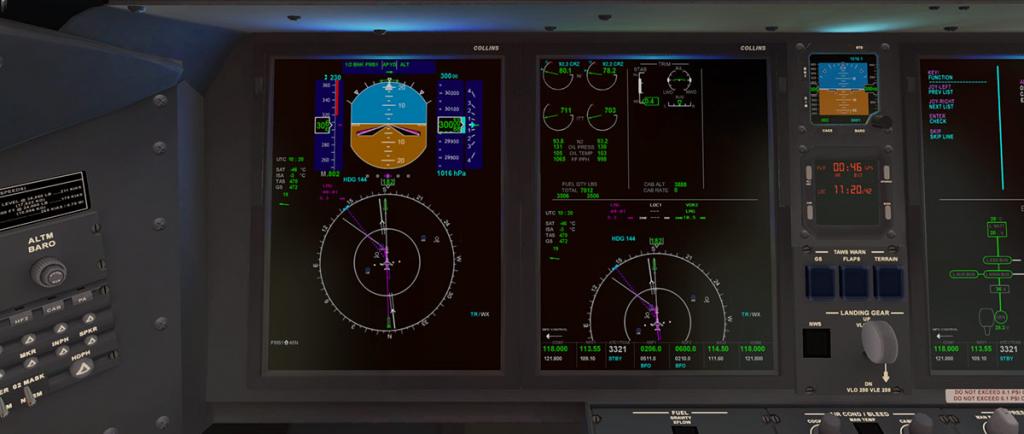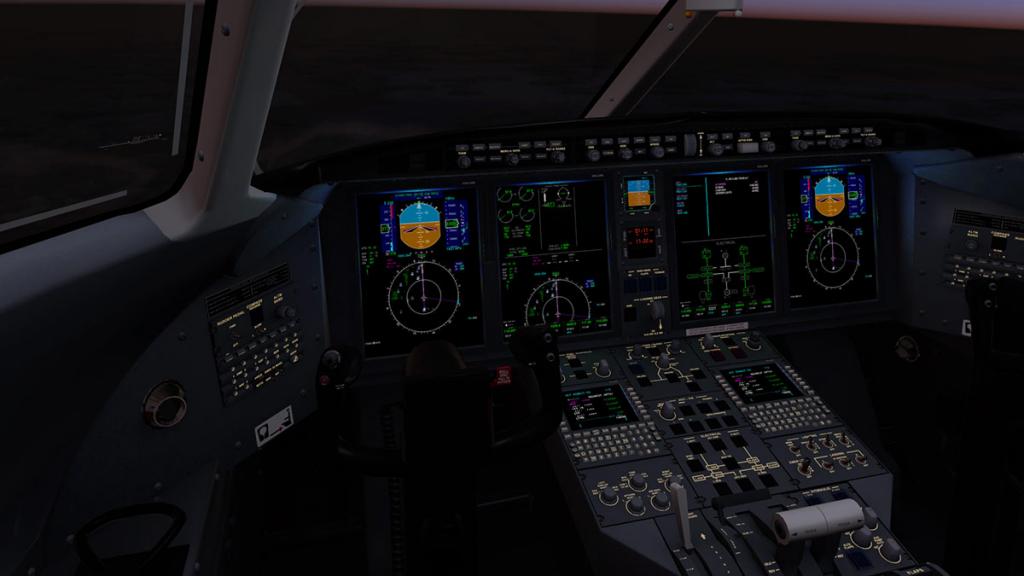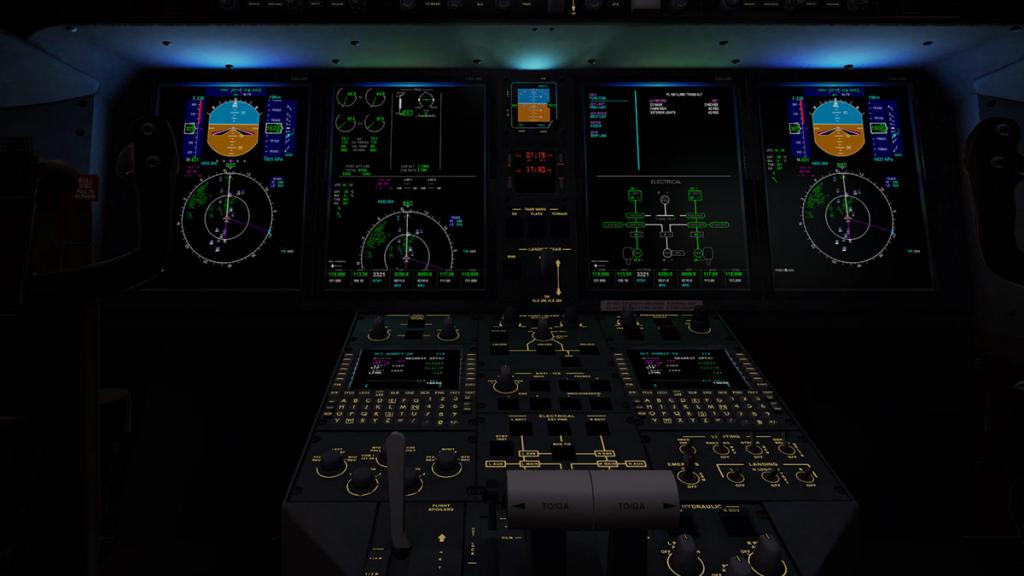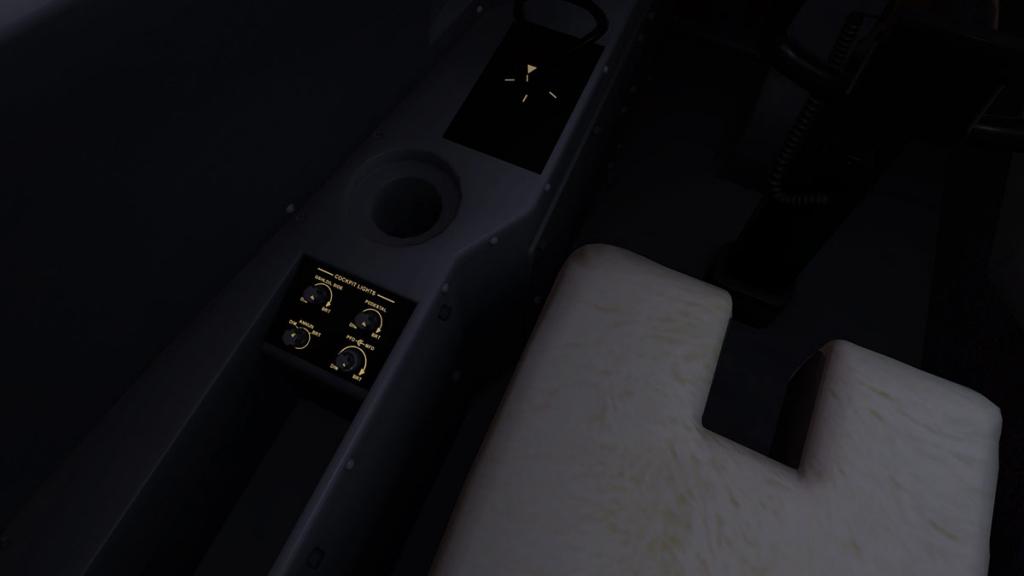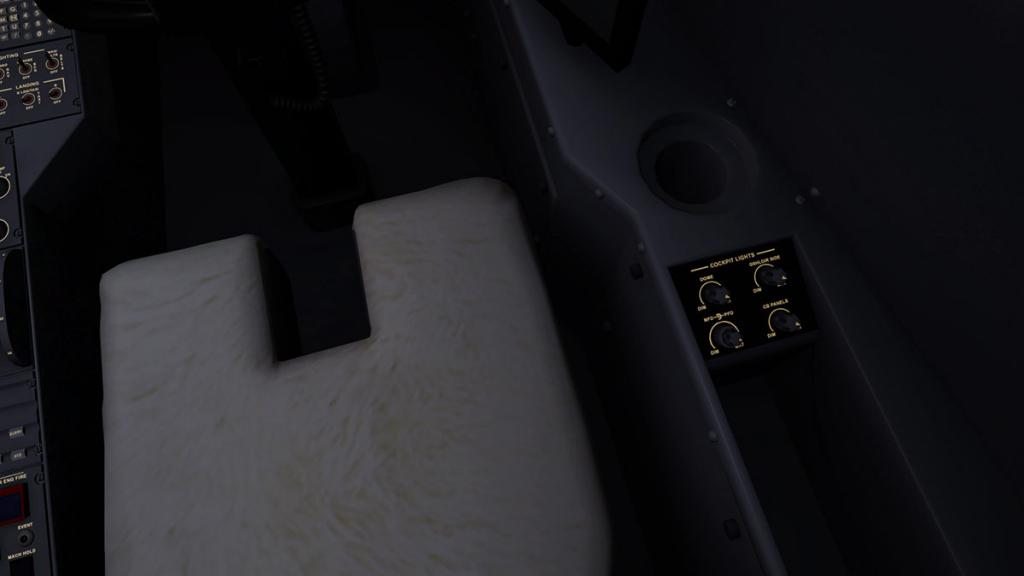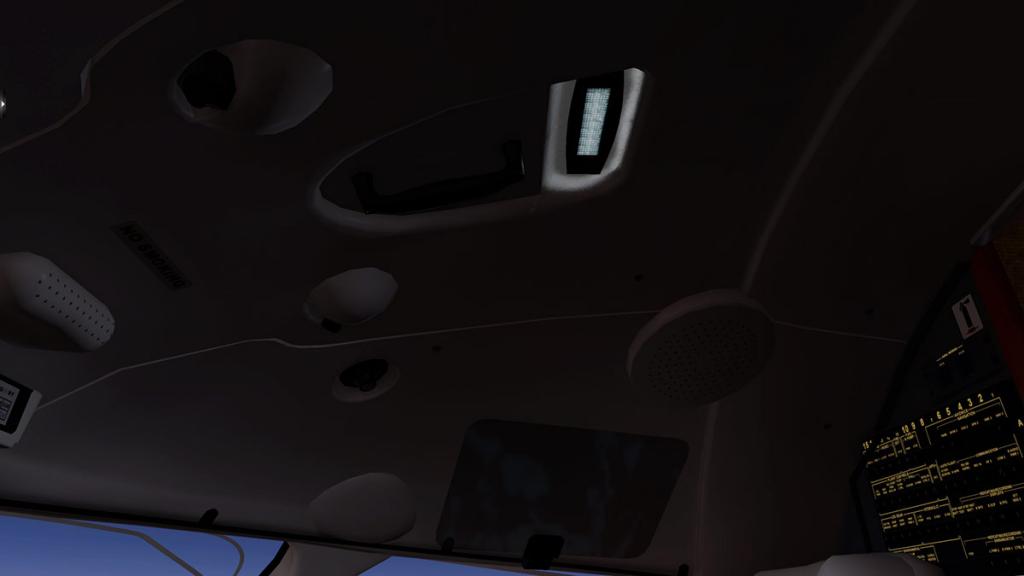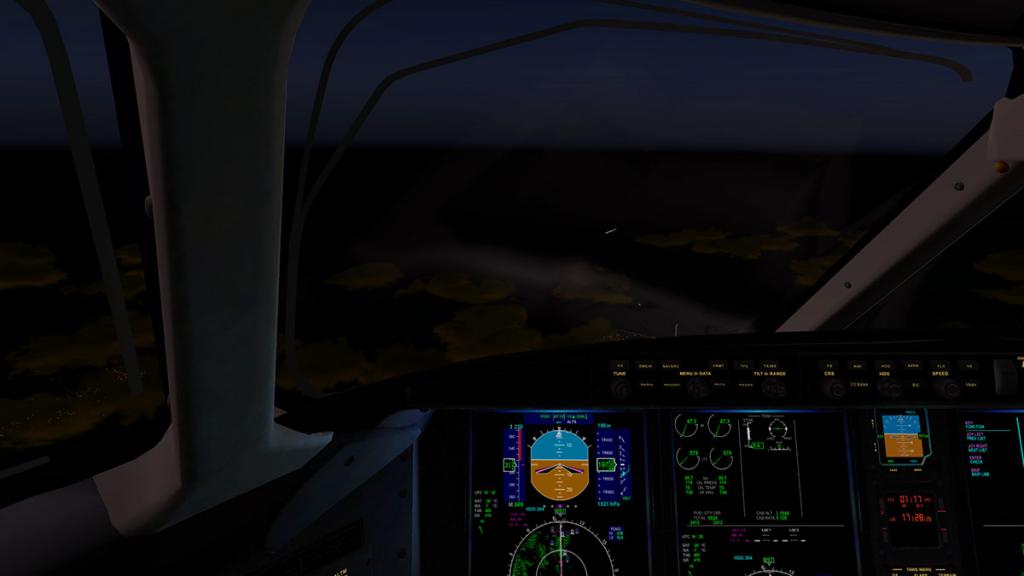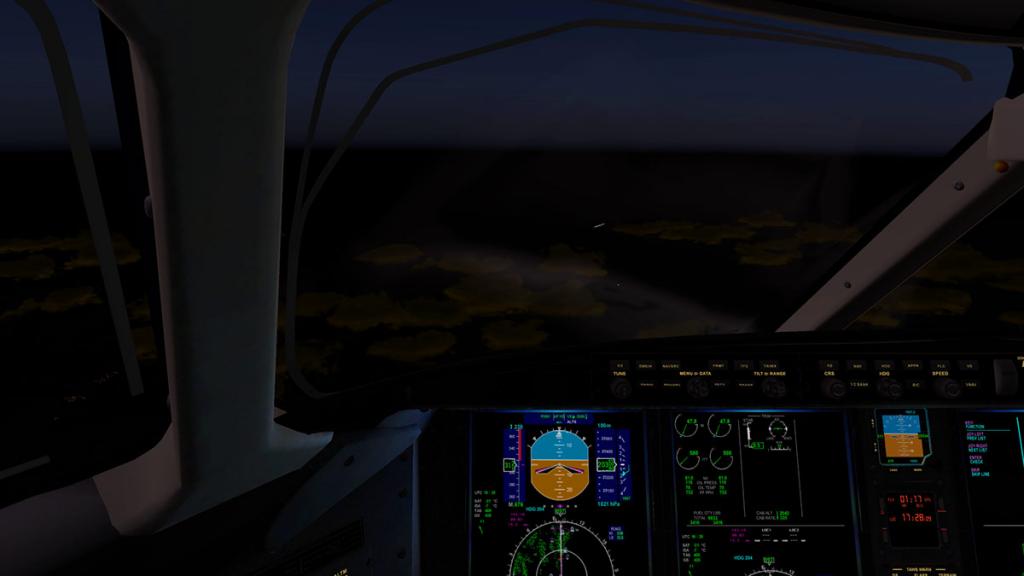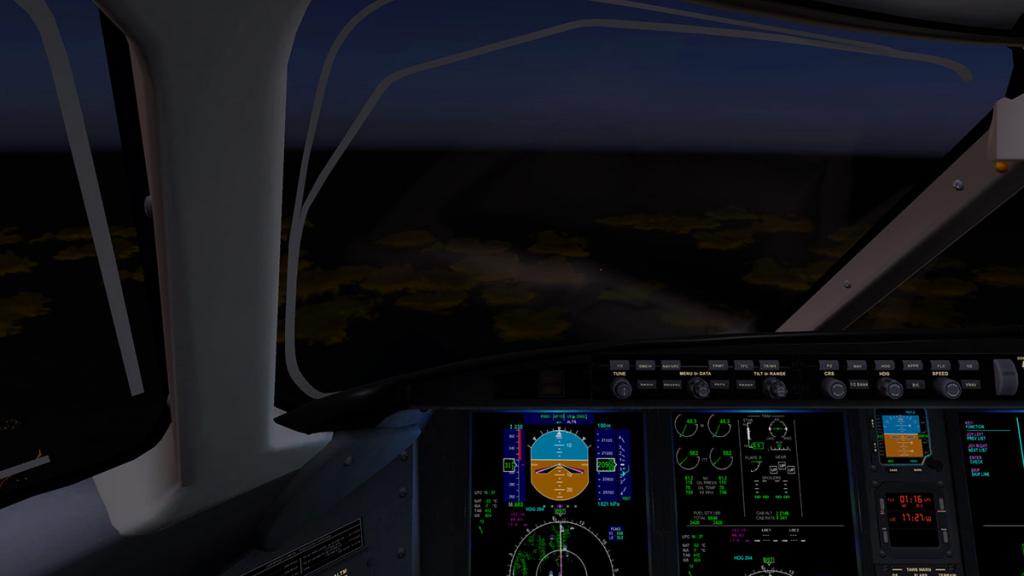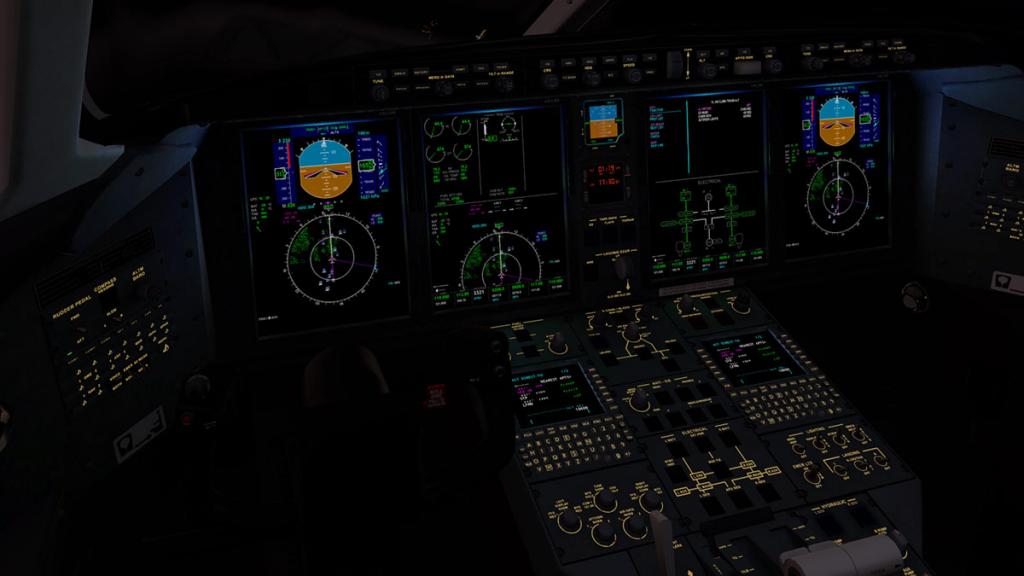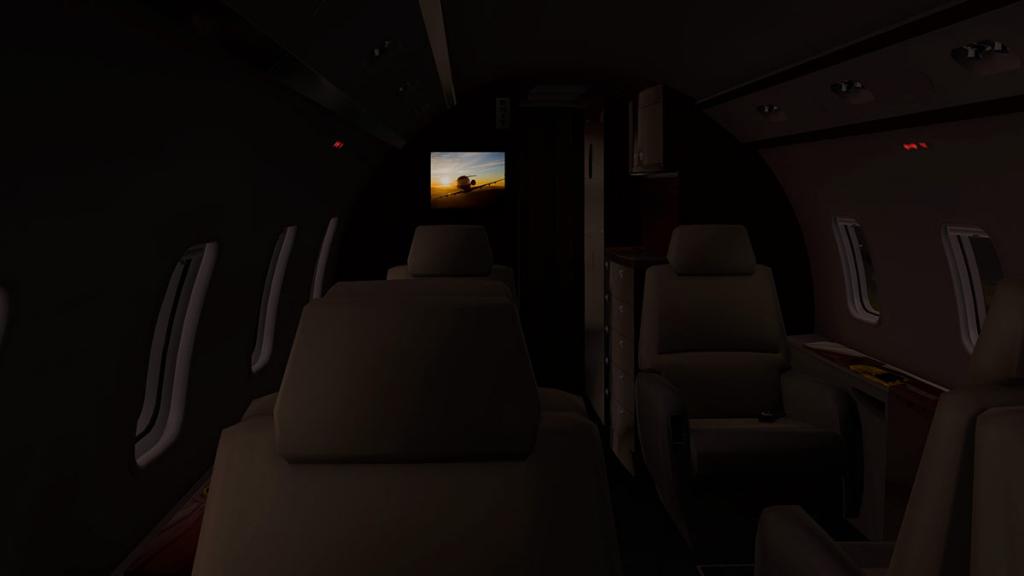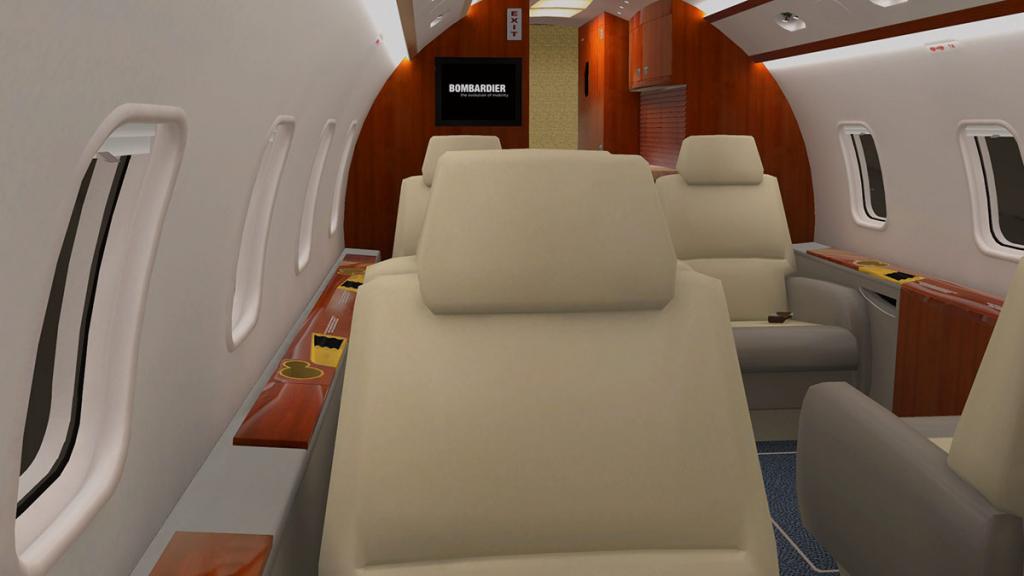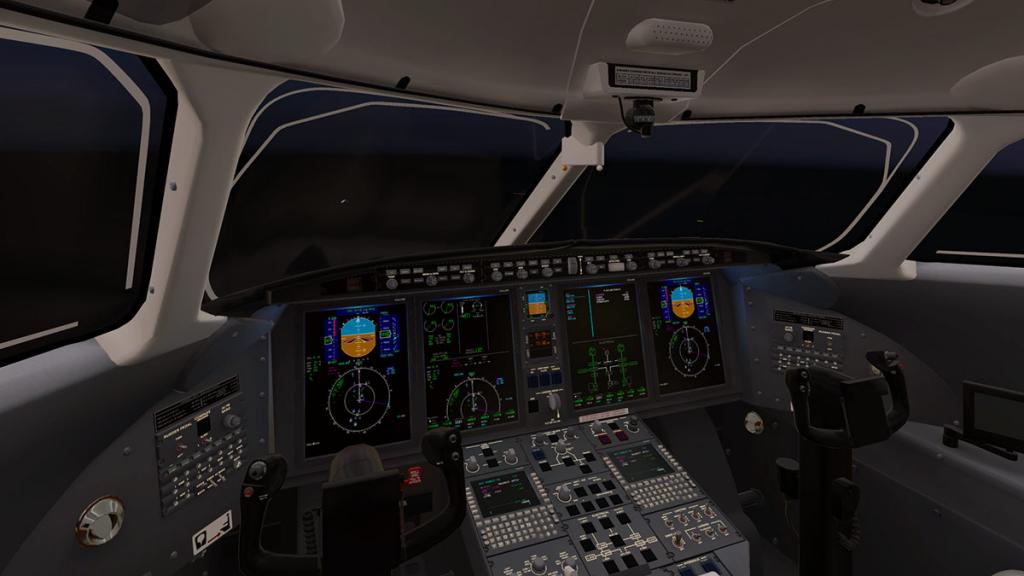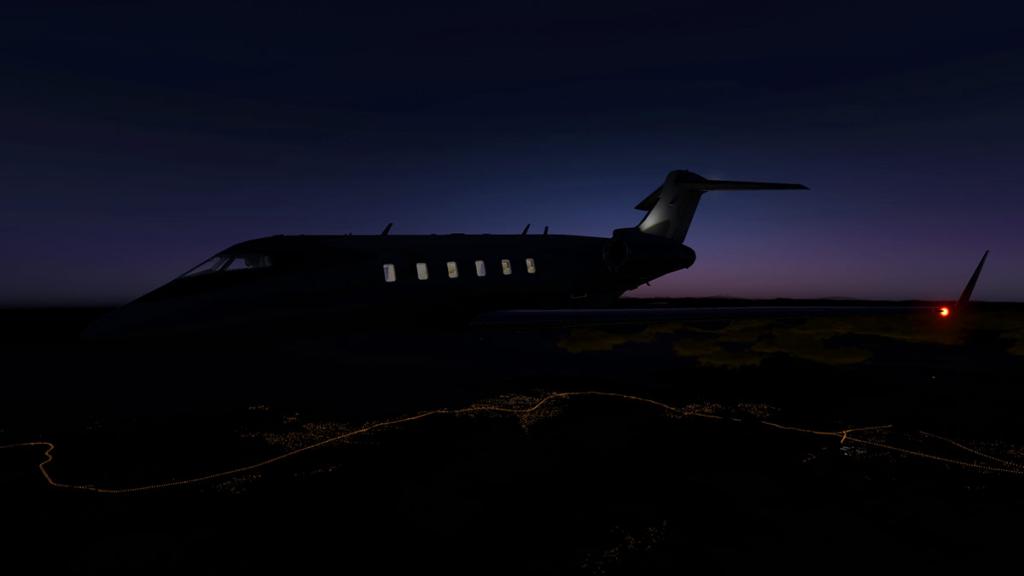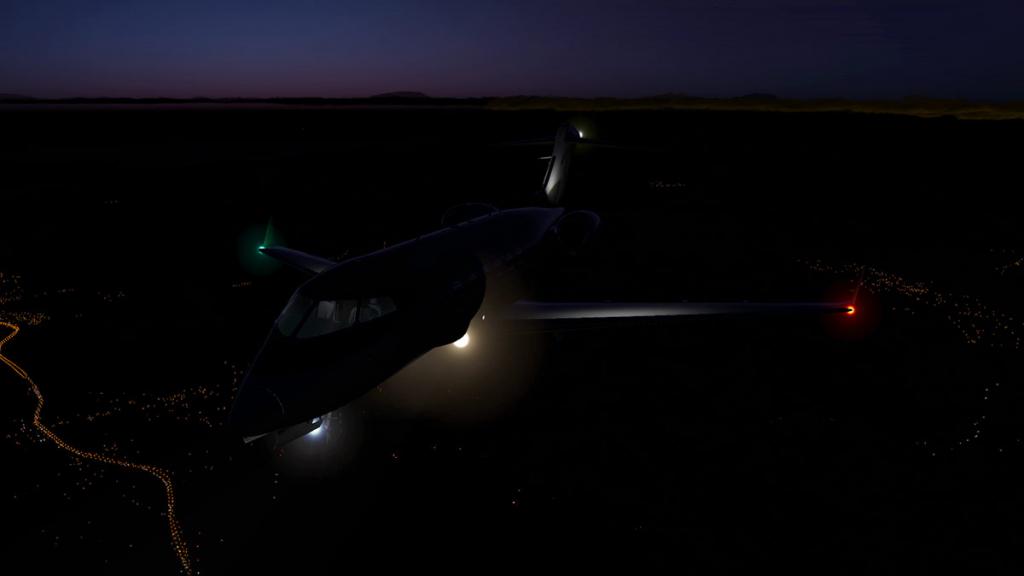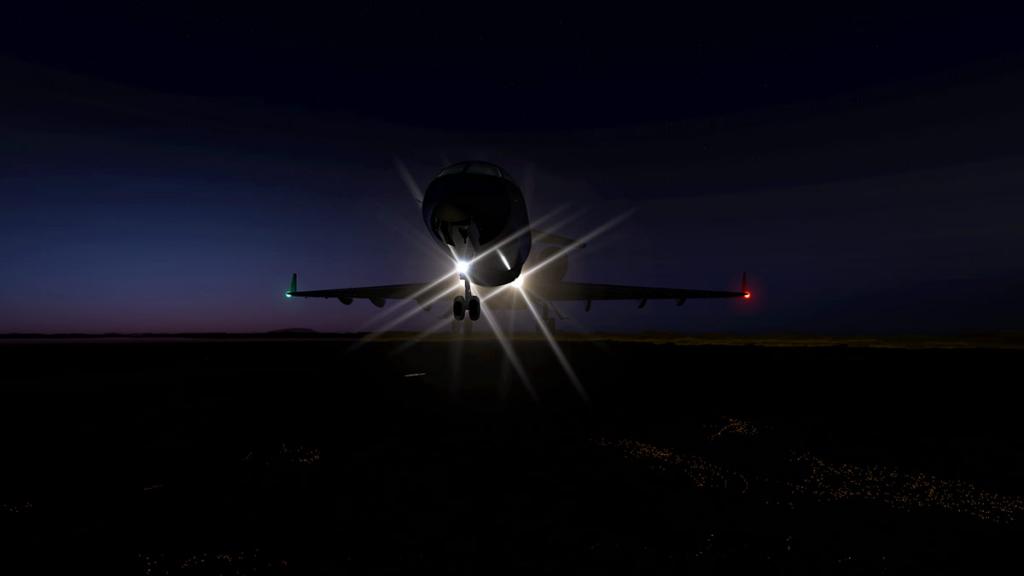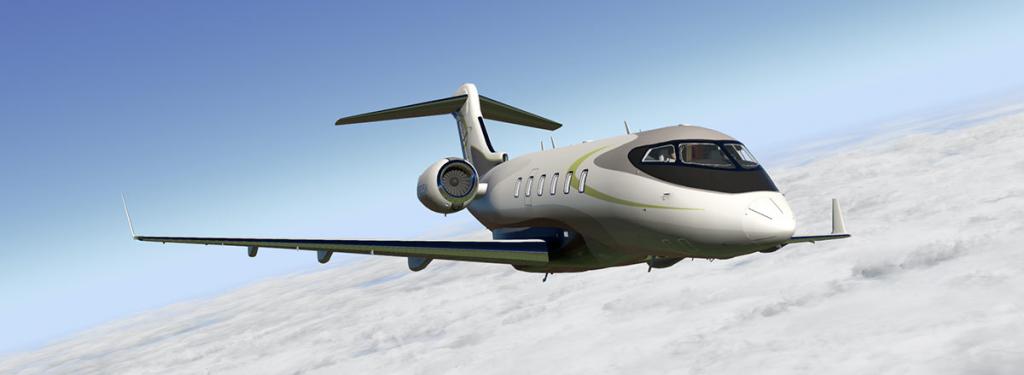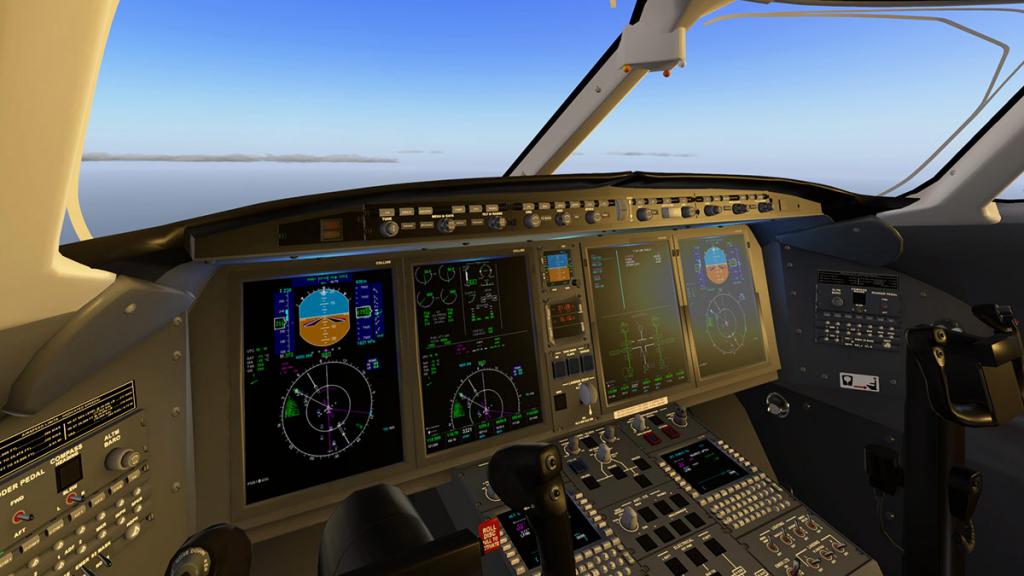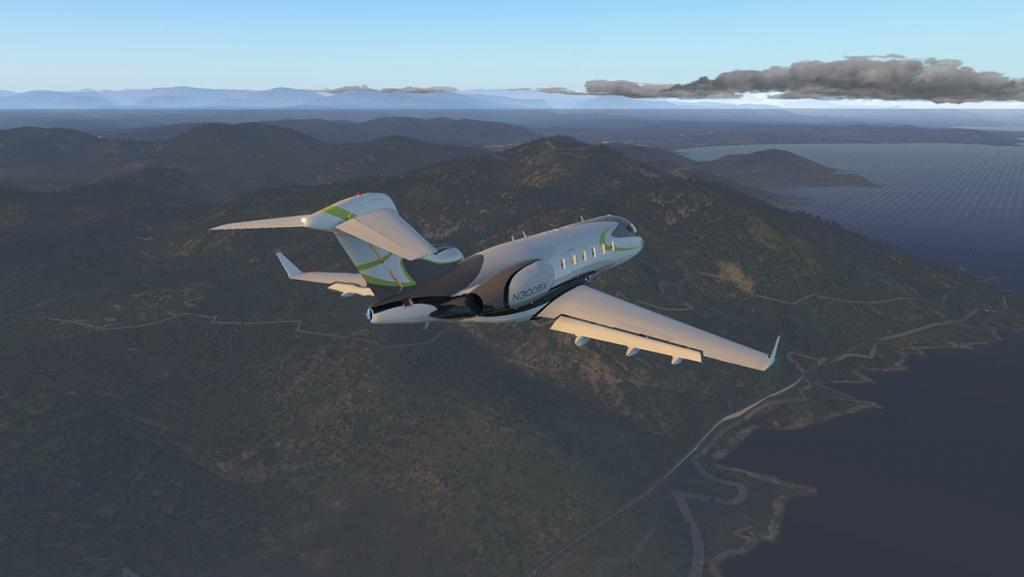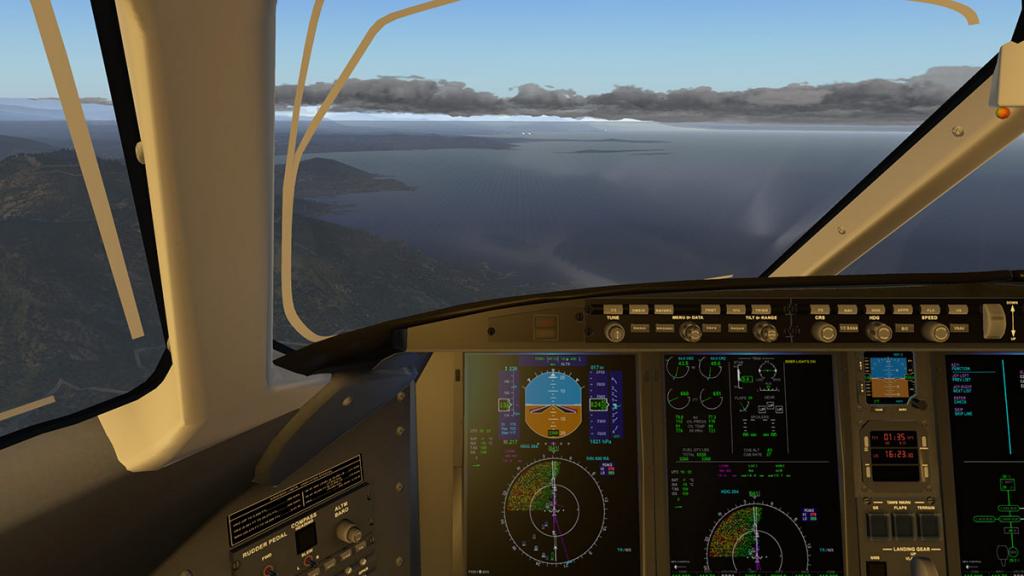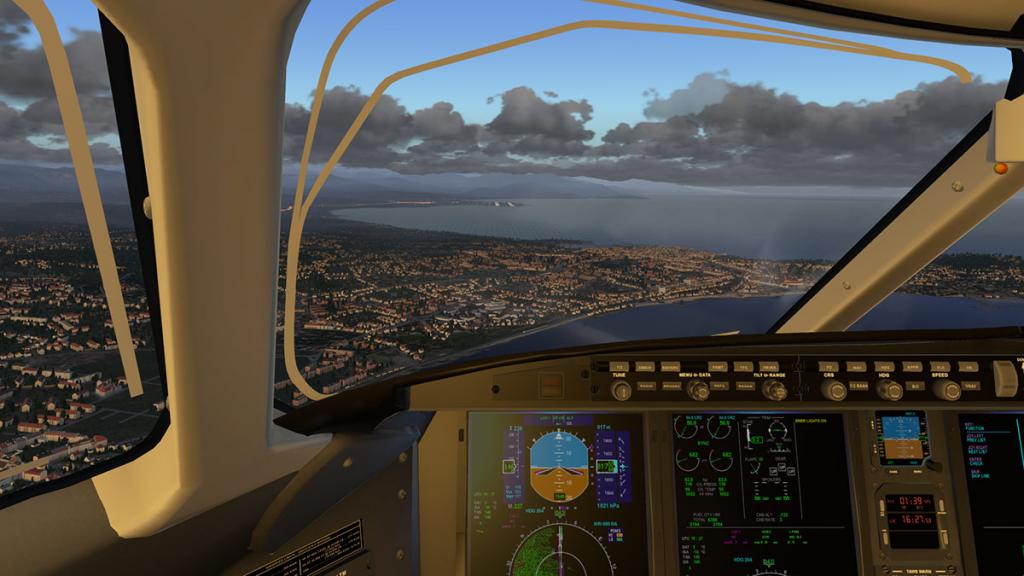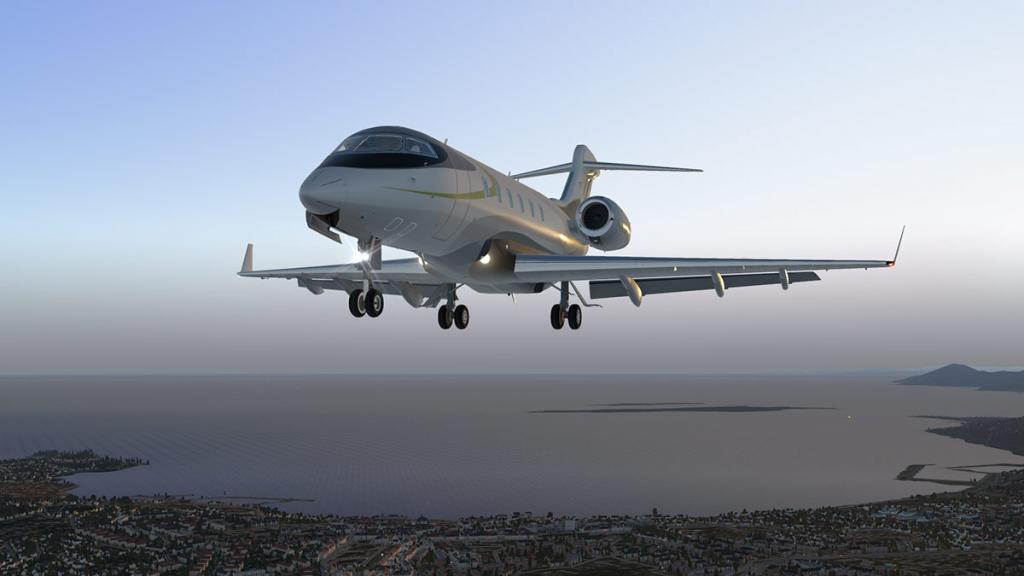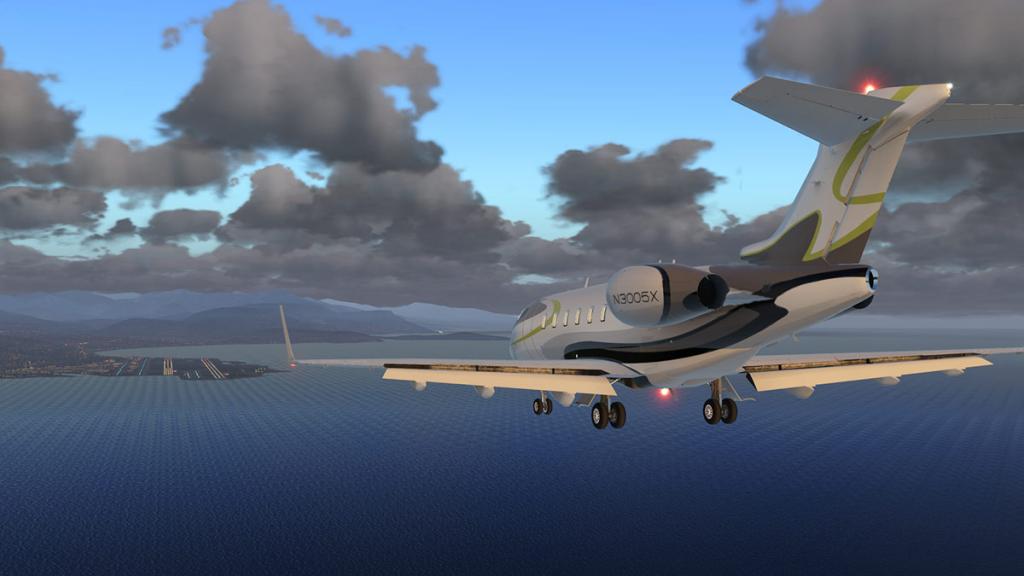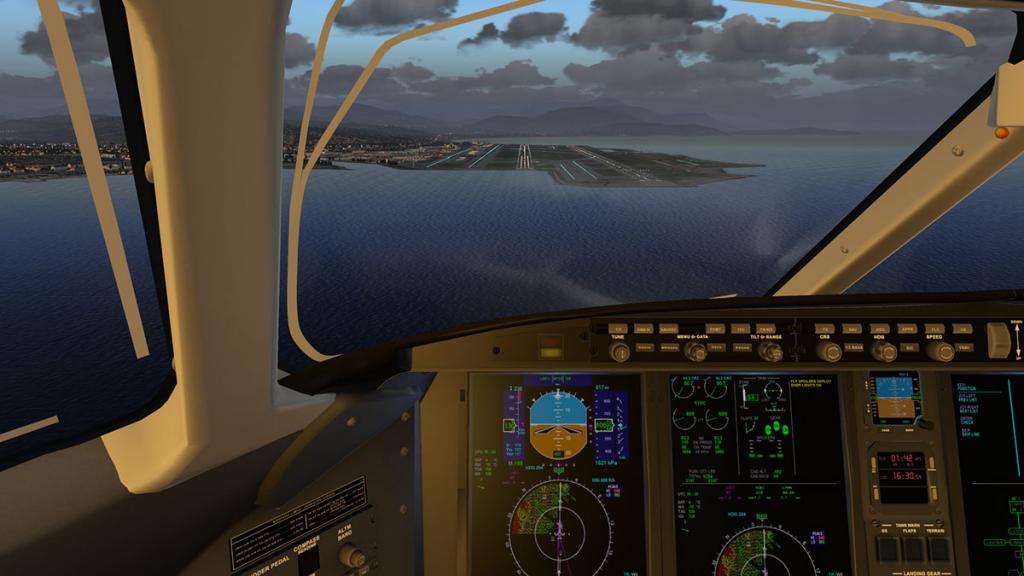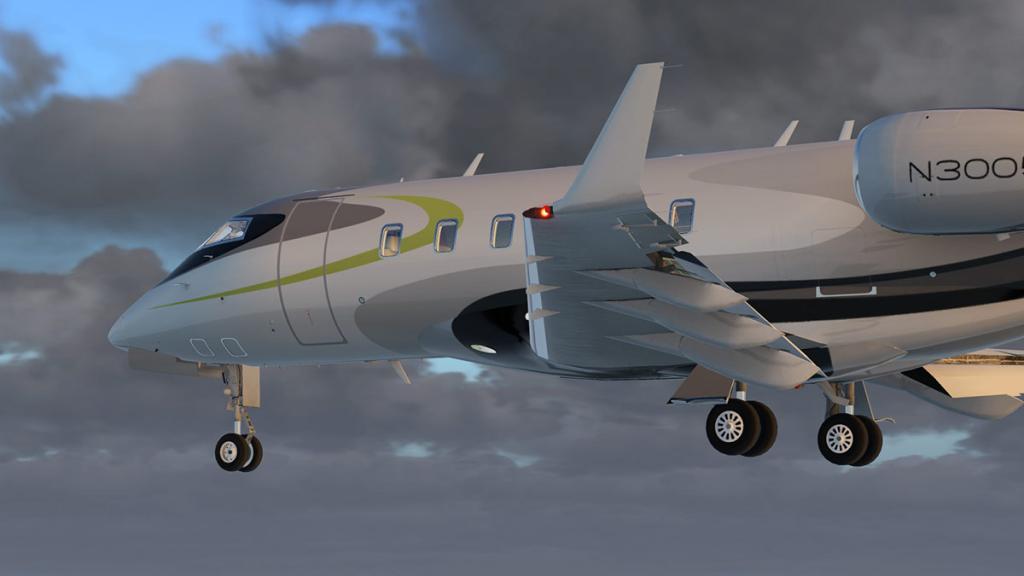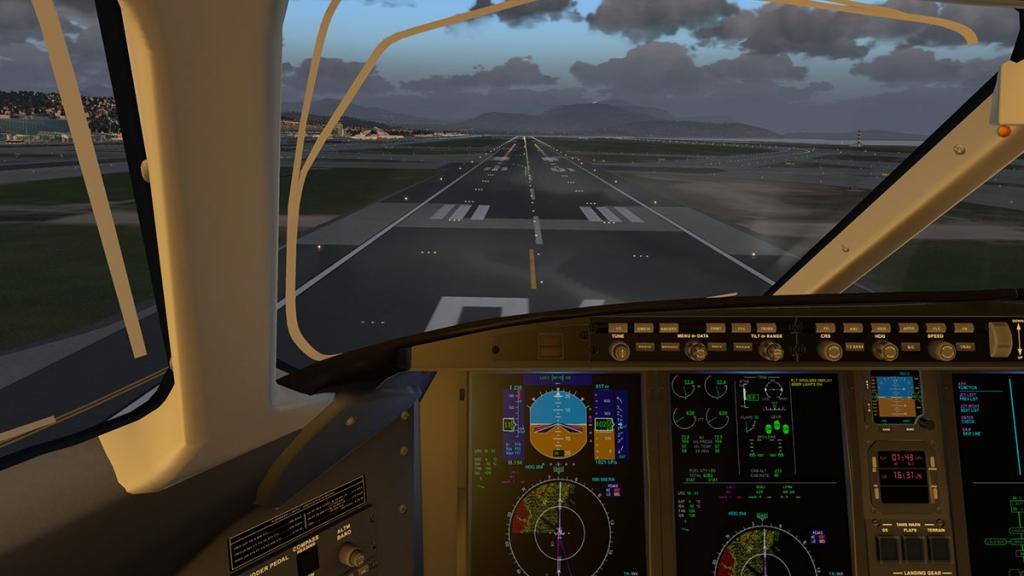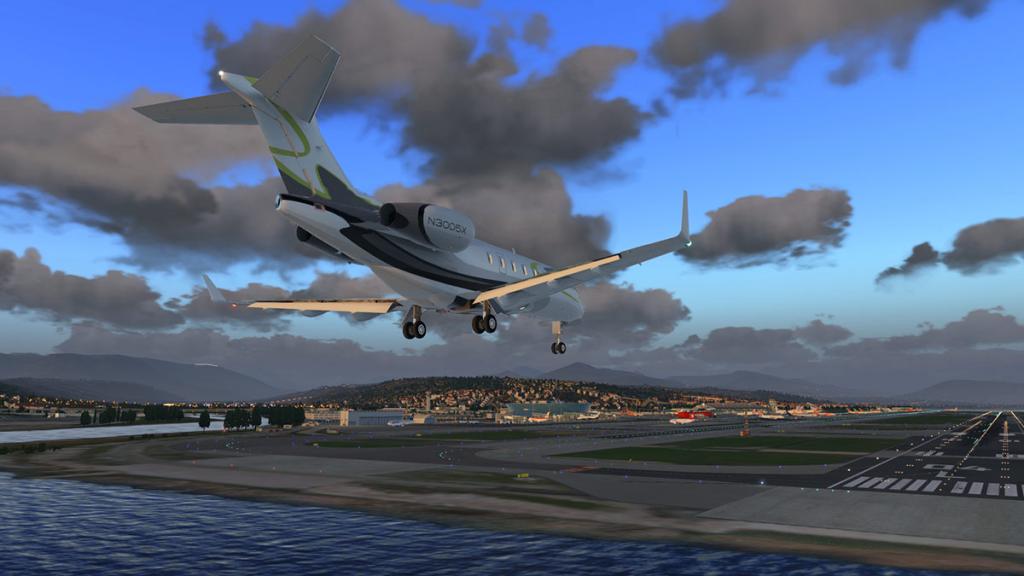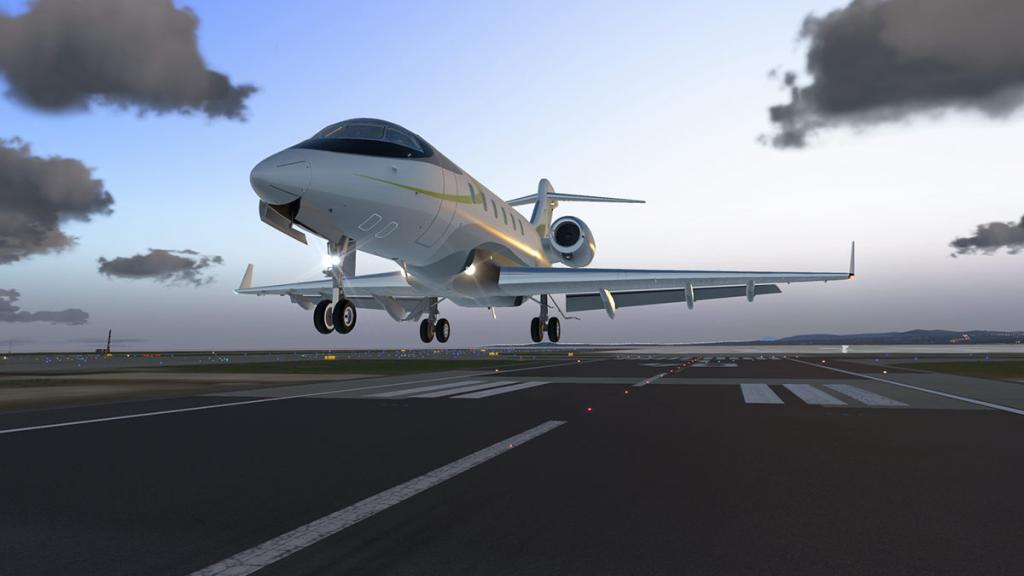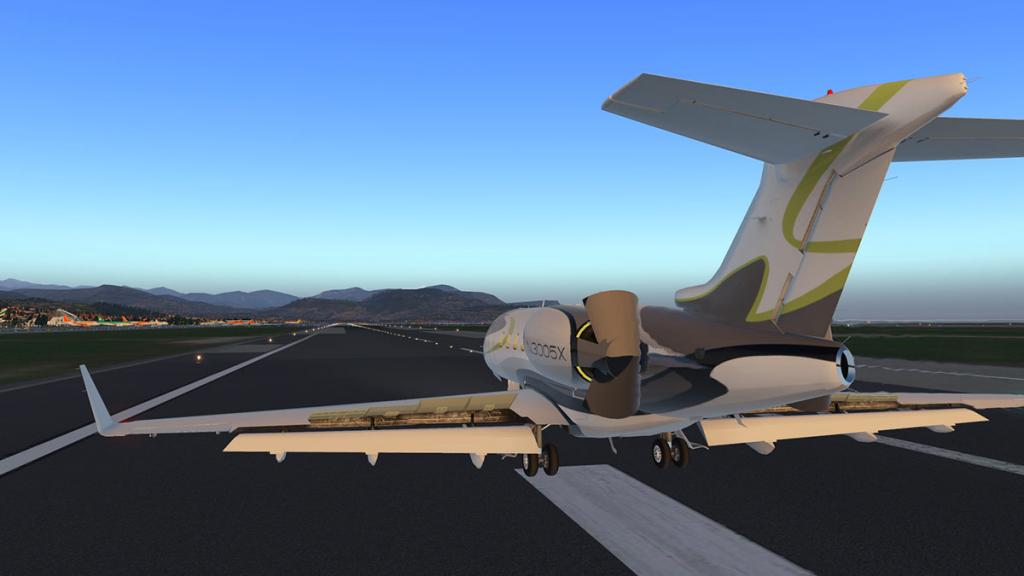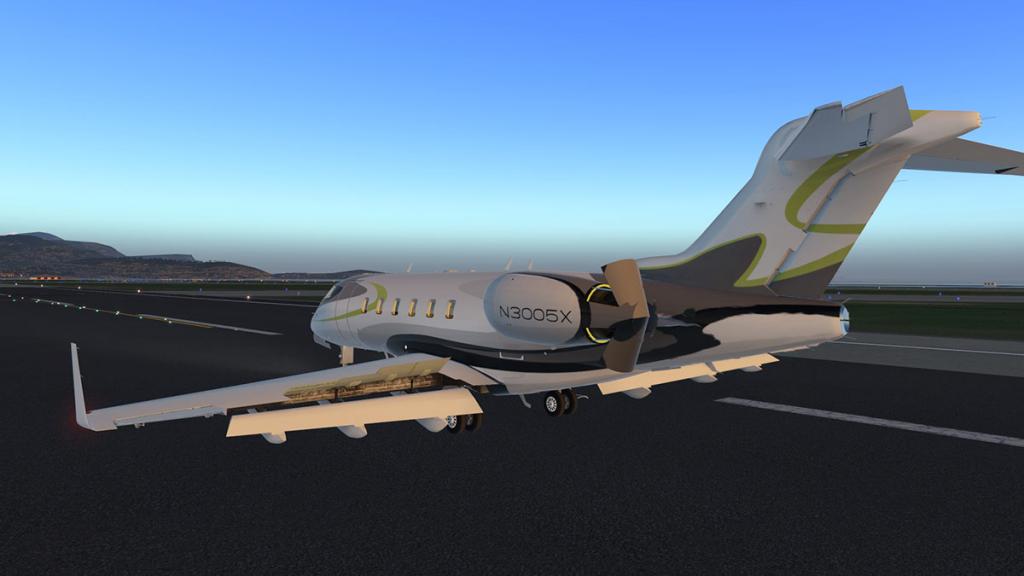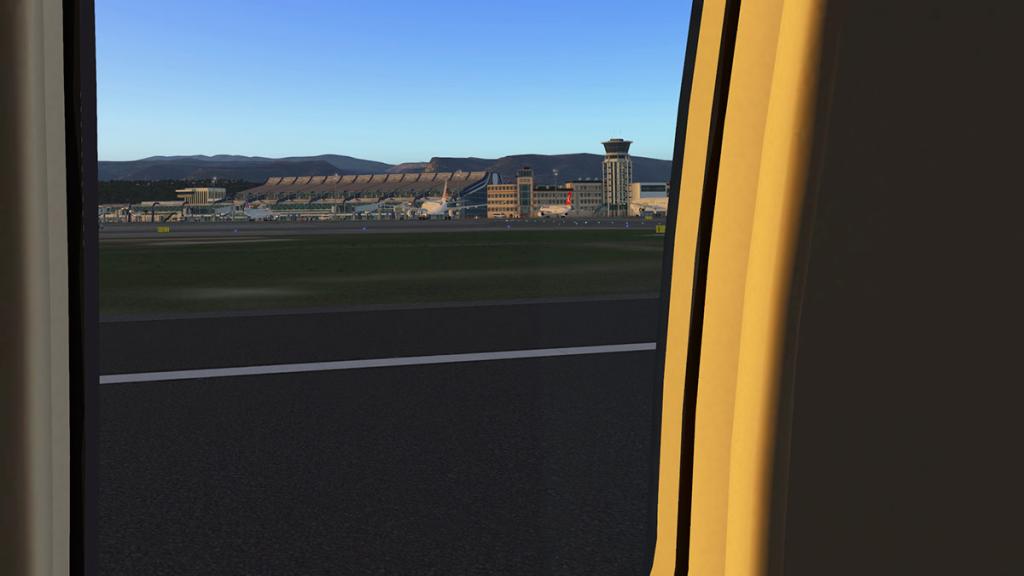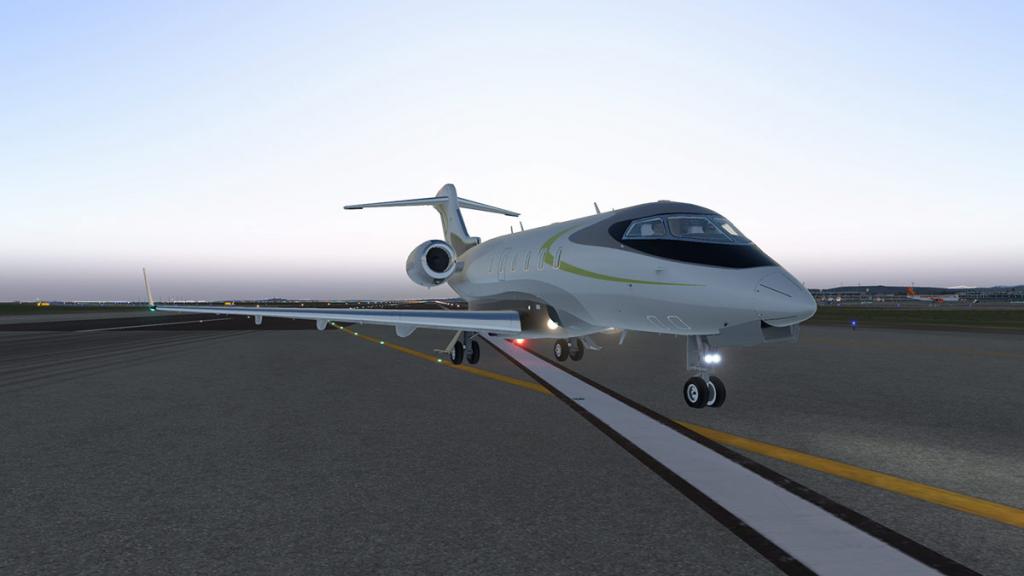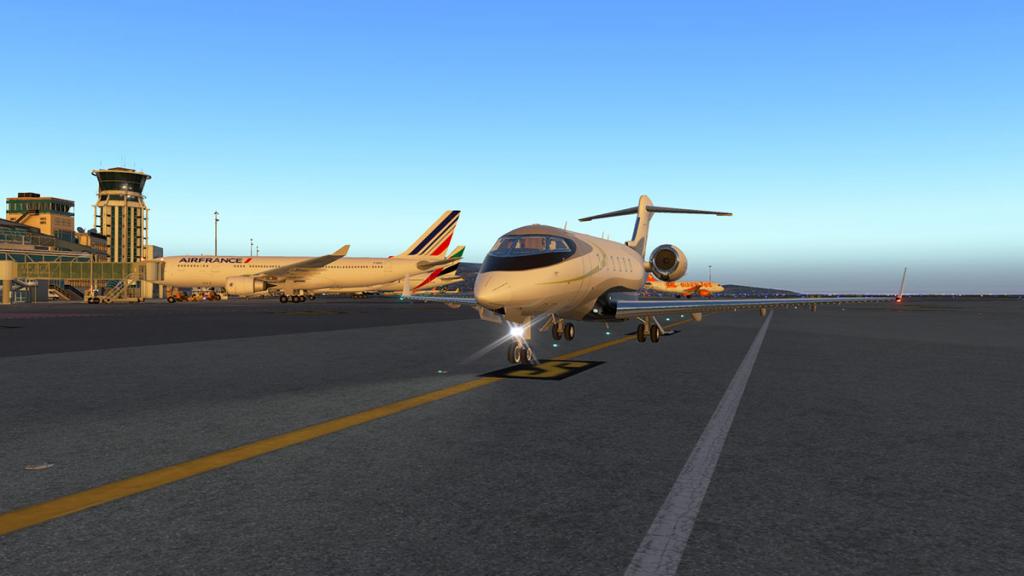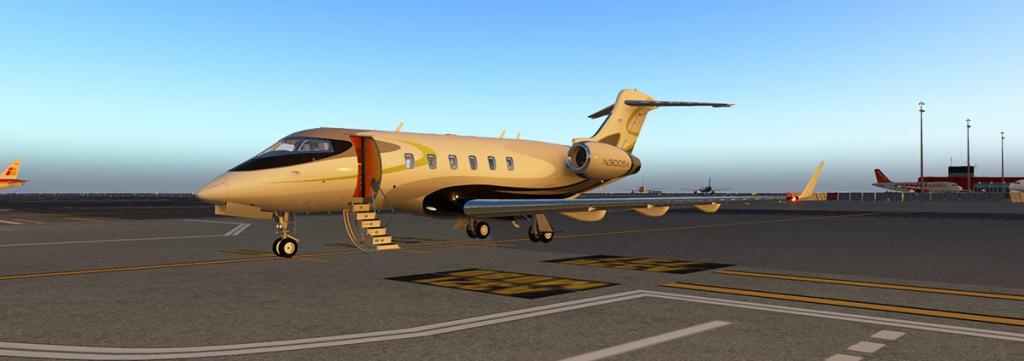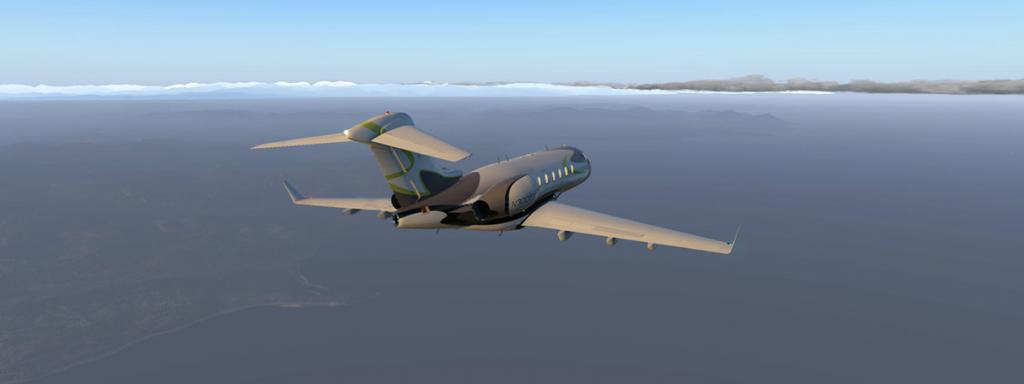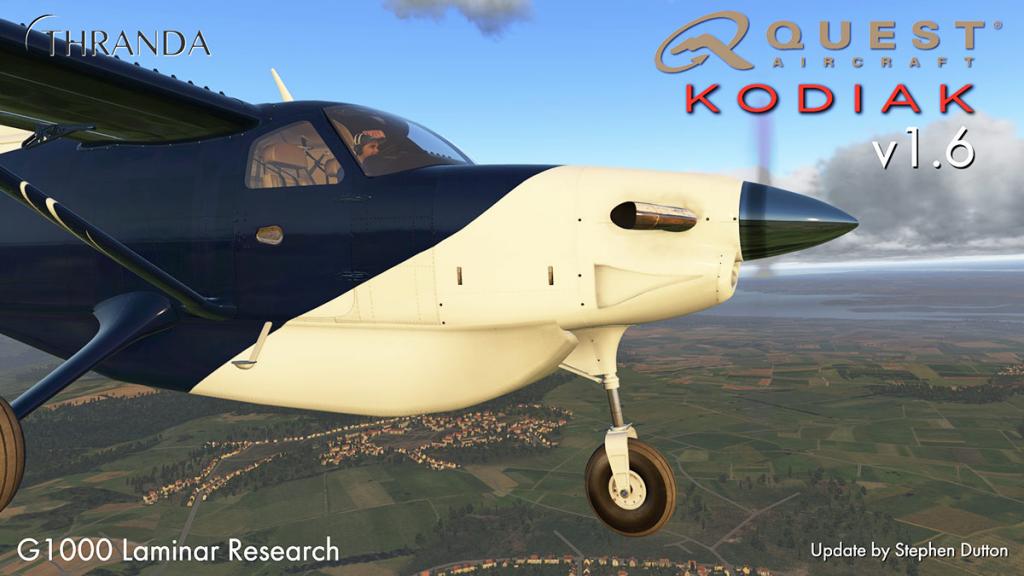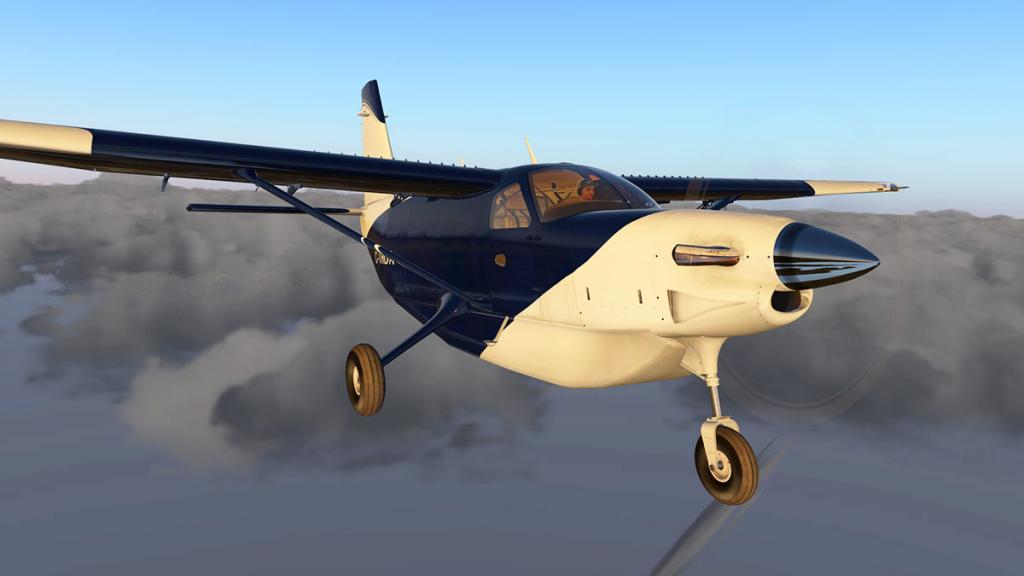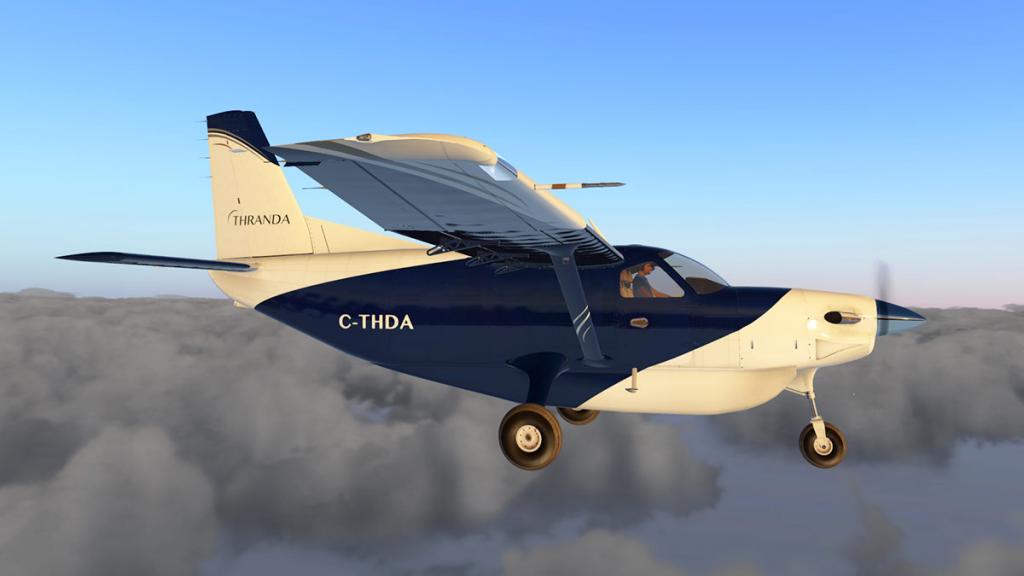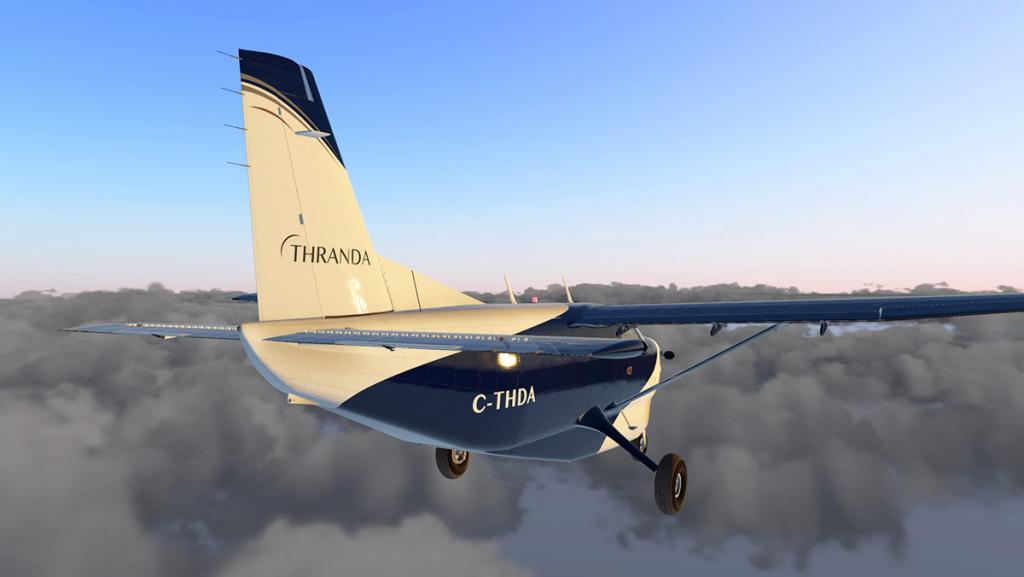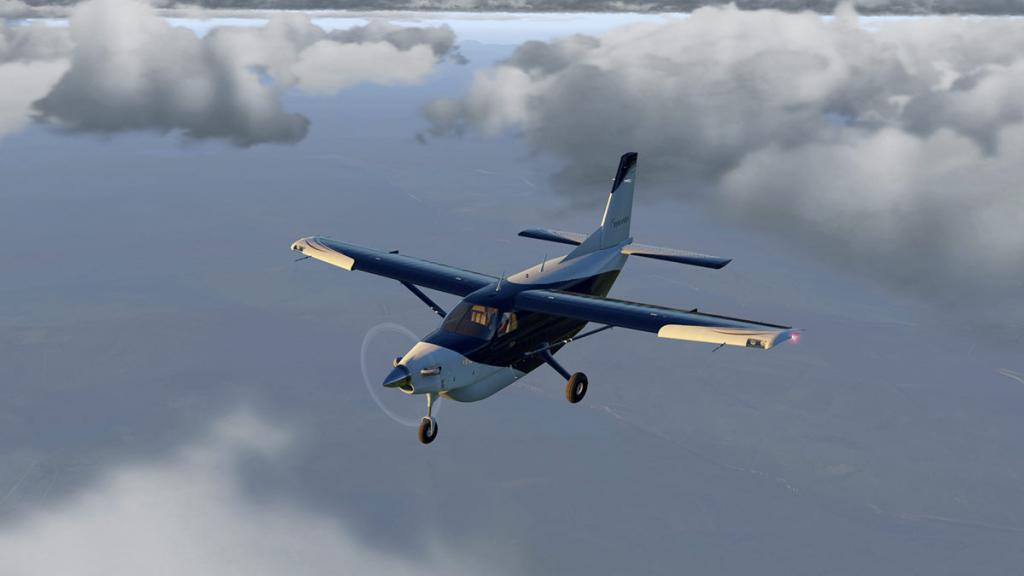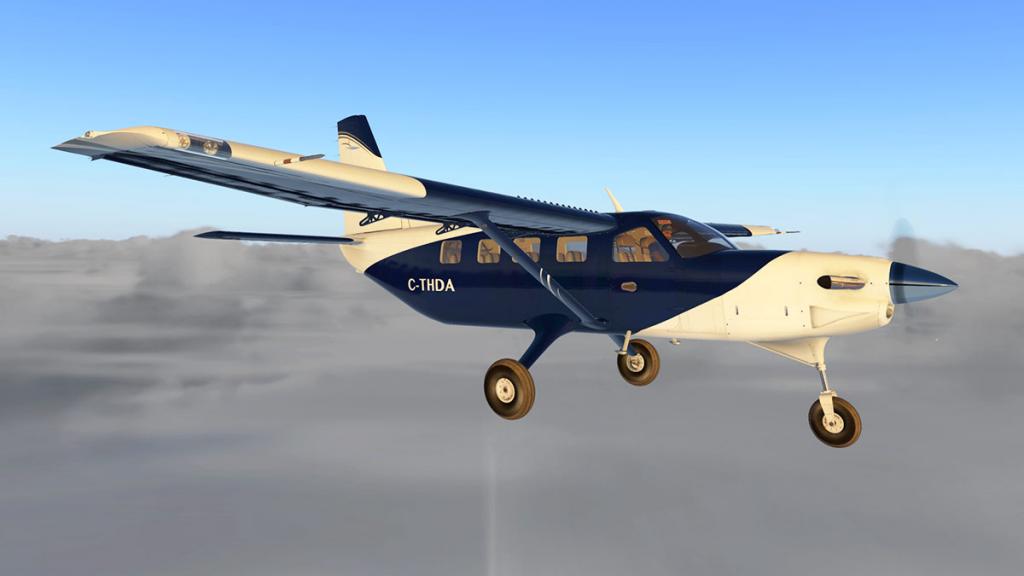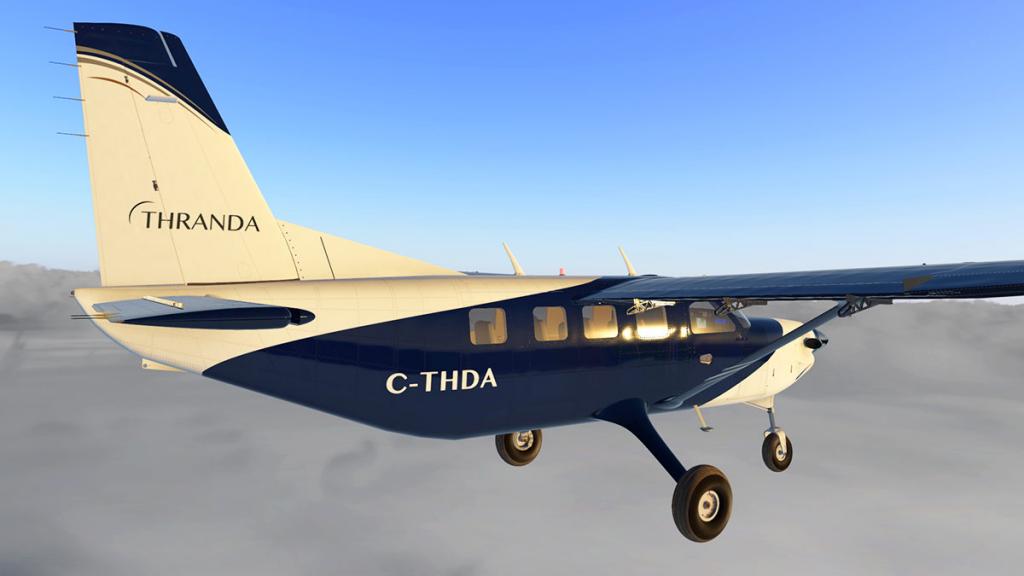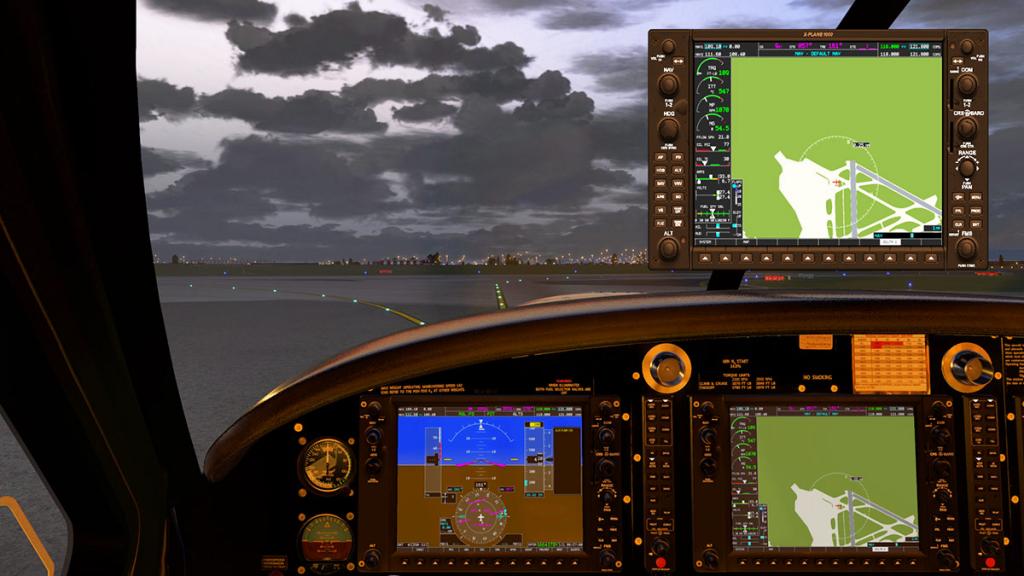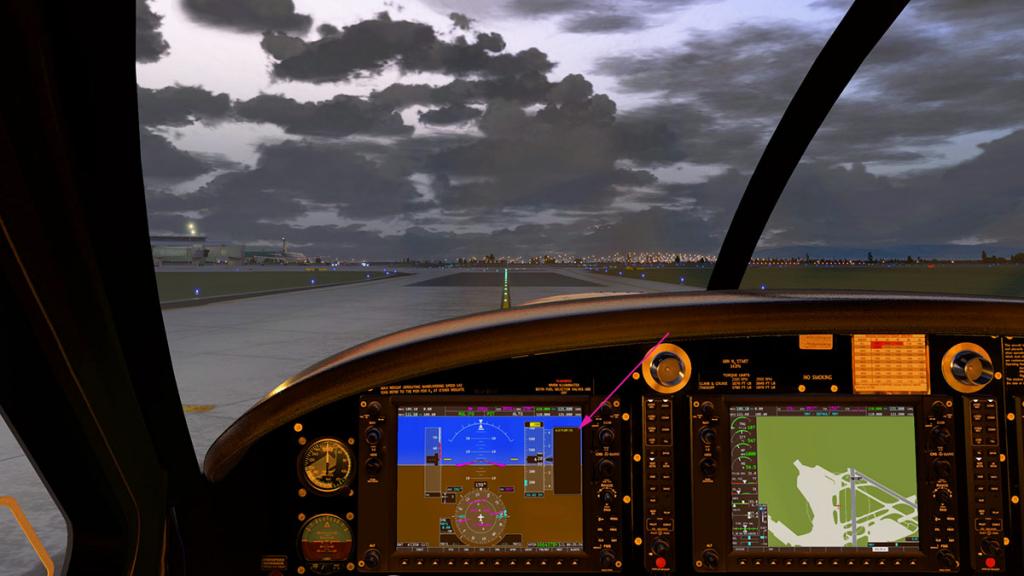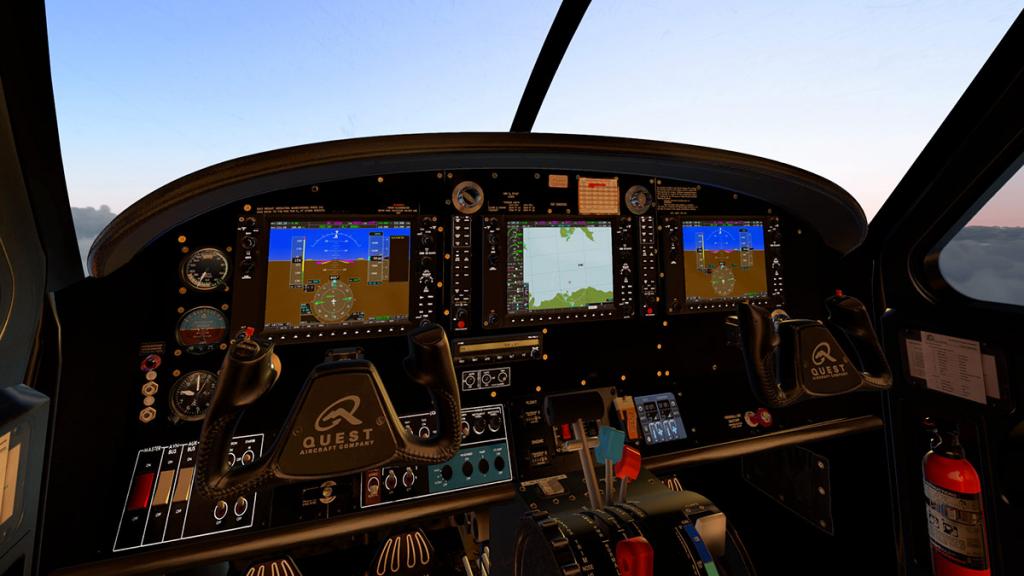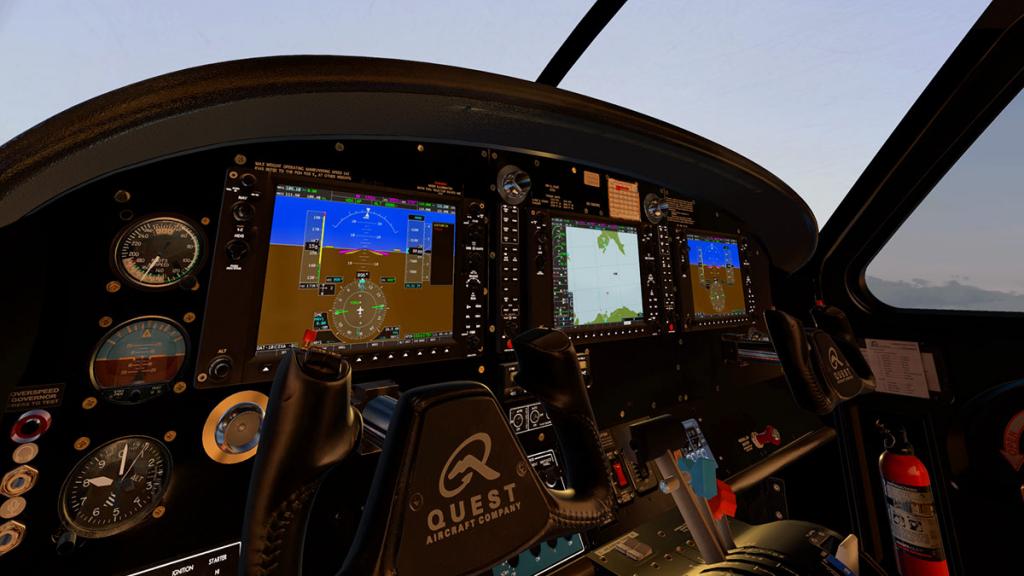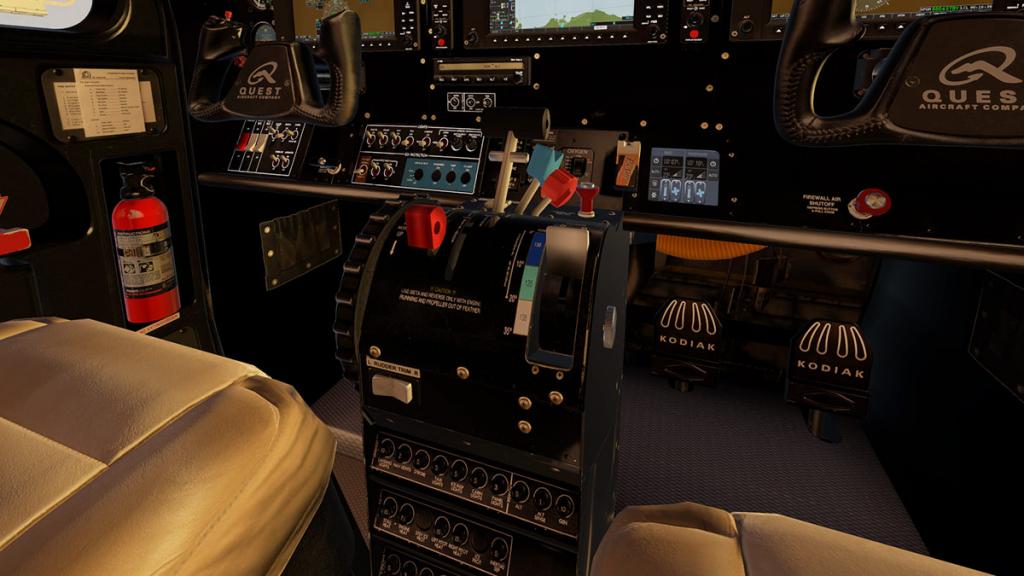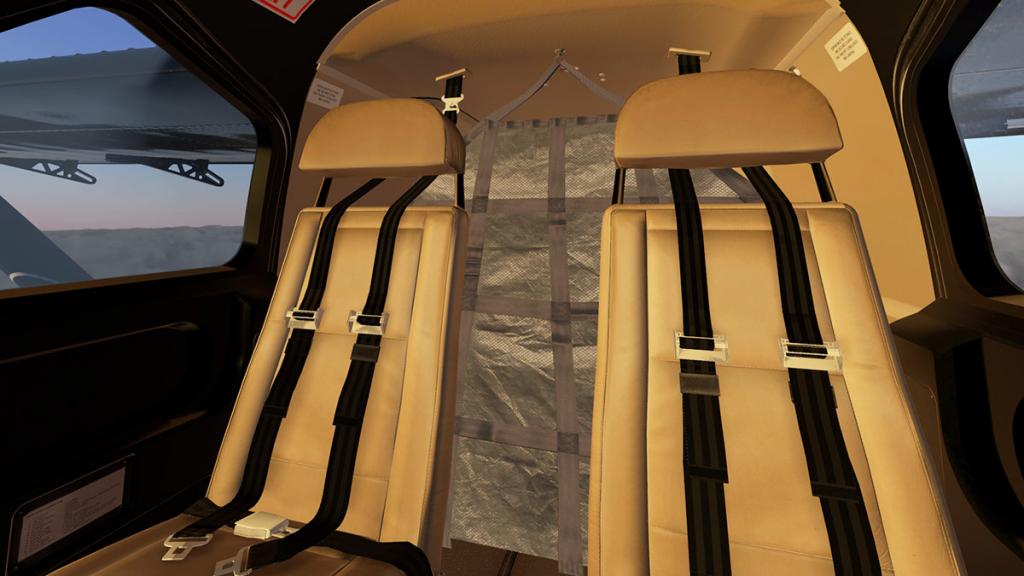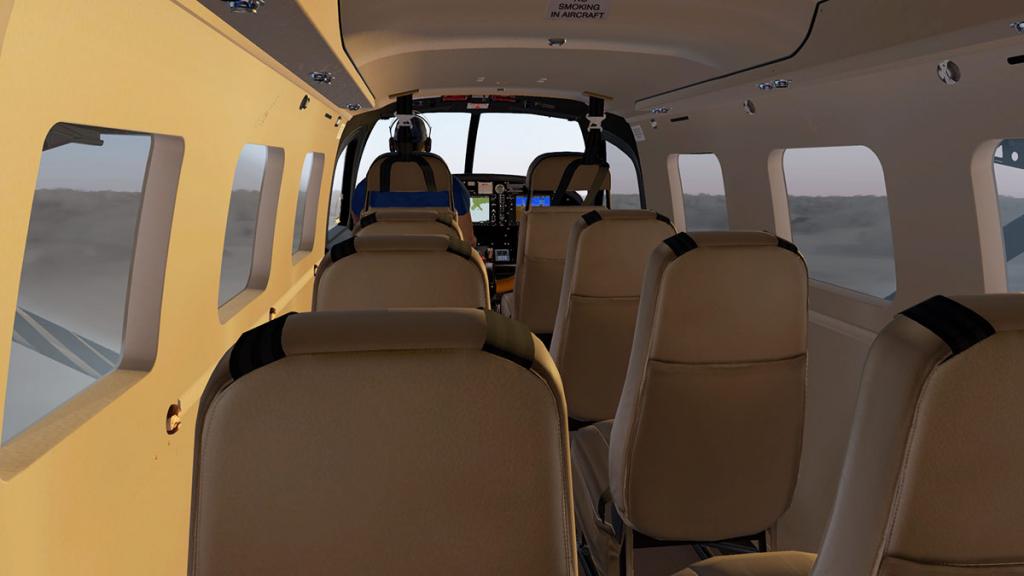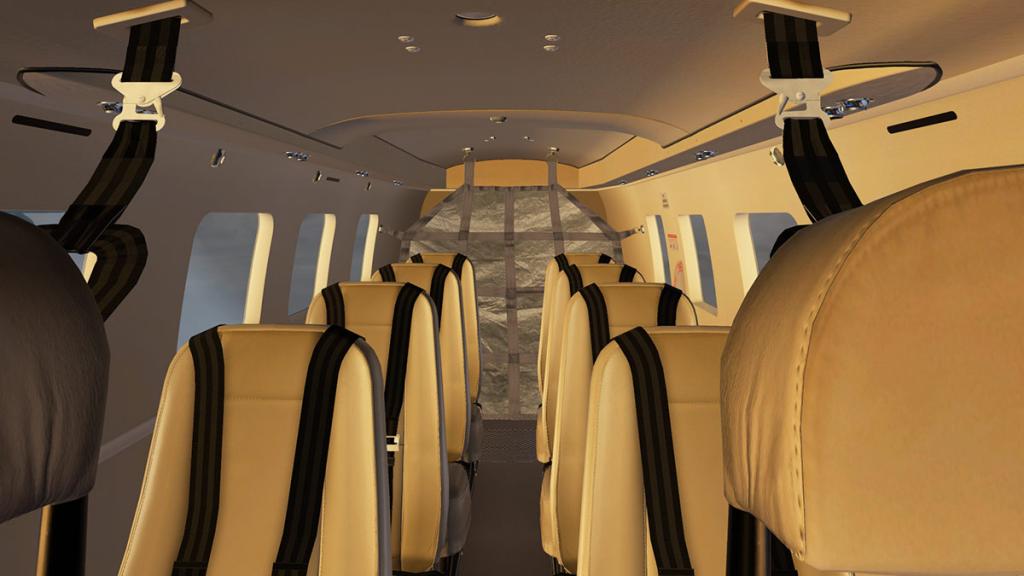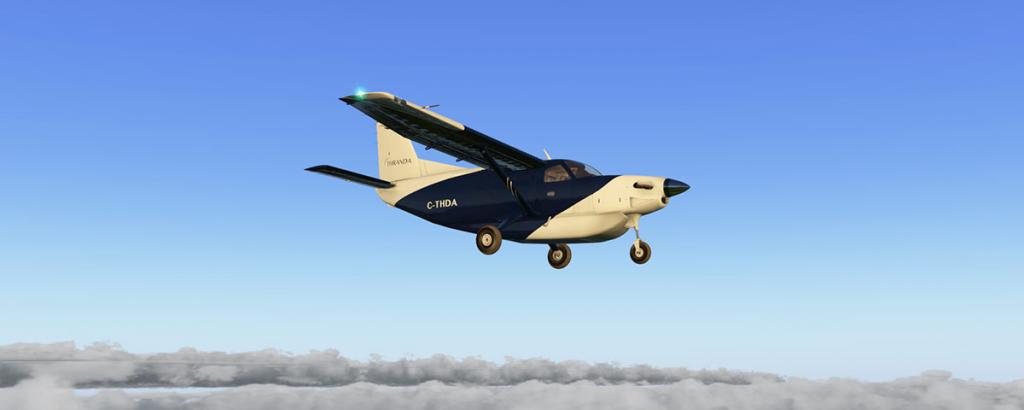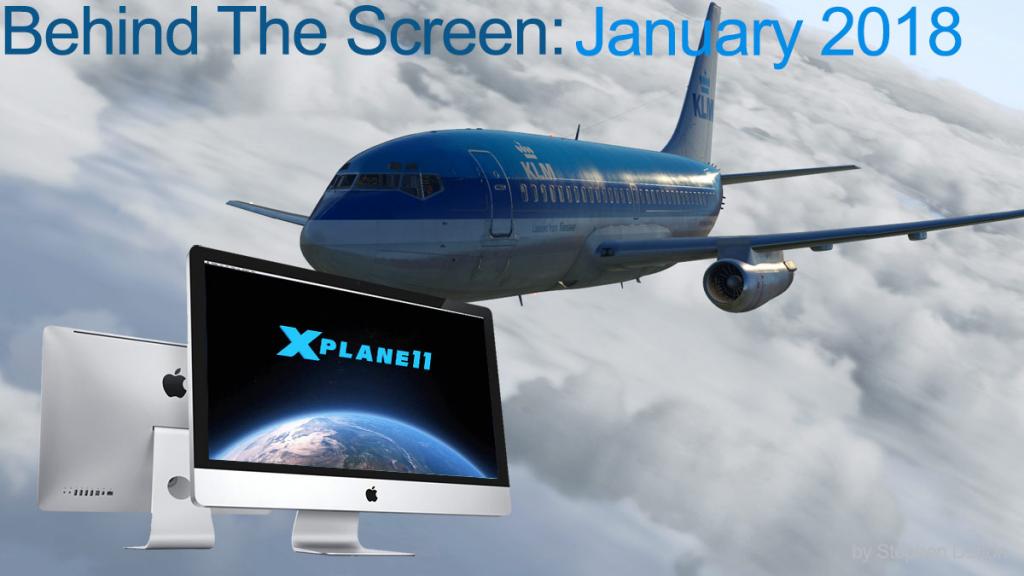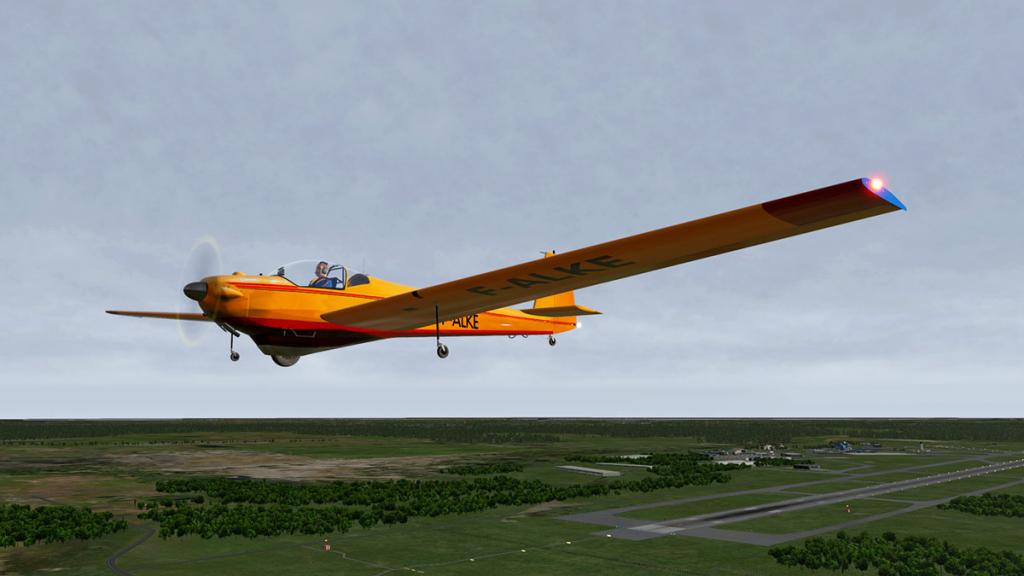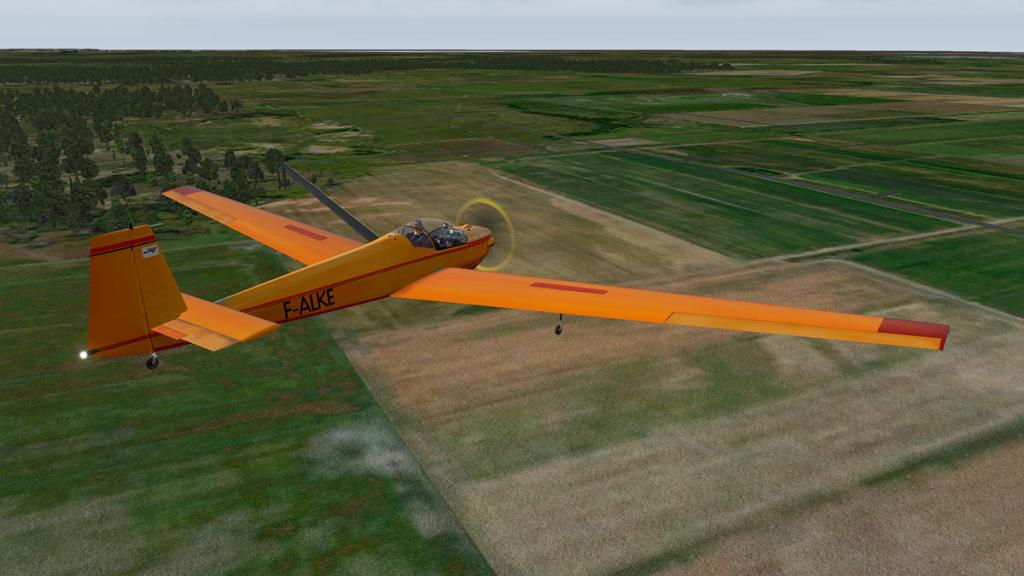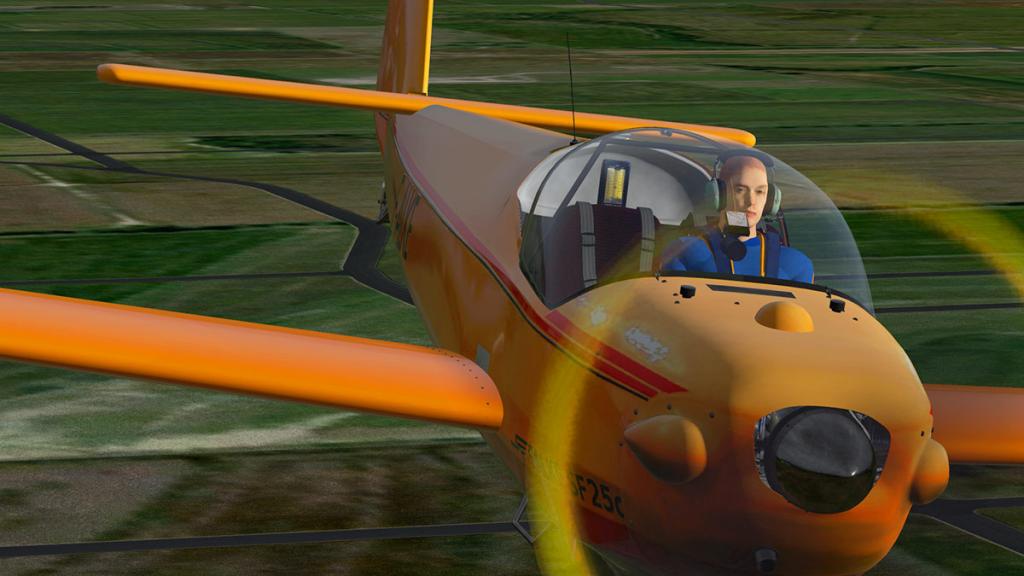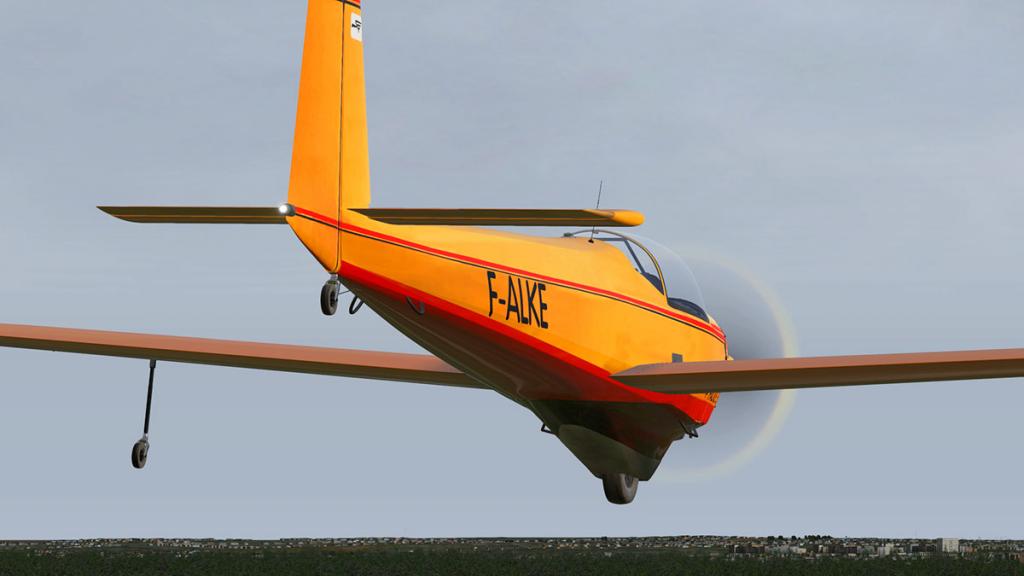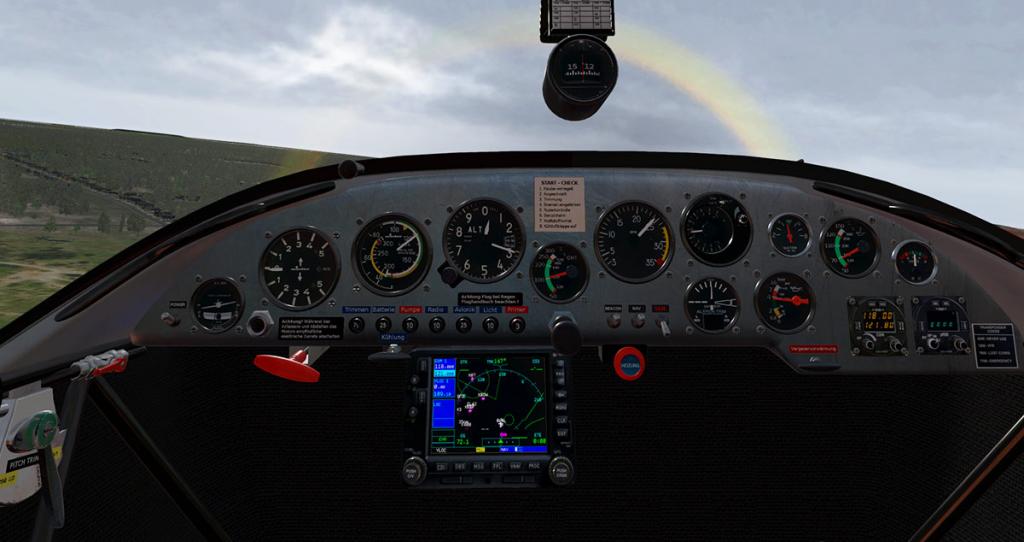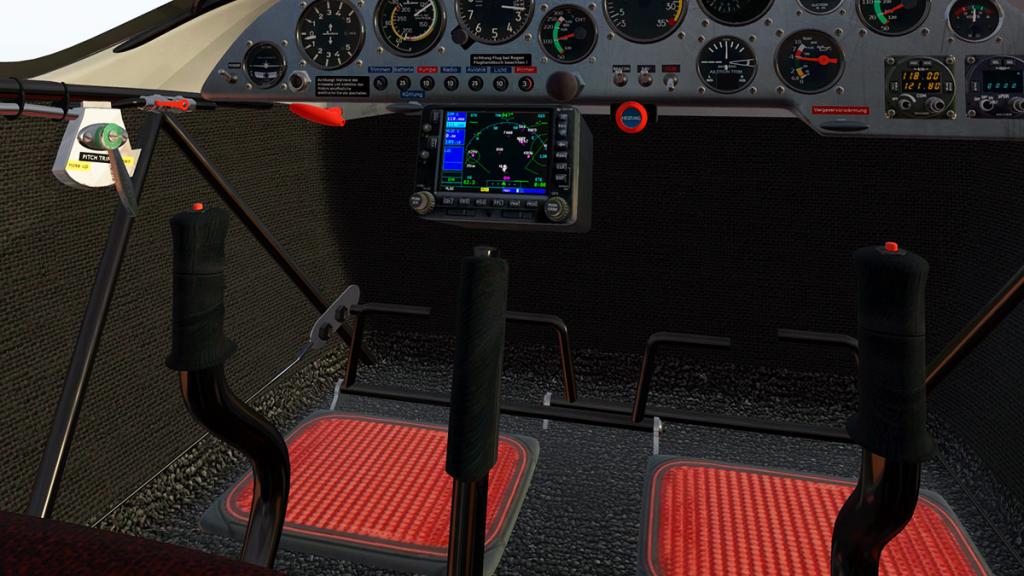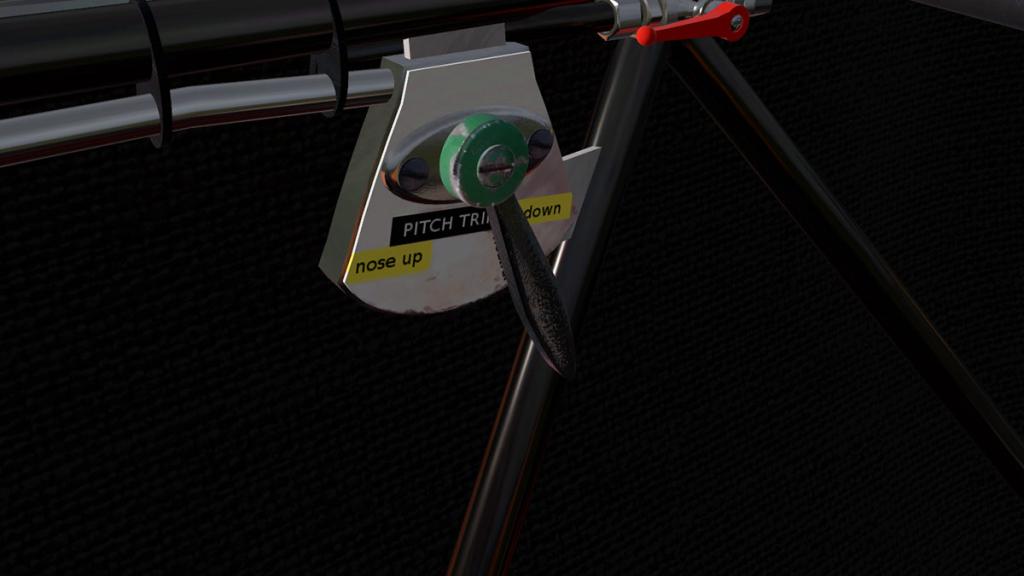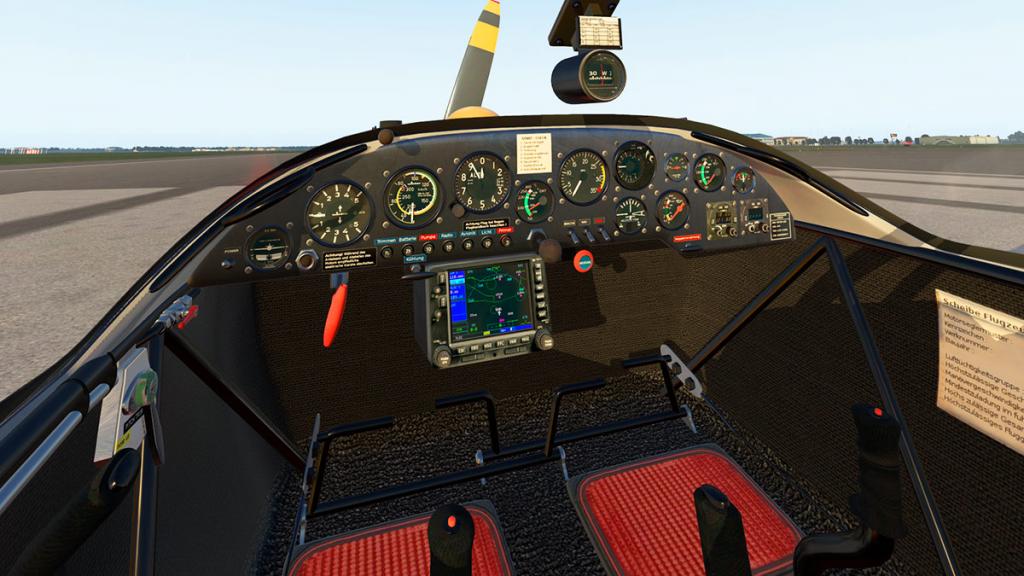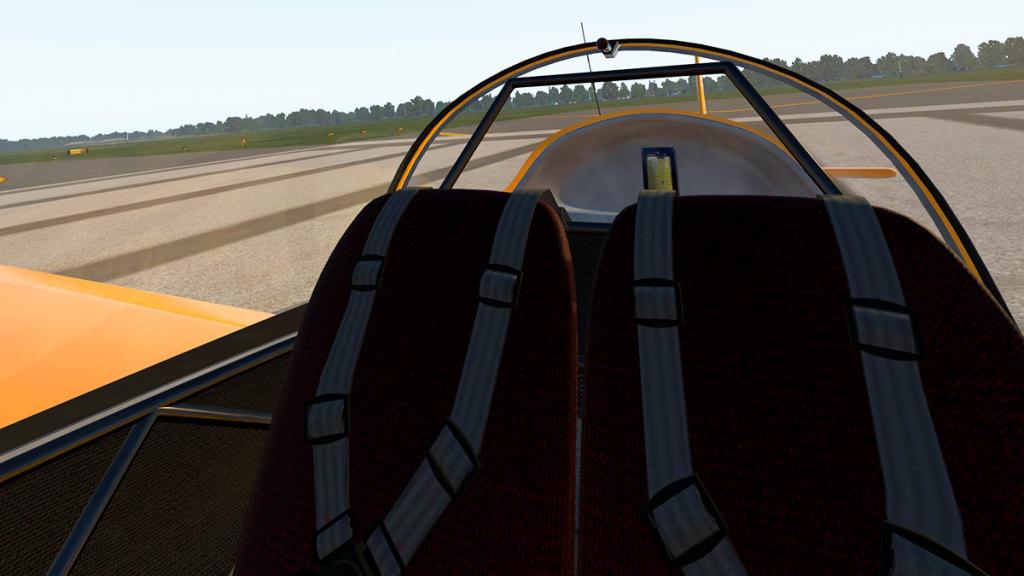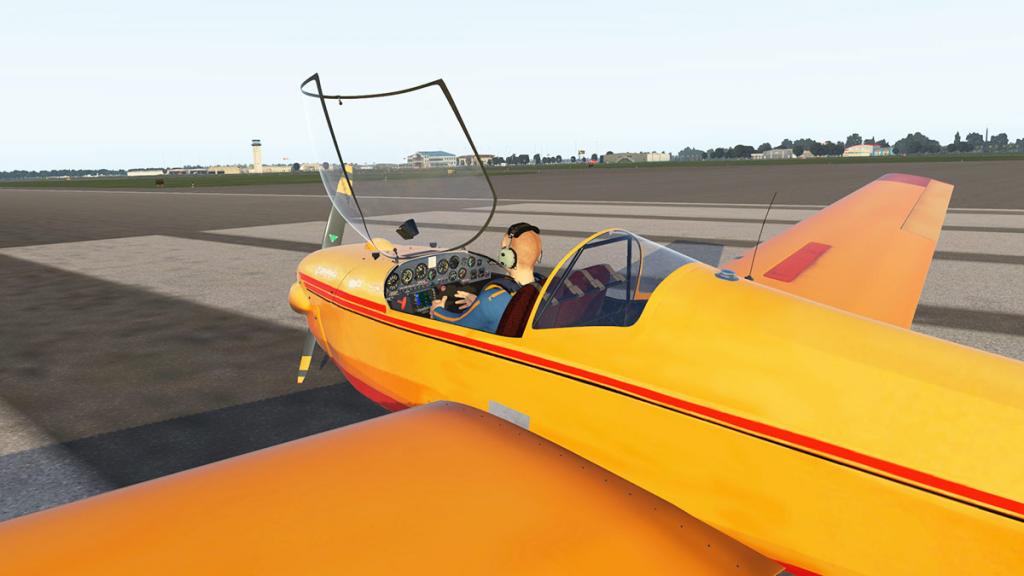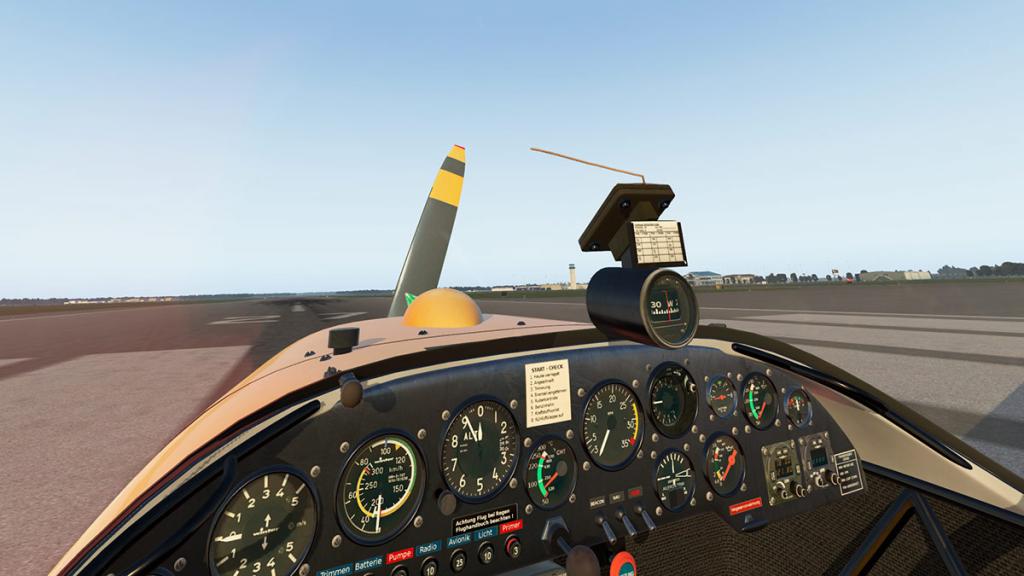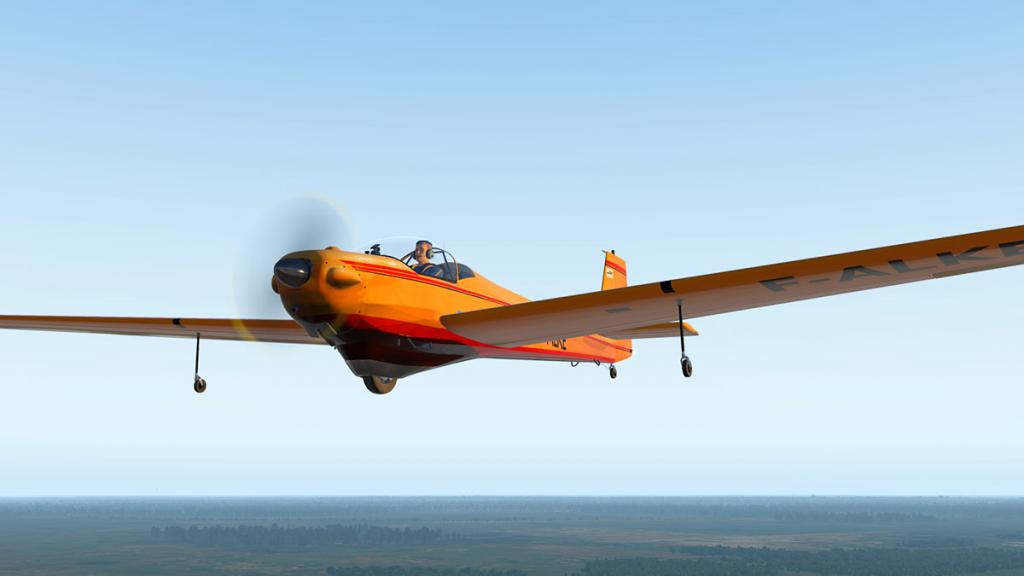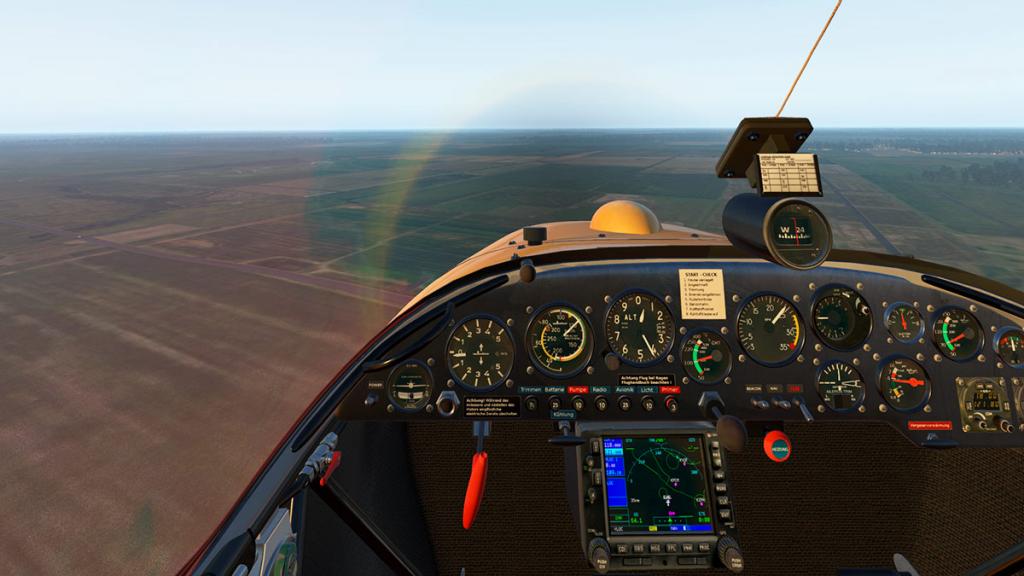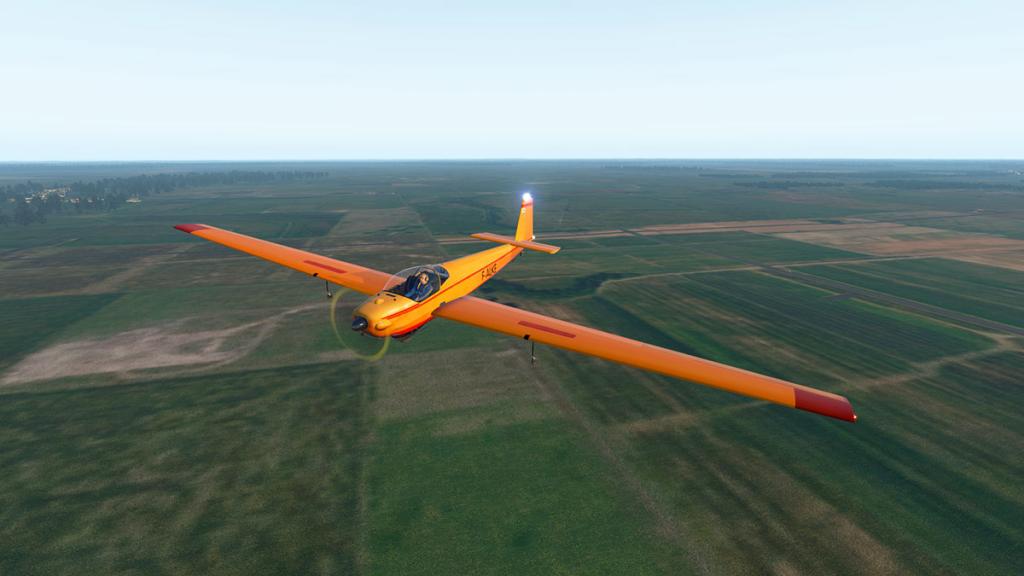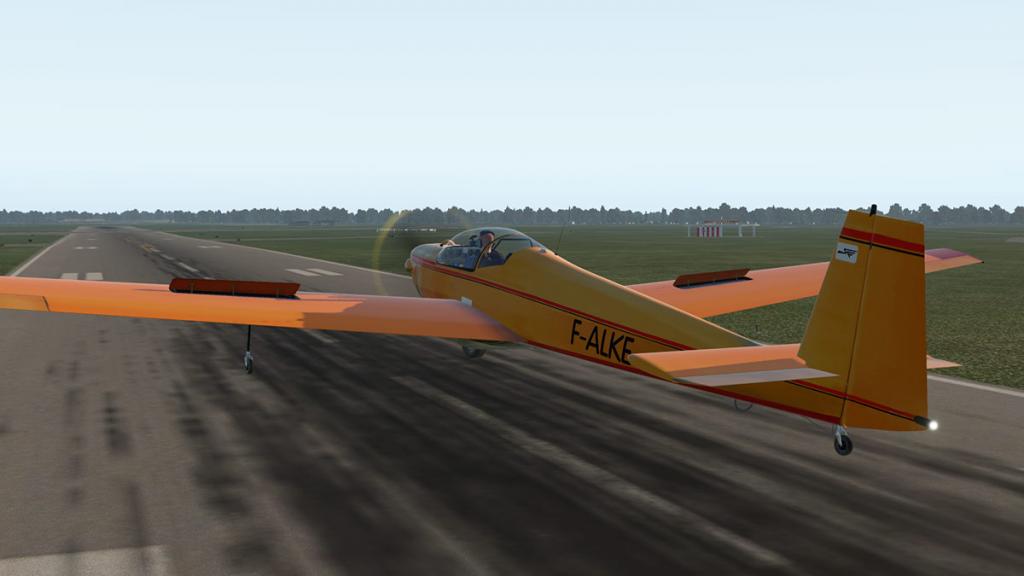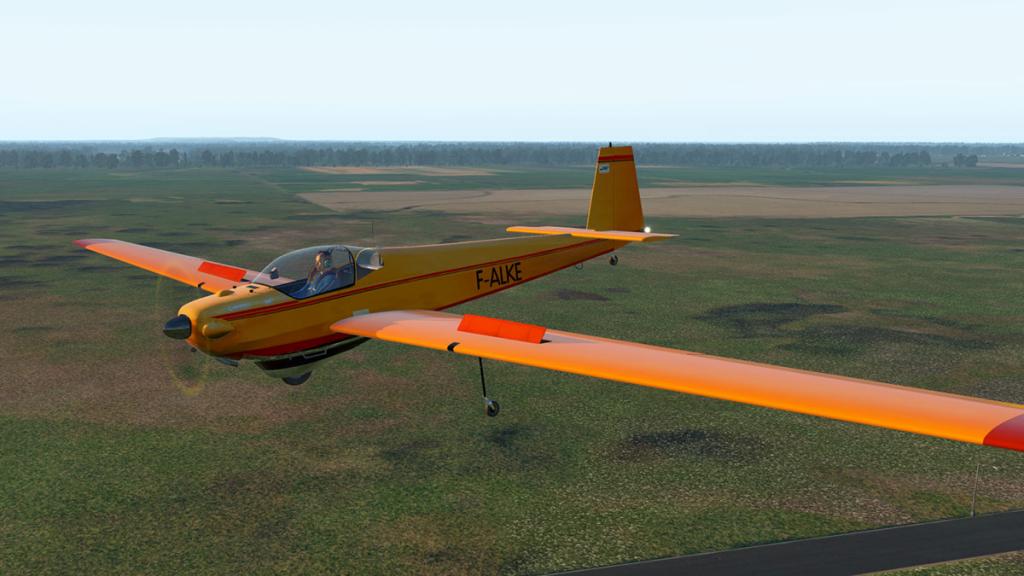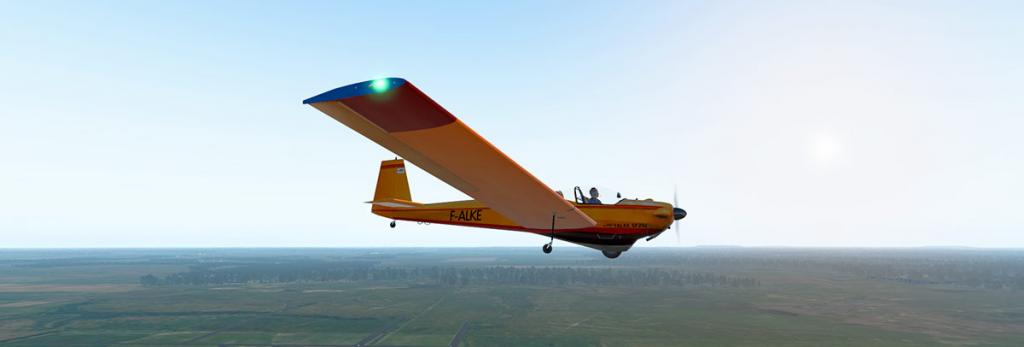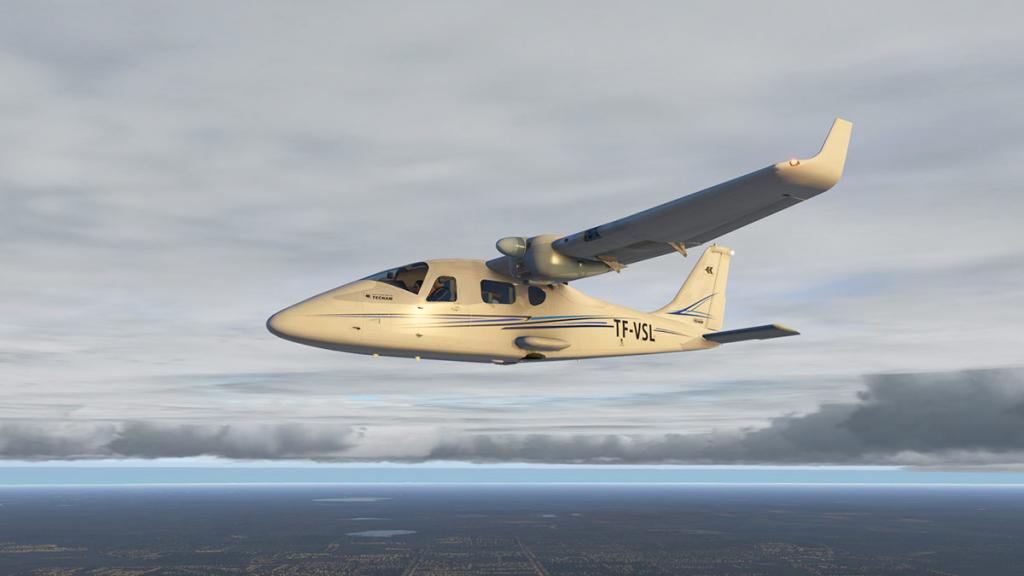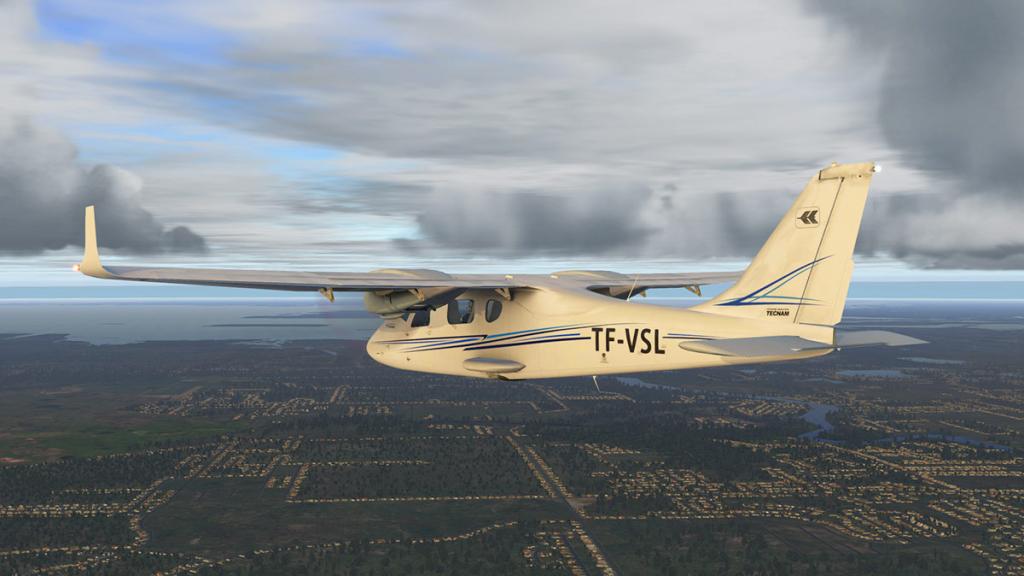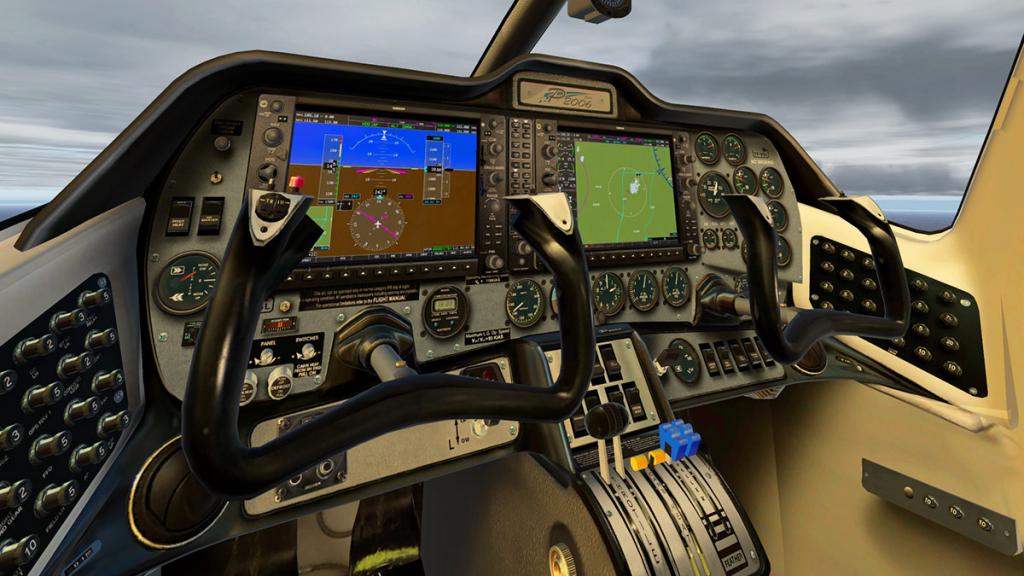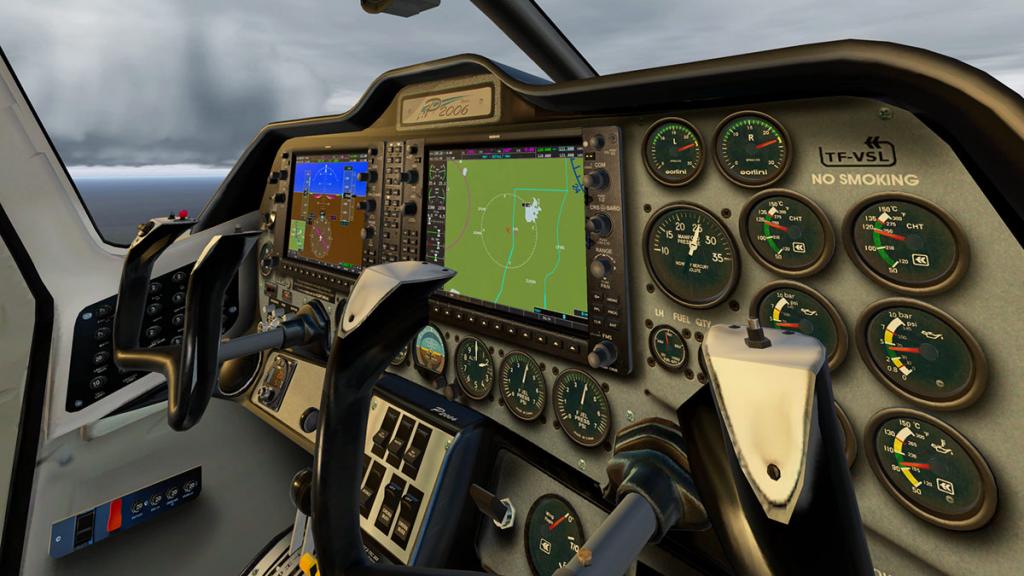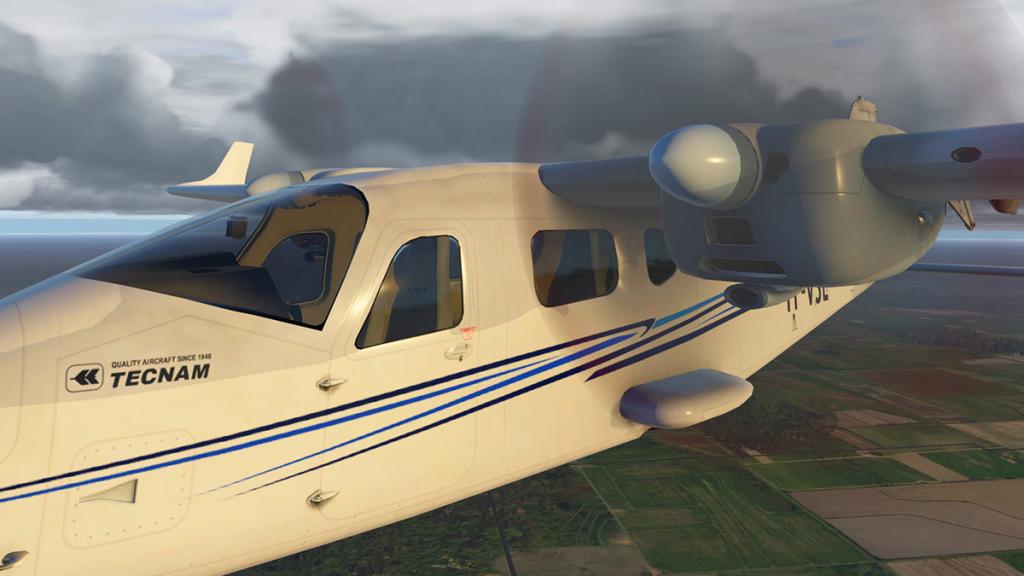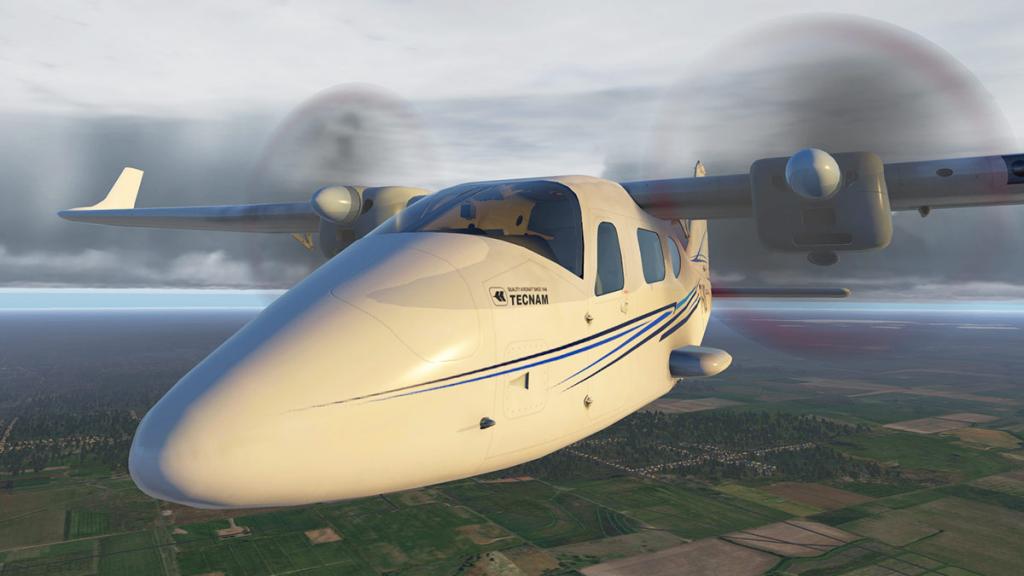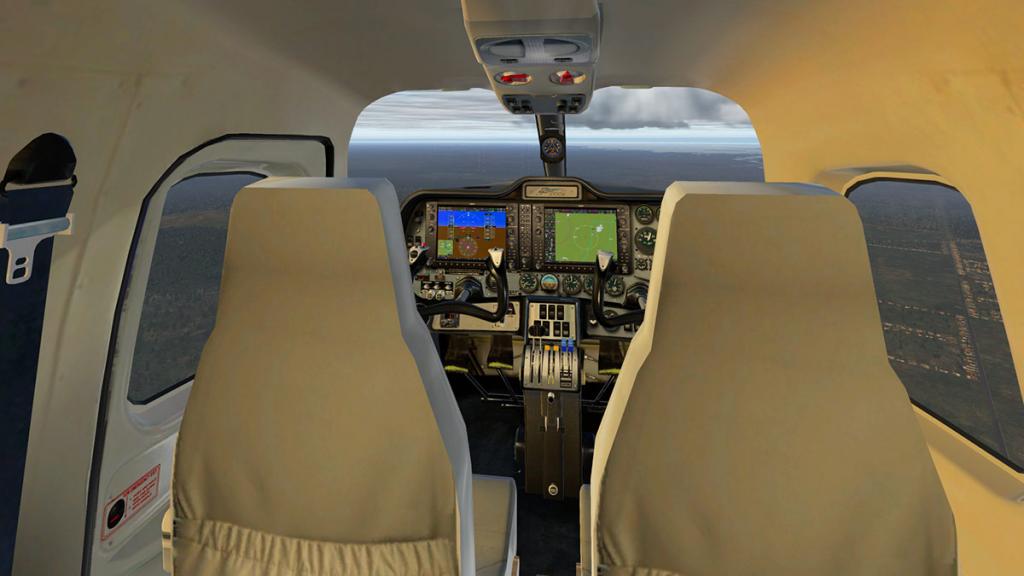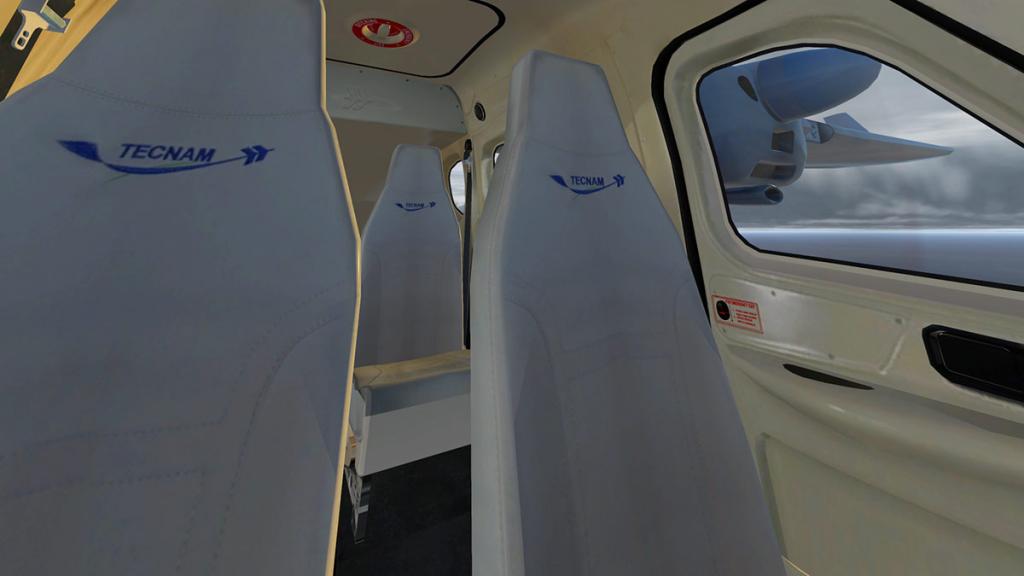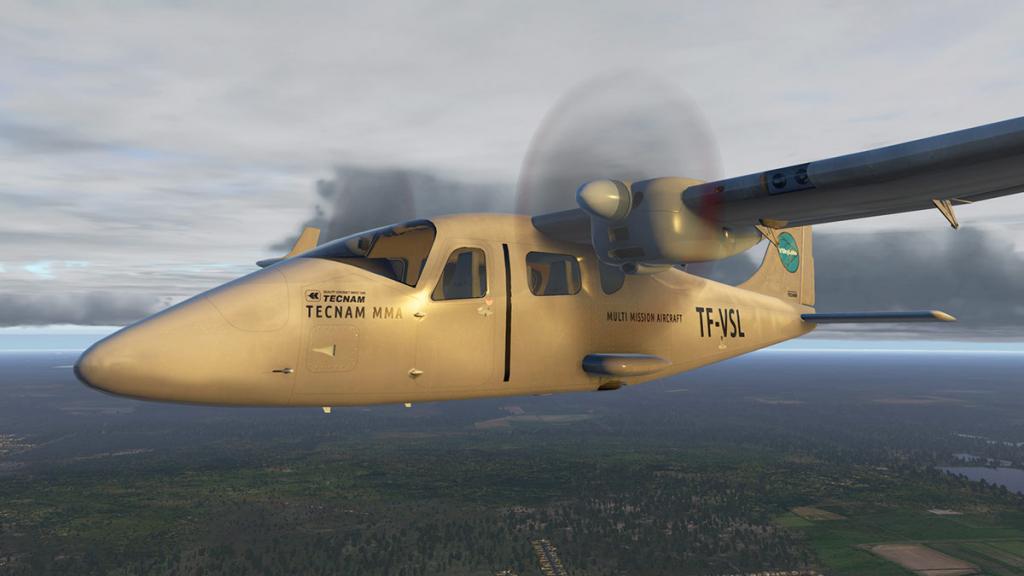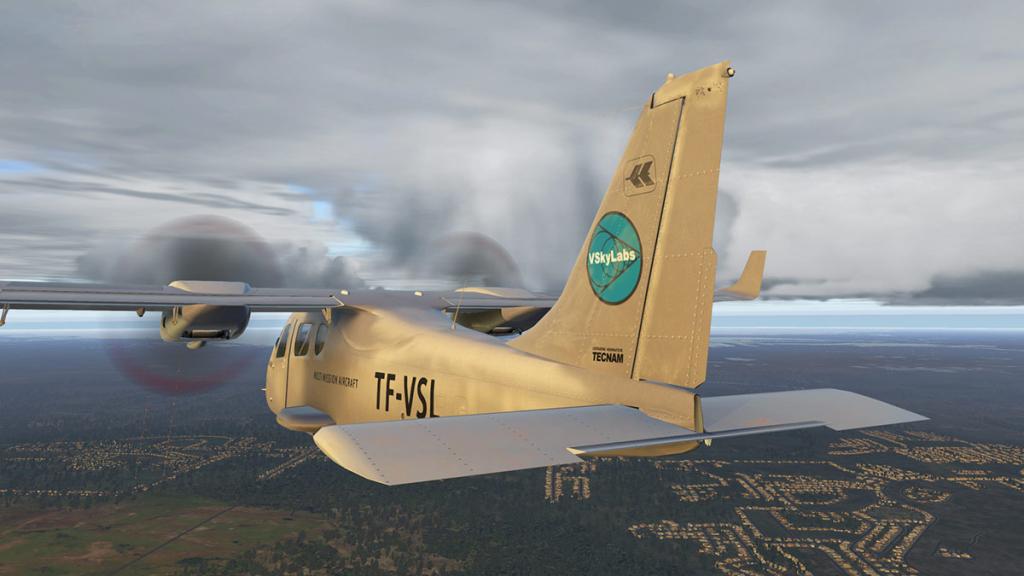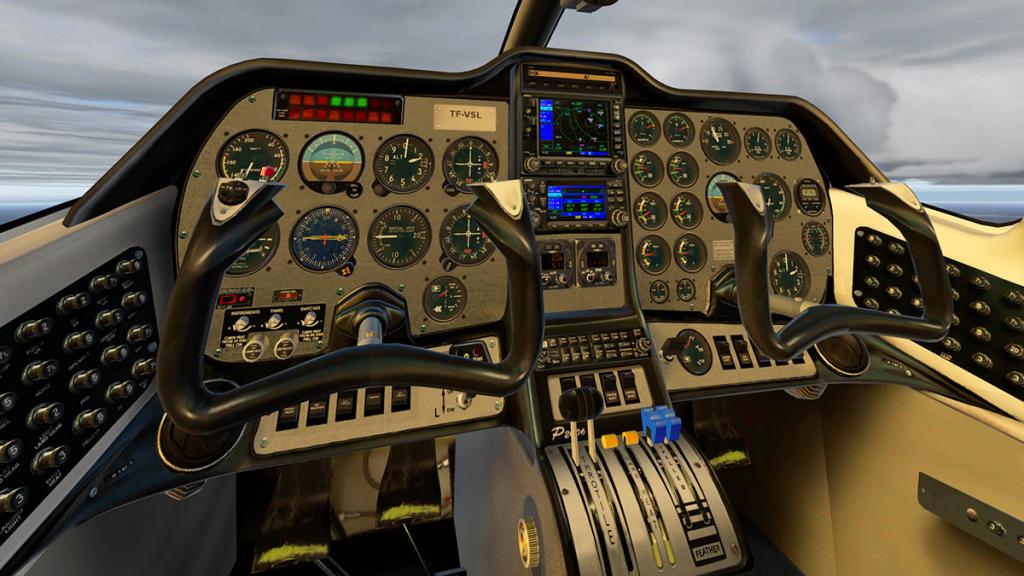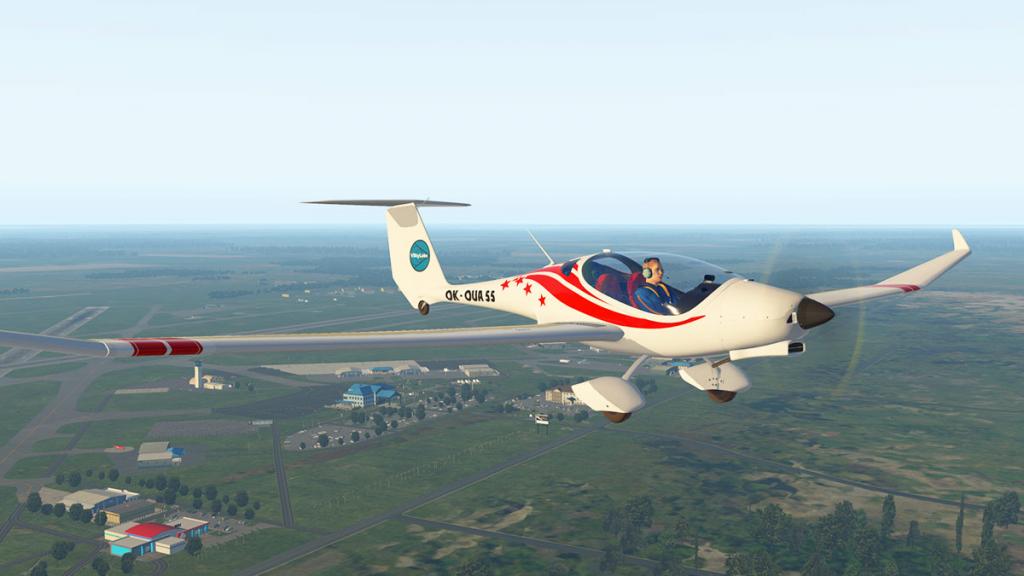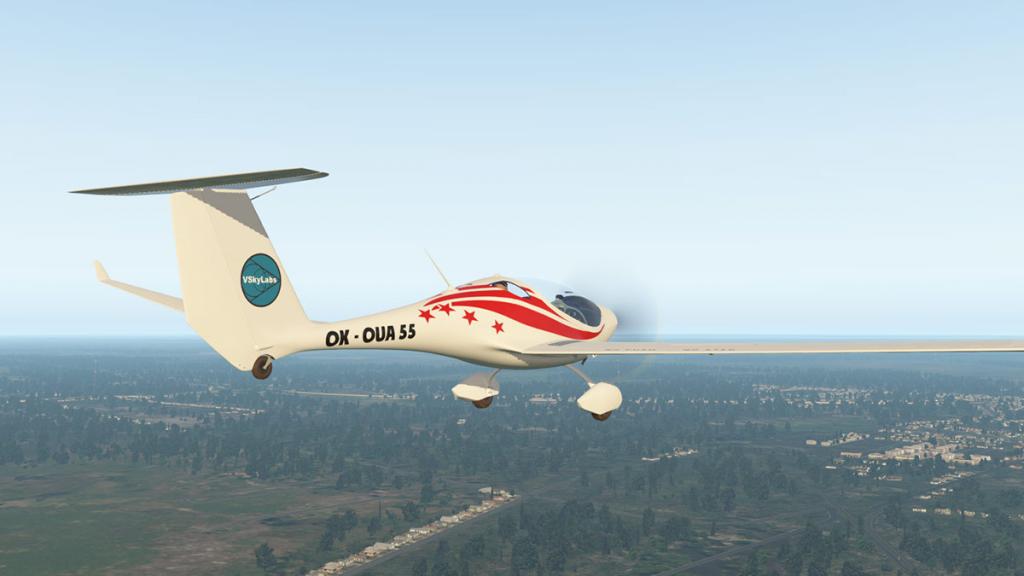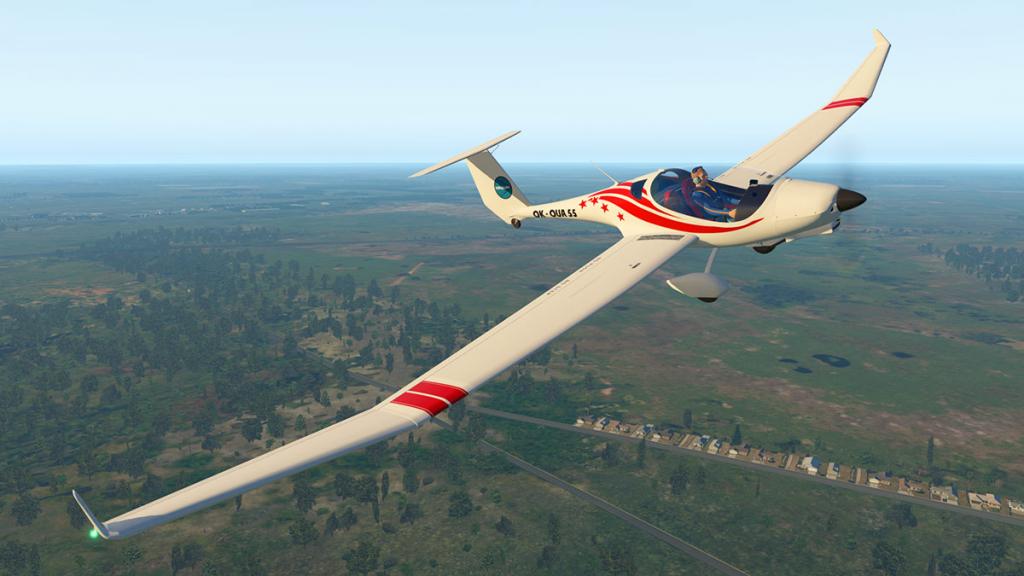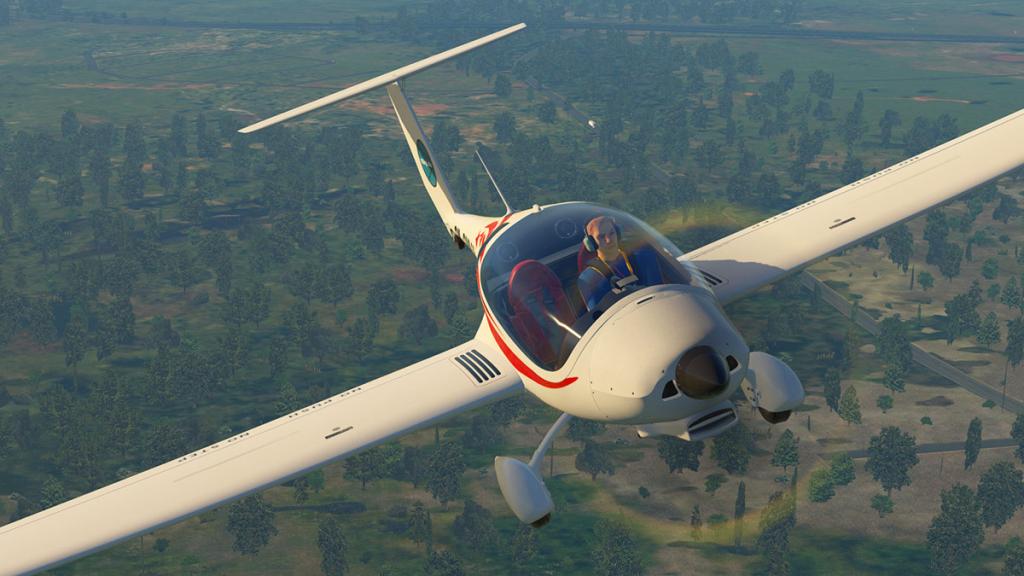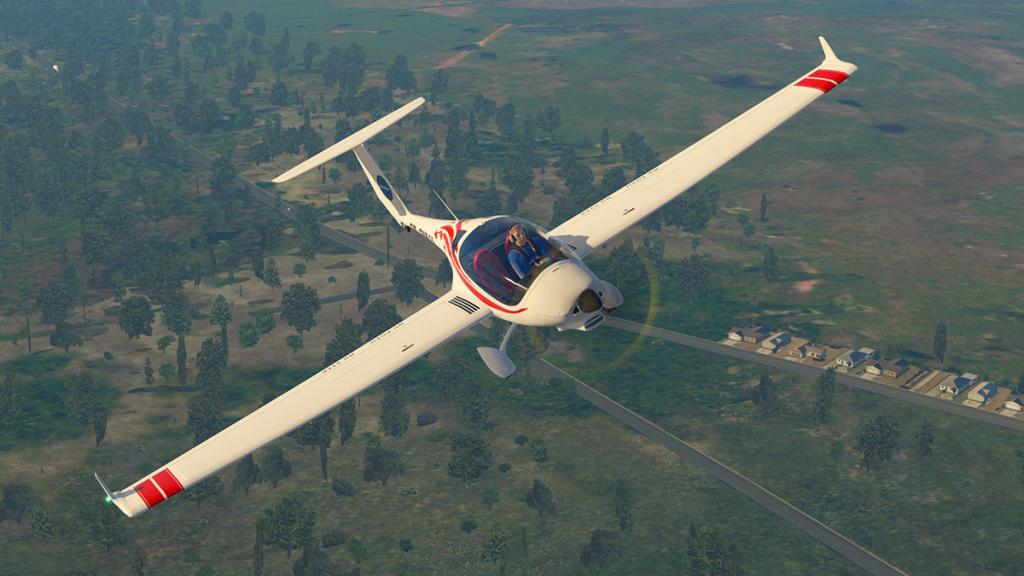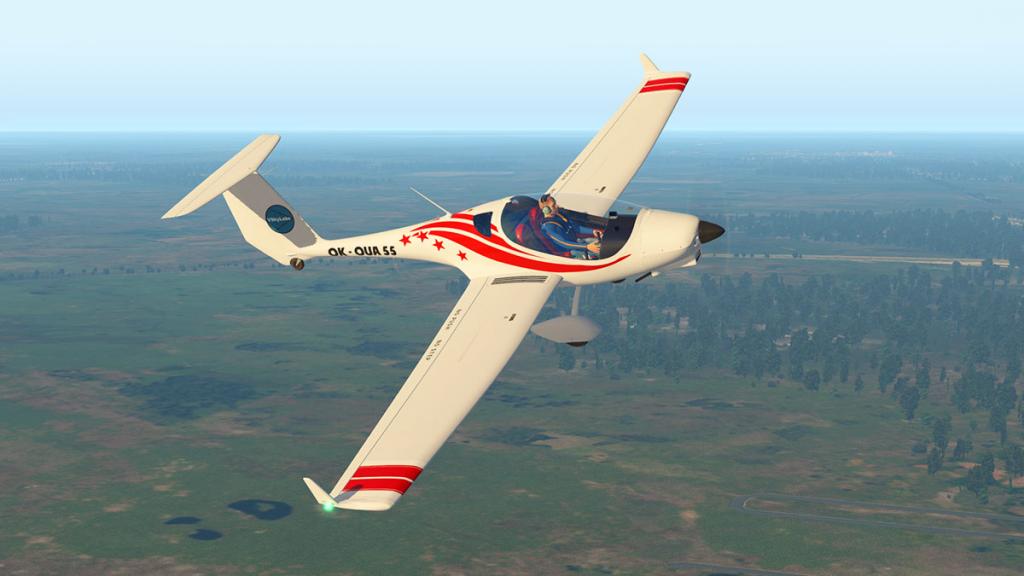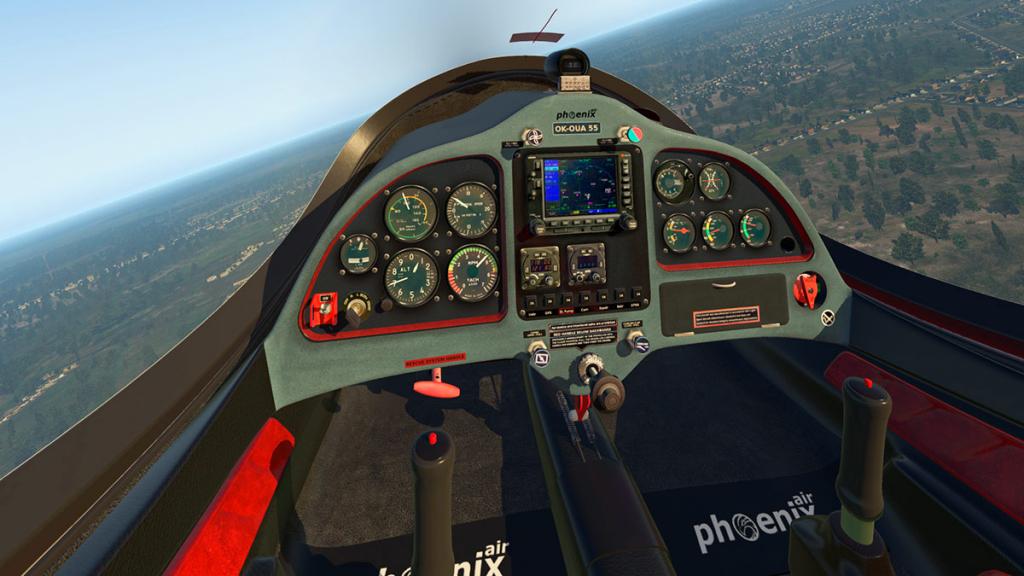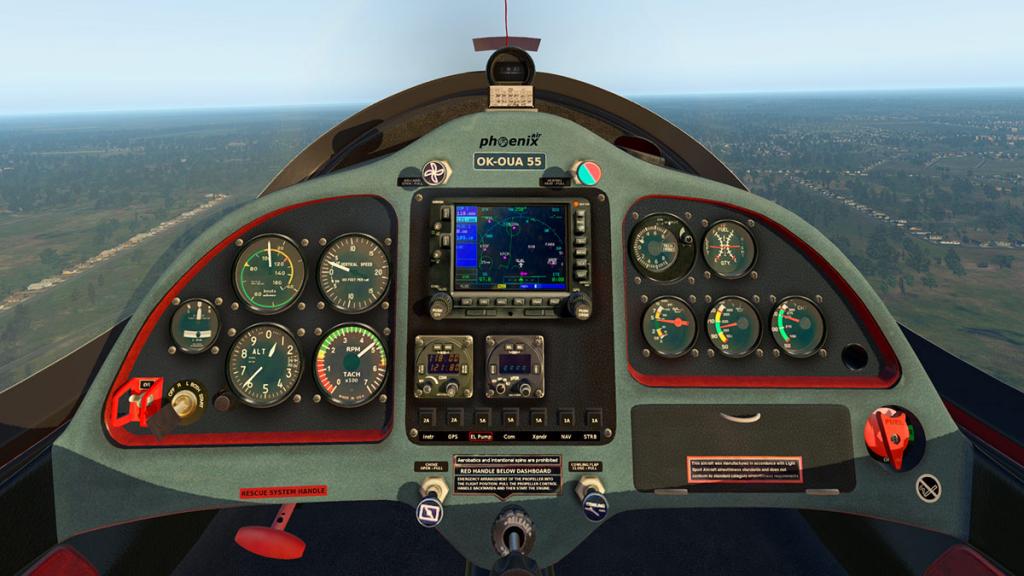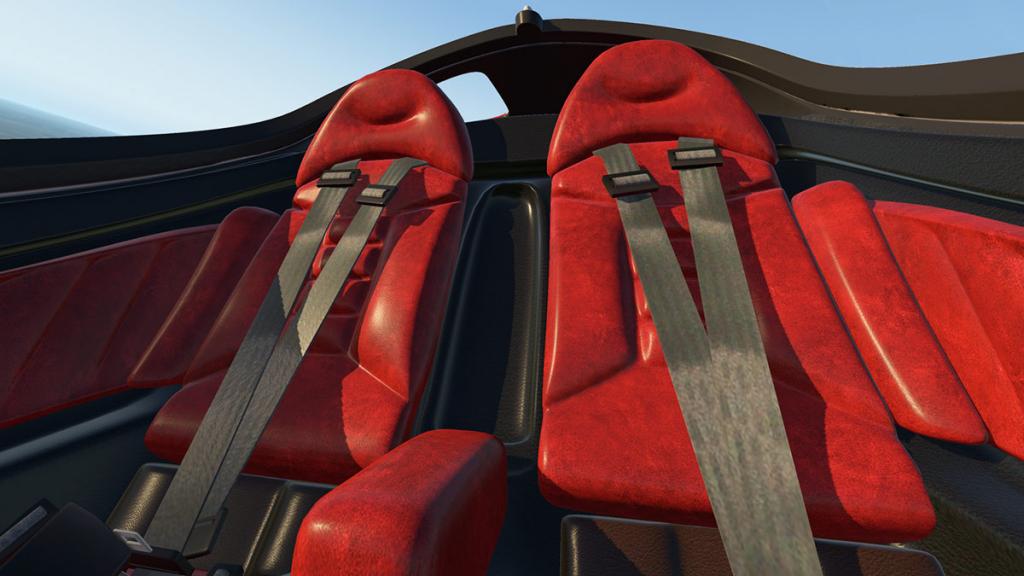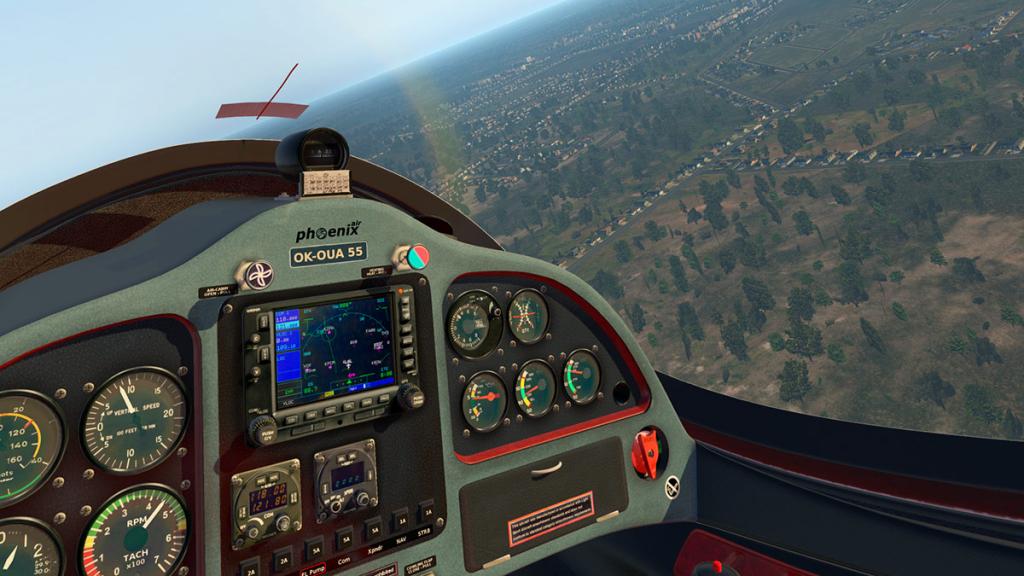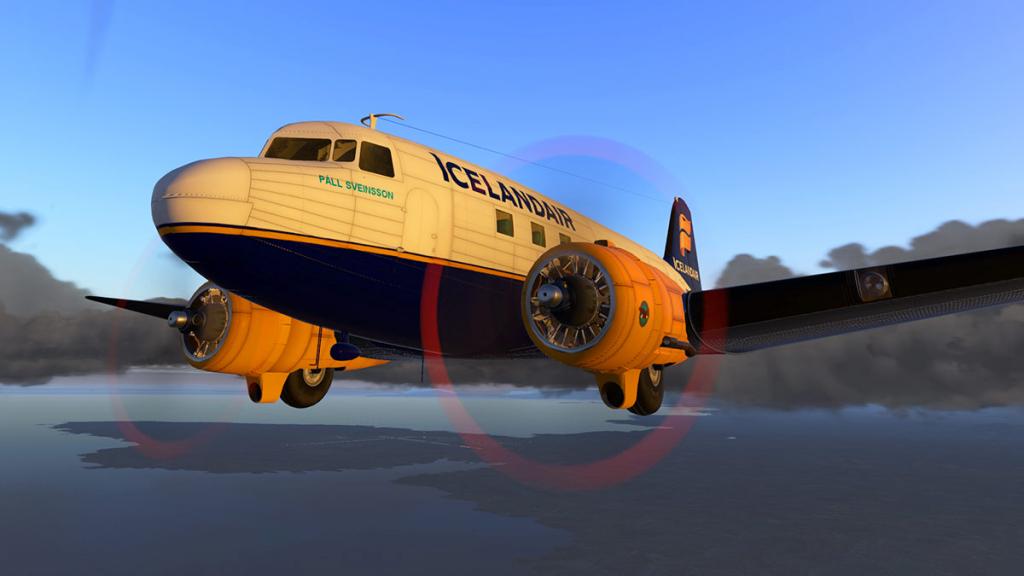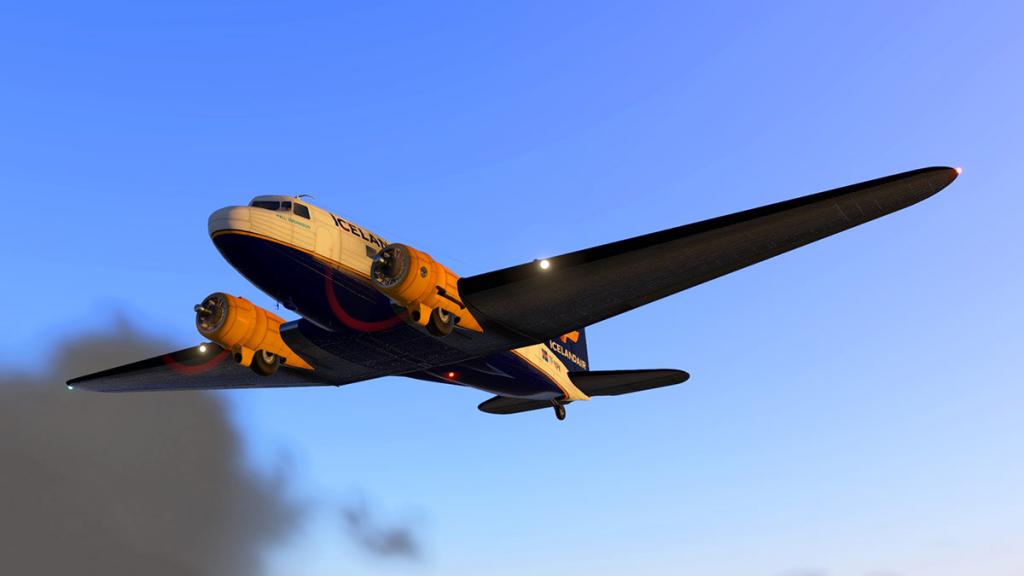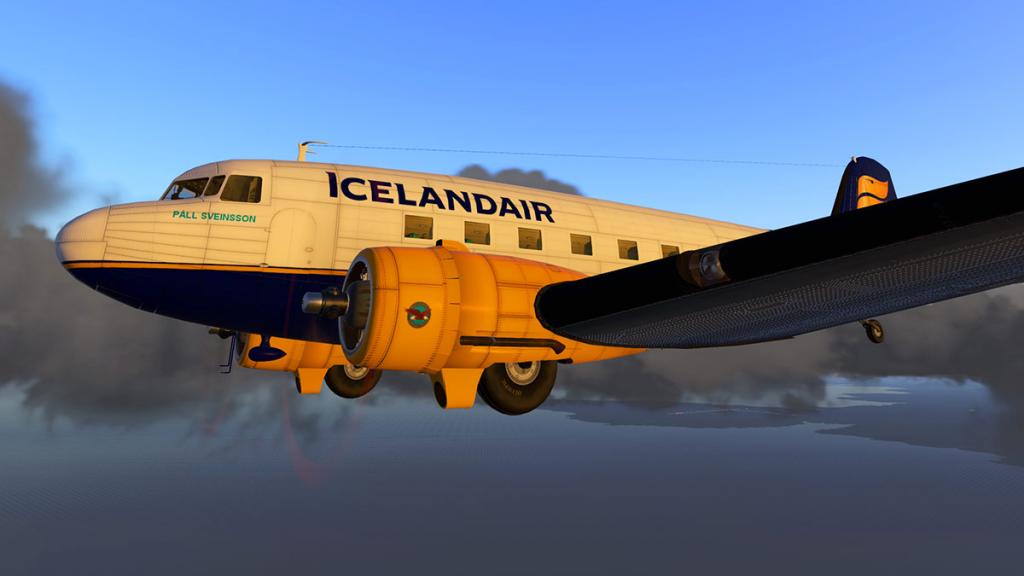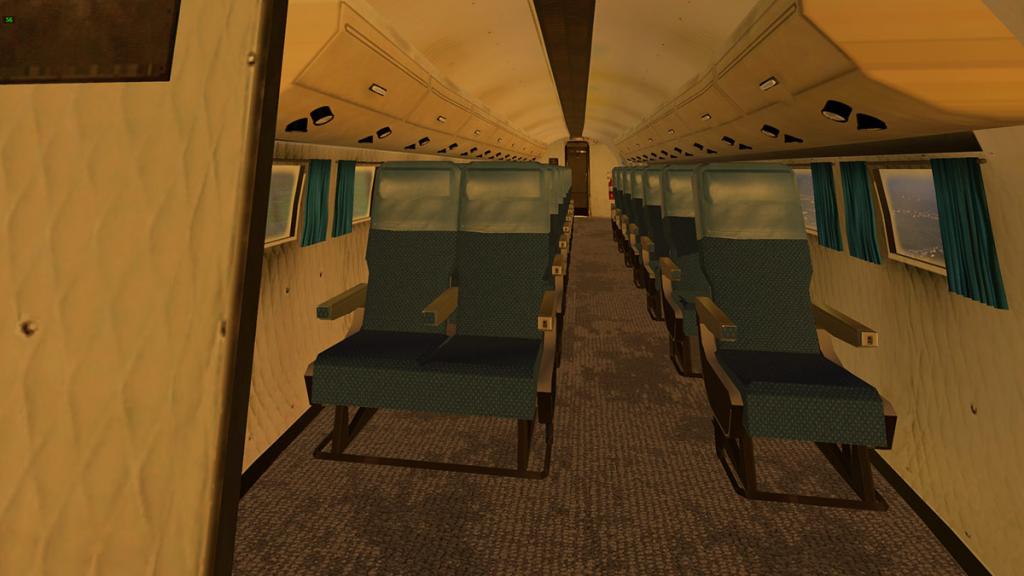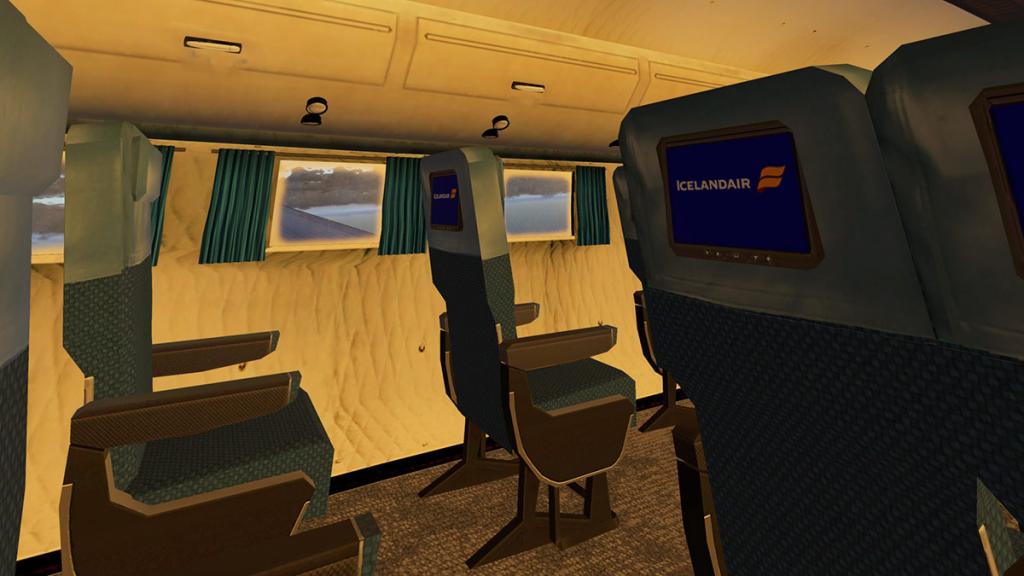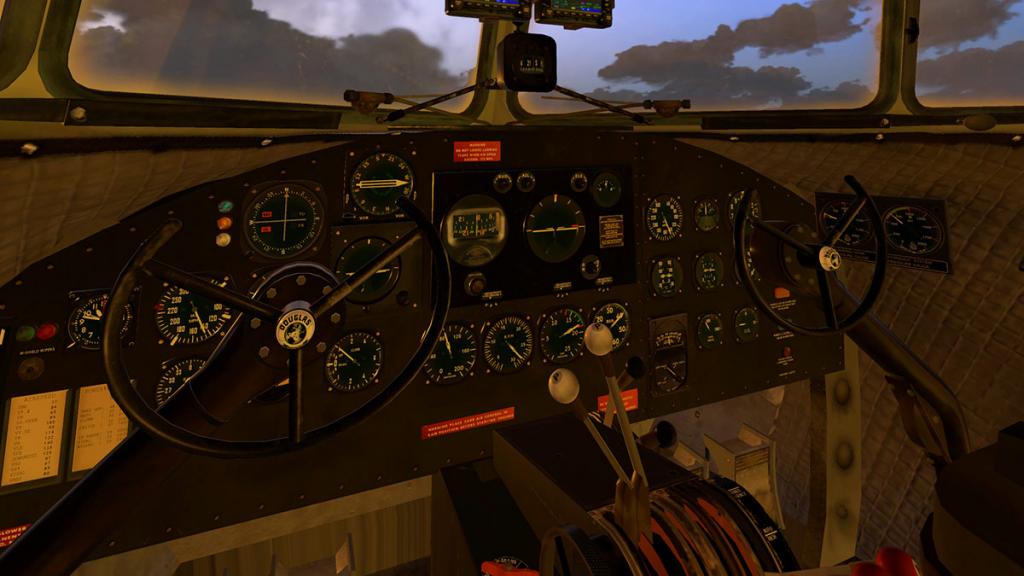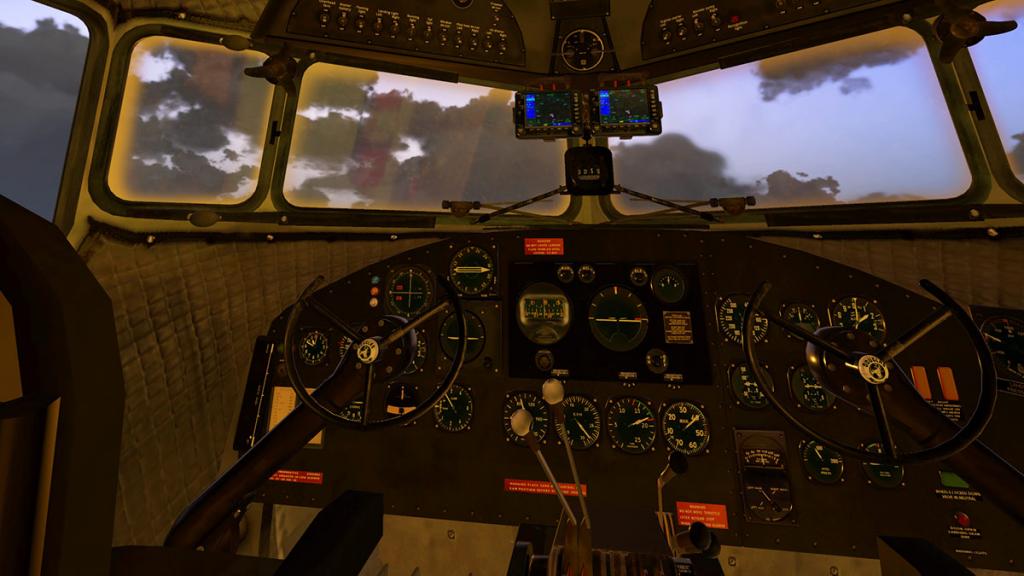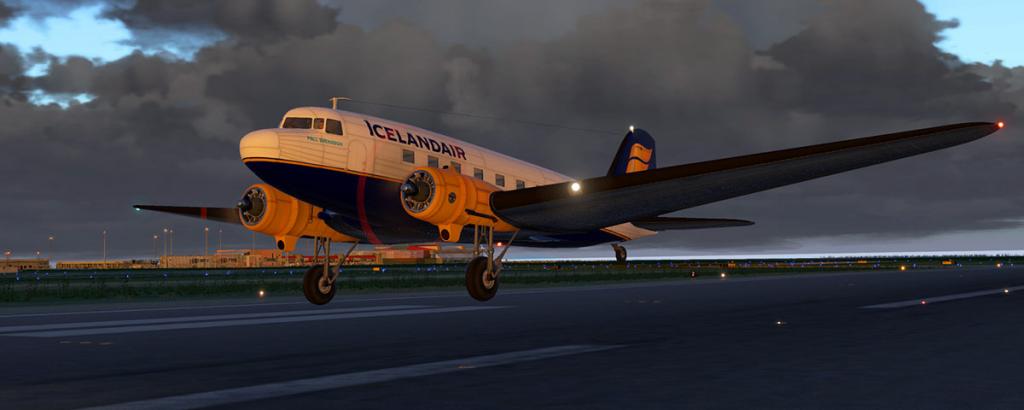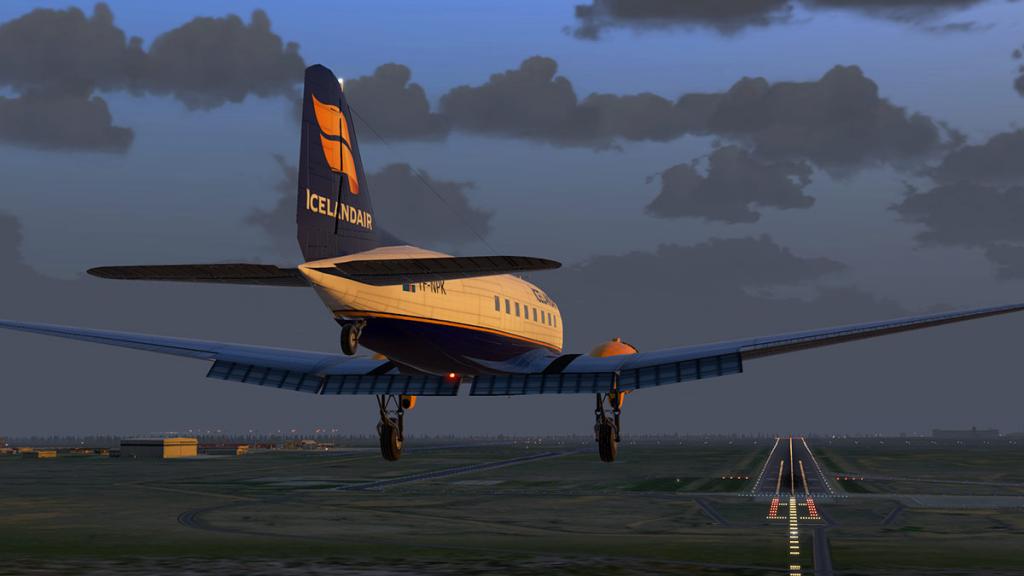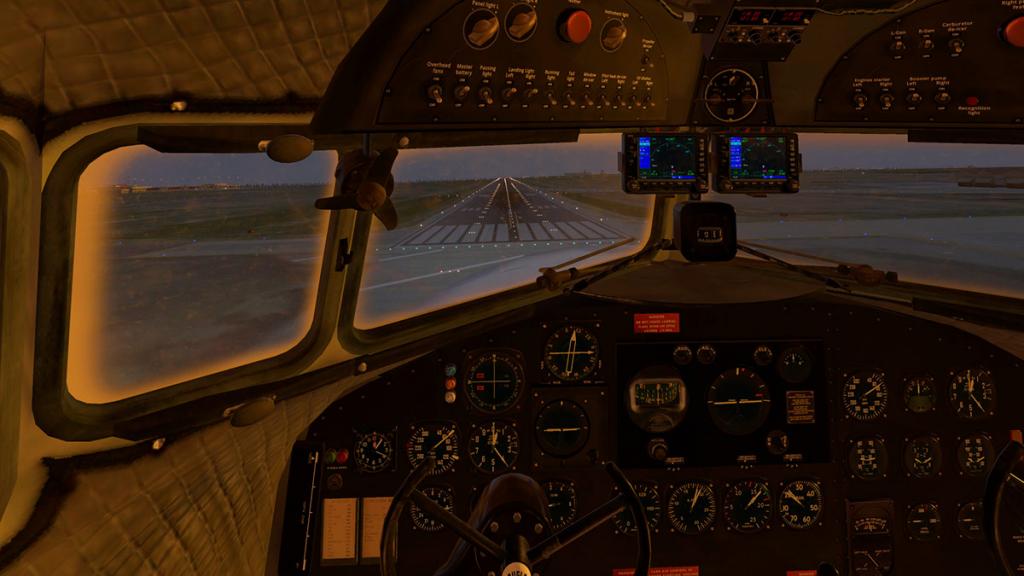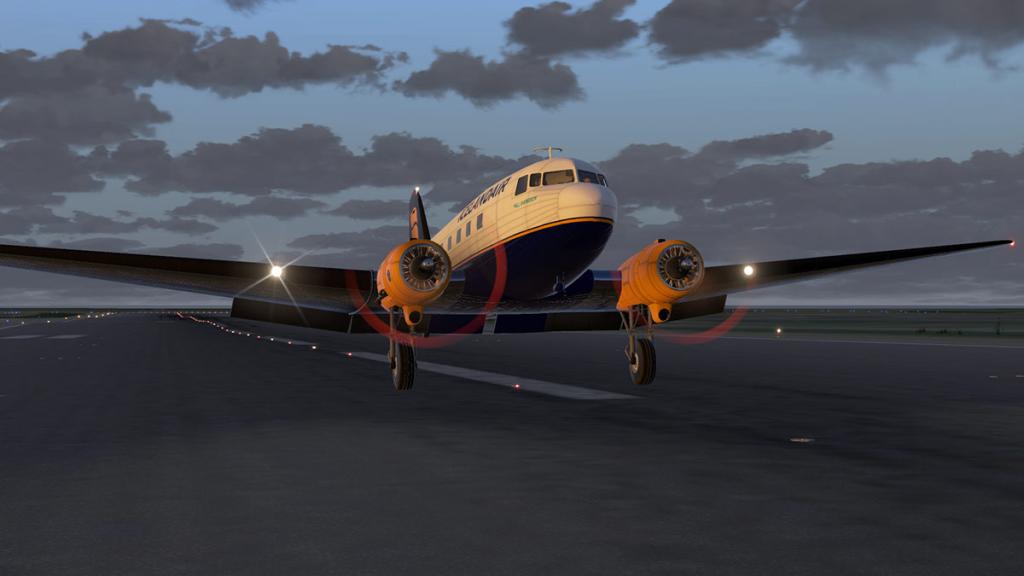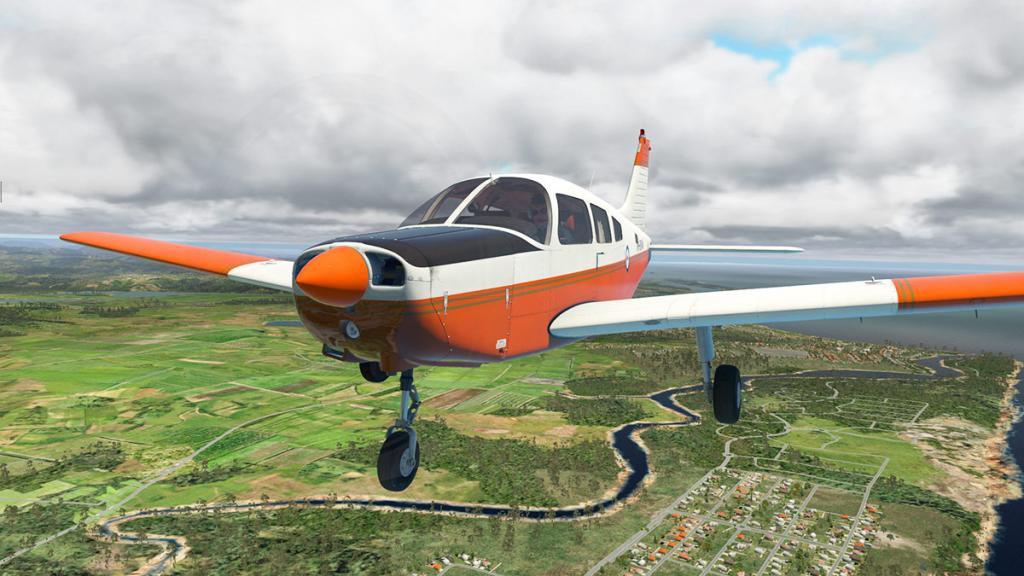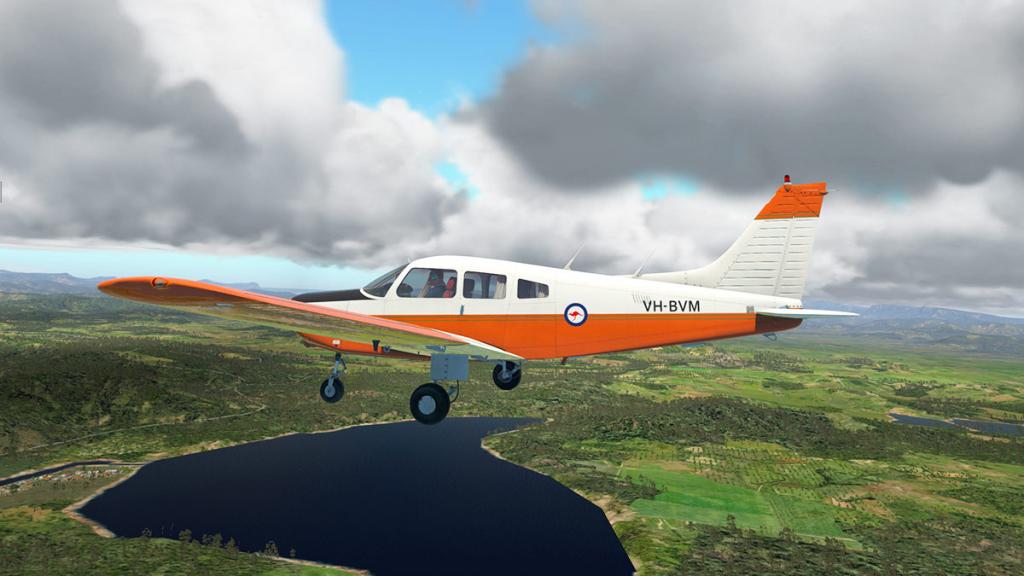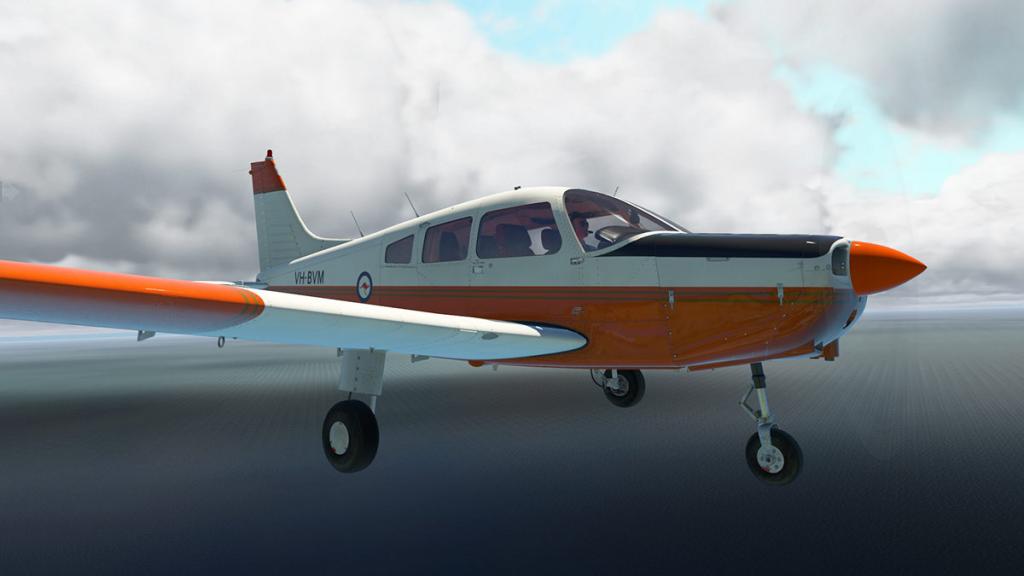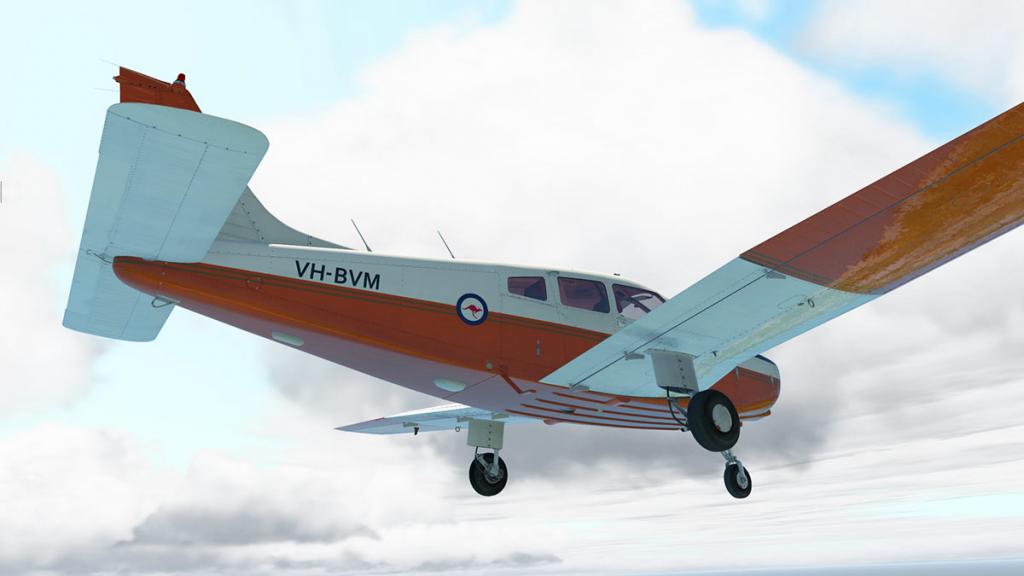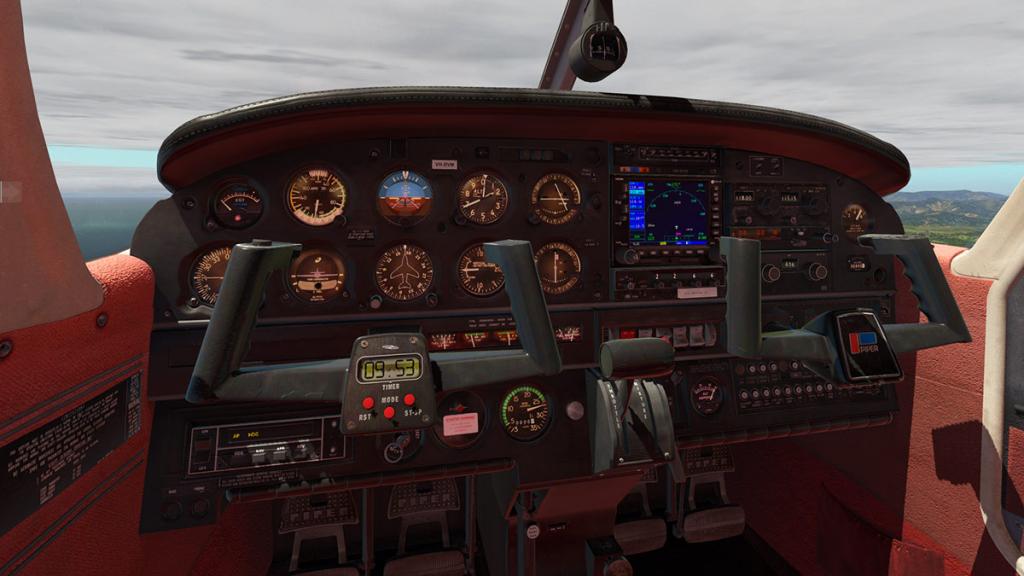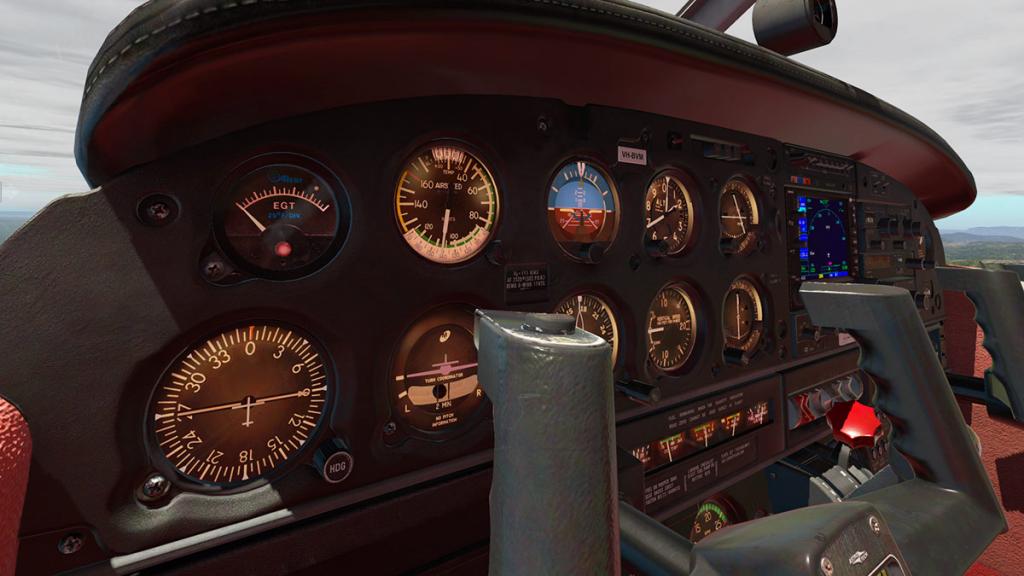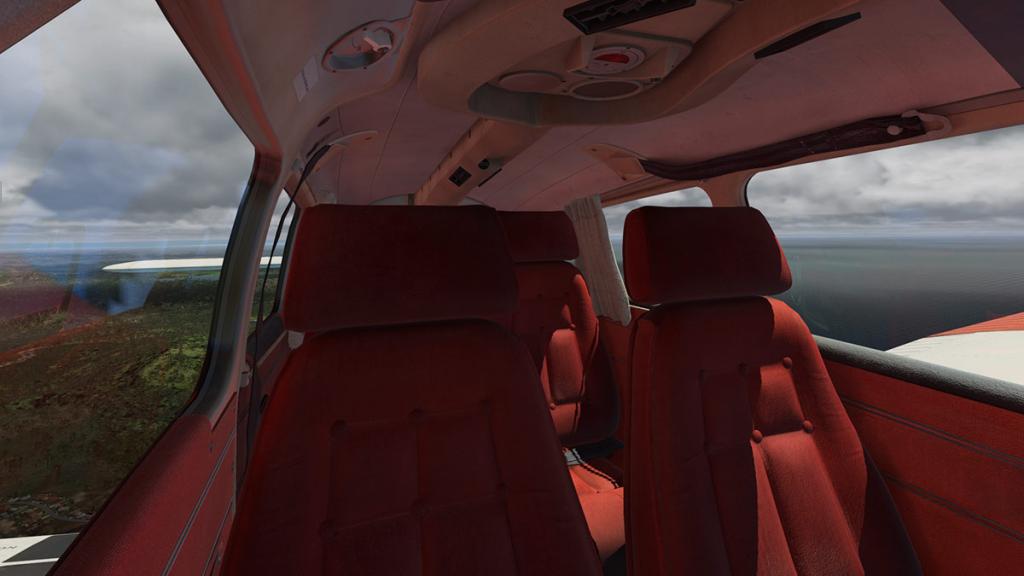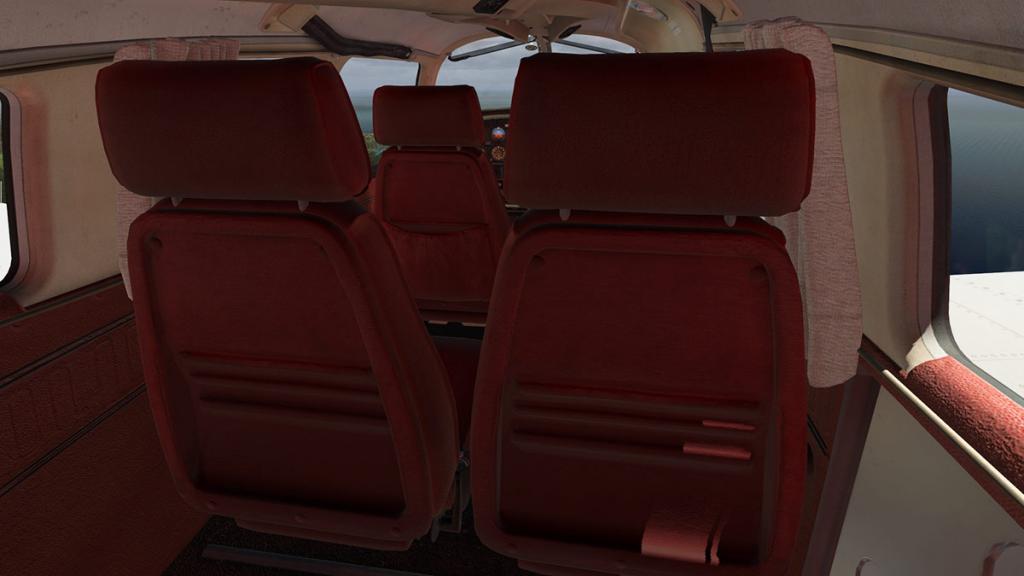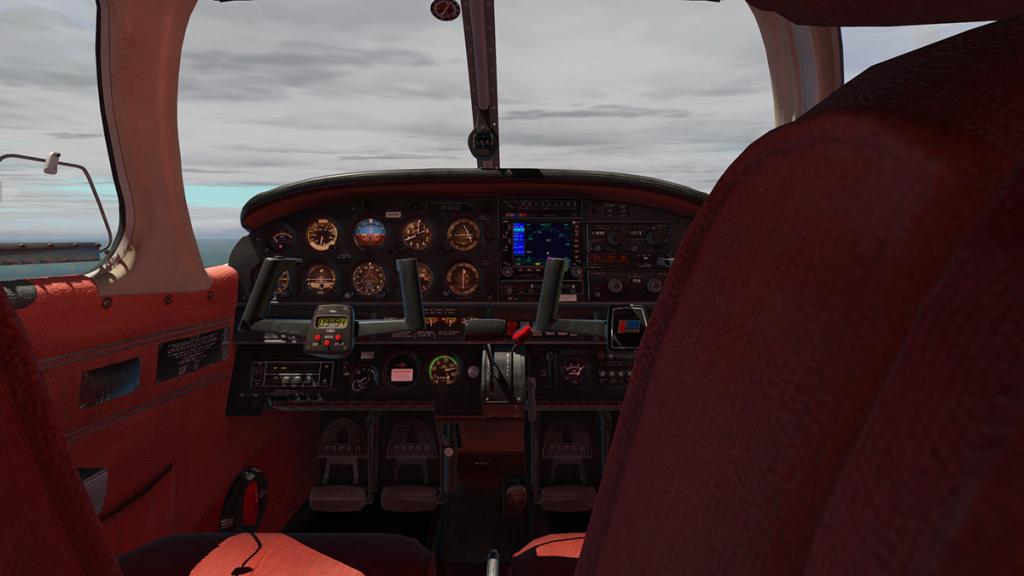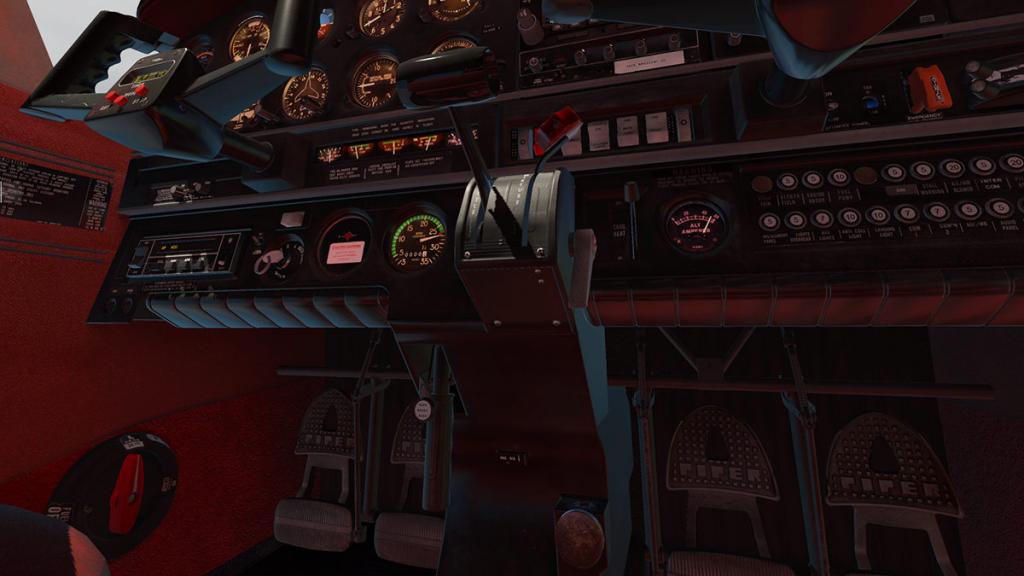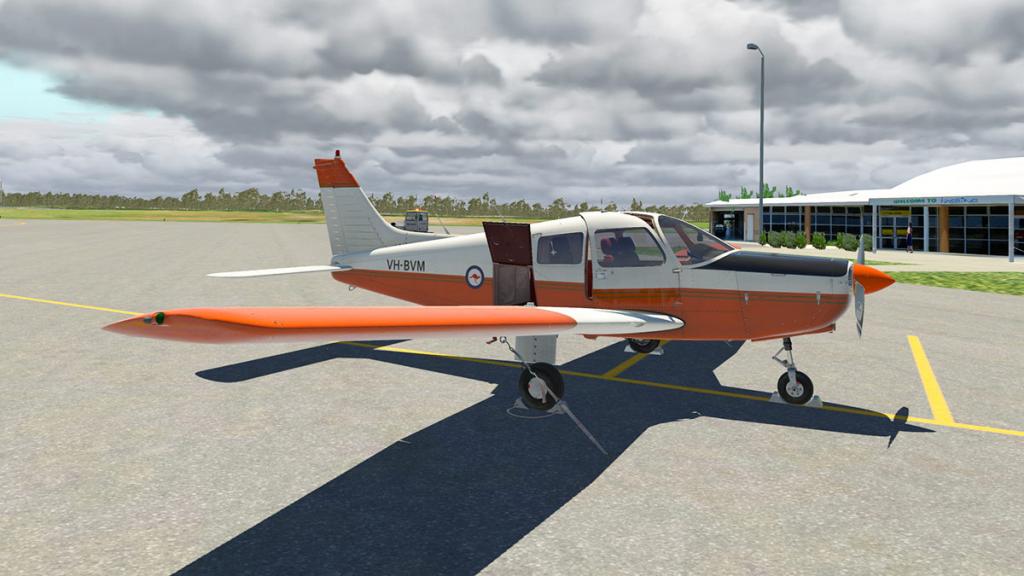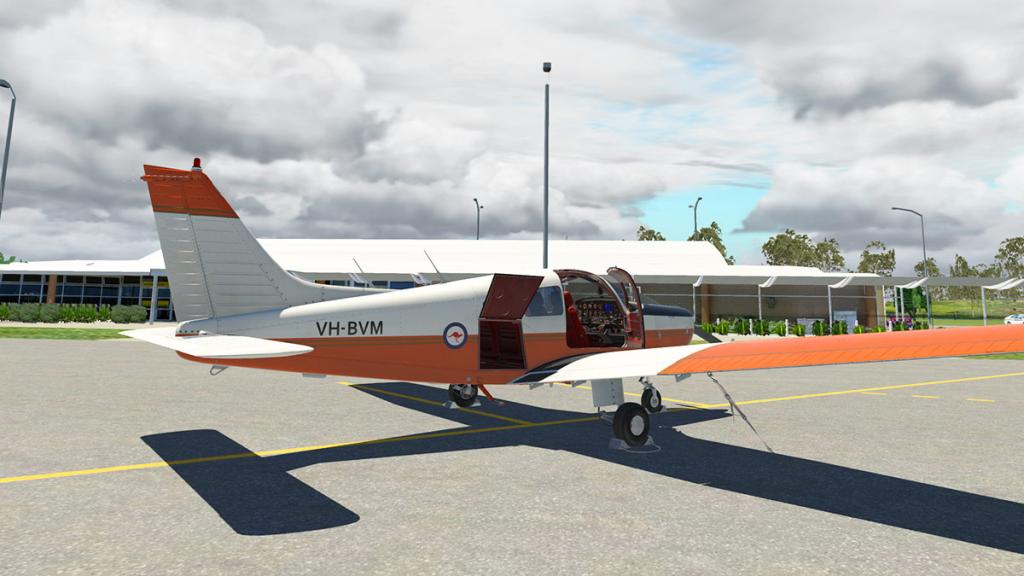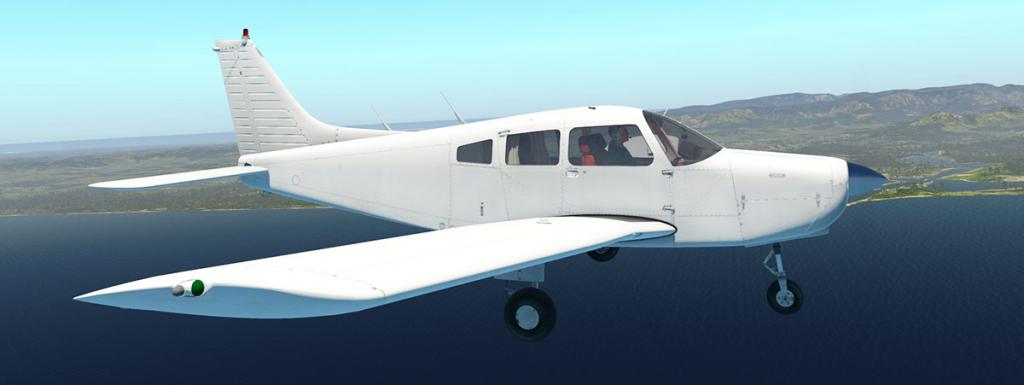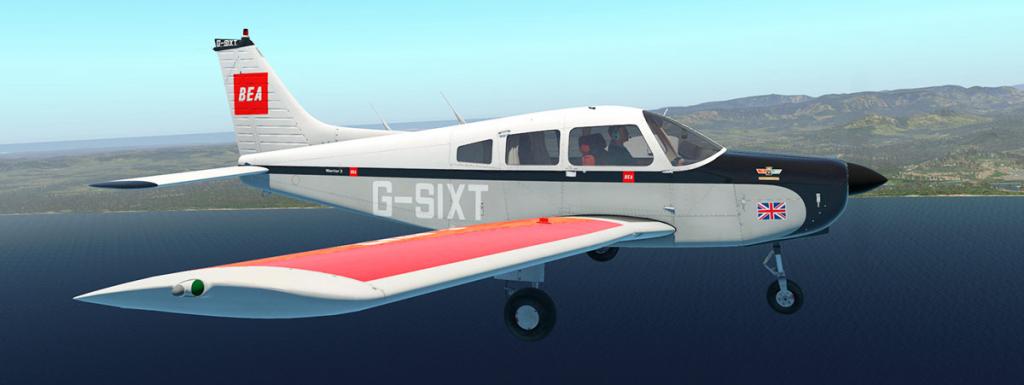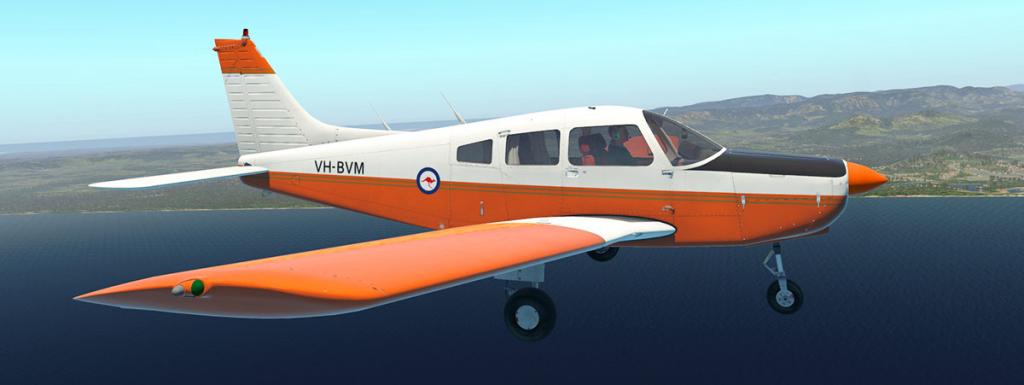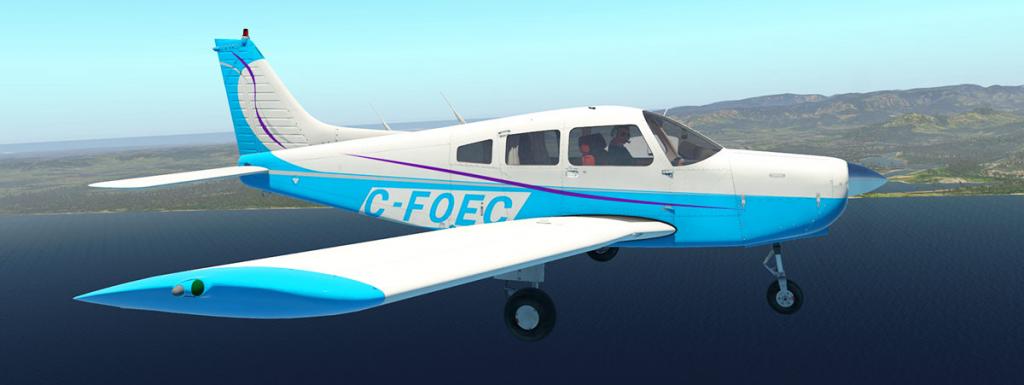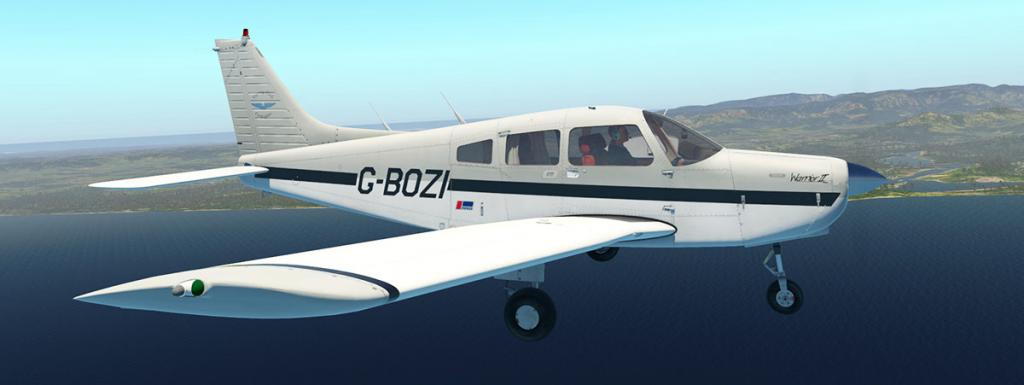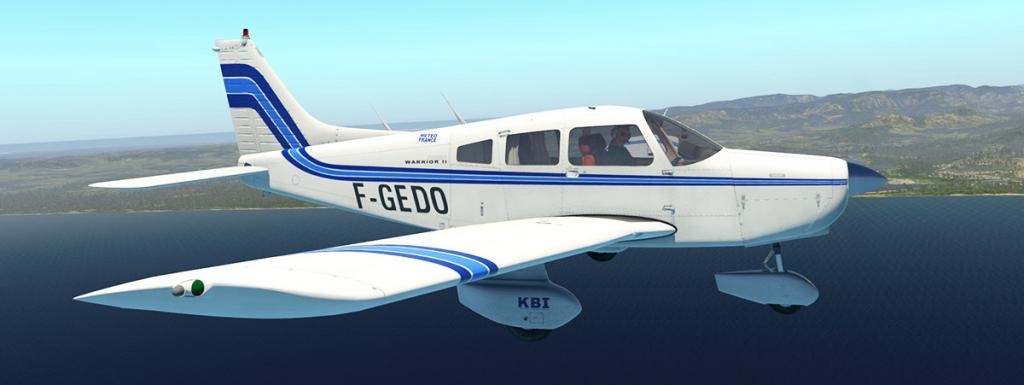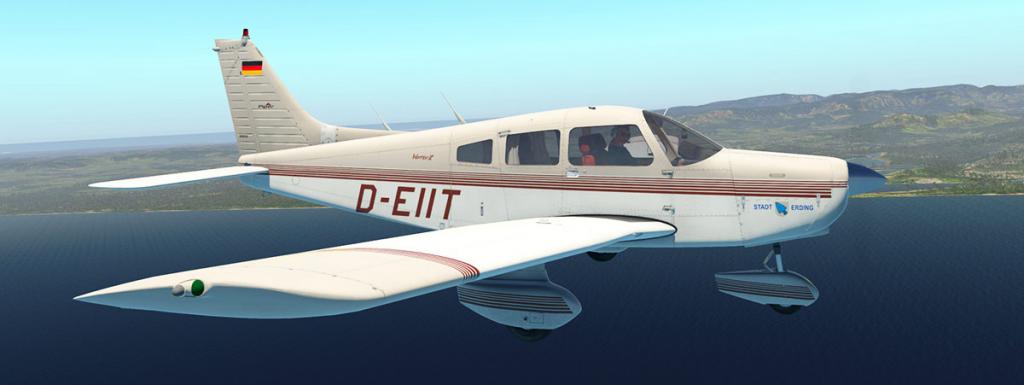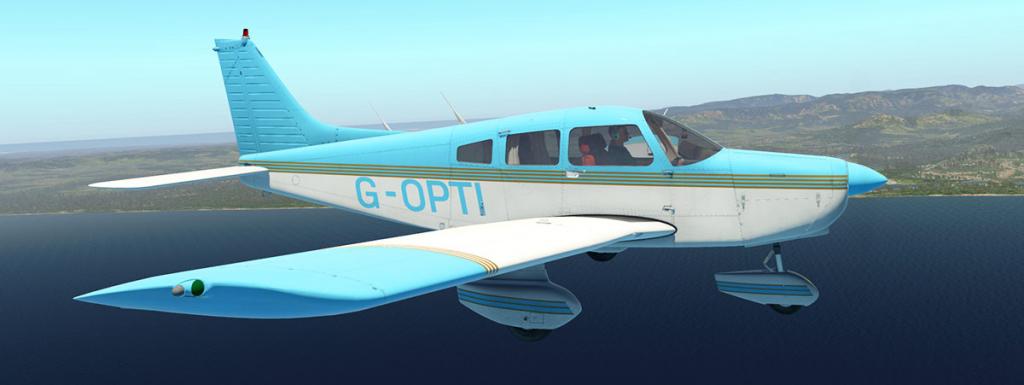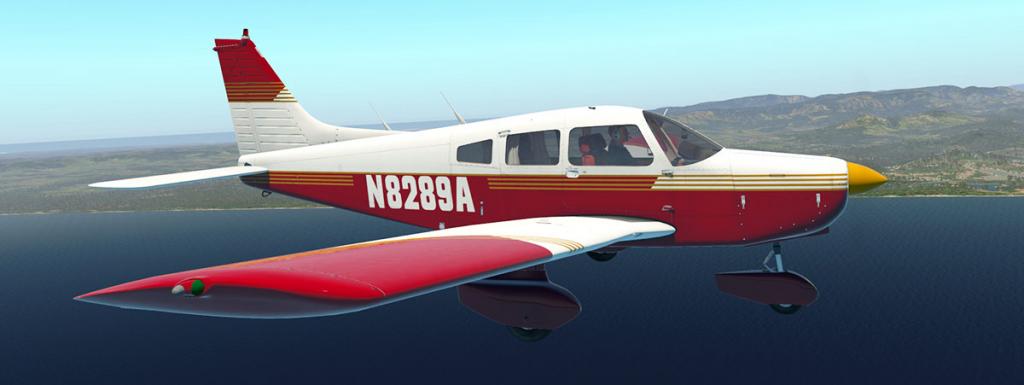-
Posts
2728 -
Joined
-
Last visited
-
Days Won
353
Content Type
Profiles
Forums
Articles
Everything posted by Stephen
-

Scenery Review: Miami City XP
Stephen replied to Joe's topic in Payware Airports and Scenery Reviews
Thanks, and at least some else realises the mega shift X-Plane is going through at the moment... great vistas like NYC are now possible... But it is mostly a great community effort, we are building X-Plane through that spirit and I am proud of that and what we do we love. -

Aircraft Release : Airbus A320-214 Ultimate by FlightFactor Aero
Stephen replied to Stephen's topic in Airliners Reviews
Super happy about that, enjoy and yes any feedback is welcome -

Aircraft Release : Airbus A320-214 Ultimate by FlightFactor Aero
Stephen replied to Stephen's topic in Airliners Reviews
I'll answer both comments. The JARDesign A320neo is good, but the A320U is realism. You don't get the helpers in setting it up in the FMS (MCDU) so you have to work that out yourself, there is a few helpers on the iPad flight bag, but mostly your on your own. The aircraft covers a lot of faults, like with one I got grounded with a jammed flap adjuster motor. The important thing is not to short take on filling in the FMS correctly so the aircraft follows the instructions, then it will act like a real airbus, so at first sight it looks a little daunting, but like the JARDesign A320neo you learn and fly it and it comes to you and you will find it a brilliant experience. After 13 months in alpha and beta testing there is really nothing that is notable except for nigglely bugs that are in every aircraft, it relates mostly to the above in setting it up correctly to fly it. I personally struggled with the ZFW (Zero Fuel Weight) settings, the one thing that you have to get your head around is that iPad flight bag is there to help you, not do it for you. But it looks the other way around... a lot of testers struggled with that (confusion with the way that JAR helps you) and you need to switch out of that way of thinking. So overall you have to adapt to a new way of flying Airbuses, the basics are the same but the depth isn't, as the FF A320U is deep in systems and a totally new level.... but once it all falls into place it is a glorious place to be. You will get a lot of and there is of users noting this and that is wrong with the aircraft, but that is inexperience or not studying more than the actual aircraft, it is not the JAR, so don't try to fly it like the JAR. A side note is that learn the A320U and the Toliss A319 is very, very similar in the way you set up and fly it, so both are a different higher level than the JAR A320. SD -
News! - Coming Soon! : Diamond DA-62 by Aerobask Aerobask have release images and information about their next release which is the Diamond DA-62. This aircraft is not to be mixed up with Aerobask's other Diamond the DA-42? This is the larger five to seven seat version of the aircraft. The flight model has been done by X-Aerodynamics for more closely matching real performance from the DA-62. The aircraft is fully featured and with a Garmin G1000 avionics system. It is based on the Laminar (native) version and includes custom EIS and annunciations. Quality is astounding!, Last year's Aerobask Panthera v3 was a significant leap forward in texture quality, but again it looks like Aerobask have gone even better again in cloth/material texture detail... Fixtures and chrome fittings are unbeliviably realistic. Great effects as well with realistic rain and icing, not only inside on the glass but also on the actual aircraft as well. Full menu features and static elements... Here is the full feature list: Flight model by X-Aerodynamics, very closely matching real performance (based on public data). Fully Integrated Laminar Garmin G1000 with custom EIS and annunciations (In 3D only). Fully functional virtual 3D cockpit, with smooth and VR-friendly manipulators. High quality 3D model with high resolution PBR textures (4K). FMOD High Quality Enhanced 3D system sounds, including Doppler and Flanger effects. Customized FADEC/ECU with test procedure. Simulated oxygen system. Simulated ice protection system. MD302: custom coded Standby Attitude Module. Fully functional breakers (configurable reliability). Windshield effects: reflections, rain and frost. Many parameters saved between flights. Configurable pilots, passengers and luggage. Optimized to save FPS. Requirements Available for X-Plane 11 | Windows/Mac/Linux. 4GB+ VRAM Recommended Release of this Aerobask DA-62 has been noted as Mid-March! ________________________________________ News by Stephen Dutton 23rd February 2018 Copyright©2018: X-Plane Reviews Images and info text are courtesy of Aerobask
-

Aircraft Release : Airbus A320-214 Ultimate by FlightFactor Aero
Stephen replied to Stephen's topic in Airliners Reviews
Bit of a headscratcher is this one... I saw the comments on users saying they have appalling framerates, but I never had that? It is heavy on framerate, but really only the same as the usual comparative to say the FF B757/B767, and I have had a few hours on it now. I run xEnviro and WT3 alongside, but a reason might be in the texture settings... I only use "High" and not maximum and my objects down a click, you really lose nothing visually but gain in framerates, X-Plane weather is another factor. To prove my point here are three screenshots... The first is Aerosoft's EDDF with WT3 and Xenviro running and setting up the A320U... I get 26frames (box in corner enlarged) ? EDDF is pretty heavy and complex scenery Second is on approach to ENGM Oslo, again Aerosoft scenery but with some pretty heavy weather around me, I get 28 frames.... At altitude (say FL340) with no scenery it is around 32-35 frames to a top of 40 frames... the numbers don't lie. So are the users being too greedy in what they want? I think so, I never found the aircraft in a marginal framerate position, so nothing worse or nothing better than the rest with the same complexity... SD -
Aircraft Review : Cessna A-37 Dragonfly/Super Tweet by JAS/X-Aerodynamics If your first thought of the Dragonfly as some sort of militarised Cessna 172SP and loaded to gulls with deadly armaments then you are wrong, as the A-37 was actually a Twin-Engined Jet Trianer / light attack aircraft and a very good one at that. Actually the A-37 did have a history linage back to Cessna's main General Aviation forte in the Cessna O-1 Bird Dog that was a very light but effective observation aircraft. But In the spring of 1952, the USAF issued a request for proposals for a "Trainer Experimental (TX)" program, specifying a lightweight, two-seat basic trainer for introducing USAF cadets to jet aircraft. Out of program came the Cessna T-37 Tweet (designated Model 318 by Cessna) which is a small, economical twin-engined jet trainer and attack aircraft type which flew for decades as a primary trainer for the United States Air Force (USAF) and in the air forces of several other nations. As the Vietnam War intensified this then led to a strong interest in counter-insurgency (COIN) aircraft. In late 1962, the U.S. Air Force's Special Air Warfare Center at Eglin Air Force Base's Hurlburt Field in Florida then evaluated two T-37Cs for the role. The Air Force found the T-37 promising, but wanted a more improved version of the aircraft that could carry a much larger payload, and had much greater endurance and better short-field performance. This meant a heavier aircraft with more powerful engines. In 1963, the Air Force awarded a contract to Cessna for two prototype YAT-37D aircraft: T-37s with modifications that included: Stronger wings, Three stores pylons on each wing, Larger wingtip fuel tanks of 360 litre (95 US gallons) capacity, A General Electric GAU-2B/A 7.62 mm "Minigun" Gatling-style machine gun, with a rate of fire of 3,000 rounds/minute and 1,500 rounds of ammunition and the weapon was to be fitted in the right side of the aircraft's nose behind a large, convenient access panel. A gunsight and gun camera were also fitted, as was tougher landing gear for rough-field operation and better avionics for battlefield communications, navigation, and targeting. The OA-37B Dragonfly was an armed observation aircraft of the type. This design then created the A-37 Dragonfly or the "Super Tweet" after the design of the original T-37 Tweet. 577 "Super Tweets" were actually built and the aircraft's service was exemplary and the aircraft was extremely effective in its roles with over 160,000 combat sorties with only 22 USAF losses. There are numerous A-37's still around, but mostly in active flying museums, but also they are still in military active service in a few South American countries and Turkey. Cessna A-37 Dragonfly by JAS/X-Aerodynamics The A-37 aircraft comes in two versions: The "Standard" armed and the "Slick" or trainer aircraft. Exterior First impressions are that the aircraft has an older X-Plane feel than current releases and that is because it is. This is mostly externally because of the low-res liveries even with my settings already been adjusted higher in the "Texture Quality" to Max (from High) as the textures are only 2K (2048x2048), but in areas the text and design is slightly blurry. X-Plane11's PBR features do certainly help in bringing the aircraft to life in good lighting conditions. The modeling is not too bad and well done, but the more modern and detailed textures would have brought out more realism. Canopy glass is well done and the cockpit looks excellent from the external view, but there are a few areas that have not had textures applied like with the extruding muzzle of the 7.62 mm "Minigun" cannon. Note the mesh screens below the engine air-intakes... Changing the liveries doesn't change the textures of the end of wingtip tanks or the armaments and their supports, so they can look odd on certain liveries like this very nice "Blanc Bleu". The mesh screens flip up to cover the air-intakes when the gear is lowered to prevent foreign object damage to the General Electric J85-GE-17A turbojet, 2,850 lbf (12.7 kN) as the A-37 is unusually a very low aircraft to avoid the need for access ladders and service stands in remote airstrips. The aircraft was designed to be simple to maintain, with more than 100 access panels and doors. An experienced ground crew could also change an engine in about half an hour. Undercarriage detail is very good and well modeled, with nice detail inside the gear wells. The A-37 also has an extremely wide track of 14 ft (4.3 m) for stability, but you have to watch that low tail on takeoff or not to pitch too high in the flare on landing. The three antennas with one behind the cockpit and two (or four) on each of the leading edge of the rear tailplane, are excellent with great movement (curve) in the air, but upright when the aircraft is still. All the moving aircraft flight control surfaces are again excellent as the A-37 was a great aircraft in manoeuvrability and the A-37 excelled at close air support when Its straight wings allowed it to engage targets at 100 miles per hour slower than swept-wing fighters. The slower speed also improved bombing accuracy, enabling pilots to achieve an average accuracy of 45 feet (13.7 m) Does the canopy open? I don't know as I couldn't find any handles or active areas, a shame as it would have looked sensational. Cockpit In the pilot's seat and the complex instrument panel is confronting... Overall the iconic panel has been well reproduced, but you do notice a lot of native (Planemaker) items in the instruments and seemingly earlier X-Plane planemaker as well. That is to get the more aged feel in the instruments, but most of the instruments and text are also very low-res and blurry close up as again if you don't have your resolution settings set very high. Your immediate feel is X-Plane five years ago. Native GNS340 and GNS 530 are virtually unreadable and blurry, and pop-outs for use is required and most knobs don't actually turn so you don't know where the adjust position is, thankfully most of the switchgear is actually switches and not knobs. There are duel sets of throttles for both pilots and oxygen and chaff/Flare buttons... ... the seats are built for ejection and for protection on station the aircraft has enough armour plating to build a Tiger Tank, and here the seats are very well modeled with a great safe feeling with all the metal plating around you. At this point there is a note to make. There is a manual (seven pages) but it includes just an install guide, aircraft history, the features of the aircraft, tips and acknowledgements and bugger all else? There is no instrument layout guide, active areas (if there is any?) or even how to operate the aircraft... This creates an area of confusion? as I couldn't even switch off the engines? (starting was easy with two push buttons) but even with all the fuel pumps off and the power cold the A-37 would still thrust happily away? Do the guns work, rockets? chaff? flares? no idea? and like I said can you actually open the canopy? I worked through the autopilot (but it took awhile as it has a few foibles) Oxygen System (I think no again) and also working through the instruments and is there a course knob (I don't think so either) do you change the drop tanks or armaments on the aircraft (no you don't you load the "Slick" version) and so on. Flying the Dragonfly! The developers recommend you takeoff with full flap or 100% down as shown on the flap gauge left top. You may say "Full barn door flap for takeoff?" but this jet has a plenty of grunt to overcome the drag of the full down flap. The amount of fuel load and loaded armaments do make the aircraft quite heavy and more sensitive. 140knts and you can rotate... Flaps are three stage 40%, 80% and 100%, so you click once on the flaps, then the gear up and then back to the flaps for two more clicks once you are in the climbout. The rate of climb is phenomenal, officially it is 6,990 ft/min (35.5 m/s) to 41,765 ft (12,730 m), 3000ft - 4000ft per min keeps you accelerating upwards... .... the Super Tweet is no F-15 Eagle, but its not bad either. One note though is that the A-37 is quite a fuel gulper and loitering over station they would shutdown one engine to conserve the fuel! But you watch that fuel gauge and plan enough to return and conserve as much as you can in transit. The developers don't note if is this is an "A" or "B" version, as the B has a longer range, but I think it is the A as the instrument panel was reconfigured more for two pilots than the sort of wrap around panel you have here focused on the left seat. The view directly ahead is restricted in a military fashion, but the feel of speed and all that jet power is conveyed via the the excellent glassy canopy. If you like to throw your aircraft around then you will revel in this aircraft, hands on it rolls, climbs, dips to your great delight, the A-37 pilots must have had a ball with this aircraft... it is sensational in the air. The aircraft has been translated to the X-Plane11 performance in dynamics and engines, so it does certainly reflect that in the handling of the machine. Sounds are not FMOD, but they are however very good in conveying the original "Super Tweet" J85 engine sounds and are highly realistic on startup, on taxi and overwhelmingly with the power up and climbing hard up into the sky, it feels and sounds like a really great serious military light jet aircraft, and you can't ask anymore more than that. Instrument Panel The instrument panel as noted is like on many aircraft overwhelming at first, but once broken down into it's sum of areas you can work over it better. Main Standard Six (SS) flying instruments is central, but the arrangement is Airspeed Indicator, Artificial Horizon, Attitude Indicator and the Turn Coordinator on the top row. Fixed Heading dial, main Heading Dial, Vertical Speed Indicator and OBS VOR indicator (VOR1) are set out directly below. Some of the main SS dials are quite blurry with the Artificial Horizon the worst of the bunch, but they are readable. Radio sets COM1/2 - NAV 1/2 and lower transponder are situated left and old school native X-Plane. Centre panel are the twin engine dials for: N1, N2, Fuel Flow lbs/hr, ITT (*Cx100) - (Interstage Turbine Temperature) and the dials are thankfully sharp and clear but there is no Oil or Fuel temps dials. Above the SS are a few dials that cover (LtoR) VAC (Vacuum), Thrust, G Meter (Units) and Radar Altitude. Fuel Quantity is not split into different tanks but just one large dial. Electrical is covered by Gen 1&2 and a Volt (Voltage) meter. Far right for the secondary pilot are just four flying instruments that covers Airspeed Indicator, Attitude Indicator, Fixed Heading and the Turn Coordinator. Right Panel is a standard native X-Plane MAP display and a GNS 430 top and GNS530 lower but hidden behind the older X-Plane FMS faceplate. Both the GNS 430 & 530 displays have been sort of squeezed in to fit, but somehow the doctoring hasn't worked well as they are both very blurry, so you need the pop-ups to use them. A secondary Autopilot panel (very blurry) is set below. The Fixed Heading Dial is an interesting instrument and is mostly on military aircraft. It looks initially like a ADF/DME pointer but it is not. The Fixed heading is always on North (0) and when you changing your heading it sets the degree heading, then when the aircraft turns to the heading and then they match up. Autopilot The Autopilot is quite basic and you need to think ahead of it to get it to work correctly. HDG (Heading, HOLD (Altitude), V/S (Vertical Speed) and A-THR (Auto Thrust) covers the four buttons. You turn the adjoining above knobs to do the adjustments. HDG is straightforward to change your heading. HOLD is to set the altitude and use the V/S to change the altitude (100ft increments) and when you reach the altitude it will "Hold" it, but turn the HOLD off to adjust the V/S. The A-THR will hold the selected knot (knts) speed. Overall the AP works really well, but there is slight issue? Set your aircraft on the right heading and altitude and turn on the AP to hold both. But when you turn on both the A-THR and the HDG the aircraft creates a bank to the left? I noticed under the A-THR the engine output is not balanced? (arrowed) and the HDG compensates? Turn off the HDG and the aircraft will correct the bank. You can compensate for this by adjusting the thrust manually, then reselecting the HDG, but leave the A-THR off. I also noticed that the power imbalance will sometimes correct itself if I move the throttles levers (X-52 Rhino) and it sorts of clicks back in correctly. If the thrust is balanced the AP will work correctly. And it does all this sometimes and not in others? very odd. This does also note that under manual throttle control the engine thrust output has to be adjusted to balance or it affects the aircraft considerably in the way it flies, so if you do, do that one engine off and save the fuel trick then be aware of that heavy thrust imbalance. HUD There is a nice HUD (Head Up Display) right in your eyesight. There is a switch to turn it off, but it doesn't work and neither does the HUD BRT (brightness) knob, so you are stuck with the HUD in every flying condition which can make your vision hard on some landings. There are two other built in sights that work when you select the ROC ARM (Rockets) and GUN ARM (Cannon). Terrain Following A great feature is the TERRAIN FOLLOWING (TERR) that is positioned on the panel by the GNS 430. But press it with caution! Flying level at 5000ft I decided to "Give it a go"... ... in a moment the aircraft pitched violently down and I headed directly earthwards. About the moment I was expecting to meet my maker.... .... The aircraft leveled off at 250ft and then followed the terrain. It is very good, but get a slightly sharp hill and you go quickly up and then down again as you keep that 250ft gap clean. It is very effective if a daunting ride over slightly hilly ground, but far better than a fairground ride but I don't know if you can actually adjust the terrain height? So a quick tip is to set your altitude almost ready to follow the terrain and then activate it, but most won't and want to and instead enjoy the thrill of the ride. Lighting Lighting is a slightly odd business. There is instrument brightness and avionic brightness, but the instrument dial back light is nearly non-existent. The main instrument lighting is supposed to be red, or a red cockpit glow, but it is still very low red even at full brightness. There are two sets of lights for both the pilot and co-pilot and these are more effective. If you have the co-pilots light up it at least helps in seeing the instruments so this is the best solution. External is pretty basic with three non flashing red beacons and a single tail strobe. There is one nose landing light that only works when the gear is down. Return to Base Time to head home and we understand this aircraft was built to fly out from remote and basic airstrips. You work your speed down to around 120knts at full 100% flap on approach and this is a very compliant and steady aircraft at that set configuration. Gear down and the underside shows off the nice gear detailing, that track is very wide. And watch the inlet mesh screens flip up with gear going down. You aim and balance is to hit the 100knts as you cross over the threshold, but be aware of the nasty 85knt stall, and as your slowing and flare window is quite small, but to then get the right thrust balance and the A-37 will easily settle well. There is a shovel-style airbrake situated behind the front gear on the real aircraft, but it is sadly not modeled here, so you need a fair bit of runway to rub off the landing speed... time to rearm and get back into the fight. Liveries There are five liveries, with Blanc White as the default. The rest are Blanc, Blanc Bleu, Khaki and Khaki 96. Liveries are the same for both versions. Shame both areas don't match up as the Blanc Bleu would look great with the correct wingtip tanks in the same colours as the same for the all white Blanc livery. Summary First of all this is obviously an older X-Plane version aircraft converted to X-Plane11. So a lot of the original items and modeling have been transferred to this version. This shows in the 2K textures (you need your graphic settings skyhigh to bring them to life), X-Plane native instruments and a lot of non-working features like the canopy is sealed. Knobs don't rotate and levers don't work and so on, as there is no manual except for what is really an information and tip pdf, then you don't know what does actually work or what doesn't anyway and I never did or was able to shut the engines down. The aircraft has armaments, but do they actually work? I don't think so and that is a shame with the current X-Plane11 weapon features that would bring this area of the aircraft bursting into life. and the odd thing of some areas like the wing-tanks not matching the rest of the livery design, but done in other liveries? And some areas are not textured at all. Panel lighting is not fully adjusted and one knob doesn't work at all. A lot of the modeling is good, the look and feel of the aircraft and the expansive Instrument panel is very, well overwhelming till you work it all out, and the inner cockpit design is really well done and authentic, and I love the bendy aerials, and inlet mesh covers and the undercarriage is well designed and modeled. So there are a few foibles in this aircraft, but don't let that put you off in savouring this "Super Tweet" in both the Standard fully armed version and a Slick Trainer clean version. In X-Plane11 it is an excellent light jet to fly, sounds really great, and is simply a lot of fun that makes you really, really envious of the real pilots that flew these amazing and versatile aircraft. They loved them and you can see and feel of why they did. So the X-Plane11 dynamics and lighting does a lot of the major lifting in creating or recreating the power and the feel and the manoeuvrability of this Killer Cessna, who would of thought that a General Aviation pioneer company could create an aircraft like this and they did and matched the Jet Provost and BAC Strikemaster... This is certainly one Cessna to really boast about! ______________________________________________ The Cessna A-37 Dragonfly/Super Tweet by JAS/X-Aerodynamics is now available from the X-Plane.Org Store here : Cessna A-37 Dragonfly V2 XP11 and is priced at only US$19.95 Features: A-37 Dragonfly features: Detailed 3D model Detailed virtual cockpit Custom jet engine sounds Multiple paint schemes, including T-37 trainer schemes (on the A-37 airframe) New, realistic flight model developed by X-Aerodynamics specifically for X-plane 11 Fly with external fuel tanks and rockets, or in a ‘clean’ configuration with gun only Requirements X-Plane 11.10+ Windows, Mac or Linux 2GB VRAM Minimum This aircraft is very, very light on your framerate. Installation : Download is 111.79mb that is unzipped to 148.00mb to your X-Plane - "Military" Folder. (I created a "Military" folder). Documents: manual (seven pages) it includes an install guide, aircraft history, the features of the aircraft, tips and acknowledgements _____________________________________________________________________________________ Review by Stephen Dutton 21st February 2018 Copyright©2018: X-PlaneReviews (Disclaimer. All images and text in this review are the work and property of X-PlaneReviews, no sharing or copy of the content is allowed without consent from the author as per copyright conditions) Review System Specifications: Computer System: Windows - Intel Core i7 6700K CPU 4.00GHz / 64bit - 16 Gb single 1067 Mhz DDR4 2133 - ASUS GeForce GTX 1080 8Gb - Samsung Evo 512gb SSD Software: - Windows 10 - X-Plane 11.11 Addons: Saitek x56 Rhino Pro system Joystick and Throttle : Sound - Bose Soundlink Mini Plugins: Environment Engine by xEnviro US$69.90 : XPRealistic Pro v1.0.9 effects US$19.95 Scenery or Aircraft - KLAL - Lakeland Linder Regional Airport 1.0 by Nicolas (But created by NAPS) (X-Plane.Org) - Free
-
Overview Review : Airbus A320-214 Ultimate by FlightFactor Aero This Airbus aircraft from FlightFactor Aero is pretty unique. It's whole purpose is too deliver a completely new and extremely high quality simulation to flying Airbus aircraft in a simulator. It is unusual in another area as well, in the fact it is designed and built to be not part of any actual simulator platform. It is released in X-Plane and flies in X-Plane but it's basic underlying systems can also allow it to fly in any computer based system and no doubt in the future it's main purpose is for it to be a standalone simulator for Airbus A320 certified aircraft training. To acquire such a certification for real world based training then this aircraft would have to replicate almost every system and instrument that is found in a real A320 aircraft or simulator, and that is a more complex thing to do than you think it is. So it goes without saying that this aircraft in X-Plane is complex... not only in it's systems but also the aircraft's very complicated flying characteristics as this aircraft's nickname is the original "Electric Jet". When you really think about that aspect you can see how big a challenge it really is to bring such complex modeling and aircraft behaviour to a deskbound style simulator. Your first instincts are to understand that this aircraft is not really an X-Plane aircraft and in using the X-Plane based theory and dynamics, in fact the only area that this aircraft interacts with X-Plane is with the default XP ground physics and in time that will phased out as well. So this does create a very different environment in that any of the usual X-Plane interaction tools will not work with this aircraft, including manipulators and even X-Planes unique aerodynamic modeling in "blade element theory" of element forces at work on the aircraft. The FF A320U uses its own aerodynamic modeling that is quite close to Laminar's structures and theories, but is more much more controllable and flexible and has more options and parameters, and is engineered for a broader aerodynamic model and to make system logic consistent and more integral. The A320 series aircraft was very unique in its definition of control laws, protections, reconfigurations, and functions. Aircraft with fly-by-wire flight controls require computer-controlled flight control modes that are capable of determining the operational mode (computational law) of the aircraft. The fly by wire aircraft is controlled by three primary control computers (captain's, first officer's, and standby) and two secondary control computers (captain's and first officer's). In addition there are two flight control data computers (FCDC) that read information from the sensors, such as air data (airspeed, altitude). This is fed along with GPS data, into three redundant processing units known as air data inertial reference units (ADIRUs) that act both as an air data reference and inertial reference. ADIRUs are part of the air data inertial reference system, which, on the Airbus is linked to eight air data modules: three are linked to pitot tubes and five are linked to static sources. Information from the ADIRU is fed into one of several flight control computers (primary and secondary flight control). The computers also receive information from the control surfaces of the aircraft and from the pilots aircraft control devices and autopilot. Information from these computers is sent both to the pilot's primary flight display and also to the control surfaces. These modes are called Normal law (the aircraft will fly with normal human input), Alternate law, Direct law and Mechanical law. I could write a manual on how all these modes work, but it brought into aviation a whole new perspective and to a point a very automated flying environment, the so called "seat of the pants" and "stick and rudder" styles of flying was replaced by a more office or procedure based input style of aviation that the smart machine did most of the work and even protected you from putting the aircraft into a situation beyond the aircraft's built in capabilities and flying envelopes. Aircraft systems were also very highly more automated in four base systems which are implemented as an independent physical simulations: electrical, hydraulics, fuel, and pneumatic + conditioning. All the systems are built up from hundreds of elementary objects, like wires, relays, circuit brakes, pipes, valves, pumps, etc, and then whole systems states are resolved each frame using physical laws. For the electrical system, for example, this is the full Ohm's law. For other systems, these are its equivalents. Systems interact with each other, generating signals from sensors and switches, control signals, and reacting to them. Computers continuously acquire, monitor and generate these control signals as well. If you are following all this you can see how very complex the A320 as an aircraft is, and to replicate that into a simulation is a very big task. And your position is to understand all this as well and operate (or fly) the aircraft to it's full potential. So this A320 Ultimate is not for the one with a newly acquired simulation pilot's licence. This is a pro aircraft or the "Ultimate" in simulation flying to replicate the real world style of modern jet aircraft flying. In X-Plane it is JARDesign's A320neo that is the current standard for the Airbus aircraft. The A320neo is very good, certainly with it's added in extensive sound pack form. But it does have a not so perfect flight model (mostly in the takeoff and performance areas) but you can't really compare that A320 with this one from FlighFactor, to a point if you want a good A320 the JAR's A320 is the better purchase, as this A320 from FF is a much more comprehensive aircraft and in that factor a lot more is required in real time study and practise to understand all the flying profiles and systems. There is not doubt that any pilot that has used the JAR A320 extensively (and there is a lot of you out there) then the transition to this Ultimate version is far easier to do, but don't expect the same experience or to transition easily, but the basics will come in handy if you know your way around the JAR A320 cockpit and setting up the MCDU. This review is noted as an "Overview". The FlightFactor A320 Ultimate is just too complex and far to detailed in systems and procedures to cover every aspect of the aircraft, so here in the overview it gives you a perspective of what is included with this aircraft and what it is basically about. Airbus A320-214 Ultimate by FlightFactor Aero The design aspect is in reality a secondary area to the aircraft's systems and and procedures. But the overall design is part of the package and the excellent detail is what you look for as well. Richard Culver and Artem Gality are the main modellers of the A320. Mr FlightFactor himself in Roman Berezin is still a major contributor to the production and we know by the earlier FlightFactor aircraft designs in the B757/767 aircraft that the work is of the highest standard. External And so it is here as well. The 3d work and modelling is excellent, but an very extensive detailed design is not like a smaller general aviation aircraft but a far more bigger canvas to fill and larger sizes can bring with them issues of too heavy an aircraft in framerate size to make it efficient in your simulator. Close inspection does reveal a very high attention to detail, the modeling is perfect. Close detail is that not what you can just outwardly see but the hidden details as well as you get with the forward wing leading edge slats, look behind and the inner construction is just as good as the outer curves. The rear main flaps are also beyond good, with highly detailed flap jacks and links all installed and animated. End of flap track runners are also highly detailed and look like they have just come off the factory floor. Undercarriage is always the first place you look for aircraft detailing. The A320U does not disappoint in this area of design and the gear sections are as detailed and good as you could get, bit clean though with not a lot of wear and tear... ... but every nut and component is visible as is the hydraulics and this is a long, long way from those days of stick undercarriages with wheels attached. ... and note the cast wheel hubs and great rubber feel on the tyres, the huge detail on the front landing gear is excellent. Engines are perfectly modeled as well with the CFM International CFM56-5B4 - 27,000 lbf (120 kN) installed and maybe the coming later option of the IAE V2500 in the future. Internal cowling detail is factory fresh and those beautiful rotating large fan blades are excellent, the CFM sounds nice as well. Internal Detailing Every year we get another level of detail in the internal areas of aircraft, here the cockpit is astounding in it's sheer detail that is simply eye popping. Everywhere you want to focus on you are totally breathless in what is now available in the quality of the aircraft. Yes you are paying for this extensive detail at this level, but you are certainly getting your return's worth as well... So how to do absorb it all, to understand the finite detail in the cockpit... as usual you focus on the small things. The pilot's chair in it's base is perfect, I mean totally perfect and the armrests move with fluid animation. Note the detailed fire extinguisher set into the wall. The pedestal is supremely crafted with every switch you require (strange though the door switch doesn't work?) but you get the idea. A highlight is the side forward windows open! Pull the catch and the heavyweighted full mechanism pulls back, again beautifully crafted and very realistic... sheer detail in motion. Cabin You can deliver more than one cabin livery if a third party wants to. I found two in the default Lufthansa, but a there is great a Delta available as well... More liveries are expected to come and detailed interiors only deliver more to the all round cause. The windows are small (A320 windows are) but they not as nicely detailed as JAR's lovely two glass reflective filled perfect ones... ... Roman Berezin has this thing of heavy boundries, so you can't move around much inside the aircraft, the cockpit feels cramped and smaller areas like galleys are hard to get into... ditto moving outside the aircraft with the internal view, as an invisible force field stops you going through any door. Menus The menus are built in and are displayed on the iPad on both sides for both the pilot and first officer. Lower right button turns it on. There are six page menu selections in : Service - Perf Data - Checklists - Browser - Settings - Map. The screen layout works very well and looks professional. Like a lot of areas on the A320U, when you use the iPad it disconnects from the aircraft for keyboard inputs, so you can't move the screen or anything aircraft related until you press the background to reconnect with the X-Plane environment. Note! : So when you use the iPad you get a blue ring around the active area of the screen. This can be the a sort of death zone, if you are not careful! If you use like I do keys to scroll the view (i.e. Rotate View : pan right fast) if you press the key while within this blue active area it will cause X-Plane to continuously "pan-right-fast" or scroll quickly in that direction or activate the action of that key, get in there and it is extremely hard to get back out again... the trick is to get another key input within in the blue death zone to stop the scrolling, but that can be hard as it zooms past, sometimes the only way to stop it is to close X-Plane. So you do tend to tread very carefully around the iPad and make sure before you leave it, you are back in the X-Plane active area and not have the input area active on the iPad. Service The service menu covers setting up the aircraft and static elements. There are four tabs (pages) to chose from : Supply - Fuel - PAX - Cargo Supply: is the ground element and power with main selections of a GPU (Ground Power Unit), An AirStarter (Ground starting) and Wheel Chocks. Fuel: This menu will allow you to fuel the aircraft and all tanks are available unlike the X-Plane default version and they include inner and outer tanks and the centre tank. The Fuel truck has to be attached before you can do the refueling and a big ugly thing it is as well? You can attach the JAR Ground Services fuel truck but it won't work in actually refueling the aircraft. PAX : The passenger load factors are under the PAX tab. Here you can easily adjust the aircraft loads and by classes in Business, Economy B (Premium Economy), Economy C (tight seats in the rear) and the number of passengers you want on the aircraft. There is the quick loading options of empty - 1/3 - 2/3 - Full and I usually use 2/3. You have to have the doors open to load or unload the aircraft, and there is (thankfully) a choice on each door on of "Gate" or "Stairs". Gate just opens the doors and Stairs will put a set of stairs at that door for you. Cargo : loading in cargo is very similar to passengers, but you don't get the quick loading options. Again you have cargo loaders to load on the freight from zones cargo 1 to 5. Note in that Cargo loader forward only loads cargo into the front hold, and the rear cargo loader the rest of the holds in the rear and the required loader has to be activated to load the cargo. Many users will say they would miss the JAR ground services including myself with this A320. Well fear not as it does work quite well with the FlightFactor A320U version... Ben/Air has done one here: Flight Factor A320 Ground Handling Deluxe Set and it works very well. As noted the fuel truck doesn't work (in connecting to the menu), and the cargo doors won't open without the provided cargo loaders, but everything else works fine including those lovely catering trucks. PERF Data (Performance Data) Once you have loaded the aircraft with passengers and cargo, this tab allows you to see the current set up of the aircraft including all weights and CoG (Centre of Gravity) balance. And you will need this information to feed into the aircraft's FMS (Flight Management System). Checklists Checklists is very and you move left or right through the lists via the blue triangles on each side. Helpful is the "Orange" titles show you what area you need to do the action, the white in what the check is. The checklist won't however do the action for you or start up the aircraft to taxi roll, in this case it is a little basic from other FF aircraft, but it is very good and very clear to use. Browser This one is interesting and very handy... If your computer is connected to the internet you can access the internet via this browser! However it will load pdf's but it is basic and I found some pdf''s worked fine but others struggled in loading or zoom. Settings You can set items like the Panel Quality, Reflections on/off, and Rain Effects, IRS Alignment speed from 1x 2x 5x and 10x, And you can also save the aircraft and its systems to reload a situation in the future, again it is like the X-Plane situations feature. But one item is really interesting... and it is under your server settings. You can apply for a Google API key and insert it here, this is now ready for the next tab... Map If the API key is activated you then get the "Google Map" tool directly into the iPad, excellent it is, but you can't declutter the screen so it is a one layout for all. But for checking out high terrain and the aircraft's position it is invaluable. Flying the FlightFactor A320 Ultimate You can't just drop into the pilot's seat of a real A320 and fly it straight to another destination, it quite doesn't work like that and you have to keep with in the same strategy when flying this FF A320U, certainly as expected from a cold start, but also from a hot engine running start as well. The standard native X-Plane manipulators don't work here, so you have mostly hands and pointers, but the main interaction is via a - & + and arrow up and an arrow down arrangement, and the arrows also represent the Airbus push in (up) and pull up (down) actions. Turning the knobs via the - + actions is one click at a time, so with speed and heading changes the movements are very slooow. If you do have a scroll wheel then that is a great big advantage in moving the knobs far more quickly and it is highly recommended. The manipulators otherwise can be a bit clunky, but you get used to it. Powering up from cold is a procedure process, but you know immediately that this is a very different machine than other Airbuses in X-Plane. Switch the batteries on and you don't get actions but tests... ... then faults... lots of them. And you are already feeling the depth of the systems here and the professional way you have to interact with the aircraft. This is just not the case of the ECAM (Electronic Centralised Aircraft Monitor ) in E/WD upper screen and SD lower screen on screen data and they are not their just for the visual show. So this is a more deeper system than that in the systems you are usually interacting with as they are simulated as real and so acts as real in this very alive aircraft. FMS (Flight Management System) The heart of the A320 is the FMS or Flight Management system. This is accessed through the MCDU (Flight Management & Guidance System) and I am not going to sugar coat it in that as this is based on a real system to the very letter, it is complicated and requires a bit of homework to understand the full procedures and inputs required, in other words you will have to put your pilot's hat on and do the deal. The reward is that this is about the most perfect FMS system in X-Plane, it would take a very long review to cover all the aspects and the best way to sum it up, is that if the system is in the Airbus POH then it is replicated here in full. The FMS pops out for ease of use and like the side iPad it works in two levels in that it allows direct keyboard input when you see the Blue band around the FMS or press the background to get back your normal view and aircraft control. If you press the boundary of the FMS then it turns Red and you can now move it around the screen. The system uses the Thales FM rev1 and not the rev2 which is the most popular and the current system on the A320 series. But there is plans to update to the rev2 version later. Some buttons on the MCDU are quite faded and hard to see as you can't zoom up larger the popup to make it easier to read, so there is a lot of squinting and even guessing the keys and each side MCDU for either pilot is a separate unit for inputs like on the FlightFactor's Boeing 767. Input however in the (blue band) active position is simply excellent, I have never been a big fan of disconnecting popup panels but this one works extremely well and all inputs are clean and sharp, and with no input lag which can bug a lot of FMS planning. Better still is that you can get yourself sorted out if you make a mistake, the system is very forgiving and allows changes which again in that many FMS's usually just freeze or get lost in their own coding and only a total restart will then fix the issue. There is a lot of data required. Were as the JAR helped you with some of the calculations, here you are on your own. There is a lot of information to help you, but the tricky one is the Fuel Predictions and the Centre of Gravity trim. There are a few pointers on the as mentioned iPad performance data but you will need to do some numbers once the fuel is in and the aircraft is loaded. Funny enough these numbers come from the ground dispatcher for the pilots to input, but we as users don't have that luxury then you are going to have to calculate the loading yourself. No doubt there will be a lot of discussion and help on the forums. Once the data is all in and correct the rest then just falls into place and then the aircraft takes over its own mission from the data. The ECAM (Electronic Centralised Aircraft Monitor) in the E/WD upper screen and SD lower screen details are standard airbus and every page required is covered, but there is that "wait and here it comes" when changing from one page to the other, and any electrical changes on the aircraft will slightly show on the displays as well for realism, as noted they are not only for just show but for real interpretation of your aircraft's systems. Again you will need to study the manual to understand how the systems interact and work... this A320 is not only the ultimate in aircraft, but in study and homework as well. The Airbus A320-214 feel factor It is a strange and a very slightly different feeling when operating this A320 than with your usual feedback from the X-Plane experience. It is far more smoother, in actions and movement... you don't feel disconnected but the best way to describe it is in the the way the A320 feels more professional. Sounds are extremely good and maybe the same sets from Blue Sky Star Simulations as they used with the Boeing 767, but they don't have that sheer minute directions and spot sounds like you hear on the JAR, so this package maybe a slight watered down version, but overall they are still excellent. Time on the aircraft may give us more aural input here. Taxiing and turning is very much like with QPAC's A320 if you flew that A320 version. The nosewheel is very smooth but turns in a slower smooth moving arc as well... you get use to it quickly, but again that smoothness come through the controls. Flying this A320-214 is the same. You feel the weight better, and inputs are heavier and it doesn't take long before you are getting the feedback that this aircraft is quite different in its actions... no sudden changes, no sudden movements, it is all molasses and not light liquids and that is a great thing in that there is a lot of the real world feel to the aircraft than a simulation experience... you make up you mind very quickly that this aircraft is going to be a very big part of your flying career over many years, once you master it's complexity.... because it is as real as it gets. All your earlier work pays off as the aircraft flies itself on the data, it is not called the "Electric Jet" for nothing. The routing is excellent and diversions with the "DIR" direct function is fast and efficient, again that smoothness of changes to the FMS is again a real world feeling. Note the great "Terrain" coverage on the Navigation and map display, in the airbus block way of course... .... so checklists and notes will become a part of your flying, just like the real A320 office. I have watched a lot of real cockpit aviation video's and you are getting more of that view than a simulated view, and the difference here is that it is you actually interacting with the aircraft and not a pilot on a video. I have found lower speeds and the approach feel in X-Plane sometimes quite average, in that speed to flap setting always feels a little out or wrong in that the aircraft pitches up too high when the speed and flaps are correct, here you don't have that. I found the aircraft is excellent in that zone in reducing speed and being a more stable platform with more control when lining up your approach. Certainly there is a lot more approaches and even a huge amount of flying yet to flown in this A320 Ultimate to be in the situation of mastering the performance and procedures that is the requirement of the professional aviator. Liveries There are one blank and five airline liveries provided with the package... Air Berlin, Airbus House, American Airlines, Korean Air and Ryanair. But you are also certainly spoilt for choice as there is now an industry of A320U Liveries being cranked out at an enormous rate... some of the best include: British Airways, Delta, Lufthansa (New), Air New Zealand, Finnair (very nice!) and my beloved Jetstar. Check out the X-Plane.Org Summary You are not going to get even close to the huge expanse of detail in this aircraft, so this small overview is hopefully a great introduction on what the FlightFactor A320 Ultimate is about and to note a few of its features. The potential of this aircraft is staggering, it is certainly a huge jump in almost every area of simulation, and even on its release you are having to be expected to find that the fine tuning will still be ongoing as FlightFactor constantly hone their creation into some perfection.... even real world aircraft are extensively tested before being delivered to airlines and that same process applies here as well. There is nothing wrong with this A320U, but it is very complex machine in its creation. Systems in the A320U are very complex and certainly fit within that "Study" grade of aircraft. In fact study is the word as the aircraft flies better the more you tune the FMS system inputs than with the usual case of upgrading you flying skills, you can go block to block and rarely fly the aircraft manually if you use all the automated features of the FMS in Takeoff, Climb, Cruise and landing preferences, and this aircraft does take up a lot of time to set up correctly, and you will need to do your homework to do so. This aircraft is only for the experienced, and even then they will have to learn the machines intricate details. But the rewards are staggering in that what you will receive is an almost real world simulation of this excellent aircraft. The Airbus A320 turns 30 years old this year, hard to believe that the "Electric Bus" has been around us that long. I have had many, many flights on A320's as so have most of you, so in a way this A320-214 from FlightFactor is a celebration of that aircraft and what it represents for aviation, it with the Boeing 737 is one of the most successful aircraft ever built and still the order books are full and the production is stretched far into the future. For us we can now explore and enjoy this very significant aircraft for ourselves with this Ultimate version of the Airbus A320 ______________________________________________________________________ Yes! the Airbus A320-214 Ultimate by FlightFactor Aero is NOW available from the X-Plane.Org Store here : Airbus A320-214 Ultimate Price is US$$89.95 Custom Flight model Flight developed by professional to mimic the real aircraft Precise aerodynamic model with unique features like transonic effects, hi speed stall etc Specific engine model with realistic performance and dynamics More than 10,000 simulated objects like computers, sensors, units, data buses, busbars, relays, etc. with its own logic and behavior Simulation of data exchange in ARINC data protocol between aircraft computers with precision loss and delays High-Definition Model Hi-quality and realistic interior and exterior visual model Hi-quality and realistic sound pack with hundreds of sounds from the real aircraft Hi-quality display graphics (4K panel) Unique rain effects Fast access popup panel system Precise aerodynamical model with unique features like transonic effects, hi speed stall etc Specific engine model with realistic performance and dynamics More than 10,000 simulated objects like computers, sensors, units, data buses, busbars, relays, etc. with its own logic and behavior Simulation of data exchange in ARINC data protocol between aircraft computers with precision loss and delays. Realistic simulation of transition effects, self-tests and other real aircraft undocumented features Physically based implementation of electric, hydraulic, fuel and pneumatic systems with realistic responses and state transitions Precise flight management system with full profile predictions and modes of operation Autopilot, indistinguishable from real aircraft, with all modes, transition effects and undocumented features X-Updater The model come with the X-Updater for easy update of your aircraft. The X-Updater will easily update your aircraft to the latest version without having to re-download the entire file. Requirements X-Plane 11 or X-Plane 10 Windows or Mac (Linux not supported at this time) 2GB VRAM Minimum - 4GB+ VRAM recommended 920Mb Download size Current Version : 0.8.1 (last updated Feb 16th 2018) That 4gb VRAM is required and nothing under, you may have even reduce some render settings even with the 4gb loading. Anything less in VRAM will not run in any normal speed. Installation Download of the Airbus A320 Ultimate is a huge 743.50mb and it is installed in your Heavy Aircraft Folder as a 1.71gb folder. A X-Updater is provided for direct future aircraft updates. Authorisation key is required and a complete desktop restart is highly recommended. Internent connection is required for some features as is a Google API key for the built in Google map feature. Documents Documentation is currently one manual. You are required to use Airbus certified manuals with this aircraft, but this one is very good and recommended by FlightFactor: A320/321 Flight Crew Training Manual - 737NG.co.uk _____________________________________________________________________________________ Review by Stephen Dutton 17th February 2018 Copyright©2018: X-PlaneReviews (Disclaimer. All images and text in this review are the work and property of X-PlaneReviews, no sharing or copy of the content is allowed without consent from the author as per copyright conditions) Review System Specifications: Computer System: Windows - Intel Core i7 6700K CPU 4.00GHz / 64bit - 16 Gb single 1067 Mhz DDR4 2133 - GeForce GTX 980/SSE2 - Samsung Evo 512gb SSD Software: - Windows 10 - X-Plane 11.05 Addons: Saitek x56 Rhino Pro system Joystick and Throttle : Sound - Bose Soundlink Mini Plugins: Environment Engine by xEnviro v1.07 US$69.90 : WorldTraffic 3.0 Plugin - US$29.95 Scenery or Aircraft - KRSW - Southwest Florida International Airport by Aerosoft (X-Plane.OrgStore) - US$24.95
-
News! - Added Version : DC3/C-47 v2.7 by vSkyLabs VSkyLabs have added in a new variant to their excellent DC3/C-47 aircraft that is coming in the next v2.7 update, as details noted by the developer... "The VSKYLABS DC-3/C-47 Flying Lab Project (FLP) upcoming update to v2.7 will include a second variant! The new variant will have a new designation within the package: XC-47C. The XC-47C was an amphibious C-47 floatplane, fitted with Edo Model 78 floats. The metal floats featured retractable landing gears, allowing it to operate on land and sea. The XC-47C will be added to the base package, which will include two variants from that moment on. Release window for update v2.7 is planned to be opened within the end of February/mid March 2018. Cockpit: at first, cockpit will be the same as in the initial DC-3/C-47 variant v2.5e. There is an ***extensive development plan*** for the interiors, which is including a new PBR-textures-layer for the cockpits, which will be executed for the future v3.0 update. Wow...it seems that the development plan for this exciting project has just begun! X-Plane 10 note: The VSKYLABS XC-47C variant will be added also to the X-Plane 10.51 version of the package, but it will be the last planned update for X-Plane 10.51. Although the package will continue to include both the X-Plane 11 and the X-Plane 10.51 versions, the VSKYLABS DC-3/C-47 Flying Lab Project will continue to evolve for X-Plane 11 only." Just repeat that point in from now on is that this DC3/C-47 project is X-Plane11 only. Last vSkyLabs update overview is here: Developer Updates and Aircraft Release : vSkyLabs ________________________________________ News by Stephen Dutton 16th February 2018 Copyright©2018: X-Plane Reviews Images and text are courtesy of Just Flight/Thranda
-
Update Review : Evektor EV-55 Outback v1.25 G1000 by Auctusdelineations Some aircraft languish for years, but others leap and bound forwards within a short period of time. The secondary point is certainly Auctusdelineations interesting Evektor EV-55 Outback. Here we already now have version v1.25, another update, but this is more a version update than a single figure digit as there is quite a few changes and a completely new version. G1000 The new version is the G1000 avionics version. The native X-Plane G1000 layout is now part of the EV-55's DNA. The layout is three panels with two PFD (Primary Flight Displays) and the NAV/MAP display centre. And all three display's pop-out for ease of use. A nice touch is that between the three displays is the two Comm panels and with them moved off the G1000 display and over on to the instrument panel it leaves spaces on the G1000 displays for the AP (Autopilot) / FD (Flight Director) switch bars, which makes it easy for direct AP use. The G1000 install to get all three displays and Comm panels across the instrument panel does however cause a slight visual difference. The G1000 displays are smaller and further away from your point of view, so the text and detail is quite small? A few times I had to pop-out the panel to check a detail. A note is that the EV-55 G1000 version is X-Plane11 only. And there is a slight difference with this version as it also uses the XP11 dynamics and better sound capability as with the FMOD sound that was also available in the last v1.2 update. The X-Plane10 version is still included, but in reality for how long as more XP11 features are added into the aircraft and as the XP10 versions will now stay static in development. Yes the sounds certainly feel and are far better again in this v1.25 version, as the distinctive Pratt & Whitney Canada PT6A-21 turboprops sound far better than I remember them with the also new effective doppler effects, and the smaller sounds and minute noises are more refined as well. There was also a blank area in the aircraft's performance as I noted in the EV-55 earlier review... "Around 100knts then you start to stall were as the stall speed is around 64knts, this EV-55 is a STOL or Short Takeoff and Landing aircraft, but you can't get down to those slower speeds at around 70knts to 80knts without losing height and sometimes pretty quickly. So you play it safe and even with full flap down at around 100knts and throttle power is still needed to control your height." The X-Plane11 refinement and a focus on this area by the developer has made this crucial zone more flyable. You can now adjust down to 85knts and even lower and still the aircraft is stable, in fact it is quite nice in this approach zone and the aircraft far more better handling and those adjustments also feel better right thoughout the whole of the aircraft's performance parameters and flight envelope and including autopilot constants which are adjusted for smoother use. There is maybe still slightly a bit more room for improvement here, but the overall feel now is far, far better. The aircraft's lighting has also been refined, it is now more brighter and sharper as they are LED's and not the usual halogen. The doors in animation and handle movements have been refined with a nice catch sound now as they open or close, this makes them now also easier to operate. The original liveries work on all versions of the default "Outback" and "Prototype" and the new "G1000" version The four choices on the original aircraft consisted of both white or chrome spinners (white is better) Three other liveries in the package are: Forward (wavy lines), Camouflage (Very nice) and "The Raven" which is quite arty striking. X-PlaneReviews original release review is here for more extensive details on the aircraft: Aircraft Review : Evektor EV-55 Outback by Auctusdelineations Summary Constant updates and refinements can make a huge difference to any aircraft. Certainly this excellent EV-55 utility aircraft has come a seriously long way since it's release mid-last year. The addition here of the native X-Plane11 G1000 avionics system, is another huge bonus for this aircraft and the installation is very well done and it is very versatile to use, but the display's are slightly smaller than the usual G1000 fit-outs to make it all fit in to the required space, and that makes for a slightly smaller text and the smaller detail is harder on the eyes. Flight performance and dynamics are very much improved, but more so on the X-Plane11 version with the better dynamics than the older X-Plane10 version, which is still included in the package and for how longer is now up for debate. FMOD sound is also more improved and is aurally noticeably better. So this Evektor is an all round nice modern utility aircraft with STOL capabilities to add into the flying environment. And this EV-55 Outback by Auctusdelineations is coming along quite nicely thank you and if you like these sort of aircraft it is now an on going nice and different investment to fly and enjoy. _____________________________________________________________________________________ The Evektor EV-55 Outback v1.25 by Auctusdelineations is NOW available! from the X-Plane.Org Store here : Evektor EV-55 Outback Your Price: $19.95 Features: New 3D Sounds using FMOD Technology (X-Plane 11 only) Accurate flight model Detailed, animated 3D model inside and out High quality textures Animated pilot Fully functioning cockpit Cabin doors open/close Wreckage model PBR reflective metal and transparent glass Start-up sheet and control map included 5 liveries Requirements X-Plane 11 or X-Plane 10 Windows, Mac or Linux 2GB+ VRAM Video card X-Plane11 is required for X-Plane11 features and dynamics Current version: 1.25 (last updated Feb 8th 2018) Installation Download for the Evektor EV-55 Outback is 318.58 mb and the unzipped file is deposited in the "General Aviation" X-Plane folder at 414mb in size. Documents: Documents provided are: EV-55 CONTROL MAP (panel diagram) EV-55 spec sheet EV-55 Startup Procedure (checklist) Startup checklist EV-55 painkit (gimp) _____________________________________________________________________________________ Update Review by Stephen Dutton 14th February 2018 Copyright©2018: X-PlaneReviews (Disclaimer. All images and text in this review are the work and property of X-PlaneReviews, no sharing or copy of the content is allowed without consent from the author as per copyright conditions)
-
News! - Aircraft Coming : Hawk T1/A Advanced Trainer by Just Flight/Thranda Usually most developers stay within their designated basic genres in X-Plane and only a few develop outside that envelope. But Just Flight with Thranda are going to shake up that theory. Already known for their excellent GA's with the Arrow lll/lV series, their next release is a light jet? and not only a light jet but the Hawk T1/A Advanced Trainer! Detailed Description is: Model Accurately modelled Hawk T1 and T1A, built using real-world aircraft plans Numerous animations including a storage hatch, ram air turbine (RAT), canopy and crew ladder Ground equipment including chocks, access steps and engine intake covers 4096 x 4096 textures are used to produce the highest possible texture clarity PBR (Physically Based Rendering) materials with real-time environment reflections for superb quality and realism Detailed normal mapping for down-to-the-rivet precision of aircraft features Cockpit A truly 3D virtual cockpit right down to accurately modelled ejector seats and screw heads - every instrument is constructed fully in 3D with smooth animations Cockpit textures feature wear and tear based on reference photos taken in the real aircraft to produce an authentic environment Interactive checklists for every stage of flight Aircraft configuration system that will allow you to choose between 'cold & dark' or 'ready for take-off' (if aircraft is stationary on the ground) Fully functional and comprehensive IFR-capable avionics fit, including AN/ARC 164 UHF radio, plus a retrofitted modern AN/ARC-232 UHF/VHF unit and TACAN/ILS radio units Authentic head-up display (HUD) Interactive logbook panel for logging your flight details (X-Plane native) Flight computer panel with useful information such as fuel burn, endurance, speed and wind speed/direction GoodWay compatible Ability to change barometric units from InHg to MB in altimeter adjustment Option to remove canopy and instrument reflection effects Animated toe brakes Radio knob animations routed through plug-in logic, for optimum movement fidelity and sound synchronisation Aircraft systems Custom-coded electrical system with AC and DC resets and loads Realistic landing gear with slow/fast tyre rotation animation (blurry when rotating fast), precise shock absorber animation and wheel chocks Custom-coded hydraulic systems, including functioning RAT Realistic lighting system with rheostat controls Custom external light logic with custom strobe light pattern and custom light halos for added realism Liveries The Hawk T1 is supplied in the following twelve paint schemes: Hawk T1 Royal Air Force Early trainer livery, XX241 Hawk T1 Empire Test Pilots School livery, XX341 Hawk T1 Royal Air Force Valley, Central Flying Squadron, XX176 Hawk T1 Royal Air Force Camouflage scheme, XX353 Hawk T1 Royal Air Force 4 FTS, Welsh Dragon livery, XX172 Hawk T1 Royal Air Force 19 Squadron, RAF Leeming – XX329 Hawk T1 Royal Air Force Red Arrows 2011 livery XX260 Hawk T1A Royal Air Force 100 Squadron, Black livery, XX331 Hawk Mk 51 Finnish Air Force, HW-346 Hawk Mk 53 Indonesian Air Force, LL-5320 Hawk Mk 63 Royal Saudi Air Force, 79034 Hawk Mk 63 Swiss Air Force, U-1252T1 Other features Realistic and accurate flight dynamics based on real-world performance and handling data, and input from Hawk pilots Authentic sound set, generated using X-Plane's state-of-the-art FMOD sound system Custom sounds for switches, canopy, warnings and more, featuring accurate location placement of sounds in the stereo spectrum, 3D audio effects, atmospheric effects, adaptive Doppler, exterior sounds spill in when canopy is opened, different sound characteristics depending on viewing angle etc. Comprehensive manual with panel guide and performance data PSD Paint Kit included so you can create your own paint schemes Dedicated pop-up window for sound mixing, allowing for individual adjustment of the volume of exterior sounds, in-cockpit sounds and various effects Option to launch X-Plane's weight and balance manager window from the custom pop-up panel Noted as coming soon!... to a familiar sim near you! ________________________________________ News by Stephen Dutton 13th February 2018 Copyright©2018: X-Plane Reviews Images and text are courtesy of Just Flight/Thranda
-
Aircraft Review : Pilatus PC12 HD Series XP11 by Carenado I don't think flightsim users really understood what a ground breaking aircraft the Pilatus PC-12 from Carenado was when it was released for X-Plane back in April 2015. I did and reinforced that the aircraft was a big step forward in the detailing and the quality of the textures and the first aspect of finally getting chrome and it's shiny reflections correct and into the simulator. Now all these aspects are common place, but this was the aircraft that finally put the HD quality into X-Plane. That full release review is here: Aircraft Review : Pilatus PC12 HD Series by Carenado So this is the X-Plane11 version of the same Pilatus PC-12. Note this is a new version of the PC-12 not an update, so it is a full cost purchase, but the ongoing updates are valid for the full life of of X-Plane11. External Overall in features both the XP10 and XP11 versions are identical, what is completely different is the X-Plane11 specific areas that are now used in the new version. You are already coming off a high level of quality standards with the original PC-12, but the excellent X-Plane11 PBR (Physically Based Rendering) built into X-Plane11 just lifts the the game again to a whole new level of detail and quality. The textures have all been processed to specific PBR specifications that brings out huge detail, but also keeps these huge 4K sized textures in a working size that doesn't crush your framerate, in other words you get the best of both worlds in a very high quality reflective aircraft, but without the sheer over burden of weight on your graphic processors. So the original "wow" factor is again for more "heightened" to the point of total realism. X-Plane11 reflection ability is very important as well, and here the refraction detailing is excellent, you almost want to run your hands along the skin of the aircraft, and even that may be possible soon with VR? My points are that in pure realism, it is in the small detailing that really brings out the most in any aspect of creating an almost perfect replication of a real world based object. And this aircraft has that in spades, both in the original modeling and perfection is about as good as anything you are going to get, and note the pure curves and angles on the upswept wing-tip with not a single straight line in sight, this is harder to do than what you expect, but this also what you pay for.... .... highlighting the landing light enclosures under the excellent wings, and the flaps, and their extended running track arrangements, if you had taken them off the parts shelve to look at them, you wouldn't see much difference to the same parts on this aircraft. The trailing single landing gear is also highly-realistic, beautifully created and the chrome now stands out even more with XP11 reflections doing an even better job than the original supports. Wear and tear is well replicated here as well. The front landing gear assembly is also highly detailed, and fully animated for movement. Although the featured aircraft tow puller does not perfectly align with the gear. Menus Two of the pop-up menus are from the original version and standard Carenado, but there is now an extra pop-up A to cover the Autopilot EFIS panel (Electronic Flight Information System). Both original tabs on your left lower screen have the C - Camera and O - Options tabs. Options covers Windscreen and Instrument reflections, Static Elements (handpull tractor, cones and tags), Opening/closing buttons for both the forward passenger door and large rear baggage door (there are excellent animations and great sounds with both actions), and you also can change your livery on this tab menu as well. "Scroll Highlights" has been deleted as there are new manipulators which are included with X-Plane11 that now does the same scroll movements without a separate function and the newer tool is far easier to use. Menu C is programmed built in views. With mostly cockpit focused positions, only one external (TailCam) and one cabin view in Passenger L. You can adjust the "Field of View" and the aircraft's sound "volume" as well. Sound has been upgraded to native FMOD. You had good 180º sound before, but Carenado is now using mostly the native X-Plane tools to do the same job, hence the above deleted scroll feature and now the sounds and the G1000 installation in other aircraft. Internal The PC-12 beckons... the quality of the interior is already evident from the external view. The cabin is still one of Carenado's best, beautifully formed leather seating is made even more exquisite by the PBR lighting effects. I wondered about a more commercial nine-seating arrangement in the earlier review instead of this executive six-seater arrangement here, it would make the aircraft more usable on island services. Left and there is the cockpit.... ... the PC-12 still has one of the most well created cockpits in X-Plane for this genre. And that is up against some serious competition, but it a very nice place to fly from. Deep quality instrument reflections was a major feature on the original PC-12 and they still don't disappoint, but add in the X-Plane11 PBR lighting and shadows and it looks absolutely stunning. Both Yokes can be hidden, but they are better visible as they both have very active features. There is still the featured "Stick Shaker", and so put the aircraft into a stall and the violent stick shaker will quickly pull you back to your senses, it is very well done and I am surprised that the PC-12 is still the only aircraft to use this function? The rain effects also still work, but only at very low speeds. Main electrical and lighting overhead panel (OHP) is still obstructed by the pull down shades, so you have to move them to access certain parts of the switchgear. Nice pedestal has Stabiliser Trim which is electric and the position display is on the upper right of the pedestal, but no yaw adjustment. Nice cabin tempº gauge glows nicely in the day or night. The armrests hide the throttle which hides the condition/feather lever (in one) of which you use a lot, so I had to set out an X-Plane view to get access to it. There are more rocker lighting switches for panel, cockpit and cabin lighting on the rear of the pedestal, but the above smaller extra lighting adjusters here still don't work which is disappointing. The flap selection lever is of 0º - 15º - 30º and 40º of flap, and the flap indicator is positioned in the very top left of the pilots panel. The armrests are animated and fold out of the way behind the chairs which is well done, not for access to the pedestal, but also for easy entry into the (tight) seats. Another great feature on the PC-12 was the rudder adjustment, twist the handle to match your height and feel more relaxed in flight. The adjustment handles now have chrome fittings as does the rear mount of the yokes and seatbelt clasps, all small touches but it lifts the quality of the cockpit. Turning on the two batteries brings power to the aircraft on the OHP. There is an external power switch (arrowed) but still no external power cart (damn). For its small size the OHP is a little complicated as many of the switches have a double function as in the first right switch turns the item on and you then select the choice by the second switch for two selections. It is very easy to use once you understand the functionality. All selections of power use are noted well on the amp gauges with one set for certain items and the other set for selections. Both avionic switches are position on here as well. Once the power is activated then the PC-12 comes alive. Instrument panel for genre of aircraft is excellent, mostly all electronic including excellent engine readouts and a full KFC 327 EADI (Electronic Attitude Director Indicator) and EADI (Electronic Horizontal Horizon Indicator) are part of the EFIS avionics suite. With the power now on the rear cabin is spectacular as well, with excellent (switchable) adjustable lighting (see lighting below). Again the PBR just adds in that extra realism in daytime if the aircraft is in certain lighting positions... ... opening and folding animated tables and drop down individual shades are excellent, and sometimes you just want someone else to do the flying... "I'm just fine back here thanks" Instrument panel The instrument panel looks quite basic, but it is very far from that, there are loads of functions if you are willing to look for them and use them. The panel layout is however quite straight forward but is dominated by the EFIS or Electronic Flight Information System, we will get more into the system in flight. The EFIS takes in two of the six standard flight instruments in the Artificial Horizon and the Heading Indicator. The others are the Airspeed, Altitude, Vertical Speed and RMI or automatic direction finder. There is a backup CDI (Course deviation indicator) but that is also built into the EFIS and two other backup instruments in another Artificial Horizon and Altitude dials. Co-Pilot's side is the same EFIS standard six layout without the backup dials. Center panel top under the extensive deep glareshield is the excellent Benedix/King KFC 327 Digital/Electronic Flight Control System (EFIS) and the autopilot panel pops out. Next to the autopilot is the GARMiN GMA 340 Radio Comms Panel. Your ADF unit is the standard KR 87T50 Bendex/King ADF receiver. Below in another pop out is the engine/fuel display (digital) with large digital readouts for YRQ, ITT and NG and below the RPM, Fuel QTY (analog and digital). GEN 1 and GEN 2 readouts are duplicated from the overhead panel, and you also have the engine oil pressure and temp gauges in digital form. You have a save button and panel alert lighting test button that includes the extensive CAWS (Central Advisory and Warning System) that shows you your alerts and caution items for attention. As standard now are two large GARMIN GNS530 GPS units which are fully 11.10 functional and both pop out for ease of use, but now you can also use the RealityXP's GTN750* (integrated into 3D cockpit, when available) but this is an optional purchase from RealityXP (see below for details). There are two GARMiN 327 Transponders, with one center panel and one right down behind the co-pilots yoke and these units have to be activated separately from the power avionic switches. Climate controls are on the co-pilots left lower panel and the Oxygen lever is easy to miss on the pedestal. Center lower panel is the fairly useless AvDyne display with the EFIS control panel above it, which we will look at in flight. EGCC (Manchester) to EIDW (Dublin) The powerful single Pratt & Whitney Canada PT6 turboprop engine (the PT6A-67B, 1200 shp), and the PC12 is certified for single-pilot IFR operations, although a second pilot is usually the normal.... is easily started with fuel pumps and ignition on and a press of the starter (Condition Lever to Idle). It takes awhile for the engine to whine (that wonderful familiar PT6 start), and the turbine speed up to ignition, then the aircraft comes to life. Sounds (now in FMOD) are authentic PC-12 sounds and are excellent, there is no side pilot window to open, but leave the main door open and then close it to get the full external effect. All sounds are 180º dynamic as well. One thing to note is with the GNS530 GPS. There is two of them with their uses mostly for the Comm/VOR in Com1/VOR 1 (upper) and Com2/VOR2 (lower). But there is something else you need to be aware of? Both GPS GNS530 can both load flightplan's and both can run at the same time? It is depending on which GPS is active under the GPS/VLOC setting? If both GPS 's are set with flightplans then they will both show on the displays. This can be good if you want two route choices, but bad if the routes conflict. Here I have only set up the upper GNS530 for the MAN- DUB route, and made sure it was the only active (GPS) GNS. The other GNS was cleared of any flightplan so the aircraft is not confused at which flightplan it is to use. The lower GNS I then use for information or data and the COM/VOR frequencies more than any routing. One of the areas I am uncomfortable with is common with some Carenado's. Taxi speed is high with no more lower speed position down to adjust to unless you use the brakes. The PC-12 was one of the worse in high revs at a low idle position, the XP11 version is slightly better and and least you are in the lower range, but if you don't regulate the speed with the brakes the aircraft can still build up quite a head of speed. X-Plane11 came with new specially designed engine dynamics and they have been used here along with newer ground physics as well, although the noted ground physics are still currently of a lot of debate within the X-Plane community. Setting your rotate speed is easy in the PC-12... once you are out of the white airspeed zone (130knts), you can pull back on the yoke and depart the runway, the PC-12 has a lot of power for a quick climb at just under 2000fpm (1920fpm), but you use about 1700fpm for a clean pull upwards. Aircraft handling is surprisingly very good, In my first review I really enjoyed the aircraft, and the same feel came straight back immediately, if a little better with the X-Plane11 dynamics. It is a relaxing sort of turn/bank and just watching and feeling the aircraft until you set the course you want. You don't wrestle it or fight it, but just go with the flow of the flying. This aircraft hums along and you quickly fall into a nice thrust feeling of power as you revel in the excellent aural background. EFIS My departure from EGCC was via runway 05L, but I am going West to Ireland, so to connect up with the flightplane I flew first on the heading mode in a departure circuit... ... this is trickier than it looks because the heading knob is down on the EFIS Select panel, and that situated right down on the middle centre console, so most heading changes to keep both the EHSI and the knob in view means your point of view is skewed oddly across the cockpit, a popup panel would be great for these navigation operations, and it is quite awkward when your are say in the landing phase of aligning up with the runway via the heading knob. In a real aircraft this operation is fine with a free right hand, but not in a constrained moving view that you have on a simulation monitor. That said the EFIS Select panel has a lot of features, with Course, DH (Decision Height) and ADF (1-2) / VOR (1-2) pointers built into the EFIS display. You can also switch from the HSI to ARC mode view as well. As noted the Autopilot panel does however popup by the Menu "A" tab, but that is actually easily reached from your pilot's position, however you can move and scale the panel if you need to move it near the EHSI Select panel, if the two panels were reversed in function it would suit you better than this arrangement. You can adjust your pitch to ascend or descend by using the DN or UP buttons on the AP panel or use the more direct "Altitude Preselector" panel to ARM and ENG the set Altitude and Vertical Speed. Overall it is a really good modern glass flight system Lighting There is no adjustable lighting on the PC-12, but rocker switchgear at the rear of the pedestal, some switches are 3-Way switchable (the adjustment knobs are there but are not activated?) So all lighting is very on/off in operation. The "ADVISORY" switch is for the illumination of panel lit elements. And so Instrument lighting is straight on or off, and the main panel lighting is noted as "FLOOD" to cover the whole cockpit in colour. On X-Plane10 this flood lighting was terrible and very oversaturated, and I didn't like it at all, and with no adjustment available... I really didn't like it. Here with PBR it is more calmer, but still oversaturated, but at least it is far more easier on the eye, so I can now live with it. With all the lighting on at night it is very dramatic (lower image). Two overhead spots light the work area very nicely, but it is both lights on at the same time and not in individual spots. Cabin lighting is more flexible. Spots only over the seats (Reading), and two overhead settings in 50% and 100%. External lighting is excellent. There are five sets of lights for landing with two landing lights in the wingtips and three taxi lights on each of the landing gear struts. The taxi lights of course only work when the gear is down, but they are highly effective and all on together and they are highly dramatic. Effective wing/Ice light is also very handy on the ground for embarkation and disembarkation. Excellent strobes (new flash style), Navigation and beacon lighting is perfect. External cabin feel is very good and realistic as well. EIDW - Dublin Ireland is now on my port side, and it is time to descend. The flight over the Irish Sea is really a very short hop, but this aircraft in performance can cover some serious ground in altitude (30, 000ft) and distance (3,389 km (1,830 nm, Ferry mode) Performance : Cruise speed: 500 km/h (312.5 mph/270 KTAS) : Stall speed: 120 km/h (74.8 mph/ 65 KCAS) : Service ceiling: 9,150 m (30,000 ft) : Rate of climb: 512 m/min at sea level (1,680 ft/min) : Power/mass: 3.7 kg/shp (8.2 lb/shp) : Range 0 passengers: 3,389 km (1,830 nm) - Range 9 passengers: 2,804 km (1,753 mi) (1,513 nm) Aircraft's window reflections are very good and highly realistic from the cockpit or from the passenger cabin windows. Originally in the earlier PC-12 versions I found myself very careful around the approach phase. The wing is very efficient, but still required modifications in final testing in a redesign of the wings with increase of wingspan and addition of winglets to ensure performance guarantees. I found the PC-12 stalled very, very quickly at full flap. Stall speed is 120km/h or 65 KCAS, but I never ever got that low, and if it lost lift it was very hard to recover. Using power was the only way to keep the aircraft aloft, so you had to find that approach speed and hold it and not dare to reduce it further. So I compensated usually with faster approach speeds. X-Plane11 changes all of that theory. One of Austin Meyer's main focus areas in XP11 was around Turbo (Turbine)- Prop engines like the PT6 and the like everything in X-Plane11 the thrust capabilities are now far more highly refined and more flexible. This bodes well for aircraft like the PC-12 and it shows in the flying, or more importantly in the approach phase. So now you do get far more control at those slow speeds, yes the stall point is still there, but you have far more feel and input from the throttle than before in controlling the aircraft at those low approach speeds, and in this PC-12 it makes a serious difference right down to the centreline touchdown. I still stay around the 110knts to 100knts zone on approach, but have quietly lowered the final speed around to 95knts, but old habits still die hard as I was before in the approach phase very wary in the aircraft, but now I revel in it and enjoy the feeling of what the minute throttle adjustments make to my approach path. Yes you have to be aware of flap and gear drag, but the throttle feel easily compensates for that now as it didn't before. So the overall flight performance of the PC-12 is far more enhanced in this XP11 version, it makes it a very nice aircraft to fly now in a more professional way.... and the passengers get a better flight and not so bumpy a landing as well. Liveries There are one blank (White) livery and six completed liveries of mostly Swiss, German and American in origin. All are high 4K quality and highly refined for the best efficiency and ease of loading. The noted seventh "SUBSTANCE" livery is just the white livery repeated. Summary I was surprised this Carenado PC-12 was not received as well as it was on release, users just didn't take to it as much as it deserved. The main thought's are directed in that they had mostly already invested heavily in the STMA ( Shade Tree Micro Aviation) with their Pilatus PC12/47G version of the same aircraft, it is cheaper but older in design. Both are very good, but I prefer this Carenado version and far more now with it's XP11 enhanced features. In only few areas do I still have some concerns or quibbles. The ground taxi speed is better, but still hard work as being still a touch too fast, so you bounce under braking than more taxi over to the runway. The EFIS Select panel is awkward to use and would be good as a pop-out unit and even though the cockpit lighting is excellent, more light adjustment via working knobs would give you a better lighting tone to work in and for separate spot lights for each of the pilot's. Overall this Pilatus PC-12 from Carenado is excellent and certainly far more better in it's X-Plane11 form. It is also one of the best and lovely powerful single turbine aircraft to fly in X-Plane and the aircraft comes with a mountain full of features including that excellent all glass EFIS avionics system and great electronic engine readouts, brilliant sound, the first class cabin is one of Carenado's best as is the high detailing of the cockpit. External quality is also extremely high with now PBR but that is what you pay for and that is certainly delivered here in this PC-12. Worth the investment? certainly in this X-Plane11 form, and you will be certainly very happy with the aircraft and at 12,000ft and humming along to that distant destination you will be more than content with the PC-12, it is excellent and this aircraft is one of the hidden gems from Carenado. ______________________________________________ The Pilatus PC12 by Carenado is now available from the X-Plane.Org Store here : PC12 HD Series XP11 and is priced at only US$34.95 This PC12 in the XP11 release is not an update but a new upgrade version is priced at full value, but you do get free updates throughout the full X-Plane11 run. Features: Special Features: Version 1.0 of the new XP11 specific model Only for X-Plane 11 Full PBR (Superb material shines and reflections). Features: Specially designed engine dynamics for XP11 Flight physics optimized for XP11 standards Ground handling adapted for XP11 ground physics Physically Based Rendering materials and textures throughout PBR materials authored with industry-standard software used by the film and gaming industries X-Plane GNS530 (FPS friendly) Support for RealityXP's GTN750* (integrated into 3D cockpit, when available). * Optional purchase from RealityXP Goodway Compatible Realistic behavior compared to the real airplane. Realistic weight and balance. Tested by several pilots for maximum accuracy Included in the package: 6 HD liveries - 1 HD Blank livery PC12 Electronic Flight Information System (EFIS) PDF PC12 Emergency Checklist PDF - Normal Checklist PDF PC12 Performance Tables - PC12 Reference PDF Recommended Settings PDF Requirements: X-Plane 11 (not compatible with X-Plane 10) Windows 7, MAC, or Linux 4GB+ VRAM Version 1.0 (last updated Feb 1st 2018) Installation : Download is 609.17mb that is unzipped to 667.60mb to your X-Plane - "General Aviation" Folder. (I use my regional aviation folder). The intergration of the Reality XP GTN 750 Compatibility is also available. Documents: Carenado don't supply manuals, mostly system info, Procedures (Checklists) and performance tables, and all are provided here. Copyrights.pdf Credits.pdf PC12 Electronic Flight Information System.pdf PC12 Emergency Procedures.pdf PC12 Normal Procedures.pdf PC12 Performance tables.pdf PC12 References.pdf Reality XP GTN 750 Compatibility.pdf Recommended settings XP11 .pdf _____________________________________________________________________________________ Review by Stephen Dutton 12th February 2018 Copyright©2018: X-PlaneReviews (Disclaimer. All images and text in this review are the work and property of X-PlaneReviews, no sharing or copy of the content is allowed without consent from the author as per copyright conditions) Review System Specifications: Computer System: Windows - Intel Core i7 6700K CPU 4.00GHz / 64bit - 16 Gb single 1067 Mhz DDR4 2133 - ASUS GeForce GTX 1080 8Gb - Samsung Evo 512gb SSD Software: - Windows 10 - X-Plane 11.11 Addons: Saitek x56 Rhino Pro system Joystick and Throttle : Sound - Bose Soundlink Mini Plugins: Environment Engine by xEnviro US$69.90 : XPRealistic Pro v1.0.9 effects US$19.95 : WorldTraffic 3.0 Plugin - US$29.95 Scenery or Aircraft - EGCC - Manchester Airport by Aerosoft/Icaruos (X-Plane.OrgStore) - US$22.00 - EIDW - Airport Dublin V2 by Aerosoft (X-Plane.OrgStore) - US$24.95 (X-PlaneReviews Dublin update review is available here here: Scenery Update : EIDW Dubin v2 by Aerosoft)
-

Aircraft Update : Quest Kodiak v1.6 by Thranda
Stephen replied to Stephen's topic in General Aviation Aircraft Reviews
It is to the developers discretion if they want the AP controls on the main panel, but they can't change the pop-up version, personally I want them on there, but to make it authentic then they don't. -
Aircraft Update : Piper Twin Comanche PA30 v1.3 by vFlyteAir VFlyteAir have done an update to their incredible Twin Comanche PA30 to version v1.30. The update covers like most in the latest changes in the areas of VR - Virtual Reality compatibility, FMOD sound with real Lycoming engine sounds, new scroll manipulators and X-Plane11 performance tuning. The aircraft was released late June 2017, but X-Plane11 updates have been in abundance since that time, so hence these comprehensive updates that are coming thick and fast lately. For the X-PlaneReviews release review then go here: Aircraft Review - Piper PA-30 Twin Comanche by vFlyteAir There has been a lot of focus in v1.3 in two areas. First are the menus, which were very good in the first place. The menu selector tab has been moved from the bottom of the screen to the lower left side... But this is irrelevant because you can now move the tab and menu selector anywhere you want to on your screen. The extensive menus are still really good, but the "Power Settings" panel has been greatly simplified. If you resize the panels or move them to certain positions around your screen, they will remember (memorize) their size and position the next time you use the same panel. A great feature because a lot of these panels when opened can block out your view and you then usually have to move (and need to resize) to keep on either setting up the aircraft or continue flying. Secondary focus is on the Century lll AutoFlite autopilot. It is still a very axis based system, but it has had a lot of refinements as the autopilot pitch wheel can now be adjusted with PITCH mode off, the UP/DOWN pitch wheel manipulators were backwards (up/down arrows) but are now hands, but you do have adjust it back to the central position yourself, but still handy to retain the same pitch you set if you want to continue your climb. And that nasty problem where the airplane would pitch up or down violently when dis-engaging the autopilot has also been eliminated. THe "NAV SELECT" toggle switch now correctly switches between pilot and copilot as autopilot source. The lua script has been re-wrote for the PA30autopilot. as the autopilot modes were not engaging as expected in previous version, and autopilot was not responding to set X-Plane commands. Autopilot is now more compatible with standard X-Plane datarefs, and keyboard/joystick-mapped X-Plane commands can be used. Compatible X-Plane commands now are: sim/autopilot/NAV sim/autopilot/heading sim/autopilot/approach sim/autopilot/back_course sim/autopilot/servos_toggle sim/autopilot/altitude_hold The Directional Gyro now shows either NAV1 or GPS course - does not show NAV2/OBS2 course (use OBS2 for NAV2 navigation) and the slip ball on the turn/slip indicator was using the wrong dataref with the "bank" indicator on the turn/slip indicator which should actually indicate the rate of turn, not the bank angle has been addressed. The PA30 now uses ShadeTree Micro Aviation (STMA) AutoUpdate plugin and the Twin Comanche will now auto-update when loaded into X-Plane. This shows on the top left of your screen and can be turned off. But I am not crazy about things that constantly keep popping up while you are flying, and this one is a bit of a nuisance, and in either to turn it completely off or to get rid of it would be more to my liking and just note there is a new update available. A "Storm Scope" has been added to the aircraft (arrowed)... ... the "VFR" button on transponder now toggles between 1200 and 7000 for European compatibility and there is new plugin code to set audio volumes of ADF, DME and Marker based on audio panel volume knob setting and you can also set the audio panel to monitor ADF1 if BFO mode (tone mode) selected on ADF receiver. To note the great animation of gear retraction... and the exposed retracted main gear. Summary The rapid changes within X-Plane11 is keeping developers on their toes, but the changes are very significant to the overall impressiveness of the simulator, there is a lot of catch-up to do, with VR, FMOD sound and the various performance models and all addressed here to keep this already brilliant Twin and the top of the pack. A really lovely aircraft to fly and comes with a virtual cascade of features, this v1.3 is a great update with menu and Autopilot areas addressed and improved and a load of bug and tuning to mature the aircraft. The best Twin in X-Plane at the moment? That question is always debatable, but this PA30 from vFlyteAir has to be up there amongst the best. _____________________________________________________________________________________ The Piper PA-30 Twin Comanche v1.3 by vFlyteAir is NOW available! from the X-Plane.Org Store here : Piper Twin Commanche PA30 Priced at US$29.95 Features: The Piper PA30 Twin Comanche is 100% X-Plane 11 compatible. We purpose-built this model from the ground up to take advantage of all the new features of XPlane 11: FMOD Sounds: We built the sound system using FMOD Studio and XPlane 11's new sound engine. Enjoy effects such as spatial 3D sound location, Doppler effects, custom interior and exterior engine sounds and a variety of different button, knob and switch clicks. VR-Ready model: Works great in VR mode Physical Based Rendering (PBR) textures for exterior and interior objects, to provide appropriate surface reflections and specular high-lights. Interactive menu system with intelligent Check Lists, interactive Weight & Balance calculator, Pre- Flight Options menu and pop-up Power Settings table – our new graphical on-screen menu system features interactive user choices and selections in a graphical interface. Dynamic pilot and passengers “ go to the Weight & Balance menu to add passengers and cargo for your flight. Your passengers will appear in the cockpit of the airplane as you increase their weights on the menu. Extra luggage will appear as you increase the luggage weight. The Total Weight and Center of Gravity dynamically change as you add weight to the aircraft. Accurate Avidyne AXP340 Transponder with power-on boot screen, Pressure Altimeter display, Flight ID display, Altitude Monitorfunction, simulated ADS-B OUT, Flight Timer, Stop Watch Timer, and power-off count-down timer. The AXP340 is the most realistic transponder simulation we've ever created. Accurate Fuel System: Optional tip tanks are selectable from the Pre- Flight menu. With the optional tip tanks turned ON, the Twin Comanche has six (6) separate fuel tanks. X-Plane does not support separately selectable fuel tanks, so we wrote custom code that simulates running out of fuel on the selected tank. But don't worry! If you get close running out, we'll (optionally) flash a message on the screen to change tanks before you run out of fuel! On-Screen Warnings and Notifications: 13 different warnings and notification messages will appear on the screen, depending on conditions and triggers. You can turn off the warnings and notifications from the Pre-Flight menu Options section. Pop-Out Instruments and Gauges: several key gauges and instruments can be 'Popped out' of the panel for easier viewing. VR friendly! Auto-Update: ShadeTree Micro Aviation (STMA) AutoUpdate plugin - your Twin Comanche will now auto-update when loaded in X-Plane Compatible with the RealityXP GNS530 (sold separately by Reality- XP.com) - we included a RealityXP.GNS.ini file that makes the Twin Comanche ready for the RealityXP gns 530W plugin. And: Custom HDR interior and exterior lights with custom strobe flash sequence; Custom 3-D Propeller Effects with Prop Feathering; 12 Extra Hi-Res Liveries Included – and a custom Paint Kit is available for dowload so you can create your own livery. Fuel truck locations are set for the Twin so that you can call for Ground Service in X-Plane 11. Requirements X-Plane 11 (not compatible with X-Plane 10) Windows 7+ or MAC OS 10.6(or higher) or Linux. 2Gb VRAM Minimum. 4Gb+ VRAM Recommended Current version: 1.30 (Last updated Feb 10th 2018) This v1.3 update is free if you have already purchased the PA30 Twin Comanche from vFlyteAir, just go your account on the X-Plane.OrgStore and download the new v1.3 version. ________________________________________ Update Review and analysis by Stephen Dutton 11th February 2018 Copyright©2018: X-Plane Reviews (Disclaimer. All images and text in this review are the work and property of X-PlaneReviews, no sharing or copy of the content is allowed without consent from the author as per copyright conditions) Full v1.30 changelog: New Features: Added ShadeTree Micro Aviation (STMA) AutoUpdate plugin - your Twin Comanche will now auto-update when loaded in X-Plane Virtual Reality Ready! Changed all cockpit manipulators to be compatible with X-Plane virtual reality preview version 11.20vr1. The Twin is fully functional in VR, but may require more modifications before the X-Plane VR version is released All new FMOD engine sounds created from actual Lycoming engine sound recordings Saved-state preferences - your options and settings are now saved each time you exit X-Plane, and they will be restored when you reload Added new storm scope instrument to panel (default X-Plane storm scope) New control menu icon can be repositioned on screen - its position will be saved when you exit, and restored when you reload Control menus can be resized and repositioned to your preferences - size and position will be saved when you exit and restored when you reload Fixes: Autopilot bug fixes: Re-wrote pa30autopilot.lua script - autopilot modes were not engaging as expected in previous version, and autopilot was not responding to X-Plane commands. Autopilot is now more compatible with standard X-Plane datarefs, and keyboard/joystick-mapped X-Plane commands can be used. Compatible X-Plane commands are: sim/autopilot/NAV sim/autopilot/heading sim/autopilot/approach sim/autopilot/back_course sim/autopilot/servos_toggle sim/autopilot/altitude_hold Autopilot pitch wheel can now be adjusted with PITCH mode off Autopilot UP/DOWN pitch wheel manipulators were backwards (up/down arrows) - fixed Fixed problem where the airplane would pitch up or down violently when dis-engaging the autopilot "NAV SELECT" toggle switch now correctly switches between pilot and copilot as autopilot source Directional Gyro now shows either NAV1 or GPS course - does not show NAV2/OBS2 course (use OBS2 for NAV2 navigation) The slip ball on the turn/slip indicator was using the wrong dataref - fixed The "bank" indicator on the turn/slip indicator should actually indicate the rate of turn, not the bank angle. Changed accordingly. Fixed problem with COM2/NAV2 LEDs fixed (were too dim) Ammeter was not indicating alternator bus load correctly - according to Piper owner's web site, the Piper ammeter should indicate the demand load on the alternator bus. Knobs and buttons on the COM2/NAV2 radio were mis-aligned COM2 inner knob not rotating when adjusted Fuel pump sounds continued playing after battery and engine shut down - fixed Wing objects were missing LIT textures Corrected LIT datarefs for wing tips strobe and nav lights Increased brightness of landing lights "VFR" button on transponder now toggles between 1200 and 7000 for European compatibility Added plugin code to set audio volumes of ADF, DME and Marker based on audio panel volume knob setting Added plugin code to set audio panel to monitor ADF1 if BFO mode (tone mode) selected on ADF receiver Added storm scope instrument to panel – customer request Adjusted fuel consumption - fuel flow rates are now per the POH Fixed a problem with the GNS530 right-side knobs - they sometimes would not allow user to scroll left or right enough to select characters Cylinder #4 CHT needle fixed - was not registering a temperature Adjusted nose wheel steering angles for low-speed and high-speed turning introduced in XP11.10
-

Aircraft Review : Challenger 300 V2 XP11 Captains Edition by Ddenn
Stephen replied to Stephen's topic in Airliners Reviews
Brilliant! Great thanks RC, I now get my lovely Oxford Executive back -

Scenery Review: Miami City XP
Stephen replied to Joe's topic in Payware Airports and Scenery Reviews
It goes far deeper than X-Plane just being a better simulation. Flight Simulation/P3D has had a long lead in decades of development and a whole industry has been built around that foundation, were as X-Plane was always a more clubby but a more innovative flight sim. This created that for FS/P3D to change in any direction was a hard thing to do and still is, were as X-Plane could and still does turn on a dime. The biggest barrier is that most FS/P3D developers want X-Plane to adhere to FS/33D rules and and their way of thinking, which is the totally wrong approach. Your initial review of this Miami XP proves that point, in transferring FS/P3D scenery (or aircraft) to X-Plane and just expecting it to work is their biggest problem? The smart ones used great X-Plane developers like with Carenado that uses Thranda to do the excellent conversions and they are one of the great X-Plane success stories, but any FS/P3D developer who did it their own way was usually a total failure. I don't think that Laminar needs to do anything else but do what they are already doing well. X-Plane11 is the real game changer in this respect and they have already totally revamped their marketing, and finally old school FS/P3D users are finding out that X-Plane is a far better simulation than the outdated FS/P3D sim. 100.000 new users switched to XP11 in the last twelve months and that will double in the next, as the users (or their money) comes then so will the developers, JustFlight has just started releasing and Orbix is also now coming, and so will a load of others. Scenery was always X-Plane's weakness, but that is now changing very quickly (again Orbix come with a huge amount of created scenery) so in a few years that so called landscape will change significantly, there will always a a lot of cheap players wanting to cash in, but my job is to sort the best from rest so you build up a quality sim and not a cheap one... The tide is turning, but in a few years X-Plane will be the place to go to for quality simulation... in reality nothing needs to be changed, but keep moving forward and develop the simulator to be the best it can be, and the rest will simply follow... in the mean time just enjoy this fabulous exciting journey. SD -

Scenery Review: Miami City XP
Stephen replied to Joe's topic in Payware Airports and Scenery Reviews
Thanks Almaudler for you review. I agree with what you say, but there are several more points to make. First is that straight FS/P3D conversions to X-Plane are not always the best as you get the sort of look and feel you see here, as X-Plane is far more dynamic and when you do these straight swaps it really shows. The really big problem is that X-Plane has so few cityscapes, and anything is really better than nothing at all, personally I would rather land at KMIA and have something in the distance than nothing, yes we certainly deserve some far better than this, but these are not for VFR flights, but just to enhance your viewpoints. Would I like better and would I pay for it, then yes to both questions, until then it is the best we have. SD -
Aircraft Review : Challenger 300 XP11 V2 Captain's Edition by Ddenn One of X-Plane's absolute favorite aircraft has been upgraded to X-Plane11 with the Bombardier Challenger 300 XP11. This excellent private jet can already fly in X-Plane11, and that is mostly with more patches than what Keith Richards has on him. So what is this upgraded version? Patches are great in keeping a current aircraft flying, but in reality they are what they are as a patch or a temporary fix of issues or bugs. In reality you need a completely revised aircraft and a more solid flying experience and in the case of X-Plane11 the required performance tuning to meet the conditions of the new simulator. In reality there are not many quality private jets in X-Plane... why is really a mystery as they are very interesting aircraft to fly and this Ddenn's Challenger 300 very popular acceptance aircraft adds in even more to the head scratching of why developers don't produce more aircraft of this genre. The aircraft has been a sort of experimental platform as well, with ideas of chrome and glossy fuselages and other bits of ideas. But that was before X-Plane11 and most of the ideas that the developer was trying to imitate are now part of the full package of X-Plane11 features. You can't disregard the fact that the Challenger 300 is stunning aircraft, these light jets have that pedigree feel about them and mostly do the Davos shuttle or ferry the 1º Percenters around the globe. In other words the only way you and I will get to fly in one is on your desktop. External It is hard to get your head around that the Challenger 300 from Ddenn has been around in X-Plane since the middle of 2011, that is nearly seven years for the taking and the aircraft still looks as stunning now as then and now with new 4096 (4K Size) textures inside and out, even more so with the latest X-Plane11 PBR - Physical Based Rendering effects and the surrounding X-Plane11 look and feel. The results are that the chrome effects are now so realistic with... true chrome, and real reflective chrome (note the older special effect plugin has been removed). The external cabin windows highlights the beauty of the effects, great chrome (again) and the excellent reflective glass. But there are some areas that do still show the aircraft's design age. The navigation lights are quite basic and the main undercarriage internals are also standard modeling... there is nothing really outstanding here that actually dates the aircraft but they are still there if you look or observe very closely. But you have to admire the work as the detailed front gear and rear tail shows, this was done seven years ago and it is still excellent work. Menus There are two sets of menus with the Challenger 300. The slide out main menu is positioned on the left side of your screen and has seven tabs and they cover: Fast Start - Sets the aircraft up quickly and lets you fly straight away. Exter Preflight - (Above) you start by pressing the buttons numbered 1 to 24 and it produces the different angles of checking around the aircraft, It also allows you to add or remove the storage flags, wheel chocks and engine covers. Want to start again? then you can by just pressing the “Start Again” point. Cameras - Pre-set views inside the aircraft (useful before the current built in X-Plane version), views include Pilot, Co-Pilot, Cabin 1,2 & 3, Lavatory and Bagage (Baggage). Animations - A useful set of tools that opens the aircraft's Main door, Baggage door, Emergency hatch, Blinds (internal all), Internal cabin Lighting on/off, Washroom door (internal), rear baggage door (internal), and tables (internal). Instruments - A menu to access different that instruments and displays on the panel of the aircraft (image above right) that covers the EICAS display, CKLST (Checklist) and MFDCTL (Multi-Functional Display). The main changes in the menu is mostly on the options menu, originally there was only two options in saving your current position and status and adjust the volume of your sound. This has now expanded to include: Options - The save your plane position still works very well and the adjustment of the volume of sound has been expanded to include both external and internal engine volume. Now you can display or hide the pilots, Lock the camera during the PREFLT walkaround, Hide the Main Menu automatically, Let the MFDCTL menu pop-up automatically, Non-reflective Cockpit Glass and allow the Auto-Throttle to work. (note on the save your plane position. This feature can mess up your loading if you want to move the aircraft to another airport, if wanting a free positioning, make sure the box is ticked off) Internal After the walk-around and cleaning up the aircraft of its static elements it was time to open up the Challenger 300. From the original release of this Challenger this cabin was one of the very best, and it held that honour for years. It still stands up against even the best of them out there, but the quality has caught up in detail, again it stresses how good this aircraft was all those years ago and still is. Cabin lighting off and cabin is dark but the PBR effects bring out the detail. Cabin lights on and it is now a much more brighter cabin than you had in the Challenger 300 cabin than before, it is debatable if it is too bright as it washes out the seat textures? You may get used to this brighter world or you may not, personally a few notches down would be more to my taste or give us the independent spot lighting as the switches are already set out and in gold! The detail however is still overwhelming, it is a beautiful space in which to fly (note the lovely animated blinds) Washroom now has the correct glass reflections and the chrome fittings that the developer has desired from the start, courtesy of X-Plane11's effects. Some handles and fittings are not perfectly round as per the aircraft's heritage, but it is a nice space to use when the need arises. Far rear cabin is the baggage compartment and the loading door can be operated internally as well. Cockpit Open the divider between the cabin and the cockpit and you are in the "office". A note in that if the divider is set across the doorway you can't walk through as the boundary is now in place? Same with the main door when it is closed, those physical restraints were not in place before... With X-Plane11 the lighting dynamics are very good, but to be honest I expected more deeper shadows and more dynamic, dynamics, and the overall grey design doesn't help, still X-Plane11 does lift the cockpit to far more and greater realistic feel than you had before. The window shades are animated and move right around on rails for use. To many in X-Plane this cockpit is a very familiar place, a home away from home. But you do feel it is different, obviously the layout is the same, but there are several fundamental changes that do give you that more newish feel and the notable upgraded version difference. The first item is not part of the package, but an addon... It is the optional "Terrain Radar" by DrGluck It is free, and has been refined by the developer for use in the Challenger to be part of the Map/Nav Display, and is well worth the addition. The second was the most wanted function on this aircraft since it was released in a real FMC. Granted it is the native X-Plane11 FMC and not the custom FMC we had been waiting years for. But it is still a fully function FMC with SID&STARS, AIRWAYS and STEPs. Also thankfully the nasty red route line has gone as well and that has been replaced by the newer pink and grey route segment layout. You can programme the FMC via the usual pop-out or directly if you want the authentic feel of the Challenger. EGKB (Biggin Hill) to EFMN (Nice) If you spend a lot of time in the United Kingdom you get used to a lot of crappy weather... Rain effects have had a strange ride lately in X-Plane, a few years ago they were in vogue and everywhere, then the developers took them off their aircraft again. But here they work, and work really well in the Challenger, for me I love rain effects and the sounds are great as well... Talking of sounds as they are now all dynamic FMOD, yes they were good before, but this now standardizes the sound package. Engine start up was always a great event, but the engine time start up has now been extended, so now even more time to enjoy the whine of the two Honeywell HTF 7000 turbofan engines that are flat rated to 6,826 pounds of thrust each. Start-up is also greatly helped by the excellent EICAS - Engine Indicating and Crew Alerting System. The displays are changed through the EICAS panel aft pedestal or via the pop-up panel. They cover: Anti-Ice, ECS, Electrical, Flight Controls, Fuel and Hydraulics, there is also a standard “Summary” display that gives you an overview of the systems. It is a great layout to check out the aircraft's systems which is vital at start-up with the required bleed channels to the engines and APU use, and I really like the summary information on the condition of the aircraft. The text is still micro small, but now quite readable than it was before. Note the excellent built-in checklist, as you can mark off the items as well. Nav Source is to select between the FMC, Nav1 and Nav2 sources, and best set before you depart... REFS gives you your takeoff Ref speeds (landing as well) and are handy to know. Time to get out of this nasty English weather and go to the sunny French Côte d'Azur. But that was easier to say than do? Then the heavens opened... ... my only guide was a yellow line and my well known layout of Biggin Hill Aerodrome. The rain effects were very, very good, but you still wished for a windscreen wiper. The hangar on TWY H loomed out of the gloom, best not to hit that? You need a white stick out here... I found EGKB RWY 03 and powered up into the greyness, it wasn't the easiest departure I have experienced, but once airborne I kept just flew dead straight and climbed hard at around 4000fpm to climb out of the "merde". You can do that with an aircraft like this, as you can power your way out of trouble for the thrust is huge to the weight of the machine even with a heavy 17770 kg gross weight (aircraft is 10730 kg). Then at 9800ft I cleared the weather... and started to breath on my own again. It was time to get back on to schedule and start the flightplan. But with the difficult departure I had to go to the flightplan, I could do a DIR INTO or DIRECT-TO course back to SFD VOR as now I had a FMC to use, but why not feel the aircraft instead. I have always found the Challenger a bit of a niggly aircraft, and even with a slight pitch or bank movements it sort of reacted rather than moved to the new angle or the change of pitch. You got used to it and sort of flew around it's odd foible characteristics. But now in this version you now have X-Plane11 flight dynamics which are very different from the past X-Plane flight models. Some aircraft haven't changed over well to XP11 dynamics, but the Challenger 300 has... ... the XP11 changes to the aircraft has benefited the feel and the flying considerably. The turn to the south was a "wow" moment as the aircraft gracefully moved under your commands, it held the tight radius really well and you felt the aircraft respond to your inputs far, far better than you remembered in the past, before I loved the aircraft but now with this excellent flight model it is also very nice aircraft to fly manually. Time to fly to the sun... The cockpit is VR (Virtual Reality) ready with both the manipulators and teleport spots changed for the interaction and the scroll is also available for adjustment of knobs, the logic of 3-pos switches like for lighting now works as well. But the knobs don't now make that ratchet sound when you turn them. (on VR expect more changes in time, it is still very new in X-Plane and currently most areas are still basic) The main SASL plugin has been upgraded to v2.5.1 for better and smoother operations and features, supposedly to come. But you do feel the difference with the this latest update in your interactions and the quick responses. The weird thing is that things that you thought were standard, were actually not... take glass reflection for example, not there before but it is now. This is feature that did get muddled as gloss and reflections were a part of the developers ideas to replicate them with out the current X-Plane11 tools. Certainly X-Plane11 does the job far better, but what was actually wasn't until now. Lighting The lighting in the Challenger 300 was always very good, but depending on the period you take it from. In the early days it was simply brilliant, but the laws of life and constant rolling forward progress can diminish that halo a little. But you use the new X-Plane11 effects to give some ummph back into the aircraft and that shows here. In the cockpit the feel is excellent, and the newer FMC adds in to the more complete feel than the average version before. Panel lighting adjustment is via two side panels by both the pilot and co-pilot including separate adjustments for all the display panels and the pedestal... .... The important knob is only on the co-pilots side pane in the "Dome". This adjusts the single overhead light that covers the cockpit, but it is very flexible in adjusting the lighting from a very dark (landing) to a night working environment. I was very easily to find a sweet lighting spot to be in a dark environment, but have an outline of all the knobs and buttons I required and a lovely reflection glow from the instrument panel and . So the cockpit lighting is extremely good, but I was not as happy with the cabin lighting... Cabin lighting is purely on/off... dark or brilliantly bright? There are great spot lights around the cabin, but with no function which is a real shame. Worse if you have the cabin lighting on the cockpit is as brightly lit? And the aircraft is quite bright externally unless you pull the all the shades down? So unless your passengers are sitting in the dark, you can't use the excellent cockpit lighting or vice-versa, even the spots working in the cabin would help to fix that issue. The seatbelt and EXIT signs all work (on/off) and there is an entrance lights set in stairs. External lighting is excellent. There is wing (ice) lights and tail logo light, navigation, strobe and beacon lighting. Front gear has a taxi and landing light, and two landing lights in fairings inner wings. Arrival at the Côte d'Azur is swift in a private fast .80 mach jet. I always found that stability was hard going as you reduced the speeds and tried to balance the lower speed, flap extension (to match the speed) and power adjustment. It is still tricky, but the XP11 dynamics do give you more control, mostly in the throttle area. LFMN - Nice RWY 04L is now in sight and my approach is under good speed control. I have found that the NIce 04L - 04R ILS to be a bit tricky, sometimes they align correctly and sometimes they don't and mostly on 04R. So you have to be ready to change quickly from the flightplan if you are not aligning correctly, but today everything is aligned as it should be. Nice always did make for a very dramatic arrival, as the comprehensive X-Plane11's autogen works really well here. For a fast jet the aircraft is very good at slow approach speeds, here it is 145knts at 20º flap and down to 120knts on full/30º flap. Your throttle use has to be good, almost perfect to keep it within the right approach speed range as the aircraft is sensitive, more so when the gear is extended, the drag is considerable. Note the excellent "TerrainRadar", as the it works very well here at LFMN. With the flaps extended the detailing is still very good and authentic... finals and your flying now just by the throttle adjustment. The tricky, tricky part is getting the right flare in this aircraft, but it is better here with more throttle feel, as it is very easy to crash the aircraft hard down onto the runway... ... get it right and you a happy pilot, those huge cans can give you a lot of reverse-thrust... .... and the passengers get their first view of the South of France in Nice Airport. And finally a taxi to Stand 22. Finally on the stand and engine shutdown... there is no external power cart which is a bit strange after all this time, but you do get external power to the aircraft. Liveries All the liveries provided have been upgraded to 4K 4096mb quality, but a of the few originals (and some favorites) have not been transferred. With the package you get one blank and eight liveries... There is a huge range of 53 liveries available on the X-Plane.Org, including these... But not all of them work as some if they have a metal exposure you get a bad mottled effect? There is a painkit, but not yet updated to the 4K textures. Summary I am really preaching to the converted here, as the Bombardier Challenger 300 by Dden is an X-Plane classic aircraft, everyone pretty well owns it and has flown it. The original aircraft is nearly seven years old and in areas that age does show, but it is not a significant point as this is an aircraft that has moved on very well with the times and is in many ways it is as good now than ever and even far better than a lot of the aircraft released today. The aircraft and its excellent comprehensive menus and features are still top notch, and I wholeheartedly recommend the "TerrainRadar" plugin to add in some more detail that much more now than ever. This is the X-Plane11 interpretation of the aircraft, and that means all the features that X-Plane11 brings to your simulator are now accessible on the Challenger as well. And it is a lot of changes and it does significantly change the design in feel and dynamics... you could say this is the mature and grown up aircraft and finally it comes with that much wanted built in FMC even if it is the native X-Plane11 version. Physical Based Rendering and this aircraft were always going to be the dream team, but although extremely good, it is not as dynamic as I thought it would have been compared to other aircraft, I feel there is a little more fine tuning is needed here as also with the cabin lighting, which is too bright, although others may disagree with that assessment, but besides that point the cabin lighting needs attention to divide it from the excellent cockpit lighting anyway, as they just don't work together. If you already own the earlier versions of the Challenger 300 from Dden (of which most of you do) then you can upgrade to this XP11 version for the new model for less than $10. Please look for the promo code under your CL300 invoice at the X-Plane.OrgStore. Overall the X-Plane11 features shine very strongly here and there has been a lot of very nice fixes and tuning to make the Challenger 300 still one of the very best private jets available in X-Plane... if still THE best and long still may the Challenger 300 reign. ______________________________________________________________________ Yes! the Bombardier Challenger 300 XP11 by Ddenn is NOW available from the X-Plane.Org Store here : Bombardier Challenger 300 v2 Captain Edition XP11 Price is US$34.95 Note: Owners of the original Challenger 300 can buy the new model for less than $10. Please look for the promo code under your CL300 invoice at the X-Plane.OrgStore Features Superb Modeling in and out Awesome 3D model - Fully decorated and animated luxury cabin Many high-resolution liveries Considered by many to be the best looking aircraft in X-Plane VR support (more to come as X-Plane progresses) Fully Functional Virtual cockpit Crisp and easy to read high-resolution panels Click to toggle between 3D and easy view Suitable for beginners and experts -You decide you level of realism- Systems modeled after the real Challenger 300: AIR CONDITIONING/PRESSURIZATION AURAL / VISUAL ALERTS FLIGHT INSTRUMENTS FUEL SYSTEM LIGHTING ELECTRICAL FLIGHT CONTROLS HYDRAULICS ICE&RAIN PROTECTION POWERPLANT/FADEC As accurate as it can be Accurate Flight Model Tested and approved by real Challenger pilots: Requirements X-Plane 11 (X-Plane 10 not supported) Mac, Windows or Linux 2Gb VRAM Minimum - 4Gb+ VRAM recommended Free updates for the duration of X-Plane 11 Installation Download of the Bombardier Challenger 300 XP11 is only a 105mb and it is installed in your Aircraft Folder as a 251mb folder. Optional "Terrain Radar" by DrGluck is free and is installed within your X-Plane/Resources/Plugins Folder Documents Two documents are provided but are located in the aircraft's folder and not in a separate "Document" Folder, that can be hard to find. Challenger 300 Quick Flight Tutorial.pdf CL300Manual_xp11.pdf _____________________________________________________________________________________ Review by Stephen Dutton 9th February 2018 Copyright©2018: X-PlaneReviews (Disclaimer. All images and text in this review are the work and property of X-PlaneReviews, no sharing or copy of the content is allowed without consent from the author as per copyright conditions) Review System Specifications: Computer System: Windows - Intel Core i7 6700K CPU 4.00GHz / 64bit - 16 Gb single 1067 Mhz DDR4 2133 - ASUS GeForce GTX 1080 8Gb - Samsung Evo 512gb SSD Software: - Windows 10 - X-Plane 11.11 Addons: Saitek x56 Rhino Pro system Joystick and Throttle : Sound - Bose Soundlink Mini Plugins: Environment Engine by xEnviro US$69.90 : XPRealistic Pro v1.0.9 effects US$19.95 : WorldTraffic 3.0 Plugin - US$29.95 Scenery or Aircraft - EGKB - Biggin Hill (XP10) 1.3 by Chars (X-Plane.Org) - Free - LFMN - Nice Cote d'Azur XP11by JustSim (X-Plane.OrgStore) - US$19.50 Notes: Initial v2 release for X-Plane 11 tuned flight model, engines, fuel consumption, autopilot VR basic support : manipulators and teleport spots 4096 textures for the cockpit and the cabin reflection materials to the cockpit and the cabin rain effect cabin TV slideshow mouse wheel control for all knobs commands for popup panels internal engine sound volume control com1 and com2 radios audio can be heared at the same time APU BLEED ALT LIMIT cas message airspeed instrument ias/mach tape, minimum 45 knots indication support for Terrain Radar plugin - https://forums.x-plane.org/index.php?/files/file/37864-terrain-radar-vertical-situation-display/ option to hide/show cockpit glass external click spot for opening main door from outside new check marks in the options menu changed logic of 3-pos switches SASL plugin updated to v2.5.1 updated manual
-
Scenery Update : KPHX - Sky Harbour Intl v1.1 by MisterX MisterX or now as he is formally known as ShortFinal Design has gone back to one of his original freeware sceneries and updated the KPHX - Phoenix Sky Harbour to version v1.1. The main note is that this version is for X-Plane11 users only as the scenery now uses XP11 features as part of the scenery. So users of X-Plane10 will have to stay with the current version v1.01 to use this excellent freeware scenery. The new scenery is also refined for use of v4 HD mesh from when using HD Mesh V4 by Alpilotx And static aircraft can now by switched on or off for use with active airport traffic in either native, X-Life and WorldTraffic 3 Added more exclusions, fixed roads on airport when using HD Mesh V4 Updated static aircraft, can now be toggled off in the X-Plane options Improved ground textures, taxilines Added new vehicles X-Plane 10 is no longer supported. Use version 1.01 instead This KPHX is a payware grade scenery and well worth the download, available now on the X-Plane.Org WT3 - Excellent WT3 ground routes for this MisterX version are available here : WT Ground Routes KPHX Phoenix Sky Harbour ______________________________________________________________________ Yes! the KPHX - Sky Harbour Intl v1.1 by MisterX is Available now from the X-Plane.Org here : KPHX - Phoenix Sky Harbor International 1.1 Your Price is Free! Features: Accurate 3D models for all major buildings Accurate airport layout Photoreal scenery for the airport area Animated airport vehicles and SkyTrain Animated 3D people Animated Jetways and Marshallers HDR night lighting Static aircraft Requirements: X-Plane 11+ (Optional) AutoGate to use moving jetways/marshallers I recommend installing HD Mesh V3 tile +30-120 by alpilotx to get the best experience Direct download: Aerosoft flightsim.com ISDG Please visit http://www.alpilotx.net/downloads/x-plane-10-hd-mesh-scenery-v3/ for more information, alternative download sites or if you want to leave Andras a donation! ________________________________________ News by Stephen Dutton 6th February 2018 Copyright©2018: X-Plane Reviews (Disclaimer. All images and text in this review are the work and property of X-PlaneReviews, no sharing or copy of the content is allowed without consent from the author as per copyright conditions)
-

Aircraft Update : Quest Kodiak v1.6 by Thranda
Stephen replied to Stephen's topic in General Aviation Aircraft Reviews
Bit confused on that? This is the LR version? -
Aircraft Update : Quest Kodiak v1.6 by Thranda In my last update review of Thranda's excellent Quest Kodiak which was v1.5, I detailed the addition of Laminar Research's G1000 GPS system and then compared it to the original Carenado G1000 avionic package that had come installed with the aircraft from release. Except for a few extra features the native Laminar G1000 was far better and easier to use than the bulky Carenado install. It was nice to have the choice of both G1000 versions, but in reality you knew which version you cared to usually use in operations. In this surprisingly quick update since the Dec 2017 release that choice has now been addressd, as the v1.6 Kodiak now only comes with the native Laminar Research G1000 avionics installed and the Carenado version now removed. This does also however reduce your aircraft list from four aircraft and down to two for the Cargo/Passenger version and a Float version. The constant revision and tuning by Thranda has brought the Quest Kodiak up to a very high standard now. And in this v1.6 version update the refining is again with quite a lot of tuning and adjustments. Visually there are no new features. VR (Virtual Reality) is also now part of the package with click spots and snap points, but most areas adjusted are mostly focused on the engine parameters. With calibrated cruise speeds with new engine performance, fixed low idle to 53%, improved generator, battery and oil temp, high ITT (Interstage Turbine Temperature) settings during start, throttle limiter with realism is now removed and a better weight and balance code. Performance does feel better and more realistic, but the TRQ engine dial still surges and can be distracting, I will note this is a more Laminar Research X-Plane issue than the developers. This also requires you to leave the AUX Pump on to stop the whole PFD info box (below left) flashing on and off as the Torque surge hits the red zone. The taxi speed also still a little to fast for my liking even with the mixture at slow idle, but it is better than before if still you have to keep using or touching the brakes to keep the speed down, the brakes as well have been made non-hydraulic but you can't really tell the difference in the feel. The native G1000 map display's range (above right) and is excellent for finding your way around complex airport runway and taxiway systems like they have at Dublin (EIDW). I found the very early Kodiak's a bit of a handful (mostly on the ground), but as noted they have had a lot of refinement since, and the aircraft is now seriously very nice to fly. The X-Plane11 dynamics have also gone a long way to benefit the Kodiak and not the other way around. Internal sounds are also improved and a few of the coming X-Plane 11.20 features have already been intergrated for future proofing the aircraft, this includes a better oxygen system and improvements to the native G1000. There was a few rear cabin glass issues, but you had to look at the glass from a strange angle to see them (yes I find everything!), but the glass has been redone with better reflections and the issue fixed. The removal of the extra double aircraft (.acf) files has reduced the download as well in the Expansion Package, and from 290mb to 164.10mb but the main package has increased to 329.72mb. Summary It is not often you see items removed from a package, but as my analysis in the v1.5 update review conclusion pointed out, is that the for the few extra features the original Carenado G1000 avionics provided, it was totally over shadowed in every area by the newer native Laminar Research G1000 version, and so to remove it is not really a backward step as a clean the table ready to keep on moving forward. It is a great benefit for the developer in that they are now only concerned with two aircraft files (Cargo/Pass and Floats) and not four files, ditto in that you aircraft folder is not clogged up with the same four .acf files. If you want the Carenado G1000 (for some reason) then just keep the older v1.5 in your aircraft folder, but why would you really? Otherwise this is nice v1.6 update to clean up engine tuning to the current X-Plane11 performance standards and to install the required VR (Vitual Reality) tools for VR flying. So another nice update, and in the few flights I did, the aircraft feels very, very mature now and flies very well. ______________________________________________________________________ Yes! the Quest Kodiak v1.6 by Thranda (Dan Klaue) is NOW available from the X-Plane.Org Store here : Quest Kodiak G1000 by Thranda Price is US$33.95 If you already own the original Quest Kodiak or v1.5 or earlier then this update is free, just go to your X-Plane.OrgStore account and upgrade to v1.6 Kodiak Expansion Pack Price is US$19.95 (currently) with US$5 off! @ US$14.95 Features Include (v1.6 expansion Pack): AMPHIBIAN VERSION (Floats with Retractable Landing Gear) SKI VERSION (with animated skis that adapt to ground angle and bumpiness) EXECUTIVE INTERIOR (with seats facing each other, and animated slide-out tables). Weight and balance manager graphics adapt to seating configuration. CARGO VERSION (featuring covered windows, flat loading area, and cargo visualization that adapts to the weight set in the weight and balance manager) TUNDRA VERSION (featuring larger balloon tires to tackle any rough terrain. Affects flight dynamics and ground handling) Amphibian version includes control for retractable water rudder, extra aerodynamic surfaces on the tail of the plane, retractable gear, and dynamic paint scheme adapted textures. Several menus in the slide-out window adapt dynamically to the configuration selected by the user. (E.g. cargo pod is not available for float version) ______________________________________________________________________ Requirements : (new version requires XP11.10+, will not run on XP11.0) Windows, Mac or Linux running in 64bit mode 16Gb RAM - 2Gb VRAM Minimum. 4Gb+ VRAM Recommended Current version 1.6 (last updated Feb 2nd 2018) The plane comes with an auto-updater. Free auto updates for the life-cycle of X-Plane 11 ______________________________________________________________________ Installation : Base Kodiak Download is 329.73 mb which is unzipped to your X-Plane Fighter folder at 728.64mb (both packages). Key authorisation is required. Expansion Pack Download is 164.10mb and is installed as noted below... Expansion pack comes with three folders: Into_Liveries, Into_Objects and Into_Quest Installation is quite easy in that you just deposit the correct contents in to the same folders (Liveries, Objects and main aircraft root folder) in the basic Kodiak aircraft folder and replacing or adding the same in those folders. Only the X-Plane11 version has the X-Plane11 features noted in this review. Documentation : includes... Carenado and Laminar G1000 Comparison.pdf Thranda Kodiak Joystick Settings.pdf ChangeLog.rtf Thranda Kodiak Documentation.pdf G1000-X-Plane Kodiak.pdf Thranda Kodiak Credits and Copyright.pdf Thranda Kodiak Graphics Settings XP11.pdf ______________________________________________________________________ Review by Stephen Dutton 3rd February 2018 Copyright©2018: X-Plane Reviews (Disclaimer. All images and text in this review are the work and property of X-PlaneReviews, no sharing or copy of the content is allowed without consent from the author as per copyright conditions) Version 1.60 (Feb 2nd 2018) Changelog Removed Carenado’s G1000 and related infrastructure (now using LR G1000 exclusively) Added VR camera snap points Caused prop to disappear when shaft is broken Removed throttle limiter with realism on Updated version splash screen on MFD improved generator, battery, oil temp, etc. Calibrated cruise speeds with new engine performance Adjusted yellow line in G1000 screen fixed low idle to 53% Added VR-compatible click spots to the autopilot in the 3D panel Prepared oxygen system and .acf file for X-plane 11.20 oxygen update. Tweaked ELT threshold Deactivated Slew mode by default Remixed internal sounds Tweaked weight and balance code Changed autopilot altitude step size from 10 to 100 Updated “Localizer intercept to auto-engage BC” value to match the real G1000. Added ground roll and shaft damage sounds. Fixed high ITT during start Tweaked windows to reflect aircraft interior Added ENG INLET BP CAS annunciator Made brakes non-hydraulic Updated documentation folder
-
Behind the Screen : January 2018 The start to the New Year in 2018 was with a bang, and with an extraordinary aircraft. The release of FlyJSim's Boeing 737-200 TwinJet to version v3 was far more significant than most X-Plane simulation users realised. The aircraft was expected just before Christmas 2017, as per the usual release period from FlyJSim, instead the aircraft release came into the New Year which in many ways was a far more better time to release without the distractions of the Christmas Holiday period. So why was the aircraft so significant? It was to a point the first of the new-generation of X-Plane11 aircraft, as it used all the features and tuning that came with the X-Plane11 simulator version. You thinking would be, "well we had X-Plane11 aircraft all last year, so it is not that much different or special", but it is in that most of the releases or mostly the upgrades that came out last year were mostly conversions of existing aircraft and to bring them up to the X-Plane11 level of compatibility, and although on the surface that also seems the same approach from FlyJSim, it is in reality a very different aspect in the fact the aircraft was created to include the X-Plane11 features from the ground up after X-Plane11 went final and not converted. Yes a lot of the original v2 design's were used, but even those were reconfigured to the X-Plane11 specifications. So the FJS 737 TwinJet is the first true X-Plane11 aircraft, in other words it is the future of X-Plane11 aircraft airline design. At first sight or flying you then knew this was something different, an even more deeper immersion of simulation flying. I will make the comment here that X-plane11 changes the basics on the way you absorb a new design. In the past any aircraft could and would be easily summed up within a few flights and its visual clues. X-Plane11 really does change all of that, and I realised that factor once the simulator had gone final. Flying aircraft is now a very deep subliminal activity, in the feel and the way you interact with each machine now is very, very different and you have to peel back the layers to get down to the core of the aircraft, the words "it comes to you" is based on the real world feel of the way we interact with our machines and how their personalities come out with time to interact with their deeper being. That aspect plus the really now extremely deep systems noted as "study" aircraft, means these aircraft are not now a simple circuit around the airport and "you get it" factor, it now goes far more deeper than that. It also buries the "First Impressions" factor, as you have to go a far more longer way around and spend a lot of time to get down to real aspects of the aircraft, pro reviewers do have the experience factor on their side, but looking over an aircraft like the FJS Boeing 737 v3 TwinJet is now like looking straight up the side of glacial mountain and wondering how to climb it. So this splits users hard into two separate camps. The ones who are willing to spend the time and work through the constant procedures to get to simulation nirvana, and yes the work is worth the rewards. But also the other camp that in letting the developer give them a hand in filling in a lot of blanks and short cutting systems to give them the feel and fun but without the dread of the depth, in other words "Start up and fly". But even the second approach of the helping hand, can be also be a far deeper simulation than it was only a few years ago. This was the time of the Aerosoft ATR 72-500 with most of the systems blanked off, and simple simulation was the go, even the most basic aircraft released today make that aircraft feel like the toy it was. The amount of work now required to set up the aircraft (and you haven't seen nothing yet folks) is substantial, in almost real life programming and loading factors. This is now a period required of even up to twenty minutes before you fly, if you want the FMC data to perform correctly and to be realistic then the effort is required, but it adds in a lot to a quick flight (to somewhere) and adds on time to any serious simulation. The split is certainly required so don't also mock the "basic" aircraft approach. To experienced simulation flyers these aircraft are just that to their minds in being "Simplistic", but remember you were once a simplistic flyer, the novice, the "where is that?" idiot. It can take years to really, really fly today's excellent simulation aircraft and don't throw at me the "Oh X-Plane's not still a deep simulation in any form, because of this or that", because it isn't and you are really working far harder in there now than ever lately and certainly far more than in those ATR 72-500 days. The release of the Boeing 737 TwinJet from FlyJSim also came with a warning.... "Make sure you have flown this aircraft a lot of times before doing a review", which was very good advice, not great for getting a review out to the waiting hungry hoards that wanted to get their hands "On it". But still good advice and I passed it on in the review of the aircraft. In other words don't go blabbing out on the forums unless you understand what you are ACTUALLY talking about, because as noted these so called "First Impressions" just don't work anymore. In this day and age even the experts can be caught out and badly by not fully understanding the aircraft that is presented to them. For the record it took me seven goes or landings to land this v3 Boeing 737 TwinJet from FJS in the absolute perfect manner, and in one landing it was actually quite a mess? But that highlights the subtle changes and differences you are faced with now of these very different XP11 machines and in the way you are required access them, if your not feeling that, then you are not doing it right. The FJS 737 TwinJet delivered also another masterstroke. It was in a strange way the first of what you would call a complete aircraft. Yes we have had aircraft cabins before, but not to sheer immersion of how complete this aircraft was from the cockpit and right down to rear of the cabin. In most aircraft of this genre the cabin is an afterthought, a space to be filled in... not really that important in the whole scheme of things. But here you were in the cabin, in the seats and if you moved around (and in flight) you were as in the moment as flying the aircraft from the front seat. It felt "Complete" if what complete is? but you knew it was a new era of X-Plane simulation, of what is to come and where in the high standard of the new line we are now flying in. The FJS B732 will of course in few years appear nostalgically to seen be in the same light as the JRollon CRJ-200, but in the current time is the FJS B732 best aircraft in X-Plane right now? and in that complete sense, personally I think so. On a side note. The FlyJSIm Boeing 737-200 v3 was also a slightly proud occasion. The aircraft was not done by a large development team, yes there is outside elements in the aircraft, but mostly it was mostly the work of one developer in Jack Skieczius. Jack is an X-Plane original and to create an aircraft of this extremely high standard is a reason to laud his efforts, not only in the design of the work but also advancing X-Plane to another level. Bonanza 2018 In that vein I have some very bad news for you. In 2018 it is going to be an expensive year, and your hands won't be out of your e-commerece site all year. In 2017 with the X-Plane11 introduction, most of the releases were mostly the reconfiguration of current aircraft and airports to the X-Plane11 specifications, and in most cases you had to (re)pay to access the new X-Plane11 version. This clouded the market in the fact that your hands were always in your electric wallet to get back the same aircraft (but still better) that you had the year before in X-Plane10. Many opted out and just stayed in X-Plane10, but that was not a great idea at all as the changeover or cost has to be faced one day, and every day you stay out then the more expensive the crossover will be for you. But back to the bad news... So all of the projects that were ongoing, they were then put on hold to clear up the upgrades to X-Plane11 because users wanted to use them in the new simulator. Once the decks were cleared it was back to the grind of completing the shelved projects for release, and you guessed it right for in... 2018. So expect a huge amount of new projects being released this year, a bonanza you would say, but also a lot of the projects that are going to released in a short and expensive time. They are already coming thick and fast, and the year hasn't even really started yet, so start saving for a bumper Easter period, as it is going to get really expensive folks. Two aircraft on the short list are both Airbuses, in the FlightFactor/SteptoSky Airbus A320 Ultimate and the ToLiSs Airbus A319. Both are coming very soon and both (as in both aircraft) are going to stretch your budgets. In some areas they are remarkably similar and mostly in the FMC programming and use, this is Airbus after all and their philosophy of "Fly one and fly them all" and that is very relevant here with both these aircraft. But they are fundamentally different as well but not in the way you think they would be. You are going to be happy flying either aircraft, because they both deliver great experiences, but the choice is going to be more on routes than actual aircraft differences. The A320U is better for this and the A319 is better for that, "eeny meeny miny moe" and that creates the problem, purchase one aircraft and you will certainly want the other one. VR - Virtual Reality Laminar Research has put out its first betas of it's VR (Virtual Reality) integration with X-Plane. Your thought's would be that X-PlaneReviews have not mentioned or reviewed VR in X-Plane much, but that is not of because we are not aware of VR or not previewing the technology. I have used VR and mostly in a helicopter scenario and will note it is an amazing experience. But and here is the "but" question... VR is still very new technology and there is that high cost factor in that currently Laminar at this point only supports the most expensive headsets of Oculus rift and VIVE. Overall it is the gap between the current and the future VR manipulation of the simulator in X-Plane that is the barrier. The advent of hand VR controllers are very good, but there is still that wave in the air feel of no physical contact. For those of you that haven't yet experienced the VR feeling, it is the immersion in a different 3d world, but it is also like standing in a dark room with your hands out not touching anything and your hands can and do go through walls, almost ghost like. The next phase as noted by Ben Supnic is to give you access to your current add-on tools in your joystick, throttle and keyboard in a more physical aspect that will create a better interactivity with the simulator. In my case I was using VR in a frame that replicated the Helicopter's controls and the immersion factor in that sense is very good for the flying aspect, but with the interaction with the finer aircraft controls even in as something simple as turning on the aircraft's landing lights was problematic, you can't hold a Collective and a Cyclic and then a VR handset all of the same time in a physical sense, and that physical feel and touch is very important when flying helicopters. There was another aspect that was an issue as well, the current VR headsets are extremely hot and tiring... with twenty minutes of flying I was already seriously sweating like nothing else and was simply buggered, and I don't really face the prospect of using the VR headsets for longer periods of time like 3 to 4 hours, which is a standard simulation flight. But one point I will make is that while I was waiting my turn to fly in the VR mode, a real helicopter pilot was putting the system through its paces, and he was extremely interesting to watch at work, a lot of movement in the seat and very minute movements on the controls, but when I copied his flying style (interesting to say the least) it was a very much more easier but a far more involved simulation, it made sitting in front of a computer screen quite boring after. So on that note VR is or will be a very exciting and very immersive next step in flying on computers. In five or ten years it will be as normal as what you do now, but you will be really in there and intimately flying the aircraft and not just operating it from a slight distance, a realism you can only dream of only a few years ago will be reality, but at this point VR for X-Plane is still in it's baby steps... but it will quickly grow and mature. BetterPushBack I am quite steadfast when it comes to plugins, my philosophy is that the less plugins in the plugin folder the better as they can compete with each other or mess up the basics of making X-Plane run as efficiently as it can. My biggest hate is the fact when the simulation is stuttering or pausing for something that is effectively a barrier and not an enhancement to the experience. But we all need plugins, as they can and do enhance simulation in ways that are beyond the boundaries of Laminar Research's basic approach. Once found (and tested), some plugins become default that I will defend with my life, so adding or changing plugins is a big deal to me. Take the pushback... I was a great fan of JARDesign's iTow or Tugmaster Deluxe. But after years of virtually no development or upgrades it became a bit of a pain to use on all aircraft. Then I switched to the X-Plane11 native pushback, which is actually very good, now there is "Stop" button. But the native pushback has one fault... call the pushback and then just sit there waiting forever for it to arrive? I have sat a full ten minutes waiting for that damn truck to arrive, very realistic, but "hey, I have a flight to run, and airline time is money!". I tried the BetterPushback plugin in August last year, and to a point it wasn't very impressive as it was at the time quite buggy. But the above FJS Boeing 737 TwinJet actually uses the plugin as part of its feature set and so I redownloaded and tried it. It is excellent, but still has a few quirks in the fact the setting of the initial pushback alignment is still a little buggy, and you have to be very careful setting it up correctly... but overall it works extremely well with every aircraft I have currently used it with, and so it comes highly recommended. My New Year started off with whimper and not a bang, another bout of flu sent me to the doctor's and a week in bed. This did set my agenda back a week, and a lot of catching up to do. Most of what I wanted to cover has been done, but a few are still on the list, but will get around to them soon. As usual great new releases can also ruin any well made plans as... X-Plane stops for no one or anything. See you all next month Stephen Dutton 1st February 2018 Copyright©2018: X-Plane Reviews
-
Developer Updates and Aircraft Release : vSkyLabs Nobody is as prolific in developing and updating their aircraft as vSkyLabs are. So here is an overview of their current releases and updates. VskyLab's is unlike other developers in that they don't have a single product to develop and then release, but they have instead a lot of projects on the go at the same time. That is good in one way in the fact that their aircraft are updated very often, but that also means a lot of downloads of the same aircraft concurrently. Most developers only update when they have a significant amount of fixes and bugs cleared up, but with every download of a vSkyLab project aircraft it could just be two or three items and so both development approaches have their strengths, but also their weaknesses. Currently there is the release in the Scheibe SF-25C Falke and three other updates to other projects of the Tecnam P2006T, Air Phoenix U-15 and the DC3/C-47. The updates to the last three aircraft are mostly focused on VR - Virtual Reality compatibility for use with the X-Plane VR beta that is now available. But first a Motorised Glider... Scheibe SF-25C Falke (Falcon) This SF-25C is a is a German touring motor glider developed from the earlier Bergfalke glider by Scheibe Flugzeugbau. Developed in 1963, the original SF-25 was a high-wing powered glider, but the wing was lowered to create the SF-25B/C. There are a lot of variations of engines powering these gliders, but this model known as the Falke 2000 is using the 60 kW (80 hp) Limbach 2000 EA, and driving the propeller at 3,450 rpm. The aircraft is of basic construction with a single underfloor nose wheel and two support wheels under each wing. It is a twin-seater, but with a tight cockpit. The Fuel Gauge is located on the rear panel of the cockpit, which makes it slightly difficult to read while in flight, lock above is for the canopy. The instrument panel is particularly well done and looks quite professional. The main flying instruments are to the left, with a - Vertical Speed Indicator, Airspeed Indicator and Altimeter. A Rate of Turn instrument is far left. Centre panel is a large Cylinder Head Temperature Gauge, with the RPM gauge centre right. As this aircraft is a glider it uses a dedicated Variometer and this Energy Variometer gives information regarding the change in total energy of the aircraft. This is expressed in vertical speed (Meter per Seconds) and has an audio on/off switch and a dedicated volume control. Right side of the panel consists of a large aileron trim gauge, then engine gauges far right with a Suction Gauge, Oil Temperature and Oil Pressure. Far right is the Voltage dial and Radios in COMM 2 and Transponder. The Aircraft comes with a GNS 530 that covers the COMM 1 and VOR 1 frequencies. Switch gear and (working) circuit breakers are lower panel and there is a really nice Elevator trim lever to the left, but a warning on using this trim lever, a little movement is still a lot of elevator trim movement, so use with care. Canopy holds a compass and a yaw string. The free flowing string is used to find the correct the yaw of the aircraft, mostly for landing. Canopy opens forwards with just a touch of the glass. A note that this aircraft like all the latest vSkyLabs Projects are now VR compatible, so turning switches and pressing knobs can be done with the hand controllers and so are all items for 100% VR usage of the stick, throttle, spoilers, circuit breakers, levers and handles, but remember all VR in X-Plane at this point in time is in the beta stage, so things may change later. So how does the Scheibe fly? Well it is a very, very simple aircraft, and the it flies in that manner. The low output engine is there only to pull you up to an altitude or to get you out of trouble, so once the engine is shutdown, you are in gliding mode and all the tricks of flowing on warm rising air is at your disposal. So this is an aircraft for the purist here. The engine maybe of a low output, but it does make a very nice sound and that is courtesy of a very good FMOD sound package, 3d surround sound and great for directional VR movement. There are no flaps, but just very long ailerons... Landing speed is controlled via two stage air-brakes that pop up out of the wings, and they are highly effective. There is only one livery supplied and that is the F-ALKE one currently on the aircraft. Summary This excellent Motor Glider is at its heart a very basic aircraft, so that means really anyone can fly it. For a Pro-Glider pilot then they will certainly get more out of the aircraft. The instrumentation is really good and well laid out, as are sounds, but there is nothing else really in features except for the aircraft's very accurate flight dynamic modeling and that has been tested by pilots that know the aircraft well for the perfect representation of the SF-25C. Overall the Scheibe SF-25C Falke is not a flashy aircraft, but simply a good motor glider and an easy flying machine. The Scheibe SF-25C Falke Project is NOW available from the X-Plane.Org Store here : VSKYLABS Scheibe SF-25C Falke Project - Price is US$25.00 ______________________________________________________________________ The following aircraft are all updates, and all are mostly focusing on the VR intergration. Tecnam P2006T v1.4 Analog/G1000 v4.2 I was impressed by the P2006T that I reviewed late last year, but the G1000 version was the standout of the two aircraft supplied. It is a nice clean aircraft and the update to v4.2 covers mostly the use of VR and better sound with the addition of FMOD (vSkyLab's does note that the FMOD application is still an ongoing project). VR compatibility update: Both Yokes, all levers, knobs, switches, handles are defined for VR operations. Simultaneous (dual) and differential, throttle operations: control EACH or both throttle levers with a single VR controller. Avionics: Fixed G1000 fine altitude selection fixed. Flight Dynamics Model: VFE maximum flaps extended speed fixed for T.O. position. Performance - landing gears drag refined. Ground handling refinements - nose wheel steering setup fine tuned. FMOD sound pack added: FMOD sound pack In the package you do get both the G1000 above and the analog instrument version below... The analog version does feel different from the G1000 aircraft, and the single livery is different as well, but overall this is a nice modern utility aircraft and this v4.2 is also a nice update to keep it current in the Flight Dynamics. The Tecnam P2006T v1.4 Analog/G1000 v4.2 is NOW available from the X-Plane.Org Store here : VSKYLABS Tecnam P2006T G1000 - Price is US$28.50 ______________________________________________________________________ Phoenix Air Phoenix Project v4.5 This vSkyLab project is based on the Phoenix U-15 aircraft, which is a kind of a 'hybrid' aircraft and powered aircraft by a powerful Rotax 912 ULS 100 hp engine, and at the same time it is like the above Scheibe a high performance glider. There is a lot of similarities and certainly in the instrumentation with the SF-25C, but this Phoenix feels like a far more modern design. The Phoenix is a derivative of the Urban Air Lambada motorglider, developed by Martin Stepaneck who was formerly with Urban Air before that company's demise. The Phoenix was designed to comply with the Fédération Aéronautique Internationale microlight rules and US light-sport aircraft rules. It features a cantilever wing, a T-tail, a two-seats-in-side-by-side configuration enclosed cockpit under a bubble canopy, fixed conventional landing gear and a single engine in tractor configuration. (wikipedia) The aircraft comes in two versions, the extended wingtip (above) that gives it a 15 meter wingspan (49 foot). And the short wingtip (below), that turns it into an 11 meter span (36 foot). There are two sets of update notes with one update released late 2017 and the other update early in 2018... Version v4.5 (January 14th 2018) VR compatibility update: Both control sticks, all levers, knobs, switches, handles are defined for VR operations. FMOD sound pack included. Update log for v4.4 (nov 21st 2017) Maintenance update for future X-Plane 11.10 compatibility: This update was triggered to encounter some engine issues which were detected in X-Plane 11.10 beta versions. It is a minor update in terms of features, but a major update in terms of internal engineering and preparation for the upcoming updates. Compatibility maintenance: The aircraft is X-Plane 11.05 model, but with the needed fixes to it's engine's simulation model for X-Plane 11.10 compatibility. Interactivity: Improved cockpit manipulators layout. Flight Dynamics Model refinements: Wing spoiler/brakes efficiency tuned. X-Plane 10.51 support ended: The package is no longer including and supporting X-Plane 10. The 2018 update covers the same VR compatiblity and the addition of FMOD sound. If the Scheibe SF-25C is a bit outdated for your tastes then this Phoenix U-15 is then more versatile and more powerful... again a nice update and the VR experience is always going to be better in these confined spaces. The Phoenix Air Phoenix Project v4.5 is NOW available from the X-Plane.Org Store here : VSKYLABS Air Phoenix U-15 LSA Project - Price is US$19.95 (Currently on special for US$17) ______________________________________________________________________ DC-3/C47 Flying Lab Project v2.5E The Classic DC-3/C47 was the outstanding release from vSkyLabs in 2017. It was also the most updated aircraft project with updates coming at times only weeks apart. The last and significant update was in October with the v2.5A update which X-PlaneReviews covered in depth here: Aircraft Update Review - DC3/C47 v2.5a by VSkyLabs Flying Lab Project Since October it has been quiet on the DC-3/C47 project, but in this early part of 2018, we then got two updates in succession. Version 2.5e (January 29 2018) VR-Related update: Added VR Dual operation for throttle/prop/mixture levers. Side window can be opened in VR. Pitch and Aileron trims operation fine-tuning. Update is only for the X-Plane 11 version. Version 2.5c (January 8 2017) VR-Related update: Both Yokes, all levers, knobs, switches, handles - including the lower and aft landing gears and flaps handles are defined for VR operations. Update is only for the X-Plane 11 version. Mostly the updates were the VR compatibility changes in the "C"release, but the "E" release then was required to fine-tune a few of the VR actions. Note these updates are only for the X-Plane11 version as X-Plane10 is not applicable for VR. No doubt the VR environment for this DC-3/C47 would be phenomenal, but I would prefer the cabin to be finished off first with the promised opening cabin doors... but it is not bad actually in look, but feels incomplete. The DC-3 is still sensational to fly, and very slow and pondering compared to the current jets, but "oh" what a way to fly, and very tricky to get the landings correct... ... especially with strong Icelandic crosswinds! But I don't care as I love it. The DC-3/C47 v2.5e by VSkyLabs Flying Lab Project is available! from the X-Plane.Org Store here : VSKYLABS DC-3/C-47 Flying Lab Project - Your Price: $24.95 ______________________________________________________________________ vSkyLabs Aerospace Simulations has a full extensive website on all projects for updates and information including aircraft manuals available here: www vSkyLabs.com All projects are also available for purchase from the X-Plane.OrgStore here: VSKYLABS _____________________________________________________________________________________ Updates and Review by Stephen Dutton 31st January 2018 Copyright©2018: X-PlaneReviews (Disclaimer. All images and text in this review are the work and property of X-PlaneReviews, no sharing or copy of the content is allowed without consent from the author as per copyright conditions)
-
News! - Aircraft Release! - PA-28-161 Piper Warrior ll by JustFlight/Thranda JustFlight and Thranda have released their fourth aircraft based on the PA-28 Cherokee. This is the PA-28-161 Piper Warrior ll after the other PA-28's of the Arrow lll, the Turbo Arrow lll and the Turbo Arrow lV. The difference? The Warrior ll was the 160 hp (119 kW) Cherokee with the tapered wing and was first certified on 2nd November 1976. The aircraft is just slightly heavier and has the PA28-160 Cherokee's fixed landing gear. Internally you would be hard pressed to tell the difference between the Warrior and the Arrow except for the "Century 21" Autopilot, which is a simple roll-axis only (heading) style instrument. The Warrior feels and flies like a more simpler aircraft than the Arrow, and that is why it is very popular with Flying Schools, uncomplicated and easy to fly and that sum's up very well this very latest aircraft from JustFlight and Thranda. Cabin is the same as the Arrow lll in being all red, in really red. Features include: Model Accurately modeled PA-28-161 Warrior II, built using real-world aircraft plans Numerous animations, including multi-animation passenger door that, when open, responds to G-forces and air resistance, baggage door, cockpit window, sun visors and oil cover Ground equipment including chocks and tie-downs 4096 x 4096 textures are used to produce the highest possible texture clarity PBR (Physically Based Rendering) materials with real-time environment reflections for superb quality and realism Detailed normal mapping for down-to-the-rivet precision of aircraft features Cockpit A truly 3D virtual cockpit right down to accurately modelled seat belts and screw heads - every instrument is constructed fully in 3D with smooth animations Cockpit textures feature wear and tear based on reference photos taken in the real aircraft to produce an authentic environment Interactive engine start checklist that responds to user inputs and sim variables Interactive checklists for every stage of flight Aircraft configuration system that will allow you to choose between 'cold & dark' or 'ready for take-off' (if aircraft is stationary on the ground) Fully functional and comprehensive IFR-capable avionics fit including: KMA 20 audio selector unit Fully Featured X-Plane-native GNS530 (supports procedures out of the box, and supports Navigraph and Aerosoft custom nav databases) KX 175B COM 2 / NAV 2 radio KN 62 DME unit which can display information from NAV 1 or NAV 2 Century 21 autopilot with lateral hold modes (HDG, NAV, APR, REV) – hidden autopilot altitude hold system included for convenience KT 76A transponder unit KR 85 ADF unit Support for RealityXP GTN750 (sold separately, Windows only) Ground elements include Static chocks, tiedowns and great animated main cabin door and baggage door. Aircraft systems Included: Custom-coded fuel system, including the option of automatic fuel tank switching for use on those long distance cross-country flights (this option is remembered for future flights) Custom-coded electrical system with functional circuit breakers, avionics power circuit and emergency bus controls. Circuit breaker logic is linked to X-Plane's internal failure logic, so if the plane is set to fail a certain electrical component after a certain number of hours, the circuit breaker for that element will pop out. Realistic landing gear with slow/fast tyre rotation animation (blurry when rotating fast), precise shock absorber animation and wheel chocks and tie-downs Functioning carburettor and primer controls Dedicated interactive engine pop-up window displaying values such as fuel tank weights and imbalance, fuel pressure, oil pressure, oil temperature, battery charge (with quick charge option), and information about spark plug fouling and vapour lock condition Simulated vapour lock condition, with warning pop-up and suggested actions Simulated spark plug fouling condition, with indication of percentage of fouling Lighting system includes separate lighting control for gauges (via rheostat) and realistic implementation of navigation light / radio light rheostat Functional electric trim control on yoke (requires electric trim button to be pushed) Simulated fan and vent system with realistic blower sounds (linked to circuit breaker logic and electrical system for realism) Custom external light logic with custom strobe light pattern and custom light halos for added realism Liveries include both open and closed wheels with: A blank White and C-FOEC (Canada), G-BOZI (UK), G-SIXT (UK), VH-BVM (Australia) - F-GEDO (France)*, G-OPTI (UK)*, D-EIIT (Germany)*, N8289A (USA)* (The liveries marked with an asterisk (*) include fairings over the wheels.) A paintkit is included as well. Requirements: X-Plane 11+ Windows, Mac or Linux 4GB+ VRAM (GeForce GTX 1070 or better or similar from AMD) Windows 10 / 7 / Vista / XP, MAC OS 10.10 (or higher) or Linux Current version: 1.0 (Jan 26th 2018) PS: Owners of the Arrow III or Arrow Turbo by JustFlight can purchase this new Warrior II with a $9 discount ( $32.99). Find your coupon code under your Arrow invoice at the store (doesn't apply to Arrows from other designers) ______________________________________________________________________ Yes! the Piper Warrior ll by Just Flight - Thranda is NOW available from the X-Plane.Org Store here : PA-28-161 Warrior lll Price is US$41.99 Note the above deal for owners of the Arrow III or Arrow Turbo by JustFlight can purchase this new Warrior II with a $9 discount ( $32.99). _____________________________________________________________________________________ Review by Stephen Dutton 27th January 2018 Copyright©2018: X-PlaneReviews (Disclaimer. All images and text in this review are the work and property of X-PlaneReviews, no sharing or copy of the content is allowed without consent from the author as per copyright conditions)


